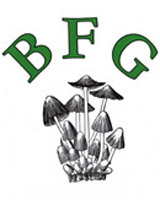Members’ Finds, 2021 July - Dec
Following the success and popularity of our experimental Members' Finds Autumn 2020 project, we have now set up this new page for 2021 to which members are again invited to contribute. We are starting afresh with a new species list, so please email Penny photos of anything you find - even of species previously on last autumn's list. Try to illustrate all aspects of the fruit body, also remember not to reduce the photo size and to include the date, site, substrate, habitat plus any other useful features such a size, smell, etc. All extra clues are vital when identifying solely from photos. Ideally, try to collect at least one specimen and retain in a pot until you've heard back from Penny in case it might be needed for further investigation - records of rarities are of no use without voucher material as we discovered to our cost in several instances during our autumn project.
As Covid 19 Tier 4 restrictions (January 2021) require only essential travel in our area, we will all now be limited to our local patches. Therefore as Penny and Derek both live outside the county they will not now be able to contribute until the restrictions are eased. So it will be up to members to take on the challenge and keep the records coming in!
HAPPY HUNTING!
•  Only entries marked with this symbol have been microscopically examined. There is no guarantee on identifications made of entries lacking this symbol though all photos are checked and selected by Penny to the best of her ability. Basic accompanying notes are also Penny's.
Only entries marked with this symbol have been microscopically examined. There is no guarantee on identifications made of entries lacking this symbol though all photos are checked and selected by Penny to the best of her ability. Basic accompanying notes are also Penny's.
•  Entries marked with this symbol have been confirmed or identified using DNA sequencing.
Entries marked with this symbol have been confirmed or identified using DNA sequencing.
Click on thumbnail to see full size
For the complete and regularly updated list of entries click Latin or English
For the LATIN MASTERLIST of Members' Finds since its inception click Masterlist.pdf Masterlist.xls
Contributors / Photographers: Catterson, John and Lesley; Corran, Robert; Cullington, Penny; Davis, Peter; Dodsworth, Joanna; Douglas, Greg; Ebdon, Sarah; Ewan, Jackie; Ferguson, Gill; Fletcher, Neil; Fortey, Richard; Goby, Paul; Knight, Barry; Knight, Tony; Launder, Jesper; Long, Justin; Marshall, Tony; Miller, Chris; Plummer, Stephen; Robinson, Kerry; Ness, Russell; Simpson, Bob; Townsend, Phil; Webb, Barry; Williams, Claire; Wills, Jim; Wright, Richard.
Click on thumbnail to see full size.
Click here to see stunning images of Slime Moulds by Barry Webb
Entries with a green background indicate rare sightings 83 |
Entries with a yellow background indicate species new to Buckinghamshire 27
|
Entries with a blue background indicate species new to UK 1
|
December 30th 2021

 |
December 30th Clavicorona taxophila (Yew Club) 
Penny's visit to Prestwood Churchyard today was focused on hopefully finding this rare species - new to her and new to the county when found and identified by Russell Ness at Cliveden on December 12th (see Finds under that date for more). She was naturally delighted when she spotted a few tiny thin white specks under a large Yew. (This particular tree also sported Clavaria asperulispora, yet another rarity associated with Yew and new to the county when found by Jesper Launder - see Finds dated Nov 23rd.) These tiny white clubs are less than 2 cms tall and easily missed amongst the moss but luckily a fresh little cluster was pushing through some loose soil adjacent to a wormcast (photo 1). So here was yet another exciting species to appear at this remarkable churchyard, making an excellent way to round off a memorable late autumn season.
|

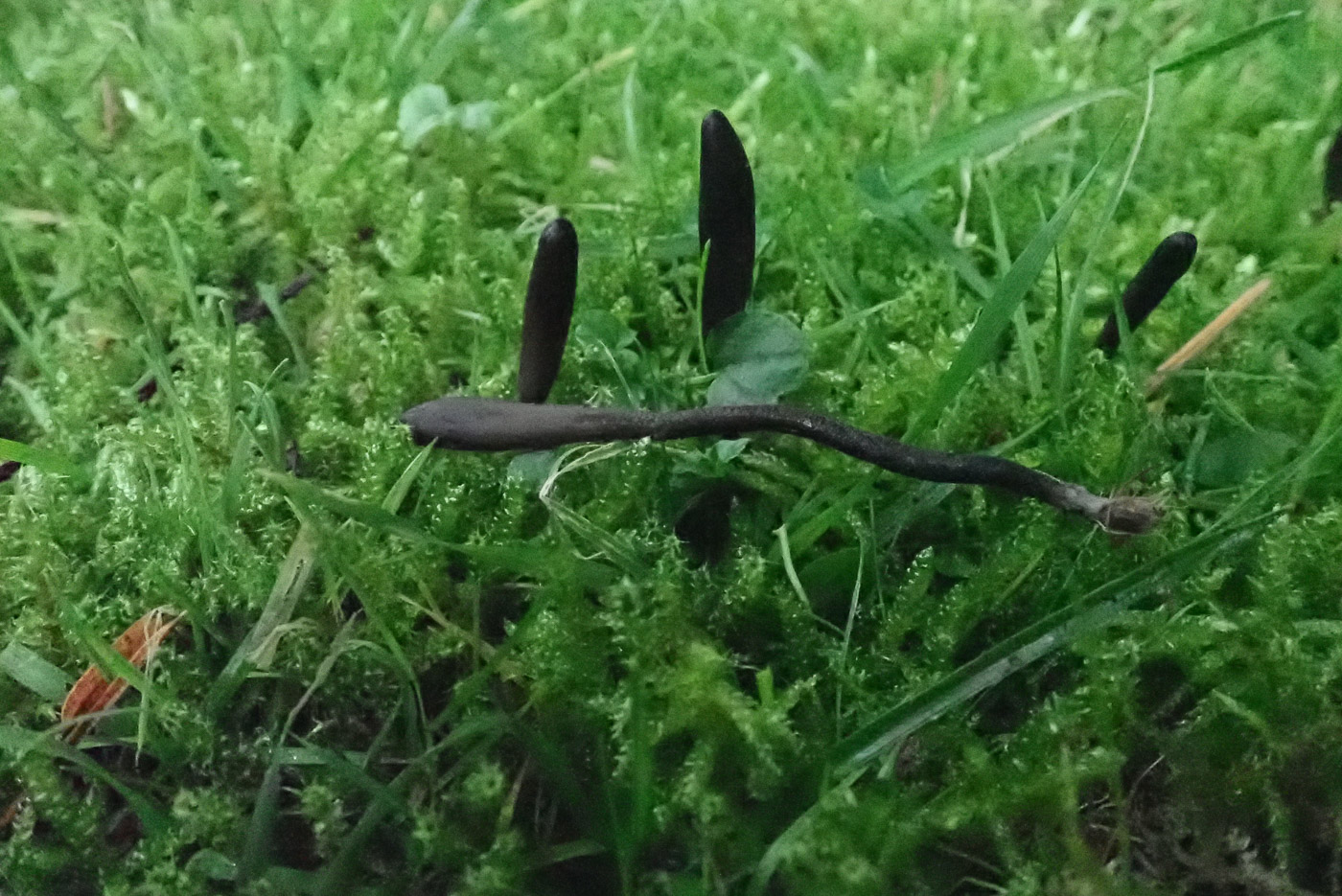 |
December 30th Geoglossum fallax (Deceptive Earthtongue) 
In Prestwood Churchyard under Yew Penny was pleased to find half a dozen of these which appear to be new to the site. It is considered one of the commonest Earthtongues (see also dated Dec 3rd) though none are found very often in the county. Today's specimens were decidedly brown, particularly on the stem which has a roughened dry surface.
|

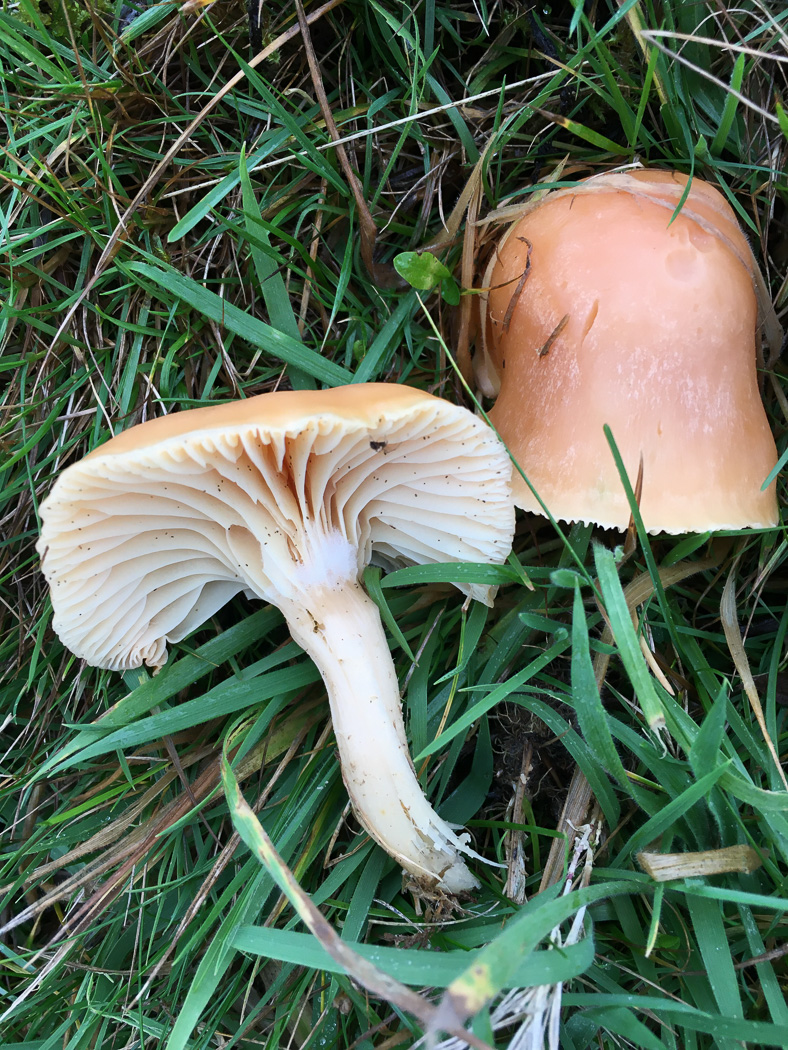 |
December 30th Cuphophyllus pratensis (Meadow Waxcap)
In Prestwood Churchyard Penny was amazed to see this species (previously known as Hygrocybe pratensis) still happily fruiting - it has been coming up here for months now. Photo 2 is of a collection made the next day at Brill Common by Joanna Dodsworth, giving further evidence of how this continued mild spell is encouraging many fungi to prolong their normal fruiting pattern well into Winter.
|
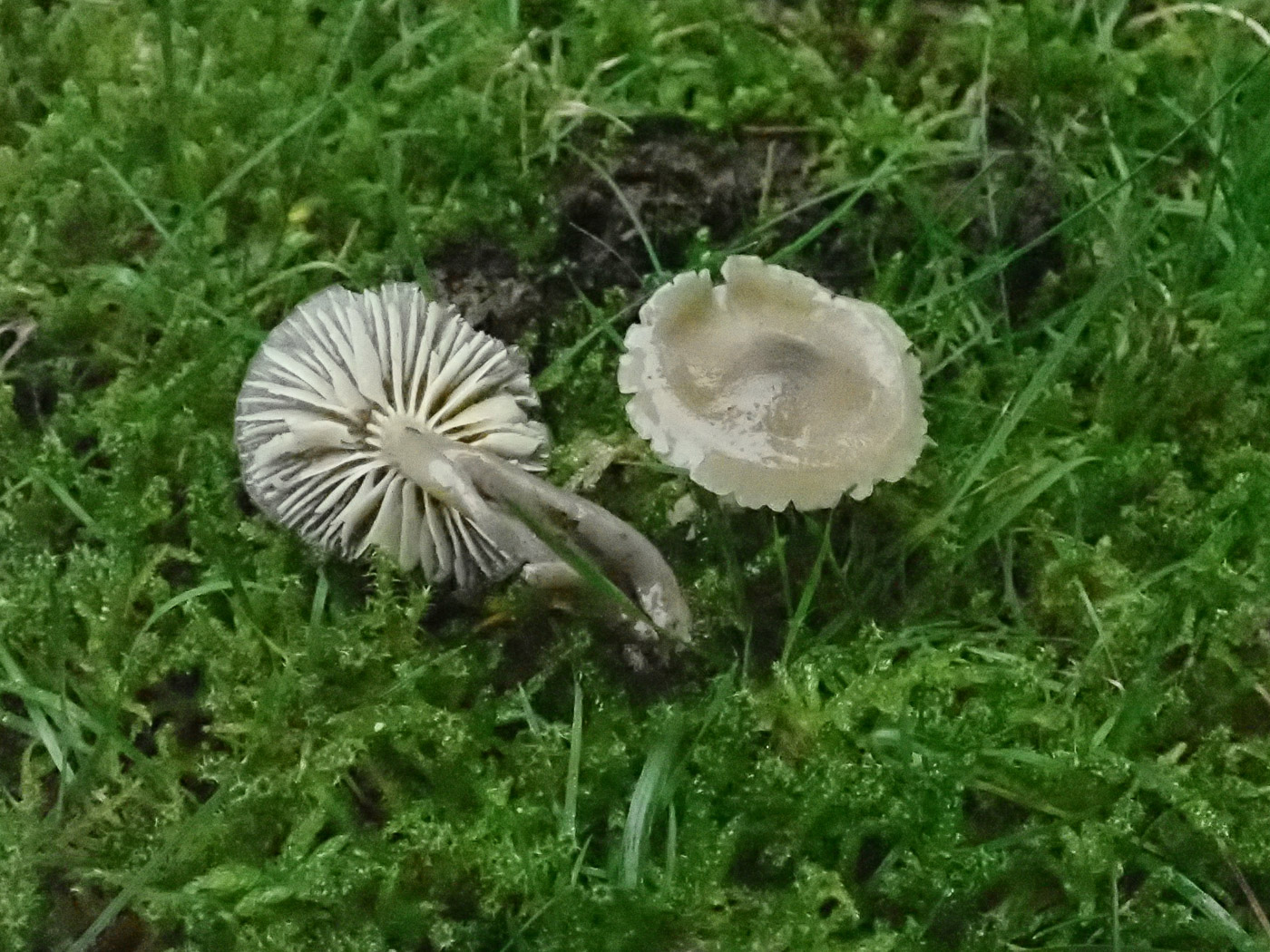 |
December 30th Gliophorus irrigatus (Slimy Waxcap)
In Prestwood Churchyard Penny also found this Waxcap still fruiting (more familiarly known as Hygrocybe irrigatus) though only just these two fruitbodies were found. In the last couple of months it has been quite prolific at this site which is now well known in the area for fungal interest.
|
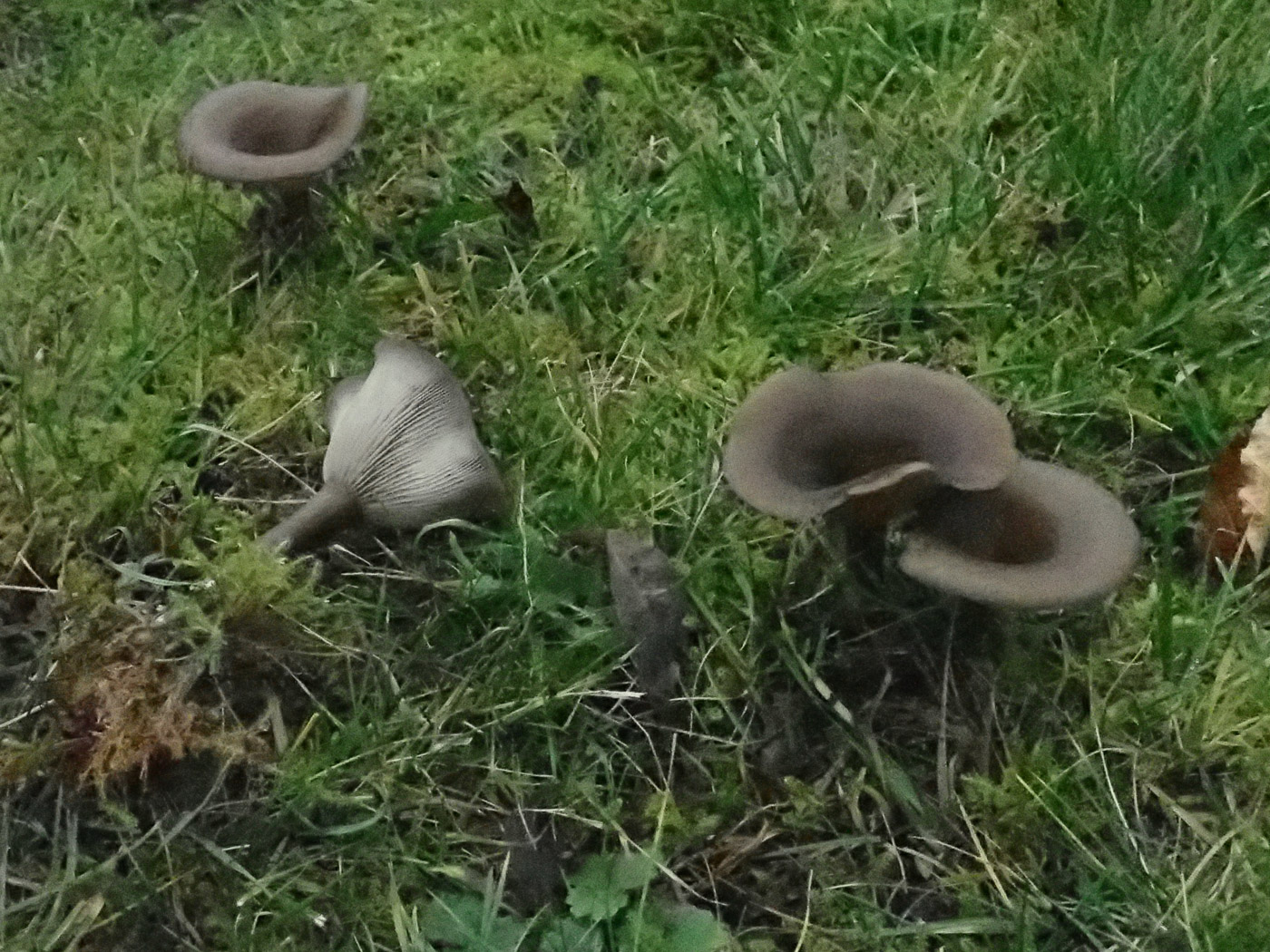
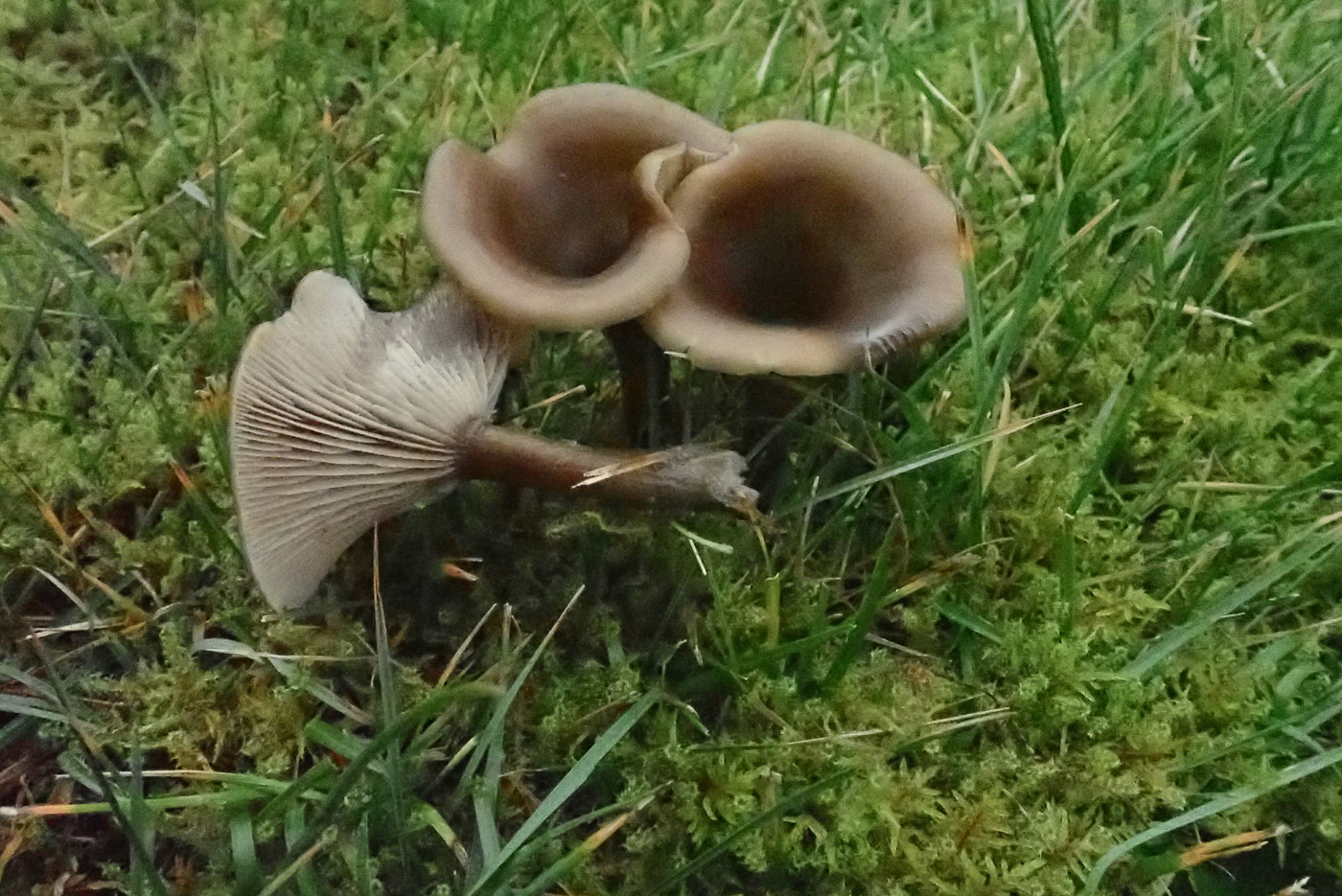 |
December 30th Pseudoclitocybe cyathiformis (Goblet)
In Prestwood Churchyard Penny found a group of this distinctive species which often fruits late in the season in grassy areas. Its common name describes its shape nicely. (See also dated Nov 18th)
|


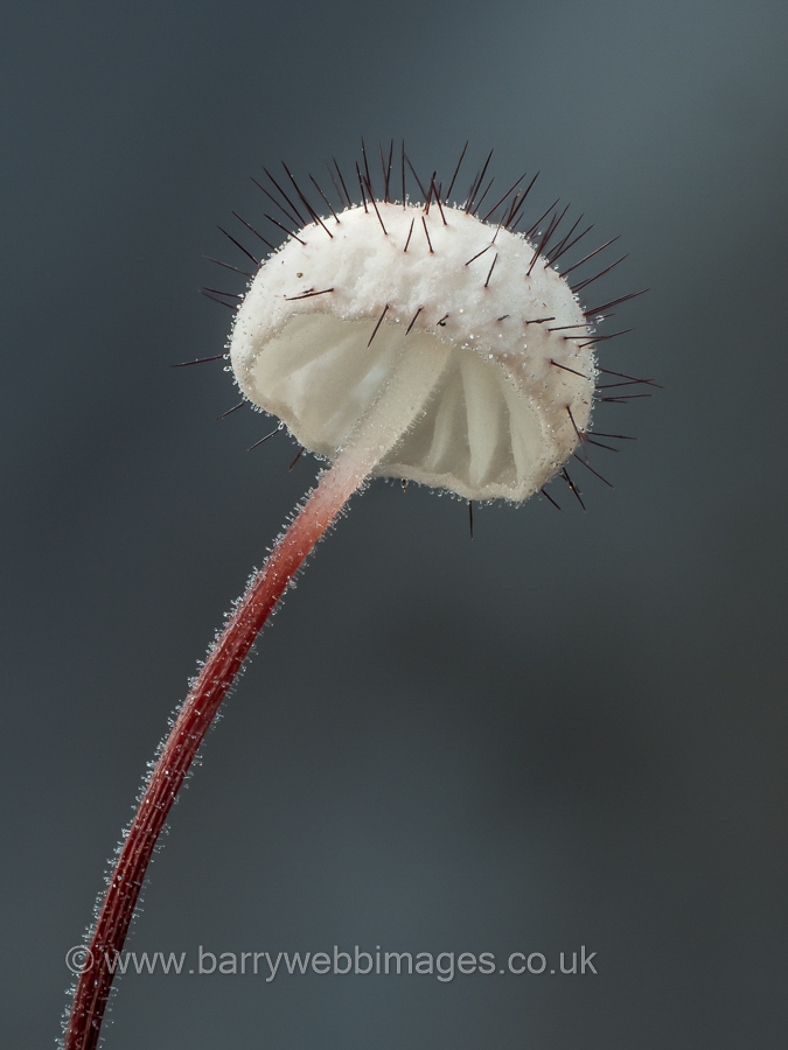 |
December 30th Marasmius hudsonii (Holly Parachute)
On rotting Holly leaves in Hodgemoor Woods Gill Webb found this stunning little mushroom which is unique in appearance, the cap being covered in tiny bristles and only occurring on this particular substrate in damp places. It is found more often in the southwest of the country, diminishing and considered rare towards the east, but we now have three records for the county, it being a new species for Hodgemoor today. Barry returned the next day to take his photos, finding four more collections! Photo 1 is of Gill's find, photos 2 and 3 are of Barry's finds the next day. The size of the Holly leaves gives a sense of perspective for these tiny little specimens. For more notes and wonderful images see Finds 2020 dated Dec 15th.
|
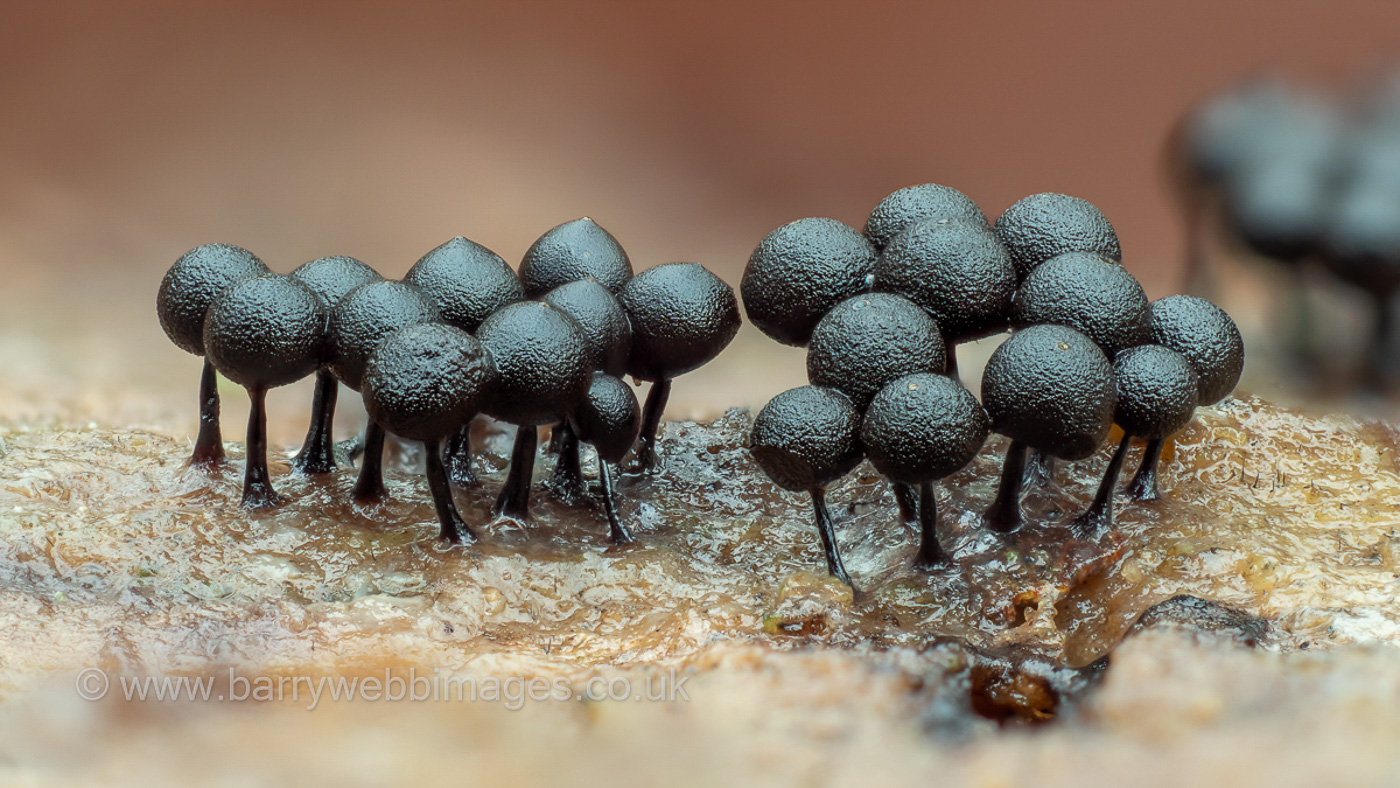 |
December 30th Enerthenema papillatum (a slime Mould with no common name)
On a fallen Beech branch in Hodgemoor Woods Barry found this tiny species. For more notes and images see Barry's separate page in Members' Finds.
|
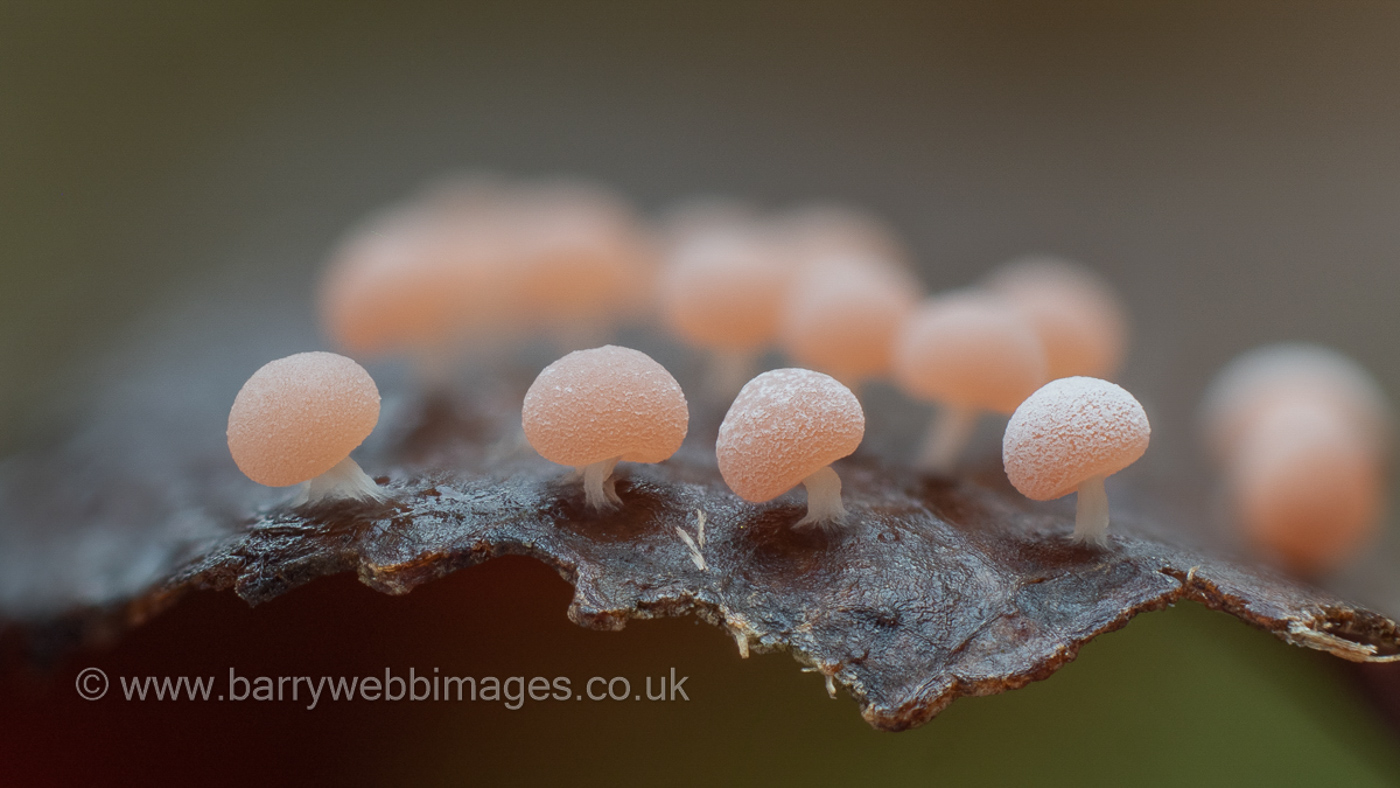 |
December 30th Didymium squamulosum (a slime Mould with no common name)
In leaf litter under Holly in Hodgemoor Woods Barry found this immature but beautiful little species. For more notes and images see Barry's separate page in Members' Finds.
|

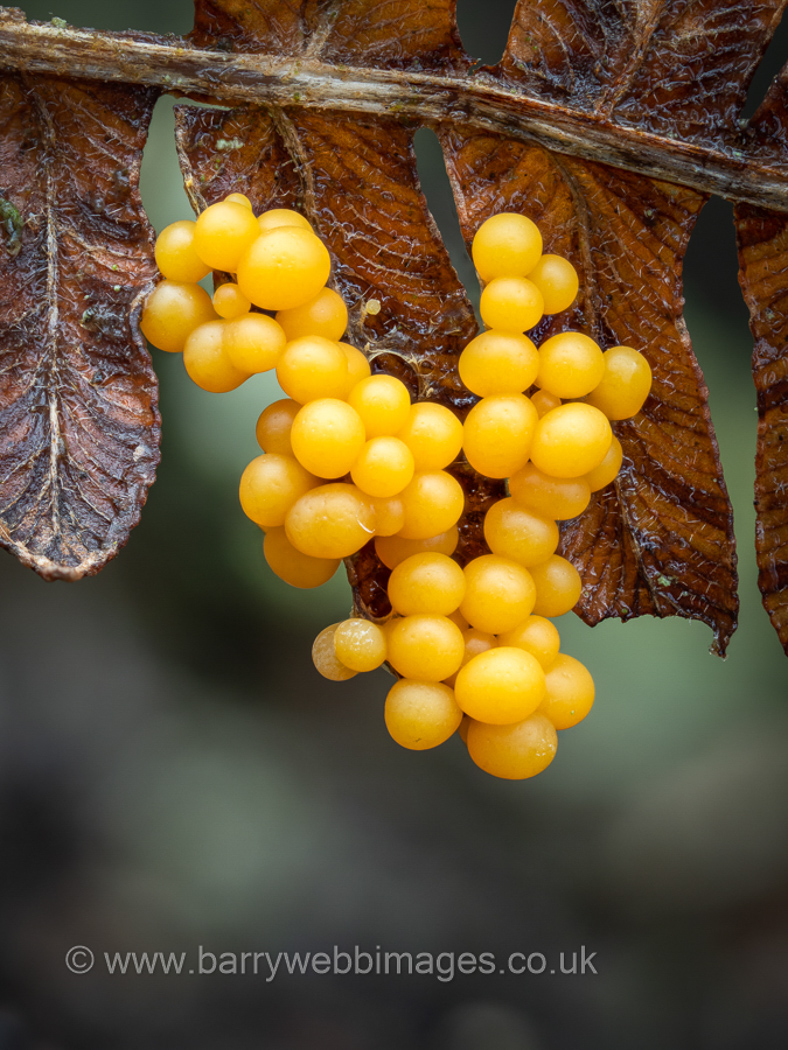
 |
December 30th Badhamia utricularis (a slime Mould with no common name)
In Hodgemoor Woods Barry and Gill Webb found a pile of cut up lichen-covered Birch branches which provided them with two species of slime mould, this being one of them. Photo 1 shows the jelly-like plasmodium stage (plus a tiny Lycogala terrestre just developing); photo 2 is the same species further developed; photo 3 is of fully developed material. We have just 4 previous county records, the last being Barry's from Penn Wood in 2020.
|
 |
December 30th Dictydiaethalium plumbeum (a slime Mould with no common name)
On the same Birch pile in Hodgemoor Woods Barry and Gill Webb also found this species though it is more commonly found on fallen Beech. For more notes and another image see Barry's separate page in Members' Finds.
|
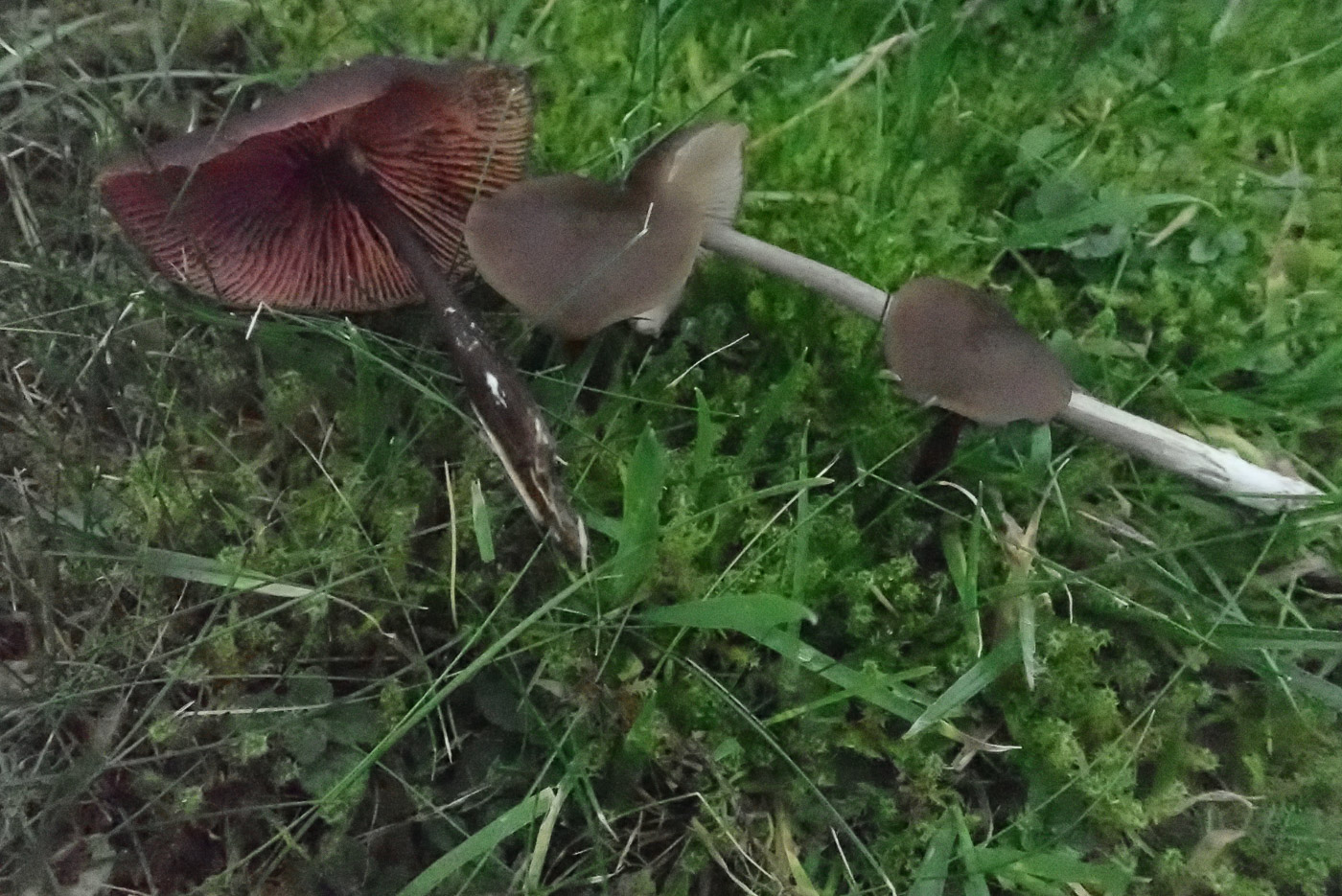 |
December 30th Entoloma hirtipes (a Pinkgill with no common name) 
In Bradenham Churchyard Penny found several examples of this dark brown Pinkgill and was able to identify it at home (though the genus often defeats her!). The gill edge cells are very distinctive and these together with the spore measurements and other microscopic details were a perfect fit with the general descriptions. The species has a smooth shiny cap and also a distinctive smell: of engine oil with a cucumber component! We have a handful of known sites for it though have not recorded it in the county for 15 years or so.
|
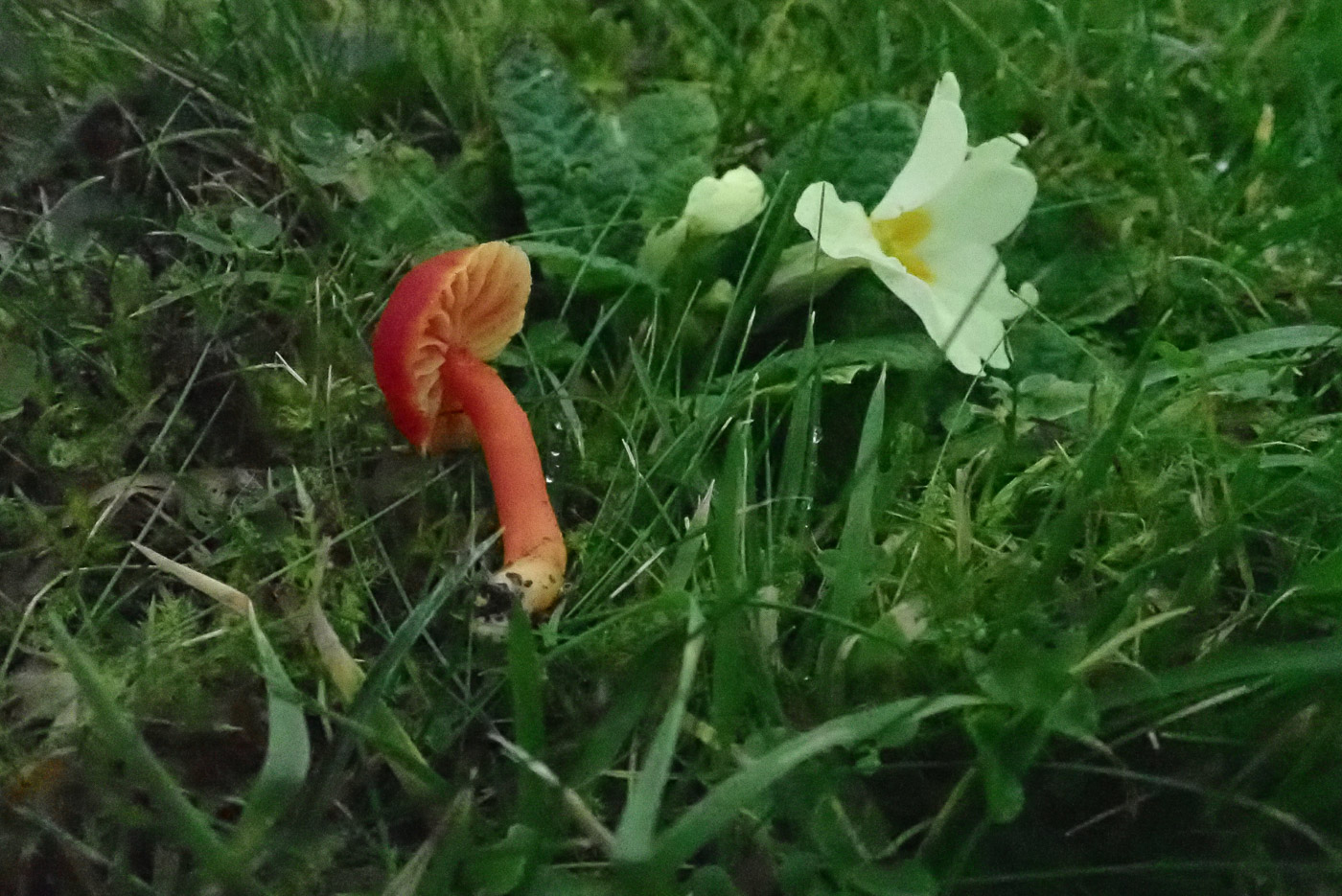 |
December 30th Hygrocybe coccinea (Scarlet, Waxcap)
In Bradenham Churchyard Penny found just a couple of this species till fruiting though it is certainly late to be finding it. It's not often one can take a photo of a Waxcap and a Primrose together!
|
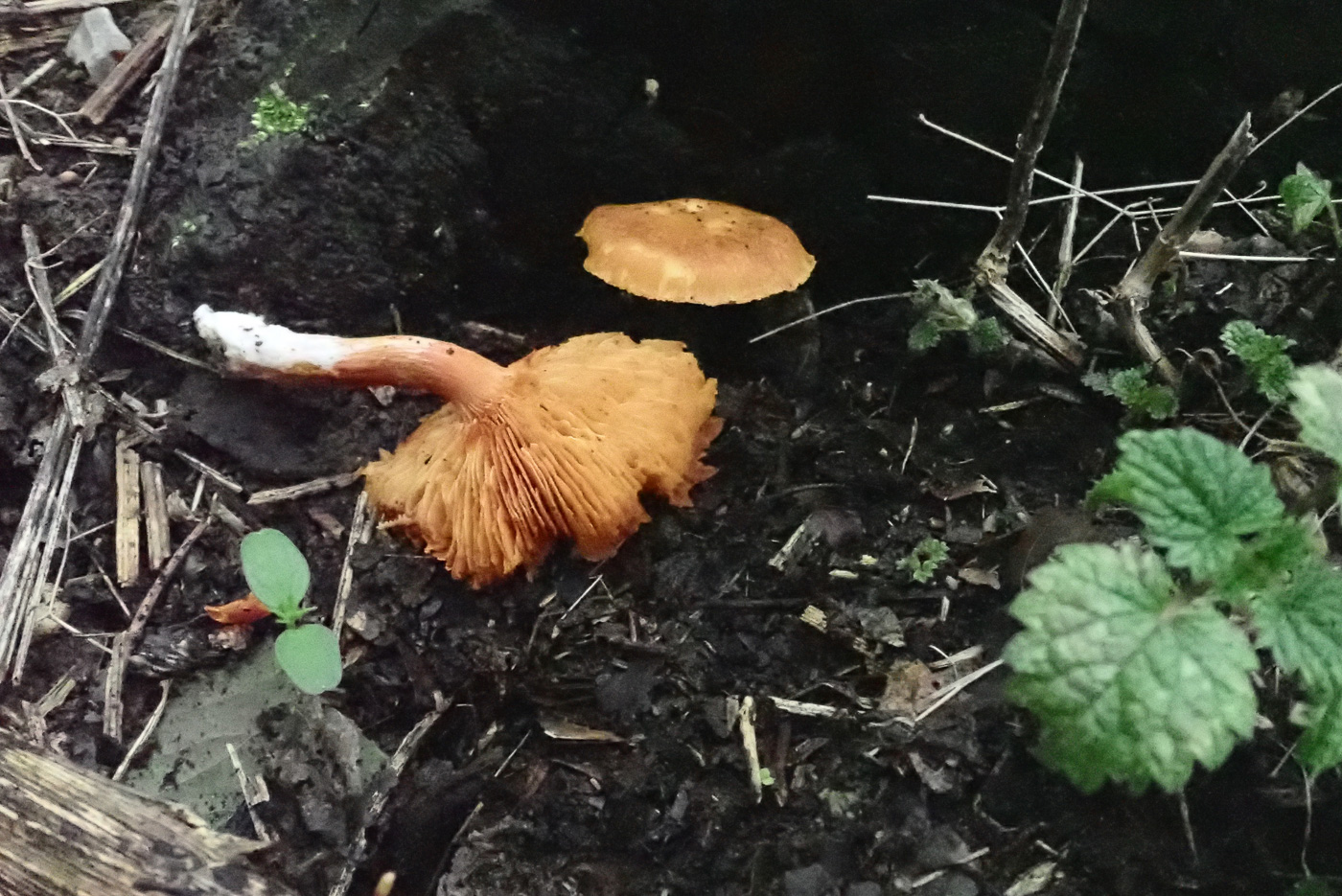
 |
December 30th Gymnopilus penetrans (Common Rustgill)
On a conifer stump in Bradenham Churchyard Penny found this common woodland species still fruiting despite the late season. Though happiest and most commonly found on conifer, it also can be found on various fallen deciduous woods and has matching cap, gills and stem - all typically a rich rust colour.
|
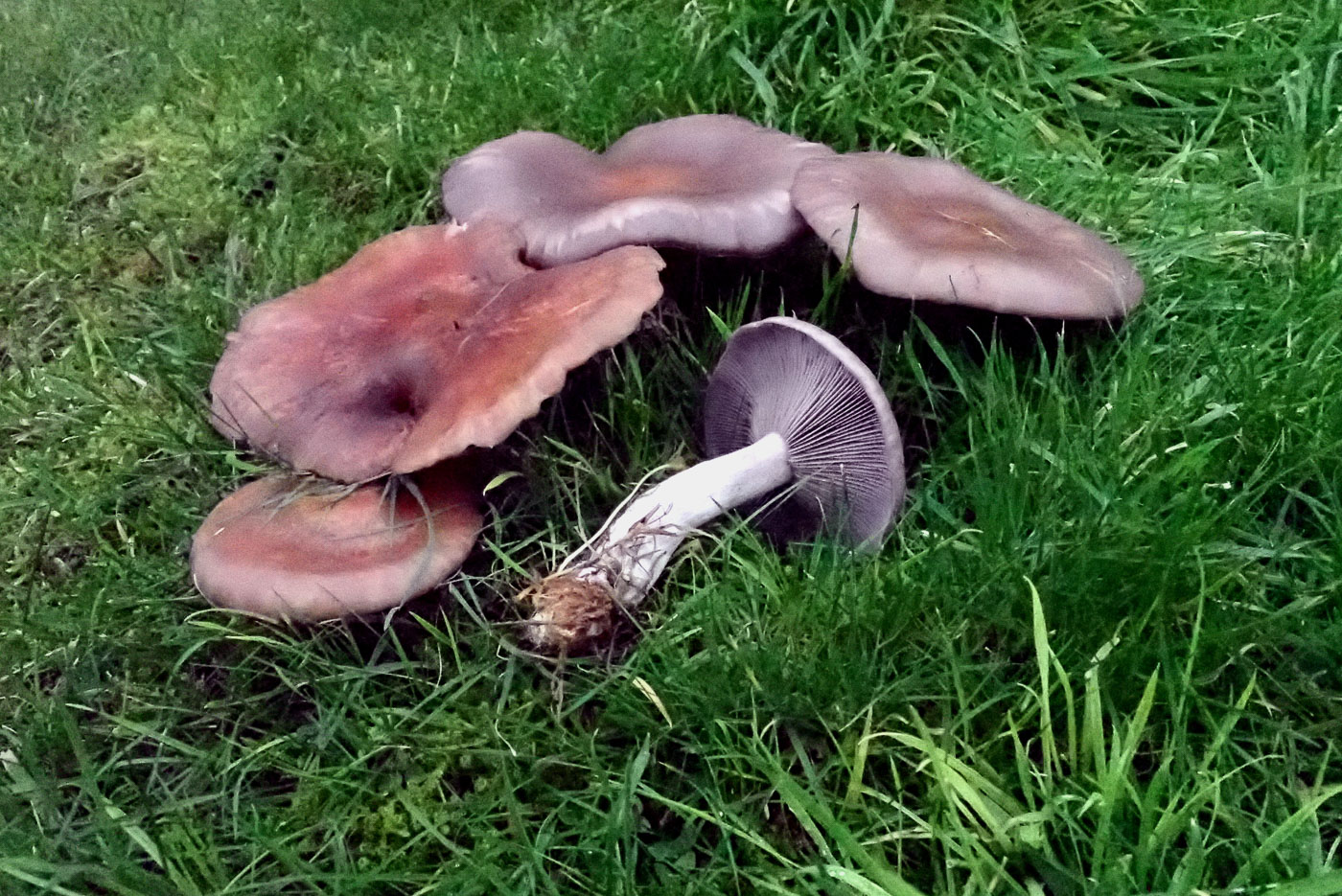 |
December 30th Lepista nuda (Wood Blewit)
In Bradenham Churchyard Penny found quite a few patches with this common species still fruiting here. This is a regular site for it and it often forms forming a huge ring amongst the grave stones (see Finds 2020 dated Oct 16th). The prolonged recent mild spell has no doubt caused the species to continue fruiting.
|
 |
December 30th Galerina clavata (Ribbed Bell) 
In Bradenham Churchyard Penny found several clumps of this common Bell species, often found in grassy mossy places. Very similar to Mycena in stature, the genus is separated in the field by having pale rust coloured gills and spores rather than white and also often having translucent orange rusty bell shaped caps as here. The genus virtually always needs work at home with a scope as there are many species which look extremely similar - typical LBJs! Today's species is one of the commonest grassland species though it is late in the season to be finding them.
|
December 27th 2021
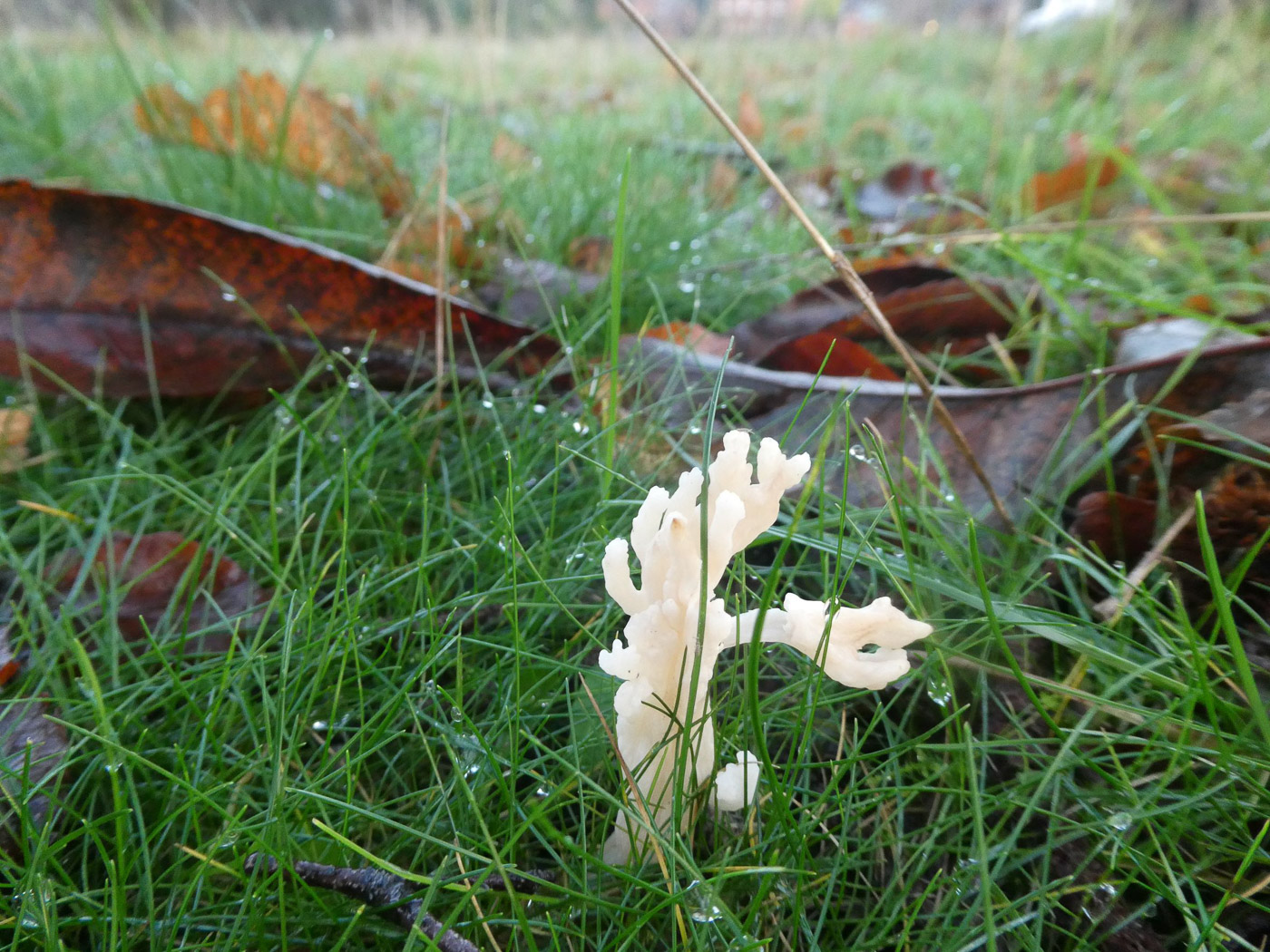 |
December 27th Clavulina rugosa (Wrinkled Club)
In Gold Hill Common, Chalfont St. Peter, Jim Wills noticed some white frilly but thick clubs in grass with Birches nearby. Suspecting (correctly) that they were this species, he was surprised to find them in such a grassy area thinking it was mainly a woodland fungus. They are common in mossy grassy woodland glades, woodland edges and though similar to the closely related C. cinerea and C. coralloides, can be separated from these by their rather thicker blunt irregular clubs, sometimes hardly forking at all. All three species are relatively common.
|
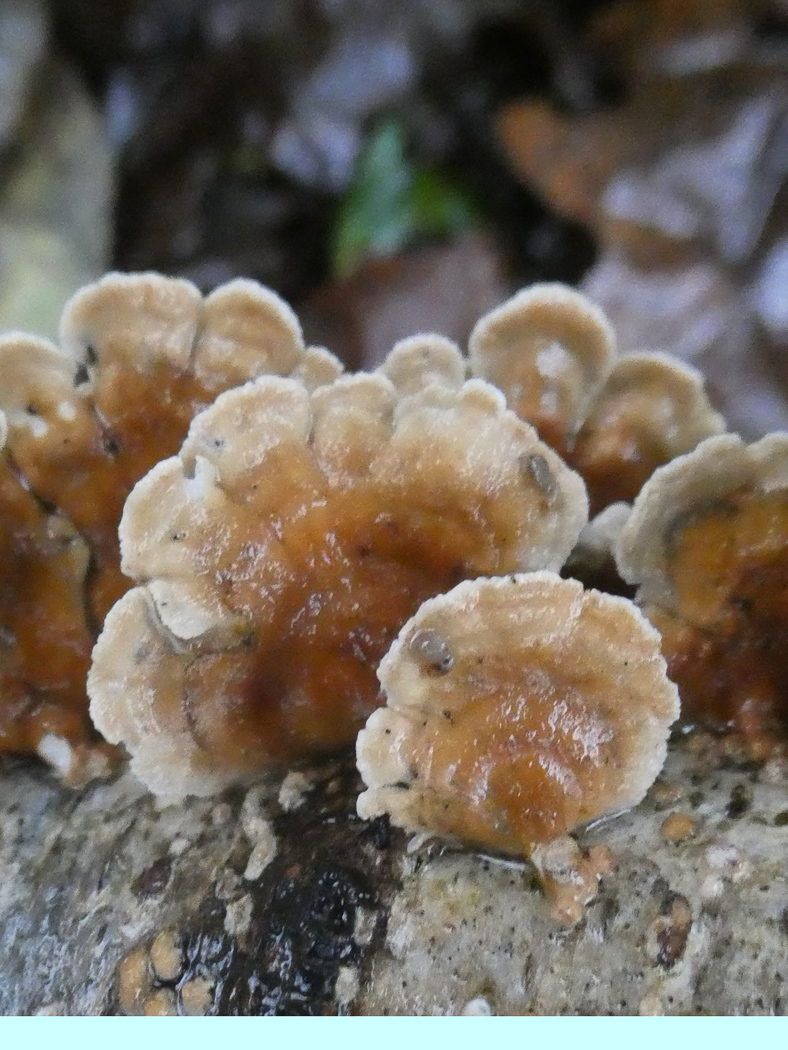
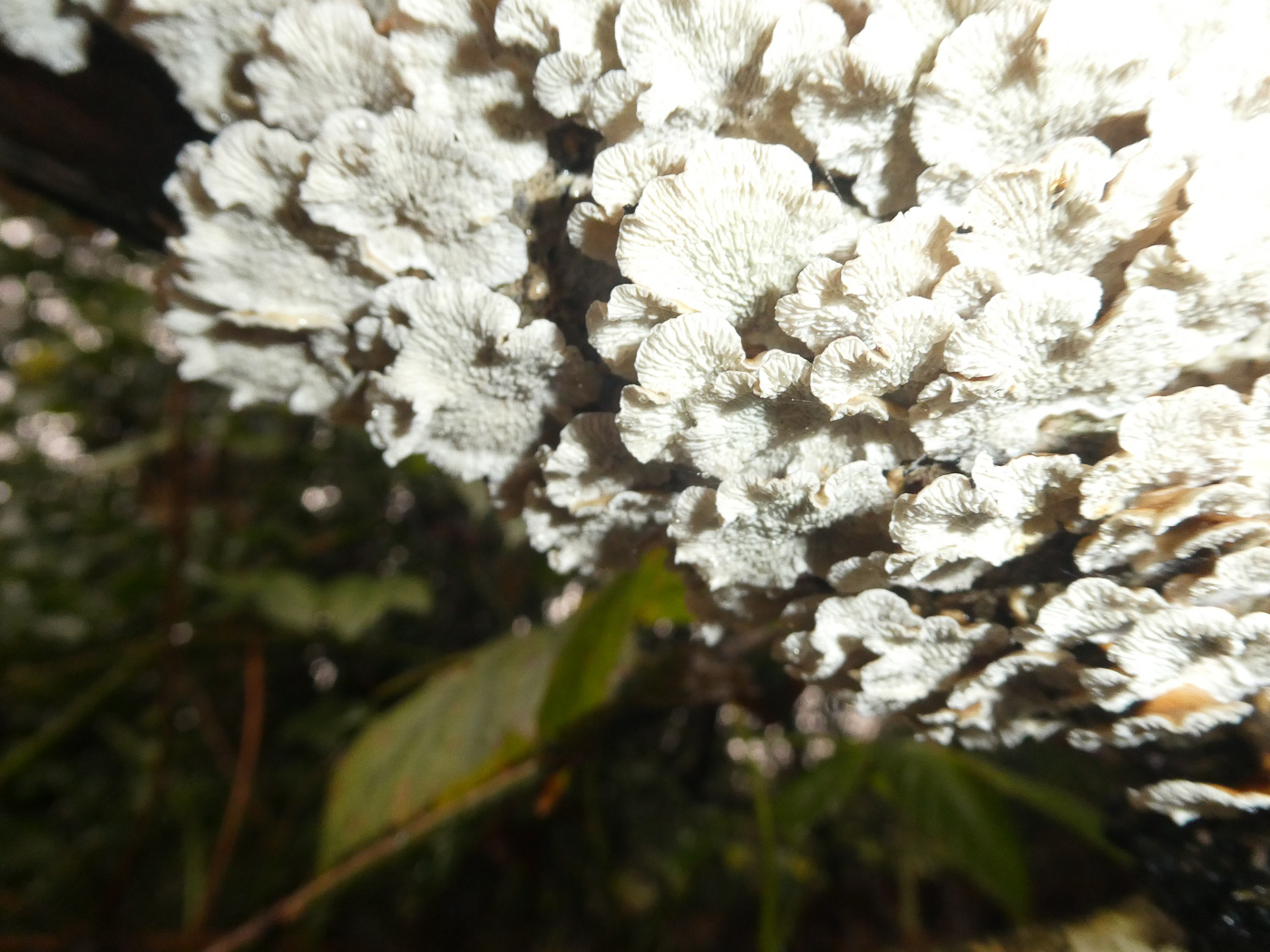
 |
December 27th Plicaturopsis crispa (Crimped Gill)
In Austenwood Common, Chalfont St. Peter, Jim Wills noticed these small brackets on fallen Birch which he was initially confused by, but comparing with various illustrations (including Finds) he then came up with the correct name. (See Finds 2020 dated Oct 23rd and Nov 16th, named Plicatura crispa - the name has changed since!) This is a species which is easily recognised once you know it - a small flimsy bracket with distinctive white gill-like structures underneath and often (though not exclusively) found on Birch. Considered rare a few years ago it is clearly on the increase now.
|
December 22nd 2021
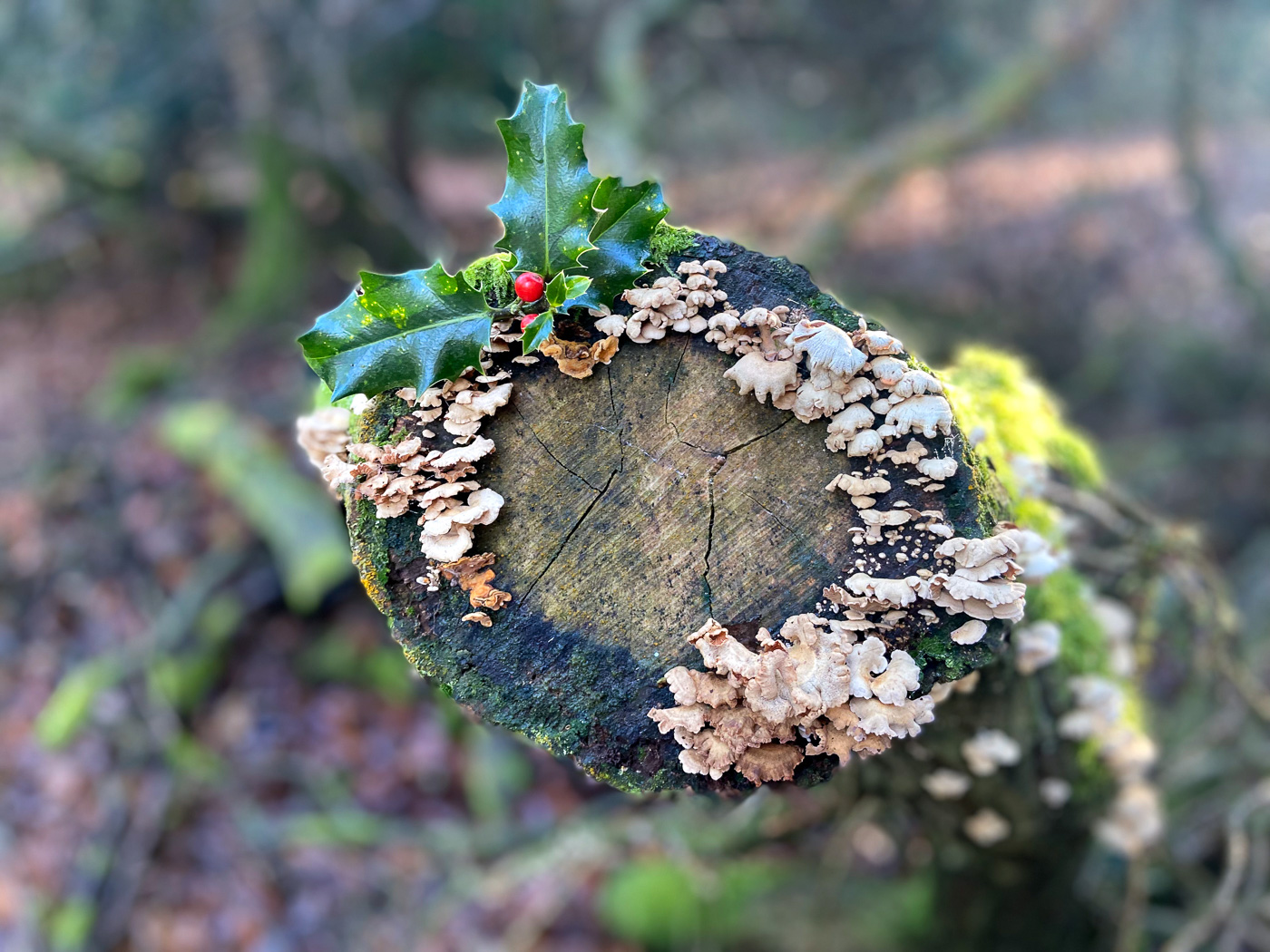 |
December 22nd Panellus stipticus (Bitter Oysterling)
Sarah Ebdon sent in this seasonal photo, taken in Naphill Common, with a Christmas message to Penny as follows:
Wishing you and all BFG members a wonderful Christmas Penny would like to add her greetings to you all as well! (See also dated Nov 17th for more on the species.)
|
December 19th 2021
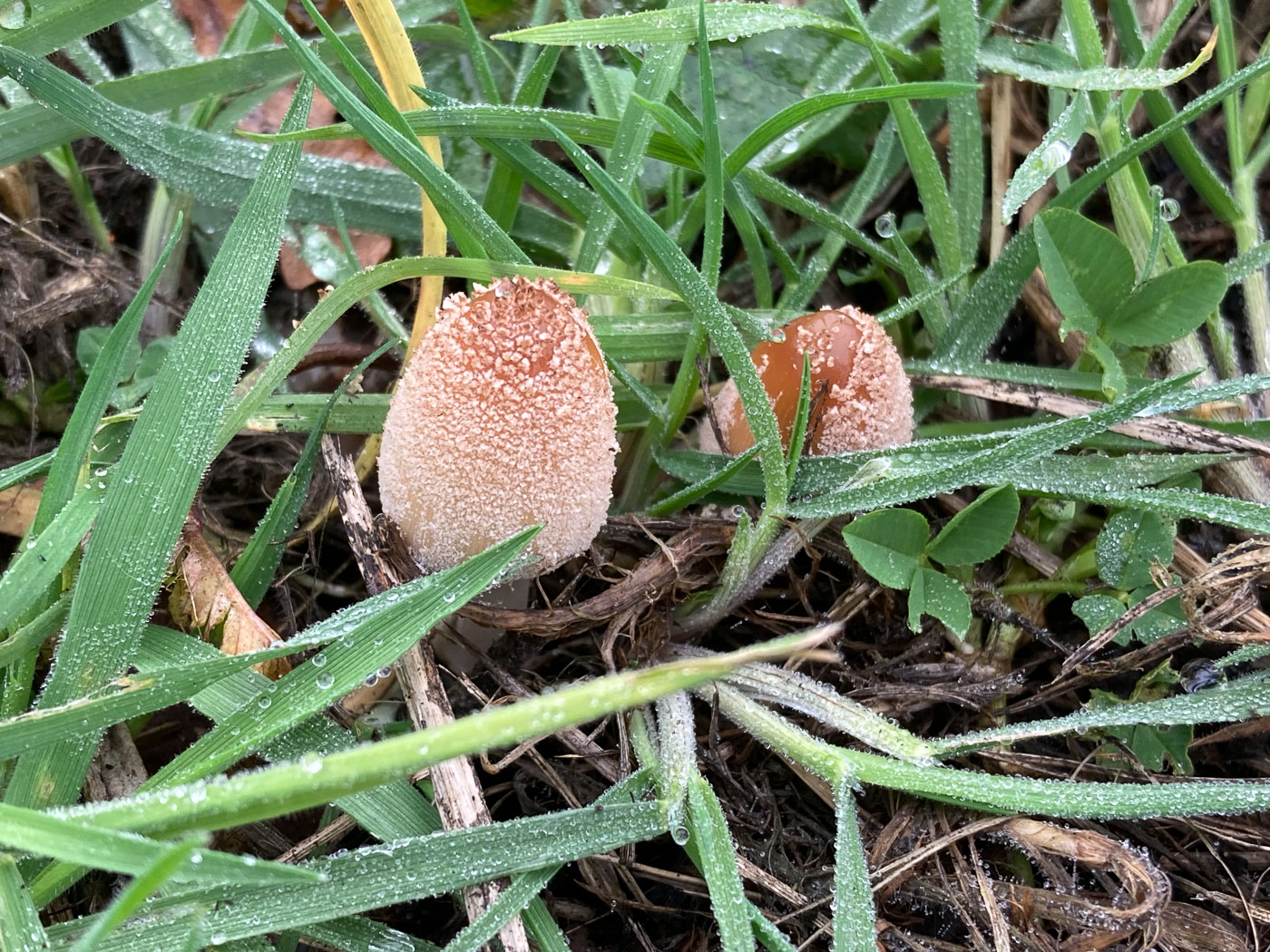
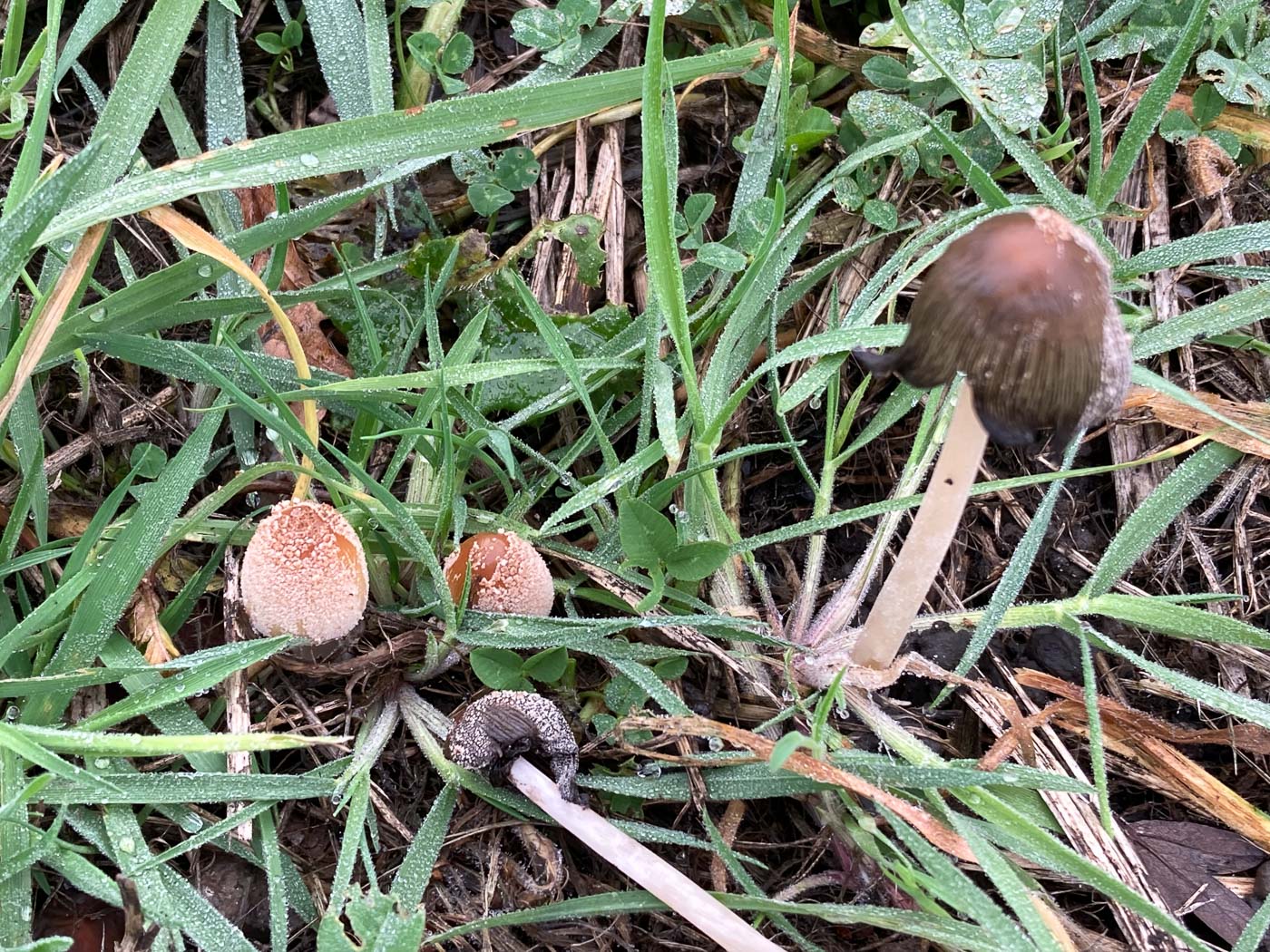 |
December 19th Coprinellus radians (an Inkcap with no common name) 
In Dorney Wetlands on the edge of a bonfire site Russell Ness found this Inkcap just emerging and took it home to work on. His tentative identification was then confirmed by Derek referring to Russell's notes and microphotos, though the species is part of a complex which is still in need of further DNA work - there may be more species involved here. We have just 3 previous county records, so yet another nice find a food detective work by Russell.
|
December 18th 2021
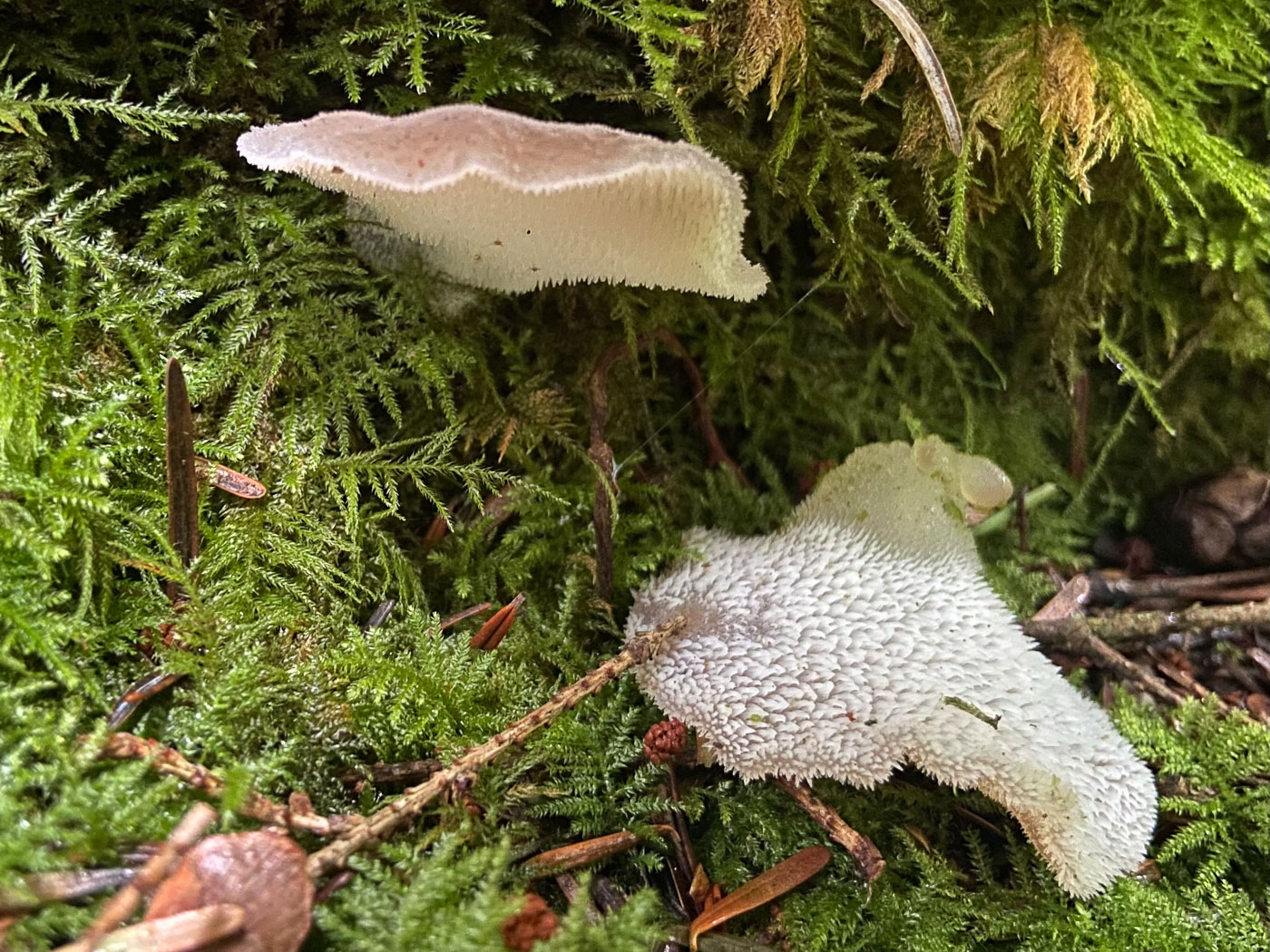
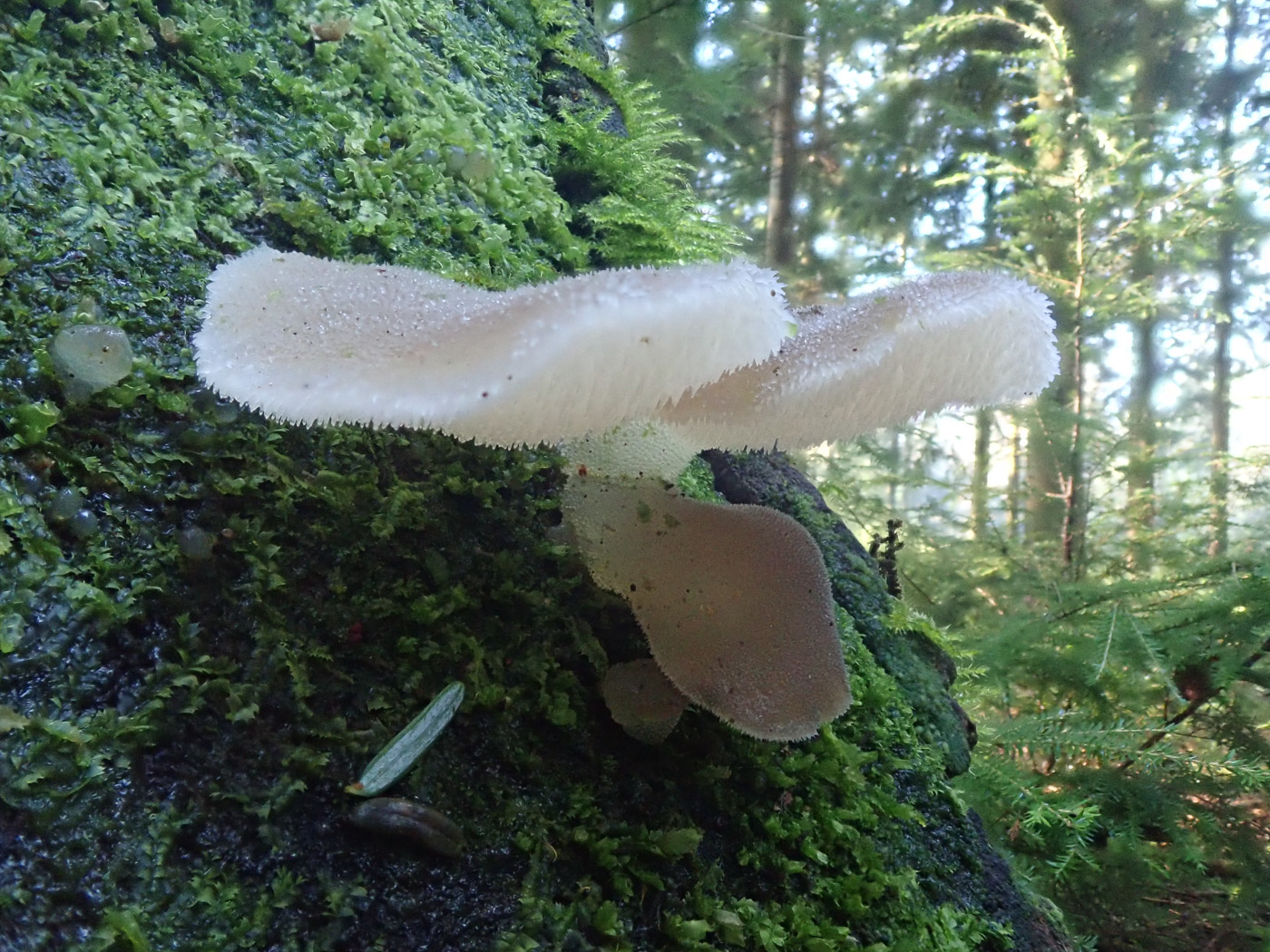
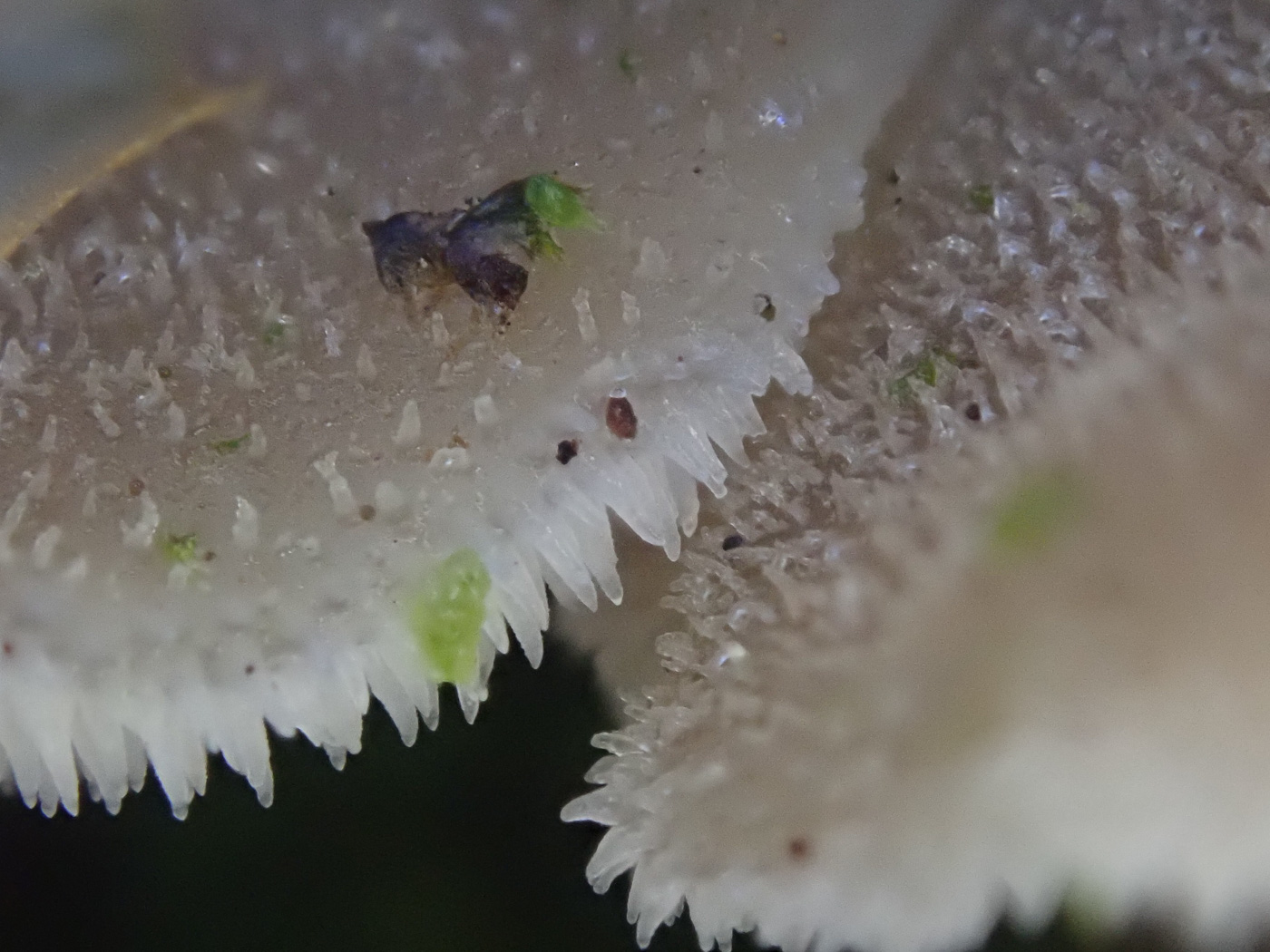
 |
December 18th Pseudohydnum gelatinosum (Jelly Tooth)
In Redlands Ends (a conifer plantation near Prestwood) Sarah Ebdon found beautiful pristine material of this stunning species, one we have records of from a handful of county sites but have not recorded since 2018. It is not rare but is always an exciting one to find, especially when looking as it does here! This is one of the 'Jelly Fungi' (as are Auricularia, Tremella, Exidia etc) but its spiny underside make it unmistakeable and it occurs on rotting conifer wood / stumps. (Photos 2,3 and 4 were taken the next day when Sarah returned with a better camera!)
|
December 15th 2021
 |
December 15th Gliophorus reginae (Jubilee Waxcap)
In Lacey Green Churchyard Sarah Ebdon was thrilled to find for herself this rare and very special Waxcap - one that was new to the county from Prestwood Churchyard just a few weeks ago on November 23rd (see under that date for more). One character which was not visible on that first collection shows nicely here: the yellow stem base is useful to note in the field and helps to confirm the identification as well as the very sticky cap and stem, though the cap colour can clearly be similar to that of Porpolomopsis calyptriformis (Pink Waxcap). Penny is green with envy and has never seen this species!
|
December 13th 2021
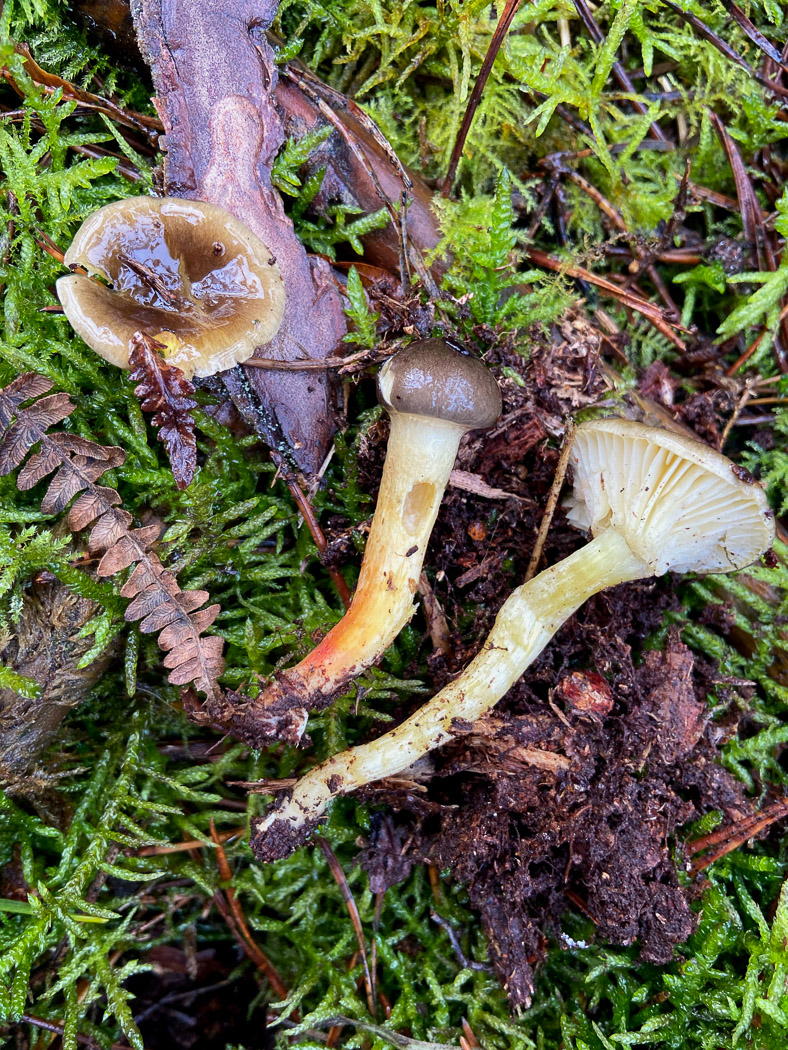 |
December 13th Hygrophorus hypothejus (Herald of Winter)
Knowing that Penny was on the lookout for this unusual species and that it occurs under Pine, Sarah Ebdon went looking for it in Hillock Wood nr Great Hampden and was successful! The genus Hygrophorus (Woodwax) tends to fruit at the end of the autumn season but only the white and somewhat slimy species are considered common - H. eburneus and discoxanthus, both of which occur under Beech. The yellow-capped H. lucorum is found under Larch but quite rarely (and not recorded in the county this year as yet) and we have just a handful of known sites for H. hypothejus though very few records this century, the last 10 years ago in Rushmere Estate where Pine in common. It has a distinctive olive brown slimy cap, yellowish decurrent gills and a yellowish slimy stem having a ring zone.
|
December 12th 2021
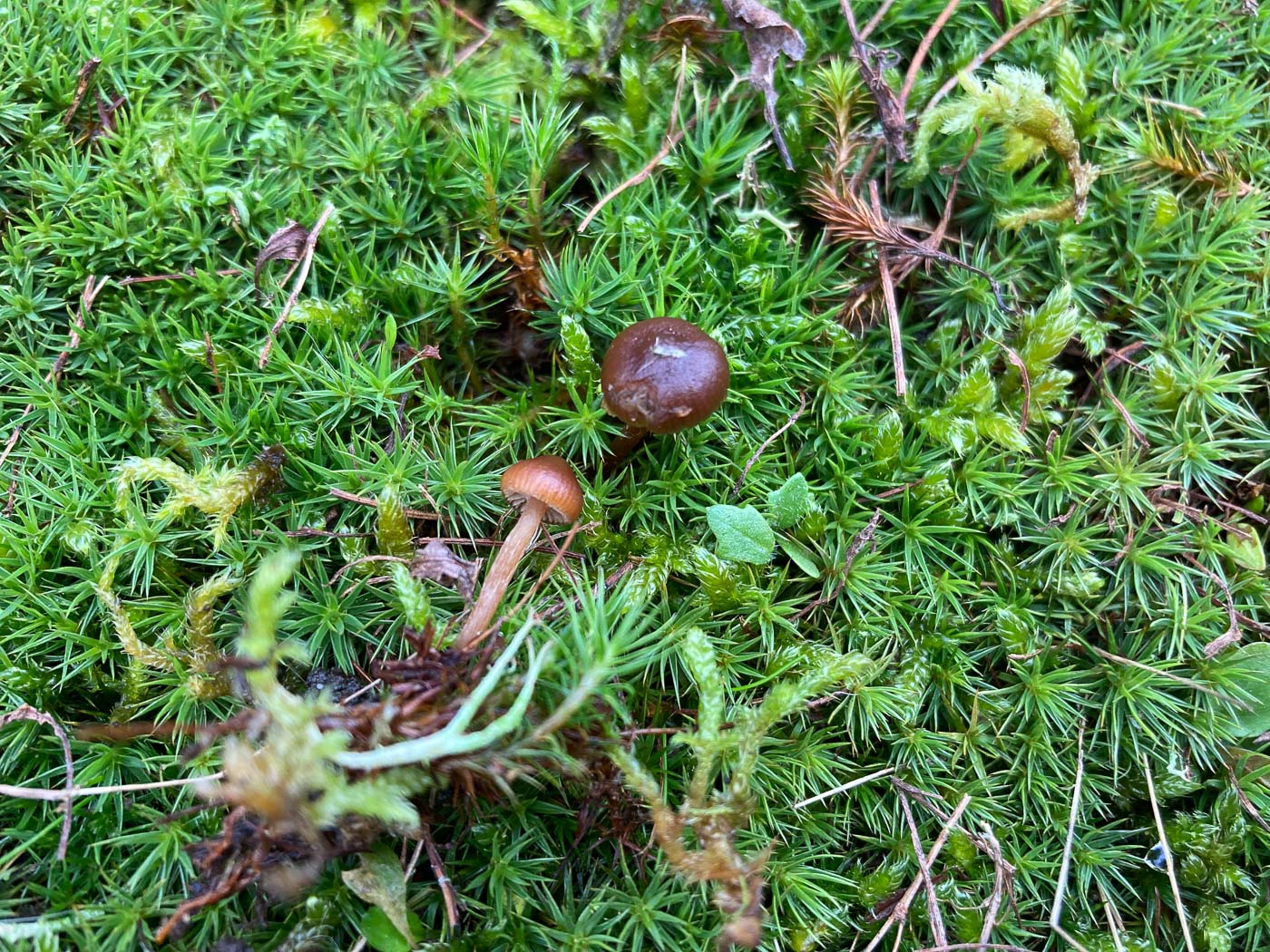
 |
December 12th Deconica montana (Mountain Brownie) 
In The Gore, Burnham, an acid depression, Russell Ness found and worked on these LBJs, previously known as Psilocybe montana. We have just two previous county records though the species is not generally considered rare - it's just that such grassland LBJs tend to be overlooked and rarely take priority when identifying at home with a scope. See also Finds 2020 dated Nov 22nd for another example of the species.
|
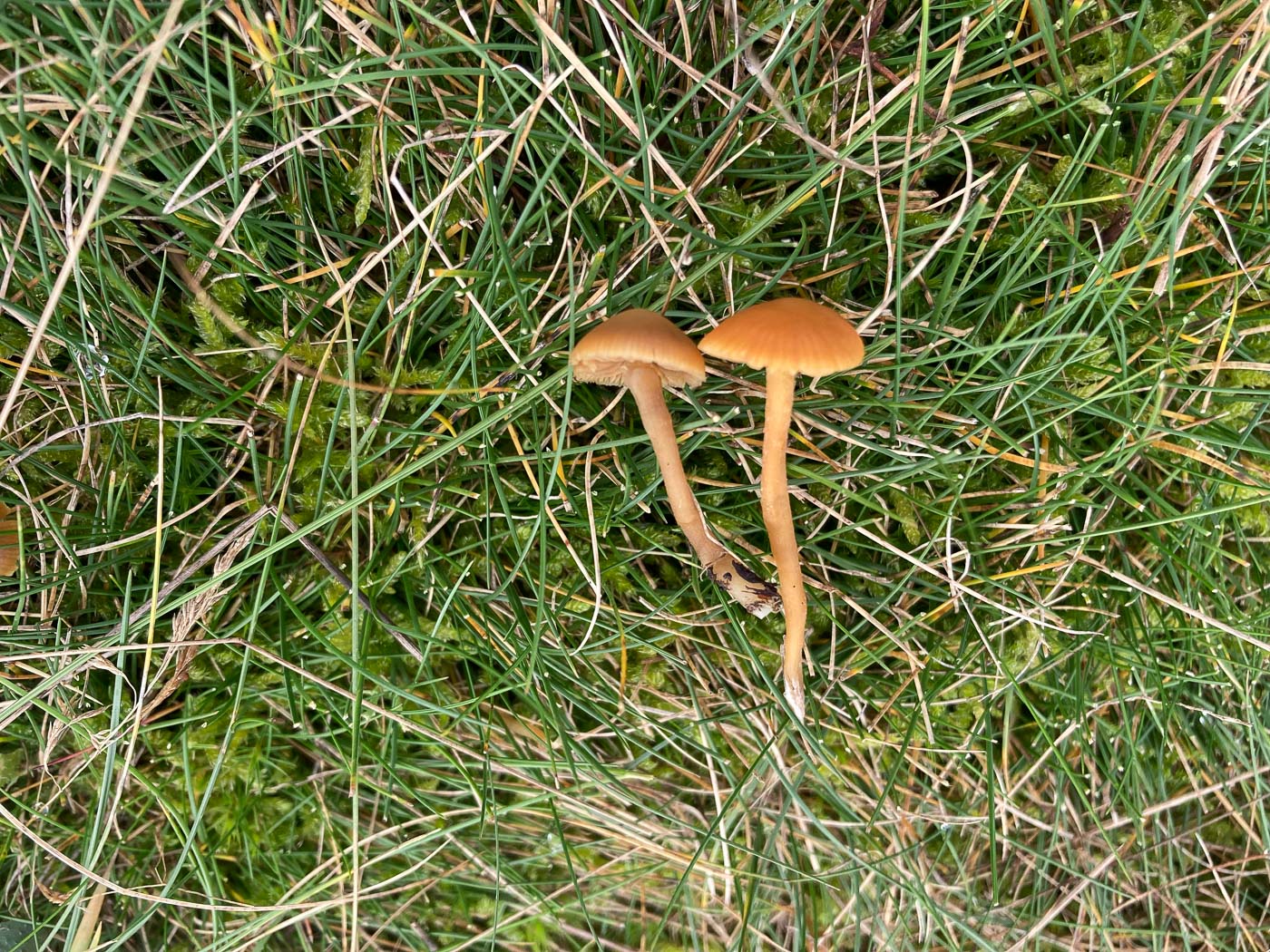
 |
December 12th Galerina mniophila (no common name) and Galerina pumila (Dwarf Bell) 
Two for the price of one! In The Gore, Burnham, Russell Ness found these two Galerina specimens (typical LBJs) growing in acid grass, took their photo and collected them to work on at home assuming they were both the same. It was only later that he noticed how subtly different they looked, this confirmed by the different microscopy as well. The duller more olive tones of G. mniophila can be seen quite clearly on the left in both photos with G. pumila on the right appearing much brighter in tone and also more translucent. The spores of both are basically the same size but are different in both shade and shape, as are the gill cells. Both species appear to be new to the county though have good numbers of UK records and are not considered rare. Good detective work by Russell here!
|
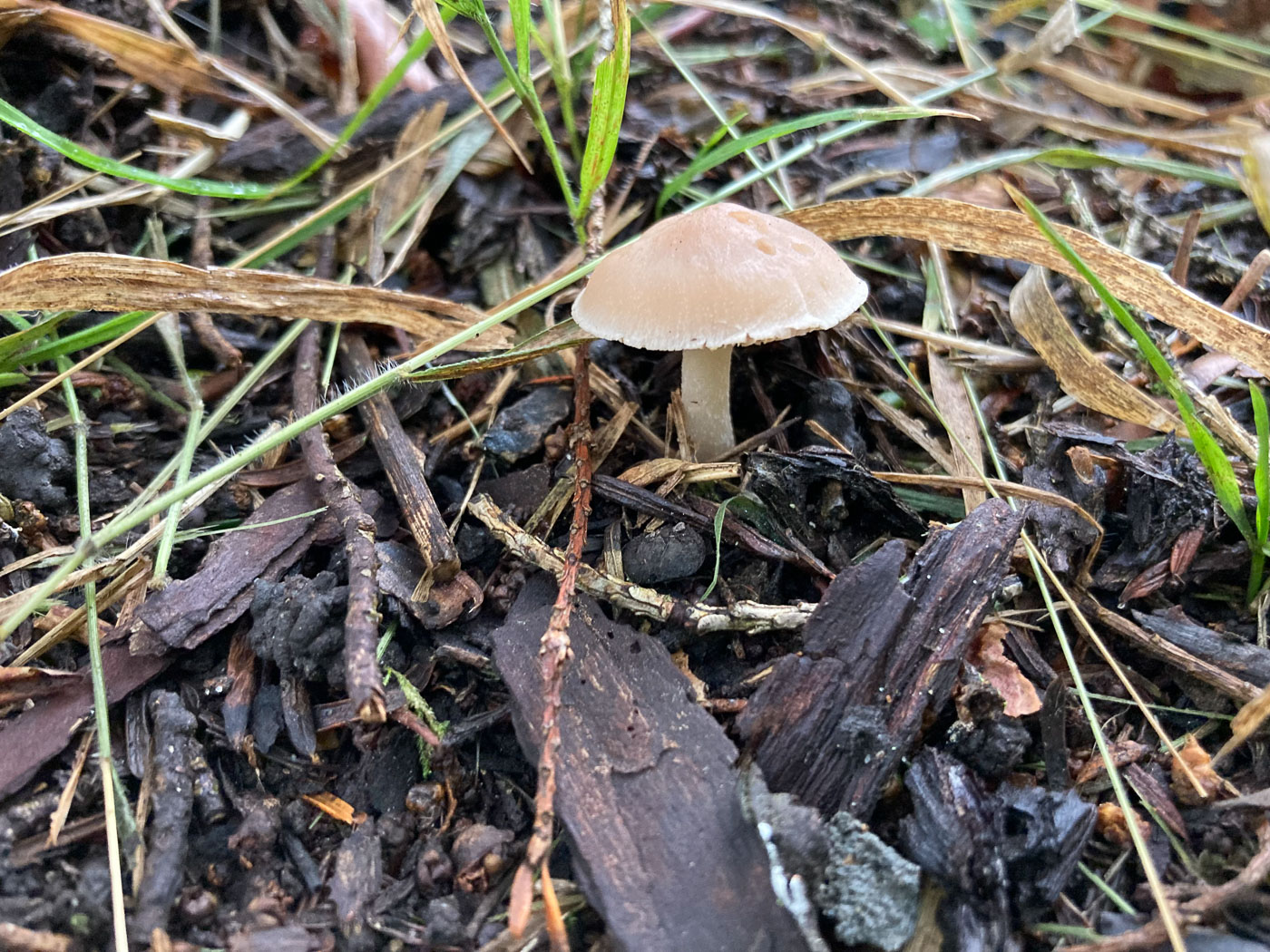
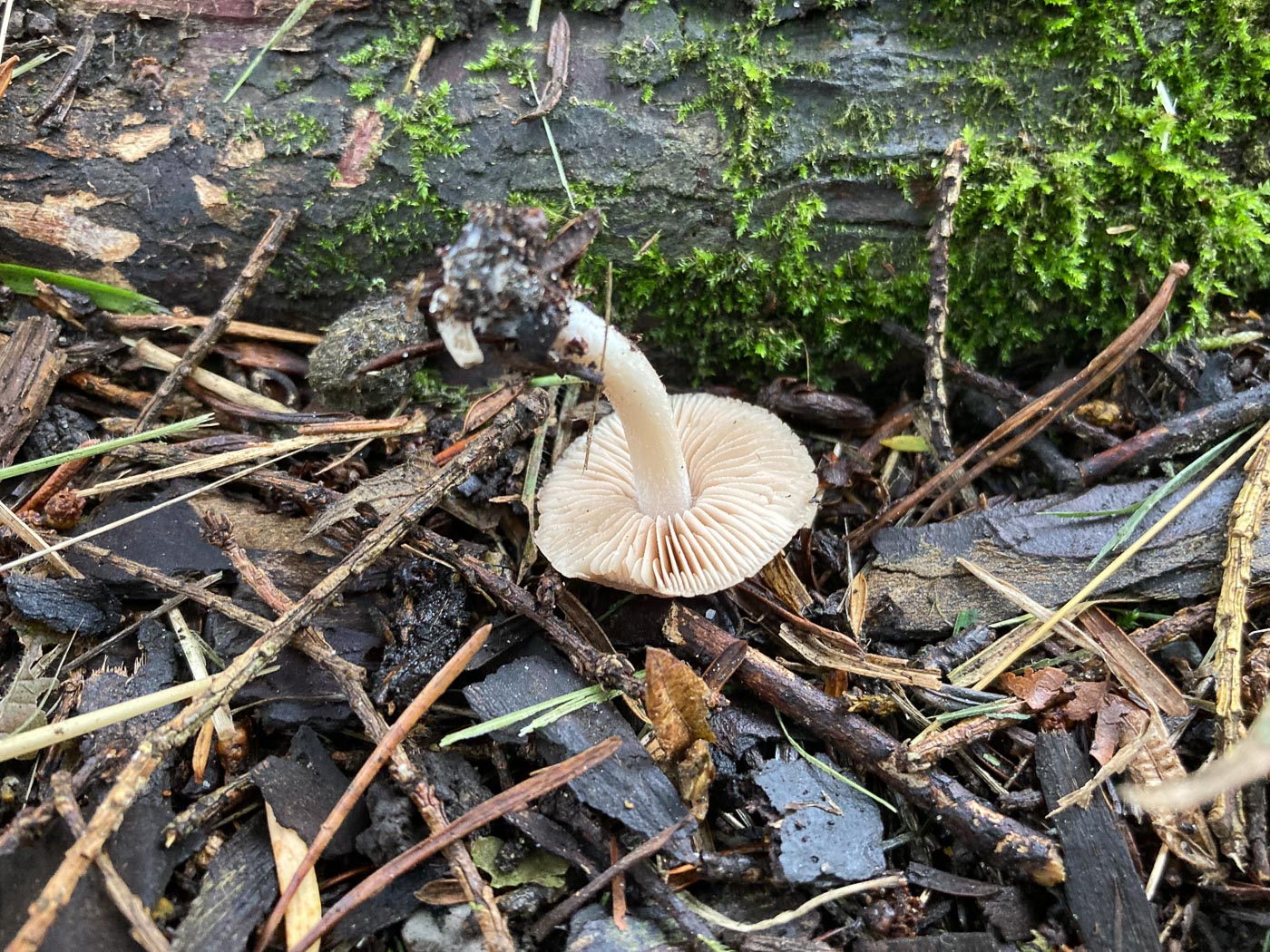 |
December 12th Homophron spadiceum (Chestnut Brittlestem) 
In the grounds of Cliveden Estate Russell Ness found this singleton mushroom which puzzled him and took some to identify later. Previously in genus Psathyrella, there are a few species which have cells on the gill which differ considerably from the norm for the genus, i.e. having thick walls and often with crystals on top - these species have now been moved to the new genus Homophron, today's species being one of them. The gill cells are very distinctive but most Brittlestems need a scope to identify as field characters are rarely individual enough to be able to name without the added microscopic information.
|
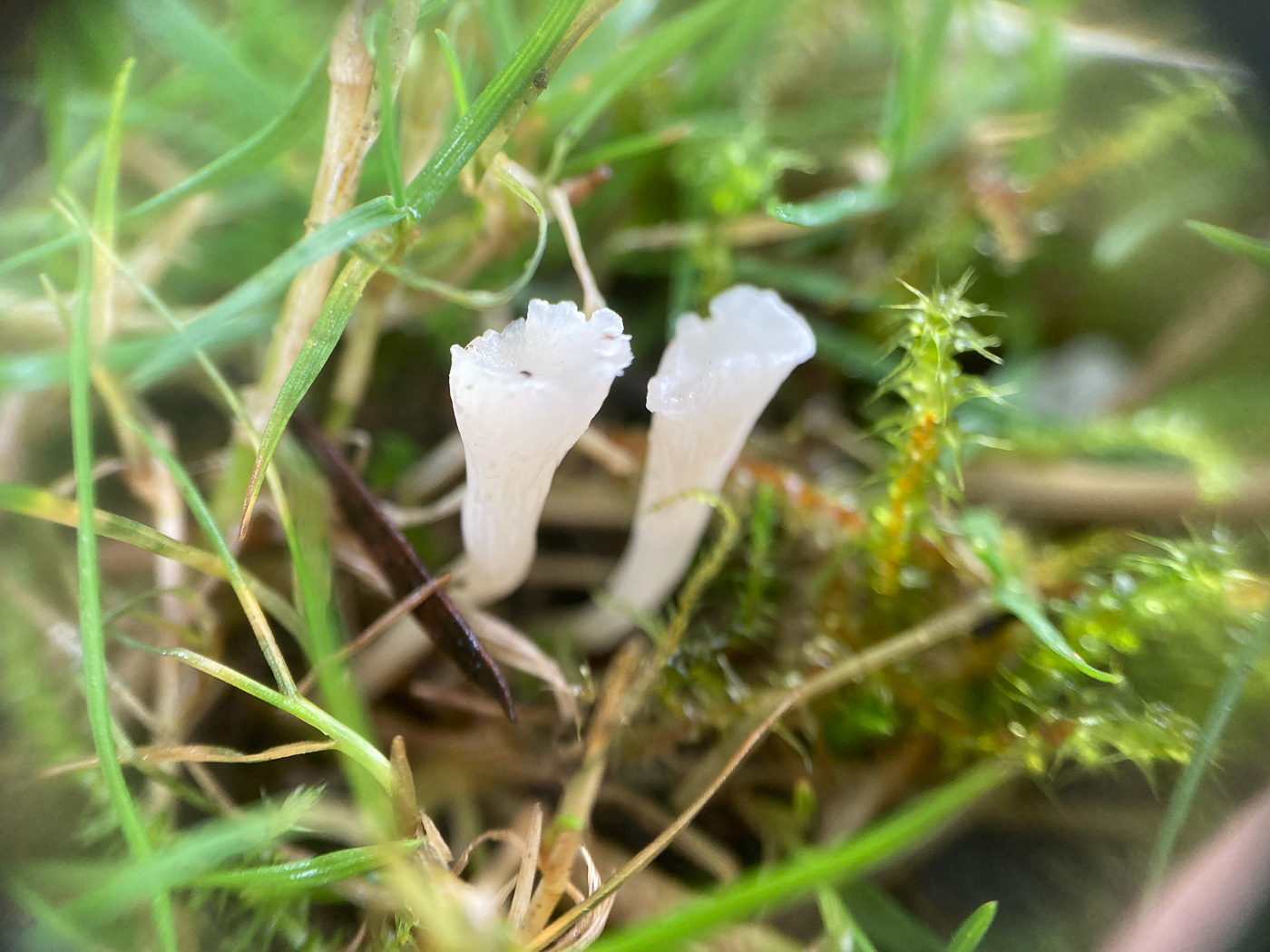
 |
December 12th Clavicorona taxophila (Yew Club) 
In the grounds of Cliveden Estate a week earlier Russell Ness found a few very small white clubs after hard frost, noting the nearby Holly, but could make nothing of them. Returning today he found more fresh specimens in the same area but clearly under a large Yew, and this led him at home to his determination of this rare species not previously recorded in the county, with few national records and at one stage on the Red Data list. The spores are minute and the clubs are typically trumpet-shaped with a slightly frilly top. This was an excellent find.
|
December 11th 2021
 |
December 11th Mycena smithiana (a Bonnet with no common name) 
In Cliveden Estate when under Oak Russell Ness spied this tiny mushroom amongst the rotting litter. There are quite a few tiny white Bonnets which can be found in leaf litter but this species can often be separated by its distinct pink tinge and its occurrence only on fallen Oak leaves. We have a handful of county sites where it's been found but it was new to this site today.
|
December 5th 2021
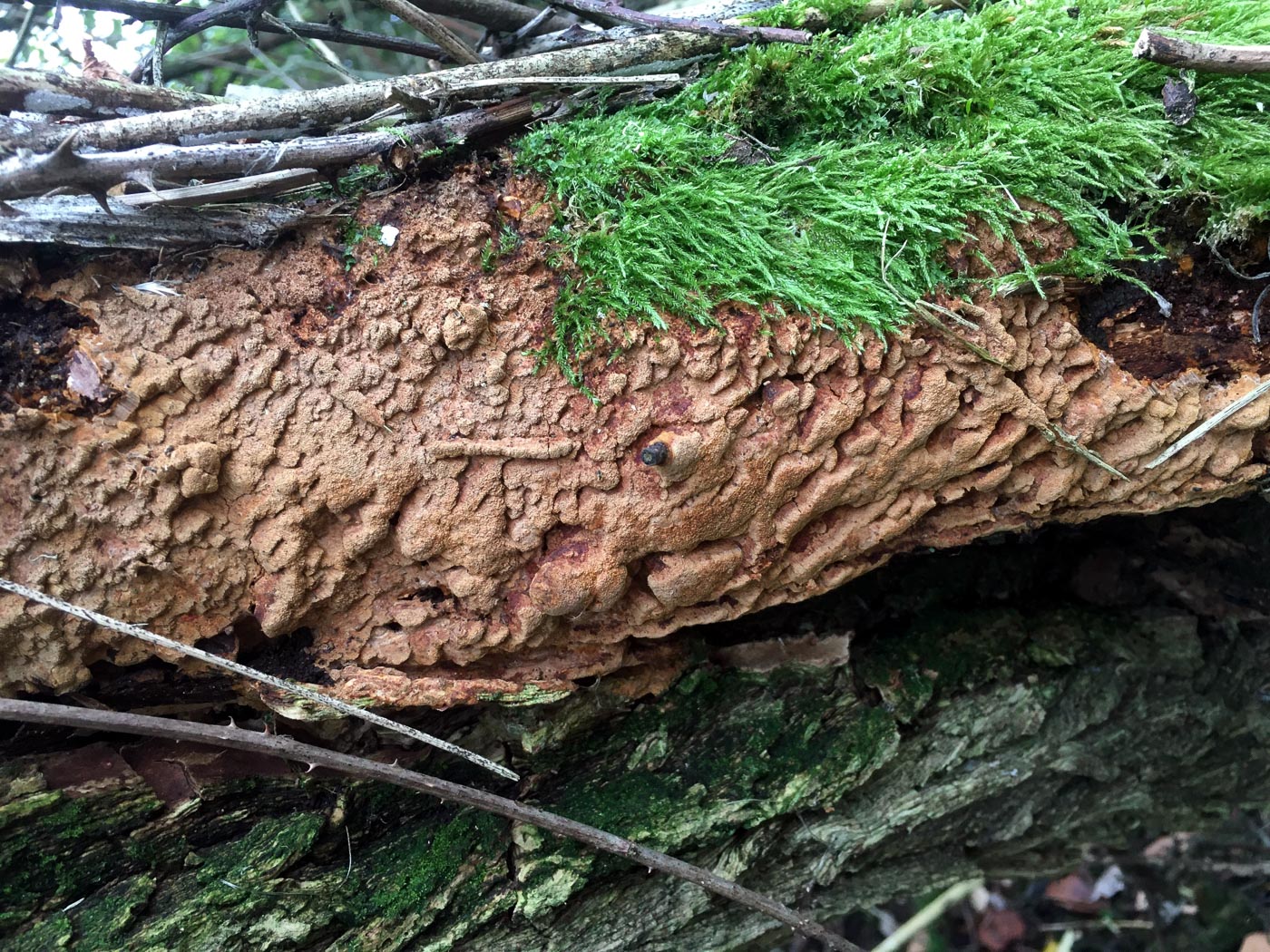
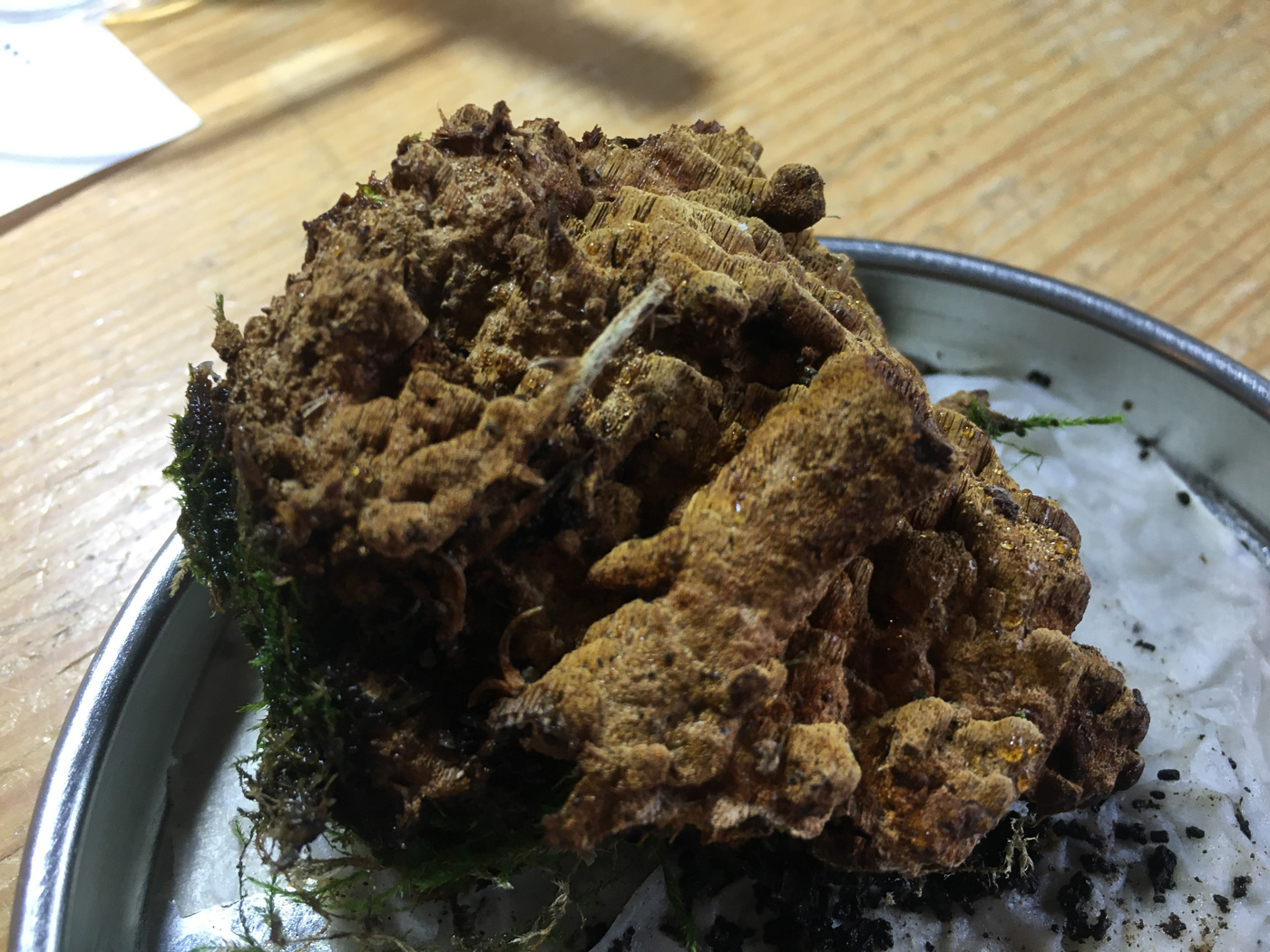 |
December 5th Fuscoporia ferruginosa (Rusty Porecrust) 
In Brill Common Joanna Dodsworth was mystified by this strange looking corticioid found on an old lumpy Elder stump. Having consulted with Claudi Soler she checked for and found the distinctive 'setae' (microscopic brown pointed hairs) which occur on the underside of this species - where fungus meets wood, confirming Claudi's suggestion that it was not the more common Fuscoporia ferrea but this less frequently recognised but extremely similar species. In the field the two are pretty well identical and both have these setae within their texture but F. ferrea lacks them on its underside. Previously both species were in the genus Phellinus. Photo 2 shows Joanna's 'lumpy' Elder stump.
|
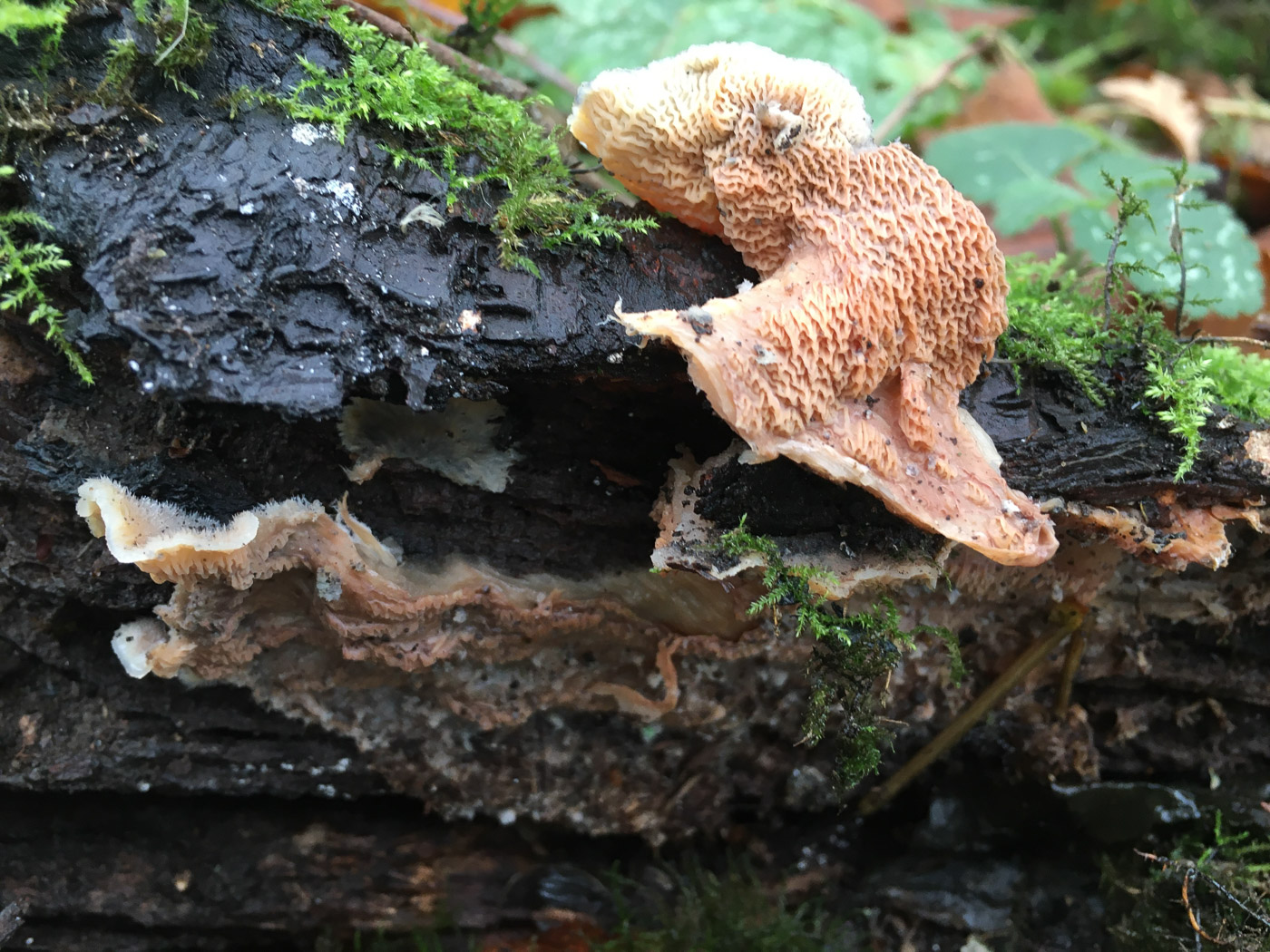 |
December 5th Phlebia tremellosa (Jelly Rot)
In Brill Common Joanna Dodsworth came across this soft pinkish flattish species on a rotten Willow trunk (in some books as Merulius tremellosus). This is a common 'corticioid-cum-bracket' found on fallen deciduous wood, having a salmon pink gelatinous strongly wrinkled undersurface (merulioid) when fresh and a finely hairy upper surface. It can form semi-brackets covering an extensive area and becomes hard when dry and old. Compare with the equally common Phlebia radiata (dated Nov 25th) which though similar in texture sports a bright orange margin.
|
December 3rd 2021
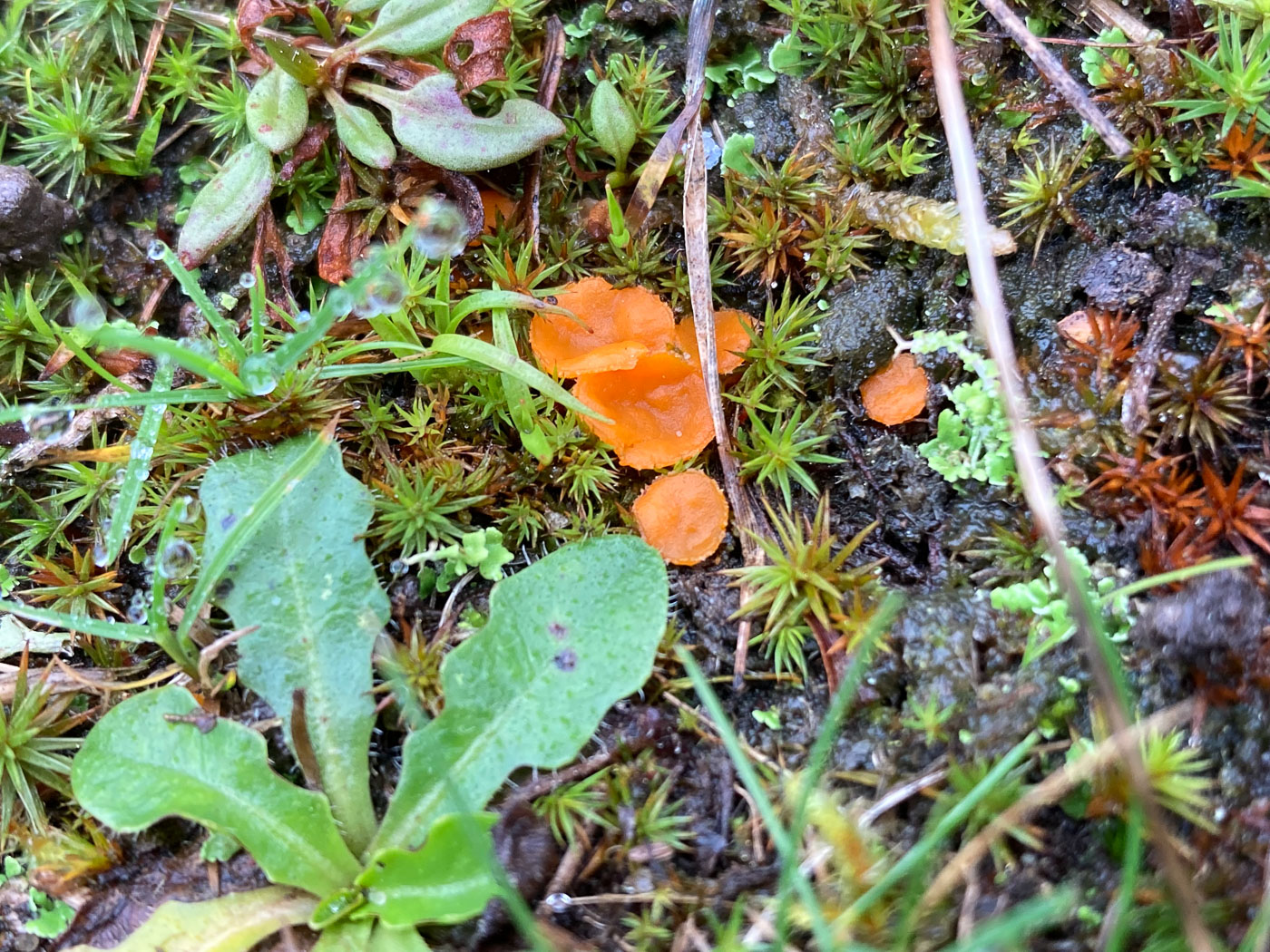
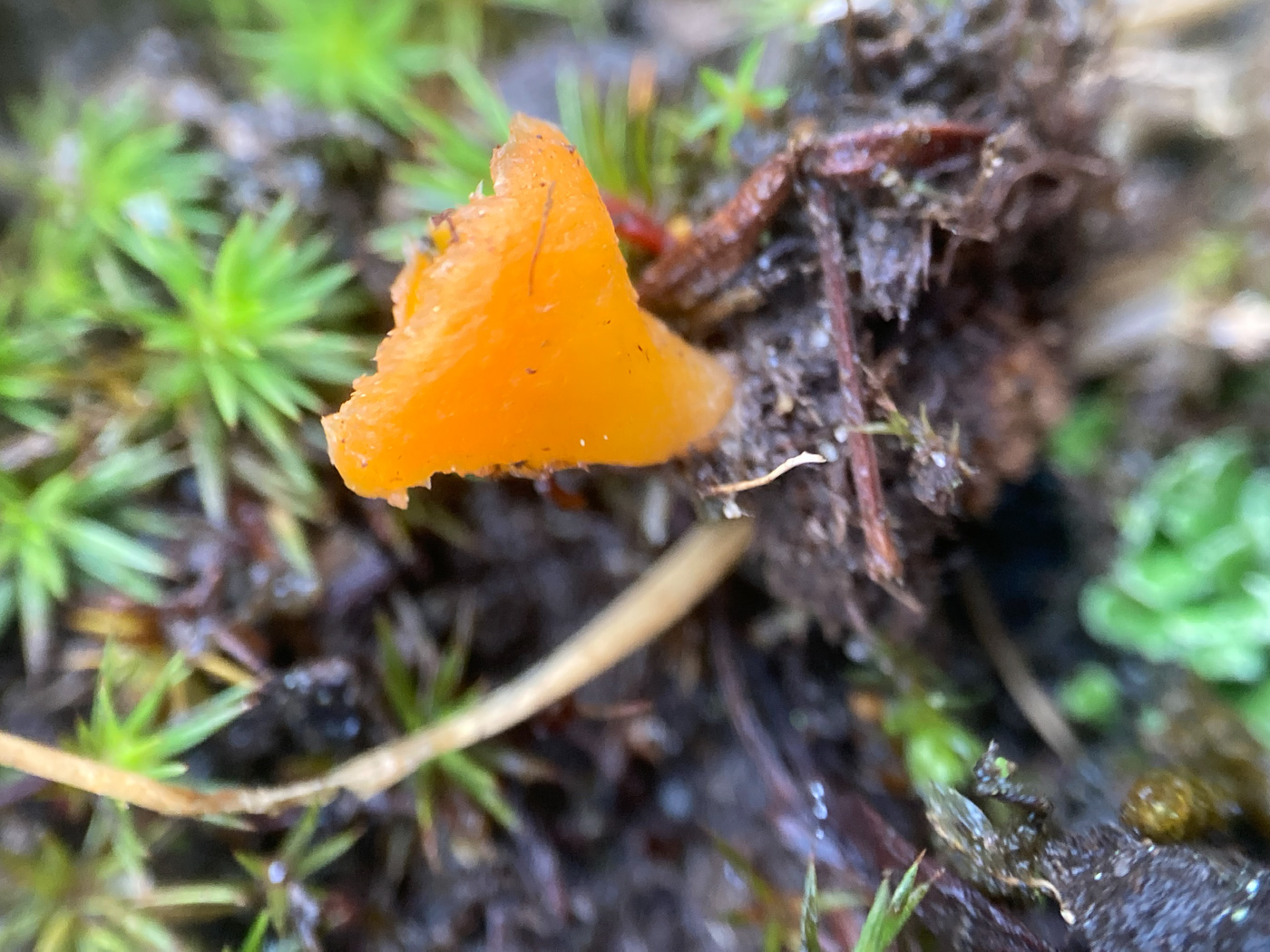 |
December 3rd Neottiella rutilans (an Ascomycete with no common name) 
In Cliveden Estate Russell Ness, who knows his mosses, found this rare and brightly coloured discomycete species growing amongst Polytrichium juniperum in a patch of acid soil. The species only occurs with this particular moss and patches of acid soil are not common in the county, hence the fungus has not previously been recorded here. This was a nice find.
|

 |
December 3rd Geoglossum glutinosum (an Earthtongue with no common name) 
In grass in the grounds of Cliveden Estate Russell Ness found two different Earthtongues growing quite close together and therefore needing care to identify. (It is all too easy to make mixed collections when they are found growing like this if one doesn't observe subtle differences and check later with a scope!). The recent rain made the slimy smooth surface of this species obvious, in contrast to the dry scurfy stalks of G. fallax found nearby.
|
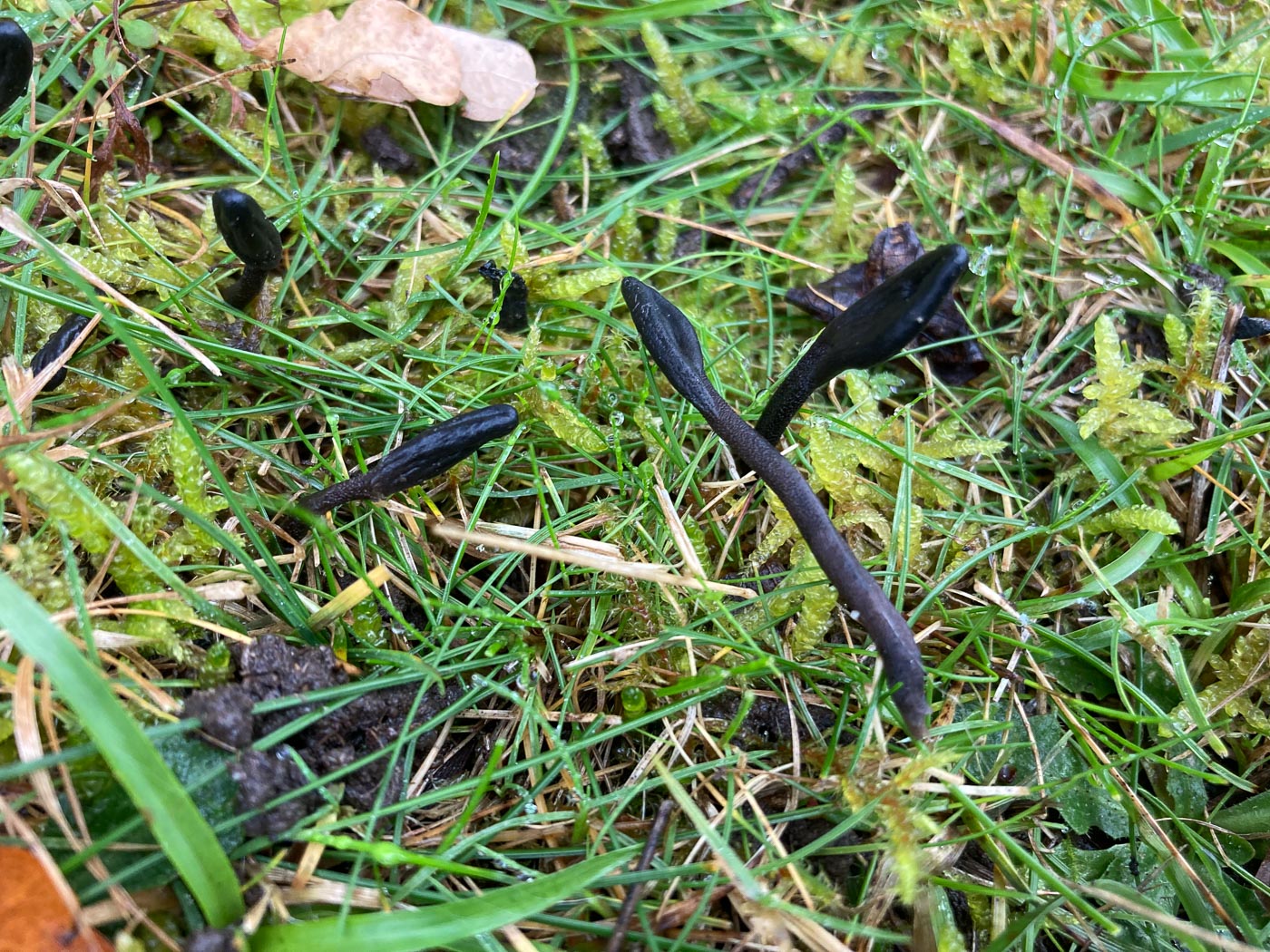
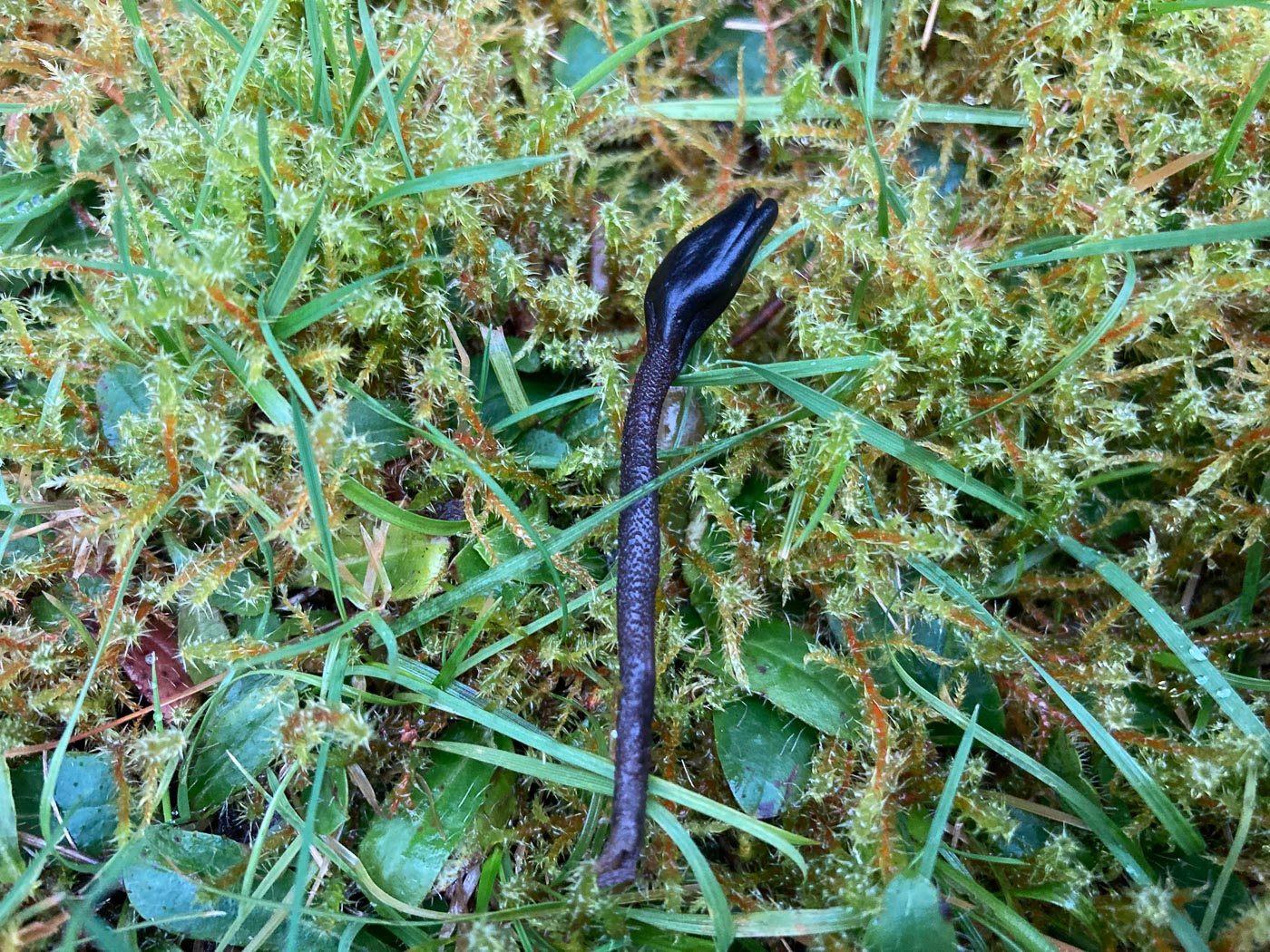 |
December 3rd Geoglossum fallax  (Deceptive Earthtongue) (Deceptive Earthtongue)
In grass in the grounds of Cliveden Estate Russell Ness found two different Earthtongues, both of which we have just a handful of previous sites recorded. See notes for G. glutinosum for more information and comparison.
|
 |
December 3rd Arrhenia retiruga (Small Moss Oysterling)
In Lacey Green Churchyard Sarah Ebdon noticed this unusual and insignificant little fungus growing on the moss. This is a parasitic pale grey Basidiomycete and only found on moss, often late in the year; it lacks a stem and proper gills which are reduced to shallow wrinkles at most. Described as widespread but not often reported, we have only a handful of county records and none in the last 10 years, so this was a nice find.
|
December 1st 2021
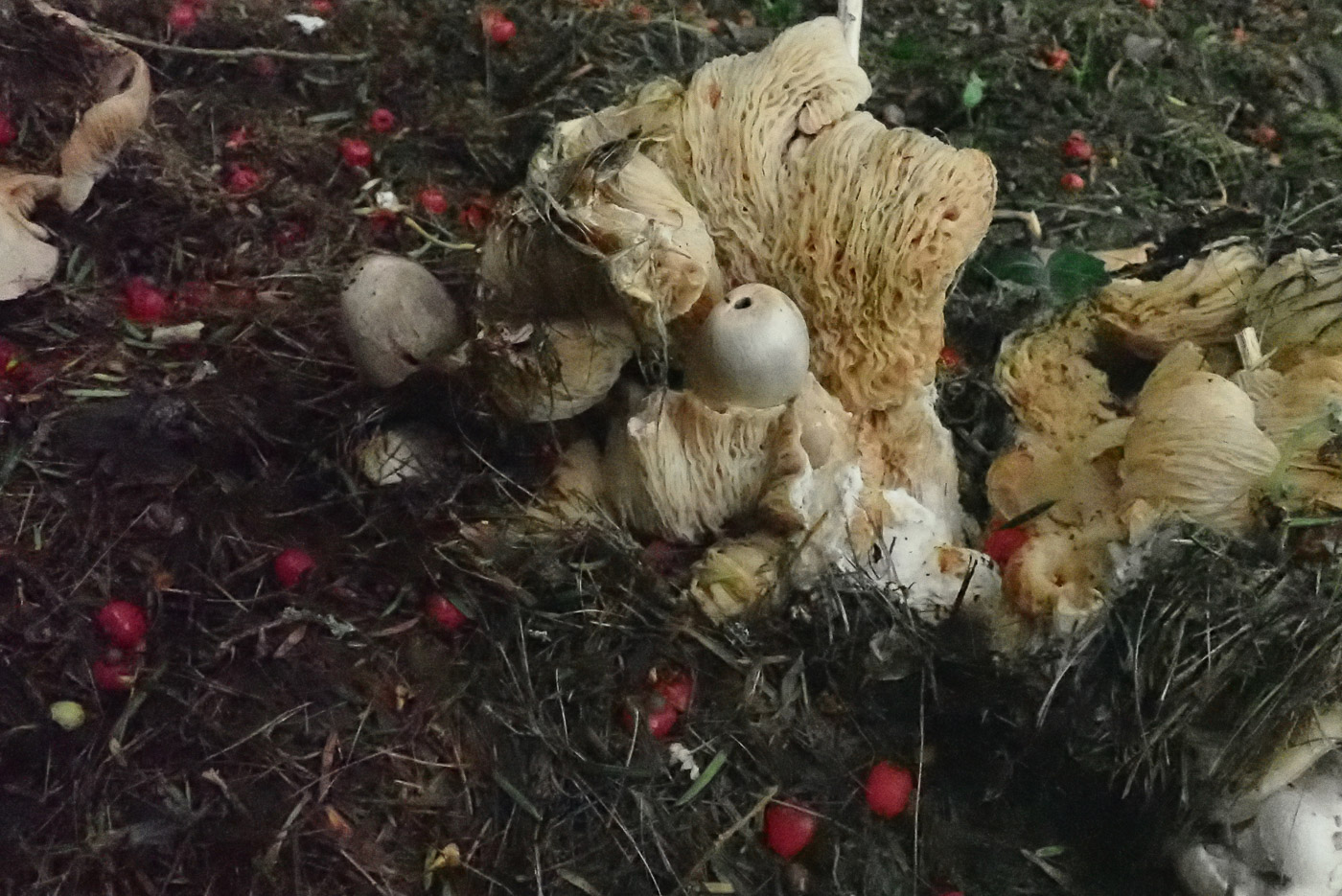

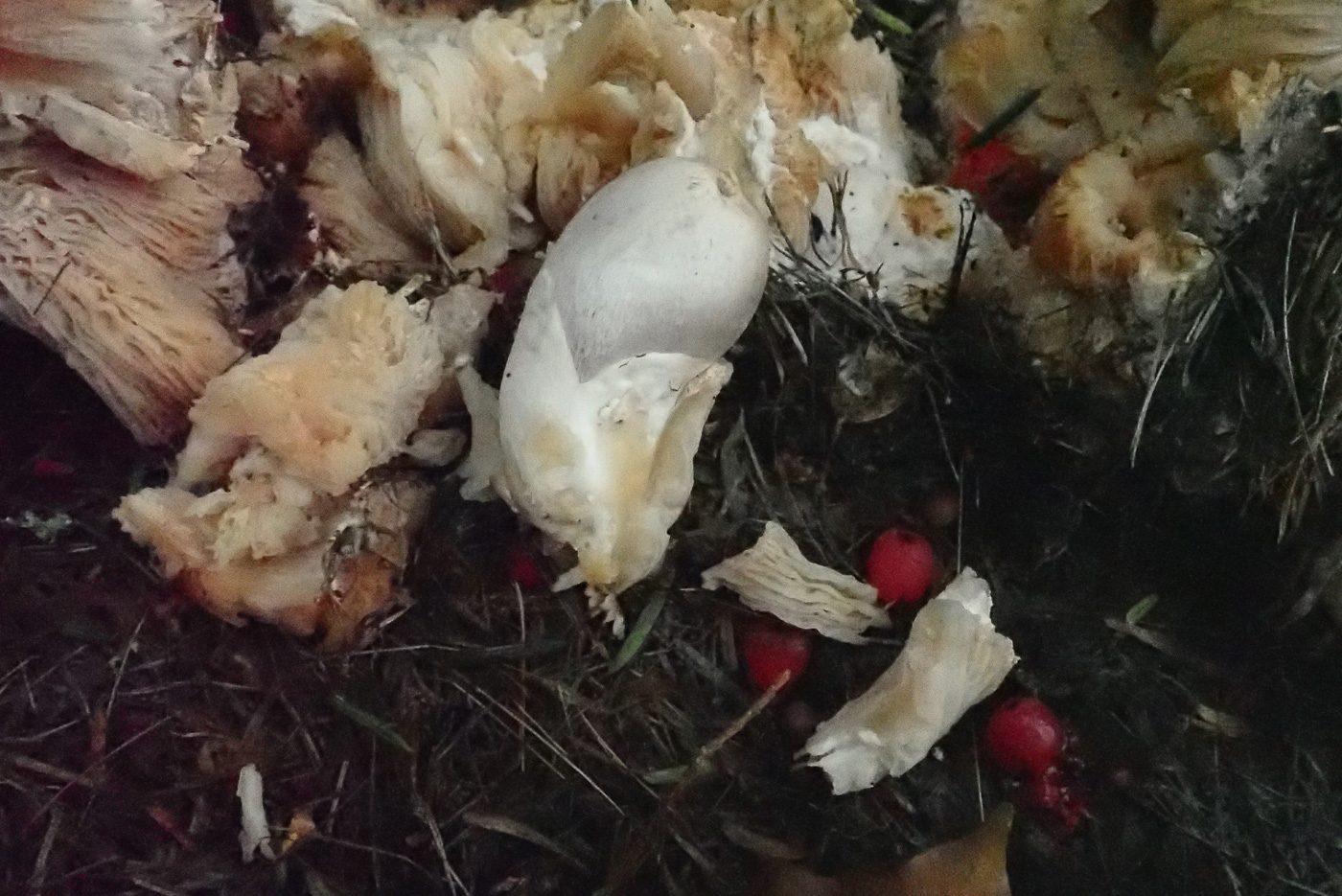
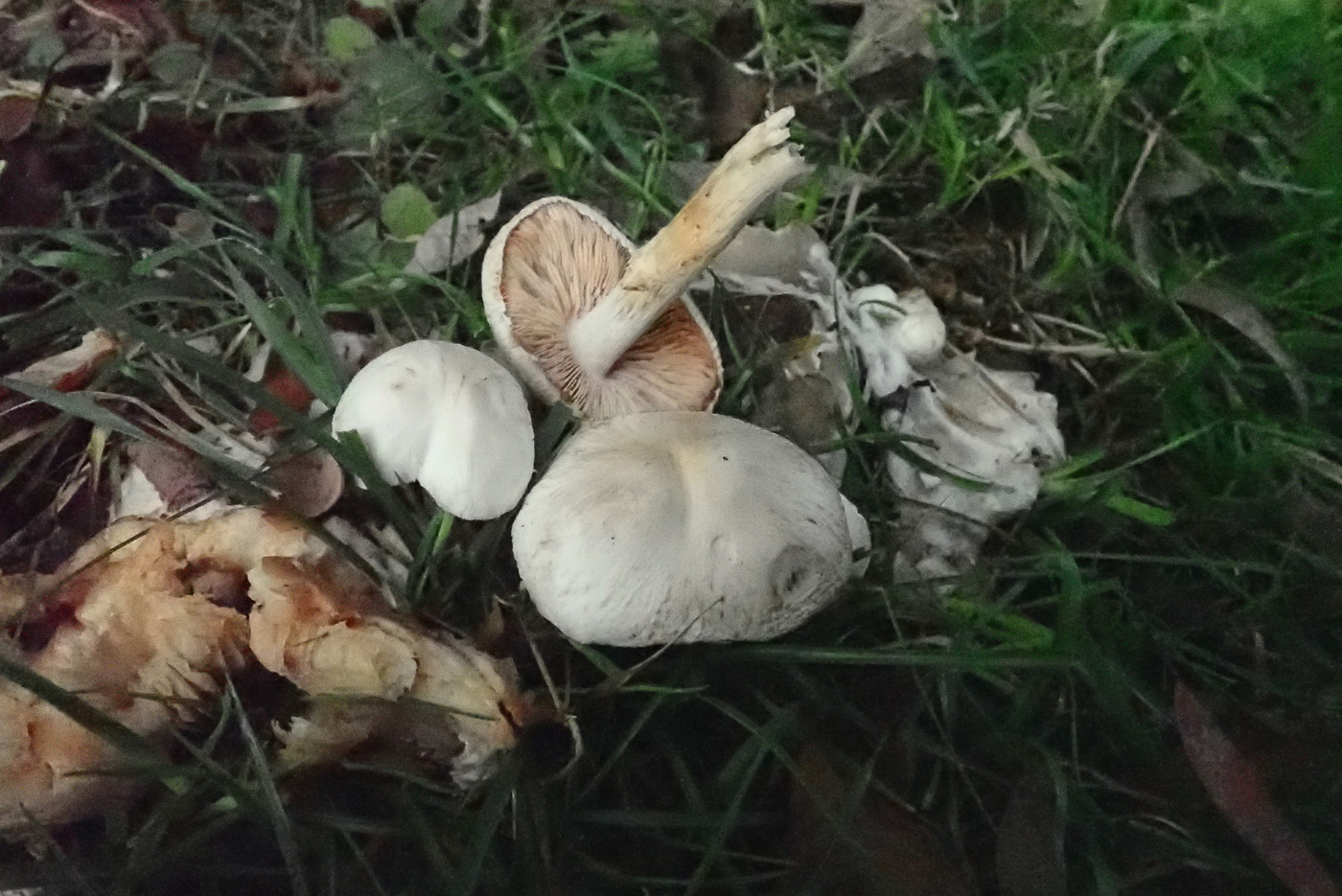 |
December 1st Volvariella surrecta (Piggyback Rosegill)
In Bradenham Churchyard Penny was delighted to find this rare and interesting species - one for which we have just a single previous county record from 2014. The common name is apt here: this is a mushroom growing on a mushroom and one which is completely dependent on its host species (Clitocybe nebularis - Clouded Funnel) for its existence, growing out of old rotting fruitbodies late in the season. Penny had found it a week ago but in Sussex, so realising that it might be fruiting locally at the moment she was on the lookout for it. There was a cluster of C. nebularis decaying on old lawn clippings dumped under a large Yew and there it was! Note the large volva it's emerging from - a diagnostic feature of the genus which otherwise is similar to Pluteus, ie having pink free gills. This is definitely one to look out for now wherever you come across the host mushroom well past its sell-by date.
|
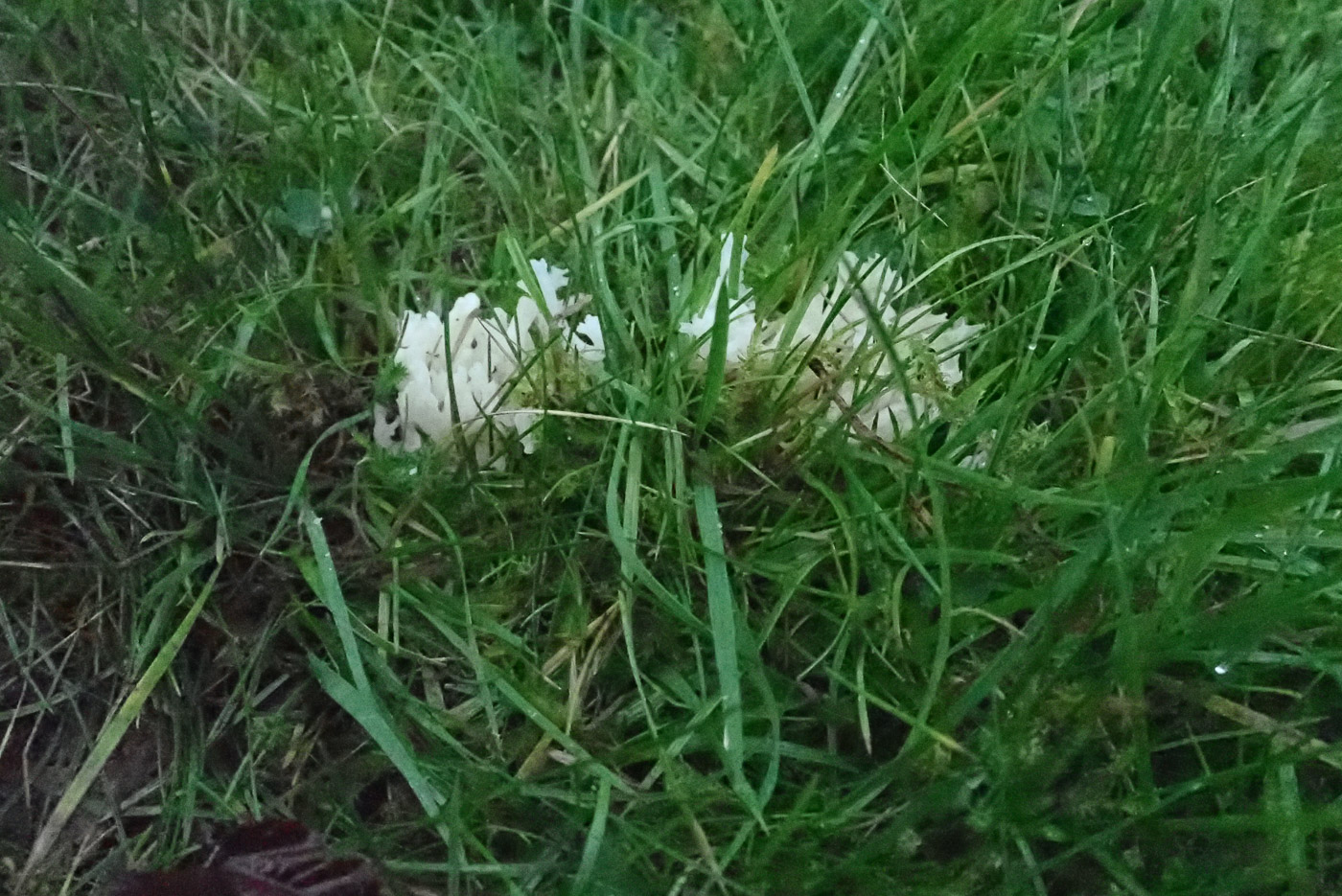
 |
December 1st Ramariopsis kunzei (Ivory Coral) 
In Prestwood Churchyard Penny noticed this white Coral just poking up through the grass and suspected it was something quite unusual so took it home to check. Sure enough the spores confirmed this as R. kunzei and were warty, small and subglobose with clamps present in the tissue also. We have just a handful of previous records for the county and it was new to the site - one which is proving extremely productive for interesting grassland species and still a site worth a visit now with fresh Waxcaps appearing despite the chilly recent conditions.
|
 |
December 1st Mycena olivaceomarginata (Brownedge Bonnet) 
On Bradenham Cricket Pitch Penny found the odd cluster of small brown capped Bonnets and suspecting it was this species she checked the gills with a x10 lens to see if the edge was faintly brown. It was only faint but definitely there (though sadly the image is not good enough to show this), confirming this grassland Bonnet which otherwise looks similar to many other Bonnets. The species is not that common but easily misidentified because the olive brown gill edge is not that easy to see. (See also dated Oct 5th)
|
November 25th 2021
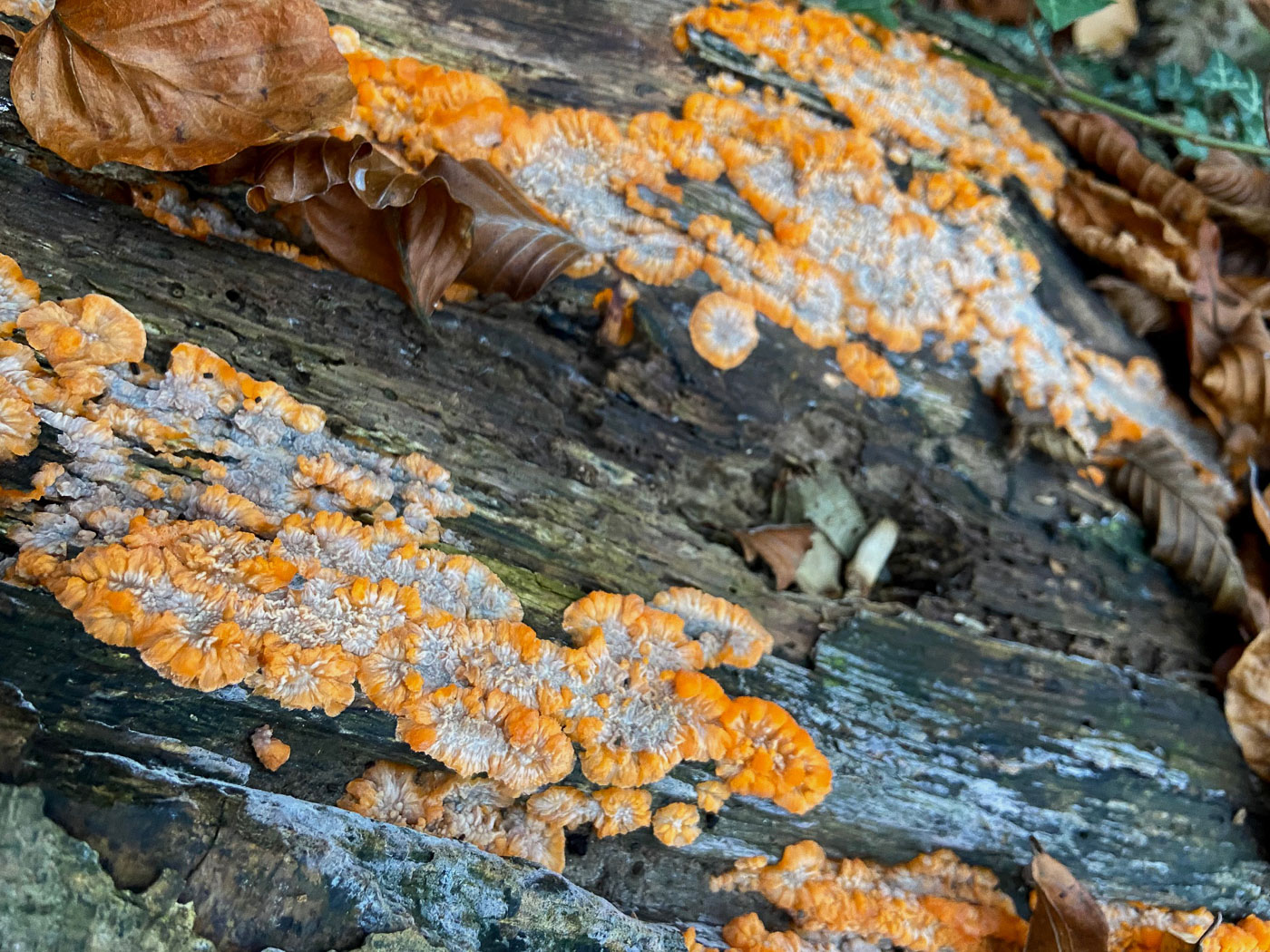
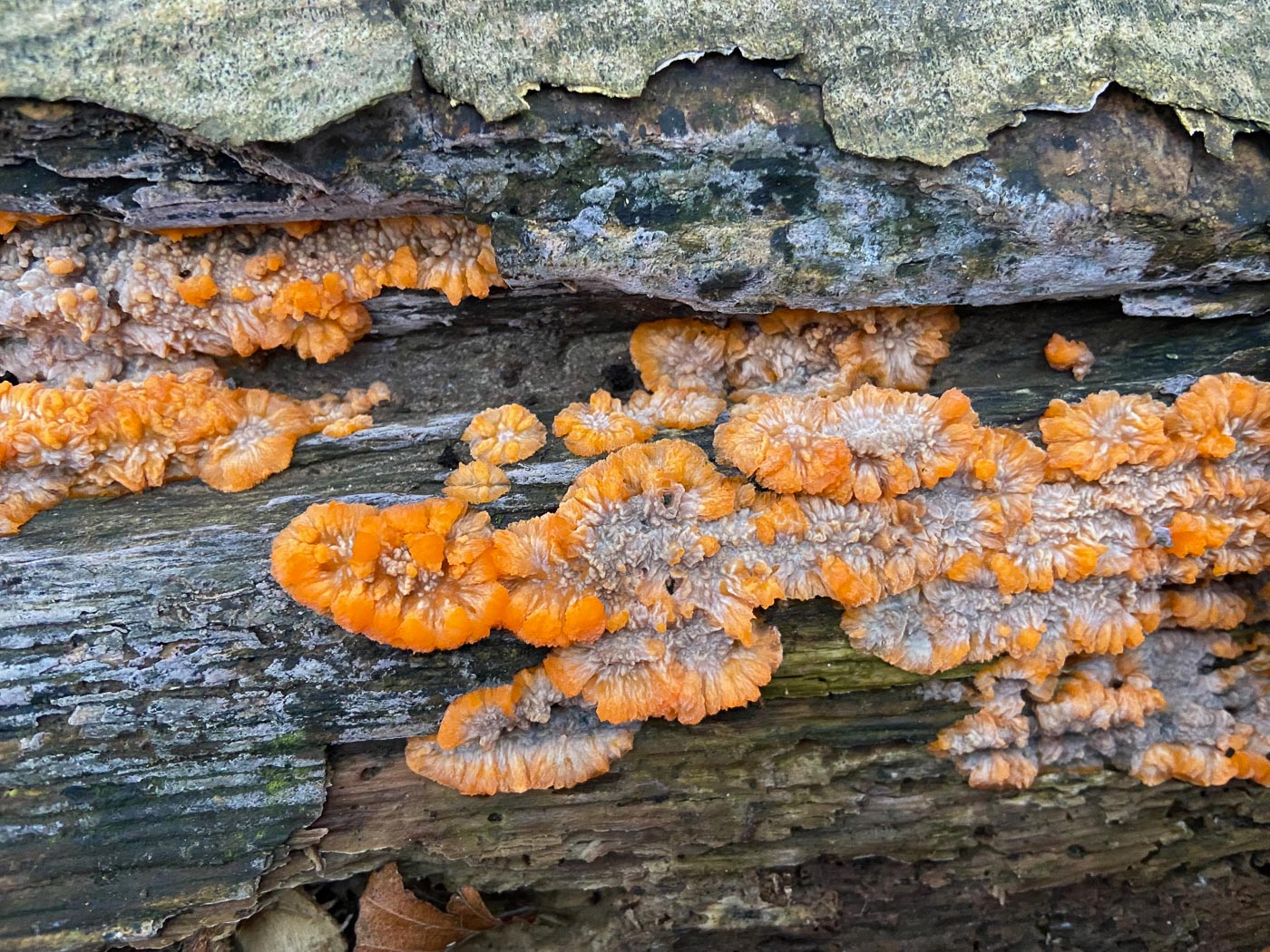
 |
November 25th Phlebia rediata (Wrinkled Crust)
In Peterley Wood Sarah Ebdon noticed a large expanse of this common and distinctive resupinate on a fallen dead Hornbeam trunk. This is a species which can be found on a range of fallen deciduous woods. When fresh as here (and not too frozen!) it has a soft 'merulioid' texture - wrinkled and a bit gelatinous - but later becomes hard and dry. Its bright orange fringes make it an easy one to recognise and separate it from others with this same texture. Sarah says it was here covering the full length of the trunk but a few days later was 'much more spread and faded - the grey wrinkly centre having expanded and the orange must less vivid'.
|
November 24th 2021

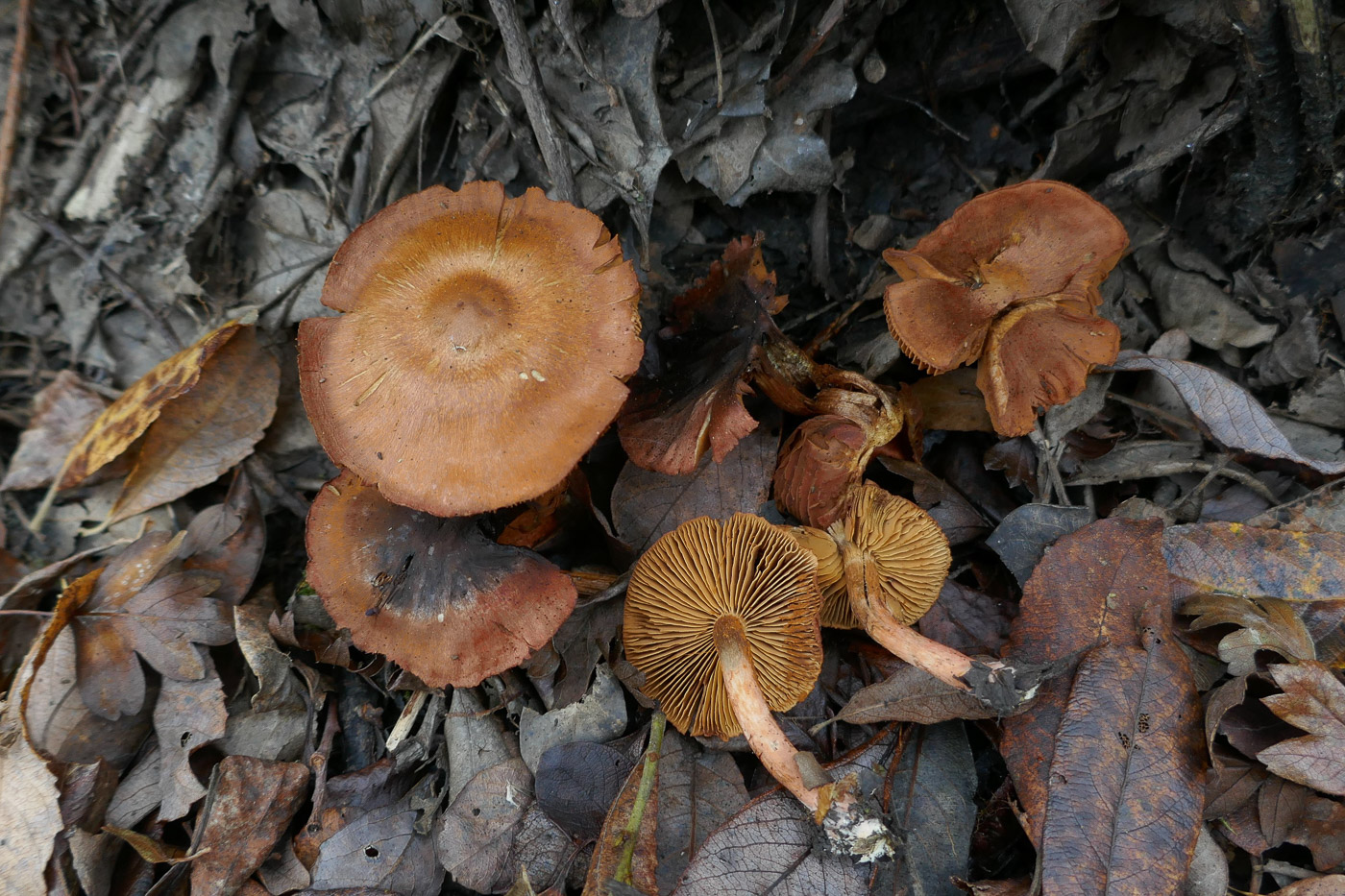
 |
November 24th Cortinarius uliginosus (Marsh Webcap) 
Whilst clearing out an overgrown pond at Stampwell Farm Jackie Ewan noticed a few clusters of this bright orange-capped Webcap and noting the obvious Willow association present she recalled Penny suggesting she should look out for this unusual species when under Willow in wet places. The collections varied somewhat, in fact she wondered if the paler specimens were a different species, but the spores from both the paler and darker collections fitted exactly and descriptions of the species include comments of a var. luteus which lacks the reddish bands of veil on the stem (seen in photo 1) and has a yellower cap also. When fresh and young this species is notable for its bright yellow gills which contrast with the copper of the cap, but they soon darken as the rusty spores colour them as seen here. Photo 3 is of var. luteus. See also a collection from Stoke Common dated Nov 11th.
|
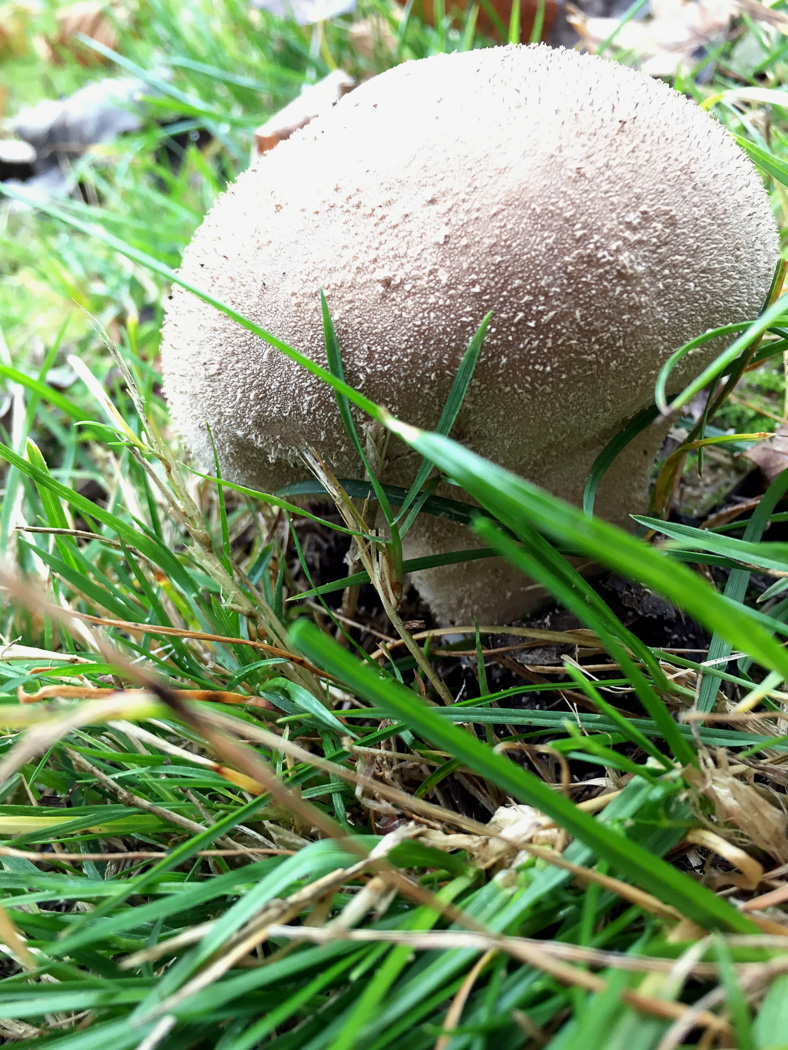
 |
November 24th Lycoperdon molle (Soft Puffball) 
In a grassy glade in Wotton Park Estate Joanna Dodsworth found this quite unusual puffball and, thinking that it looked different from the commoner species we regularly record, took it home to examine. The outer surface together with shape and size are important features in the genus, but it is always safer to confirm any identification of a species one is not that familiar with by checking the spores. When, as in this case, the specimen is still white and firm inside indicating no developed spores as yet, then the only option is to keep it a couple of days in the hope that it will mature enough. This Joanna did (photo 2) and was then able to find the small round ornamented spores with loose strands of debris amongst them, these being remnants of the tops of the basidia and their presence being a good indicator for the species.
|
November 23rd 2021
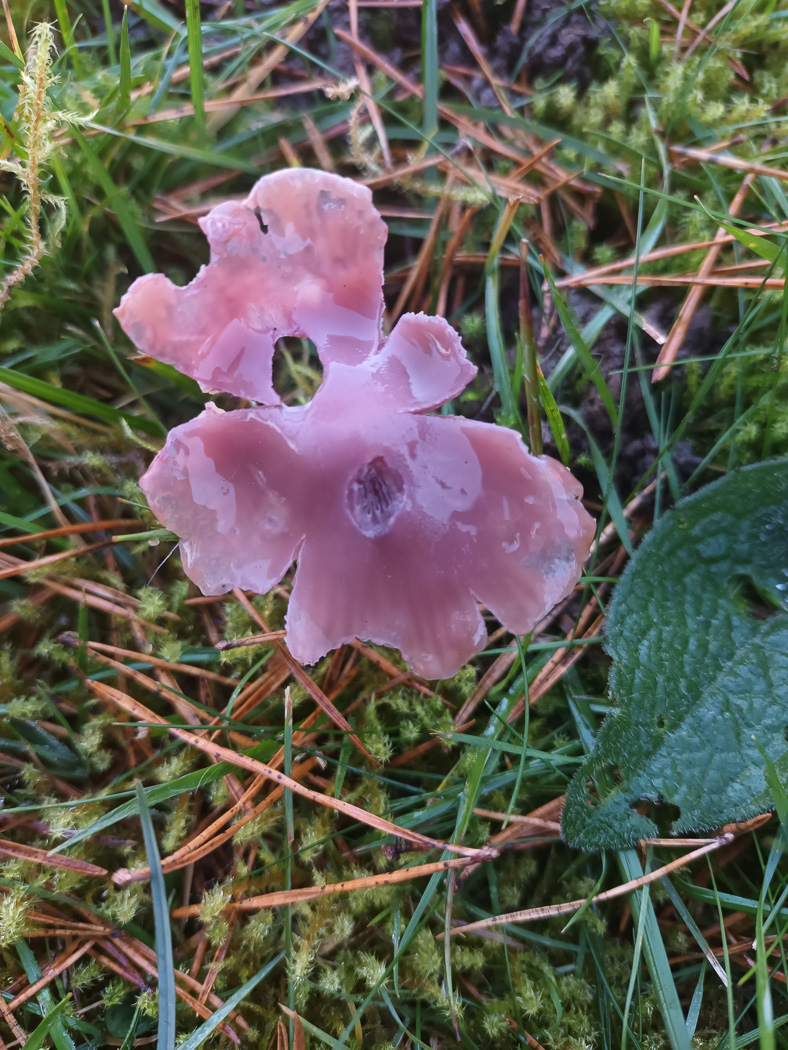 |
November 23rd Gliophorus reginae Gliophorus reginae 
In shortish grass in Prestwood Churchyard Jesper Launder found this singleton Waxcap and instantly suspected it was this rare species having become familiar with it from more northern areas of the country. Closely related to G. psittacinus (Parrot Waxcap), it was raised to species level as a result of a molecular study of this complex undertaken by Martyn Ainsworth at RBG Kew and named to honour the Queen's jubilee. Its violet pinkish colour is distinctive, having no hint of green, but it should not be confused with Porpolomopsis calyptriformis (Pink Waxcap) which has a greasy conical cap and dry stem in contrast to today's species which is somewhat slimy all over. This is new to the county.
|
 |
November 23rd Clavaria asperulispora (a Club with no common name) 
In Prestwood Churchyard under a large Yew Jesper Launder found this very dark singleton club, one that is genuinely very rare though possibly easily missed. It is a Yew associate with only a handful of UK records (some of those being duplicates!) so this was an exciting discovery. If found and examined with a scope as here, its distinctive small round spiny spores soon confirm what should be a fairly straightforward identification.
|
November 21st 2021
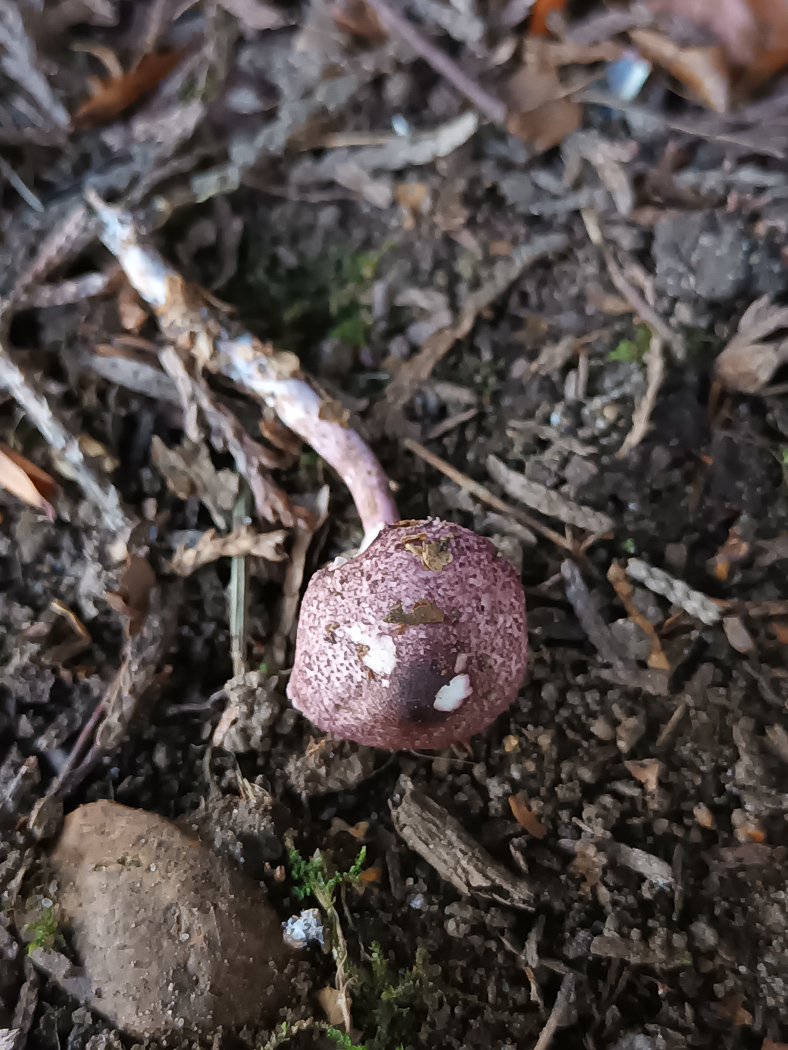
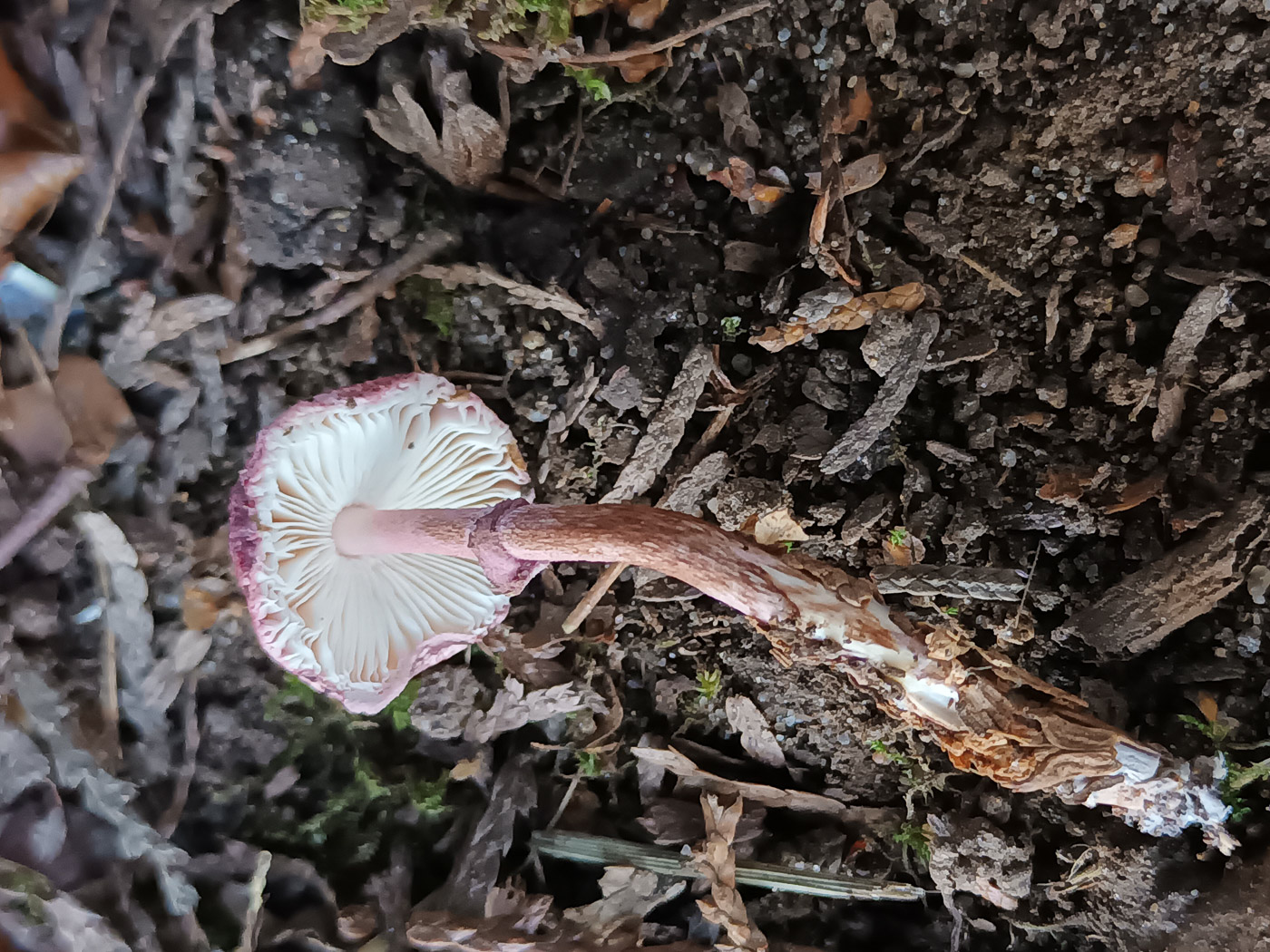 |
November 21st Leucoagaricus ionidicolor (a Dapperling with no common name) 
In Jordan Village whilst dog-walking Jesper Launder noticed this very rare beauty by torchlight (!), returning the next morning for the photos. An unmistakeable species, it has this unique vinaceous pink colour on both the finely scaly cap and the stem which has a ruff-like upturned ring also this colour, contrasting with the white gills. Closely related to the genus Lepiota, the species is considered rare all over Europe with few British records and just one previously for Bucks, it apparently favours calcareous woodland litter - both deciduous and conifer. What a find!
|
November 20th 2021
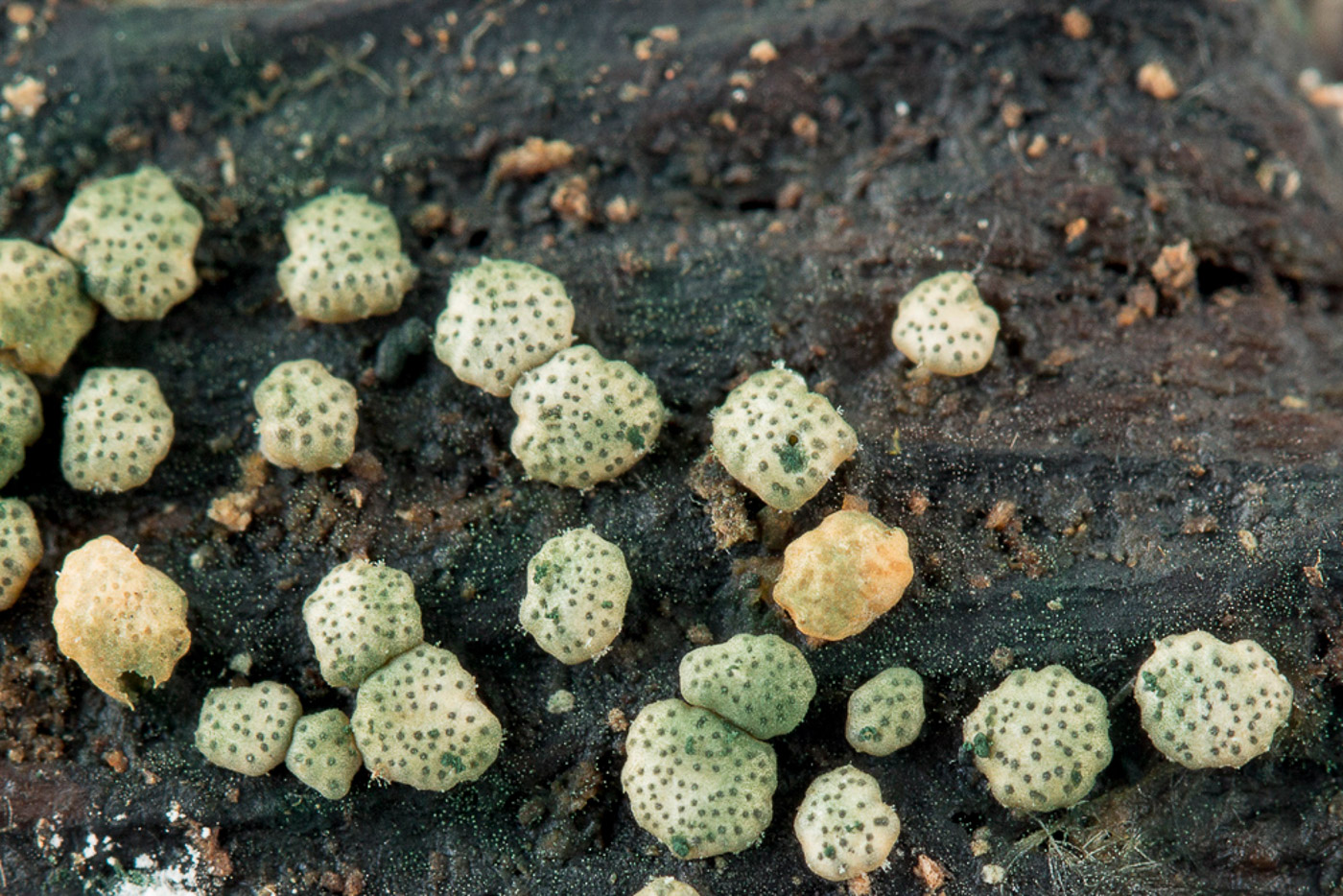 |
December 20th Trichoderma strictipile (a rare Ascomycete with no common name) 
On our late season walk at Rushbeds Wood, Jacqui Mckenzie-Dodds found this little colony of greenish blobs on fallen deciduous wood and handed the specimen to Claudi Soler who recognised it as very similar to Hypocrea gelatinosum. He also knew that this was a species complex recently resolved into a host of new species and moved to the genus Trichoderma. He sent the sample to Kew Asco expert Mariko Parslow who in early January was able to give him this name. So this was an exciting find by Jacqui and, thanks to Claudi's actions, we have another new species for the county. (The photo is Claudi's.)
|

 |
November 20th Psathyrella cotonea (Yellowfoot Brittlestem) 
In woody litter under the Larches in Penn Wood, Russell Ness came across this clump of white fluffy mushrooms and recognising the species from looking through books, took it home to examine in detail. The is quite a rare Brittlestem, characterised by the cap having thick whitish fluffy veil and a stem which is quite thick and chunky for the genus, also fleecy and with a yellowish base. As with most members of this genus a careful check of the microscopic characters is necessary to confirm any identification, as was done here. We have just a handful of county records but none previously from Penn Wood. Photo 2 is of a collection made the next day by Jesper Launder from Jordans Village! No coincidence, this. It has happened time and time again this season that records of a certain species have come in almost simultaneously from different parts of the county.
|
November 19th 2021

 |
November 19th Tephrocybe ambusta (a Domecap with no common name) 
In Dorney Wetlands Russell Ness checked a large bonfire site in the hope of interesting fungi and was rewarded! Previously in the genus Lyophyllum, this is quite an unusual find - the rarer of two very similar species of burnt ground now in Tephrocybe, the other being T. anthracophila, there being quite a subtle difference in spore ornamentation between them and carefully observed here by Russell. We have just one previous county record for T. ambusta. Burnt ground is always worth a quick inspection and can be very productive for fungi, producing species not found in other habitats as well as some like Laccaria laccata which pop up anywhere.
|
November 18th 2021
 |
November 18th Trichoglossum hirsutum (Hairy Earthtongue) 
In Prestwood Churchyard Penny chanced upon this singleton which, though one of the commonest Earthtongues, appears to be a new species for the site. What was unusual was finding one on its own: normally if / when one is spotted there are more to be seen once you start looking around carefully, but despite diligent searching no more could be found. With a hand lens the roughened finely hairy stem surface of this species can be seen but Earthtongues should always be identified using a scope - the spores and paraphyses are critical to any determination.
|
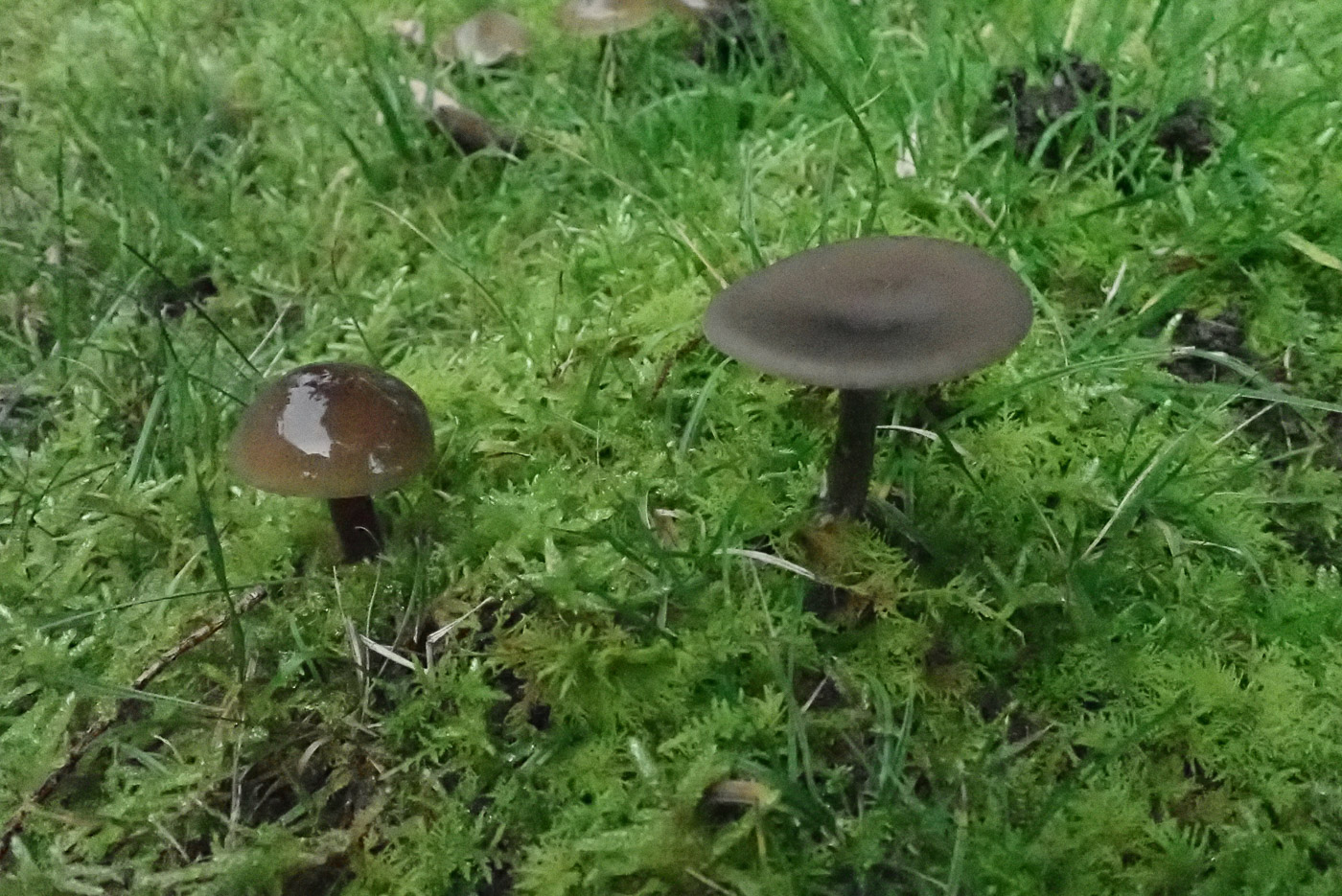
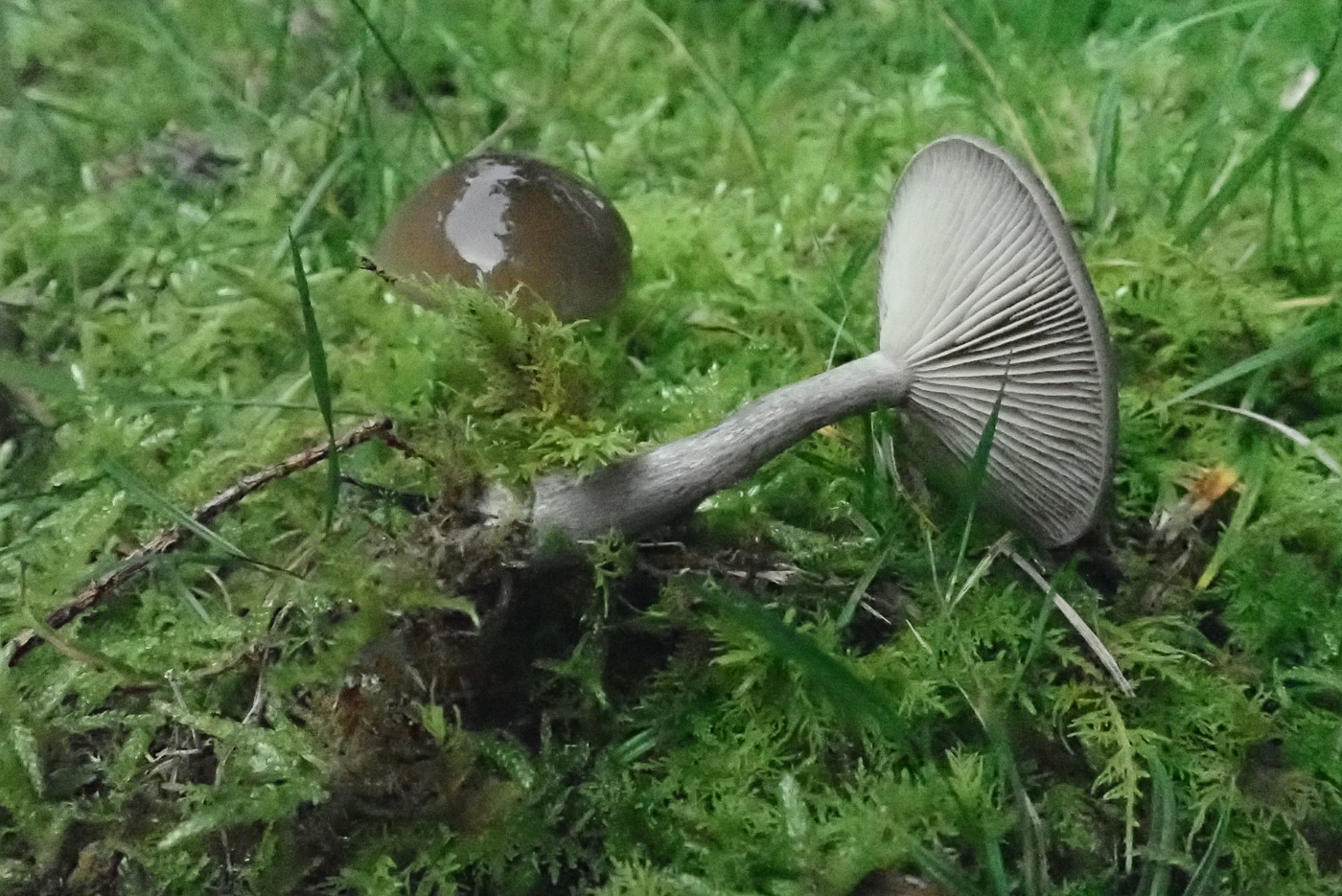 |
November 18th Pseudoclitocybe cyathiformis (Goblet)
In Prestwood Churchyard amongst a veritable forest of small very slimy brown Waxcaps (Gliophorus irrigatus) Penny noticed a single dry capped brown Goblet! She'd never seen so many Slimy Waxcaps in one spot and which feature also in the photo here - but see Oct 25th for more on that species. We also saw the Goblet in Penn Street Churchyard last weekend as it tends to be a late season fruiter and it is an easy one to recognise with its markedly decurrent gills, its sunken darker cap centre and over-all grey brown colours.
|
 |
November 18th Inocybe cincinnata (Collared Fibrecap) 
Under Pine just outside Prestwood Churchyard Penny found a group of this quite common species (though why this common name was chosen she has no idea!) In the field features to notice are the roughened scaly brown cap (often more markedly than seen here), the darker brown edge to the gills, the lilaceous tints at the top of the stem which has no swelling at its base, and the typical spermatic smell of the genus. Under the scope the gill edge is very distinctive with all cells having brown contents.
|
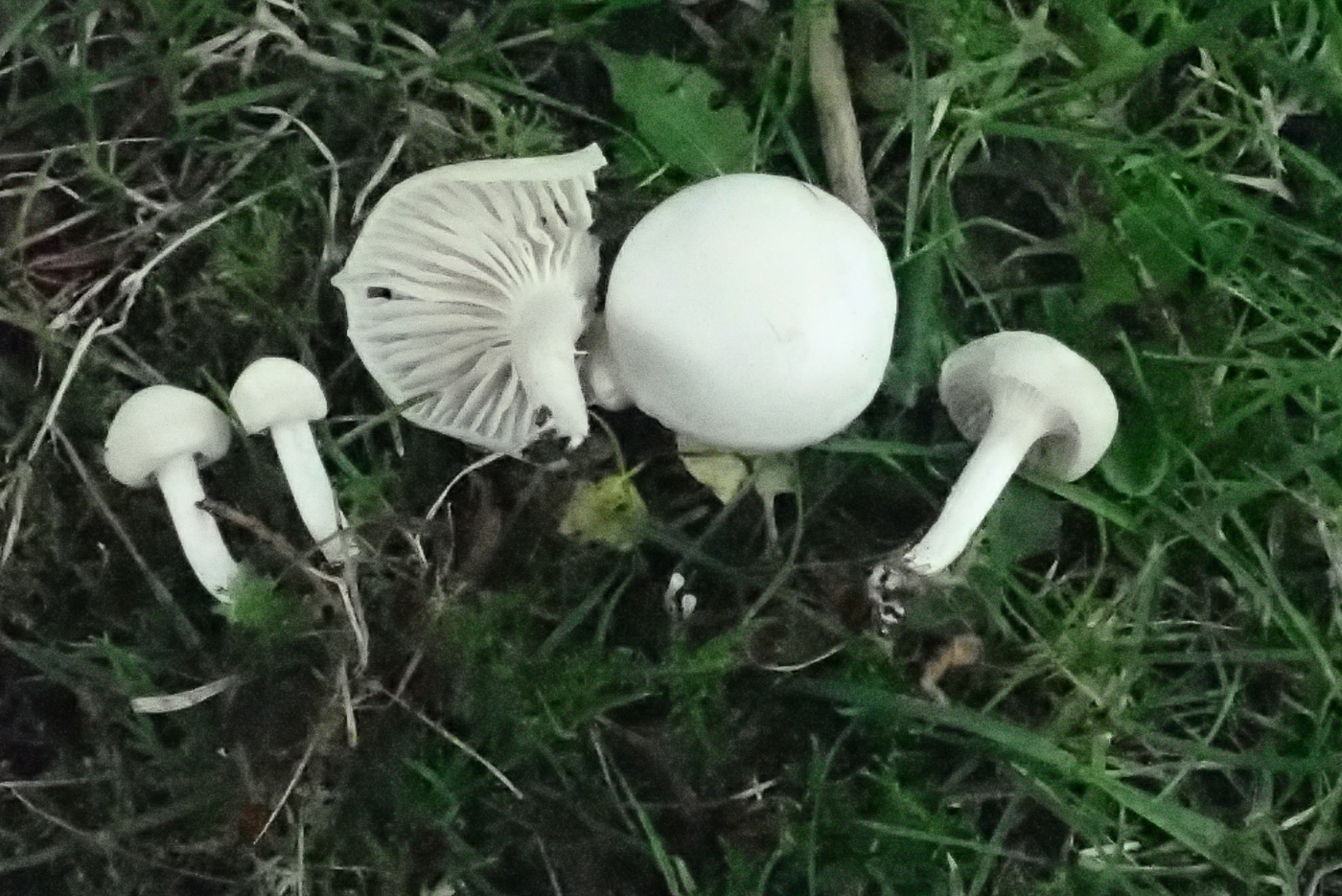 |
November 18th Cuphophyllus virgineus (Snowy Waxcap)
In Prestwood Churchyard Penny found some unusually pure white and dry capped Waxcaps which - though the species is probably the commonest of this group - made her take a second glance (also it's not yet included in Finds). However, there was little doubt about the species with its widely spaced decurrent gills though the cap is described as 'greasy to lubricous, cream or ivory' but is hygrophanous becoming white when dry - something Penny'd not noticed before.
|
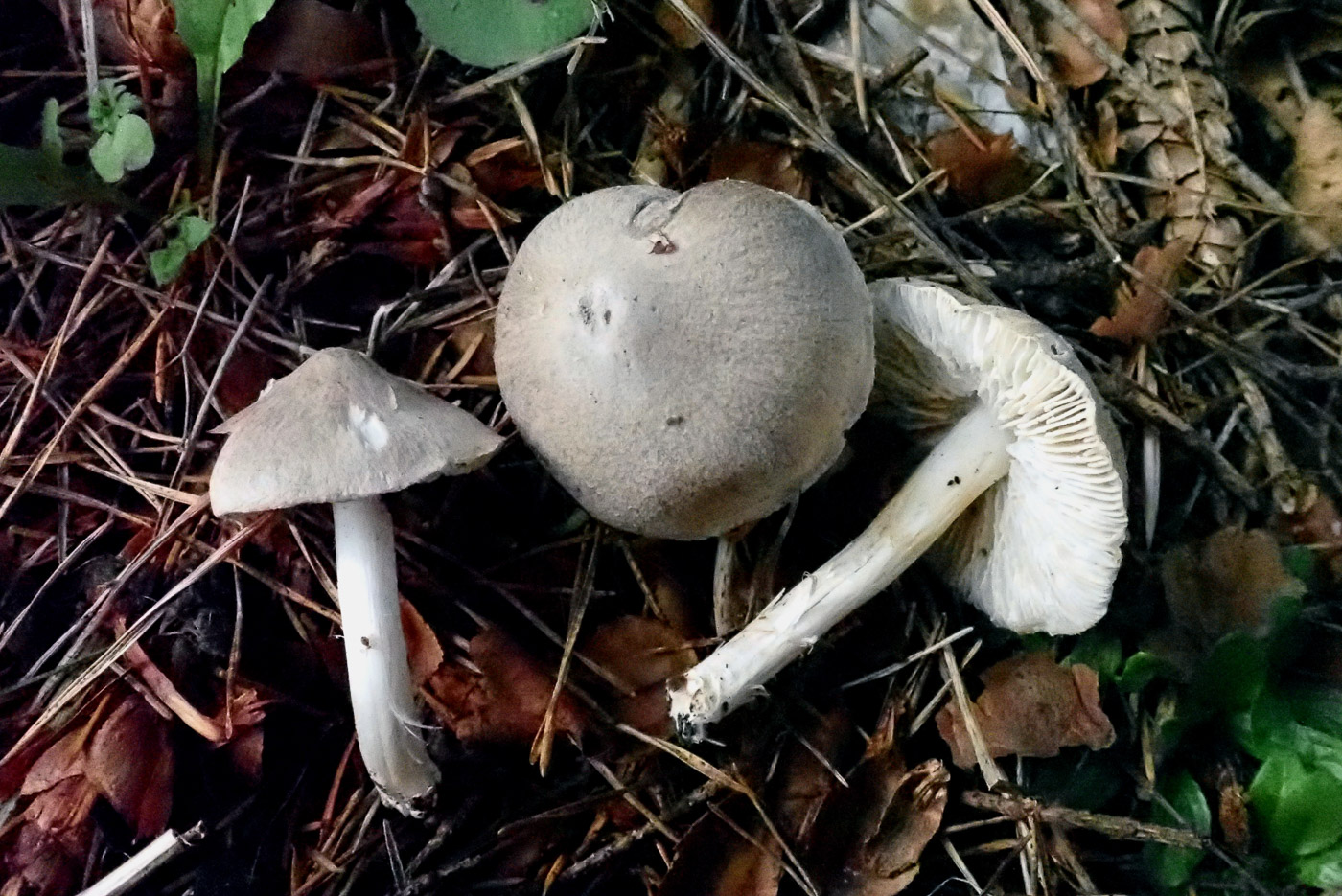 |
November 18th Tricholoma terreum (Grey Knight)
Under Pine at Prestwood Churchyard Penny noticed several of these pale grey Knights, took a photo and collected a couple to work on at home. The name 'Grey Knight' is not particularly helpful because there are a good many grey-capped Knights and sorting them out is not that straightforward! In a genus where there are virtually no microscopic features to help it comes down to a combination of field characters and the host tree - that in itself not always decisive either! T. terreum is one of the commonest, however; it favours Pine (though not exclusively) having a felty fibrillose cap surface (which was very obvious in today's specimens) and lacks the mealy smell present in several others. The cap can often be darker grey than shown here.
|
 |
November 18th Clitocybe fragrans (Fragrant Funnel)
In Prestwood Churchyard in grass under Oak Penny found quite a few of this small and insignificant little Funnel, one which however reveals its identity as soon as you put it to your nose! It has a delicious sweet scent of aniseed, similar to that of the blue-capped C. odora (Aniseed Funnel) but less intense.
|
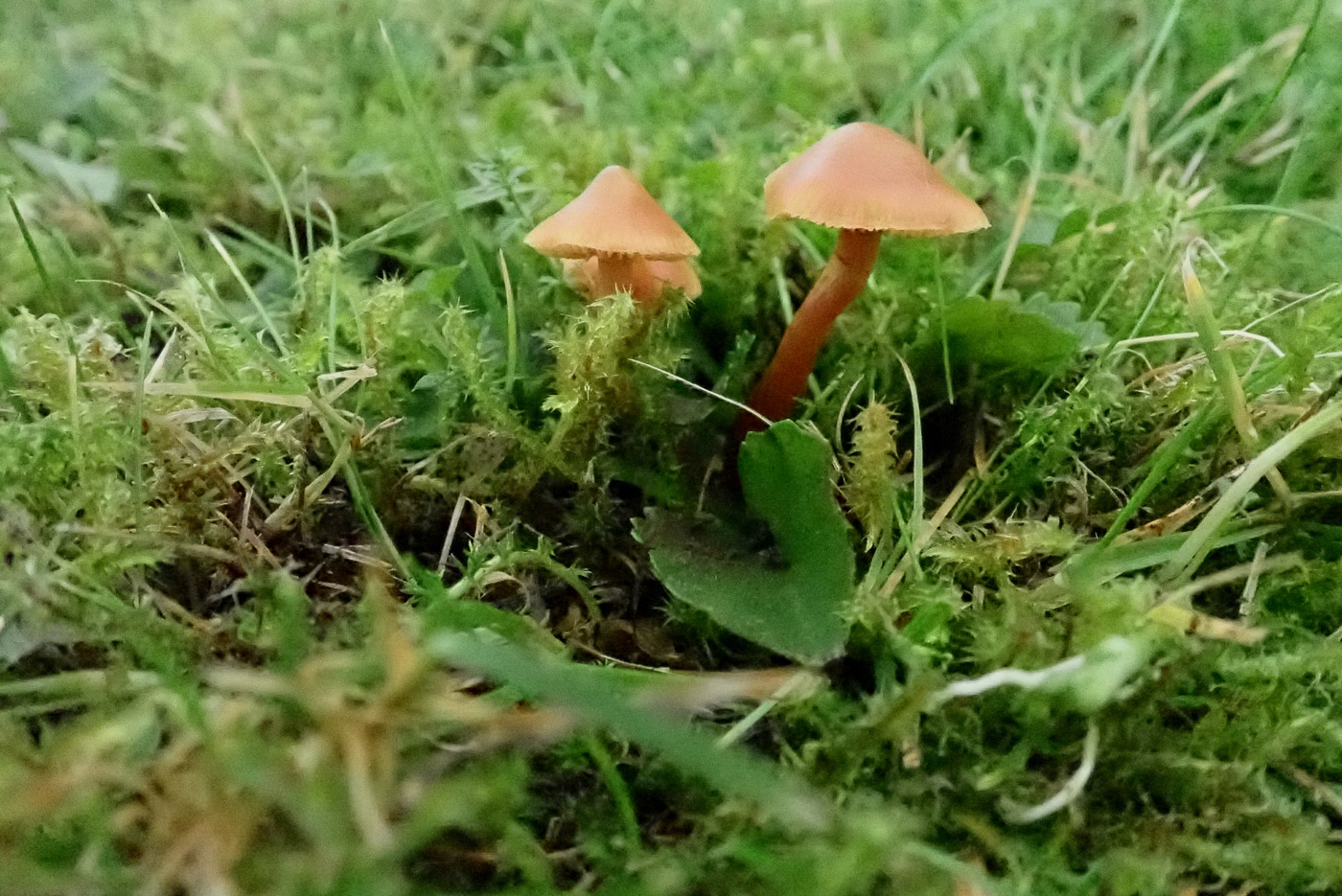
 |
November 18th Galerina pseudomycenopsis (a rare species of Bell with no common name) 
In Bradenham Churchyard Penny noticed some small bright brown LBJs in short grass, took photos and collected them to work on at home. The microscopic characters together with the signs of ring zone on the stem led her to the lengthy keys for the genus Galerina and eventually to a name she'd never heard of! Doubting if the species was even British and therefore wondering where she'd gone wrong, she then discovered just 38 British records with one from 1926 from Penn Street (so presumably from the cricket pitch there) by the famous mycologist EJH Corner! The collection will be dried and sequenced to confirm.
|
 |
November 18th Agaricus impudicus (Tufted Wood Mushroom)
In Bradenham Churchyard Penny found a few of this quite common species of Mushroom, one which at first glance looks like A. sylvaticus (Blushing Wood Mushroom) ie having brown scales on the cap and a solid pendant ring on the stem. However, unlike that species, when the cap is scratched it fails to turn red, the flesh remaining white. It also has a faintly rubbery smell and unlike the other Wood Mushrooms is not a good one to eat.
|
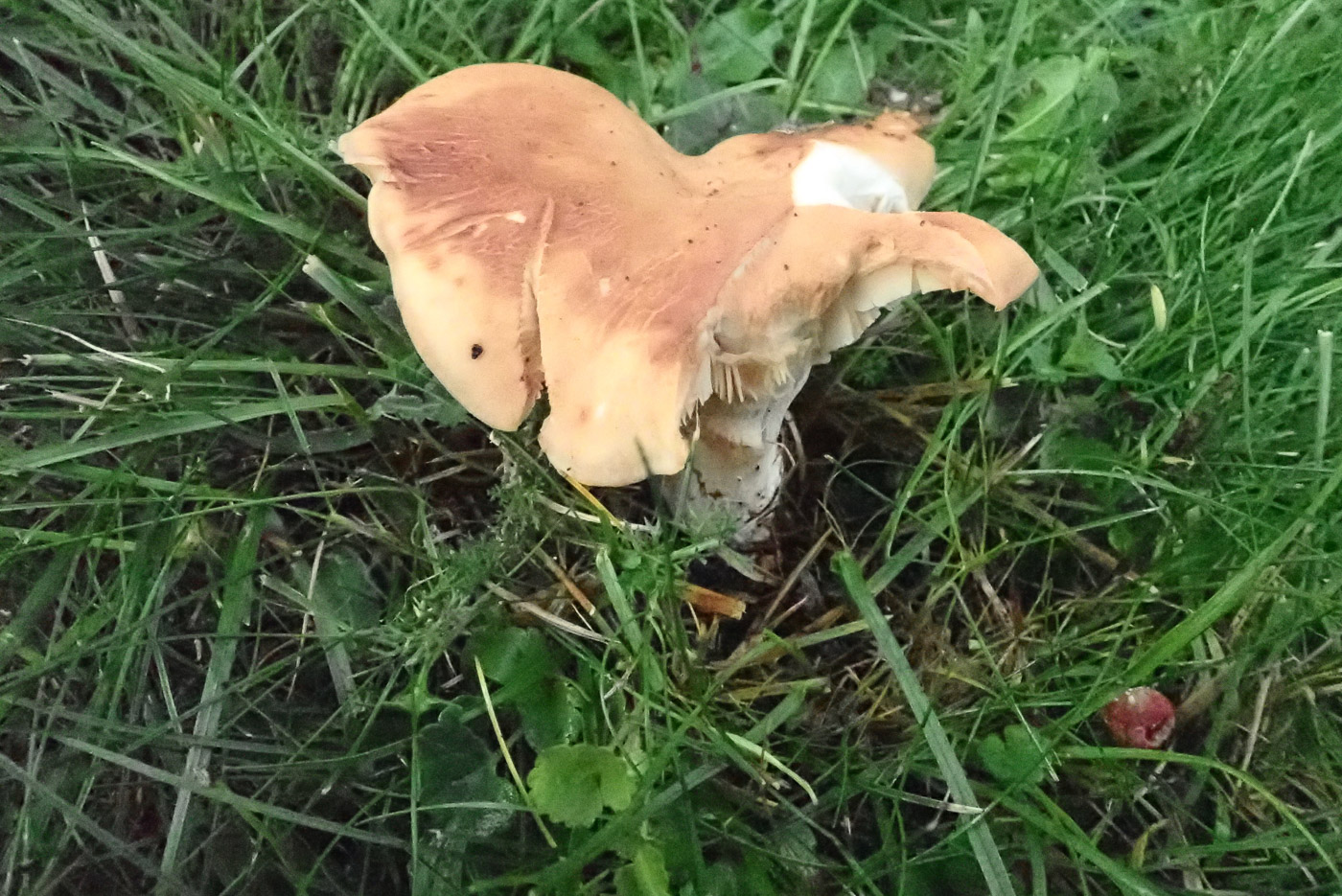
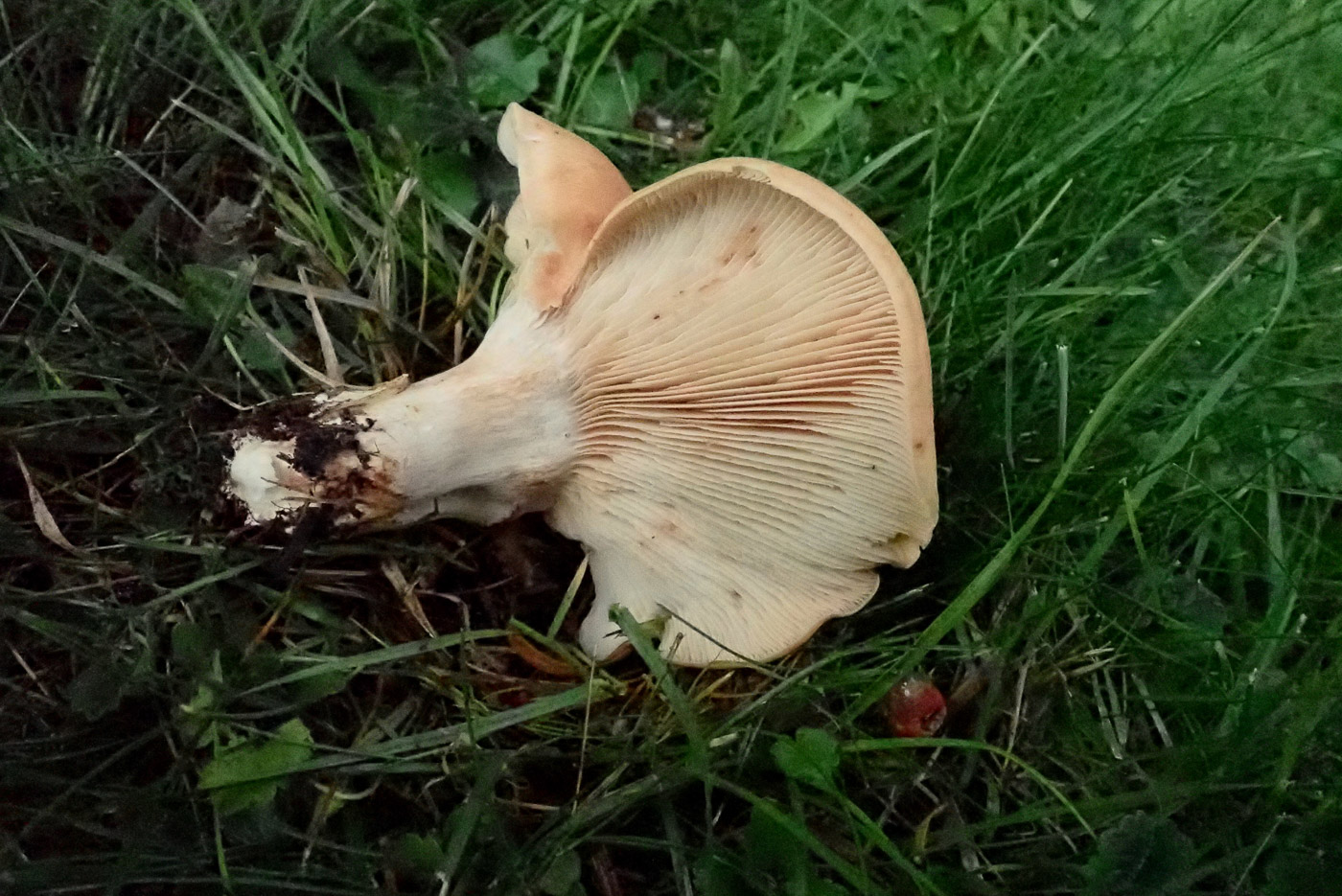
 |
November 18th Rhodocybe gemina (Tan Pinkgill) 
In Bradenham Churchyard Penny at first found this singleton under Yew (photos 1 and 2) but then under another Yew found several more though the darker cap colour made her doubt if it was the same species (photo 3). At home the microscopic features were identical and matched this quite unusual and chunky mushroom, considered an occasional fruiter and one which Penny had found here last year. See also notes and photo dated Oct 14th.
|
 |
November 18th Lepista sordida (Lepista sordida)
In Bradenham Churchyard Penny found several clusters of this small and rather thin fleshed Blewit which often seems to cause confusion in the field. It is like a smaller version of the familiar L. nuda (Wood Blewit), rather drab and dull in comparison but usually with lilaceous tints either in cap or gills, though it lacks the bright brown which caps of its larger relative tend to develop at maturity.
|
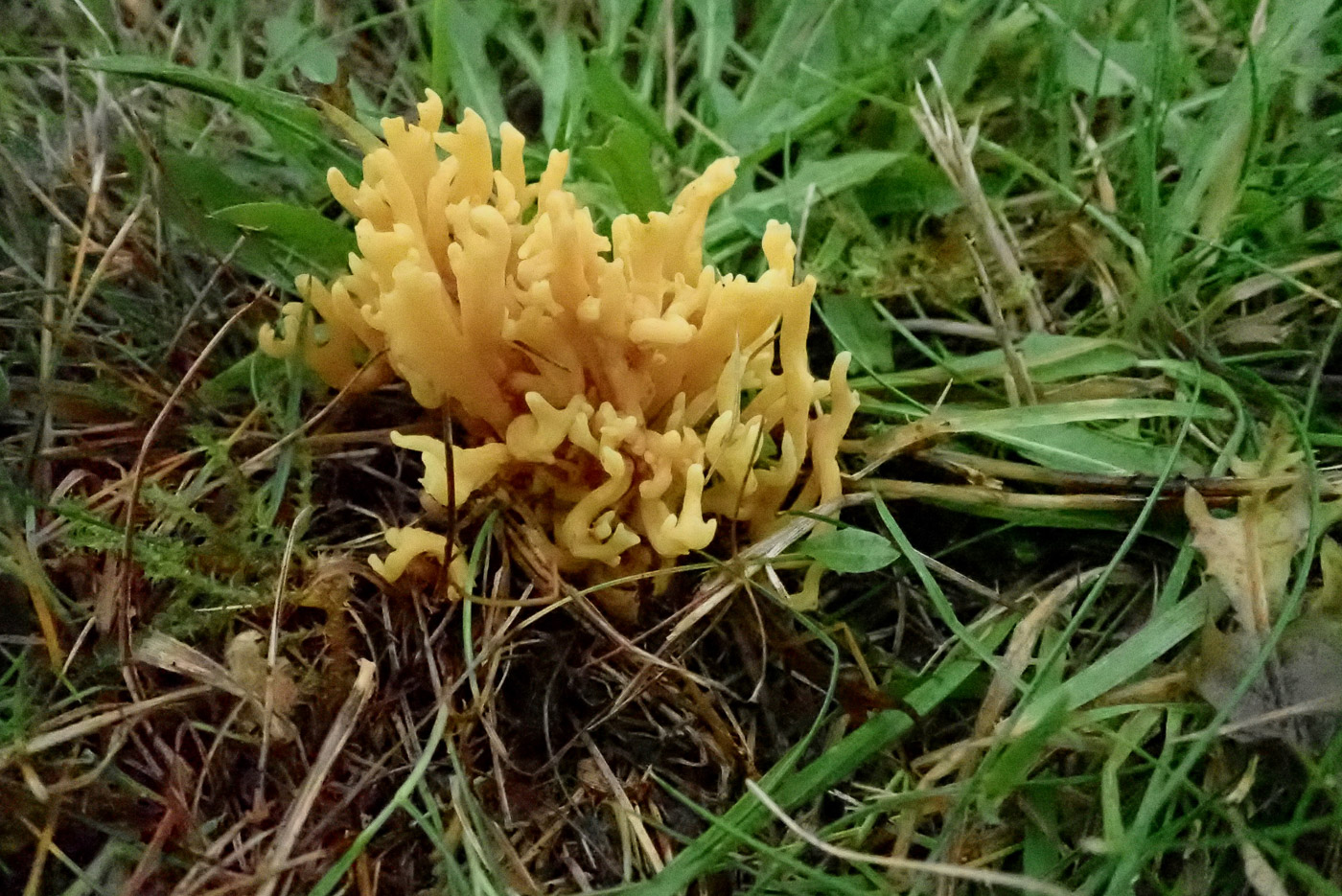
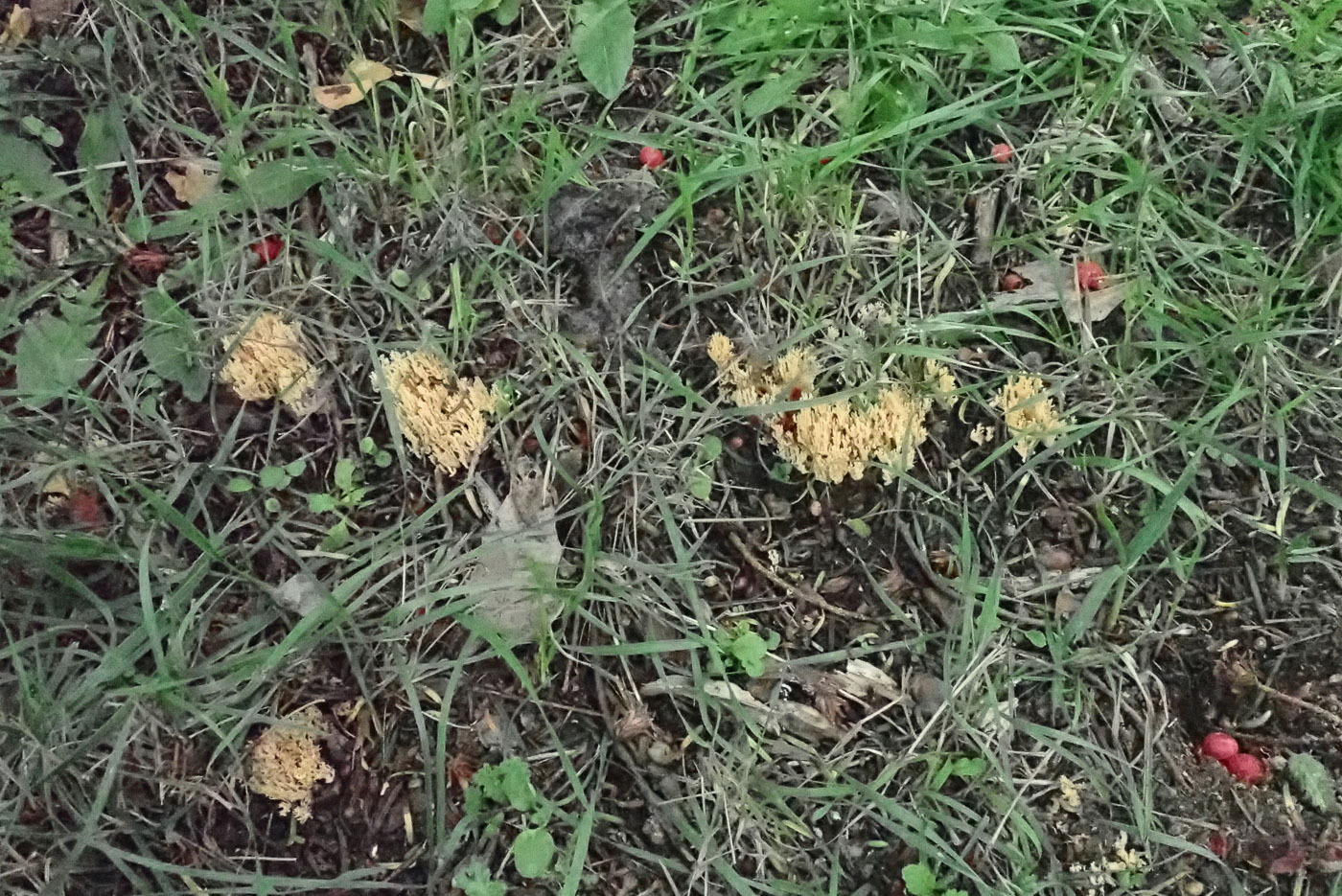 |
November 18th Clavulinopsis corniculata (Meadow coral)
In Bradenham Churchyard Penny found first one clump of this distinctive Club in grass and then under Yew several more. Unlike other members of this genus which need a scope to name to species, this one with its low habit and forming tight curly clusters is probably the easiest one to recognise.
|
November 17th 2021
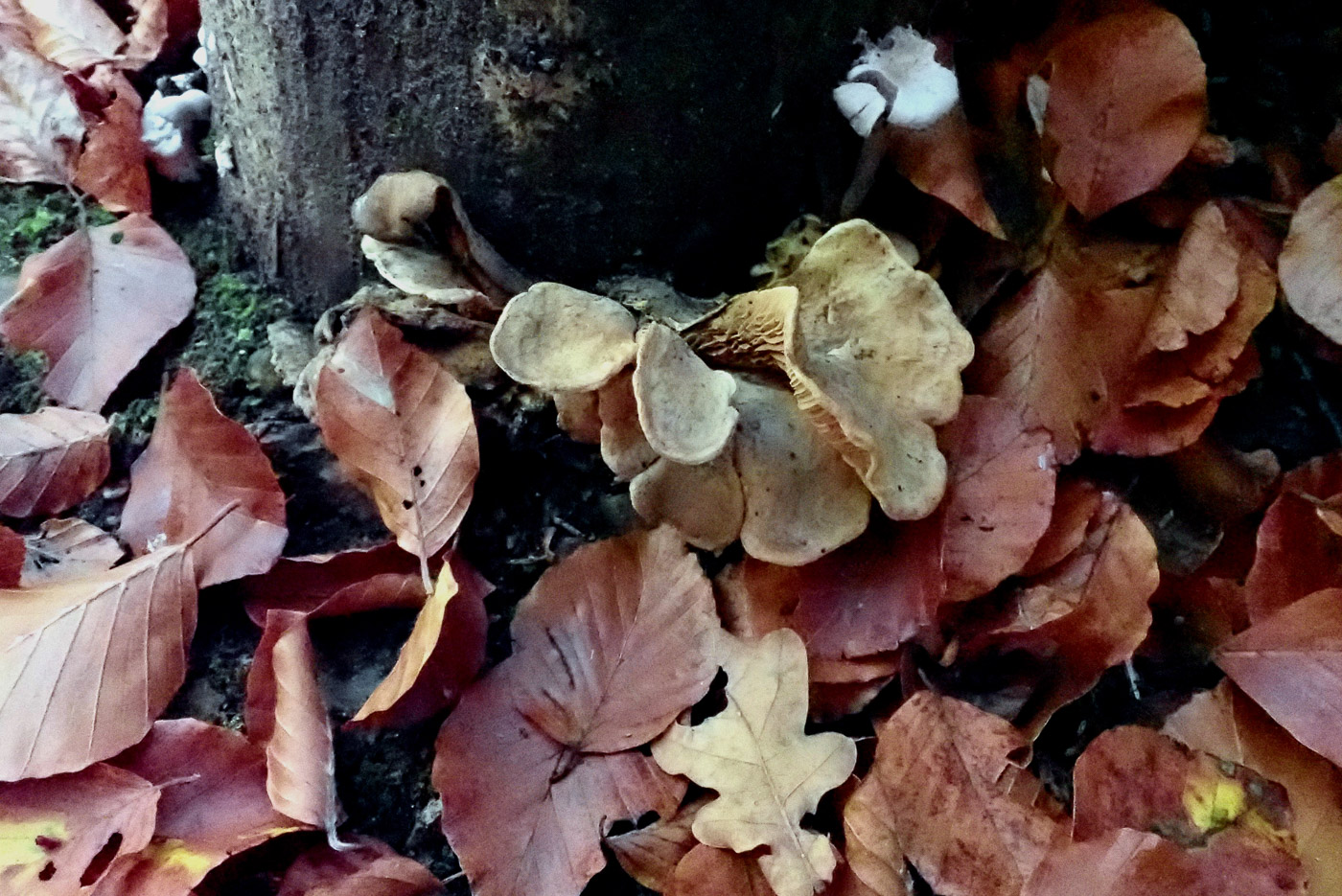
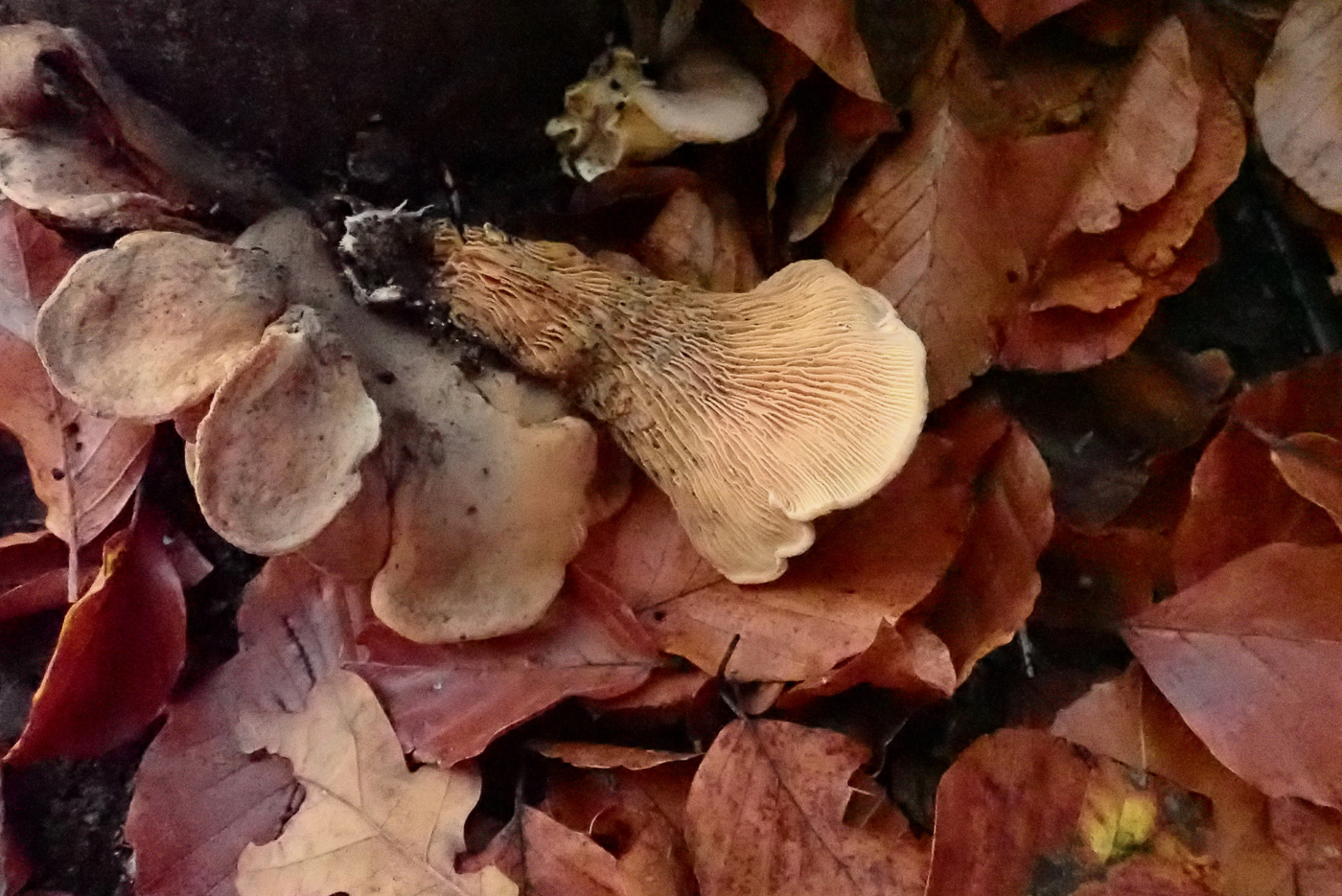 |
November 17th Tapinella panuoides (Oyster Rollrim)
In Pullingshill Wood Penny checked a stump near the parking spot where back in October she'd found this unusual species, and found it was still fruiting there though was now much more mature. (See also notes and photos dated Oct 15th). The common name is a good one, the species being closely related to Paxillus involutus (Brown Rollrim) but shaped like a Pleurotus (Oyster Mushroom).
|

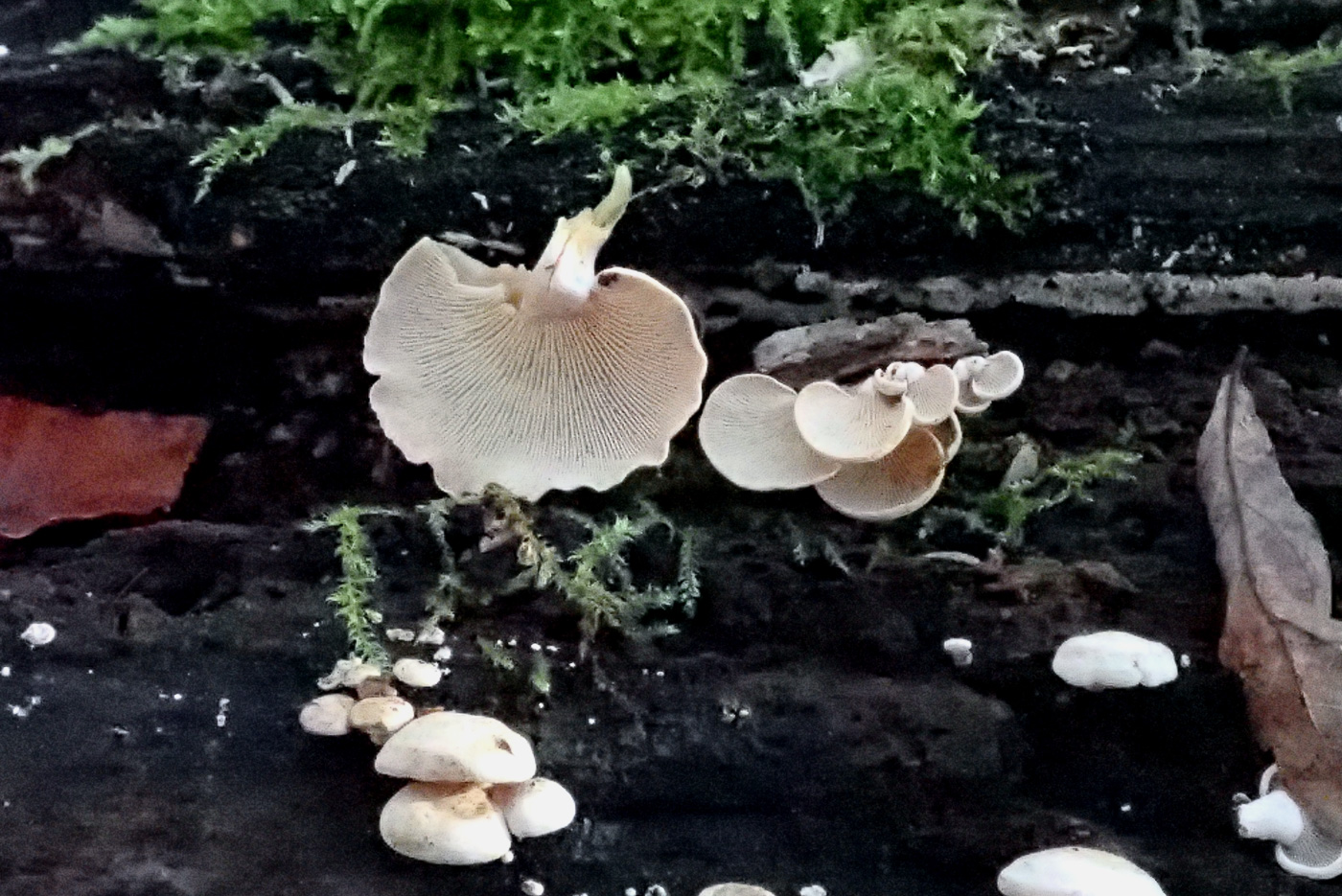 |
November 17th Panellus stipticus (Bitter Oysterling)
On a bare felled Beech trunk in Pullingshill Wood Penny noticed this large cluster of small caps looking similar to the genus Crepidotus (also named Oysterlings). The caps were not white, however, but beige and peeling one off revealed brown gills underneath with an eccentric stem (one at the side of the cap, not the centre). A good character to confirm this quite common and pretty little species is the slightly sticky gill surface. Pinch a cap firmly between thumb and finger, then put your thumb and finger together (without the mushroom in between!) and they tend to slightly resist separation - tacky.
|
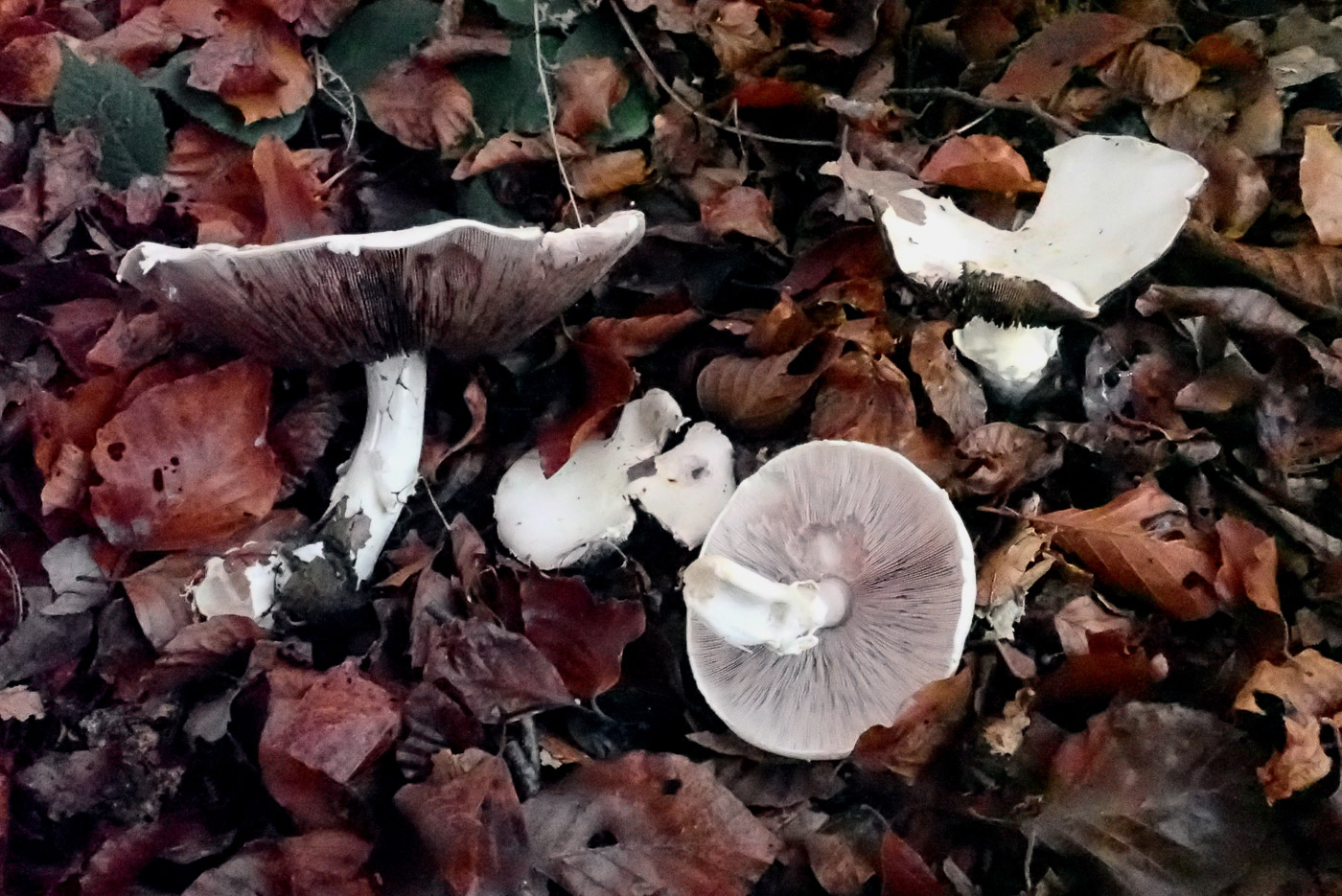 |
November 17th Agaricus sylvicola (Wood Mushroom)
In thick Beech litter in Pullingshill Wood Penny noticed this cluster of white capped mushrooms, the largest being about 13 cm across. As its common name suggests, this is a purely woodland Agaricus and has a smooth white cap which tends to stain yellow where damaged (but not bright chrome at the stem base as in A. xanthodermus!). The gills are pale greyish pink at first, not bright pink as in some species, and it has a pleasant smell of aniseed.
|
 |
November 17th Xenasmatella vaga (Yellow Cobweb)
Penny noticed this quite common yellow Corticioid species half submerged and running along the bottom of a fallen bare Beech log at Pullingshill Wood. There are very few such species one can confidently name in the field, the vast majority needing identification at home with a scope. However, this one is quite distinctive with its yellow fibrous feathery fanned edge - nothing else looks quite like it. It is better known by various previous names: Phlebiella sulphurea or Trechispora vaga.
|
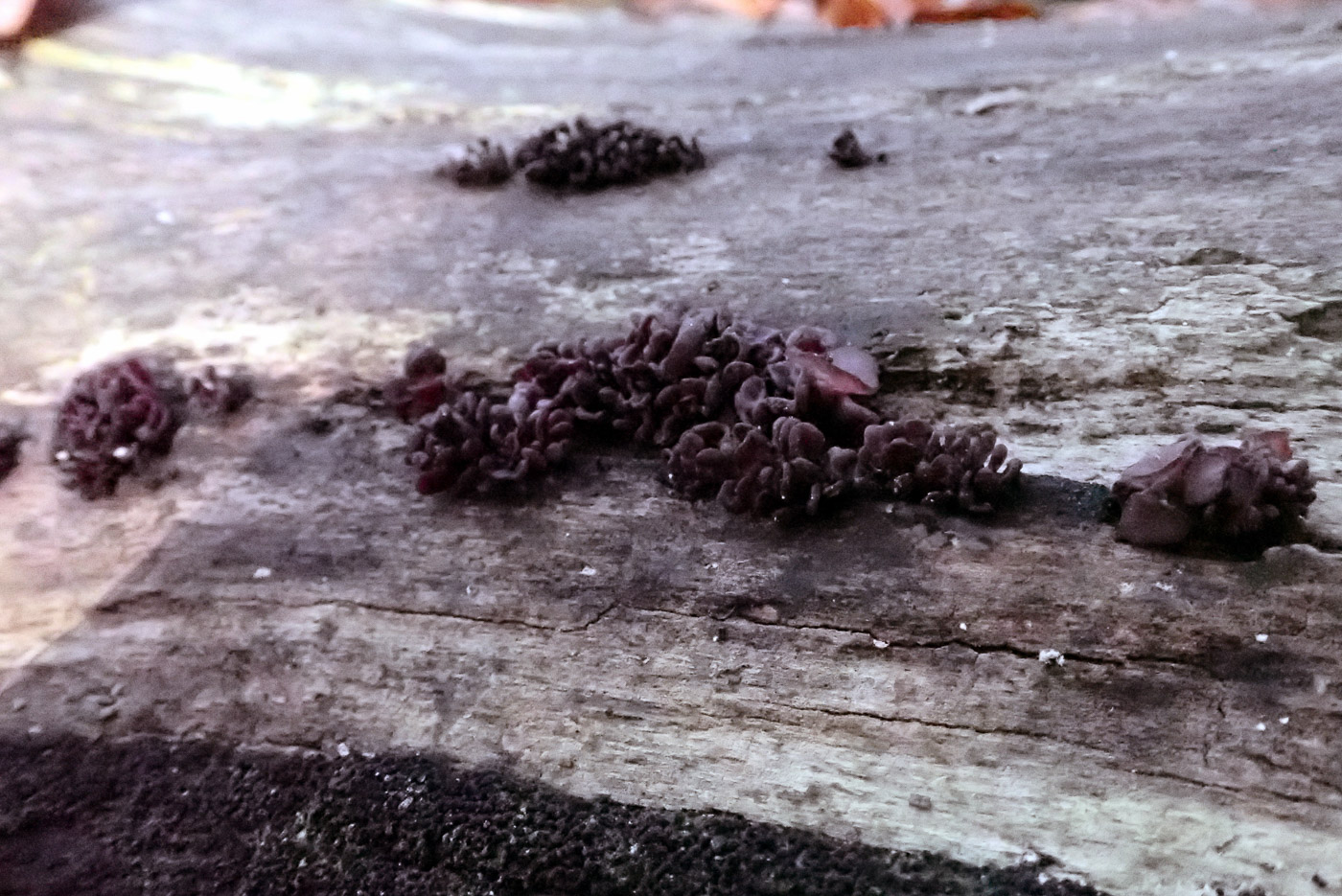
 |
November 17th Ascocoryne sarcoides (Purple Jellydisc)
On a bare Beech trunk in Pullingshill Wood Penny noticed quantities of this small Ascomycete bubbling up through the surface. Its common name describes the colour and the texture well, but do not confuse with Neobulgaria pura (Beech Jellydisc)! Both occur on Beech (though A. sarcoides can also be found on other deciduous woods) and have a gelatinous texture, but N. pura is much paler - never as dark and normally some shade of pink - and is also larger. (See dated Aug 23rd and Oct 5th for comparison).
|
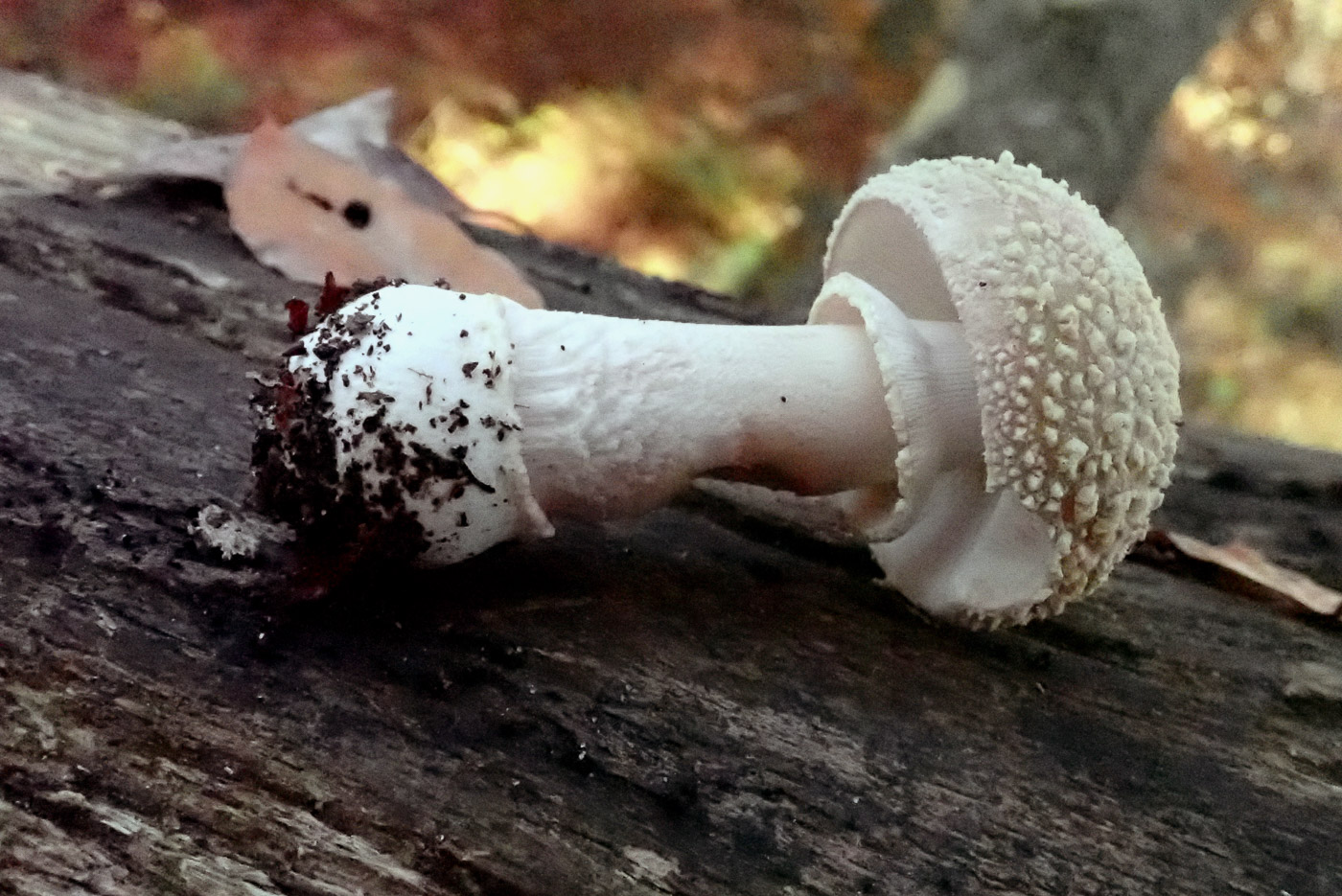

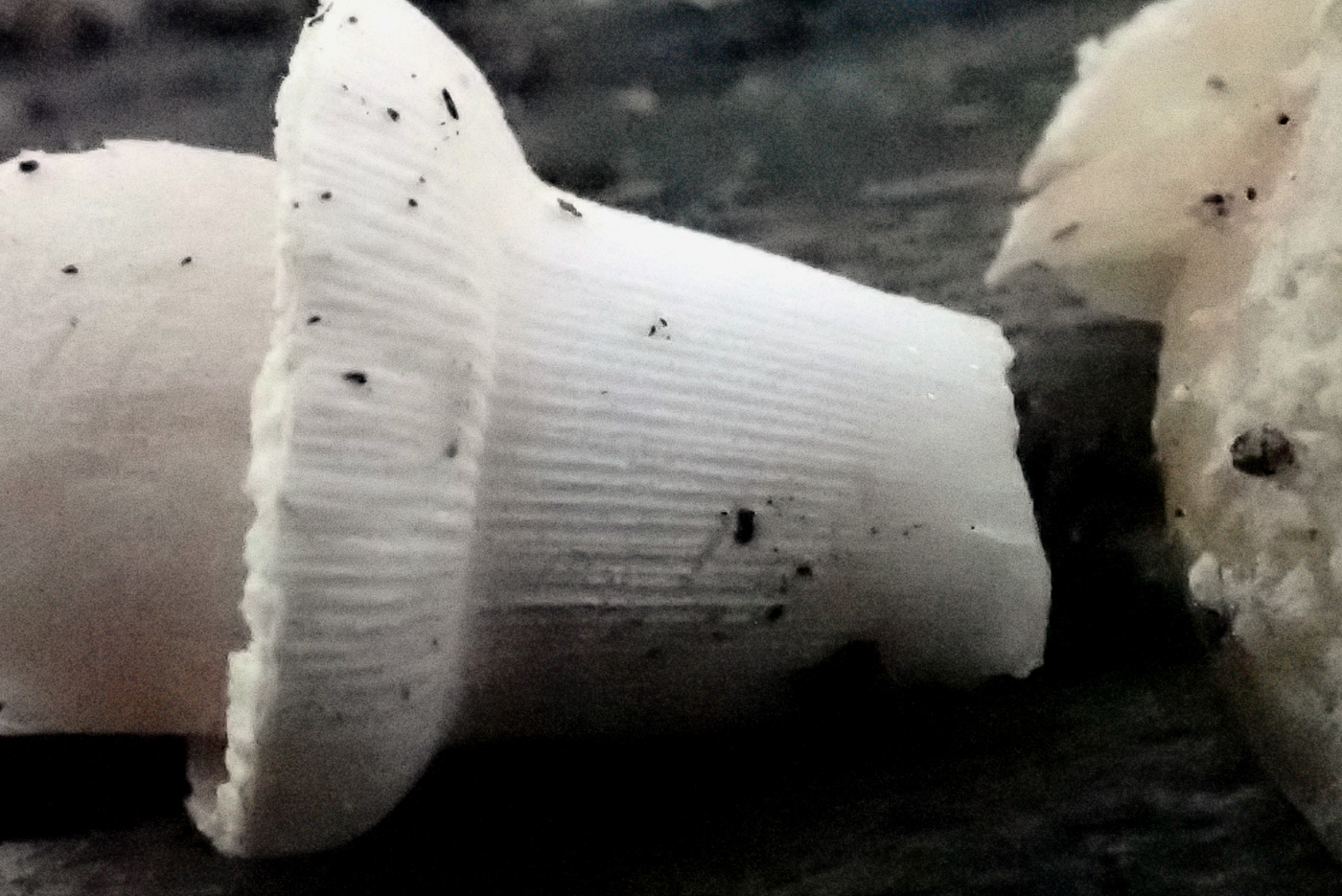 |
November 17th Amanita rubescens (Blusher)
In Pullingshill Wood Penny was surprised to find this almost perfect and fresh specimen of a species normally fruiting mainly from July to September! Unfortunately as she was about to take a close-up of the ring and gills it rolled off the trunk where she'd placed it and smashed! Nevertheless, photo 3 still shows an interesting feature of the species not often noticed: the upper ring and stem above it have distinct striations caused when the young gills are compressed against it before expansion starts. This also occurs in Amanita excelsa (Grey-spotted Amanita) but not in A. pantherina (Panthercap) and is a useful way to separate those two species which often cause confusion.
|
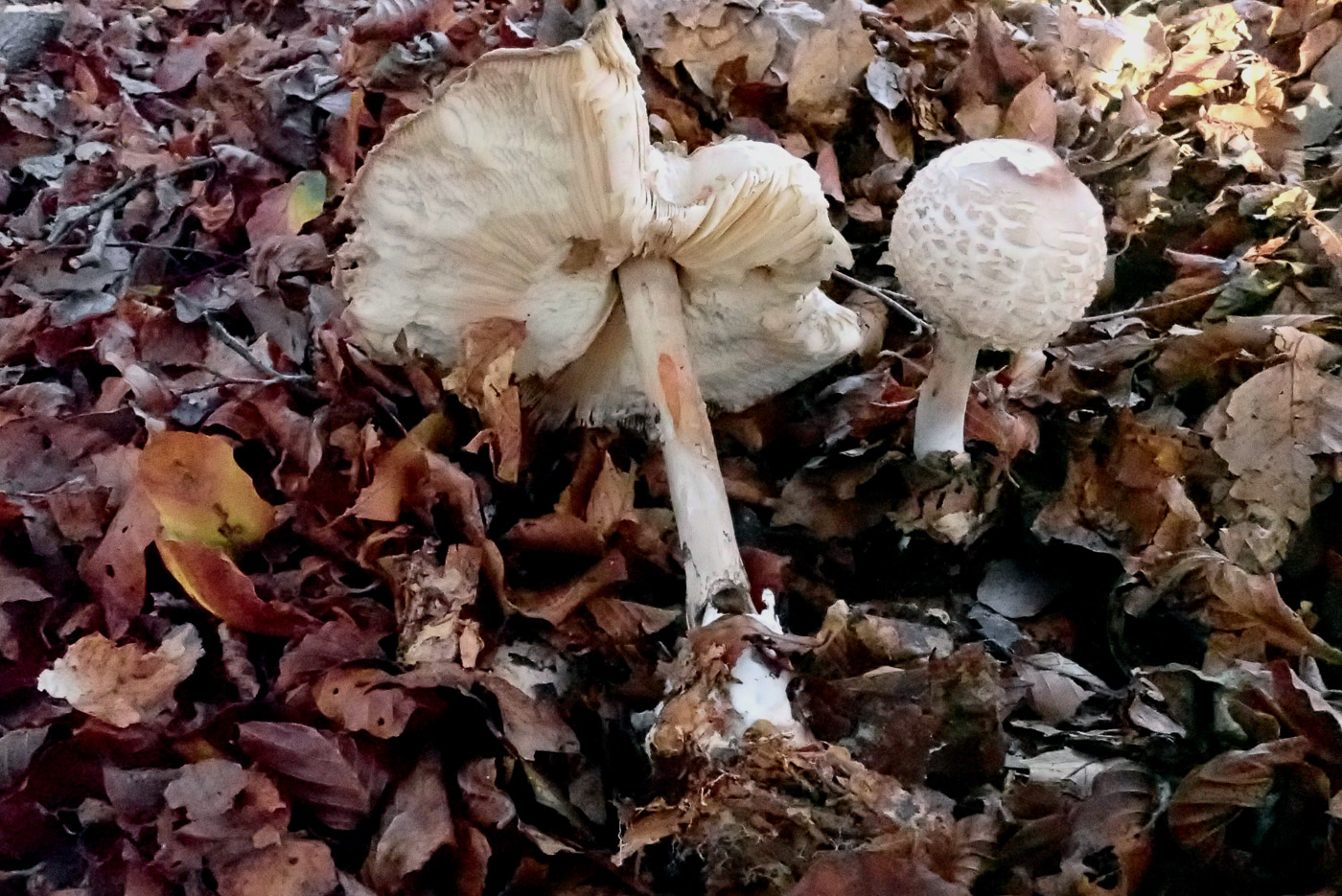

 |
November 17th Chlorophyllum rhacodes (Shaggy Parasol)
At Pullingshill Wood this tall species was big enough to catch Penny's eye above the thick Beech litter, and surprisingly is one not yet included in Finds Jul-Dec. Having recently been told how ill eating a small amount of this mushroom had made an inexperienced collector who mistook it for the true Parasol, Penny felt it well worth pointing out the salient features to help recognise it. Note the white stem (with no brown snakeskin markings) which has already stained orange where Penny scratched it (photo 1). Note also the orange staining in the broken cap flesh - this starts to develop in just a few seconds when fresh as here (photo 3). You have been warned!
|

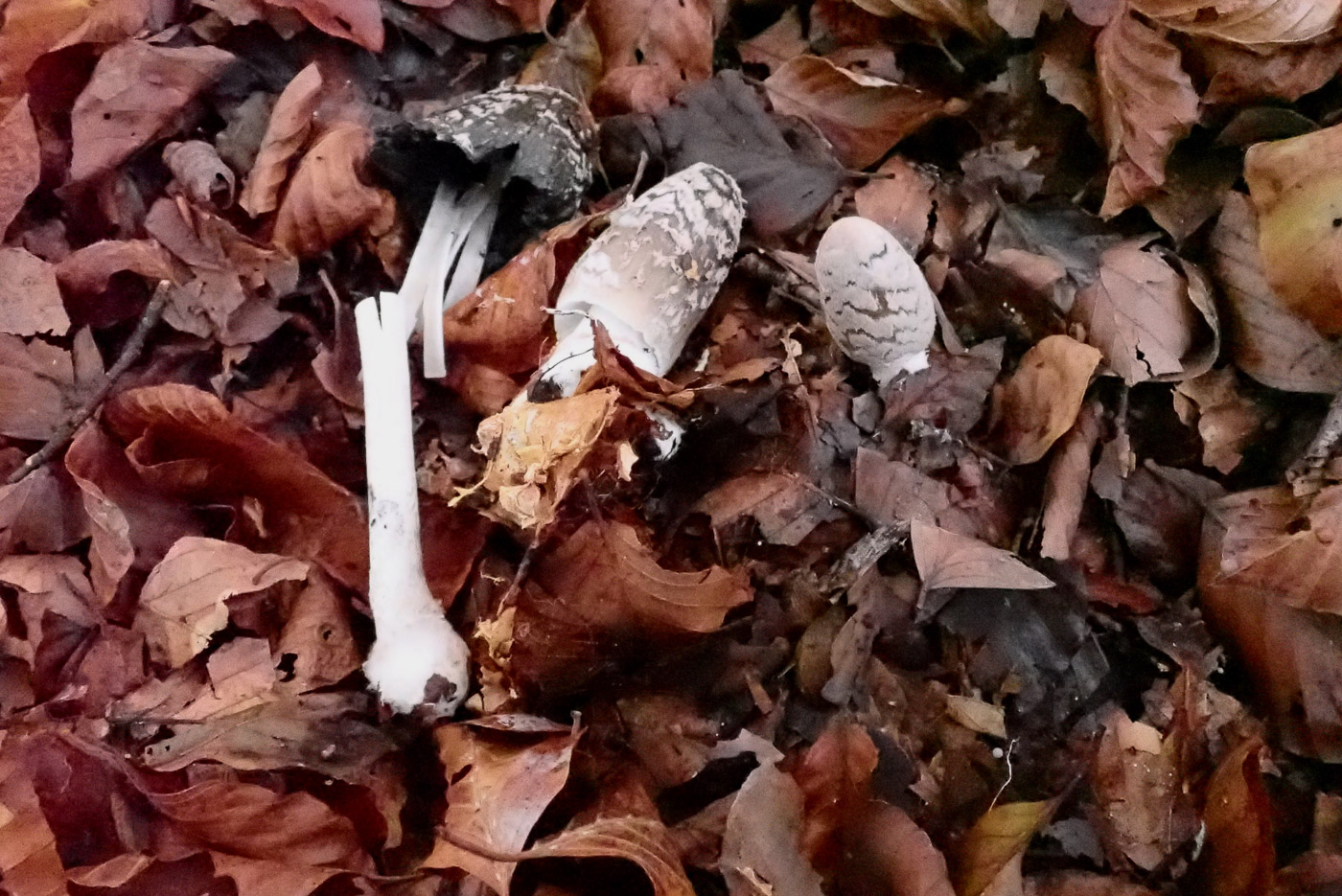
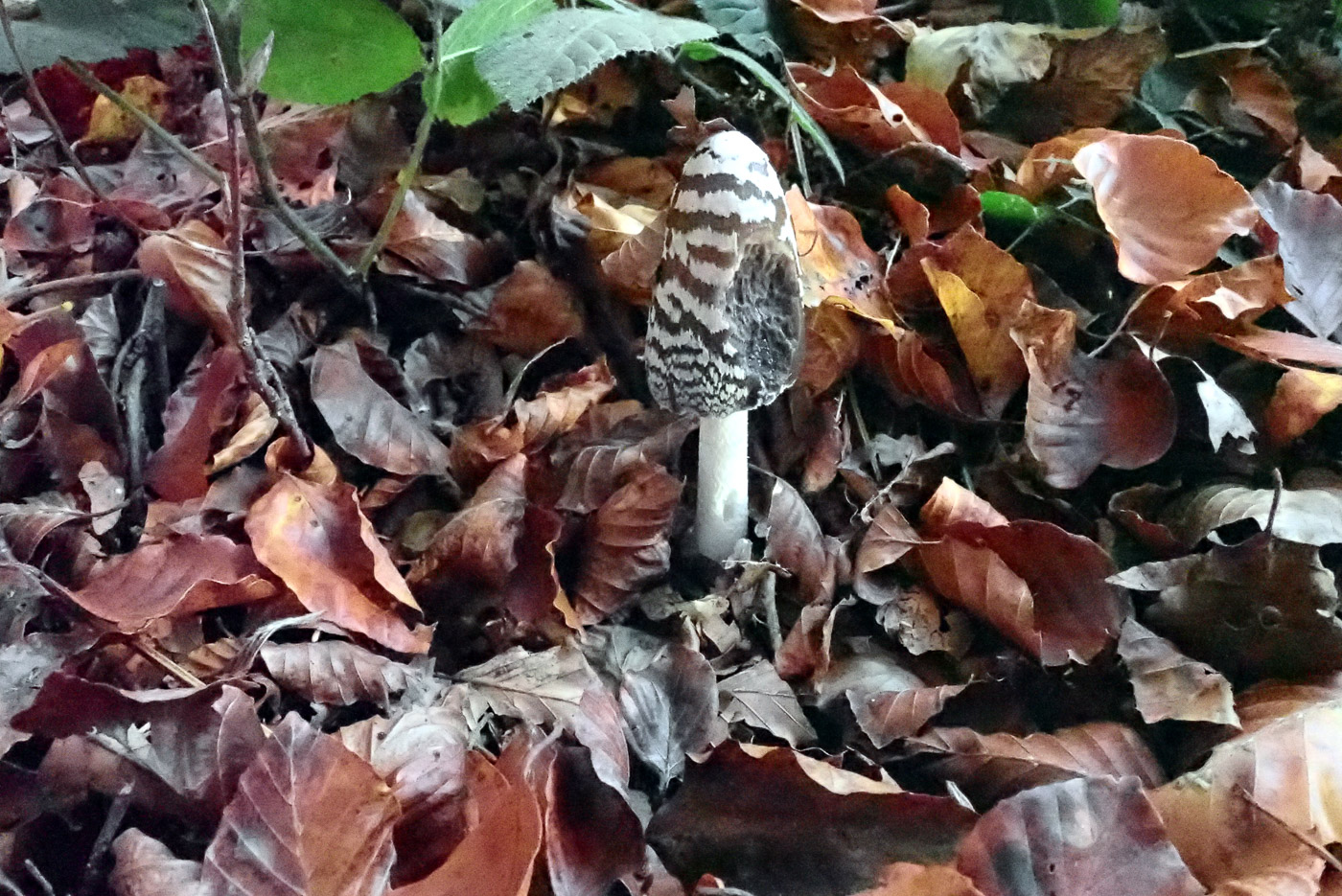 |
November 17th Coprinopsis picacea (Magpie Inkcap)
At Pullingshill Wood Penny noticed this tall mushroom extending well above the thick leaf litter, though well past its sell-by date. She then managed to uncover some younger specimens nearby which give a better idea of this impressive but shortlived mushroom. Note the thick bulb at the stem base, an unusual feature for an Inkcap. It also develops a very unpleasant smell! This is a mushroom of calcareous Beech woodland and in some years is really common (notably last year) but has not been so prevalent this season.
|
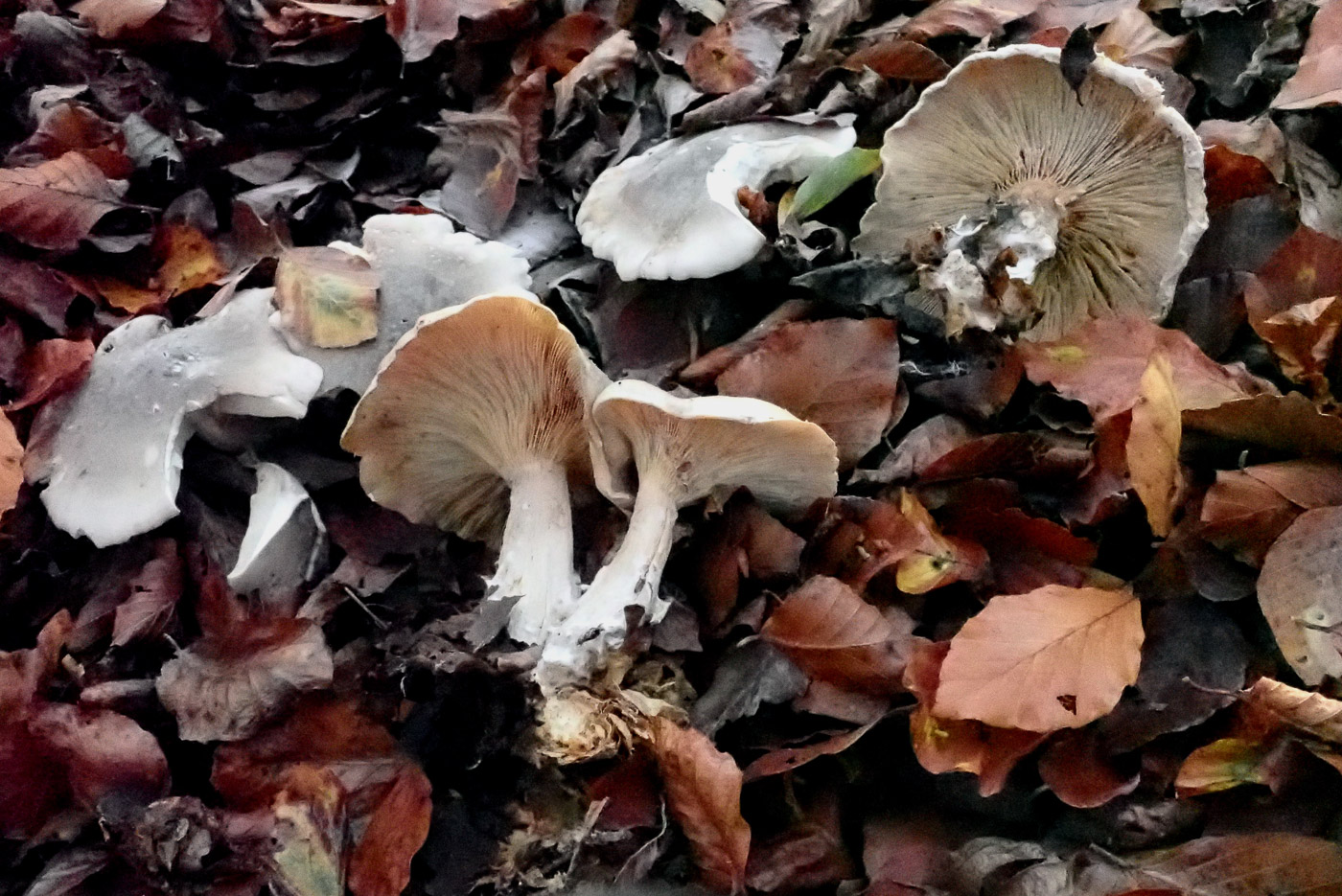
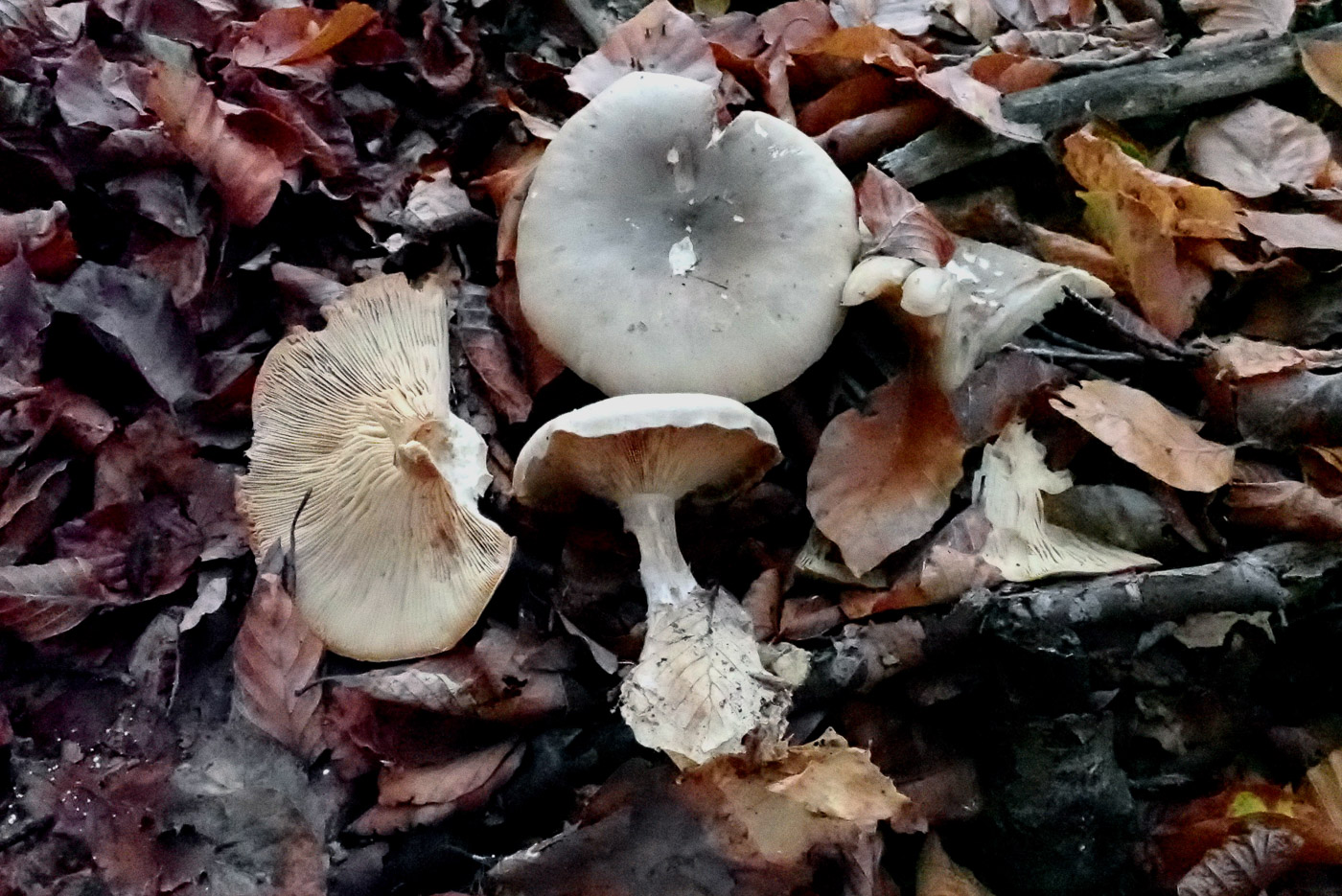 |
November 17th Clitocybe nebularis (Clouded Funnel)
At Pullingshill Wood Penny came across many clumps of this very common species just visible above the thick layer of Beech leaves which restricted much else from being seen. The strongly decurrent cream gills together with the cream to grey tones in the very large and wavy mature caps were diagnostic though its distinctive fruity smell had long since changed into something less pleasant! Identifying even common species such as this can be a challenge this late in the season.
|
November 16th 2021
 |
November 16th Helvella lacunosa (Elfin Saddle)
In Beech litter at Ashridge Estate Richard Wright found this nice example of an Ascomycete species. Similar to H. crispa, also found today by Claire Williams, it is not only much darker, brownish to black, but tends to be more convoluted. Both species are quite common but this one is more frequently in woodland litter rather than grassy path edges.
|

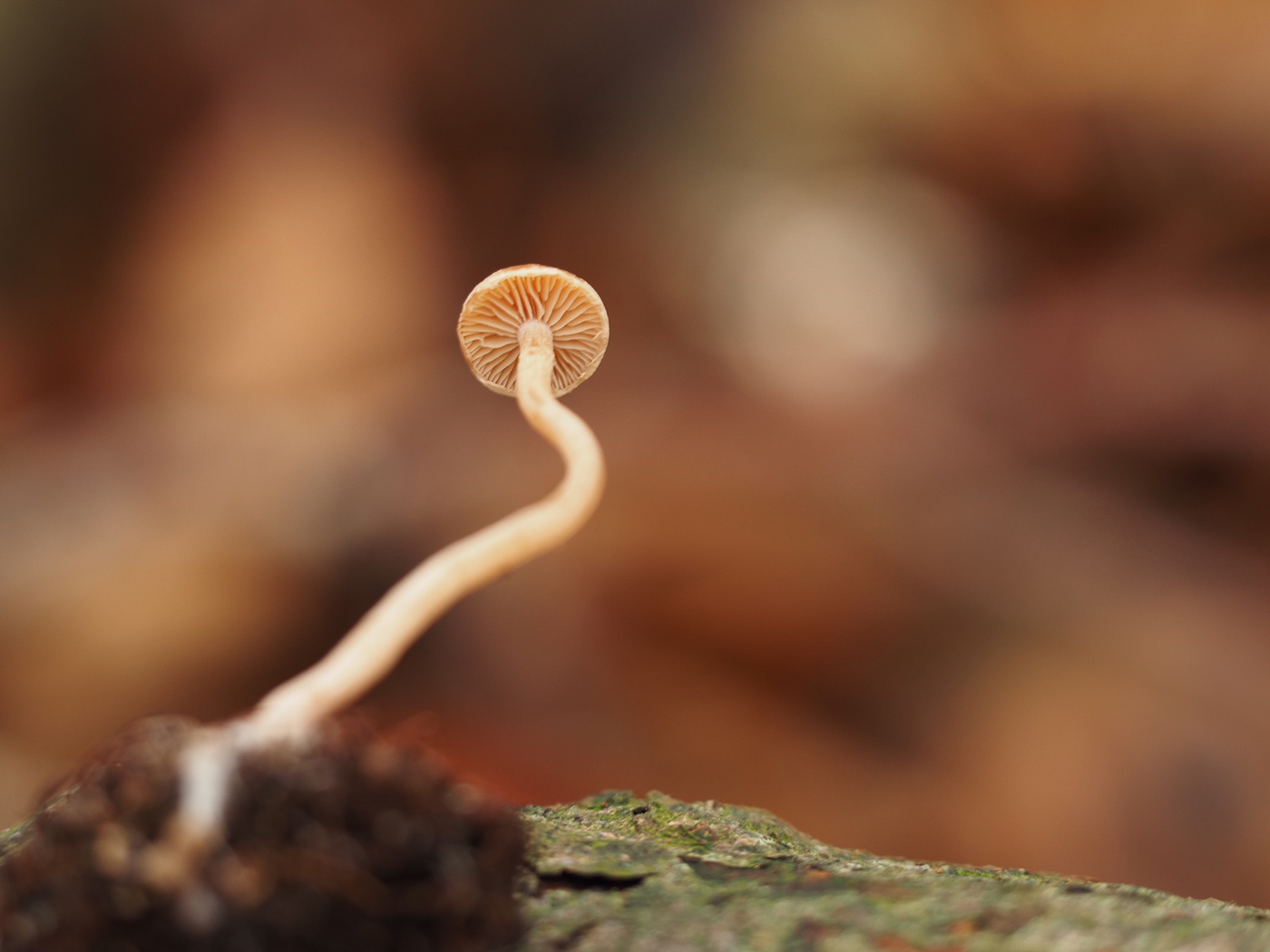 |
November 16th Flammulaster carpophilus (Leaf Spark)
On a Beech cupule in Piggots Wood Claire Williams noticed this tiny Mycenoid species and suspected it was something she'd not met before. It is in fact an unusual species Penny had been on the lookout for in Beech litter but had failed to find this year. The pale rusty gill colour tells one that it's not a Mycena (Bonnet), and it resembles a very small Tubaria (Twiglet) but has a long thin stem with a relatively small rounded granular cap. Though its common name implies it frequenting leaves, Penny has only found it on Beech cupules in this area which it seems to favour but it is never common and is easily overlooked.
|
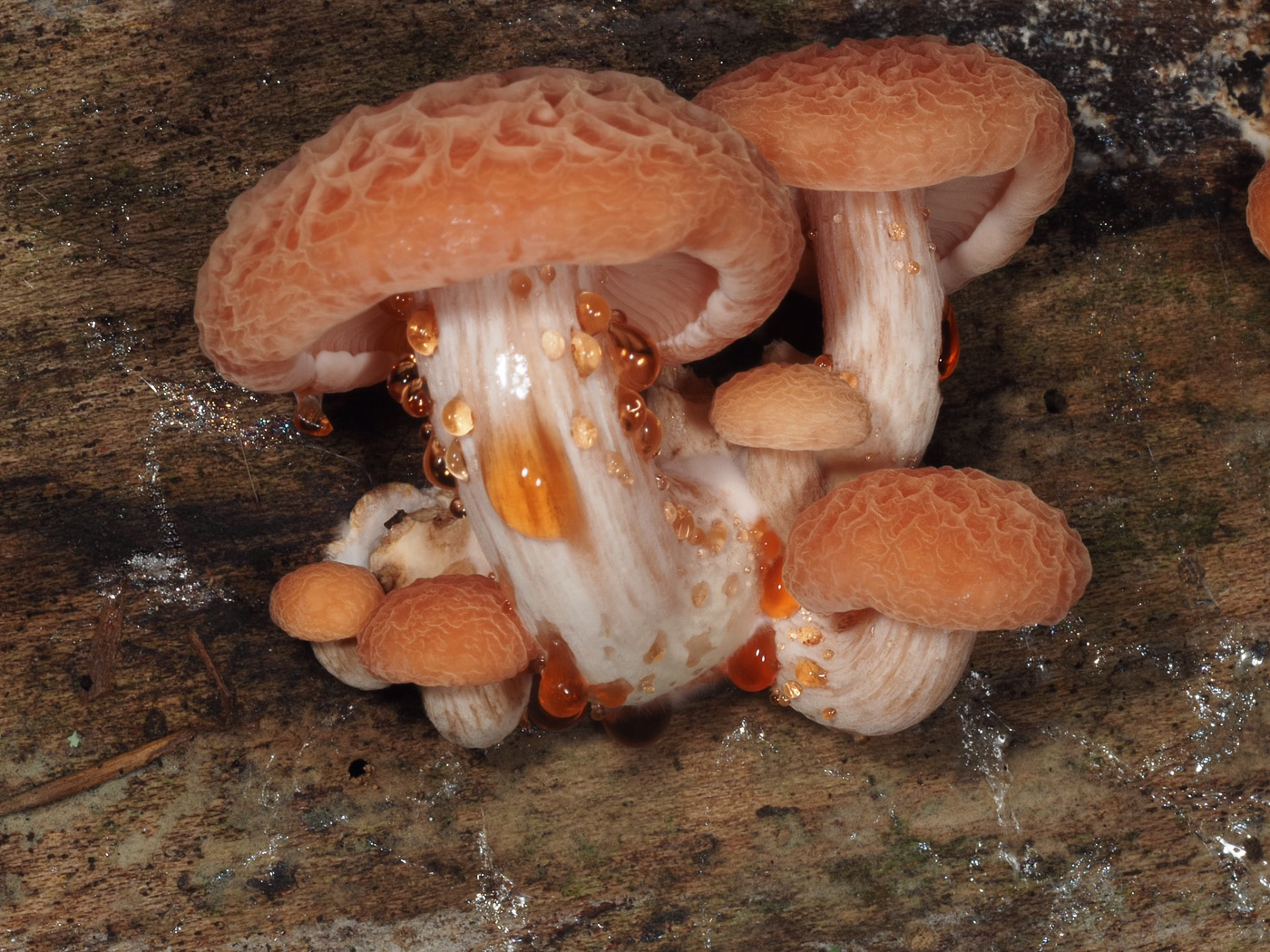 |
November 16th Rhodotus palmatus (Wrinkled Peach)
In Piggots Wood Claire Williams found this stunning cluster of an unusual species showing off all its attributes at their very best! The wrinkling on the top of the cap and the slightly ribbed stem with moisture droplets glistening make it unmistakeable. It favours fallen Elm / Wych Elm but is occasionally now found on other woods but is always a special thing to find. See also notes and photo dated Oct 1st.
|
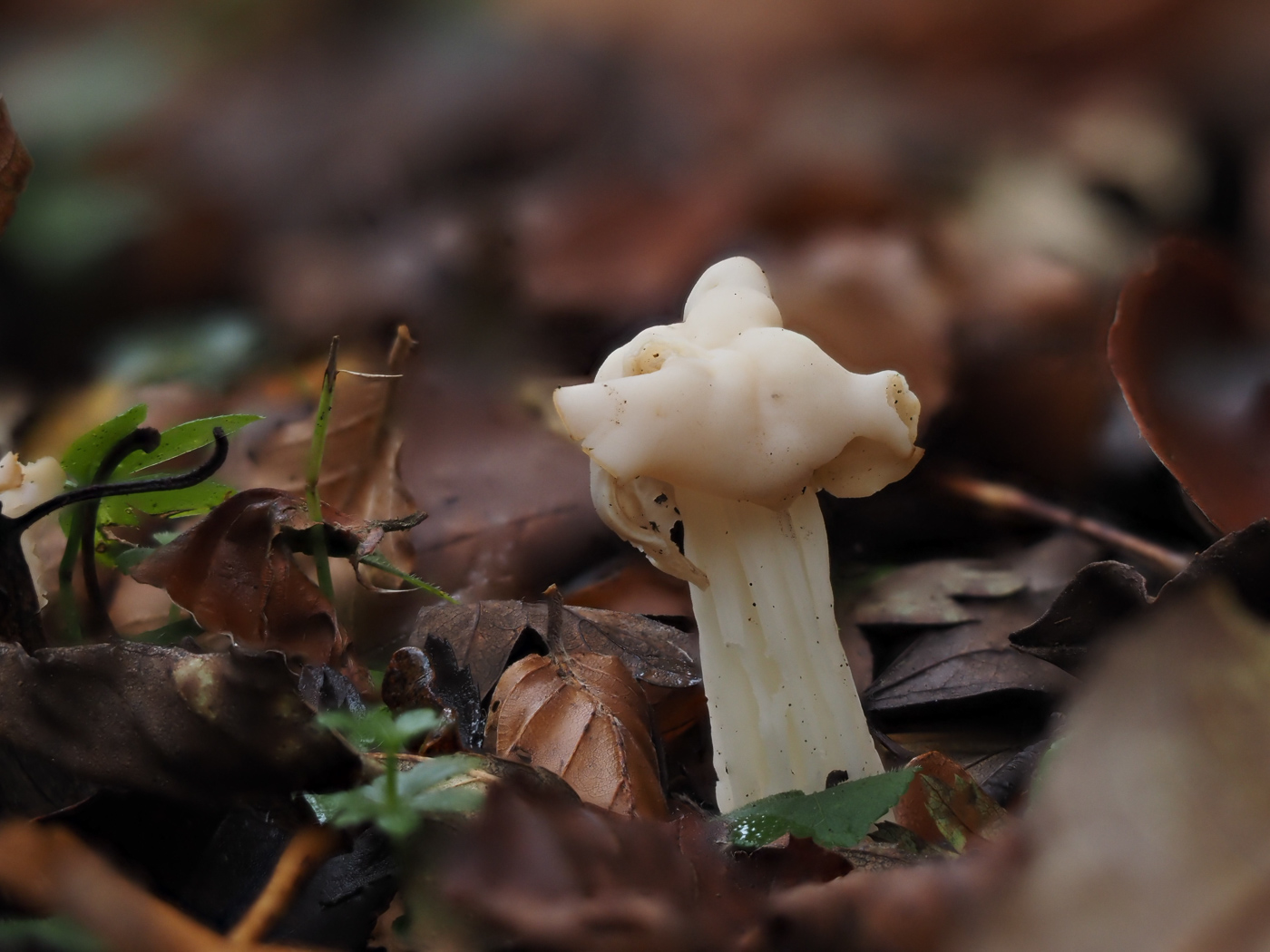 |
November 16th Helvella crispa (White Saddle)
In Piggots Wood Claire Williams found quite a few examples of this attractive and distinctive Ascomycete - one we've not yet included here. The stem is decidedly ribbed in contrast to the smooth but irregularly lobed 'saddle', the colour being white to cream, becoming more ochre with age. This is a common species often in grassy glades in woodland / path edges, and always nice to see.
|
November 13th 2021
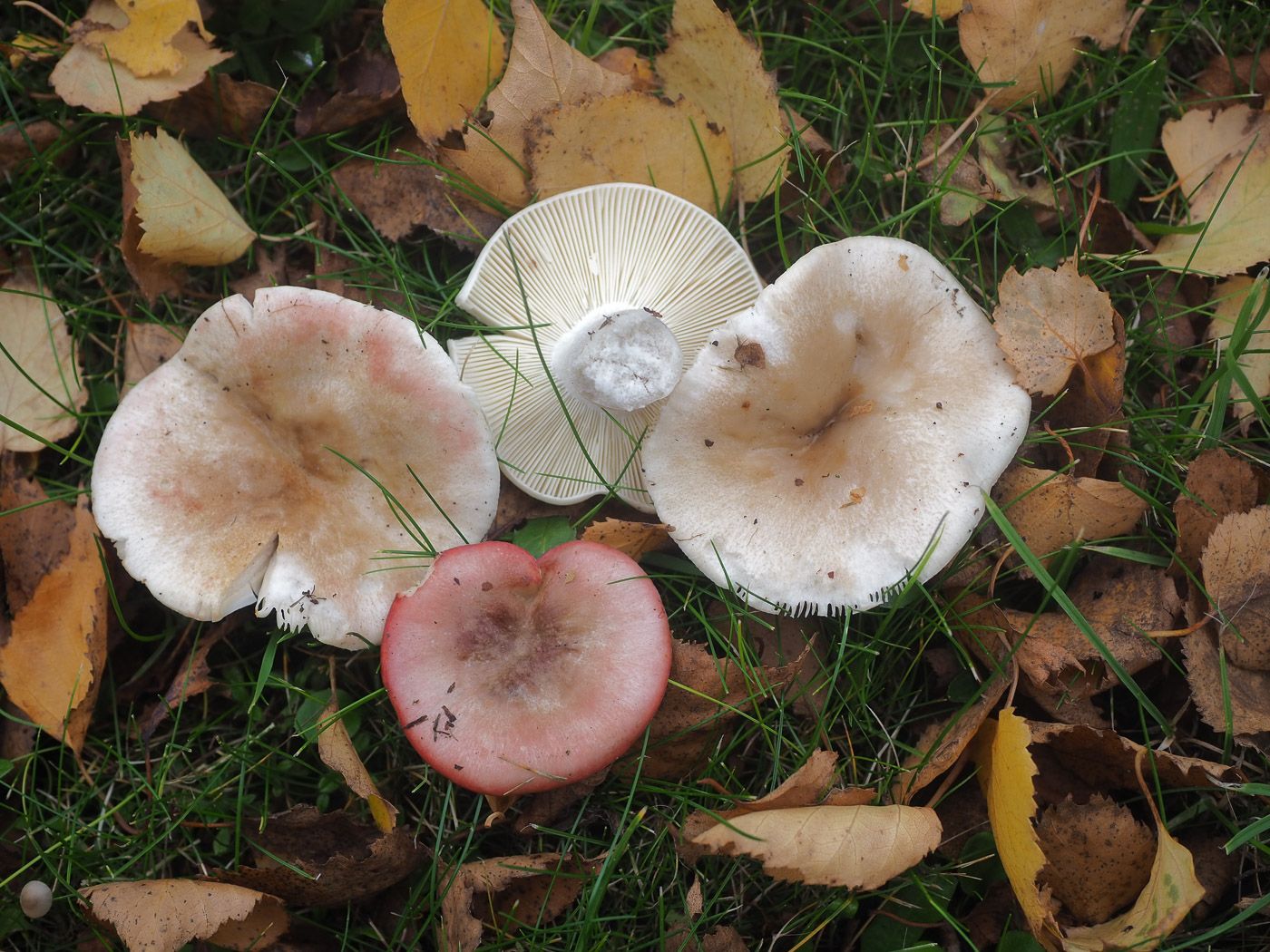 |
November 13th Russula exalbicans (Bleached Brittlegill)
In the Pastures, High Wycombe, John Catterson found this nice cluster of Brittlegills under Birch in grassy soil, then took them home and successfully identified them. Though described as quite a common species occurring under Birch, it does not turn up that often in the Chilterns and is typified by having a smooth pink cap which regularly fades to pale cream but often retains some pink around the rim. This is seen in one of the collection though mostly they've faded almost completely. Compared to R. betularum (Birch Brittlegill) - another pink species found under Birch, today's species is larger and much more substantial, its cap peeling to only half way. See R. betularum dated Nov 13th for further differences.
|
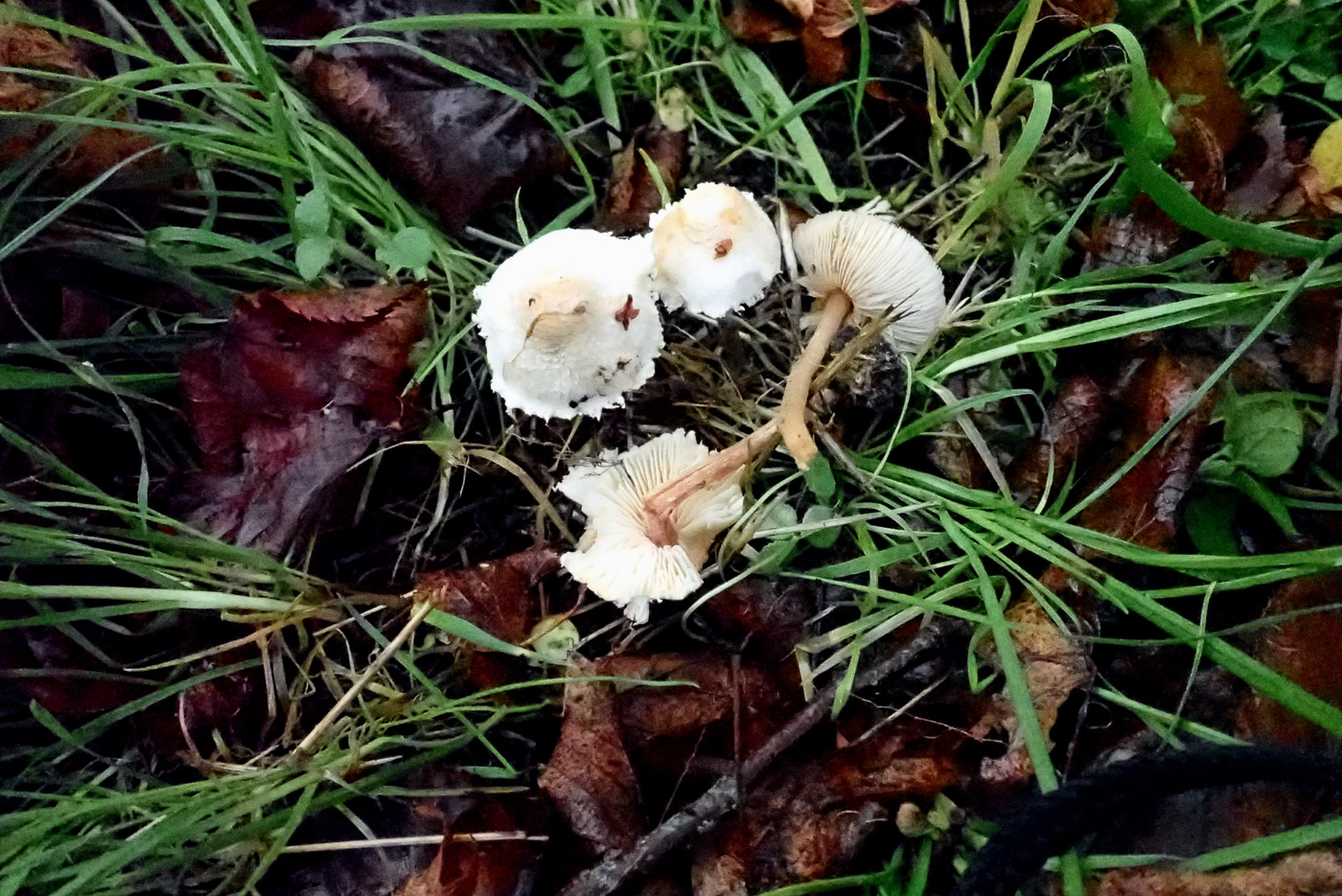 |
November 13th Lepiota subalba (a Dapperling with no common name) 
In the avenue of Limes at Turville Heath Penny noticed a white cap just visible amongst the thick fallen leaves and on investigating discovered not Inocybe geophylla as she expected but a small group of very pale Dapperlings. The caps were white apart from a slightly yellowish centre and the surface was flocculose, especially around the margin. The gills were free and white and the stem also was floccose though with no apparent ring. On collecting she noted the lack of the unpleasant 'cristata' smell present in Stinking Dapperling and also several other species, and at home this keyed out to L. subalba, described as occasional in calcareous woodland. We appear to have no previous county records though Penny has found it at nearby Watlington Hill.
|
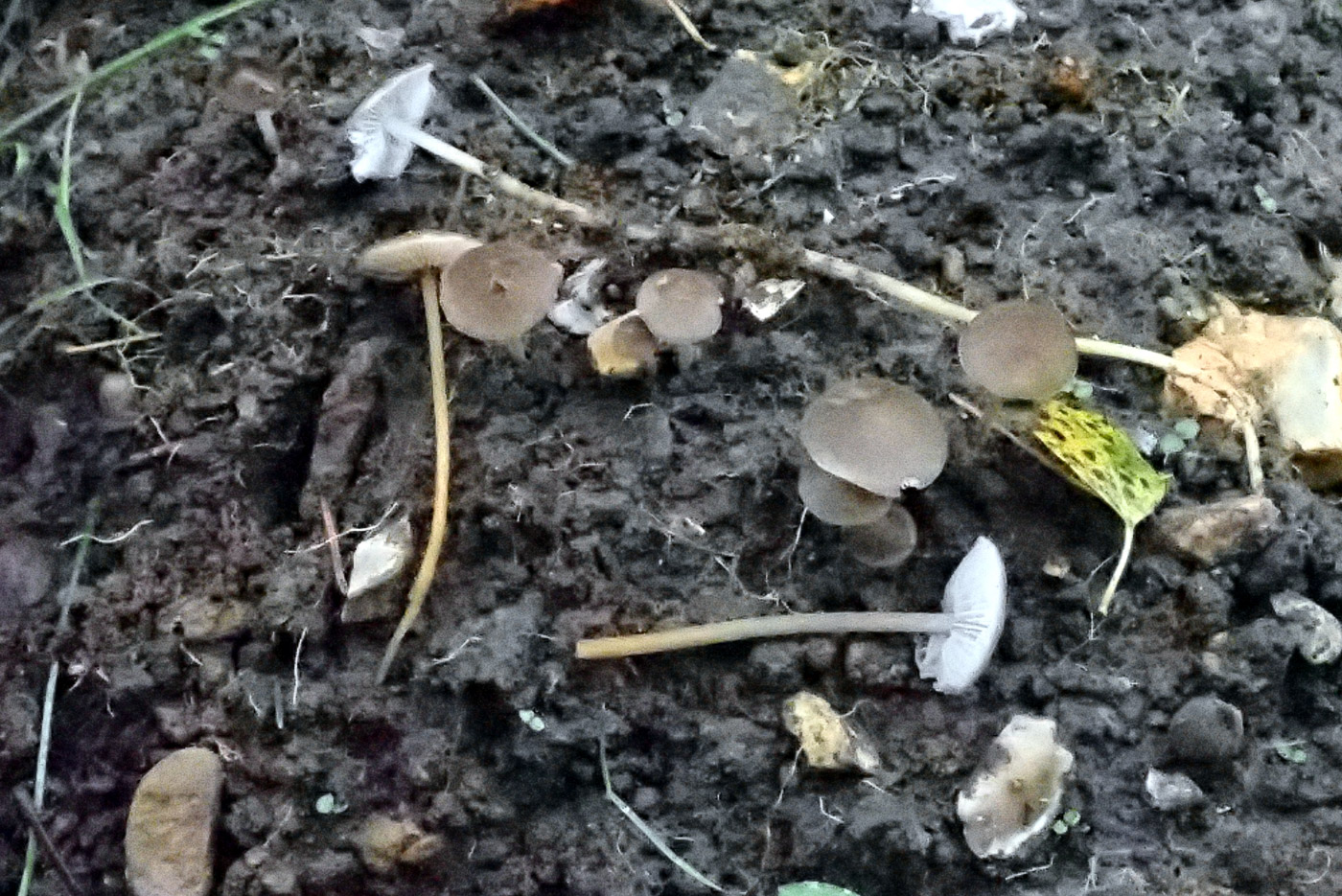

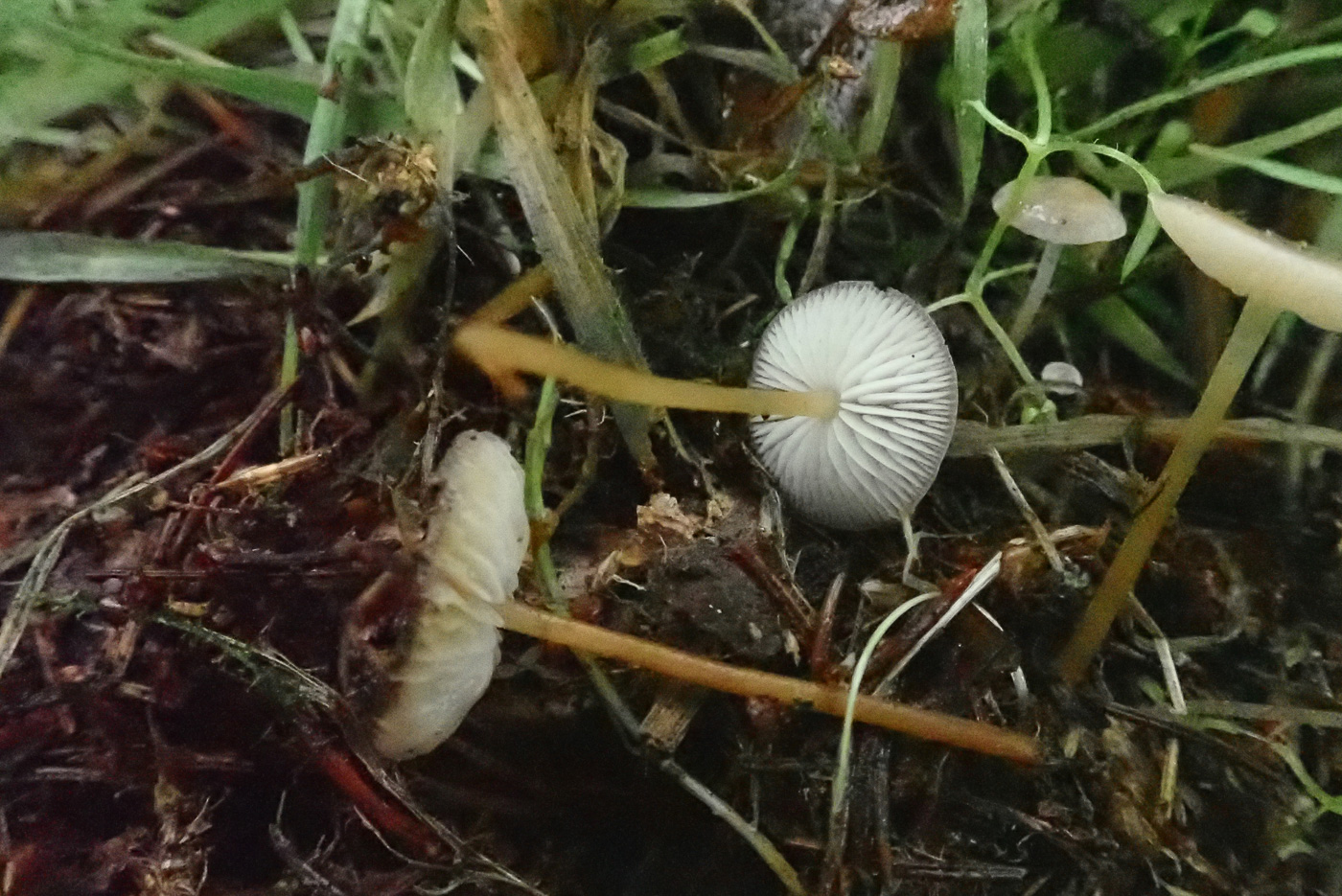 |
November 13th Strobilurus esculentus (Sprucecone Cap) 
At Turville Heath Penny noticed a group of brown capped Bonnetlike mushrooms growing out of a molehill and investigated further. On pulling one out of the loose soil she found a surprisingly long root! (See the specimen lying left to right along the top in photo 1.) It then dawned on her that the nearest tree was a Spruce and maybe under the molehill was a cone on which the mushrooms were growing. Later on under another Spruce she found more of the same and this time was able to excavate the cone (photo 2). The genus Strobilurus produces small mushrooms very similar to the genus Mycena and which grow on either Pine or Spruce cones. Today's species only occurs on Spruce cones and has amazing and unmistakeable gill cells with thick walls and crystals like the genus Inocybe (Fibrecap). Both today's collections were checked because Penny had no idea they could produce a long root - a fact not mentioned in reference books.
|
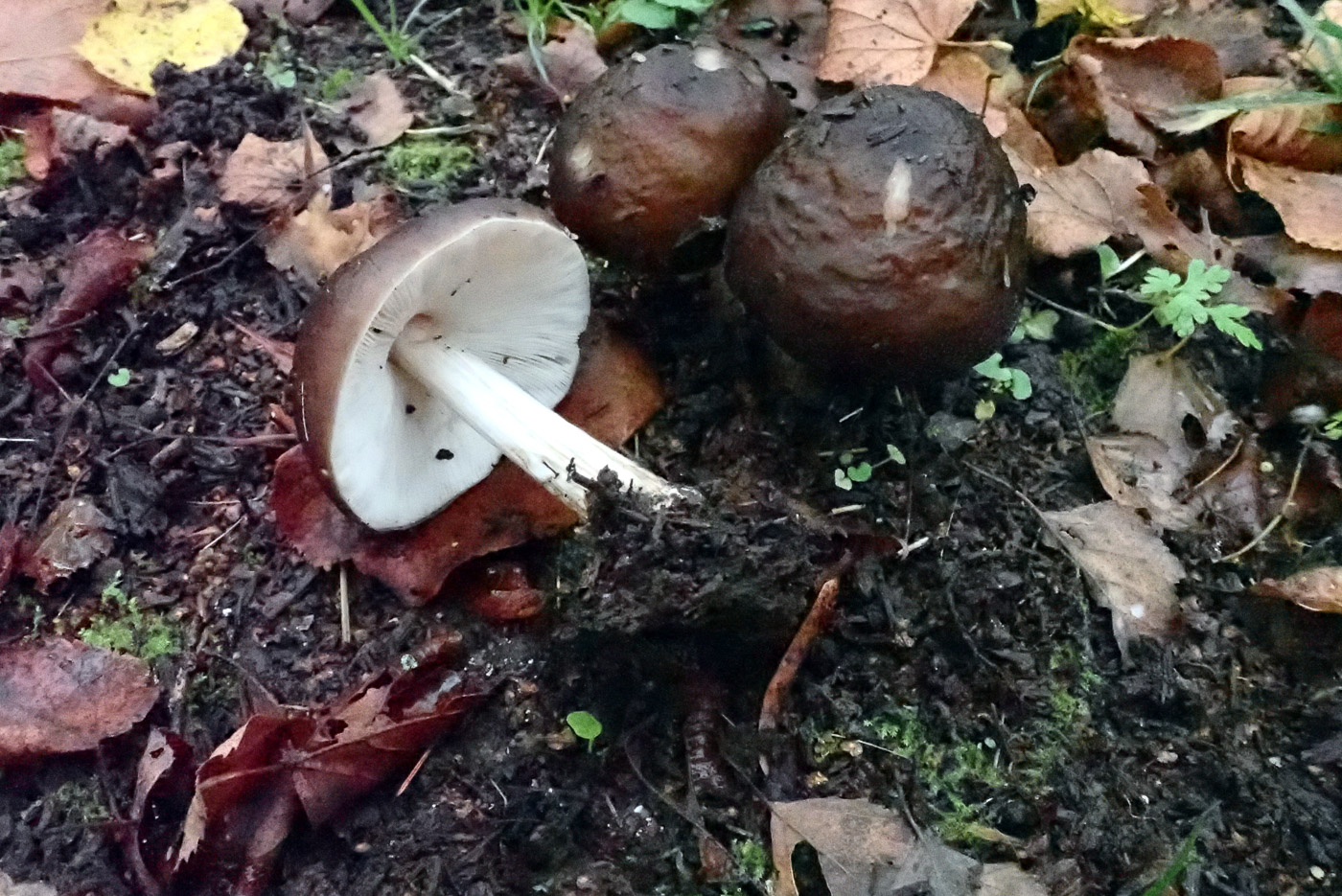 |
November 13th Pluteus cervinus (Deer Shield) 
At Turville Heath on a rotting woodchip pile Penny found these three Shields looking rather different from when they fruit on fallen wood. P. cervinus is a species complex recently split into a range of new species so Penny took a sample home to work on. However, at home all microscopic features seemed to match fine. Note how the free crowded gills are white and have still not developed the typical pink of the Pluteus genus, however later they were beginning to turn.
|
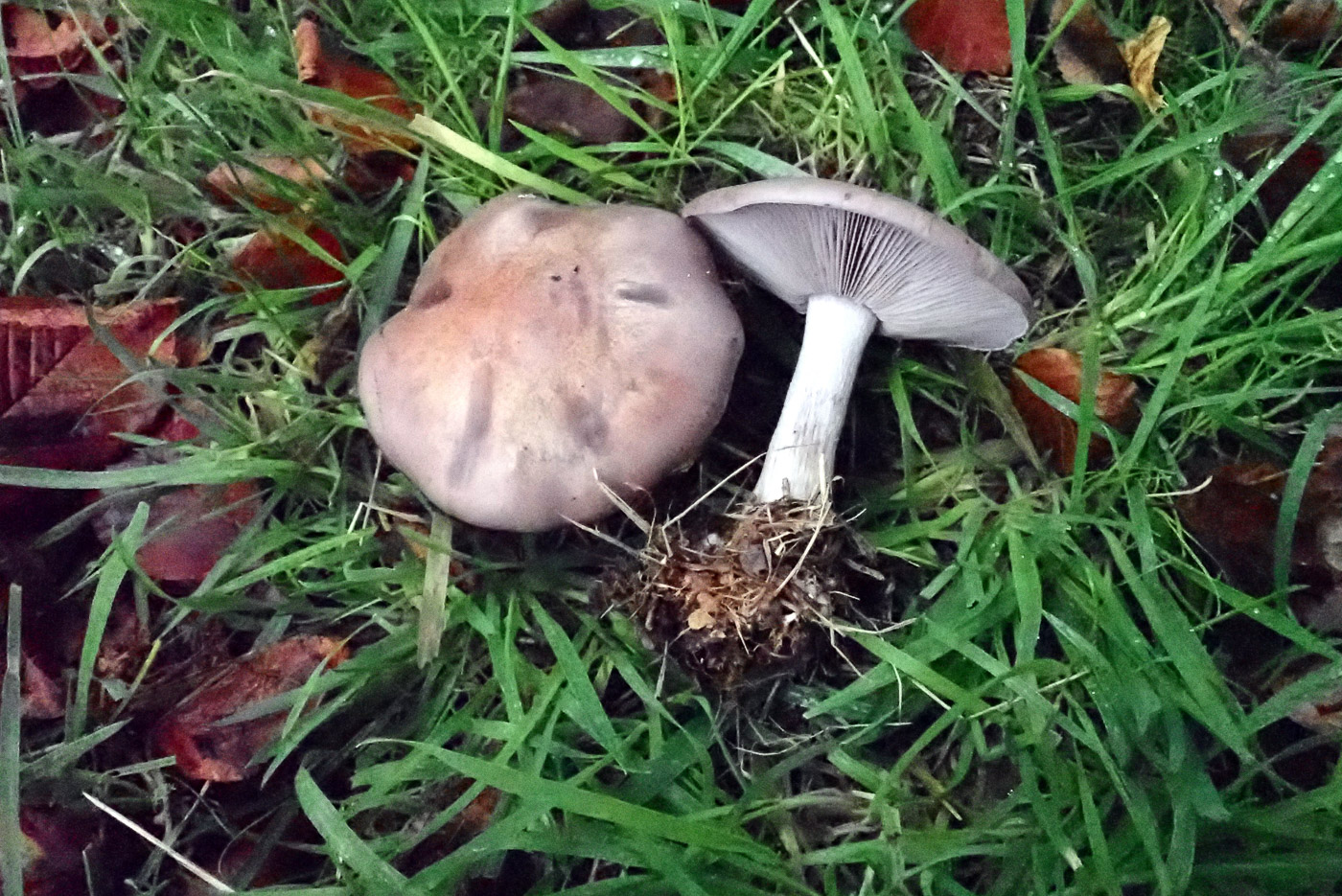
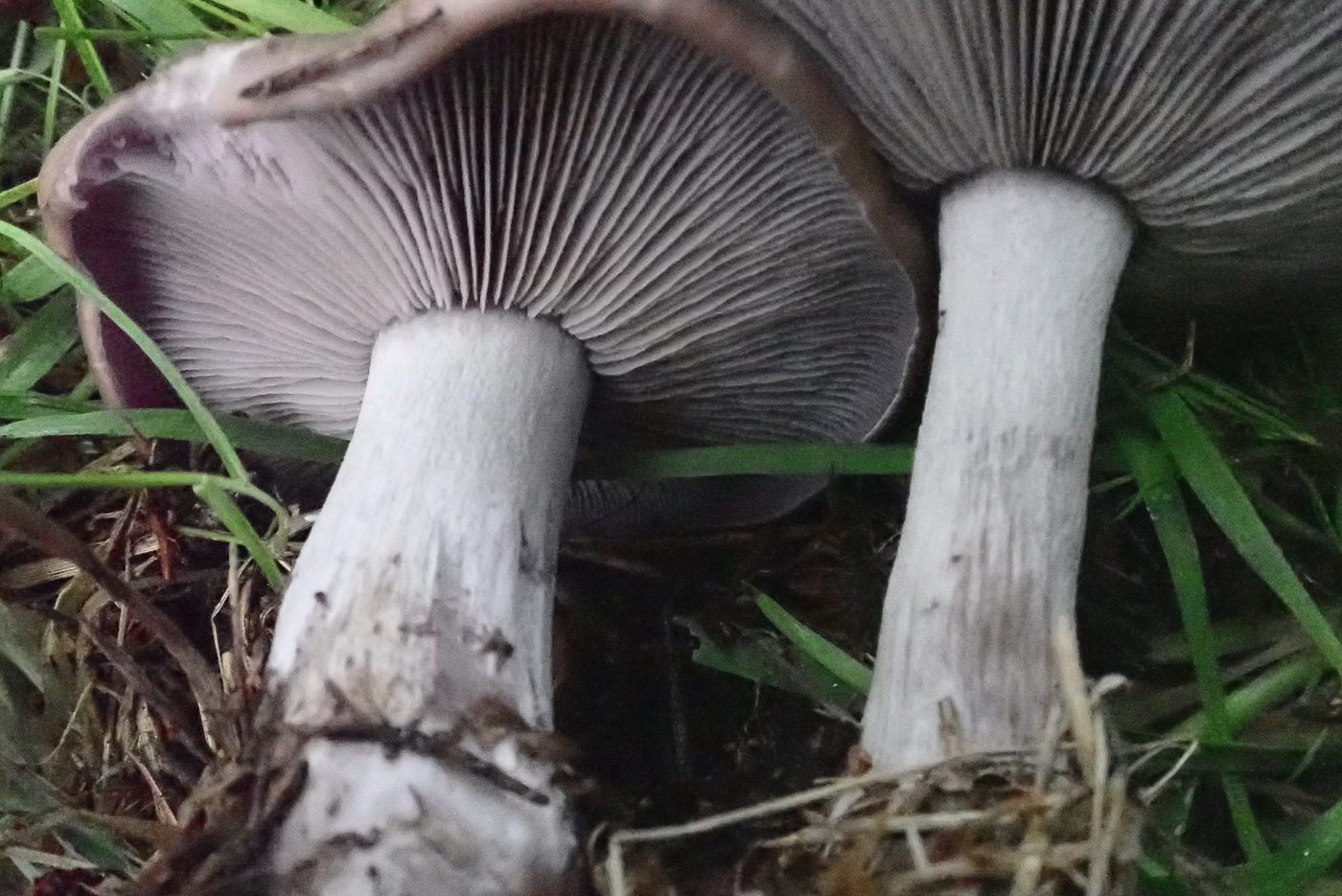 |
November 13th Lepista nuda (Wood Blewit)
At Turville Heath Penny found a couple of examples of this typically late season fruiter, the first under Birch and the second under Spruce. The cap starts out a beautiful lilac but gradually turns a soft brown as it matures, though the gills retain the lilac for longer as does the stem. Do not confuse with the many species of Cortinarius (Webcap) which also can have lilac gills and stem when young but should be separable by their rusty spores which drop and adhere to the cortina zone on the upper stem. Blewits have white spores hence the stem remains pale with no rusty patch.
|
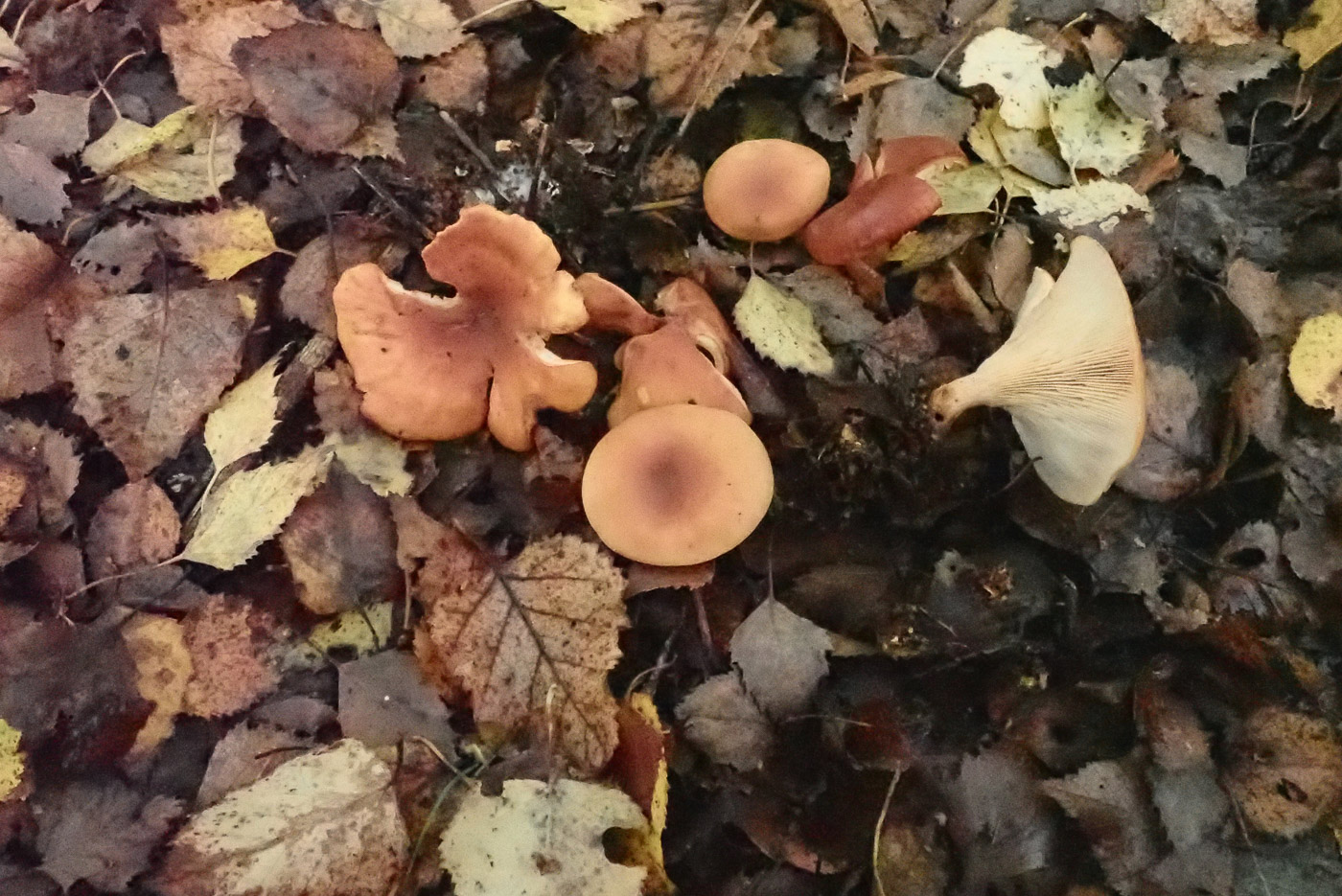 |
November 13th Paralepista flaccida (Tawny Funnel)
At Turville Heath under Birch Penny found a few of these common mushrooms, recently moved from the genus Lepista (Blewit) and before that in Clitocybe (Funnel) owing to its funnel shape. However, it has ornamented spores (like Blewits and unlike Funnels). It-occurs under both deciduous and coniferous trees in litter and is usually an easy one to recognise with its orange tawny smooth cap and decurrent gills.
|
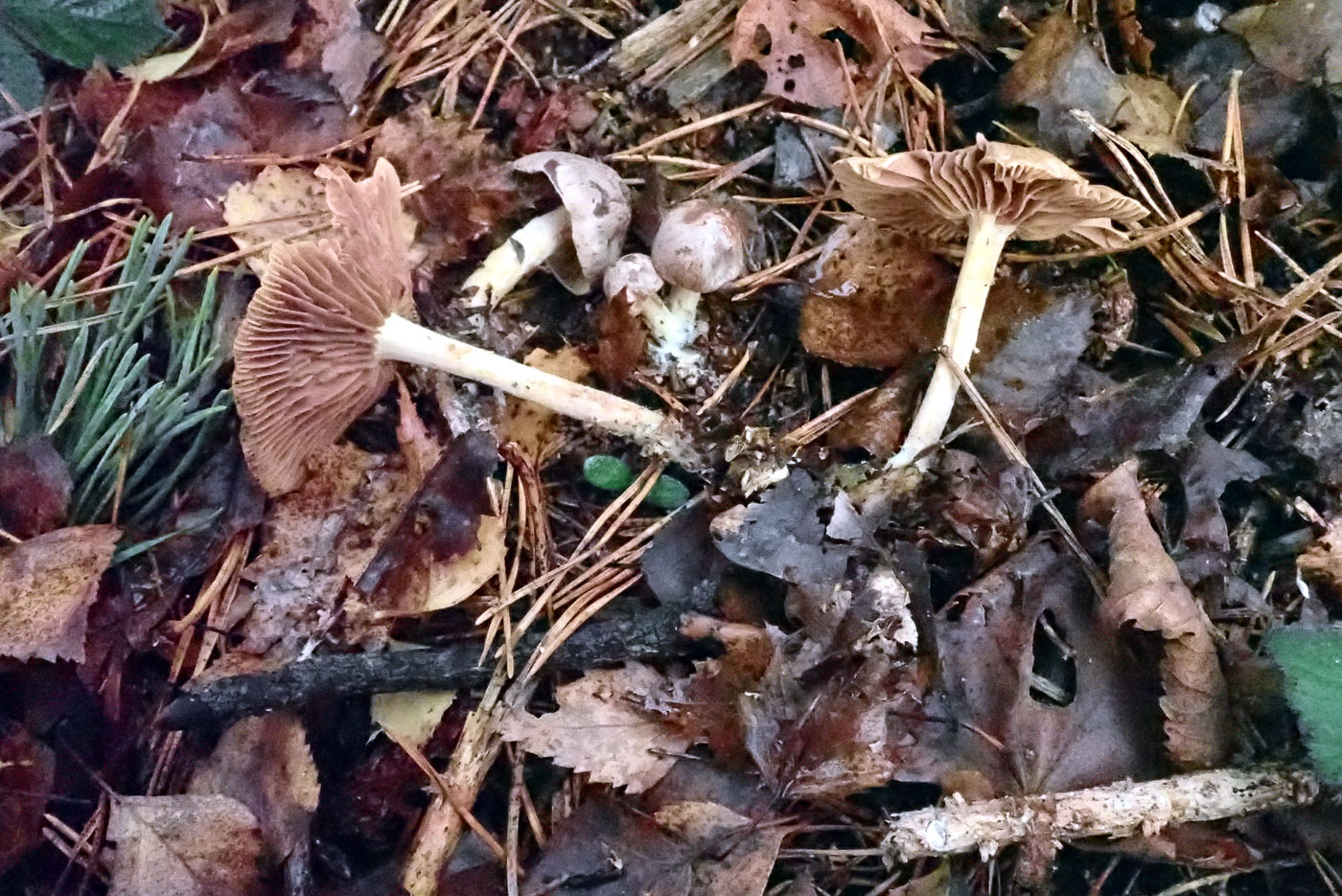
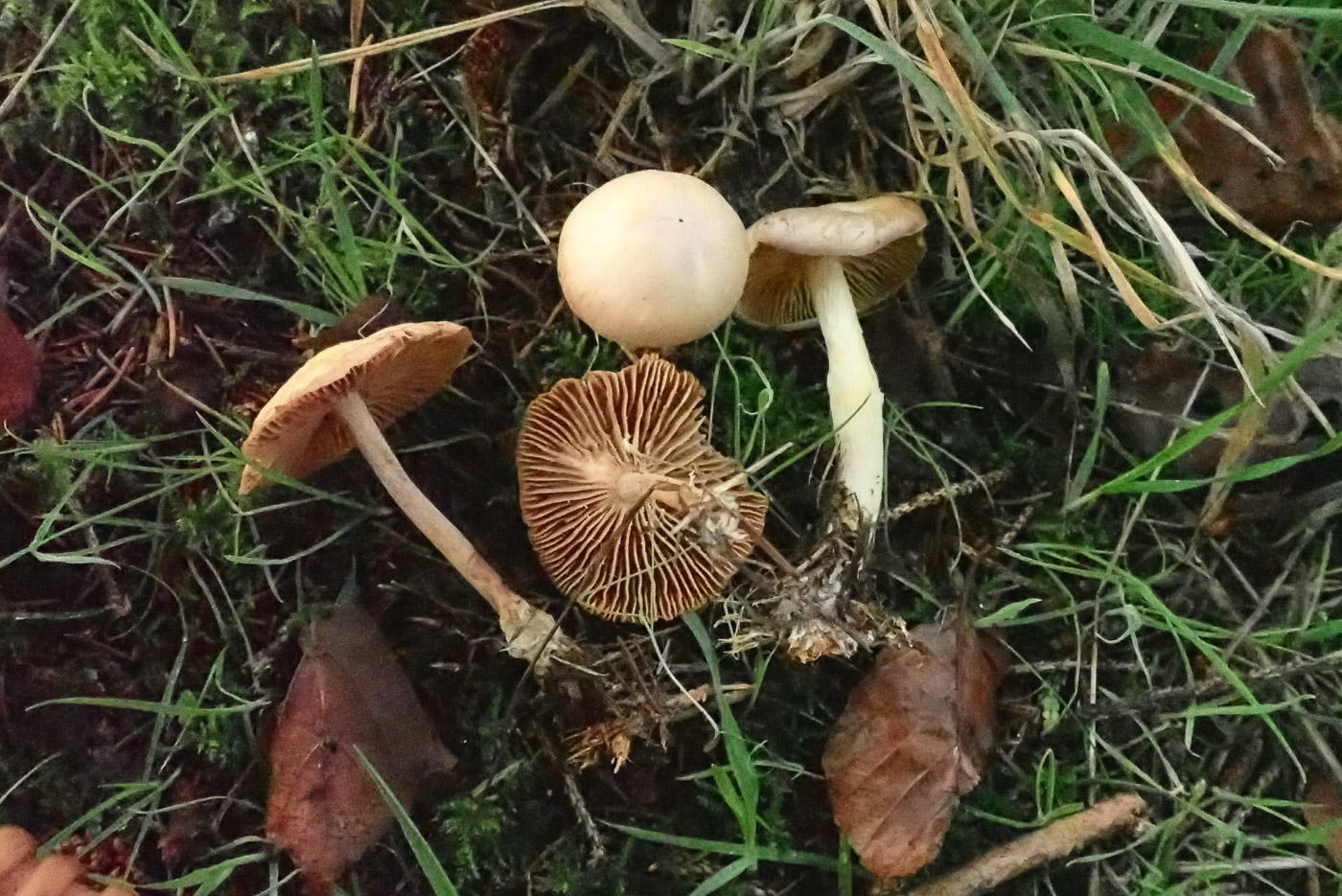 |
November 13th Gymnopus peronatus (Wood Woollyfoot)
At Turville Heath Penny found two collections of this species, the first under Pine and the second under Spruce, though it can often be found fruiting in deciduous litter. This is another LBJ which can cause confusion in the field but is larger than other Gymnopus species with caps up to 6 cm across and widely spaced gills which can have a pinkish or yellowish tinge. The stem also tends to be yellow lower down where it develops pale hairs often with litter intertwined - hence its common name.
|

 |
November 13th Gymnopus confluens (Clustered Toughshank)
At Turville Heath under Birch Penny found several clusters of this quite common species, an LBJ but usually fairly easy to recognise through its clustered habit in litter and its very crowded gills. The stem has a fine covering of hairs also which separates it from the sometimes similar G. erythropus which has a smooth and distinctly red stem. See also dated Oct 5th.
|
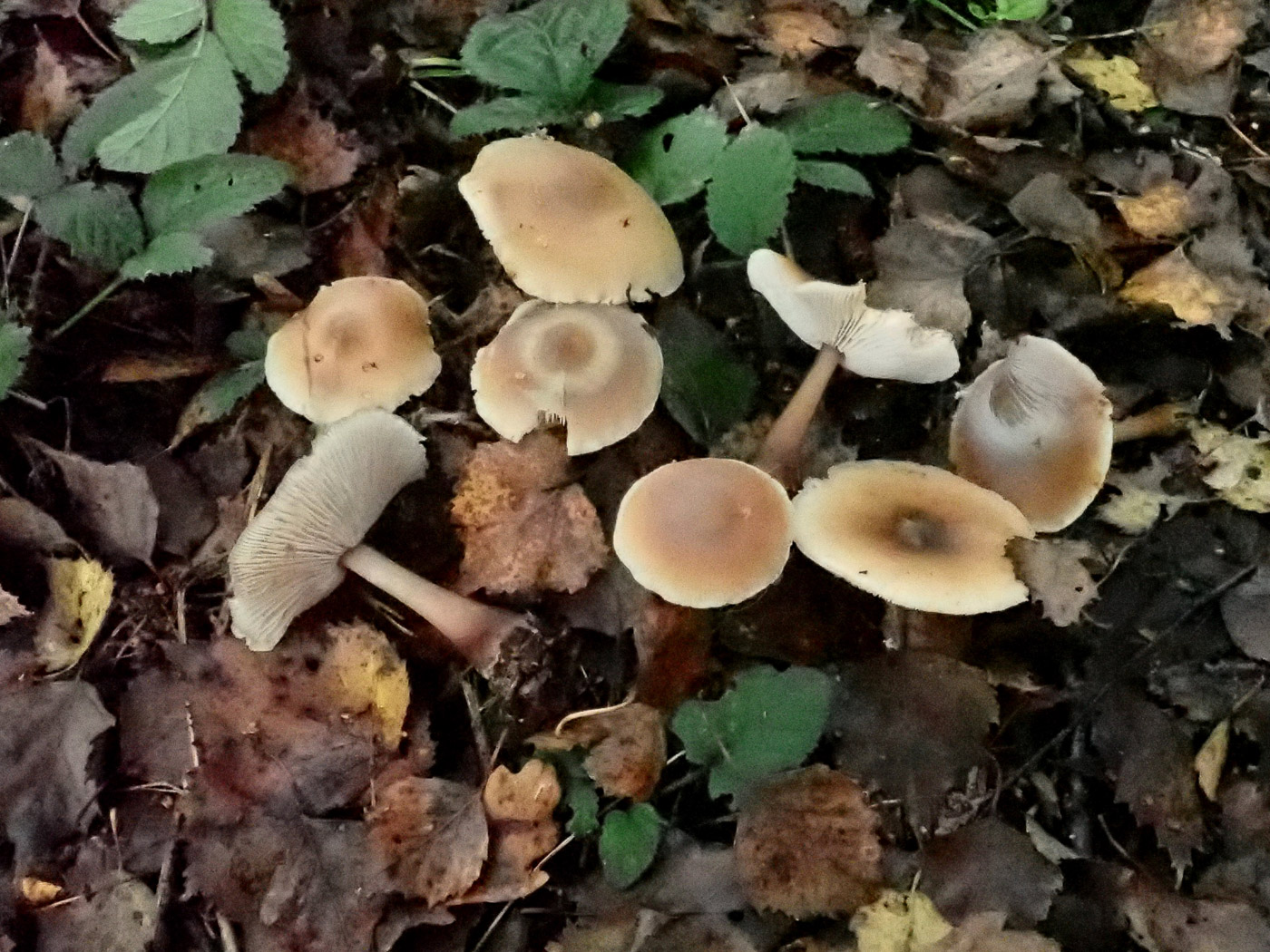 |
November 13th Rhodocollybia butyracea (Butter Cap)
At Turville Heath under Birch Penny found various examples of this species which, though one of our commonest woodland mushrooms, often causes confusion amongst the less experienced, being very variable. The cap colour can be anything between deep reddish brown to almost white (when dry) but typically has a greasy feel to it - hence its common name. The gills are whitish, almost free and contrast markedly with the stem colour, often with purple tints lower down and also tapering upwards. These features are visible in the photo - note also the far right cap which has a white deposit from its overlapping neighbour (before Penny moved it!).
|
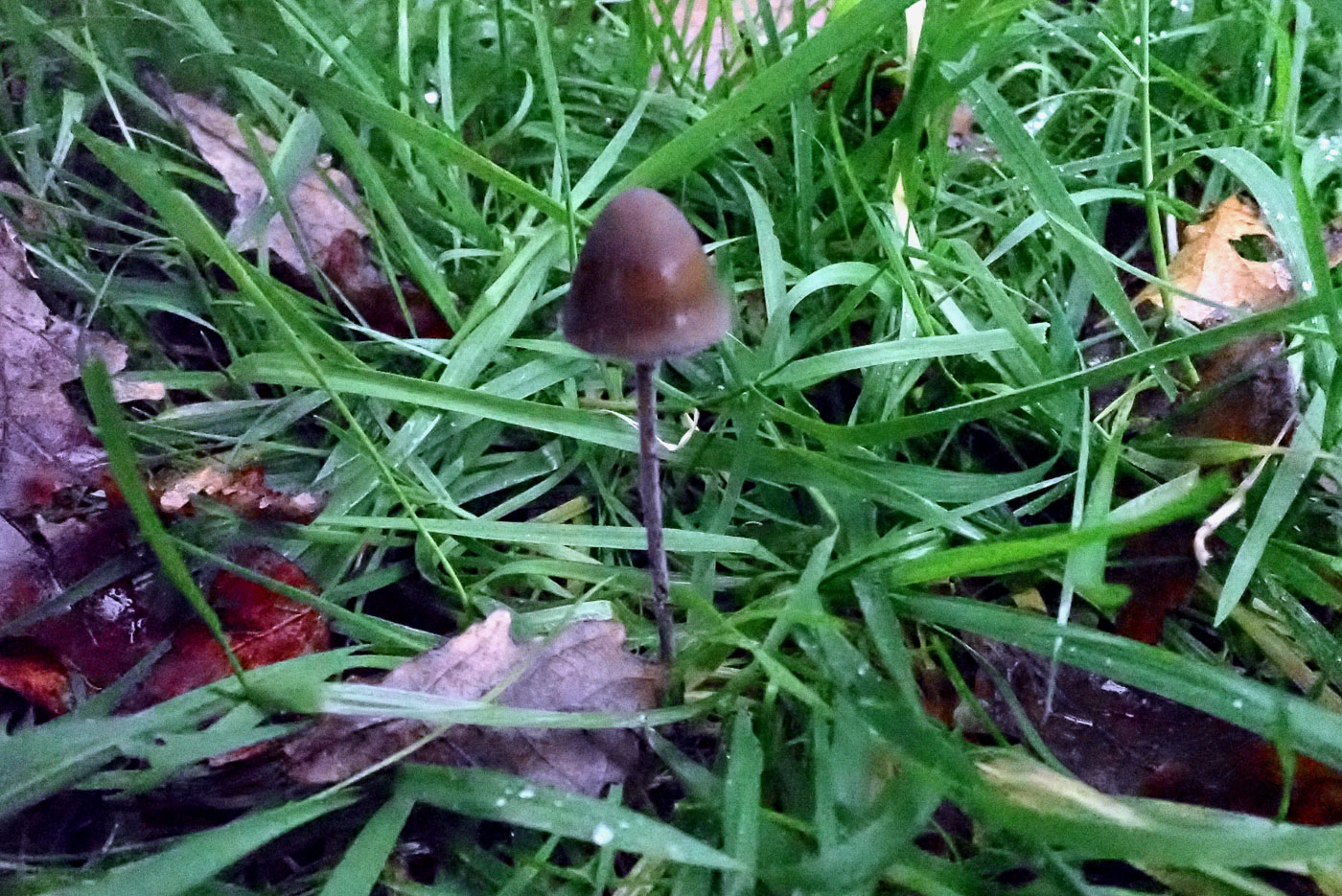
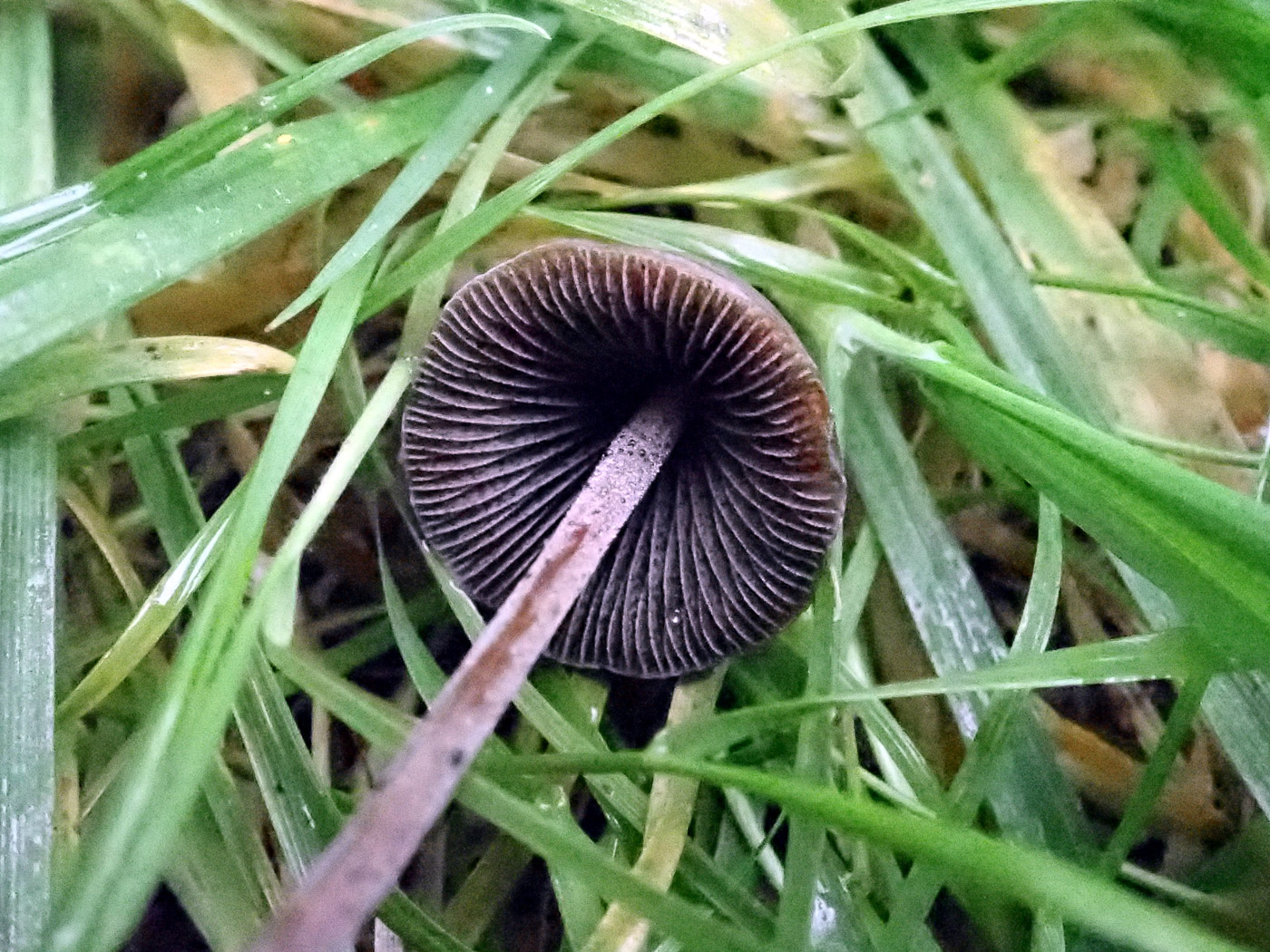 |
November 13th Panaeolus acuminatus (Dewdrop Mottlegill)
At Turville Heath in deep grass under Birch Penny noticed just one of these, a species of Mottlegill which can be recognised in the field. It is common in grassy areas and as well as having a dark brown conical cap and crowded mottled gills, the stem is finely striate and has small droplets towards the apex - seen here in photo 2.
|
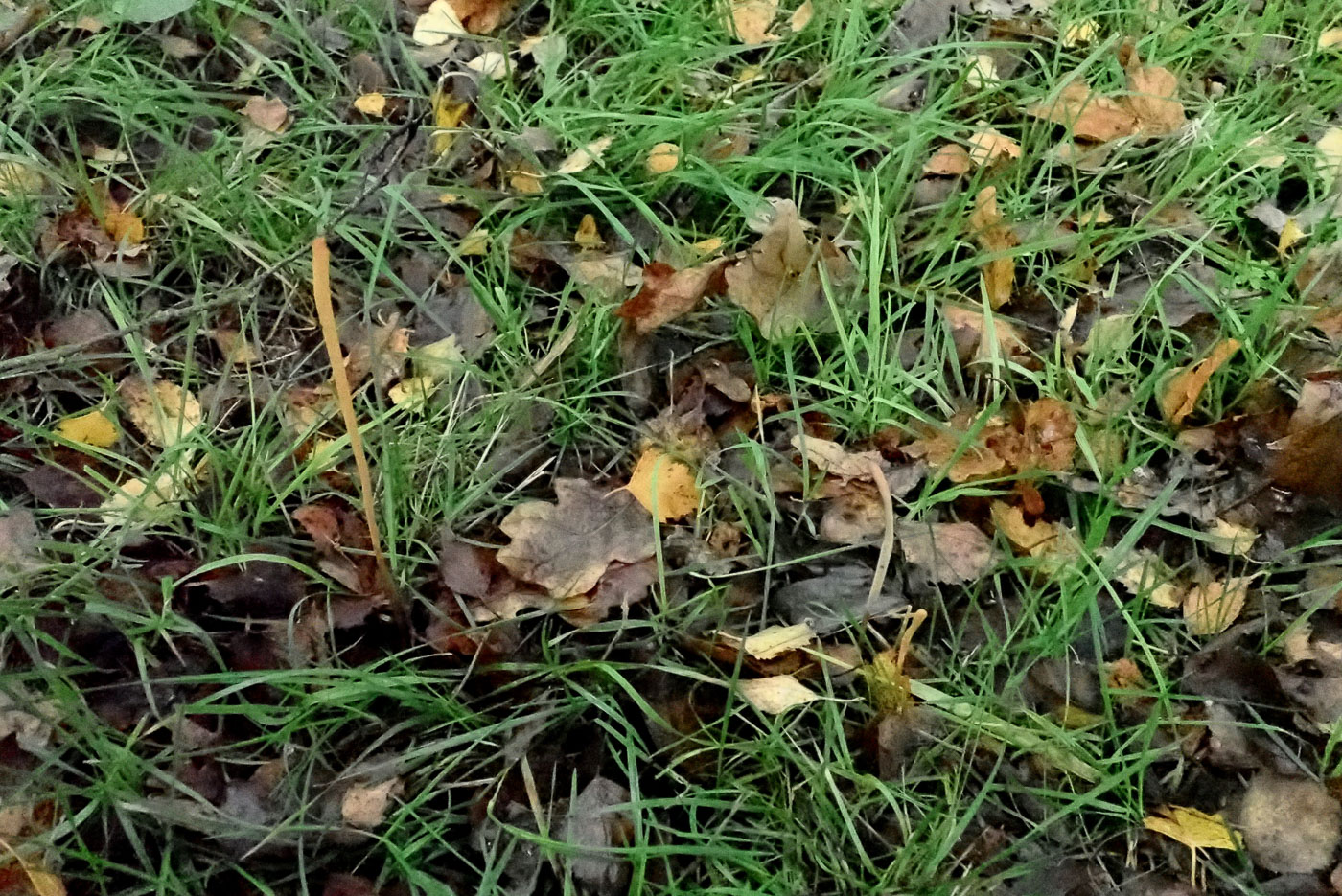
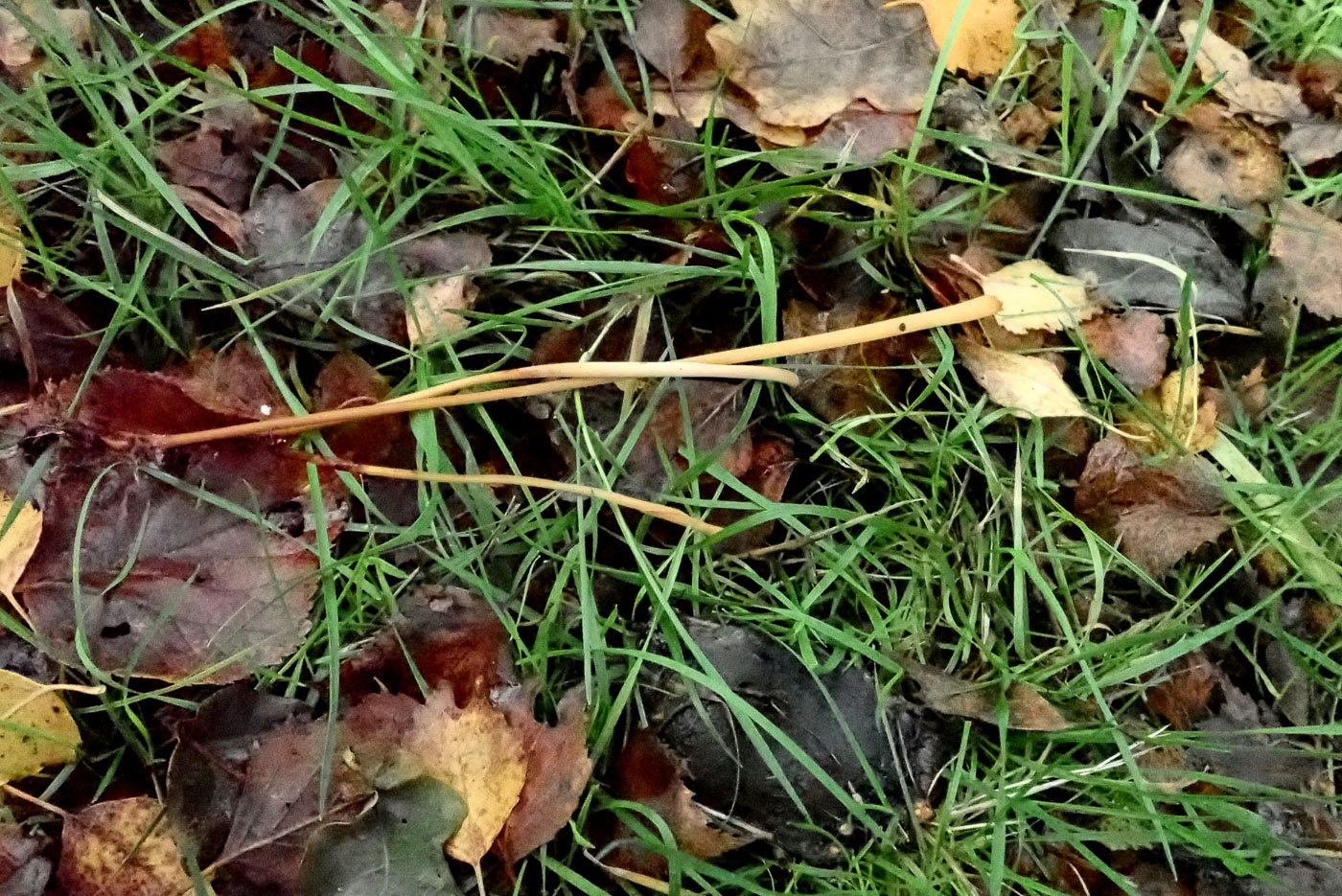 |
November 13th Typhula fistulosa (Pipe Club)
At Turville Heath in grass under Birch Penny spotted first one then a couple more of these tall but well camouflaged clubs nearby, the tallest being a good 20 cms high. One would think these would stand out and be easy to spot, but not so! They are probably quite common in woodland litter but are easily missed and therefore not that often recorded.
|
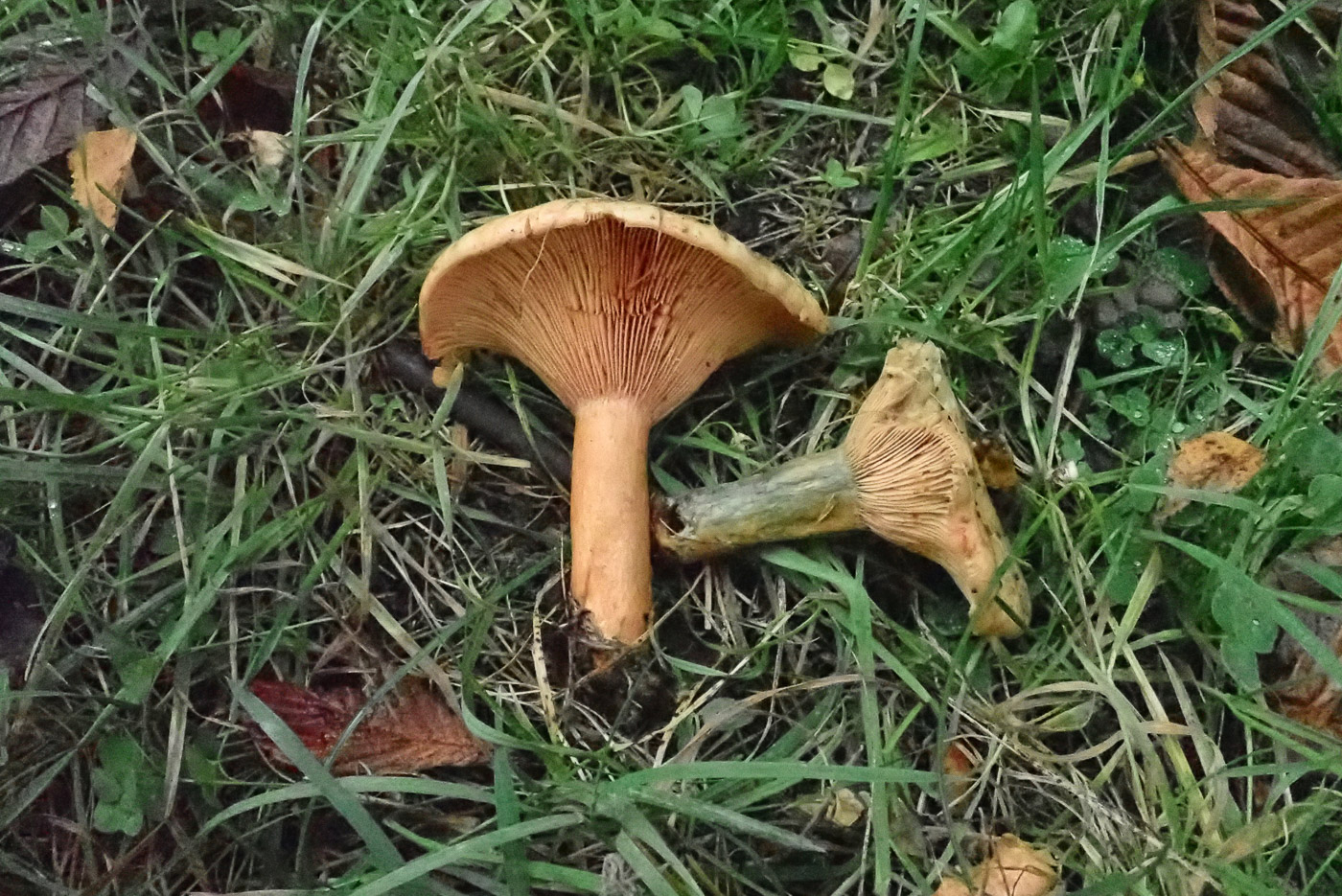
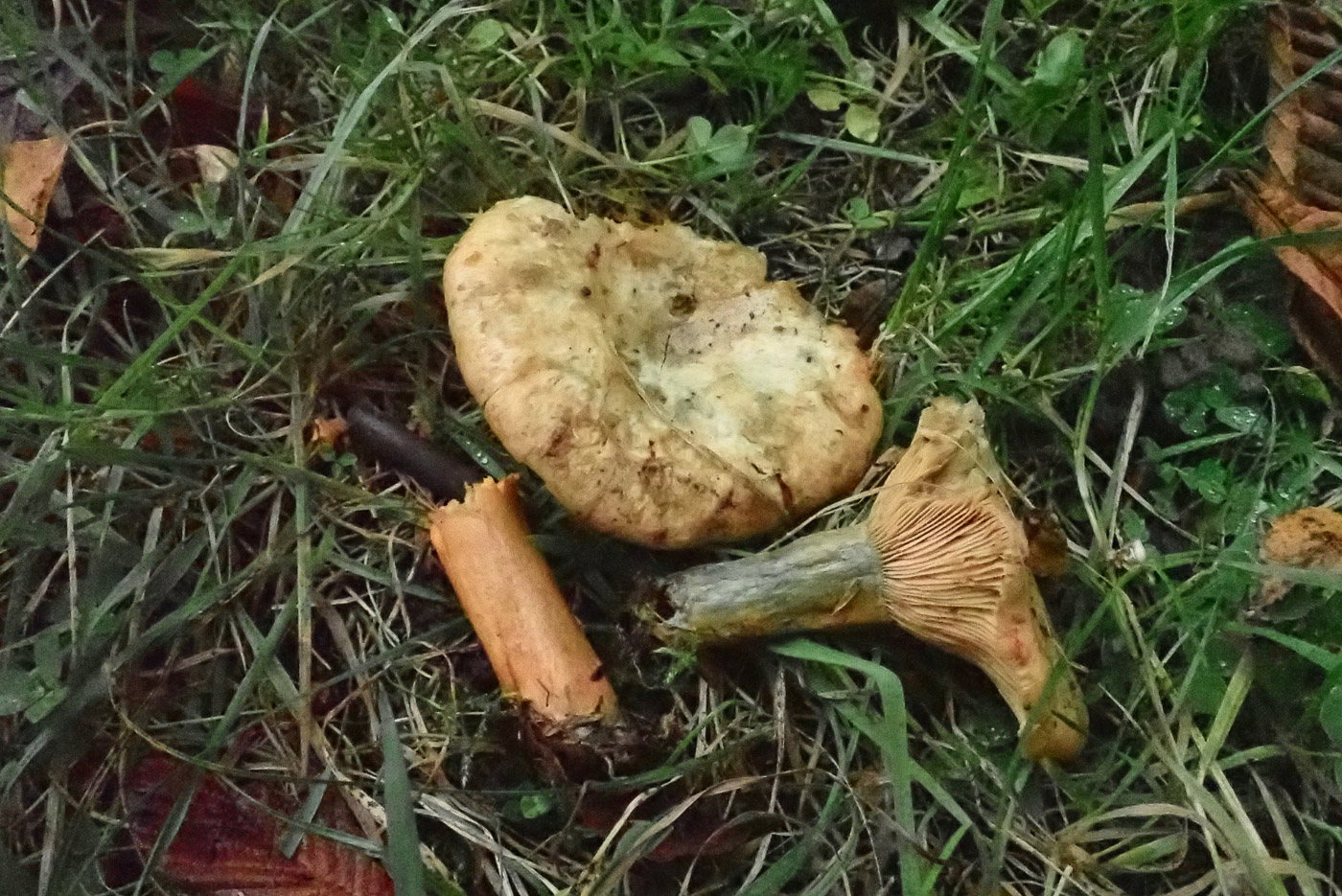 |
November 13th Lactarius deterrimus (False Saffron Milkcap)
At Turville Heath under Spruce Penny found two orange/green Milkcaps and noting the host tree realised that this was a species not yet on Finds though we have two others which are very similar: L. deliciosus and L. semisanguifluus - both Pine species. Today's species tends to turn green more readily and also has a smoother stem, lacking the pitting marks which characterise the other two species.
|
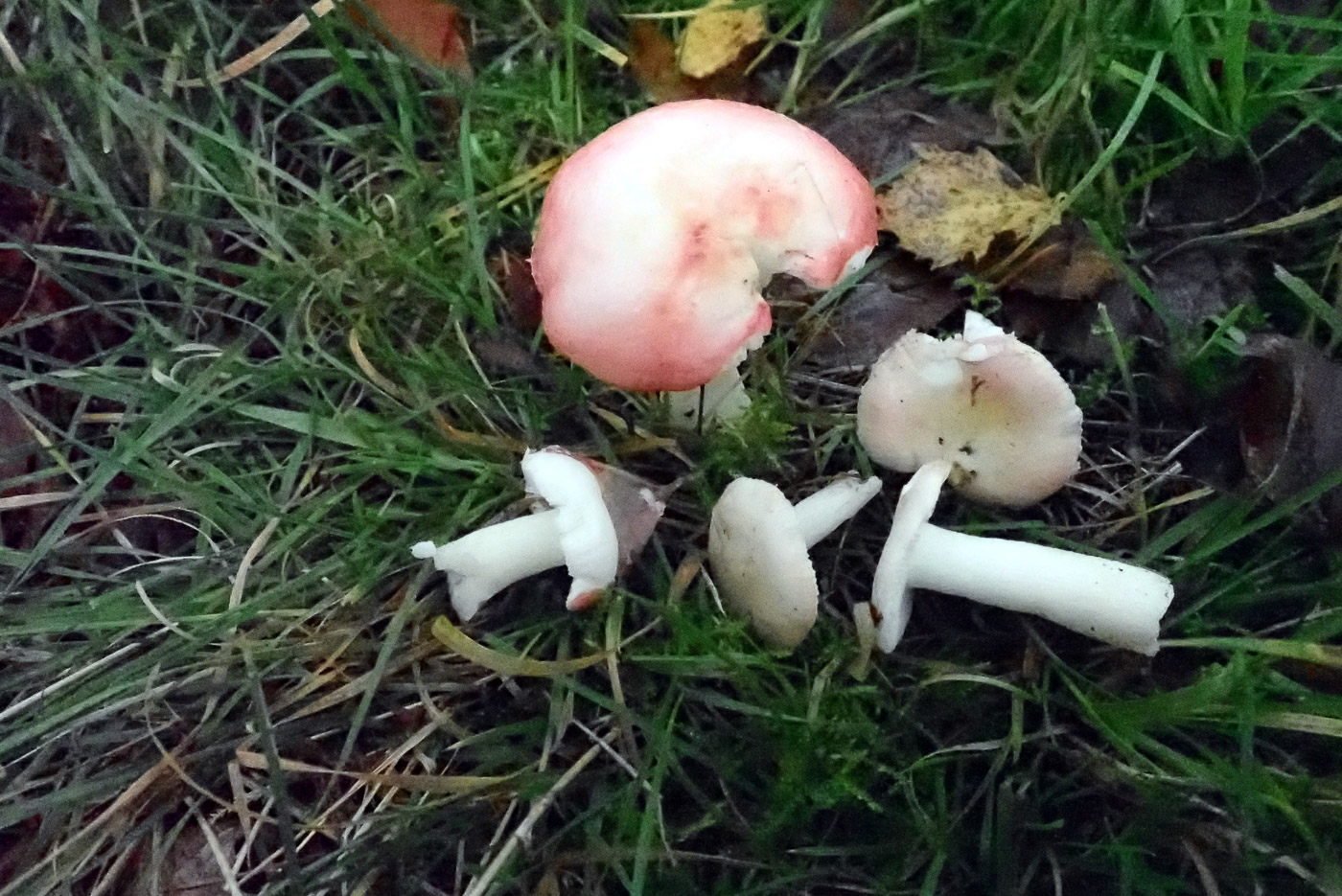
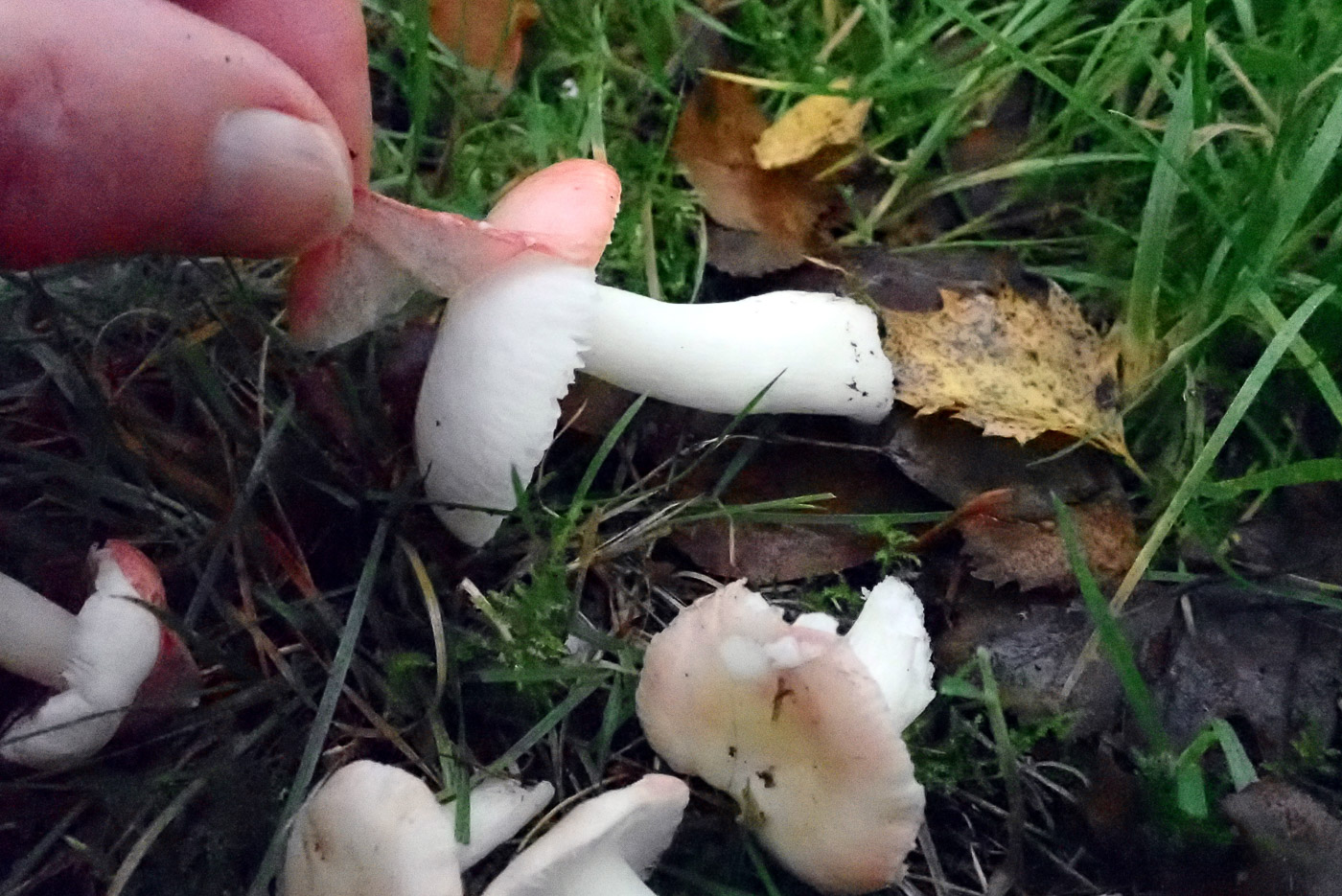 |
November 13th Russula betularum (Birch Brittlegill)
At Turville Heath under Birch Penny found several of this species dotted about and then placed them together to illustrate its delicate pink cap, sometimes really pale cream with only a hint of pink, and pure white gills - the whole fruitbody always very fragile and one only found under Birch. To separate it from other pink Brittlegills you can peel the cuticule right to the cap centre (and sometimes remove it completely!)
|
 |
November 13th Russula ochroleuca (Ochre Brittlegill)
At Turville Heath under Spruce Penny was surprised to find fresh fruitbodies of this common early season Brittlegill so took the opportunity to add it to Finds - many of our common Brittlegills are still missing and the genus seems to have been somewhat poorly represented this season. The species is happy under many different trees including conifers and its dull slightly greenish ochre colour contrast with its white gills and stem, helping to separate it from other yellow Brittlegills.
|
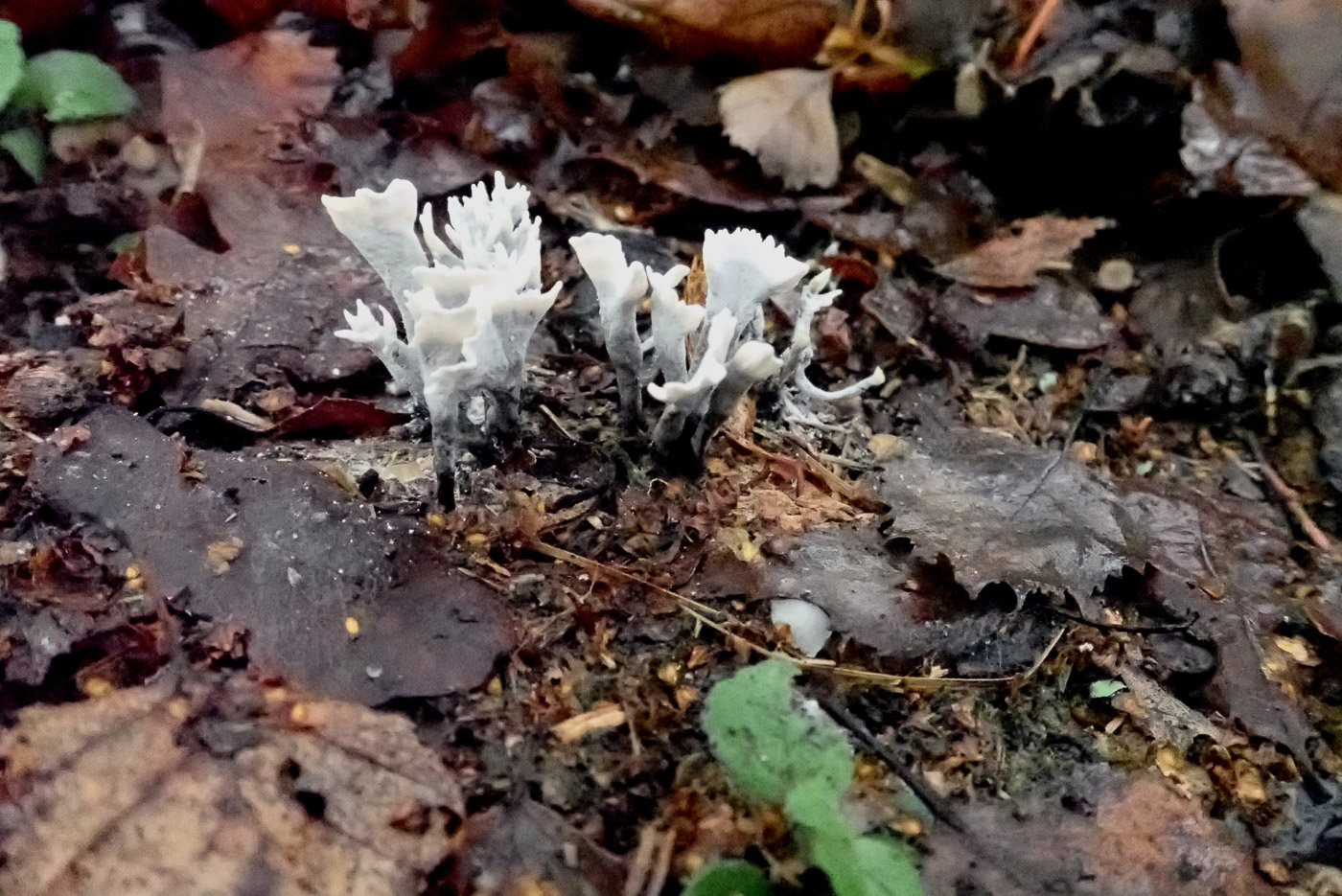
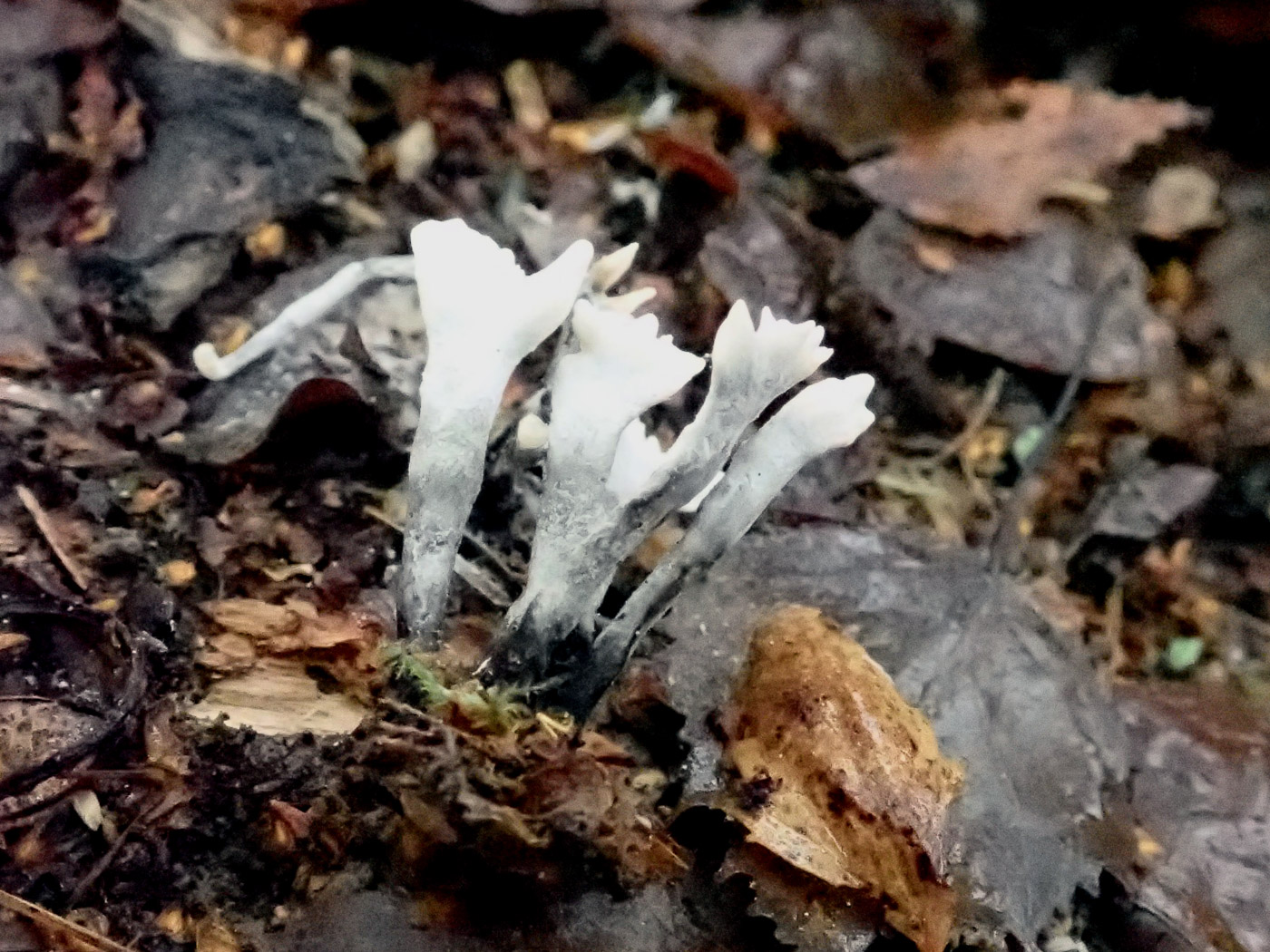 |
November 13th Xylaria hypoxylon (Candlesnuff Fungus)
At Turville Heath under Birch Penny found this very common fungus but apparently on the ground rather than obviously on wood, and at first glance wondered if it was Clavulina coralloides (Crested Coral). Not so, it was clearly the Xylaria, black at the base and widening out towards the tips which were typical of this species and when given a flick a cloud of spores flew off. She did not investigate but therefore assumed they were growing on submerged wood or roots.
|
November 11th 2021

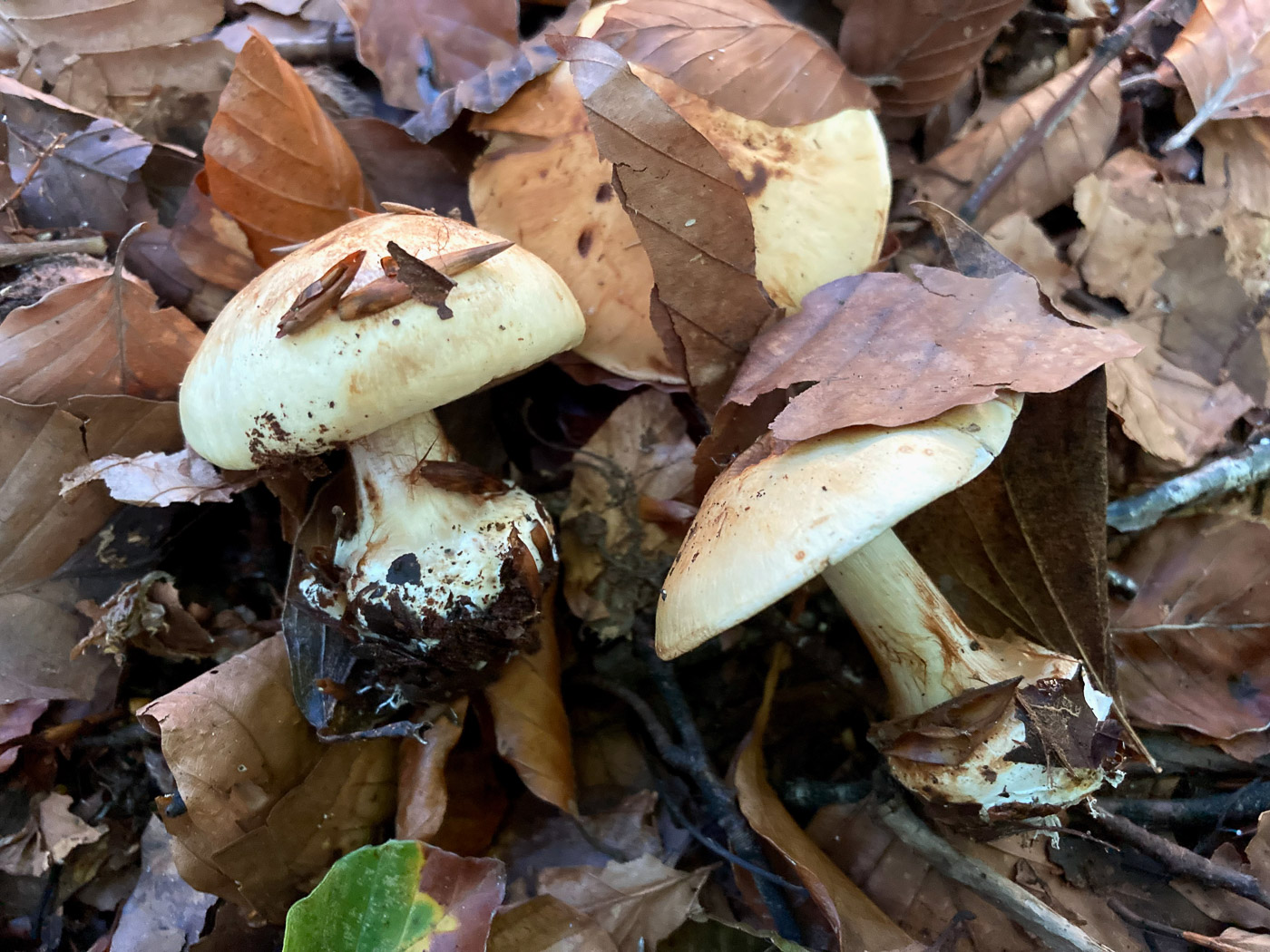 |
November 11th Cortinarius osmophorus (Sweet Webcap) 
Under Beech Russell Ness found this unusual Webcap - a rare member of Section Phlegmacium in Pullingshill Wood, and on the same day also found it in nearby Mousells Wood - both typical calcareous Beech woodlands now renowned for producing this genus in amazing numbers. Working on the identification at home, it was the strikingly pervasive sweet smell - similar to that of Hebeloma sacchariolens - which took him to the name together with the pale cream cap, pale gills and stem with a large marginate bulb. We have extremely few county records, the last from Dancersend which was identified by Geoffrey Kibby two years ago. (Photo 1 is from Pullingshill Wood, photo 2 is from Mousells Wood.)
|

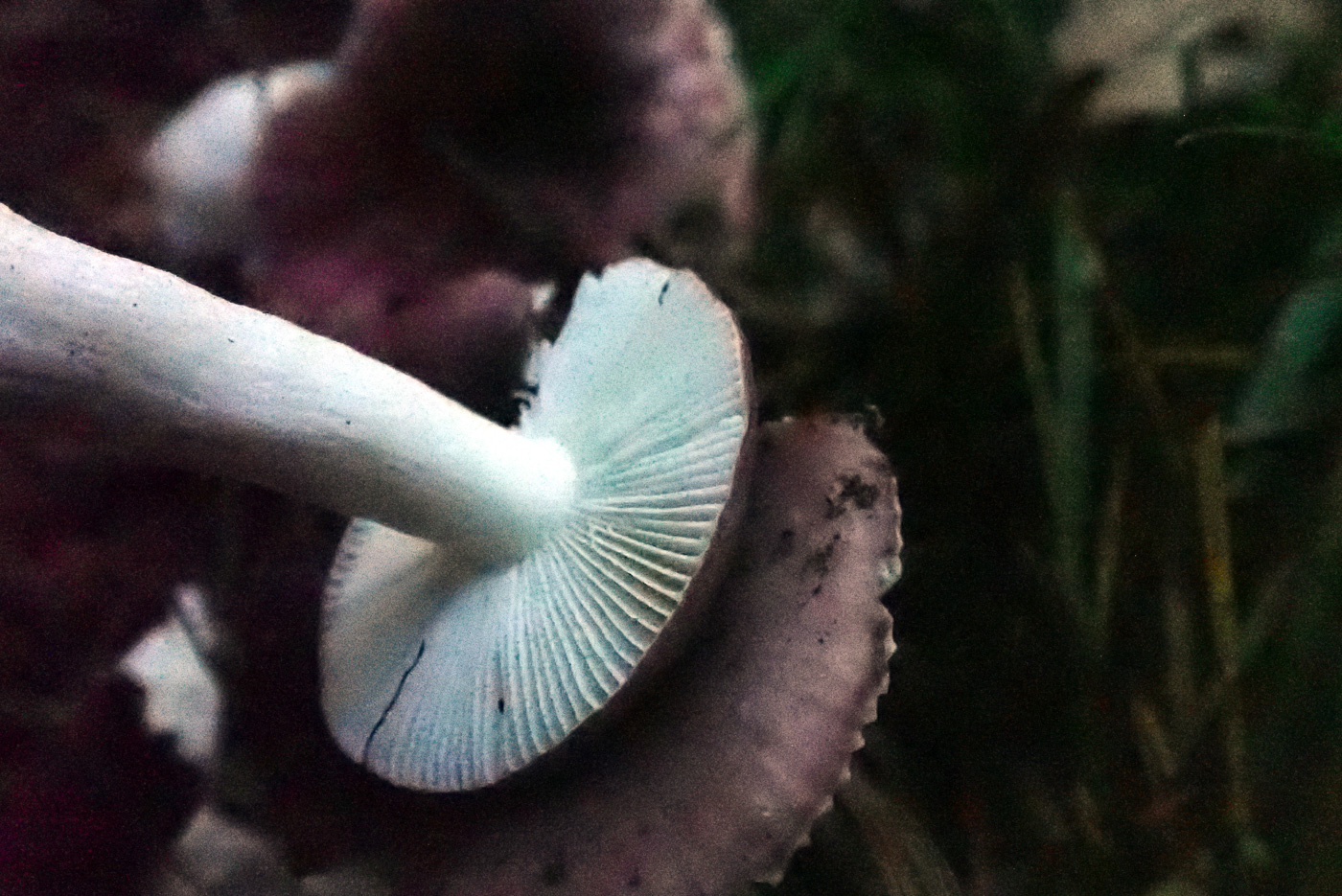 |
November 11th Russula fragilis (Fragile Brittlegill)
Under Oak at Stoke Common Penny came across a few red capped Brittlegills fairly close to a couple of those she'd just identified as R. atropurpurea (Purple Brittlegill). However, there was a hint of green in the cap colour indicating a different species and suspecting this might be R. fragilis she checked to confirm this by looking closely at the gill edge with a x10 lens. When held up to the light and looking across the gills one can see a finely jagged to serrated edge - a unique feature though not always easy to spot but clearly present here.
|
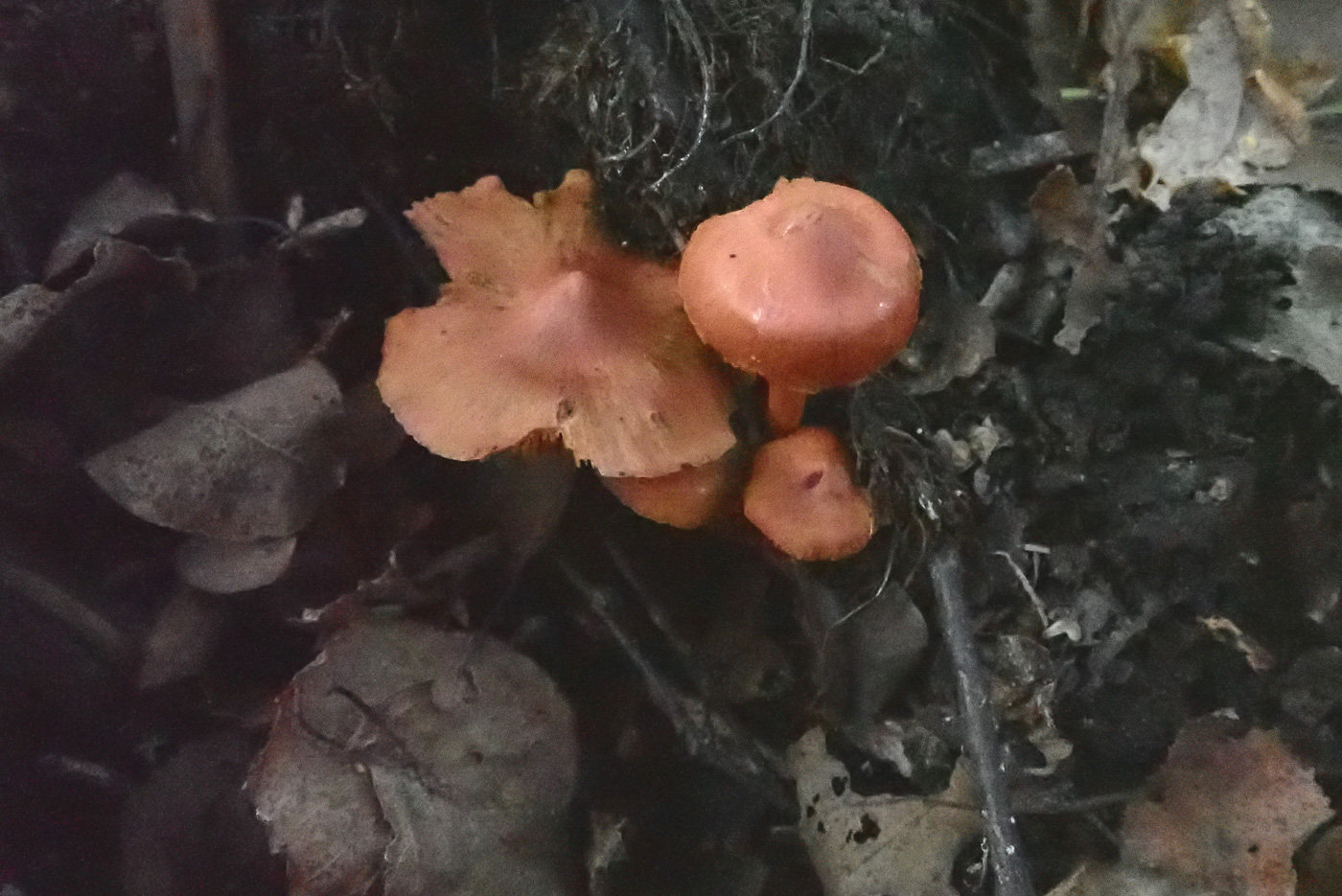
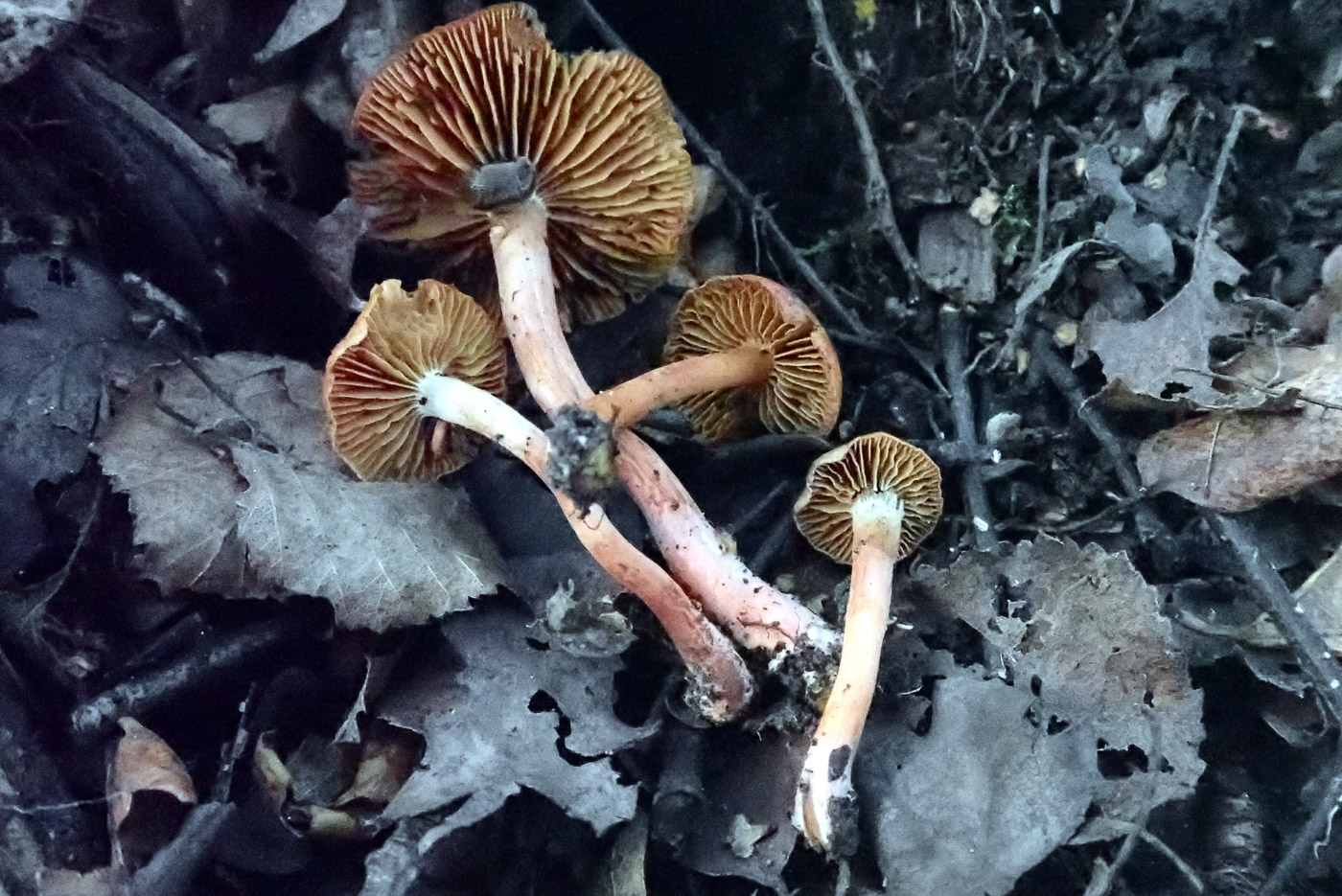 |
November 11th Cortinarius uliginosus (Marsh Webcap)
At Stoke Common this was one species Penny was hoping to find today. As its common name implies, it favours wet areas and is associated with Willow, and parts of this site spend much of the year underwater owing to the underlying clay. Just one little collection was found at the base of Willow where clearly the rain water had only recently receded. This is a small Webcap from Section Cortinarius and her photos sadly don’t do it justice as it has a beautiful bright orange to copper dry silky cap with an umbo, when young and fresh the gills are bright yellow and the stem has orange bands below. Not common, we have just two other known county sites with one record each plus one previous record from here back in 2008.
|
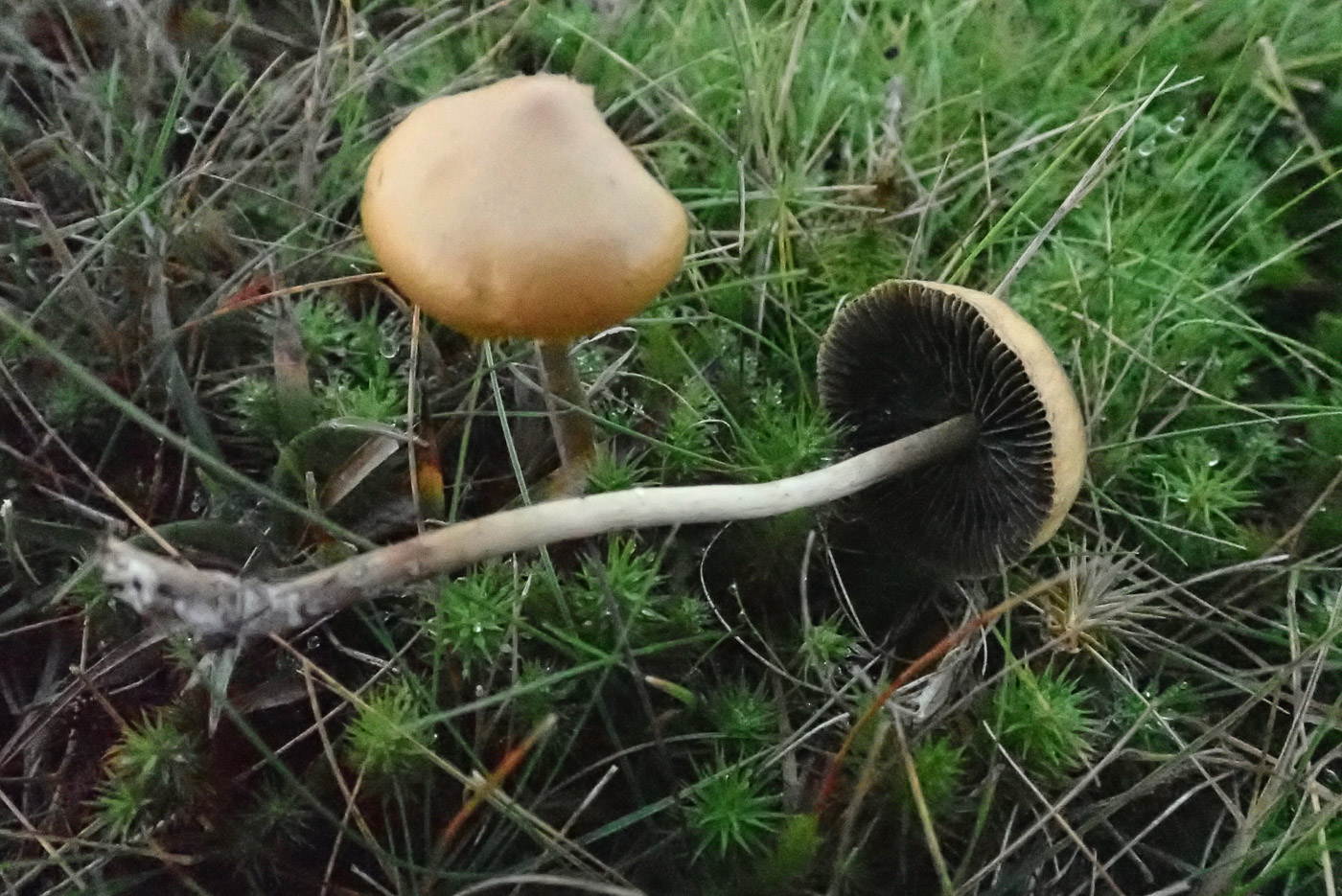 |
November 11th Panaeolus fimicola (Turf Mottlegill) 
At Stoke Common in an open heathy area Penny came across several yellow brown mushrooms which on first glance she thought were a species of Hypholoma (often common here) but the gills were somewhat too dark for that genus and also mottled - a sign of the genus Panaeolus (though Deconica / Psilocybe can also have quite similar dark mottled gills). At home much puzzling went on but eventually she located the vital 'sulphidia' - cells which are on the flat side of the gill in this particular species but more or less impossible to see but the stain Patent Blue revealed all! Despite its Latin name indicating a species found on dung, its common name is in fact more accurate. We have few records, however, probably due to Penny having failed previously to crack the sulphidia puzzle!
|
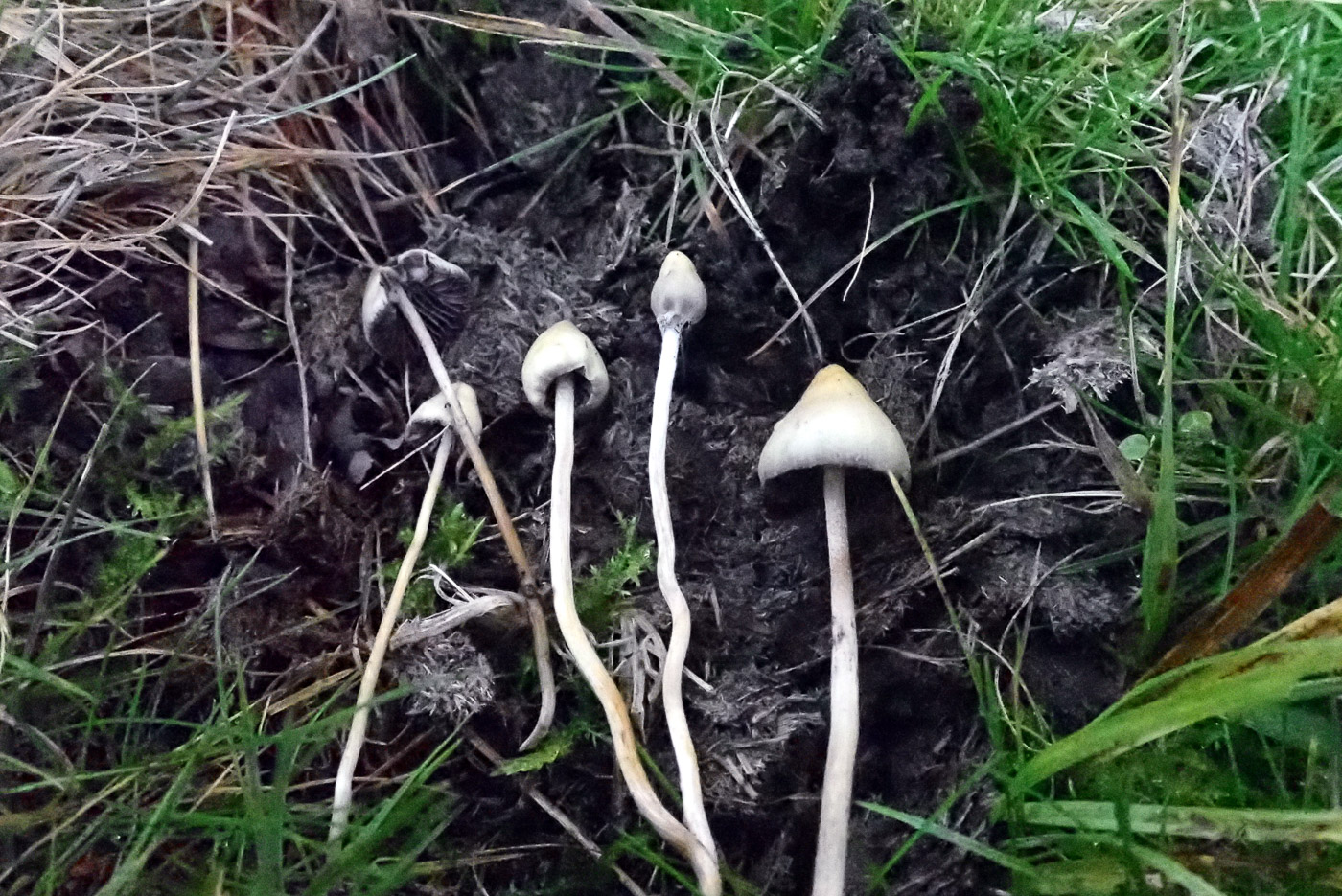
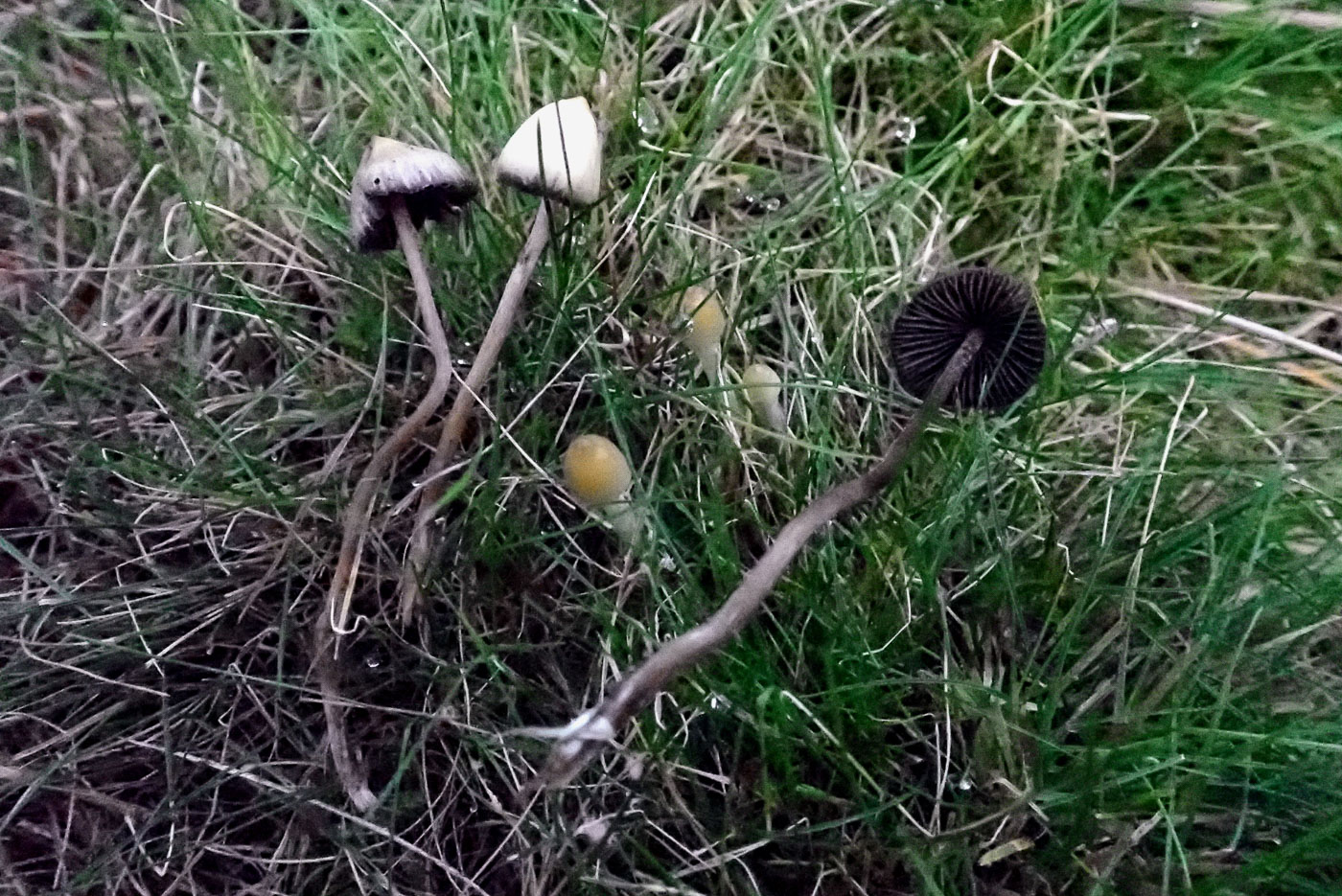 |
November 11th Psilocybe semilanceata (Liberty Cap)
At Stoke Common in an open mossy heathy area Penny came across several clusters of this distinctive little mushroom, one that is easy to identify in the field owing to its strongly conical pale cap with a little nipple at the top. Turning it over reveals dark almost black gills and a thin stem which is quite long in relation to the cap size. Also known as Magic Mushroom, the species contains Psilocibin - as do many other mushrooms - which is a Class A drug.
|
November 9th 2021
 |
November 9th Galerina lacustris (a rare species of Bell with no common name)  
At Stampwell Farm on woody remains of Willow in a dried up pond Jackie Ewan found this Galerina and attempted to name it but with limited resources. As the genus is one of the trickiest to identify, Penny decided to send it for sequencing with the result that we now have a Galerina not only new to the county but one with extremely few national records. The species is illustrated in Kibby vol. 3 but there seems to be confusion as to its correct name: either G. permixta or G. lacustris. For now we follow Kibby until this is resolved. This is our first exciting DNA result since the introduction of our Science Fund funded by BFG members' donations.
|
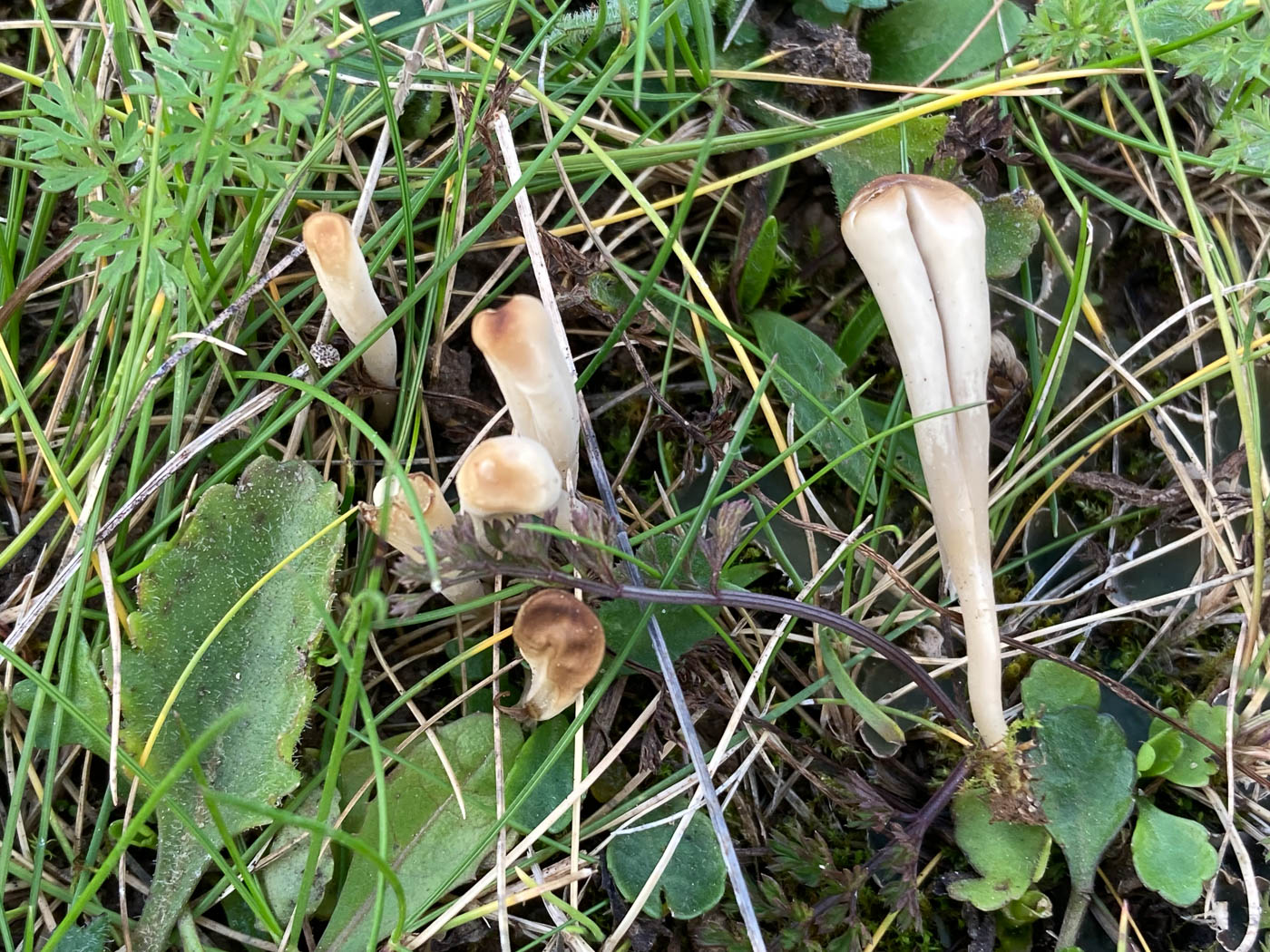 |
November 9th Clavaria tenuipes (a Club with no common name) 
On the grassy mossy banks of the Jubilee River near Dorney Russell Ness found this rare species of Club, one for which we have only a very few records. It is notable for having rather a flattened head which distinguishes it from most other white Clubs, also larger spores than the other candidate having a flattened head.
|
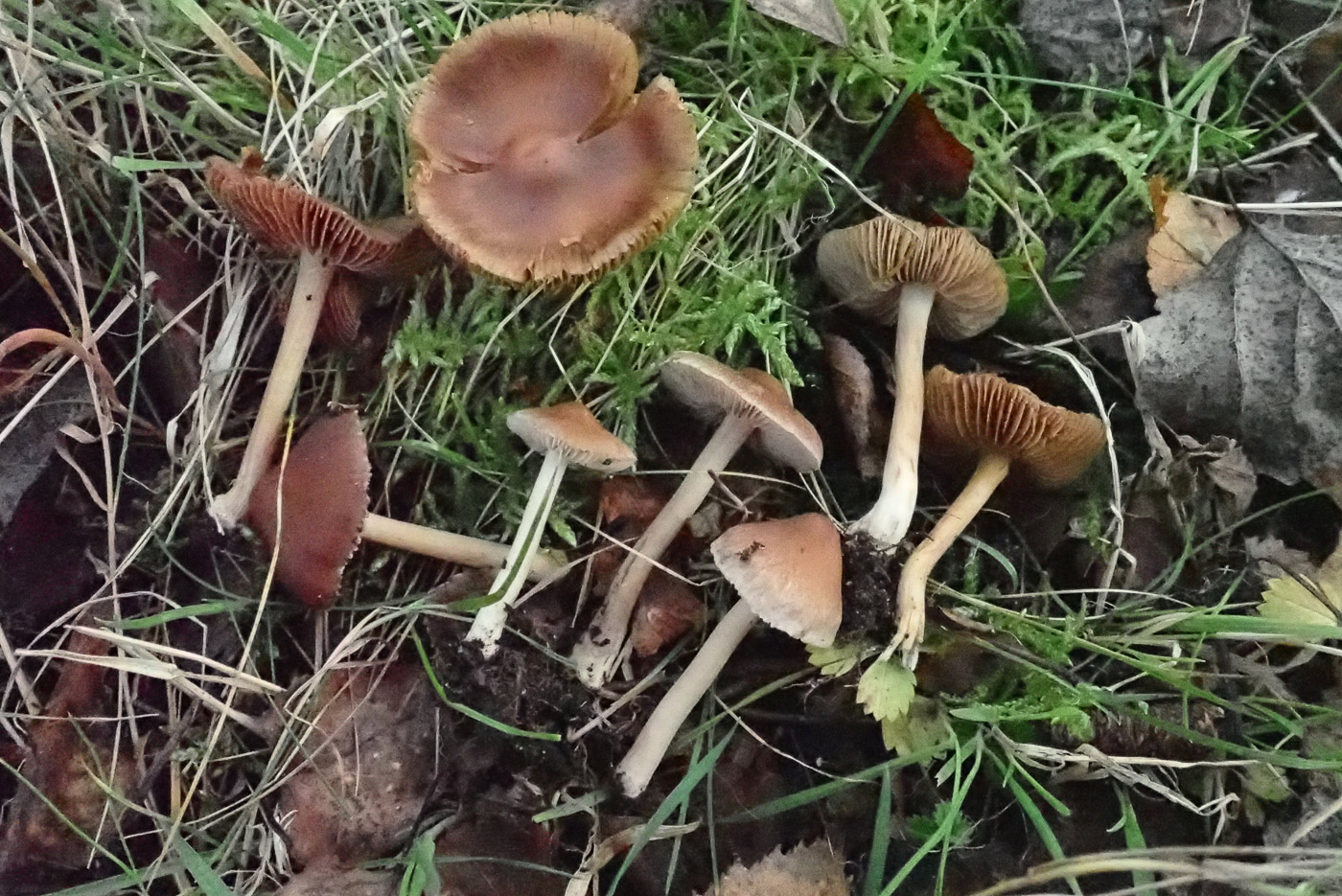
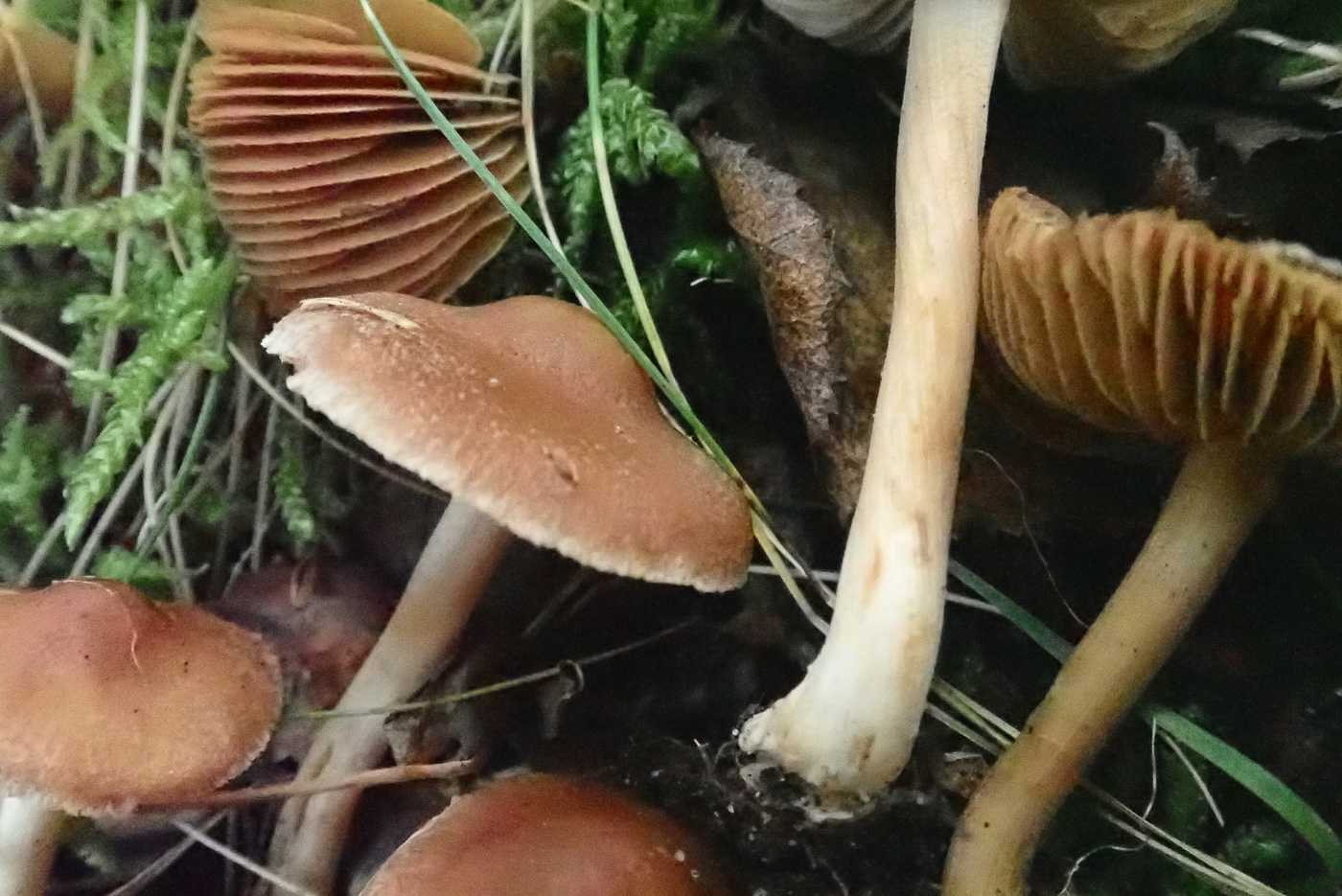 |
November 9th Inocybe lindrothii (a Fibrecap with no common name) 
In soil under Birch in a grassy glade at Burnham Beeches Penny found nice collections of several different mushrooms but the most exciting was this one - her target species. Last October she'd found this Fibrecap in the same glade, couldn't key it out so described and dried it and had it sequenced. It turned out to be the first UK record for the species, a member of a complex recently sorted out by European experts and apparently common in the Baltic countries under Birch. So far it's been found once since then elsewhere in the UK, so this is the third UK record - just an ordinary looking LBJ like many other Fibrecaps but she was delighted to see it again fruiting here in good numbers.
|
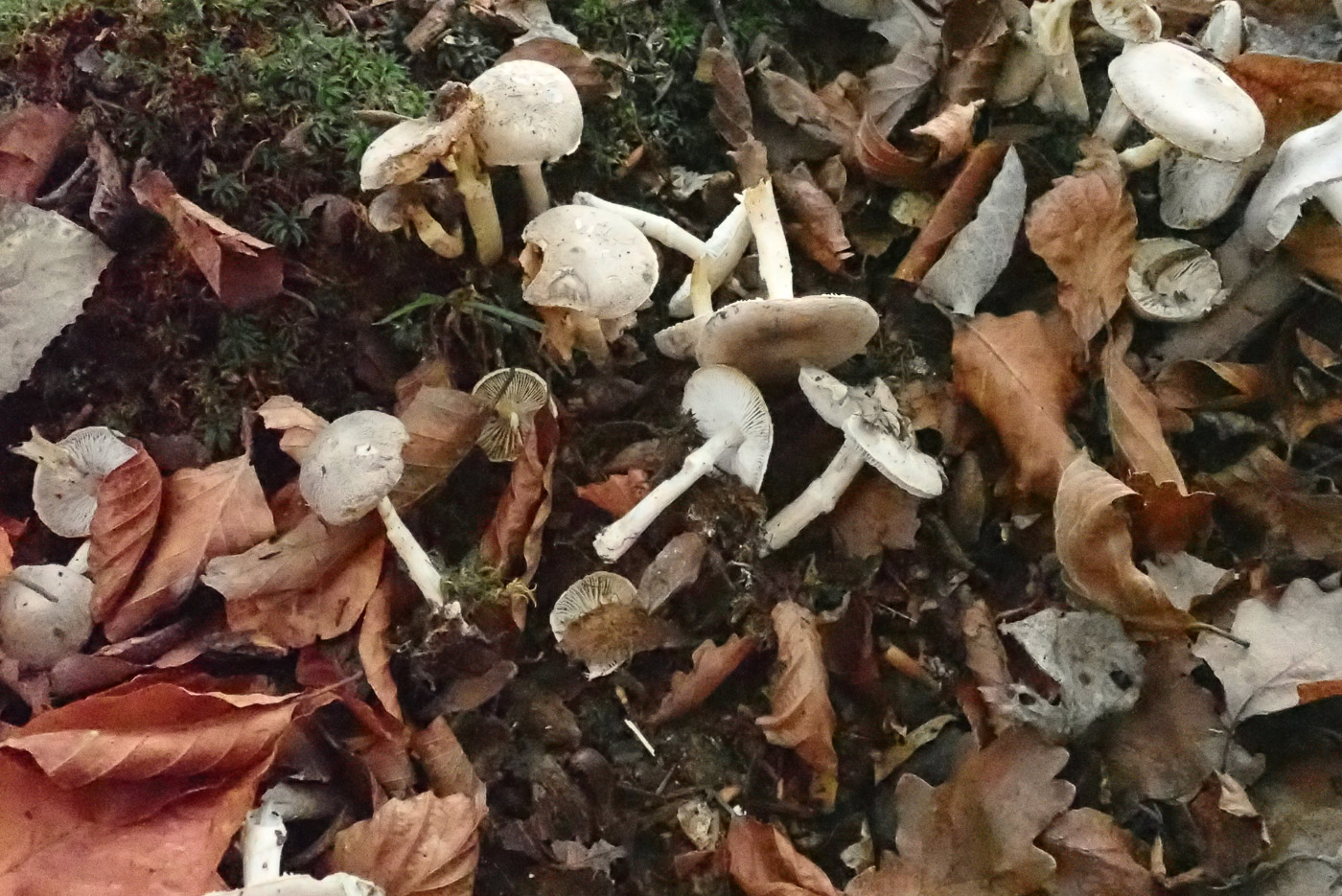
 |
November 9th Tricholoma cingulatum (Girdled Knight)
Under Willow at Burnham Beeches Penny found this species of Knight which - once you recognise its genus - is an easy one to name in the field. The two key features: its occurrence under Willow and (uniquely) the presence of a ring on the stem. There are many Knights having quite similar grey caps and a mealy smell, but noting the tree and the ring should be sufficient though on older specimens the ring can disappear so it's worth checking several to make sure.
|
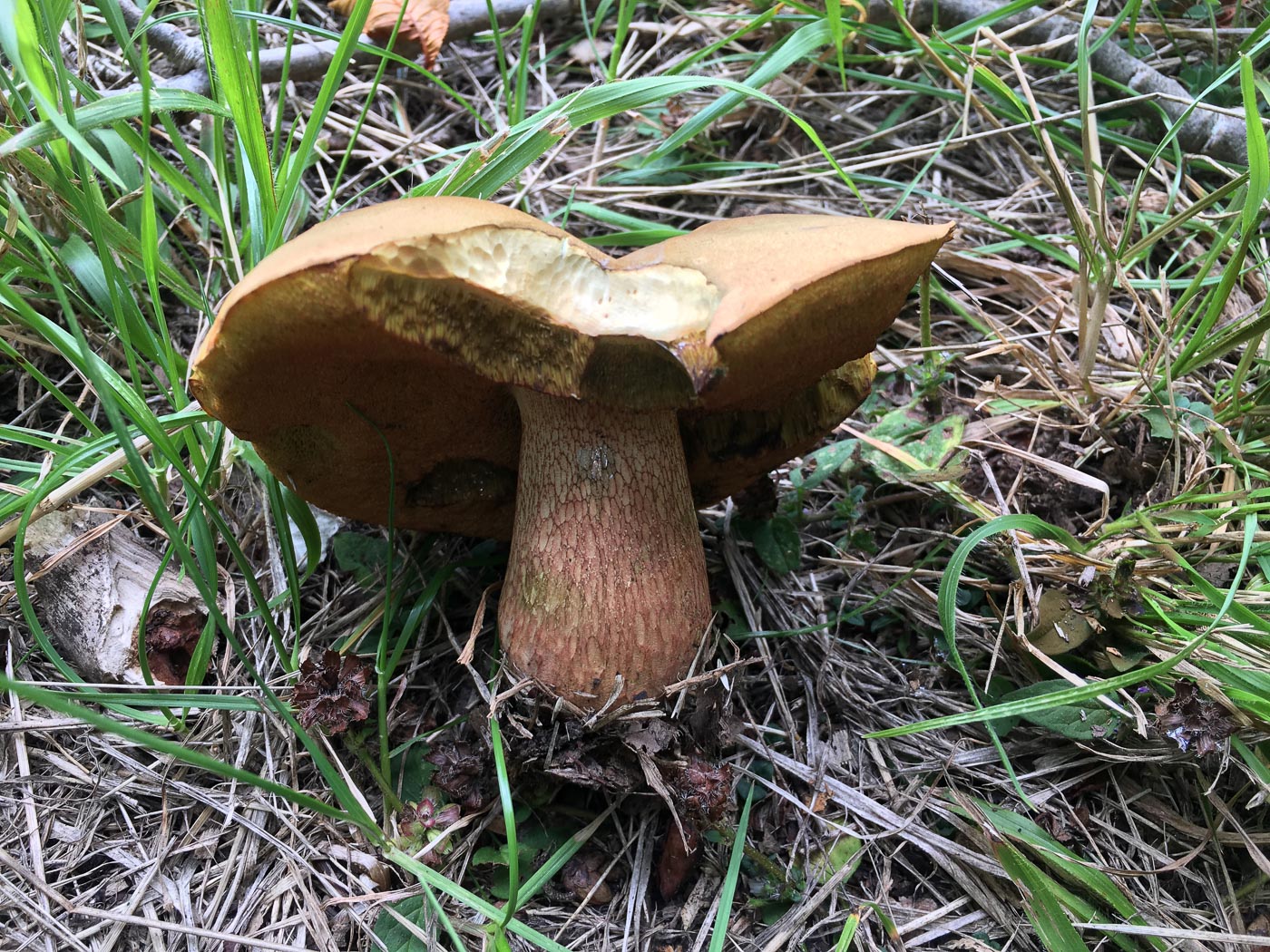
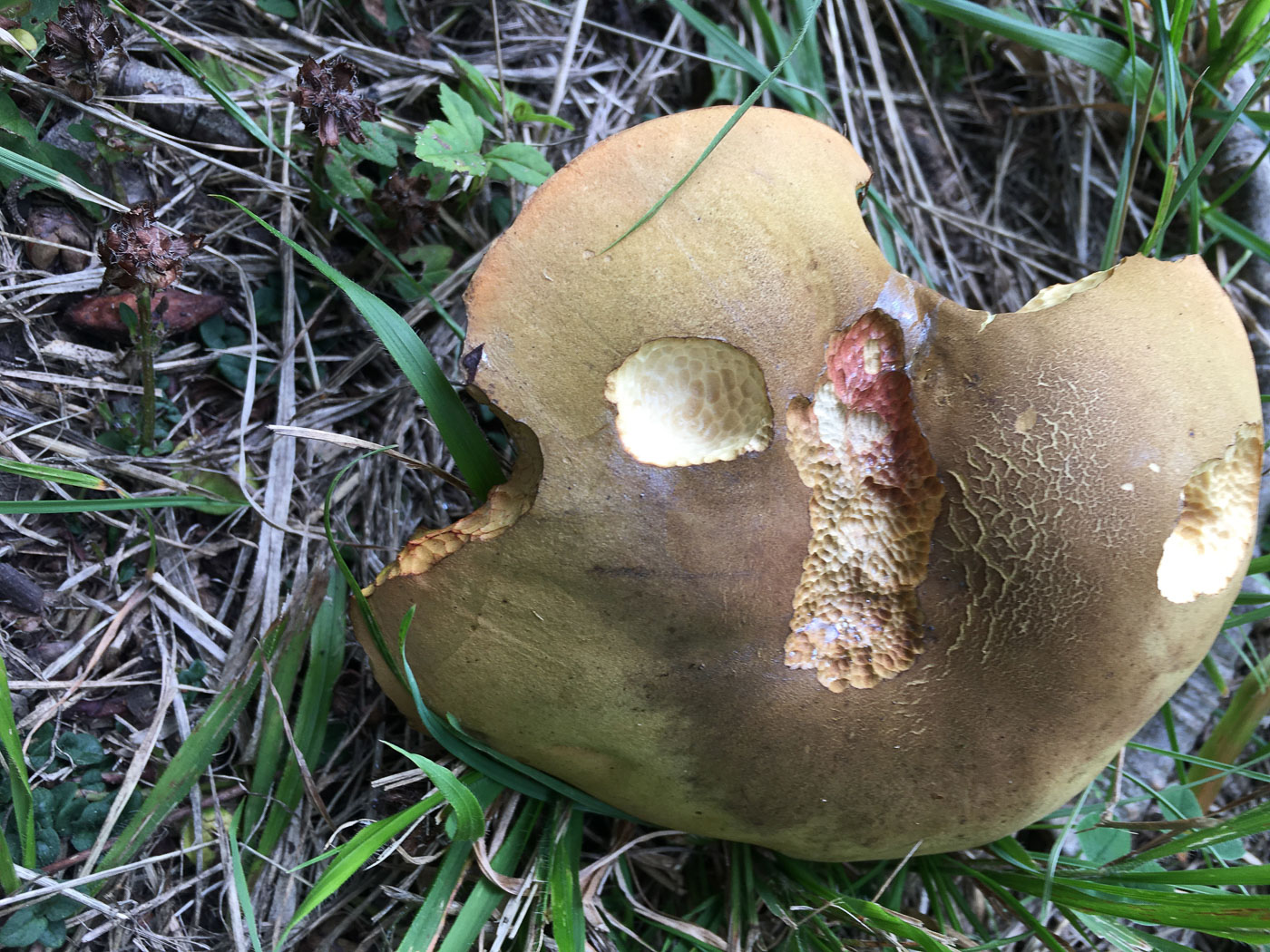 |
November 9th Xerocomus ferrugineus (a Bolete with no common name)
In soil under Birch in a grassy glade at Burnham Beeches Penny found this singleton and searched for a second to accompany it with no success. The cap was firmer than the much more common Xerocomellus species we regularly find, the surface was distinctly velvety with no cracking and also had olive green tones, the pores were bright yellow and failed to blue when pressed, the flesh (seen where the cap is nibbled) was white and not yellow, and the stem was more or less cylindrical and not enlarged at the top. All these feature point to this species rather than X. subtomentosus with which it is often confused.
|

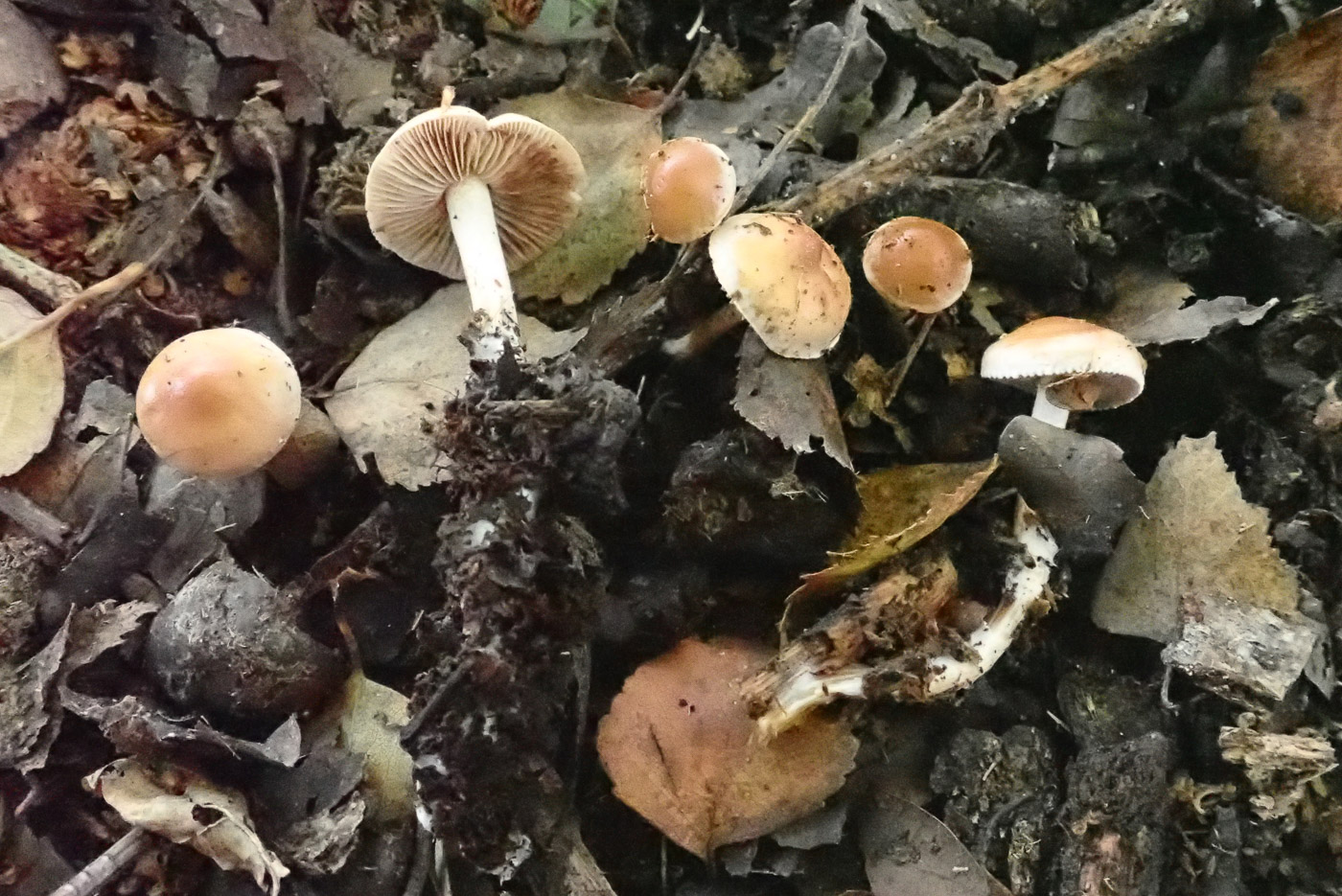
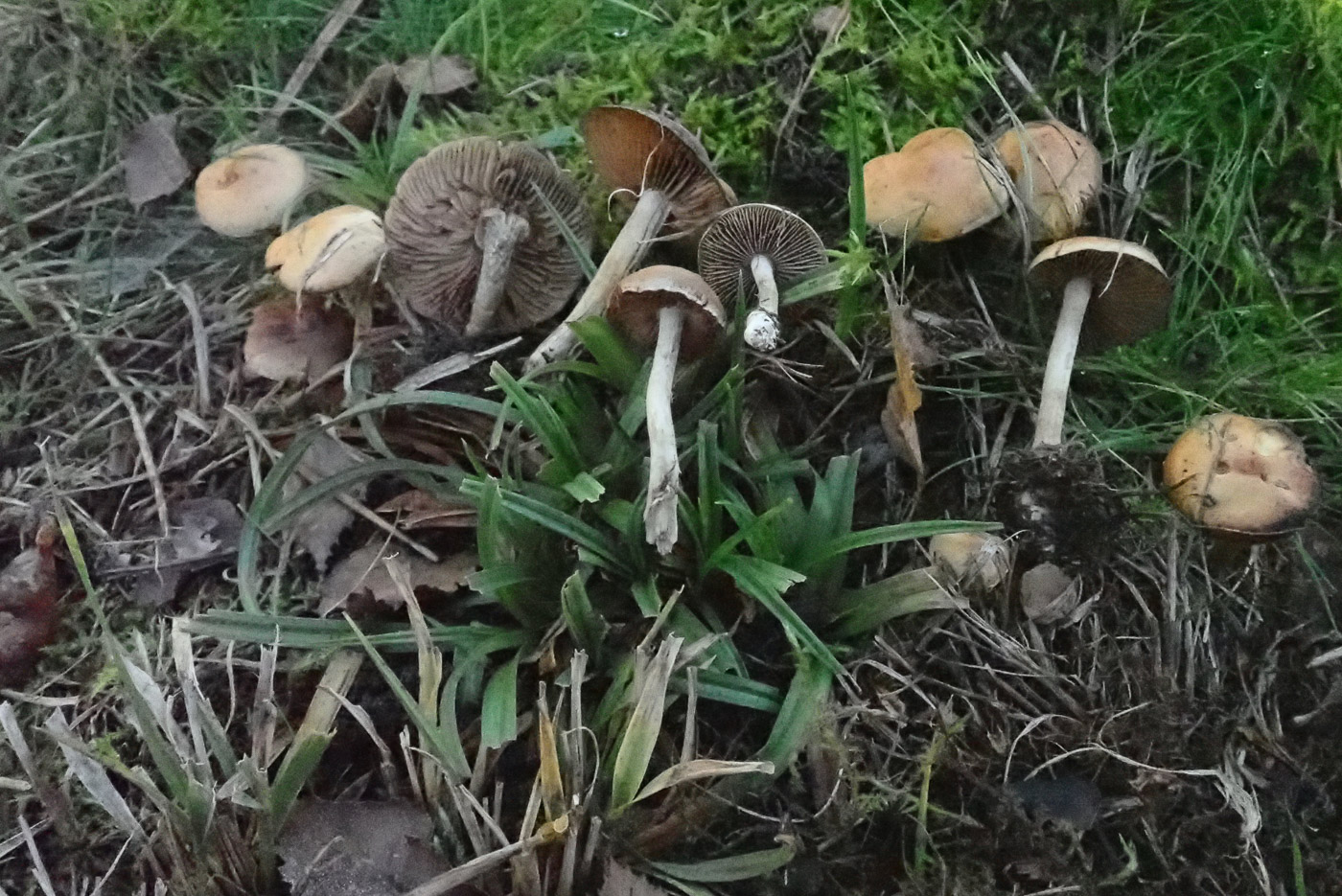 |
November 9th Hebeloma birrus (a Poisonpie with no common name) 
In soil under Birch in a grassy glade at Burnham Beeches Penny found the three small fruitbodies with distinctly two-tone caps and recognised them as probably one of several Poisonpies with this characteristic. At home the spores were ornamented, strongly dextrinoid and had a 'loosening perispore' (the outer surface tending to have bits detaching from it), and this together with the cylindrical gill edge cells and faint smell - not radishy as in many of this genus - led to the determination. Two days later at nearby Stoke Common she found further collections though some lacked the two-tone caps and on collection were thought to be something different. All were under Oak and had the same microscopic features, photo 2 having the two-tone caps but Photo 3 is of a collection on burnt ground, fitting fine checking the literature which described the species as sometimes with a two-tone cap but sometimes not!
|
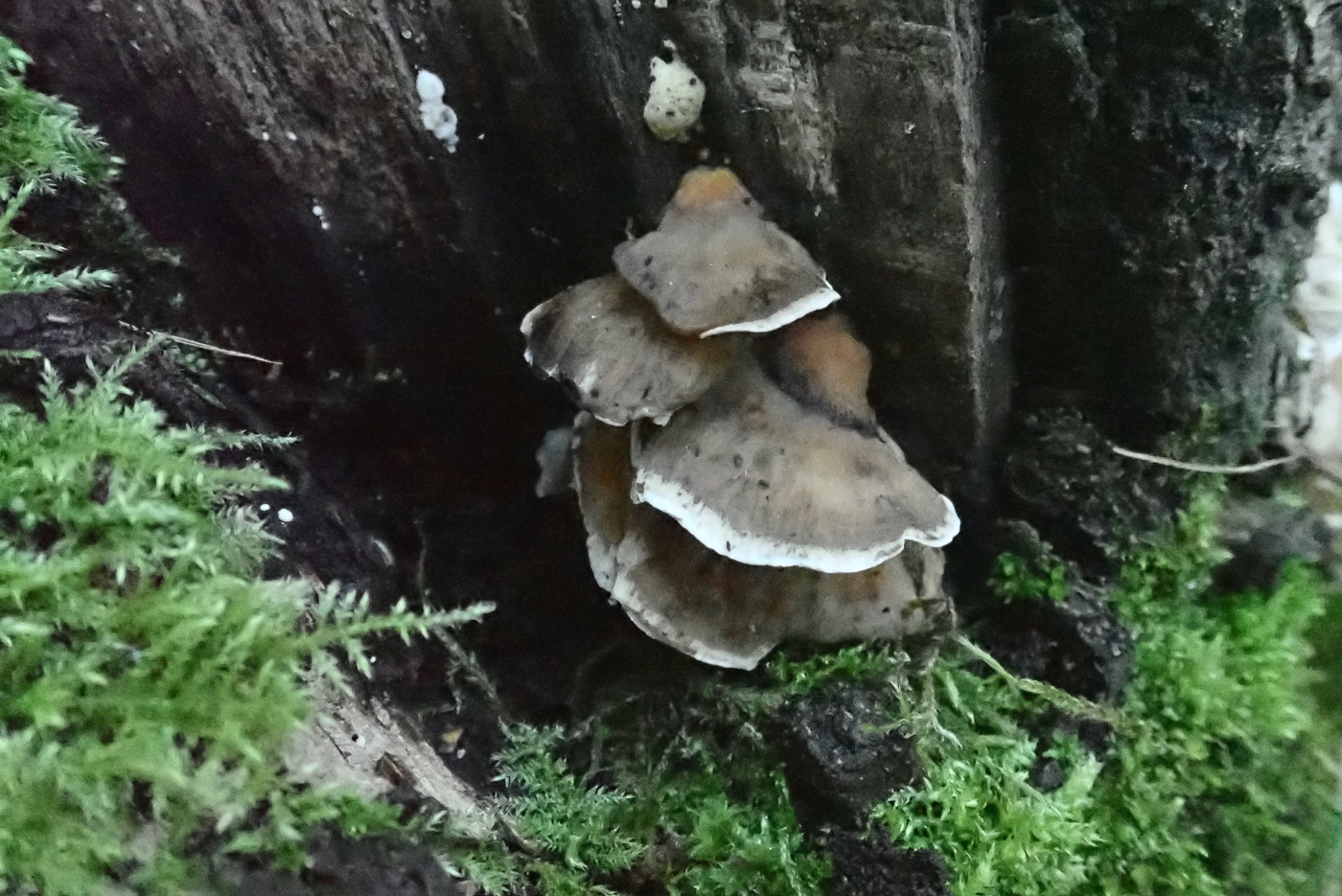
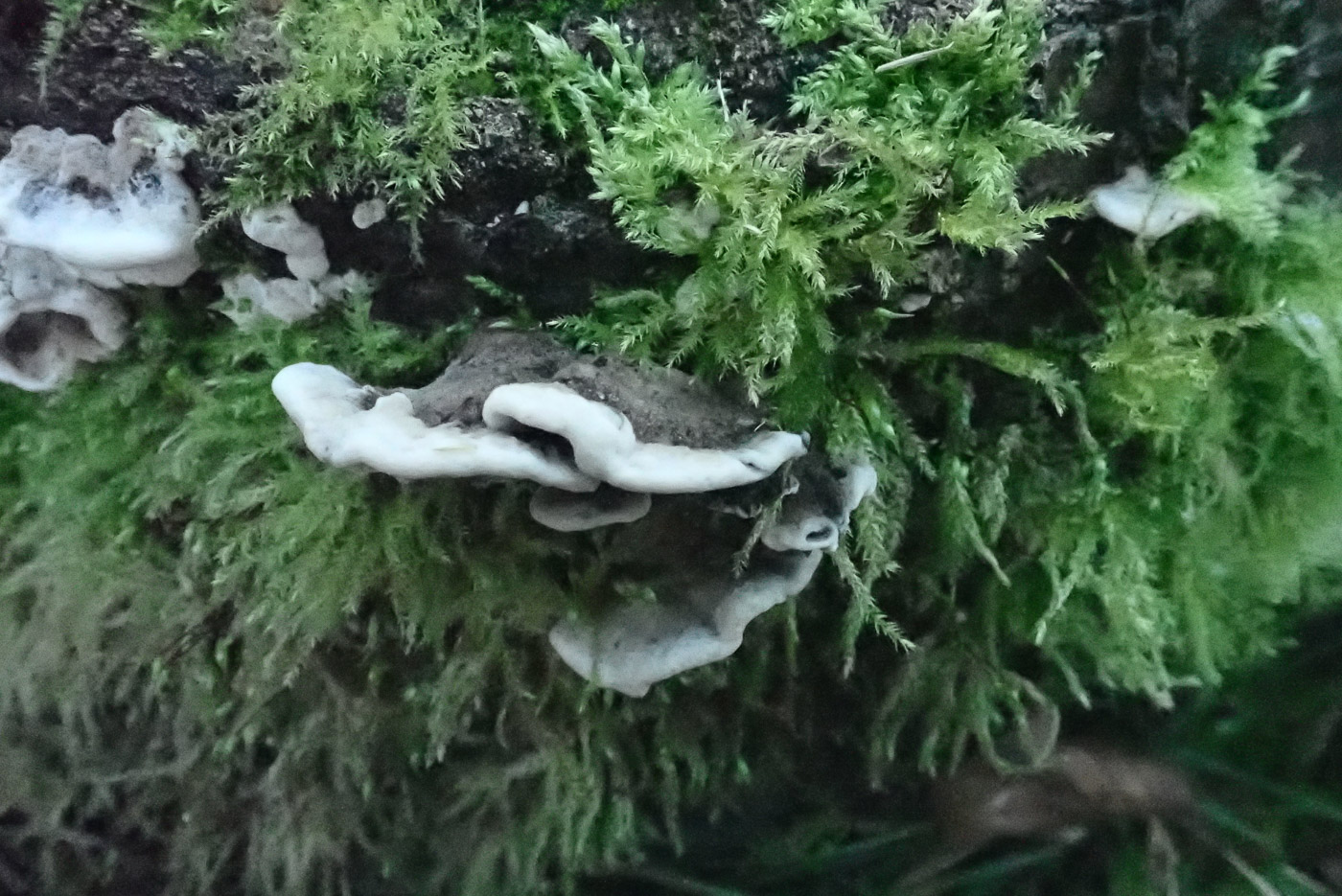
 |
November 9th Bjerkandera adusta (Smoky Bracket)
On a Beech stump in Burnham Beeches Penny found this species and promptly picked one to turn over and check that it wasn't the often very similar Trametes versicolor (Turkeytail), one of our commonest brackets. Both have a zoned upper surface though 'Bee Jay' - as it's sometimes referred to - is usually (but not always) a darker brown. The obvious difference is the undersurface - creamy white and clearly with pores in the Trametes but smoky grey, almost smooth with a white rim in BJ, the grey part bruising black when handled (see photo 3).
|

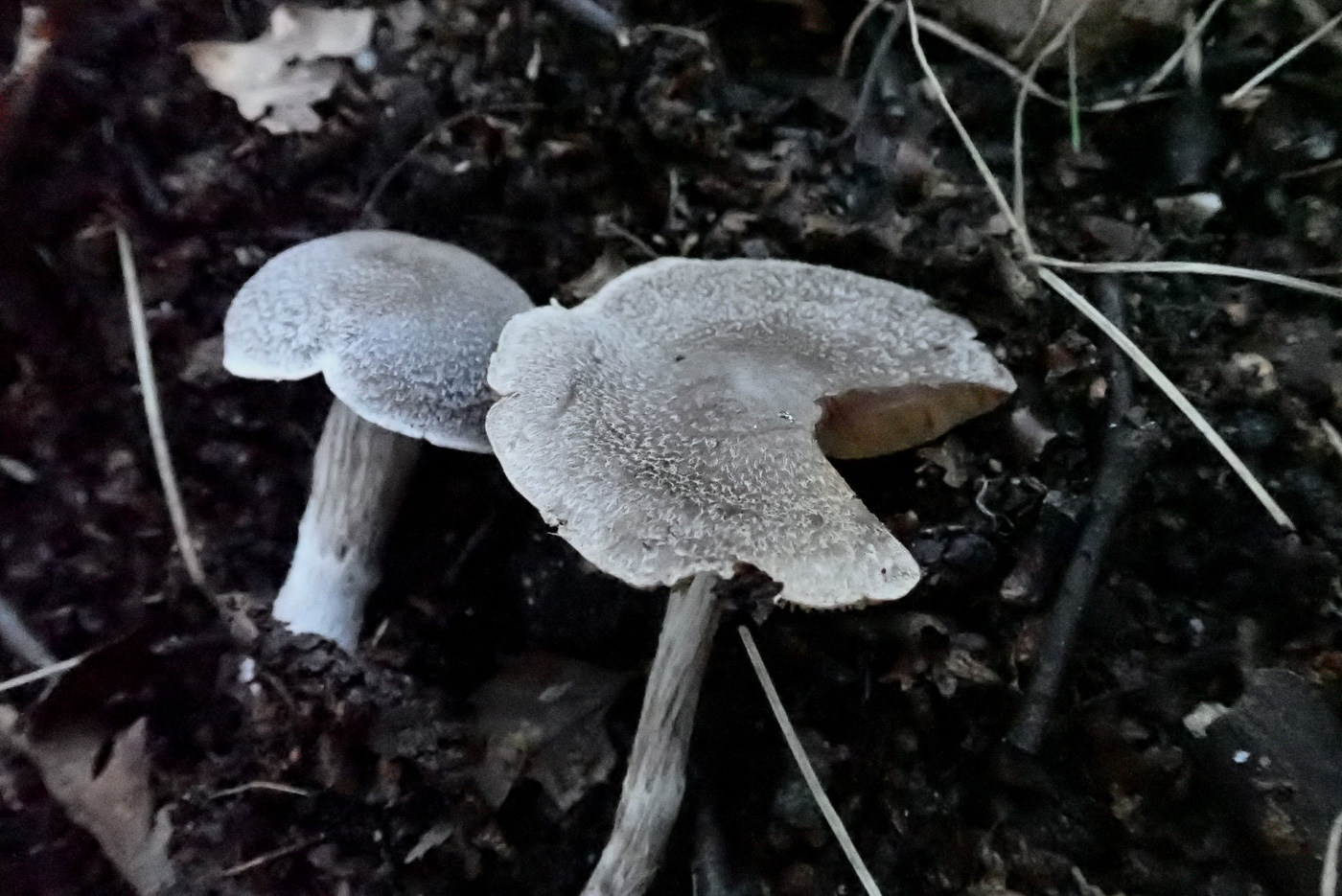 |
November 9th Cortinarius hemitrichus (Frosty Webcap)
In a grassy glade under Birch at Burnham Beeches Penny found just two specimens of this fairly common Webcap, one belonging to Section Telamonia but with a distinctive cap markings making it recognisable in the field. It is quite small, the cap can be pointed when young but later more rounded, and is grey brown with fine greyish flecks (ie frosted) particularly in the outer half - hence hemitrichus meaning half hairy. The gills are quite pale for the genus and it is host specific to Birch.
|
 |
November 9th Lactarius tabidus (Birch Milkcap)
In a grassy glade under Birch at Burnham Beeches Penny found several of these Milkcaps and tested the milk on a hanky which dutifully stained yellow in 10-15 seconds (just visible in the photo!). Though named after its main host tree, it can also occur under other deciduous trees and is extremely similar to L. subdulcis (Mild Milkcap), hence the handy hanky test which separates them: there's no colour change in L. subdulcis which incidentally has a distinct smell of L. quietus. (The test works better on cotton rather than paper!)
|

 |
November 9th Tricholoma saponaceum (Soapy Knight)
In a grassy glade under Birch at Burnham Beeches Penny found several groups of this quite common Knight, one that occurs under many different trees. It is medium sized for the genus, has a smooth rounded cap with greyish colours having a hint of olive green and often a paler edge as seen here. The gills are white and the stem also, though sometimes with bands of darker scales, seen in photo 2, when in some books named as var. squamosum.
|
November 6th 2021
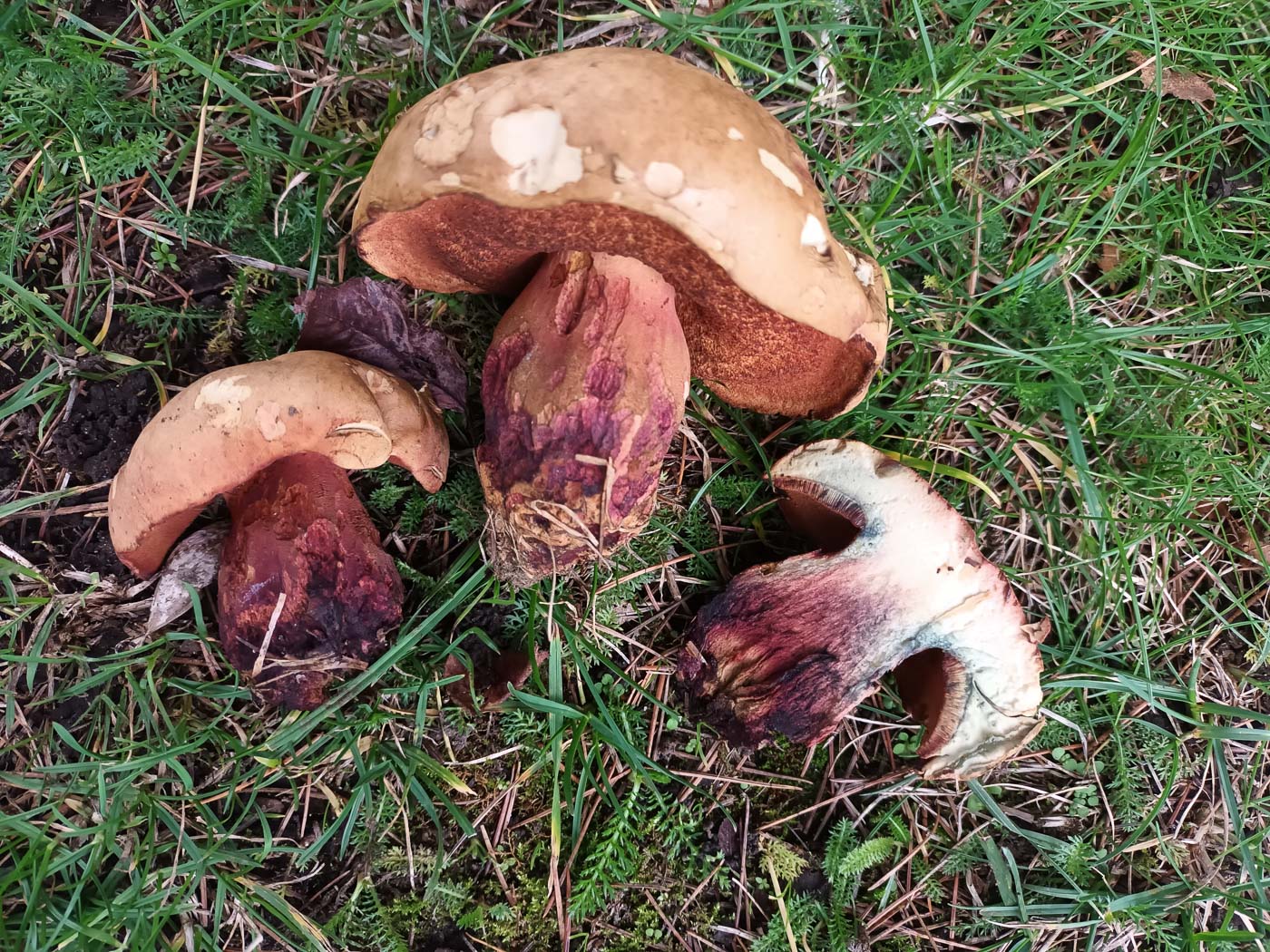 |
November 6th Suillellus queletii (Deceiving Bolete)
Under a Beech hedge in Beaconsfield Jesper Launder spotted this nice collection of an unusual Bolete - a genus remarkably poorly represented this autumn. Previously in the genus Boletus, one can only assume that the common name stems from its similarity to S. luridus (Lurid Bolete) which also has reddish pores but lacks the distinctive tapered rooting stem base where the flesh is deep beetroot red to blackish red. We have around ten previous county records.
|
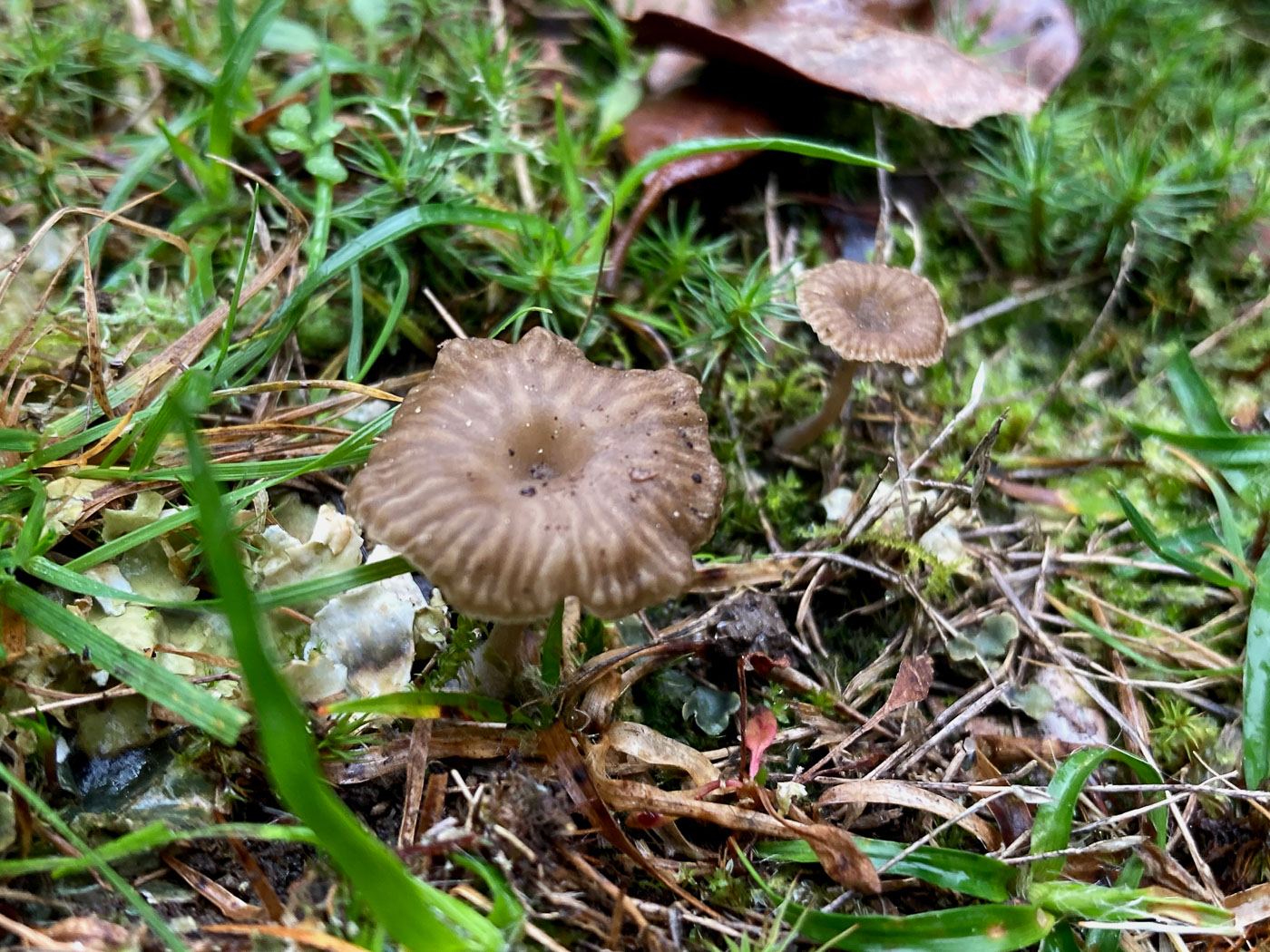
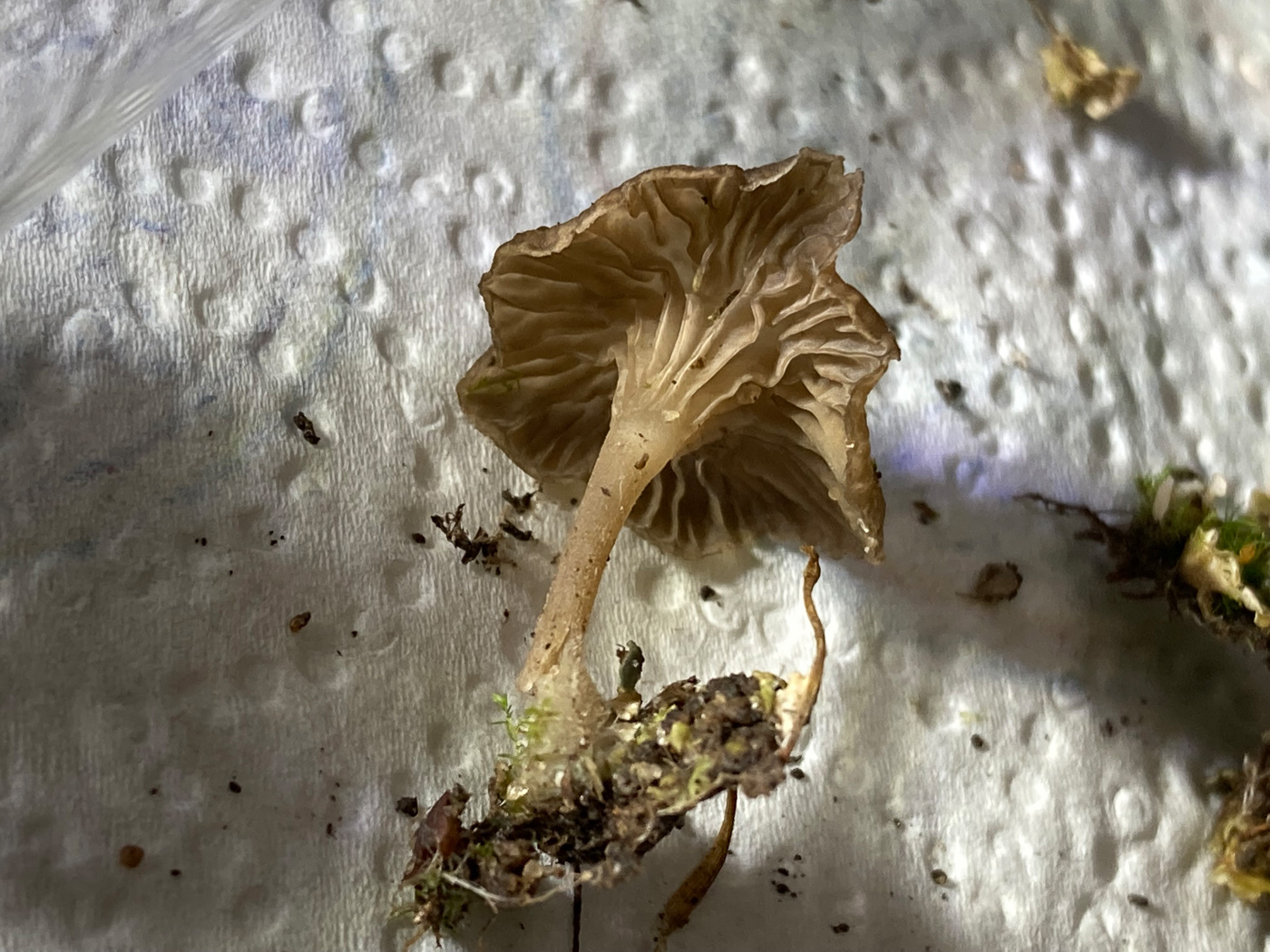 |
November 6th Arrhenia peltigerina (a rare Oysterling with no common name) 
At Cliveden Estate Russell Ness discovered this rare little 'Omphaloid' fungus found only in association with Peltigera (Dog Lichen species), here just visible amongst the mosses in photo 1. Photo 2 shows the distinctive strongly decurrent and widely spaced gills. New to the county and with not many UK records, this was an exciting find confirmed by microscopic characters by Russell later at home.
|
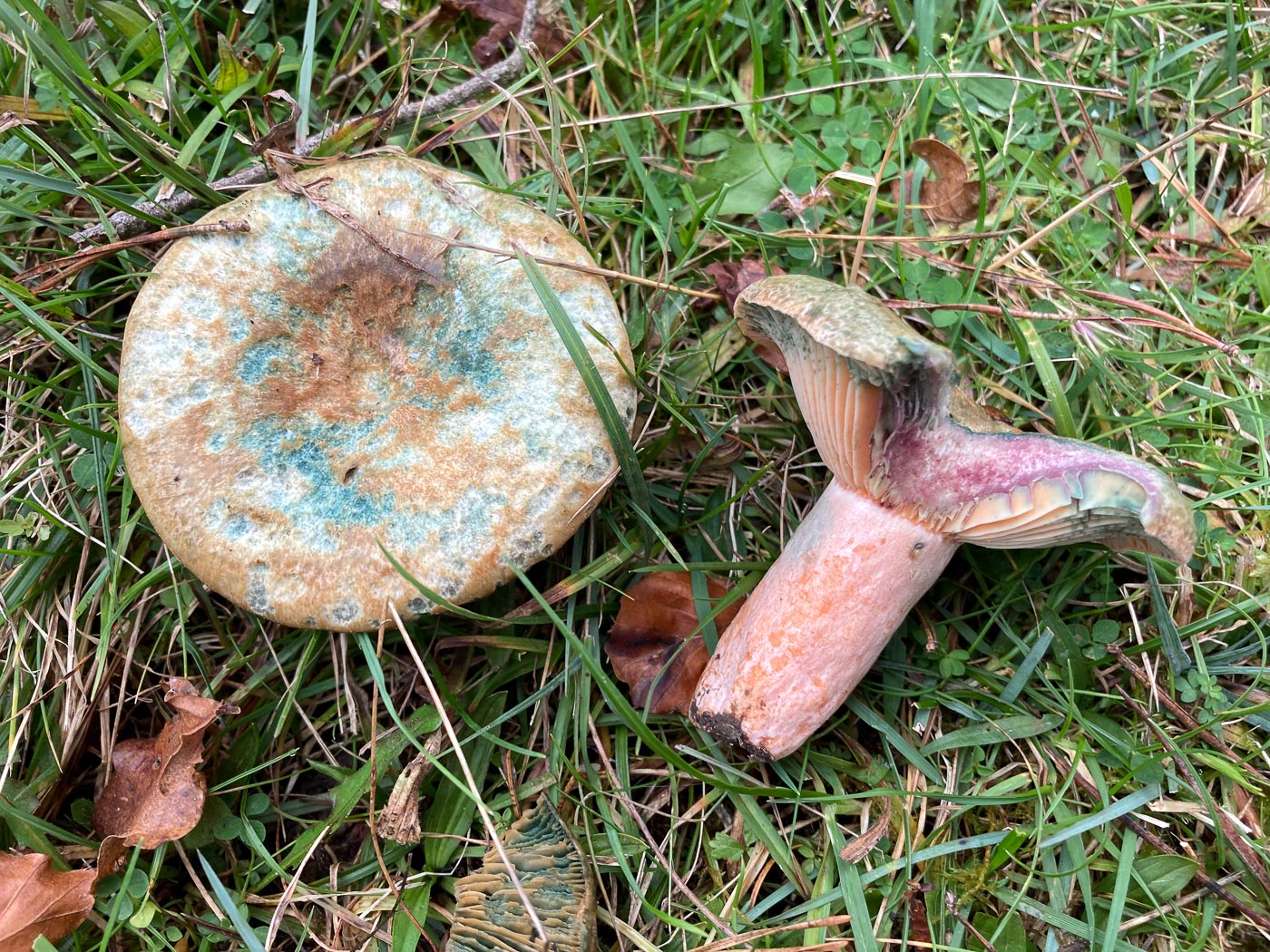
 |
November 6th Lactarius semisanguifluus Lactarius semisanguifluus
Under Pine at Cliveden Estate Russell Ness found some nice examples of this interesting Milkcap, a species very similar to the familiar L. deliciosus (Saffron Milkcap) - another Pine associate with orange milk - but milk and flesh both staining wine red within a few minutes of exposure to air. See also dated Oct 19th.
|
November 3rd 2021
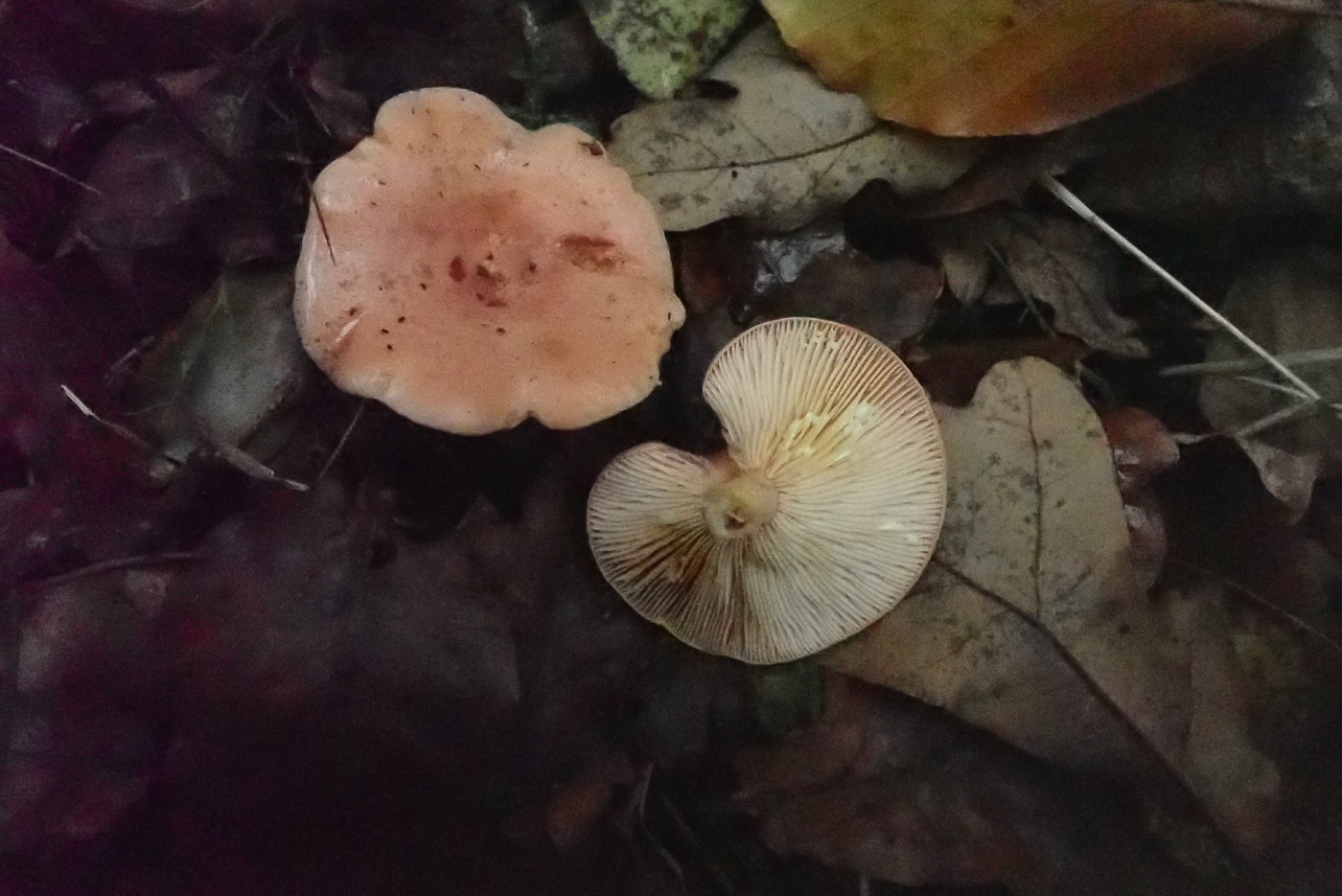 |
November 3rd Lactarius chrysorrheus (Yellowdrop Milkcap)
In Hodgemoor Woods Penny and Paul made sure they checked a certain Oak where this Milkcap often seems to fruit. Paul found two specimens - perfect! Much more common under Oak is L. quietus (Oak Bug Milkcap), having a mid brown zoned cap and a rubbery smell (known as the 'quietus smell' amongst mycologists). Today's species has a decidedly paler more pinkish cap though still zoned, but its key feature is its milk which turns bright yellow on the gills after a few seconds - no need for a hankie with this one!
|
 |
November 3rd Cortinarius anthracinus (a Webcap with no common name) 
In Hodgemoor Woods under mixed deciduous trees and in mossy litter, these very dark caps were spotted by Paul and then recognised by Penny. Not a common species but with a handful records from this site (only one from elsewhere), this is a member of the dreaded Section Telamonia of Webcaps which many mycologists understandably pass by as being impossible to identify. A few, however, have features distinctive enough to allow a suggested name which then needs checking with spores etc later. As its common name suggests, this small species has a cap almost black like coal in the centre but purplish red-brown towards the pale margin, the gills and stem being similarly coloured. It favours Beech and Oak but can also occur under conifers but is nowhere very common.
|
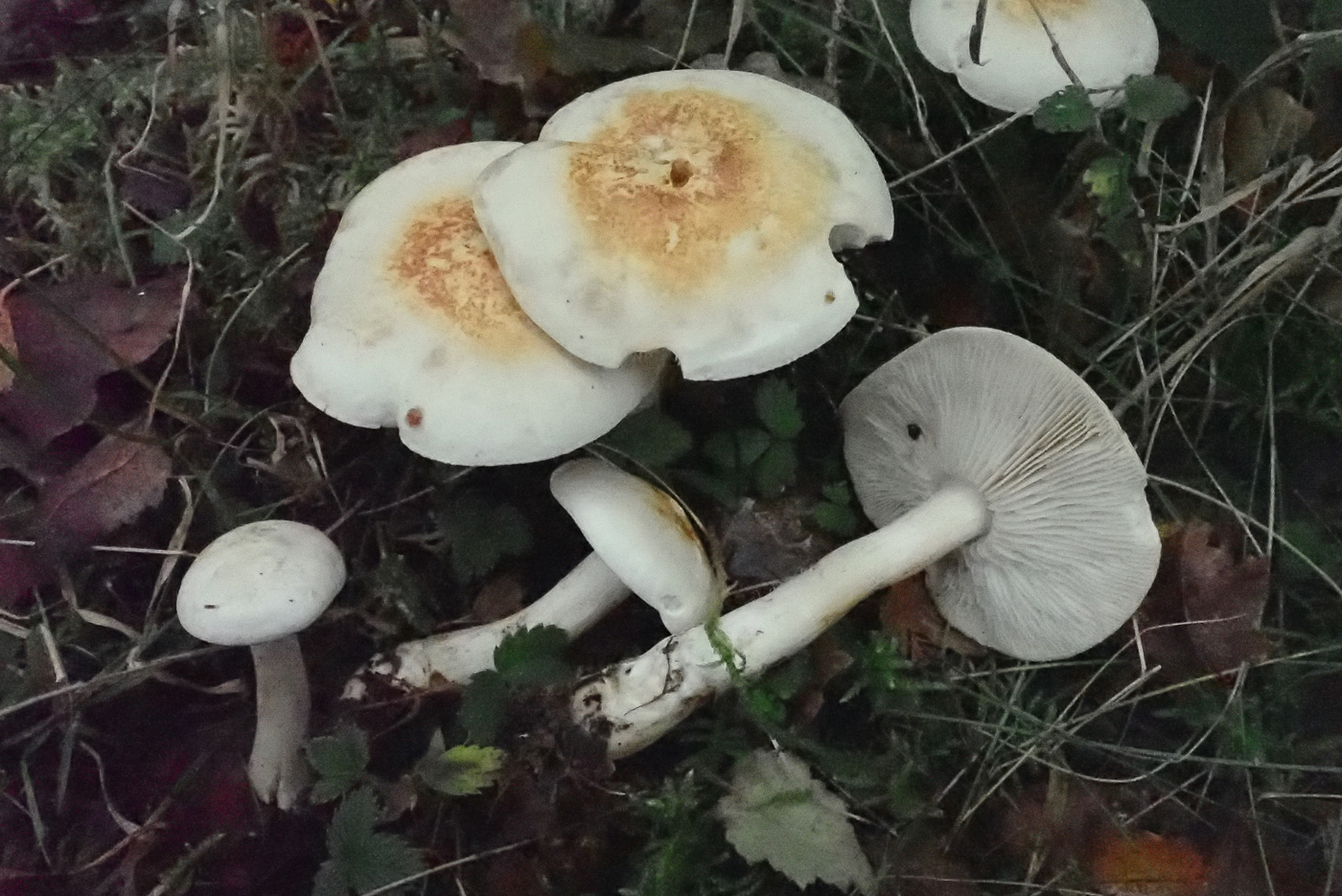 |
November 3rd Tricholoma lascivum (Aromatic Knight)
In a grassy path edge under mixed deciduous trees in Hodgemoor Woods Paul found a large patch of these substantial mushrooms, identified by Penny from a combination of features observable in the field but mainly the strong smell and the white cap but with brown marks developing in the centre. The white Knights are often confusing, especially in mixed woodland. If only under Oak and having a strong chemical smell then you have T. album, if only under Birch you have T. stiparophyllum, and if only under Beech you have T. lascivum - all three have a very similar pungent smell (but be aware that a white Knight without this smell could be T. columbetta!) Separating these three species if two or even all three of the host trees are nearby as here is often not possible! However, if Beech is one of the trees nearby and your larger caps are developing brownish marks at the centre then you have T. lascivum because the other two remain white.
|
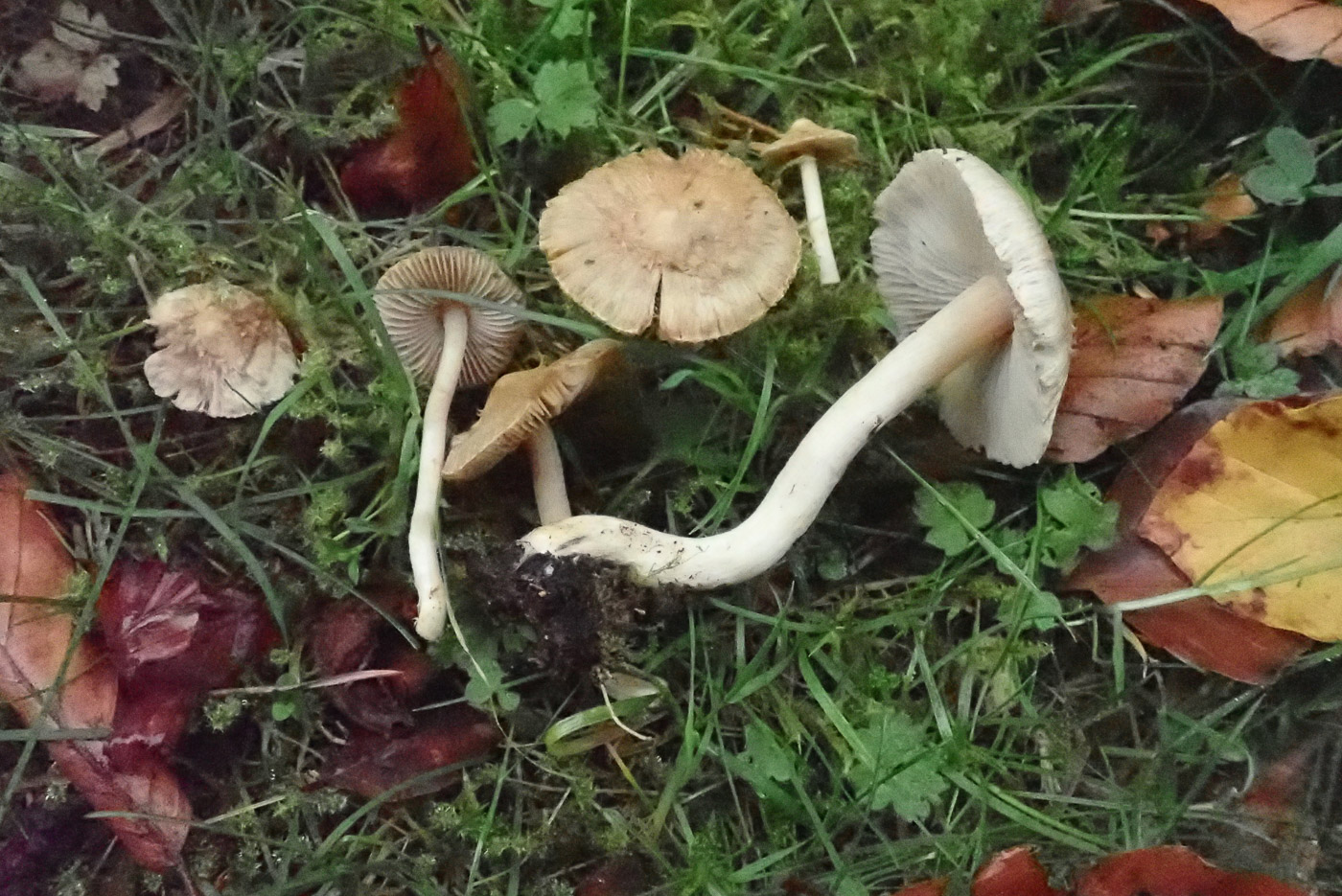 |
November 3rd Inocybe sindonia (Pale Fibrecap) 
In a grassy path edge under mixed deciduous trees in Hodgemoor Woods Penny found a collection of this fairly common Fibrecap and one which can be named in the field by those who know the genus well. There are only a few members of this large genus which have pale beige caps, this being the commonest and having very long thin cystidia (cells on the gill) which have thick yellow walls which makes it a fairly quick check with a scope.
|
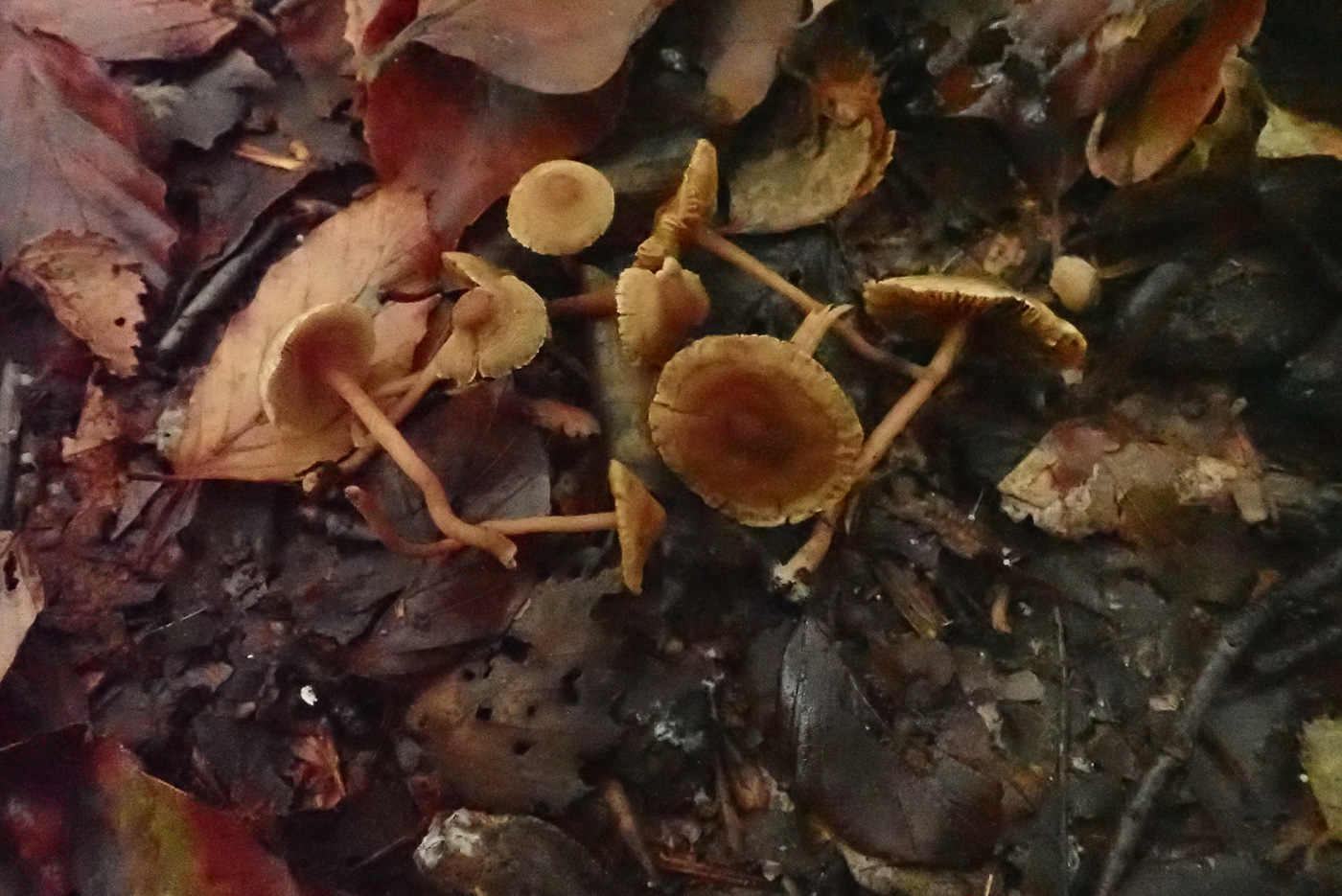 |
November 3rd Inocybe petiginosa (Scurfy Fibrecap) 
In the Beech litter in Hodgemoor Woods there were many patches with this unassuming little LBJ, found by Paul and identified by Penny. This is one of the smallest Fibrecaps and also one which is likely to be misidentified unless checked with a scope - when its amazing nobbly spores and bright yellow cystidia leave one in no doubt! This could just as easily be a species of Tubaria or Flammulaster (incidentally which I mistook it for at Bittam's Wood but luckily checked it at home). It was unusual to see it in these numbers, considered an occasional fruiter under Beech and less frequently Oak.
|
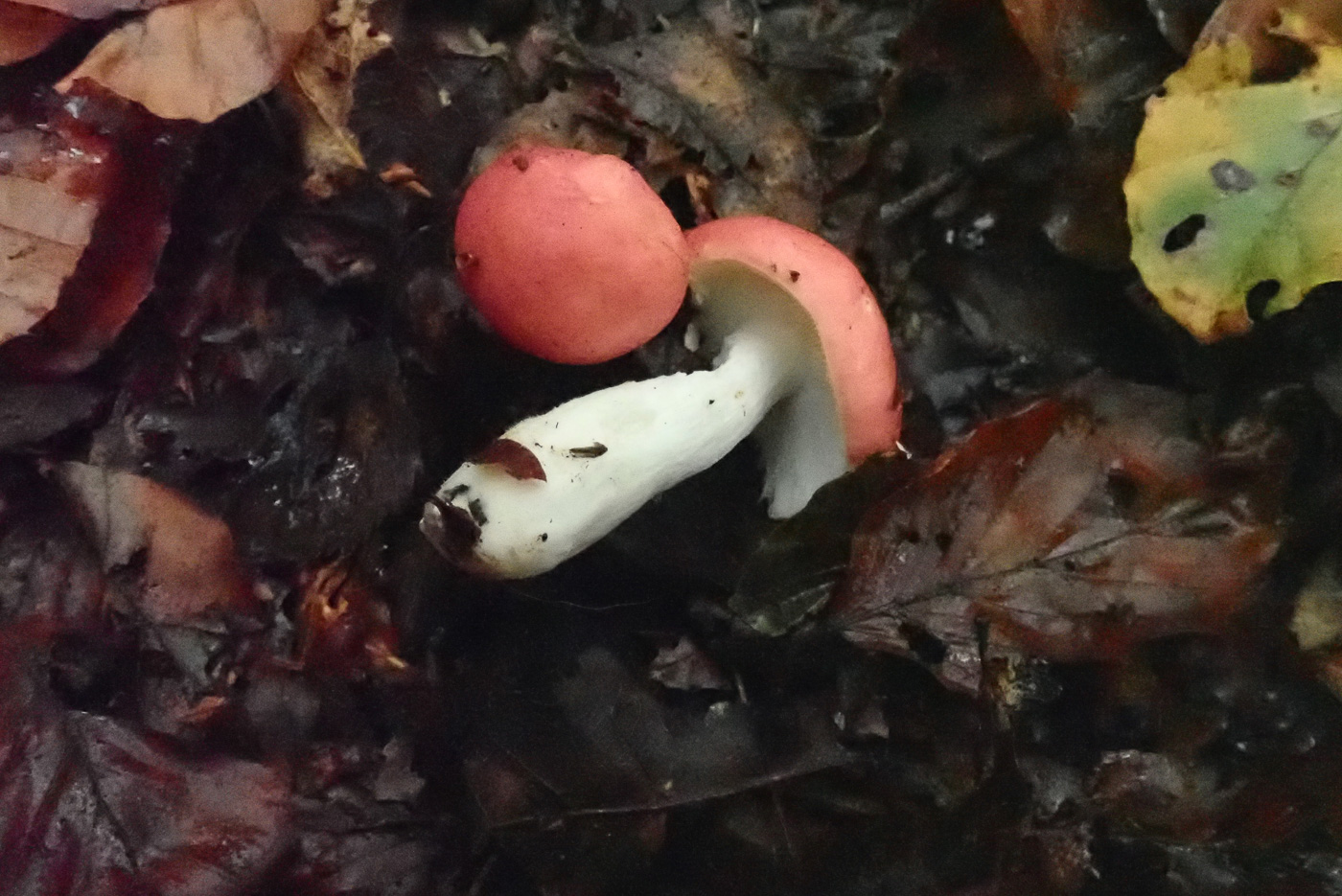 |
November 3rd Russula nobilis (Beechwood Sickener)
Penny found this common Brittlegill under Beech in Hodgemoor Woods though like many of this genus it has been scarce this autumn. Told from other red-capped species by its pink-red cap which when peeled at the edge reveals pink flesh beneath, it has white gills and stem and is only found under Beech.
|
 |
November 3rd Lactarius blennius (Beech Milkcap)
In Hodgemoor Woods Penny found several specimens of this common Milkcap though, like the Brittlegill above, it has not been that common recently. Only found under Beech, it has quite a pale olive grey to buff cap which typically has mottled darker dropletlike markings around the edge and in wet weather, as here, is very slimy. The gills are cream and 'milk' is copious but turns olive grey on the gills as it dries. It is easily confused with L. fluens, another Beech associate which has a very similar set of characters but lacks the droplet markings and typically has a pale margin.
|
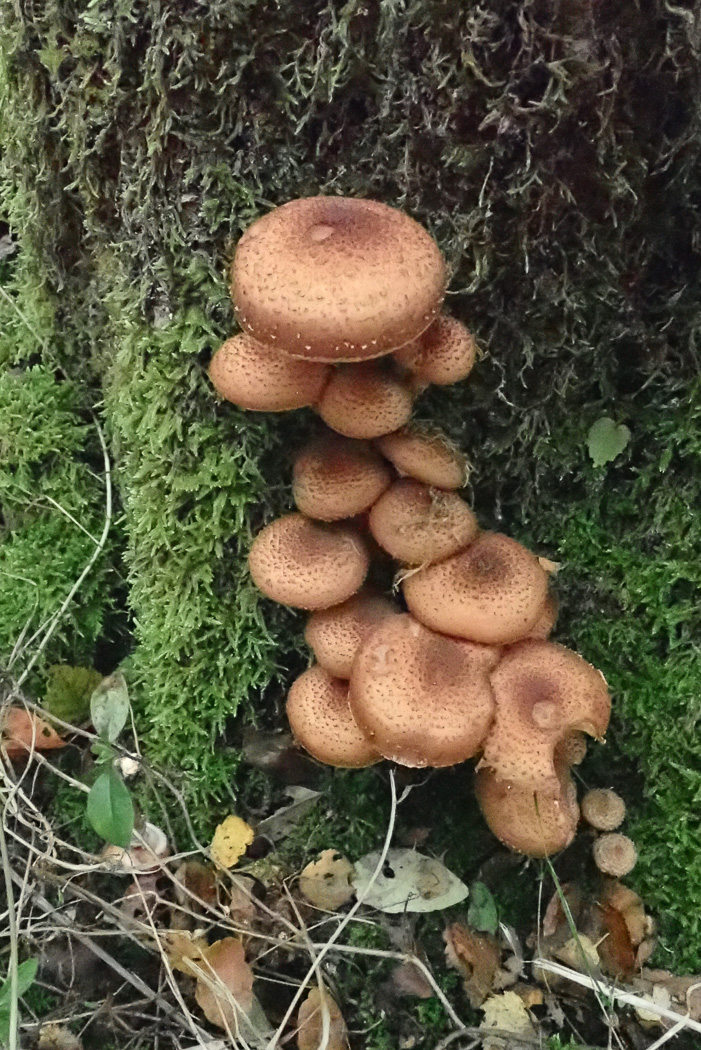
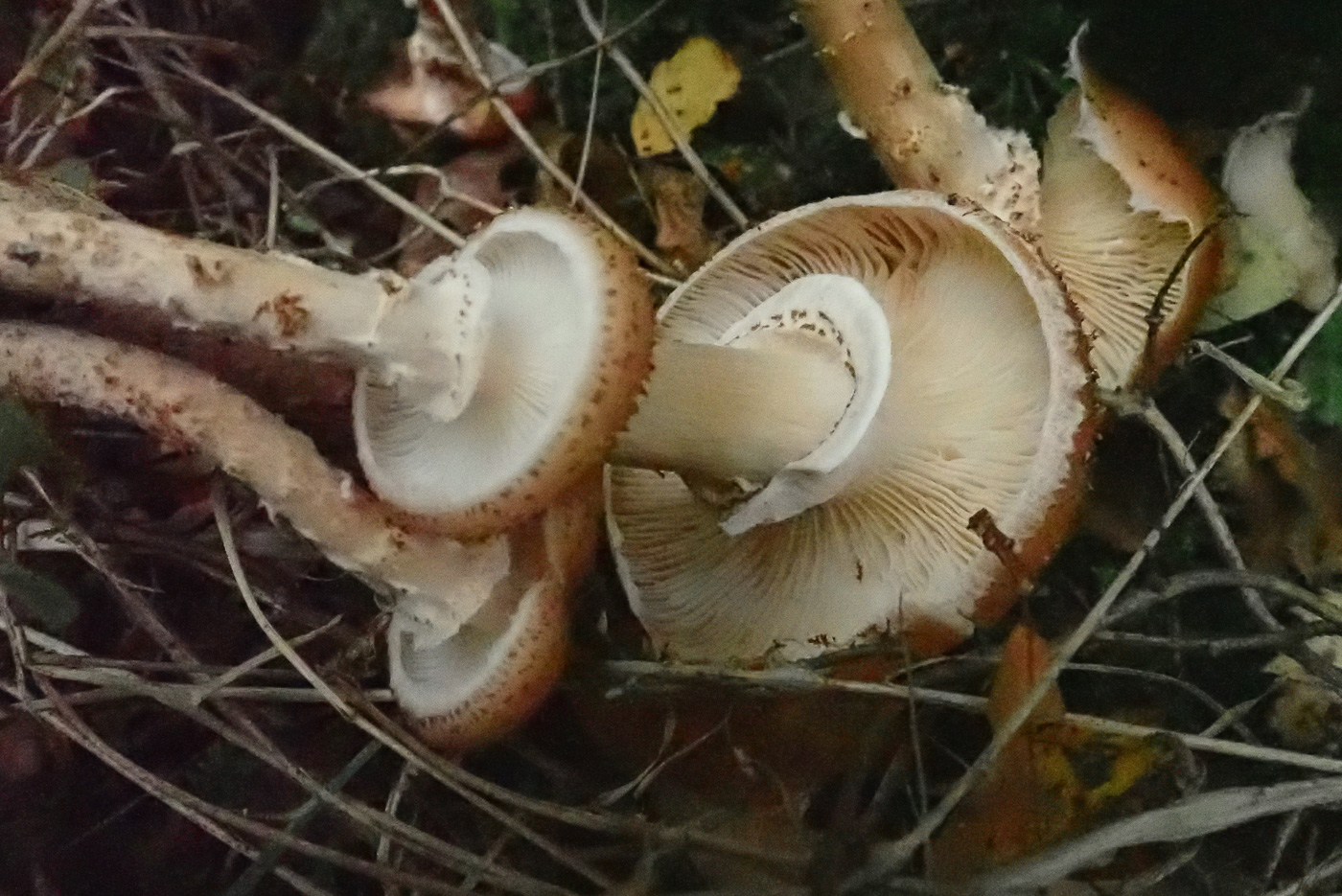 |
November 3rd Armillaria ostoyae (Dark Honey Fungus)
In Hodgemoor Woods Penny came across this clump of mushrooms on an Oak stump and at first glance thought it was a species of Pholiota but on second glance realised it was probably Honey Fungus. Turning one over to check the underside revealed semi-decurrent cream gills (too pale for Pholiota) and a ring with dark scales on its undersurface typical of this species - much less common than A. mellea or A. gallica. The cap is also darker than the other two mentioned with darker scales there too. Thought to occur mainly on conifer, it seems just as happy on deciduous trees and grows in tight clusters at or around their base.
|
November 2nd 2021
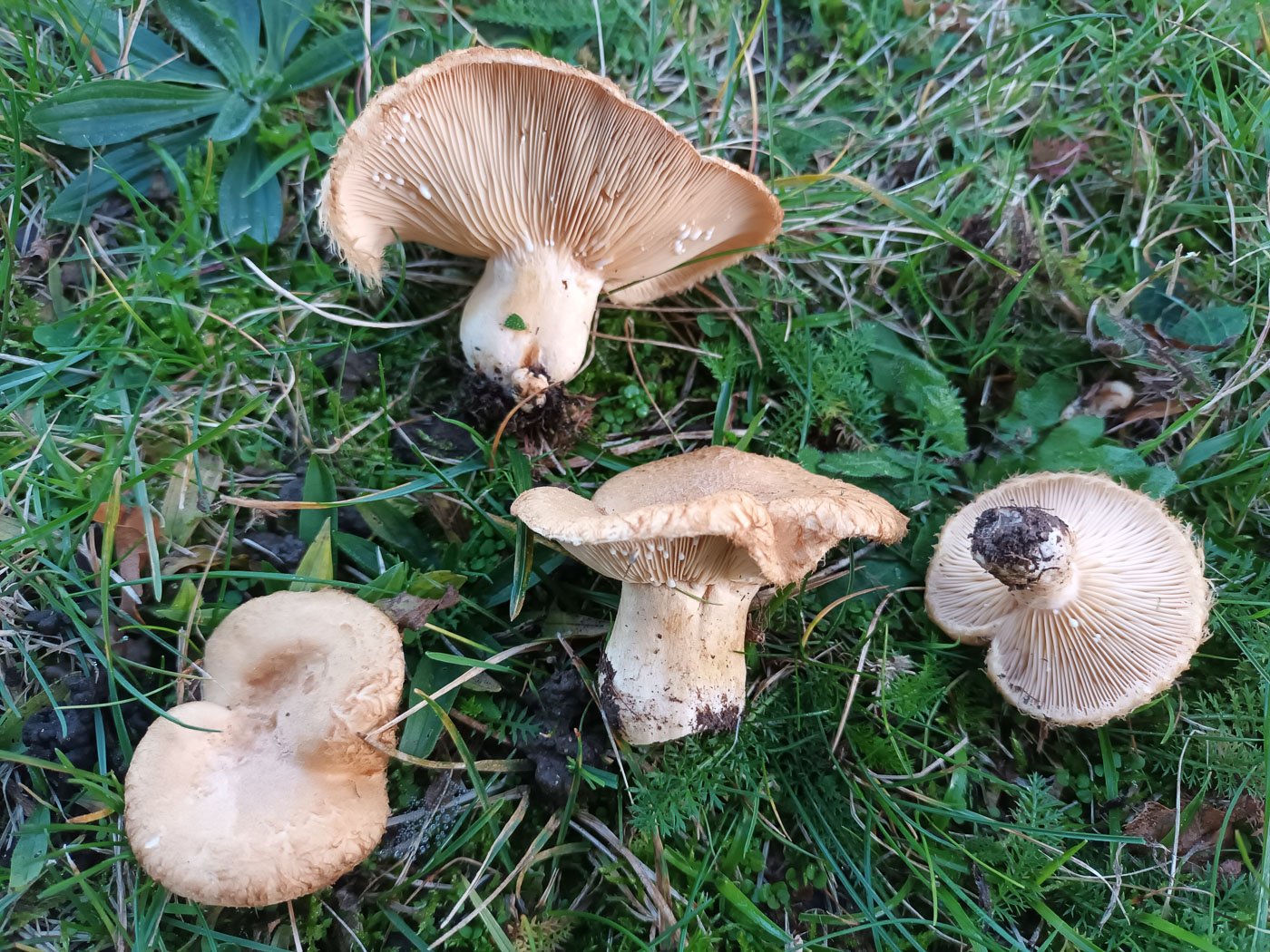 |
November 2nd Lactarius mairei (Whiskery Milkcap)
In Chalfont St. Peter under Oak Jesper Launder found this rare Milkcap which appears to be new to the county and has been on the Red Data list with under 80 UK records. There are only four 'hairy' capped Milkcaps: all are quite pale, three are found only under Birch, L. torminosus and L. pubescens being quite common and the third found only in Scotland, but today's species is only under Oak and has a distinctive fruity smell similar to that of Pelargonium leaves. The hairy cap margin is clearly visible in Jesper's photo. This was a special find.
|
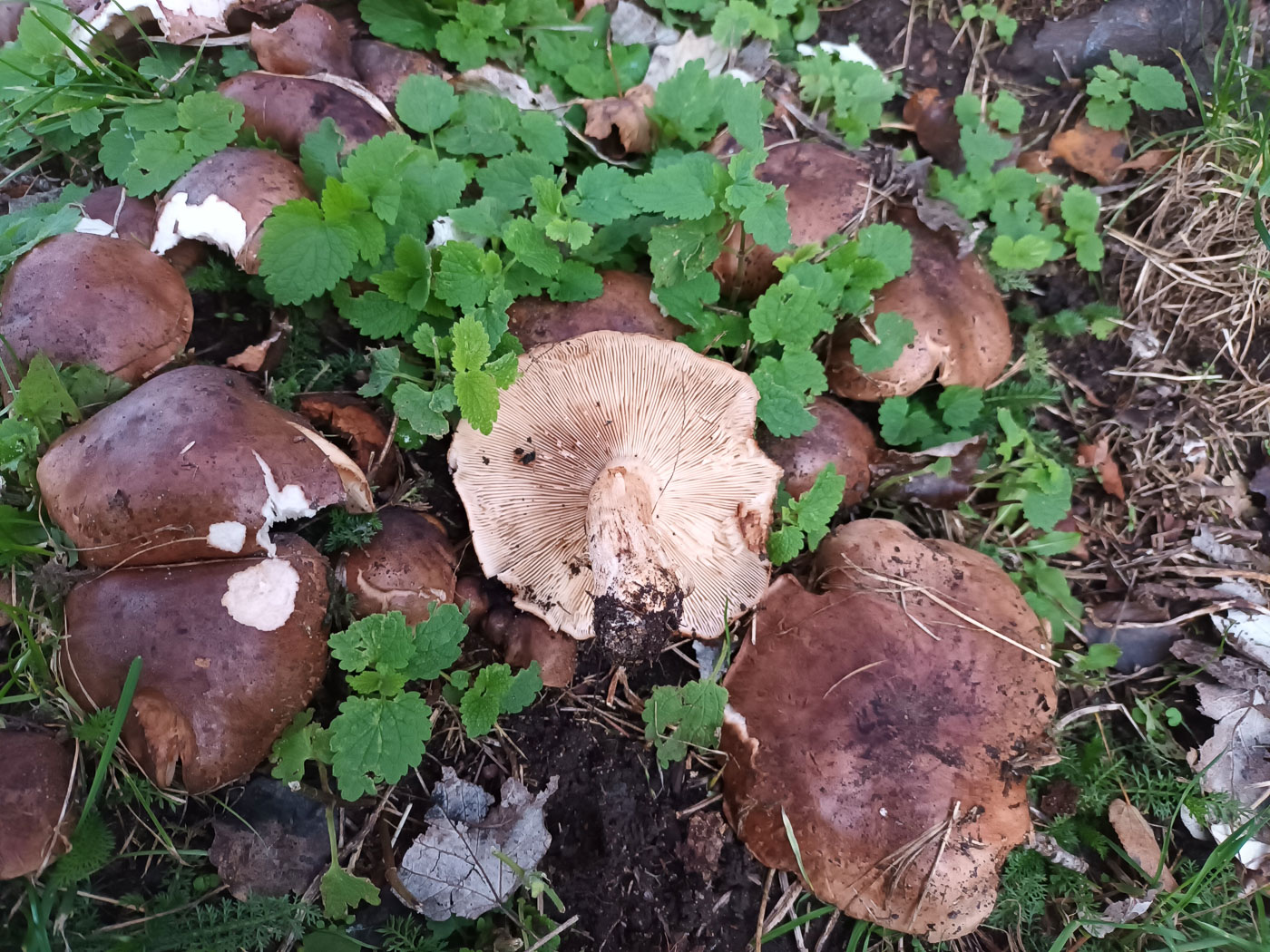 |
November 2nd Tricholoma populinum (Poplar Knight)
Under Poplar in Chalfont St. Peter Jesper Launder found this unusual Knight. The species was - we thought - new to the county when it turned up at Burnham Beeches last year, but Jesper knew of today's site from previous years and says he knows it from various other local spots as well, where it can grow in abundance. So it sounds as if its not that rare but has just been missed before. It only occurs under Poplar species including Aspen, so is one to look out for when amongst those particular tree.
|
November 1st 2021
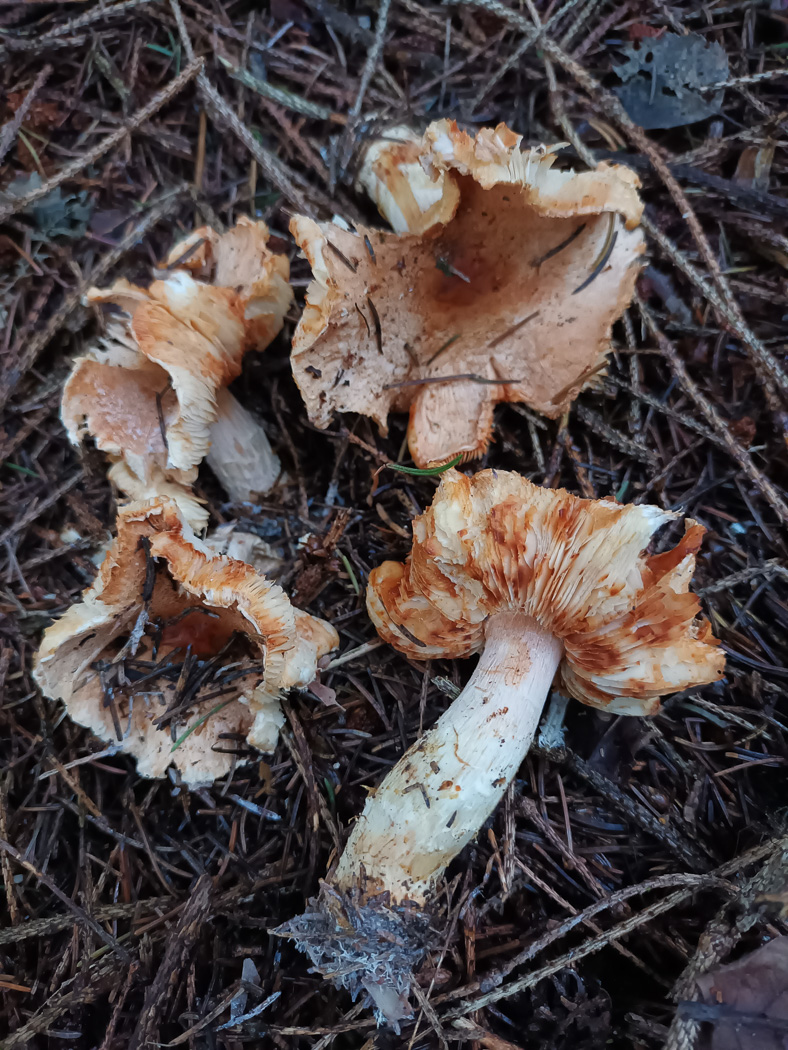 |
November 1st Lepiota ochraceofulva (a Dapperling with no common name) 
In a small conifer plantation near Chalfont St. Peter Jesper Launder found this collection of rare Dapperlings, this being a species we appear to have no county records for. It occurs mainly in the south, most records from under conifers, but is not at all common. It can be seen from his photo that the specimens were past their best but are still displaying the brown cap centre with ochre to orange cap colours and free gill which tend to darken to ochre also. This is a species which lack a distinct ring on the stem but usually retains some signs of irregular bands below the ring zone.
|
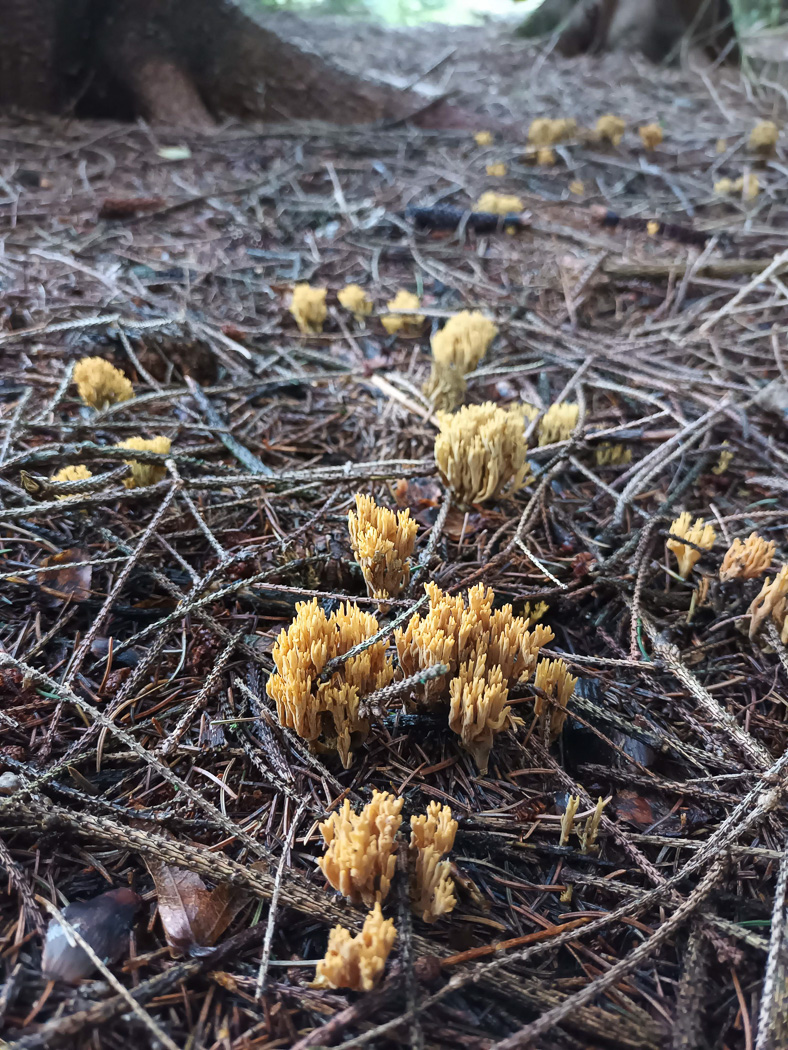
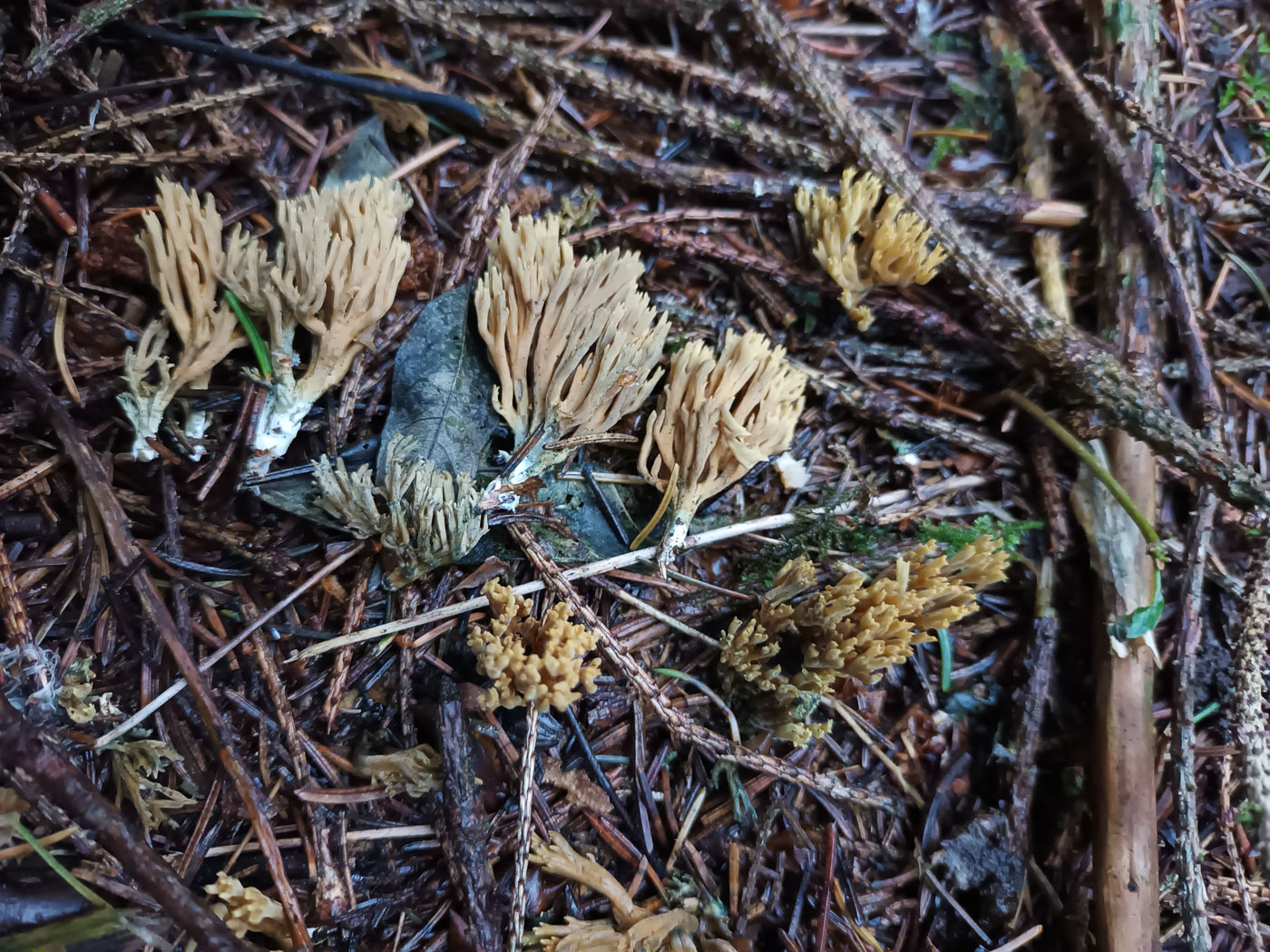 |
November 1st Ramaria abietina (Greening Coral)
In a small conifer plantation near Chalfont St. Peter Jesper Launder noticed several patches of this Coral, took his photo and then noticed on closer examination that they were turning green - a sure sign that this was not the common R. stricta (Upright Coral) but a much more unusual and interesting species. As its common name suggests, this is a species of conifer litter, found under Spruce, Pine and Fir, and once the green staining is noted there is little doubt about its indentity if the habitat is correct.
|
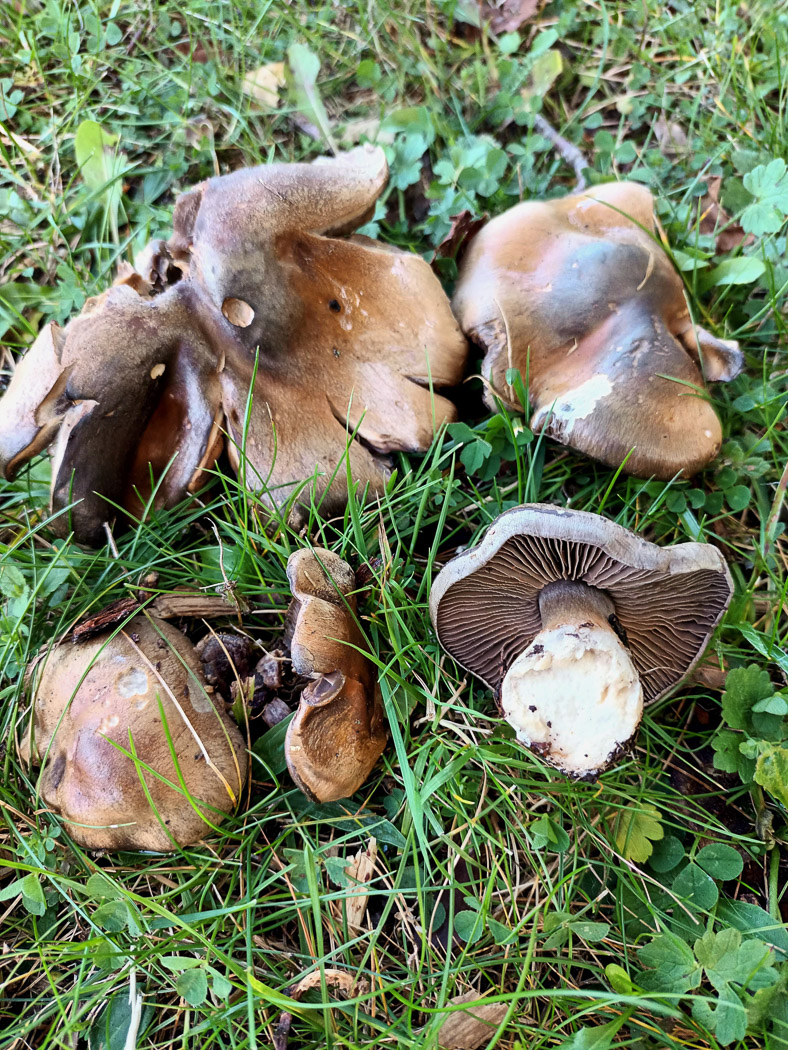 |
November 1st Cortinarius infractus (Bitter Webcap)
Under Oak in Jordans Village Jesper Launder found this unusual Webcap - one for which we have only a handful of records though this is likely to be due to it going unrecognised when found as are many members of this extremely difficult and large genus. Belonging to Section Phlegmacium, it has a sticky cap but a dry stem and can be recognised by its dingy greenish grey colours, particularly the gills. It has a bitter taste and roundish spores and is known from under both deciduous and coniferous trees, even with Helianthemum!
|
October 31st 2021
 |
October 31st Cortinarius delibutus (Yellow Webcap)
In Egypt Woods Russell Ness found this occasional Webcap, one that associates with Birch. It is a graceful species belonging in Section Myxacium (having sticky to slimy caps and stems) and the cap tends to be a pale cream to buff greyish shade of yellow, the gills are violaceous at first but soon rusty, the stem is violaceous at the top (seen here) but below this yellowish, the whole fruitbody being sticky and in wet weather decidedly slimy.
|
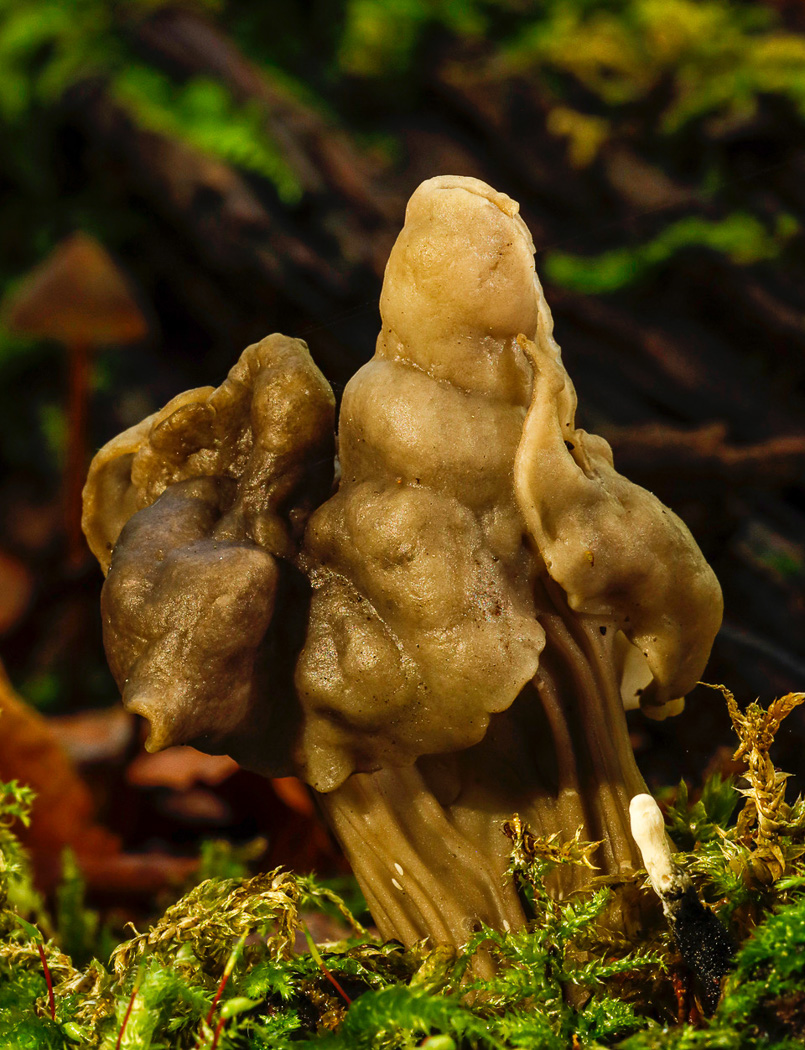 |
October 31st Helvella lacunosa (Elfin Saddle)
In Widdendon Wood John Catterson found good numbers of this species of deciduous woodland, usually quite common though we've not had sightings of it reported from elsewhere this season. Similar in size and stature to the possibly more familiar H. crispa (White Saddle) it is obviously darker - usually greyish to black rather than brown as here, has an irregular 'saddle' and a very furrowed stem.
|
October 30th 2021
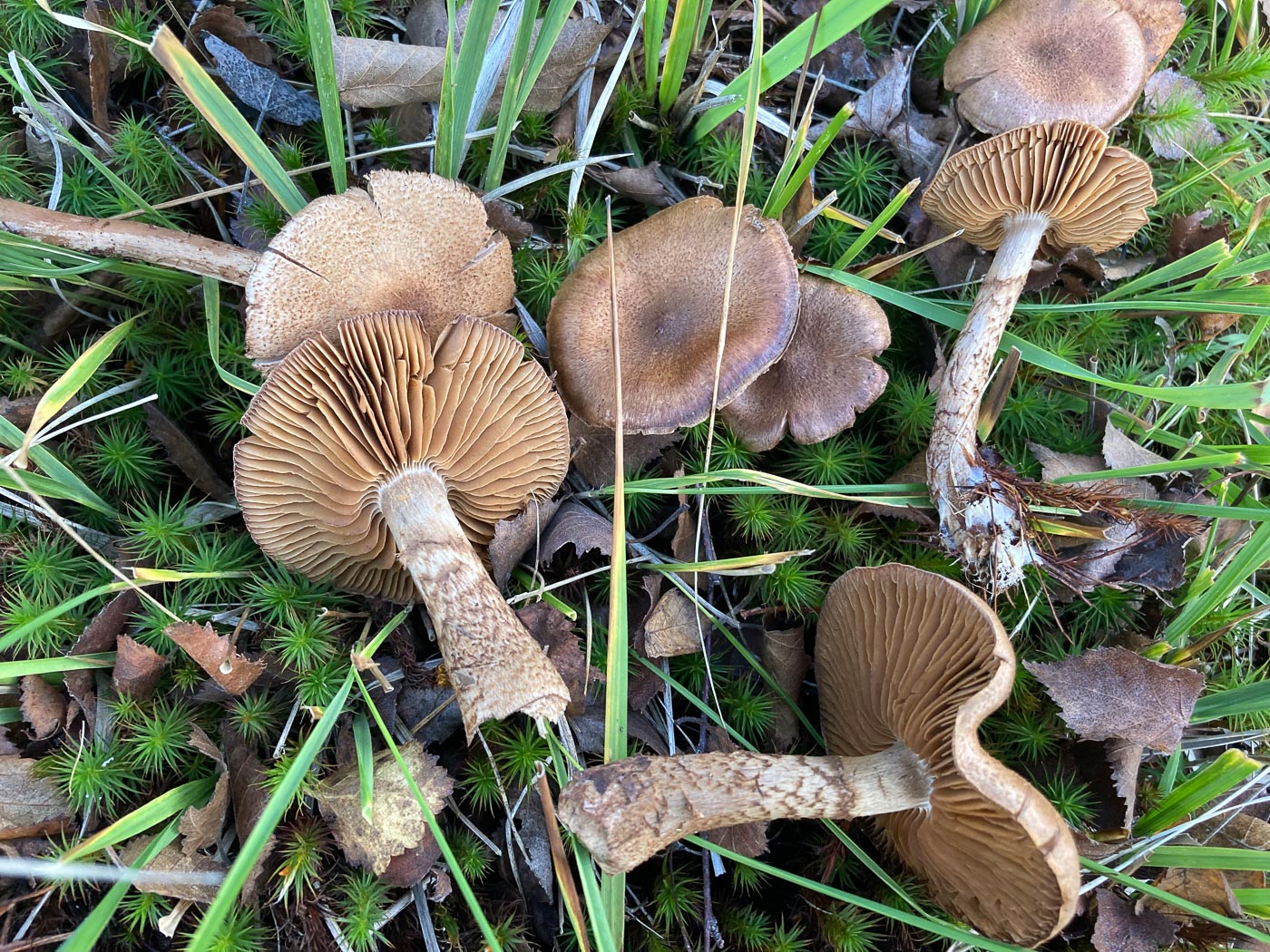
 |
October 30th Cortinarius pholideus (Scaly Webcap)
At Stoke Common in soil under the many Birch saplings Russell Ness found this rare and beautiful Webcap species, one belonging in Section Telamonia but instantly recognisable in the field. The cap can get to about 6 cm across and is evenly brown but covered in fine scales - unusual in the genus. Not only that but the stem also has fine belts of brown scales below the cortina zone, above this faintly violaceous as are the gills when young - quite a common feature in the genus. We have just one previous county record from Hodgemoor Woods where Penny remembers seeing it for the first time in 2010.
|
 |
October 30th Inocybe grammopodia (a Fibre cap new to the UK)
Back in July a singleton Inocybe turned up in Penny's garden under Lime which she didn't recognise and couldn't key out. The specimen was dried and sent for sequencing, the result being an exact match with that for I. grammopodia, not previously found in the UK. To her delight, two more fruitbodies popped up in exactly the same spot and were found today - in fact were nearly mown over by Paul who luckily noticed them in the nick of time! What a lucky chance!
|
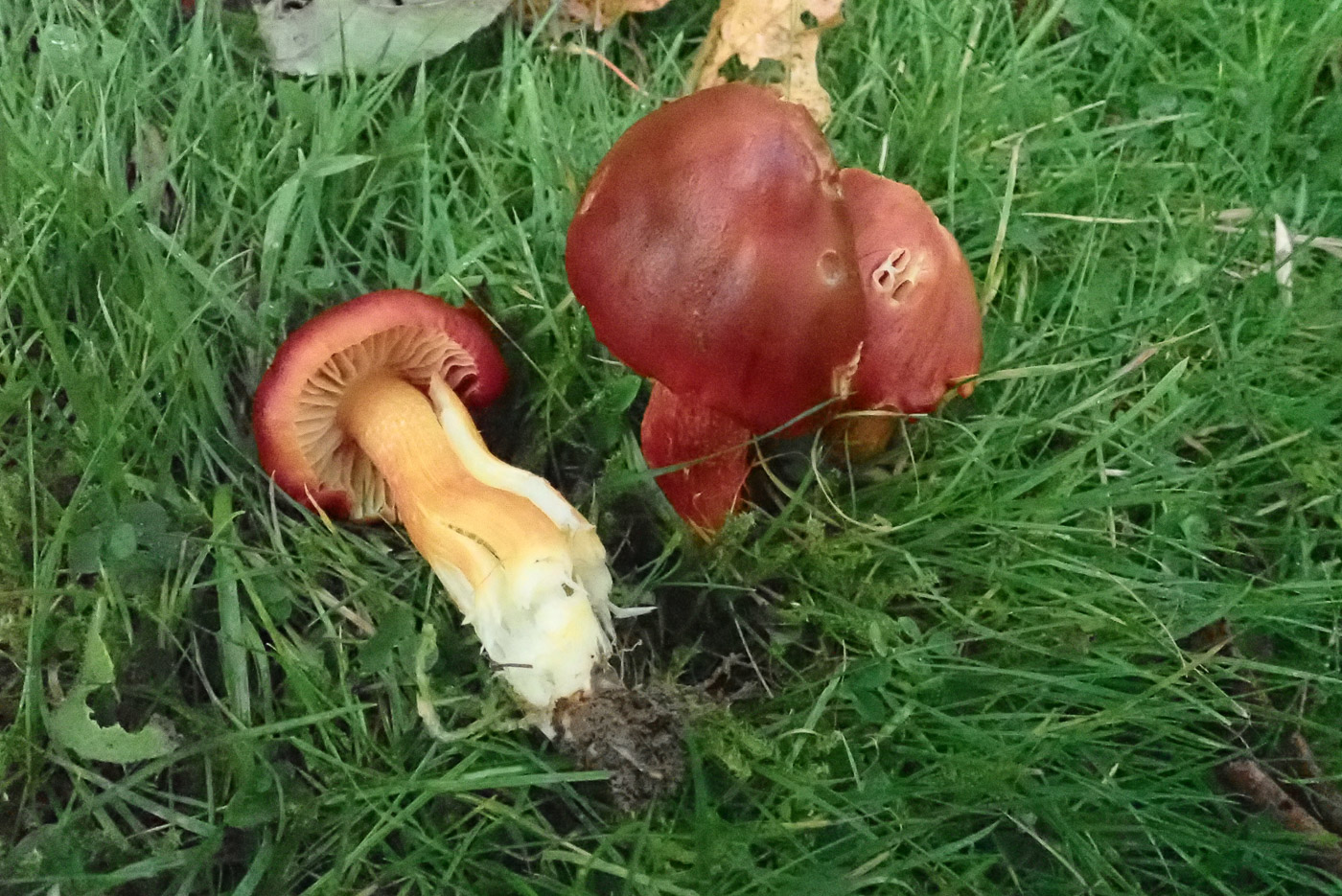
 |
October 30th Hygrocybe punicea (Crimson Waxcap)
In Prestwood Churchyard the first bit of lawn Penny checked was the site where this stunning and uncommon species had been fruiting the previous year. Sure enough, though well camouflaged by fallen leaves, there it was! This is one of the largest Waxcaps, standing up to 12 cms or more tall and with a thick chunky dry stem. The cap is dry to greasy and a subtle shade of red - not bright and dazzling but with a brown tinge and often a paler margin; the gills are ventricose, reddish with a yellowish edge, and the dry stem is some combination of red, orange and yellow. Our only regular county site for this species is Stowe Landscape Gardens though it occasionally turns up at Penn or Stoke Poges Memorial Gardens.
|
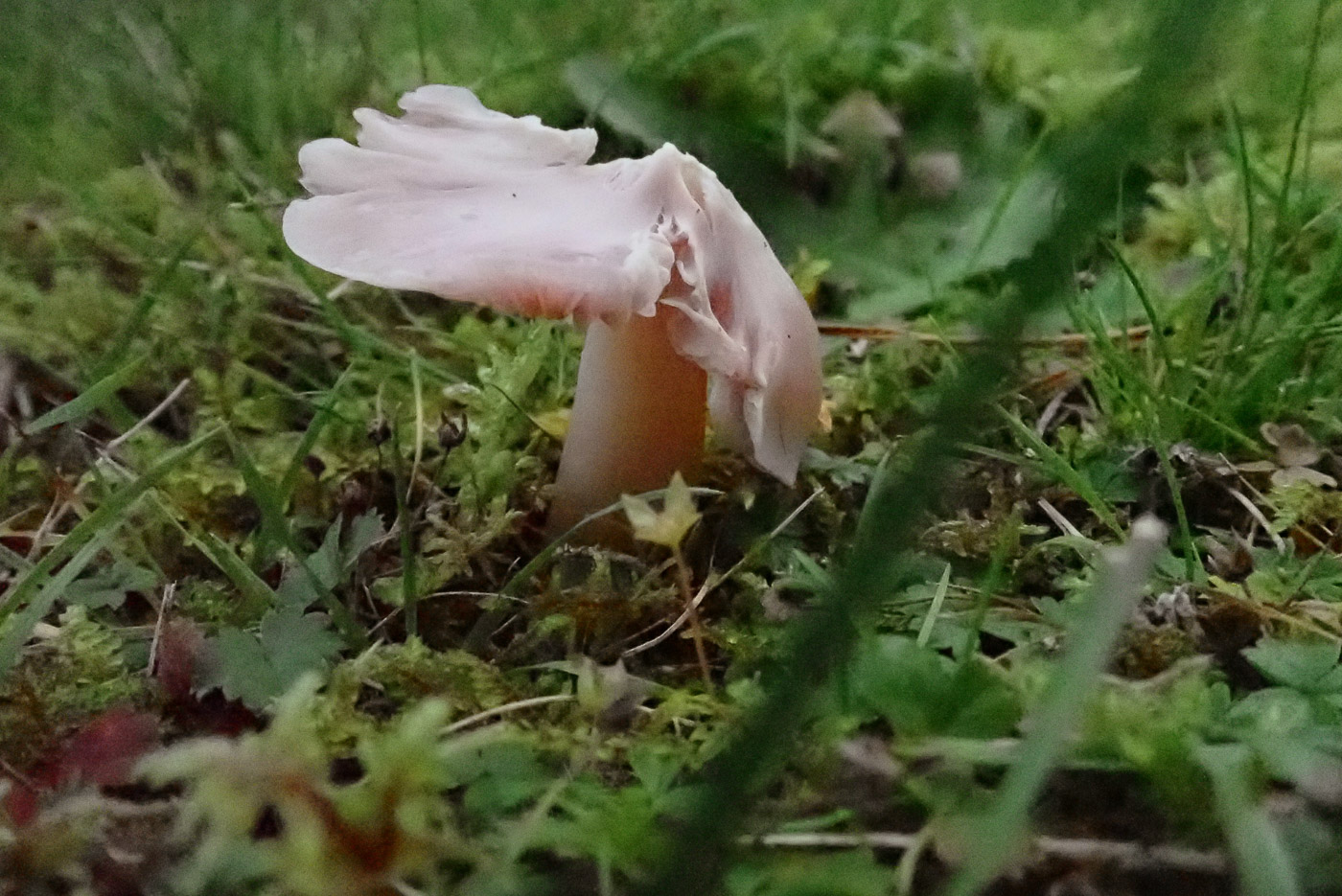 |
October 30th Porpolomopsis calyptriformis (Pink Waxcap)
Amongst the many Waxcaps at Prestwood Churchyard Penny was pleased to see just one specimen of this particular species (previously in Hygrocybe). Having found it in good numbers recently at Stoke Poges Memorial Gardens she was hoping it might be here today though she'd not seen it here since 2005. Considered a good indicator species for unimproved grassland the species is quite rare and we have just four other county sites though at one of these - Penn Cricket Pitch, Churchyard and Vicarage Lawn - it a seems to be becoming much less frequent in recent years.
|
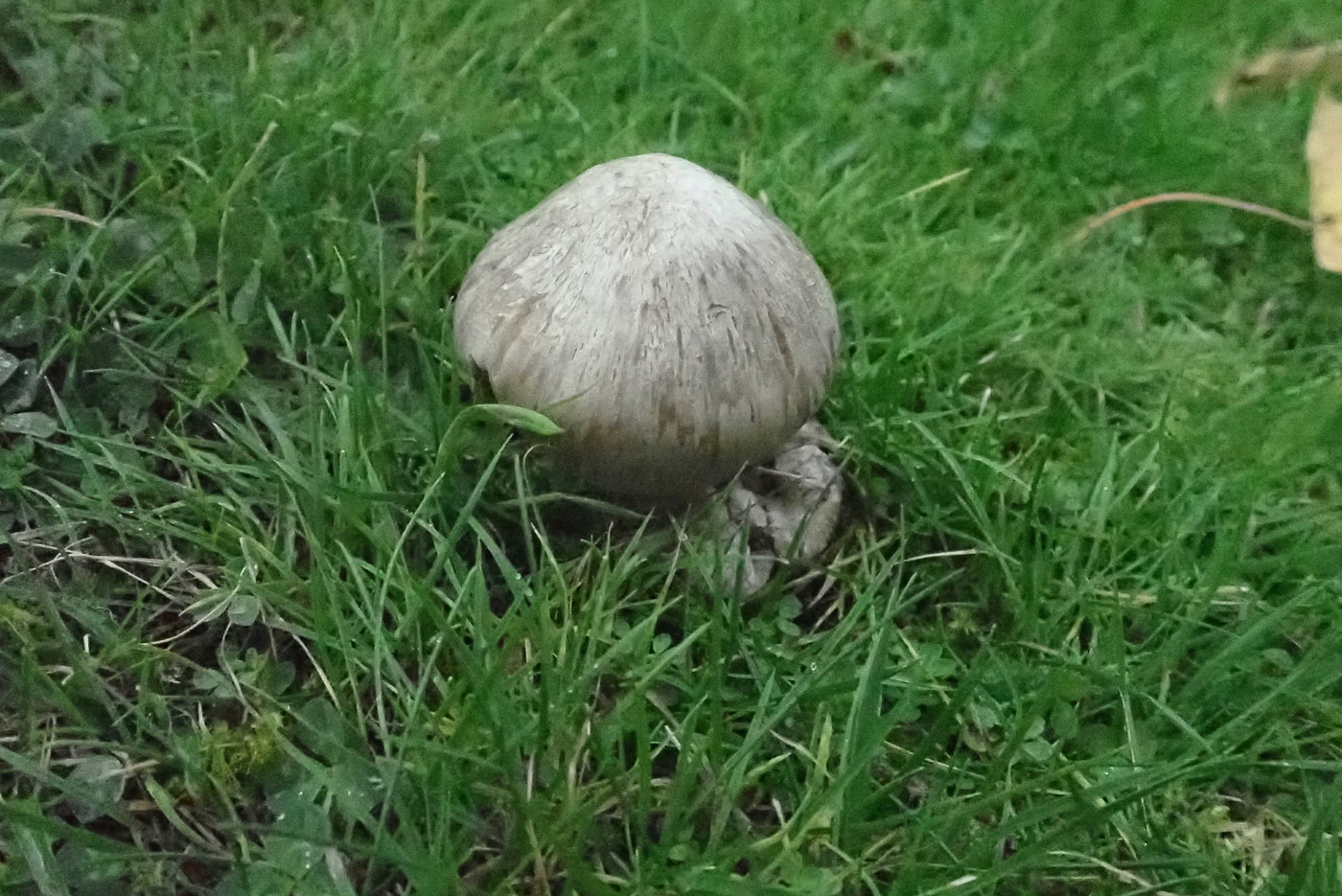
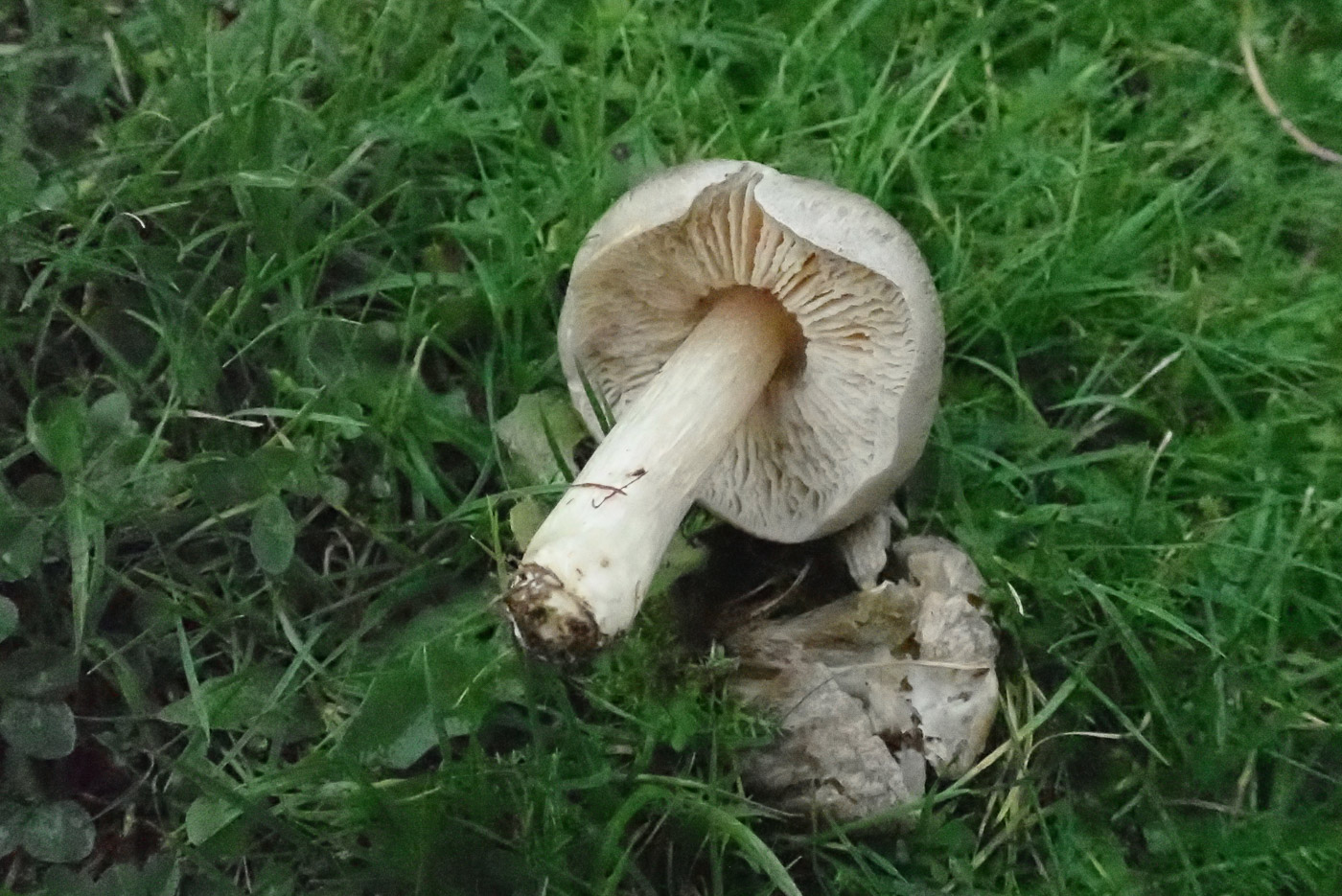 |
October 30th Entoloma prunuloides (Mealy Pinkgill) 
In Prestwood Churchyard Penny found this singleton Pinkgill which looked quite distinctive but was unfamiliar. Quite chunky in stature for this genus, the cap was streaky fibrillose, the gills were crowded but with a crenulate edge and it had a farinaceous smell. Not being a fan of this genus, Penny asked Derek to take a look at it for her, which he kindly did! Though not a rare species we have only one previous record from Coombe Hill back in 2000.
|
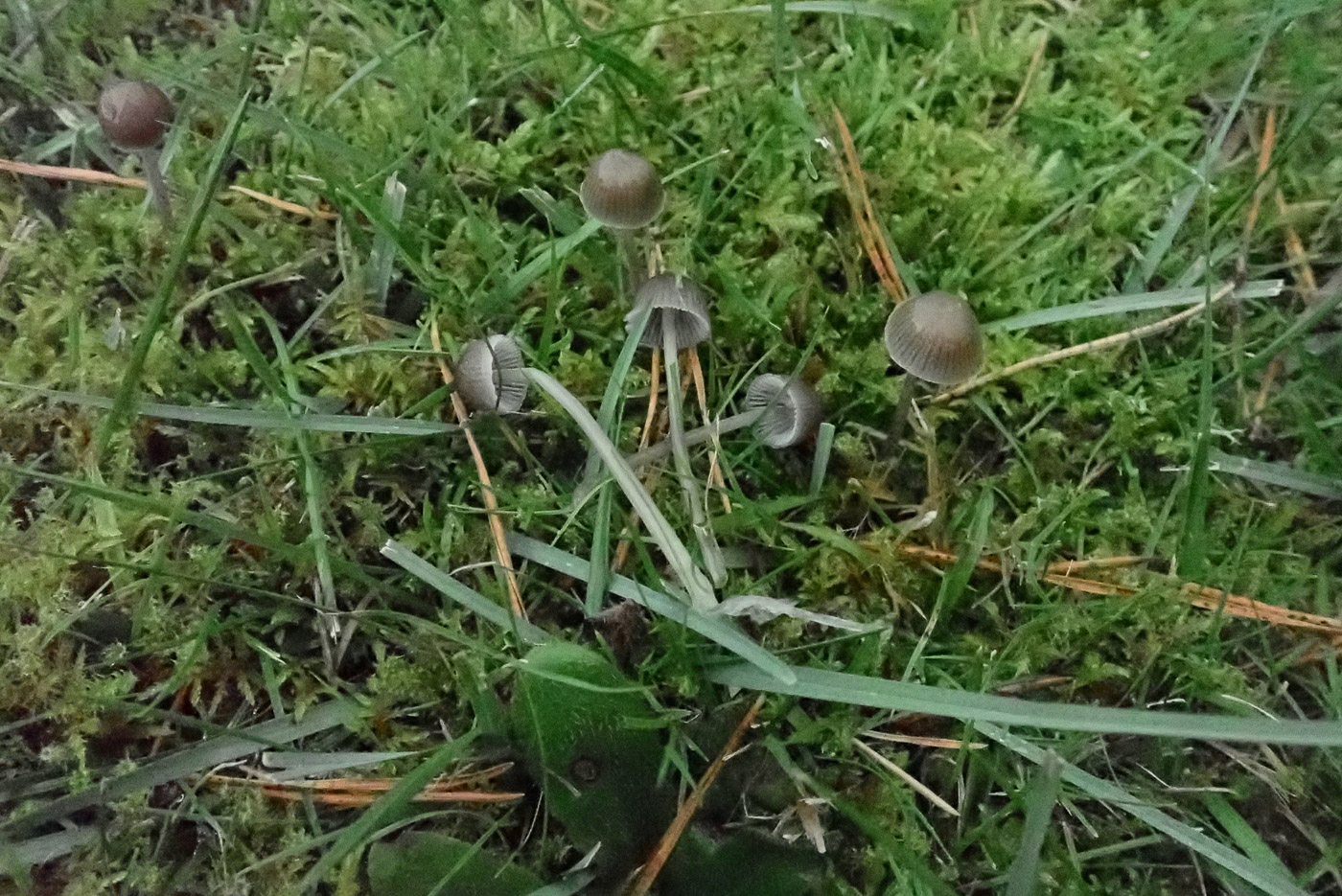 |
October 30th Mycena vulgaris (Vulgar Bonnet) 
In grassy litter under Pine in Prestwood churchyard Penny was pleased to see this small and somewhat unusual Bonnet fruiting in good numbers where she found it here last year. Despite its somewhat unsuitable common name implying a common species, apart from a record from Wendover Woods in 1980 our only record is from here last year. Unlike the many grey brown Bonnets this is an easy one to recognise in the field, having a very sticky cap and stem like M. epipterygia and sharing with that species a transparent 'clingfilm' cap coating which can be peeled off in one go. It lacks the yellow stem of that species, however.
|
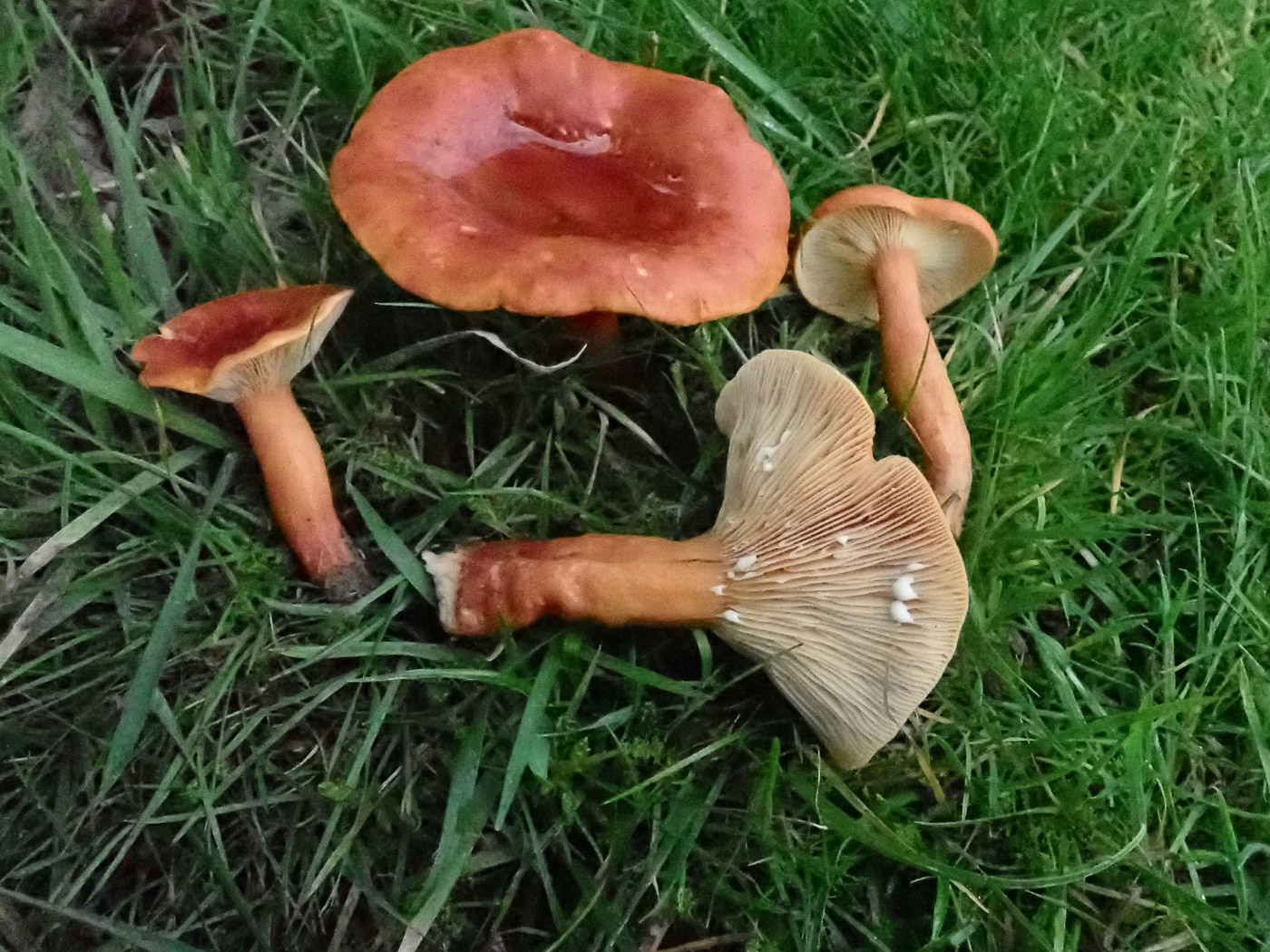 |
October 30th Lactarius britannicus (Tawny Milkcap)
This species was a surprise to Penny in Prestwood Churchyard where grassland rather than woodland fungi are expected. However, this brightly coloured Milkcap was under an Oak and the impressive largest cap was about 7 cms across. Its bright rust to apricot cap separates it from other more duller brown Milkcaps though it has a simlar rubbery 'quietus' smell found in many Milkcaps.
|
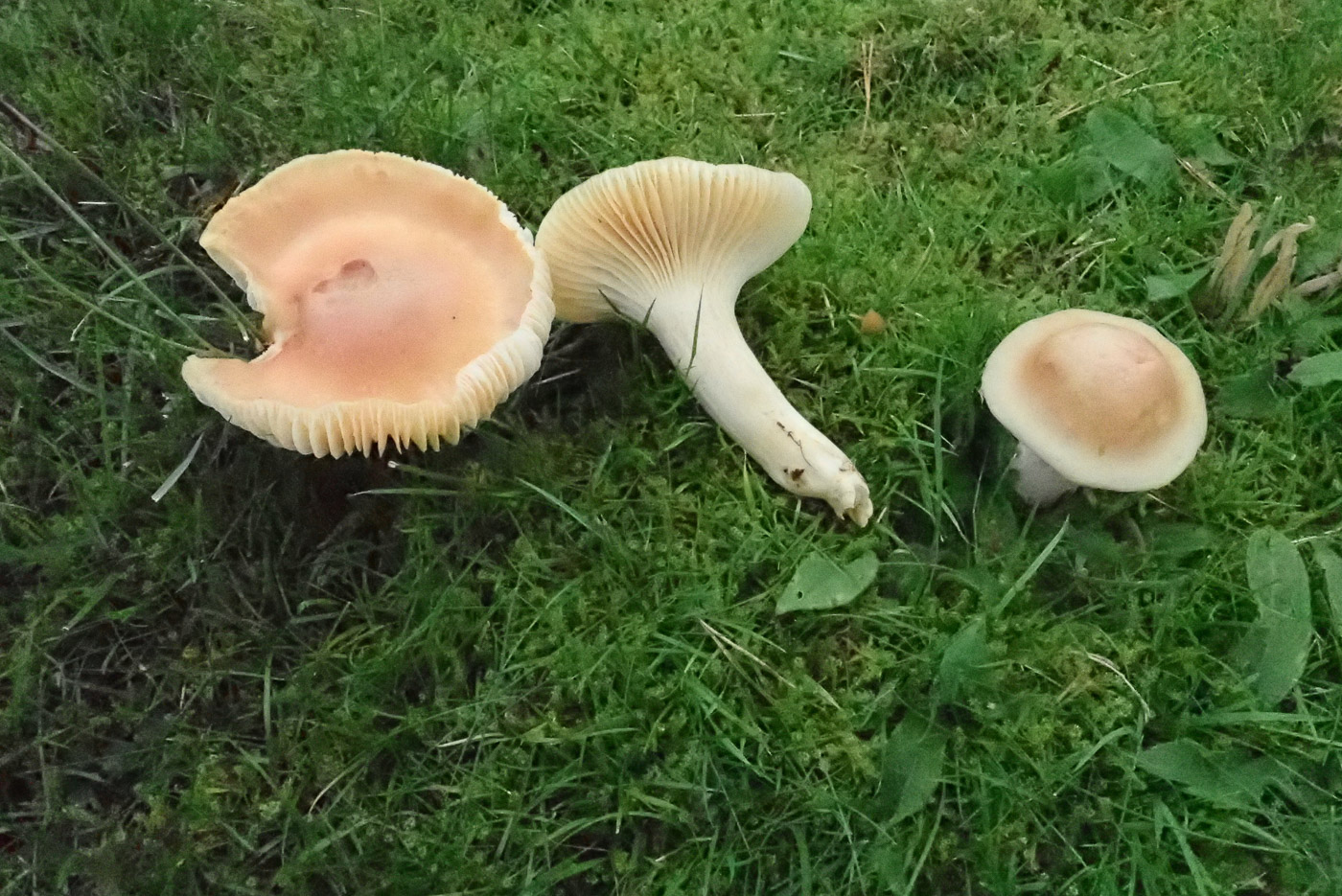 |
October 30th Cuphophyllus pratensis (Meadow Waxcap)
In Prestwood Churchyard Penny found good numbers of this large and common Waxcap, previously in genus Hygrocybe. This is a dry Waxcap with distinctly decurrent gills and a domed or rounded cap before it expands. The colour is also distinctive making it one of the easiest to identify in the field.
|
 |
October 30th Hygrocybe coccinea (Scarlet Waxcap)
In Prestwood Churchyard Penny found a nice clump of this brightly coloured common Waxcap though this was the first time she'd seen it this year. There are several quite similar species but this one is usually easy to spot and normally one of our commonest: small to medium in stature, cap greasy but not sticky and evenly bright red (not orange), gills red or sometimes yellowish, stem dry and red - sometimes orange towards base, no smell.
|
 |
October 30th Clavaria fumosa (Smoky Spindles)
In Prestwood Churchyard Penny was pleased to find this unusual and beautiful species fruiting in the identical spot where she found it last year. It is an easy one to recognise purely from its dingy pink 'tenticles' which are tightly clustered and intertwined, standing about 6cms tall but is not common and only found in unimproved grassland areas such as this.
|
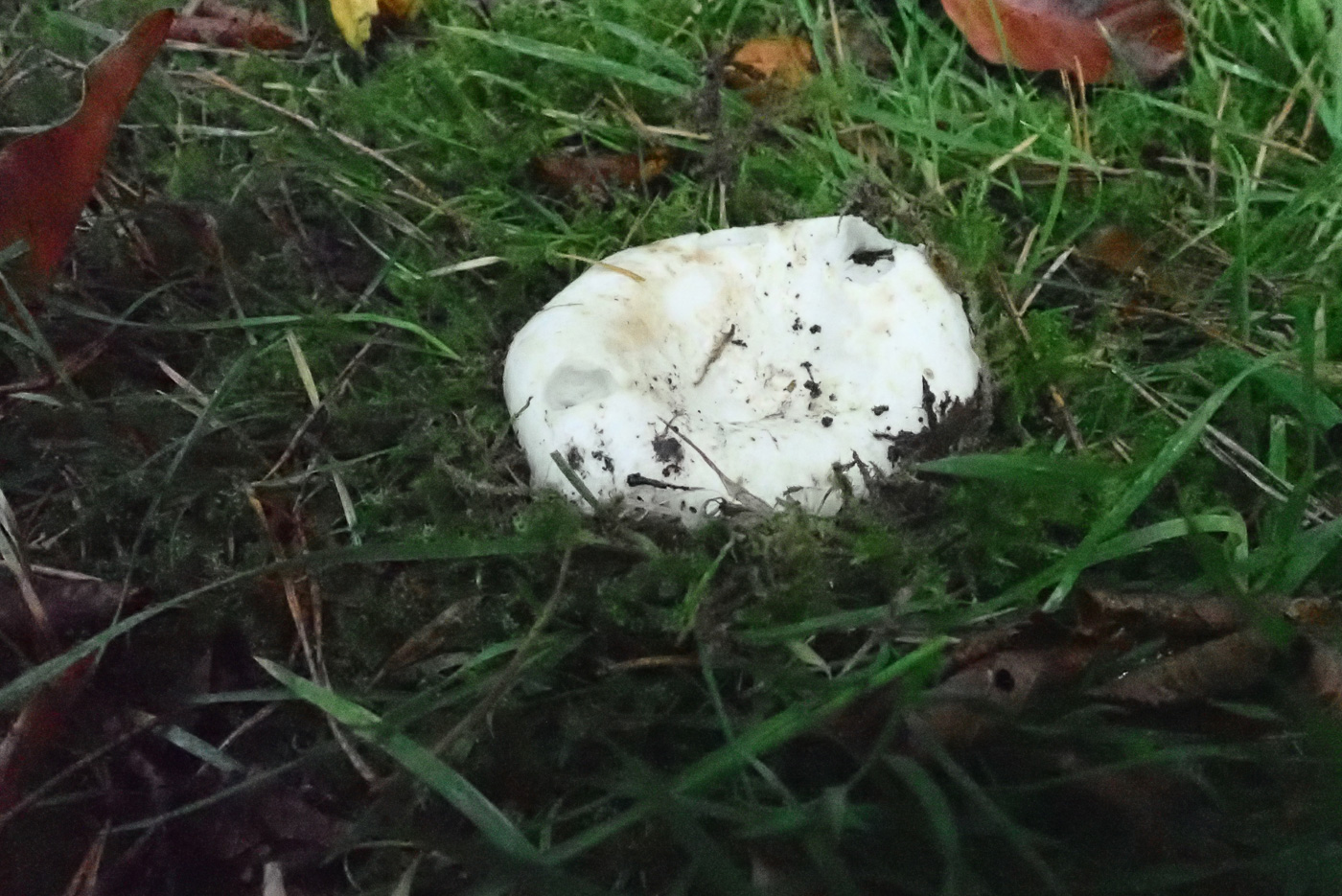
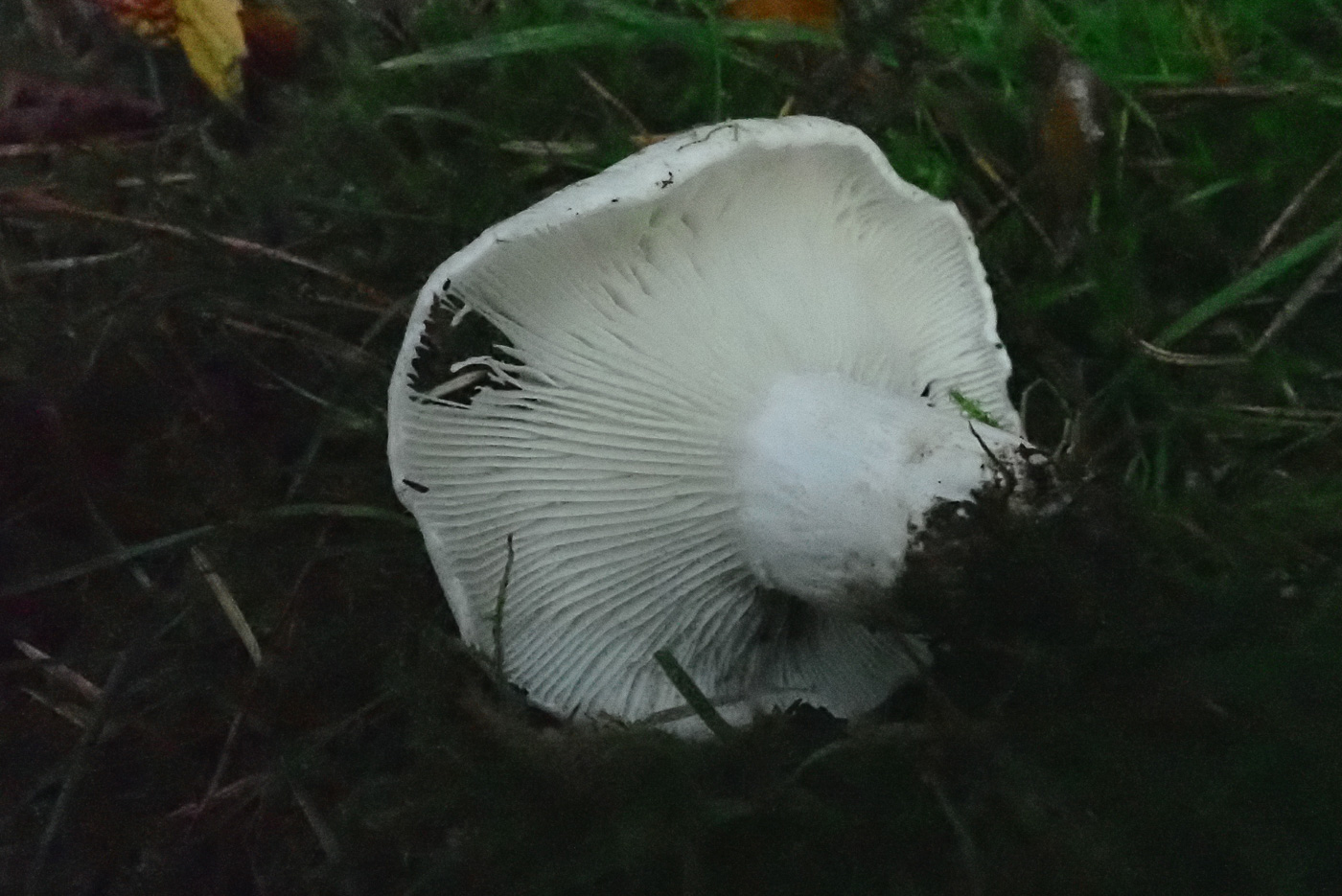 |
October 30th Russula delica (Milk White Brittlegill)
In Prestwood Churchyard Penny noticed this large white lump amongst the litter under Pine and Oak (with which the species is mycorrhizal), suspected it was this species and carefully extracted it to confirm the equally white crowded gills and to see if there was a blue green ring around the stem apex - indicating a different species, R. chloroides. One further check: she sliced into the gills just to make sure there was no 'milk' because (surprisingly) there are several extremely similar species of Milkcap - though now moved to the closely related genus Lactifluus. (The genera Russula and Lactarius are in fact very close, both having spiny amyloid spores.) R. delica is anything but delicate in stature, being squat, solid and firm like R. nigricans (Blackening Brittlegill) and probably best described as occasional.
|
 |
October 30th Amanita pantherina (Panthercap)
In Downley Woods Claire Williams found and also correctly identified this species - one which is much rarer than is realised. It is also surprisingly late in the season for the genus to be fruiting though we also found this species a day later on our Walk in Bittam's Wood, Dancersend. It is likely that at least some records for Panthercap may well have been the very common A. excelsa var. spissa (Grey-spotted Amanita) which is regularly mistaken for it in the field. Features which separate them: (1) white small raised regularly patterned flecks of veil (not really spots!) on Panthercap as opposed to grey larger irregular patches easily rubbed off; (2) a bulbous volva with a distinct 'lip' in Panthercap as opposed to a volva swollen but not bulbous or with a 'lip', as in Blusher; (3) a fleeting ring with no striations on its upper surface in Panthercap as opposed to a more substantial ring, striate on the upper surface; (4) no smell in Panthercap as opposed to a 'raddishy' smell similar to that of False Deathcap.
|
October 29th 2021

 |
October 29th Lactarius quieticolor (a Milkcap with no common name)
Under Pine in woods in near darkness near Jordans Village Jesper Launder found this rare Milkcap which is new to the county. It is one of the Milkcaps which have orange milk like L. deliciosus and are found with specific conifers, some of which have flesh with unusual colour changes (see also L. semisanguifluus dated Oct 19th). Today's species has a rather greyer orange cap compared to others in this group and tends to have a bluish tint with flesh that turns pink then green. (Jesper's photos were taken under artificial light so possibly don't reflect the true colours.)
|
October 28th 2021
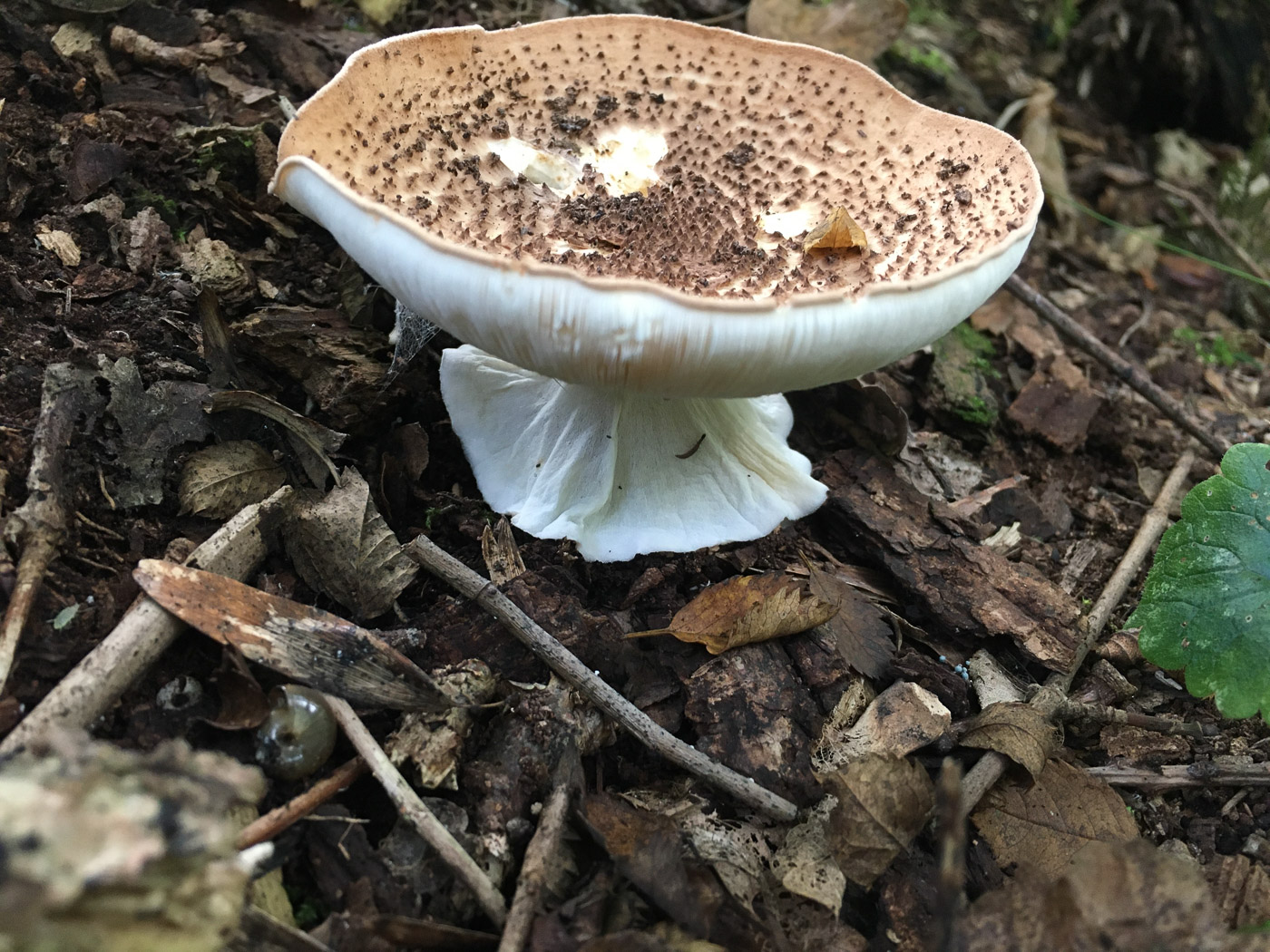
 |
October 28th Echinoderma asperum (Freckled Dapperling)
In Naphill Common Sarah Ebdon found this attractive species which she didn't recognise and understandably placed in the genus Amanita - after all it has white free gills and a ring on the stem which has a swollen base and the cap is not that dissimilar to maybe a Blusher or even A. echinocephala (Solitary Amanita). Previously in Lepiota, this is a large and substantial species (though not as large as the Macrolepiotas - Parasols) and one feature to note which separates these genera from Amanita is that the white or greyish 'spots' on the cap of Amanita are remnants of its universal veil and will rub off with your finger - in fact have often been washed off by rain in patches or entirely. In Lepiota and related genera the cap 'scales' are basically brown and not white and are formed when the cap surface fibres stretch and then snap as the cap expands. Therefore they are part of the surface and will not rub off but could be peeled off. Incidentally with a scope the spores of Amanita and Lepiota are completely different shape.
|
October 27th 2021
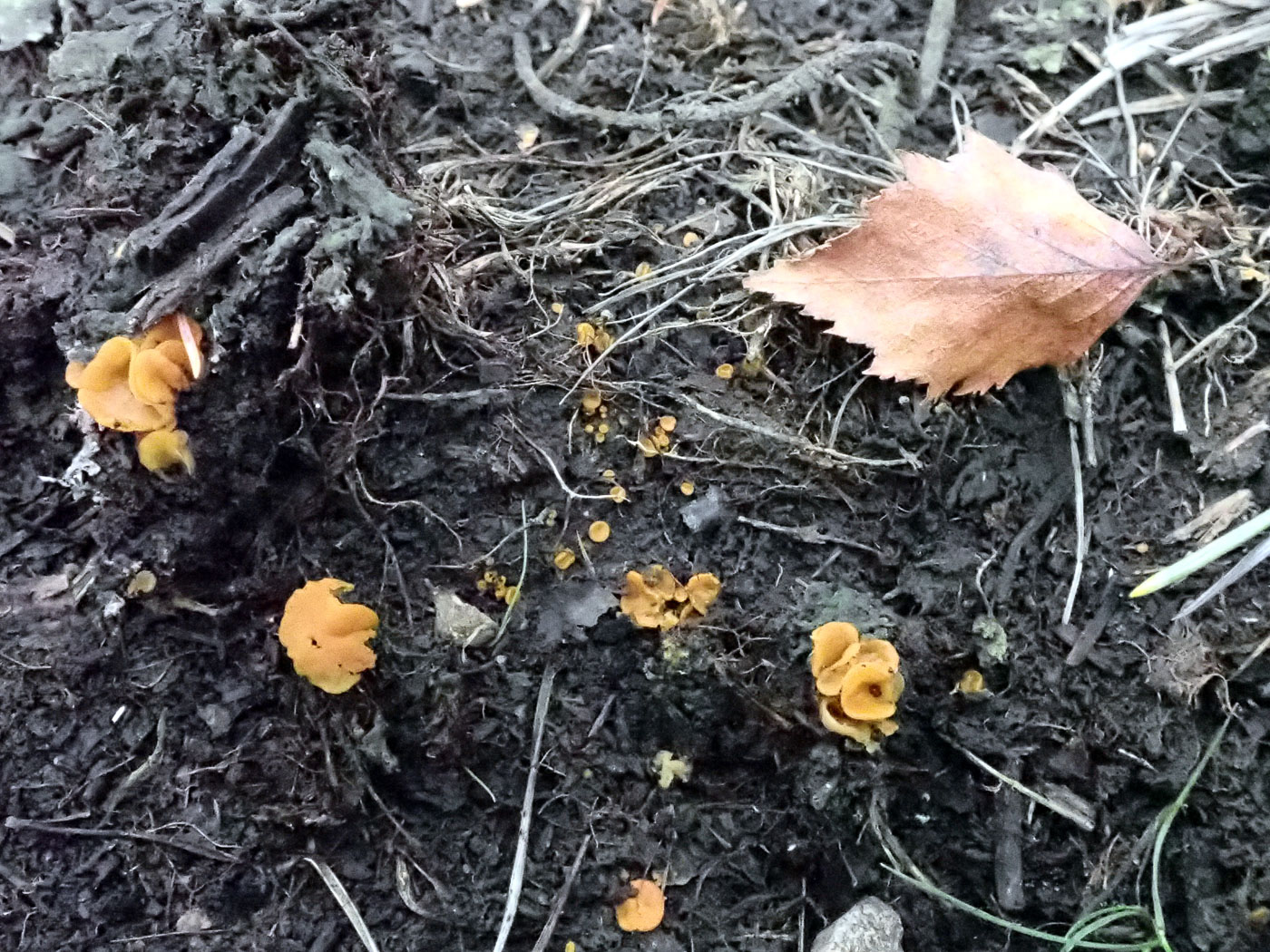
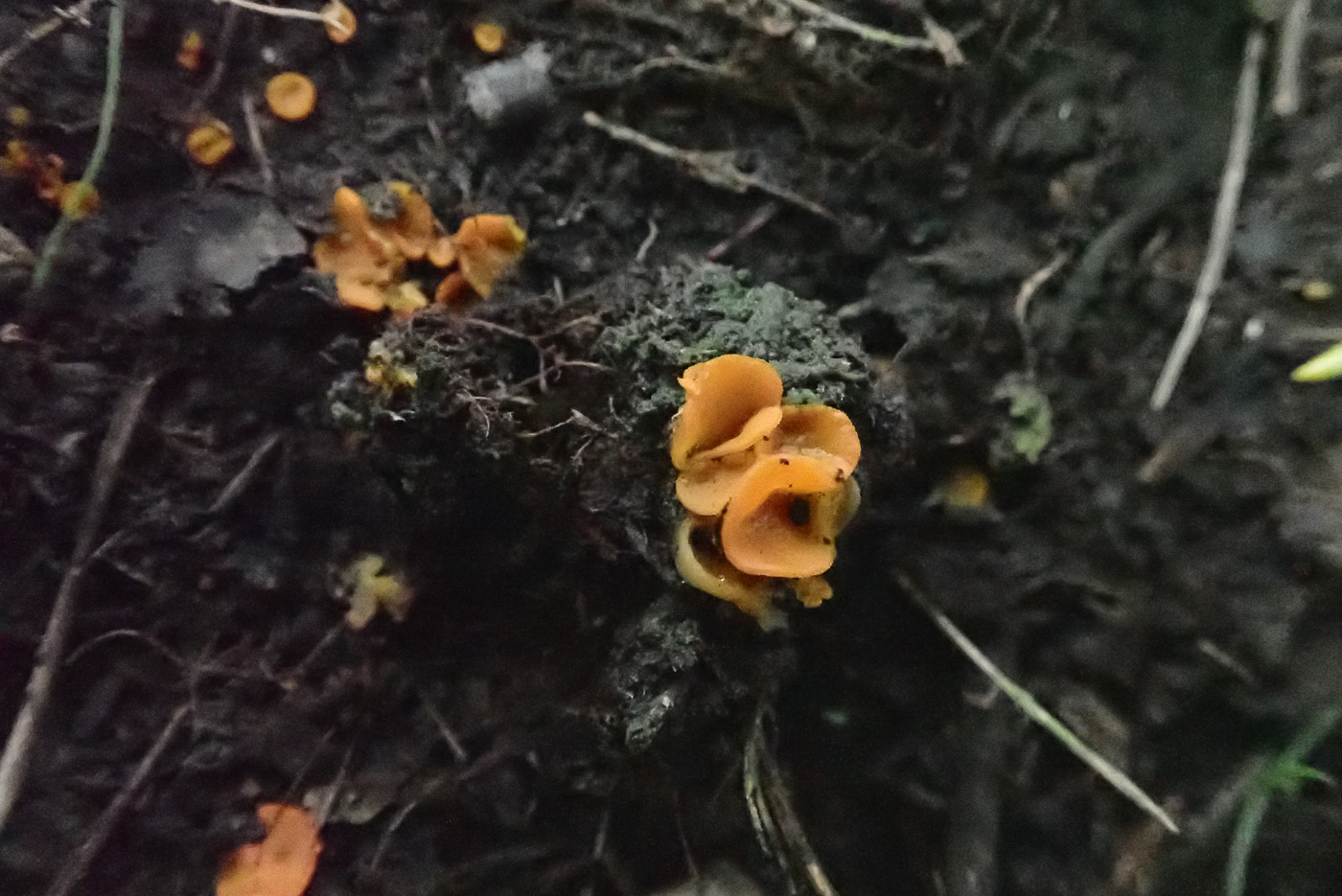 |
October 27th Aleuria congrex (a very rare species of Orangepeel) 
At Stoke Common in 2010 two collections were made of this miniature Orangepeel species, the second collection being identified by Ascomycete expert Brian Spooner as new to Britain. Despite searching for it on subsequent visits we had failed to find it again - until today! Penny was thrilled to find a small patch of what appeared to be the same species in bare damp peaty disturbed soil though there are quite a few other orange ascos which could possibly be confused with it in the field. So it was not until checking at home that she could finally rejoice, and we now have the opportunity to have it sequenced - not done previously. This seems to be the only UK site for the species so far, so this was an important find.
|

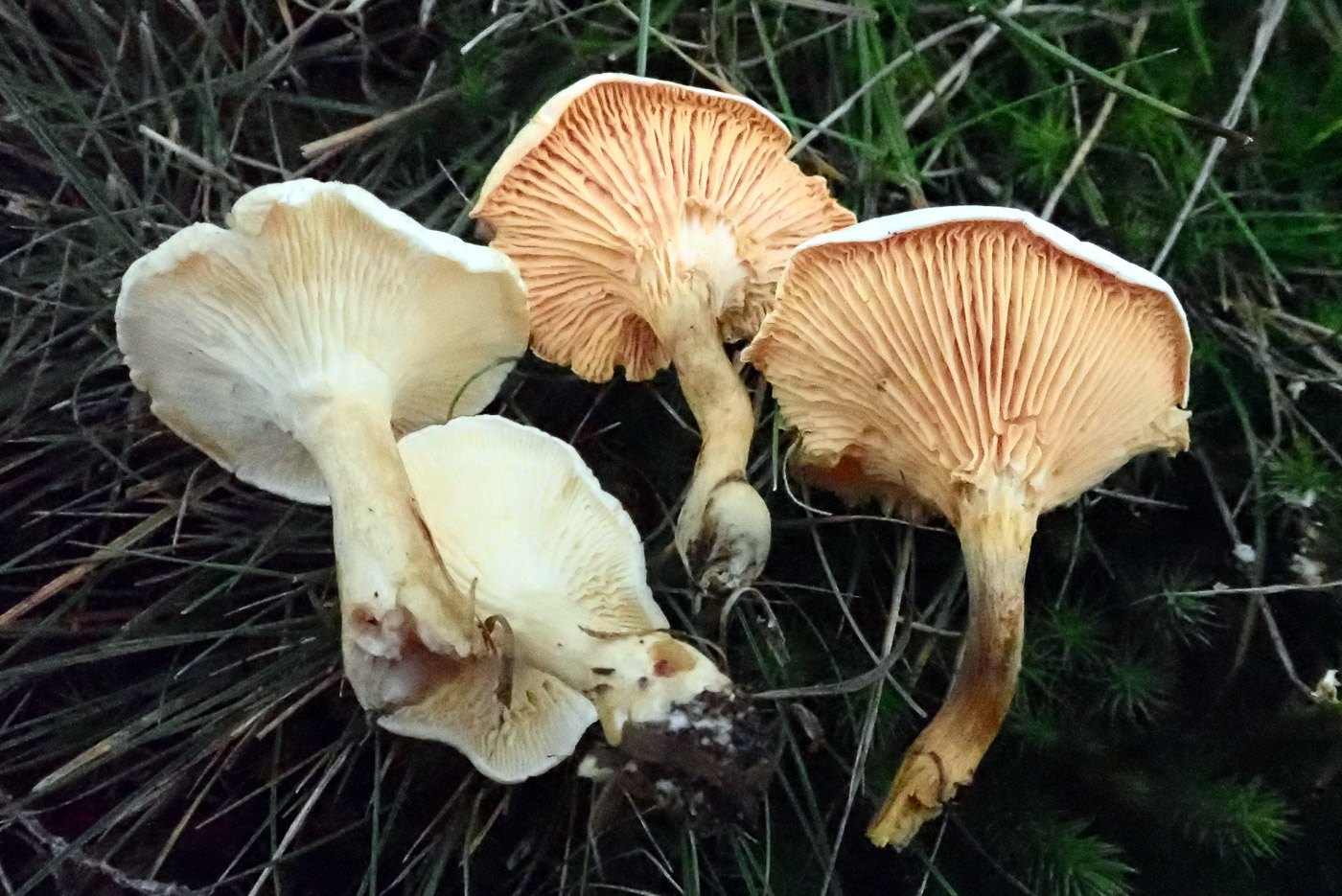 |
October 27th Hygrophoropsis macrospora ( a False Chanterelle with no common name) 
Alongside a path in Stoke Common Penny noticed these really pale caps and was surprised when turning one over to see the decurrent slightly crinkly gills of Hygrophoropsis. Having been with Geoffrey Kibby in the Mire at nearby Burnham Beeches last autumn when we found the same very pale species, I knew to check the spore size to compare with the very common H. aurantiaca and in the field took the opportunity to take a comparison shot of both species (photo 2) with the pale H. macrospora on the left. The species is rare with few records as yet, new for the site here and with just the two previous county records from Burnham Beeches last year.
|
 |
October 27th Cantharellula umbonata (The Humpback)
This was one of Penny's target species when she visited Stoke Common, but a search in the area where it had previously been found proved fruitless. However, later on in an open mossy patch she struck lucky! This is an uncommon species of acid heathland, Stoke Common being our only county site with just three previous records in the last 25 years. Similar to a small Clitocybe (Funnel) it has decurrent cream gills but they fork several times before reaching the margin (see photo 2), the distinctly grey cap develops a sunken darker centre but with a slight bump in the middle. Why not in Clitocybe? It has amyloid and not hyaline spores (ie they turn blue in Iodine).
|
 |
October 27th Cortinarius semisanguineus (Surprise Webcap)
At Stoke Common under Pine Penny was indeed surprised and delighted to turn over these little brown capped mushrooms and find deep blood red gills! This is one of the easiest Webcaps to name in the field (there aren't many), having a unique combination of a silky smooth brown cap (umbonate when young) and deep red gills. The only other Webcap having red gills and likely in the south is C. puniceus (incorrectly known as C. sanguineus very similar but under Pine in Scotland), but that species has an equally dark red cap as well as gills and is found under Beech or Oak. C. semisanguineus is an occasional species found under Pine or sometimes Birch and is one which regularly turns up at this site.
|
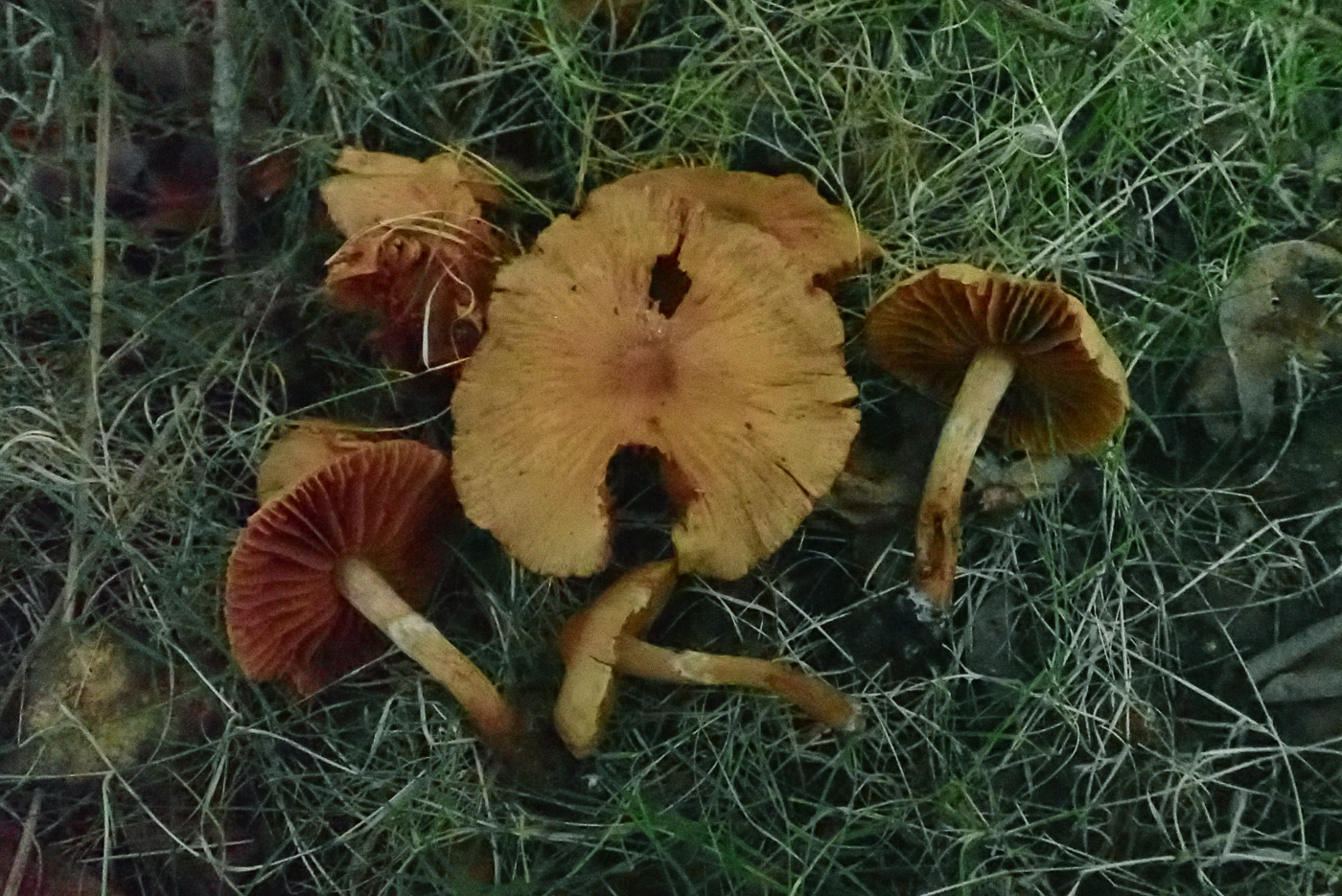 |
October 27th Cortinarius lacustris (a Webcap with no common name) 
Under Willow at Stoke Common Penny found this cluster of very rusty Webcaps, noted the dry caps and stems placing it in the (dreaded) Section Telamonia and also the widely spaced gills placing it close to C. hinnuleus (Earthy Webcap - so named for its smell). At home she checked the spore size but was undecided so sent the photos to Geoffrey Kibby who named it C. lacustris. The species is apparently very common but the name is not available in the BFG dictionary though we have a record named C. hinnuleus but with the comment that it was identified for Penny as C. lacustris from Naphill Common last year.
|
 |
October 27th Phaeolus schweinitzii (Dyer's Mazegill)
At Stoke Common at the base of a fallen Pine and adjacent to Gymnopilus junonius (also dated today) was this strange rather lurid sickly green velvety lumpy fungus just emerging. Penny recognised it as the early stages of Phaeolus schweinitzii, though when fully mature the species looks nothing like this at all! It grows at the base of conifers and eventually forms large reddish brown dinner plate sized brackets. It used to be used to produce dyes, hence its common name.
|
 |
October 27th Russula gracillima (Slender Brittlegill)
In a mossy patch under Birch at Stoke Common Penny noticed these small specimens just emerging. An occasional species only found under Birch, it has a basically pink cap (as do many others!) but nearly always with a tinge of green. Also commonly under Birch is the pink capped R. betularum (Birch Brittlegill) and both species are equally fragile and quite small. The differences to look for: R. betularum is pink and pale cream and lacks green in the cap, the cuticle of which peels completely - a unique feature, the stem of R. gracillima often has pink patches and tapers towards the apex, neither of which are characters of R. betularum.
|

 |
October 27th Paxillus involutus (Brown Rollrim)
At Stoke Common under the Birches Penny found several specimens of this normally very common mushroom which ash been surprisingly scarce so far this season. It has a brown cap like many other woodland mushrooms but can be distinguished from others if turned over. When young the cap margin is tightly inrolled (hence its common name) but this feature disappears as it expands - sometimes to as much as 15 cms across. The gills are decurrent and bruise quickly reddish dark brown when damaged, and if you run your finger up the gills from where they start they separate very easily from the cap flesh beneath.
|
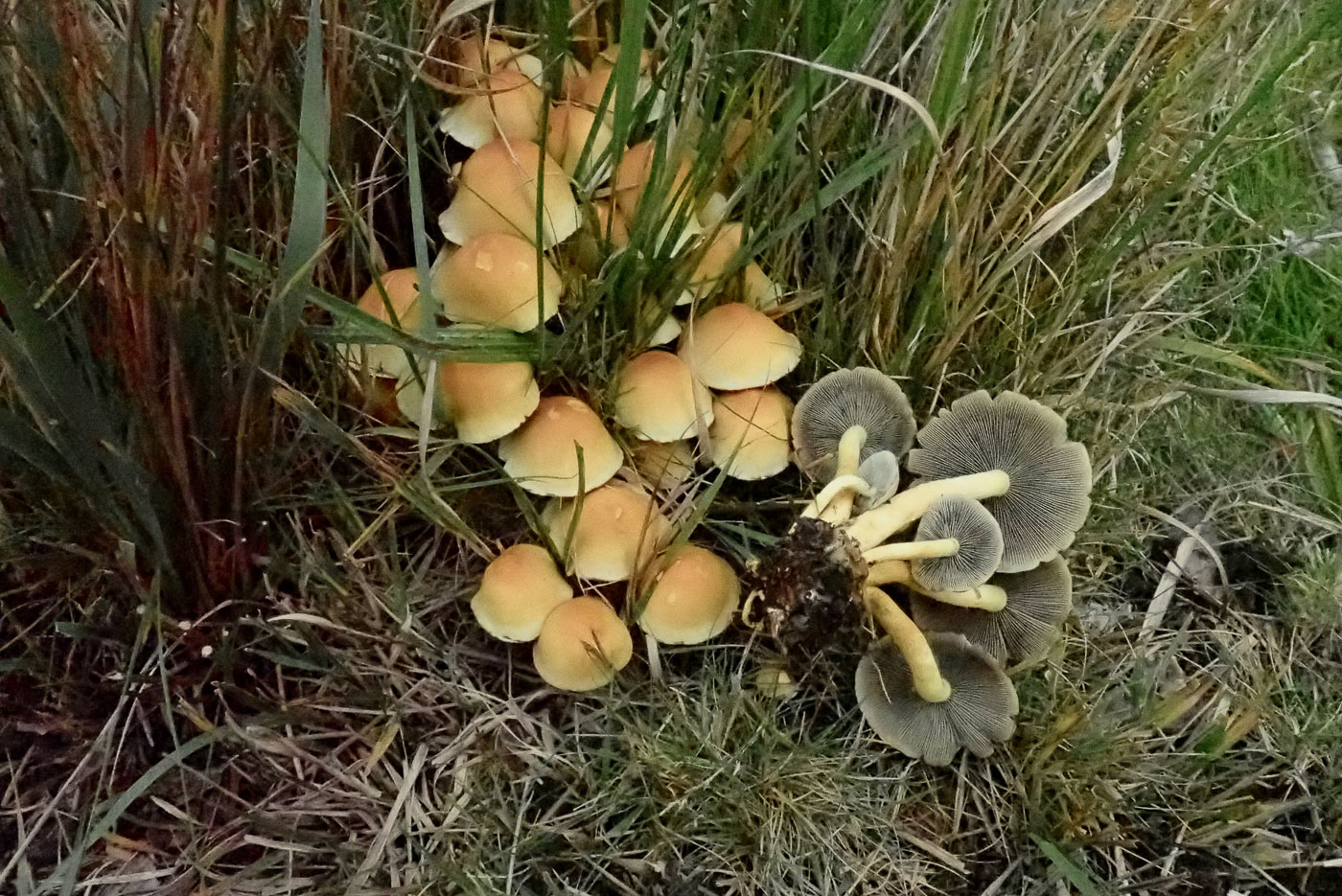 |
October 27th Hypholoma fasciculare (Sulphurtuft)
At Stoke Common Penny found this very common species coming up in droves wherever trees had been cleared with roots still remaining. The caps when young are bright orange becoming sulphur yellow around the edges then gradually elsewhere, and the gills also start out yellow but soon turn darker to grey black as the very dark spores mature and colour them. It will grow in tight clusters on dying or dead wood of both deciduous and coniferous trees everywhere.
|
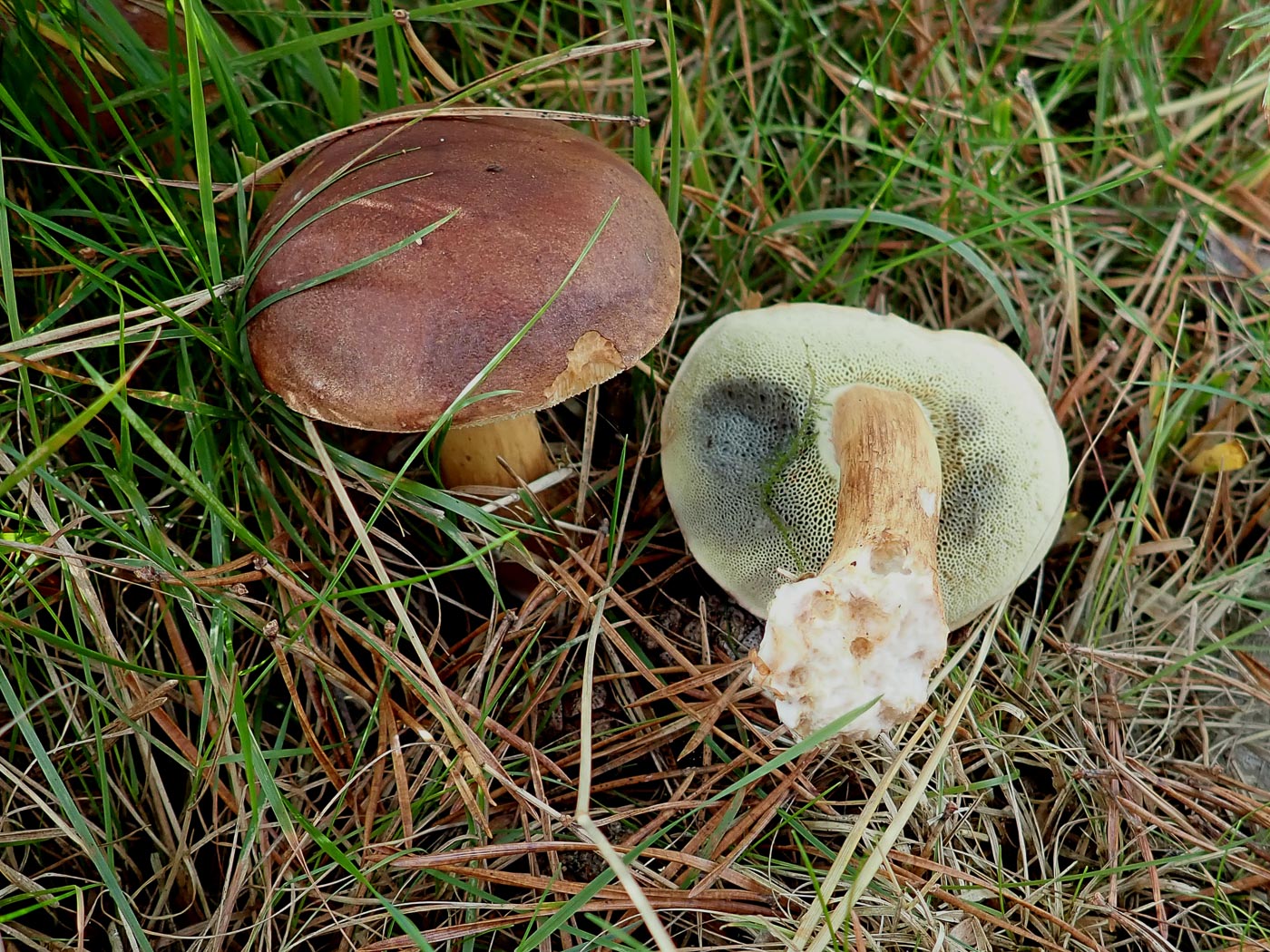 |
October 27th Imleria badia (Bay Bolete)
Under Pine and Birch at Stoke Common Penny noticed this pair lurking in the vegetation. Better known as Boletus badius, this common Bolete has a bay brown rounded smooth quite shiny cap (slimy in wet weather), the fine pores are a greenish yellow and turn blue quickly when pressed, the flesh is yellow and the stem is also bay brown. It occurs under mixed trees but often where conifers are present.
|
 |
October 27th Laccaria proxima (Scurfy Deceiver) 
At Stoke Common in one of the open scrubby heath areas Penny spotted these somewhat large Deceivers, and suspecting this was not the very common L. laccata (Deceiver) took a photo then kept a specimen to check later at home. This species occurs typically on acid soils in open mixed woodland or heaths and is like a larger version of L. laccata but with a roughened textured cap and stem. Unlike the commoner species which has globose spiny spores, L. proxima has ellipsoid spores, but as large specimens of L. laccata can also occur it is necessary to check the spores to determine which species you have.
|
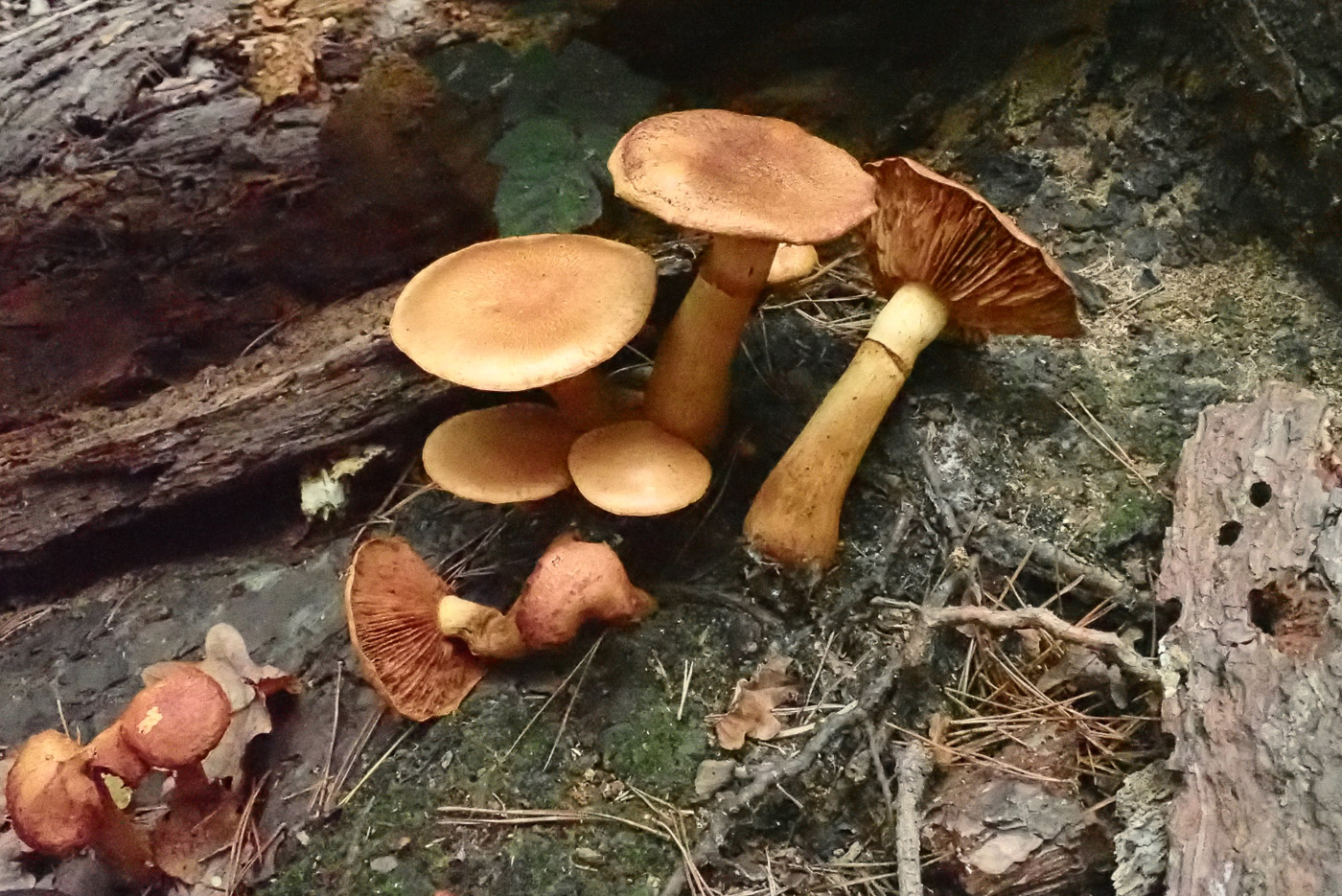 |
October 27th Gymnopilus junonius (Spectacular Rustgill)
At Stoke Common Penny found many clusters of this impressive species just coming up at the base of various different decaying deciduous trees, but the collection here was on a fallen Pine. As the common name suggests, it can get to a good size - the largest caps here being about 12 cms across, and the whole fruitbody is a rusty colour though the stem is paler above the distinctive ring and it forms loose or tight clusters.
|
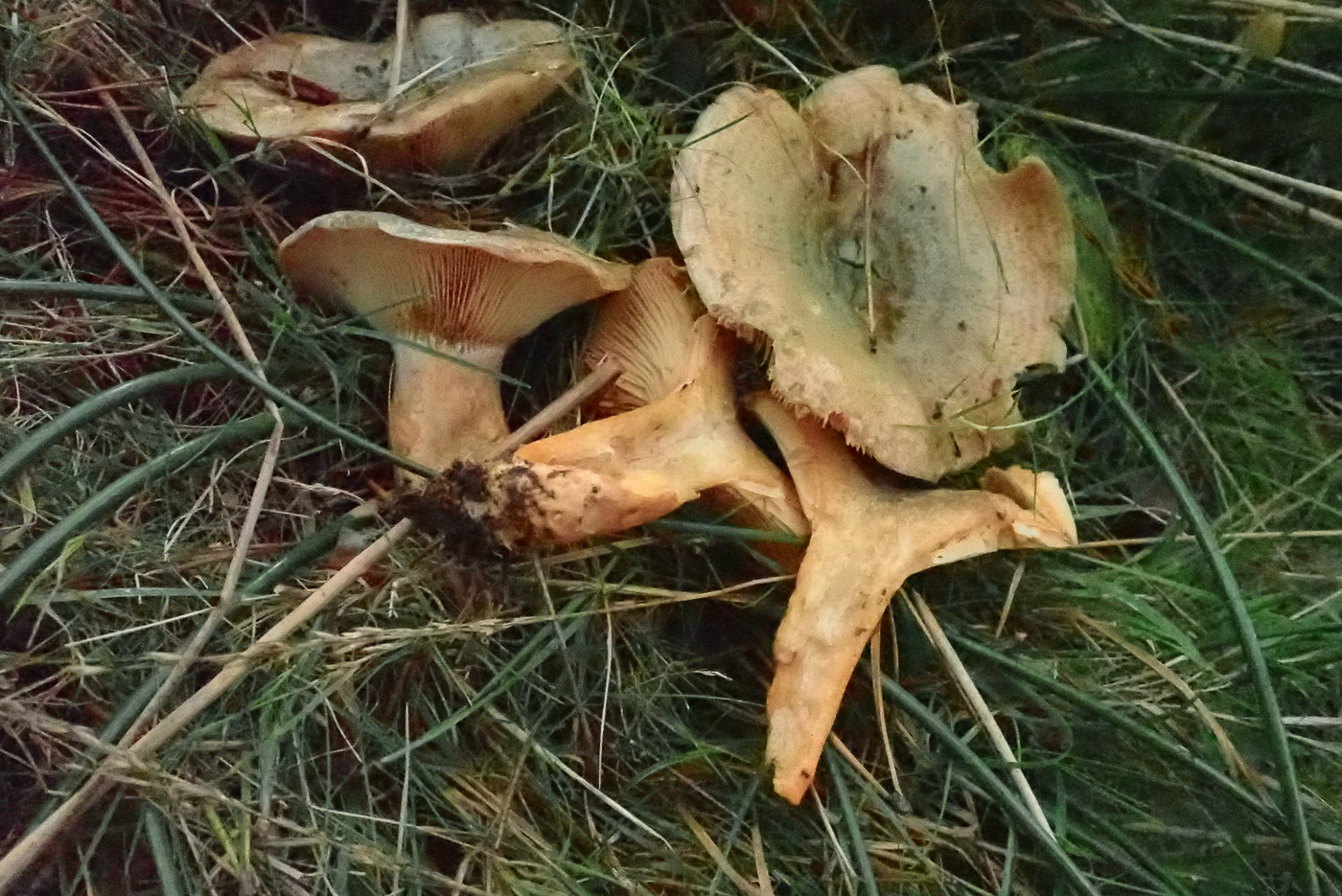
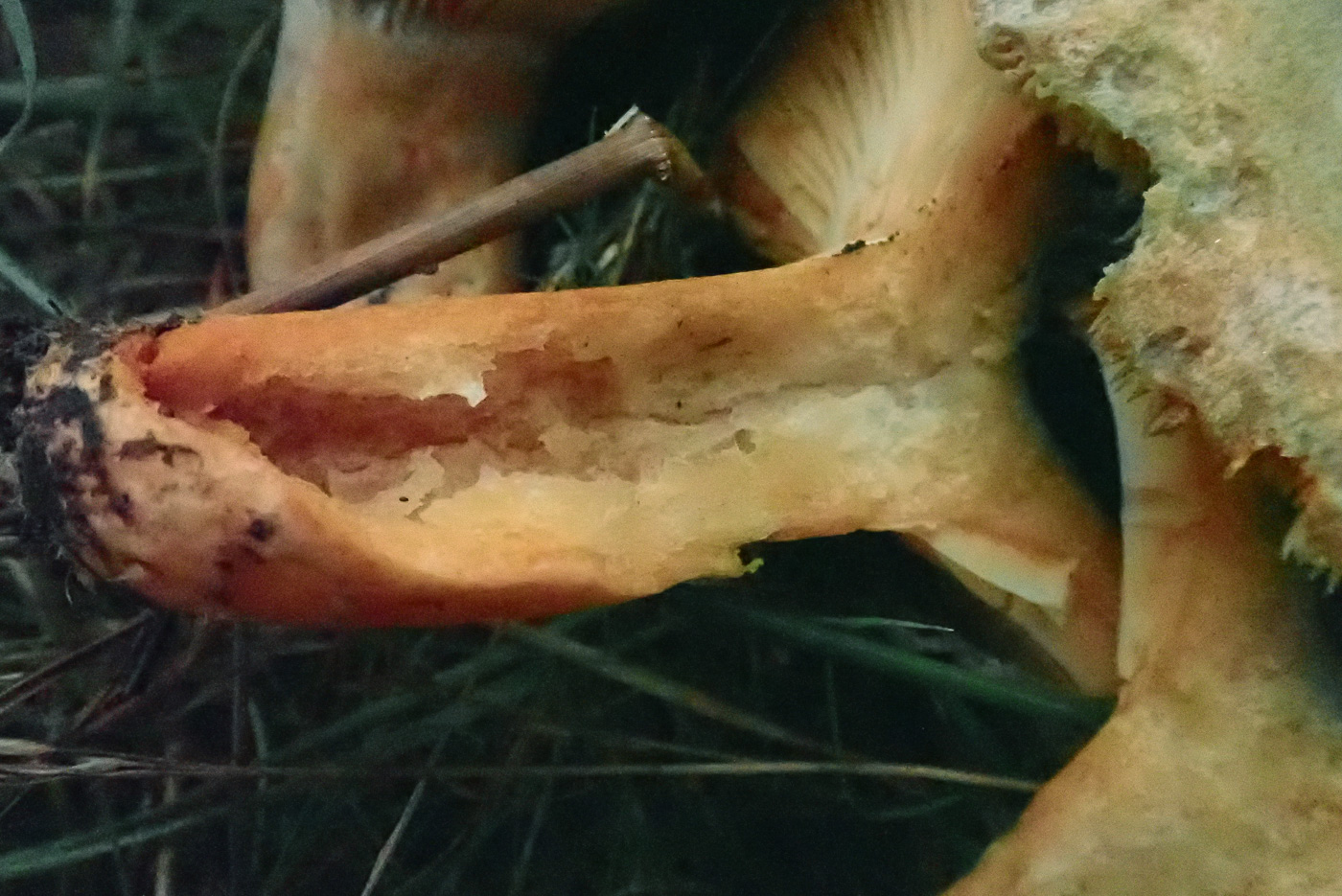 |
October 27th Lactarius deliciosus (Saffron Milkcap)
Under Pine at Stoke Common Penny found this species, one of several very similar Milkcaps with pale zoned caps, inrolled when young, distinctive bright orange gills and milk, also a pitted stem. It only occurs under Pine but can easily be confused with L. semisanguifluus, the only obvious visible difference being that when exposed to air the flesh of that species turns wine red in about five minutes (sometimes in seconds) whereas in L. deliciosus the flesh will eventually turn that colour but in maybe half an hour or more. Photo 2 was taken on collection but the specimen was retained then checked again after an hour or so and was only just beginning to turn. Compare with L. semisanguifluus dated Oct 19th.
|
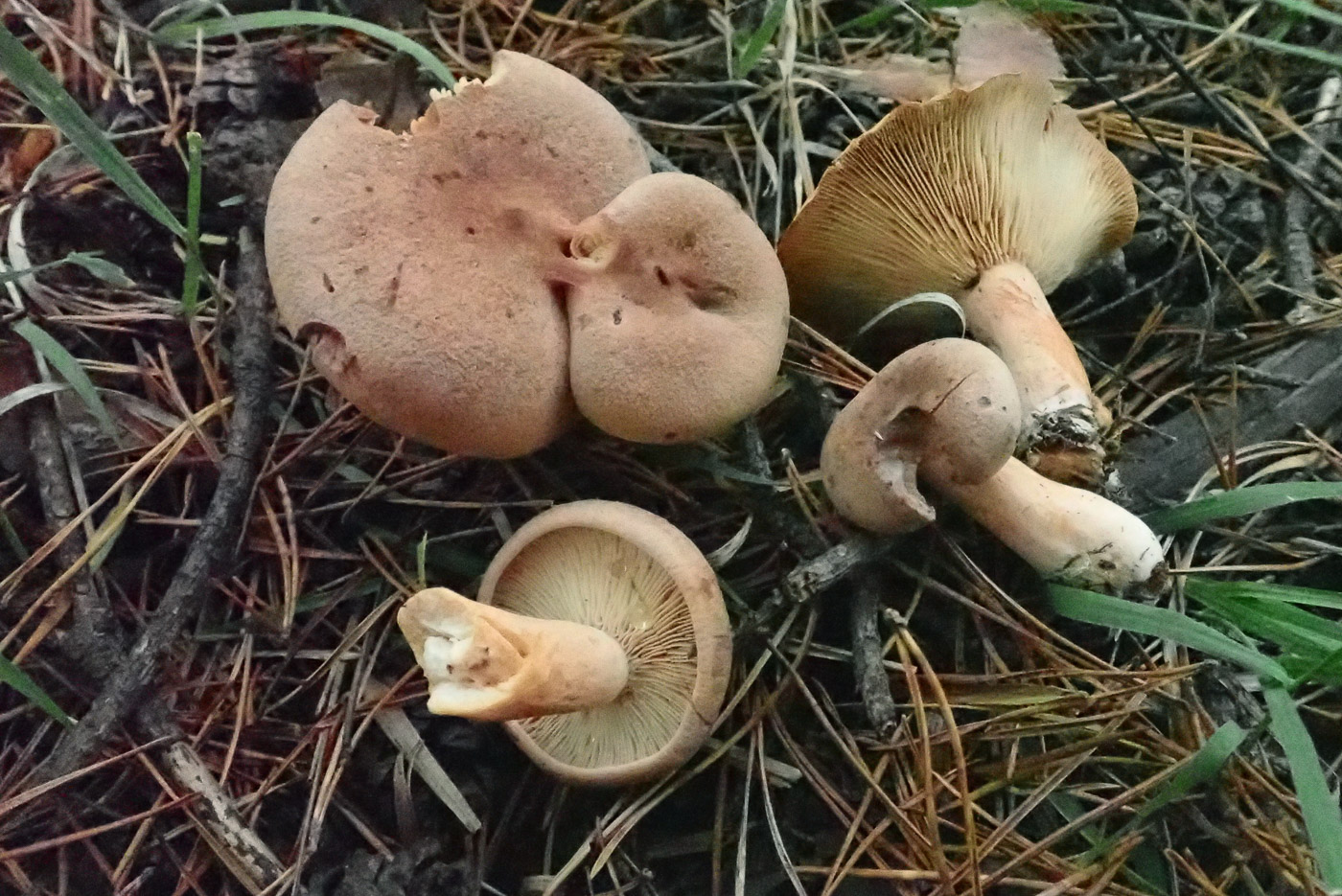
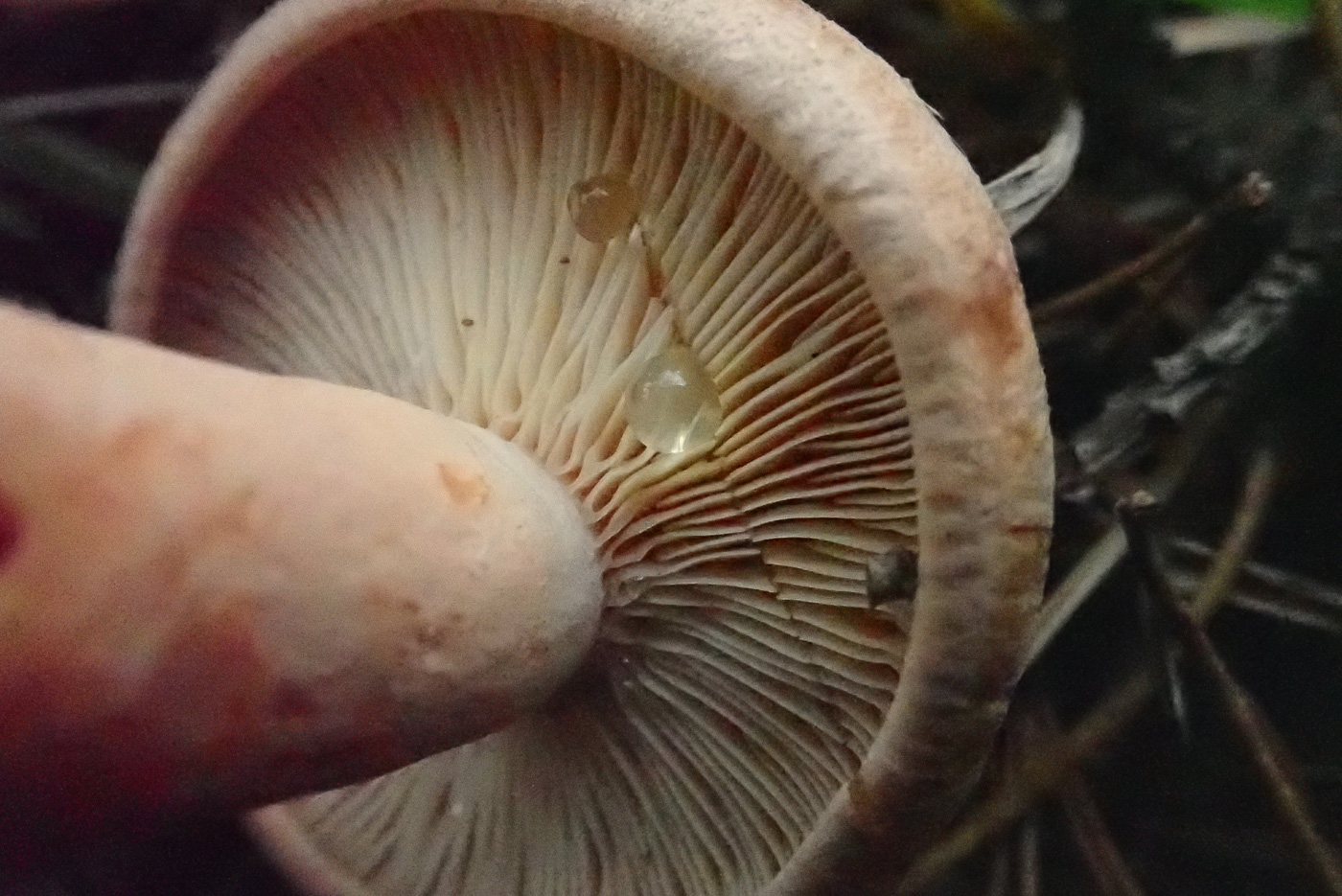 |
October 27th Lactarius helvus (Fenugreek Milkcap)
At Stoke Common and again under the Pines Penny found good numbers of this Milkcap, unusual in two ways: the only county sites where it has been found are here and nearby Burnham Beeches (both with acidic soil), furthermore the 'milk' it produces is colourless and therefore easily missed (see photo 2). The slightly pink brown cap is tightly inrolled when young, its surface being slightly velvety, and it has a smell of curry (hence its common name). It occurs under Pine and occasionally Birch.
|
 |
October 27th Lactarius glyciosmus (Coconut Milkcap)
Under the many Birches at Stoke Common Penny found a few specimens of this quite common Milkcap - one only found under Birch but common wherever that tree occurs. It has a pale buff cap with a pink tinge, sometimes with some zoning, and is quite fragile having white milk when the gills are damaged, but the give-away feature is its distinctive sweet smell of coconut.
|
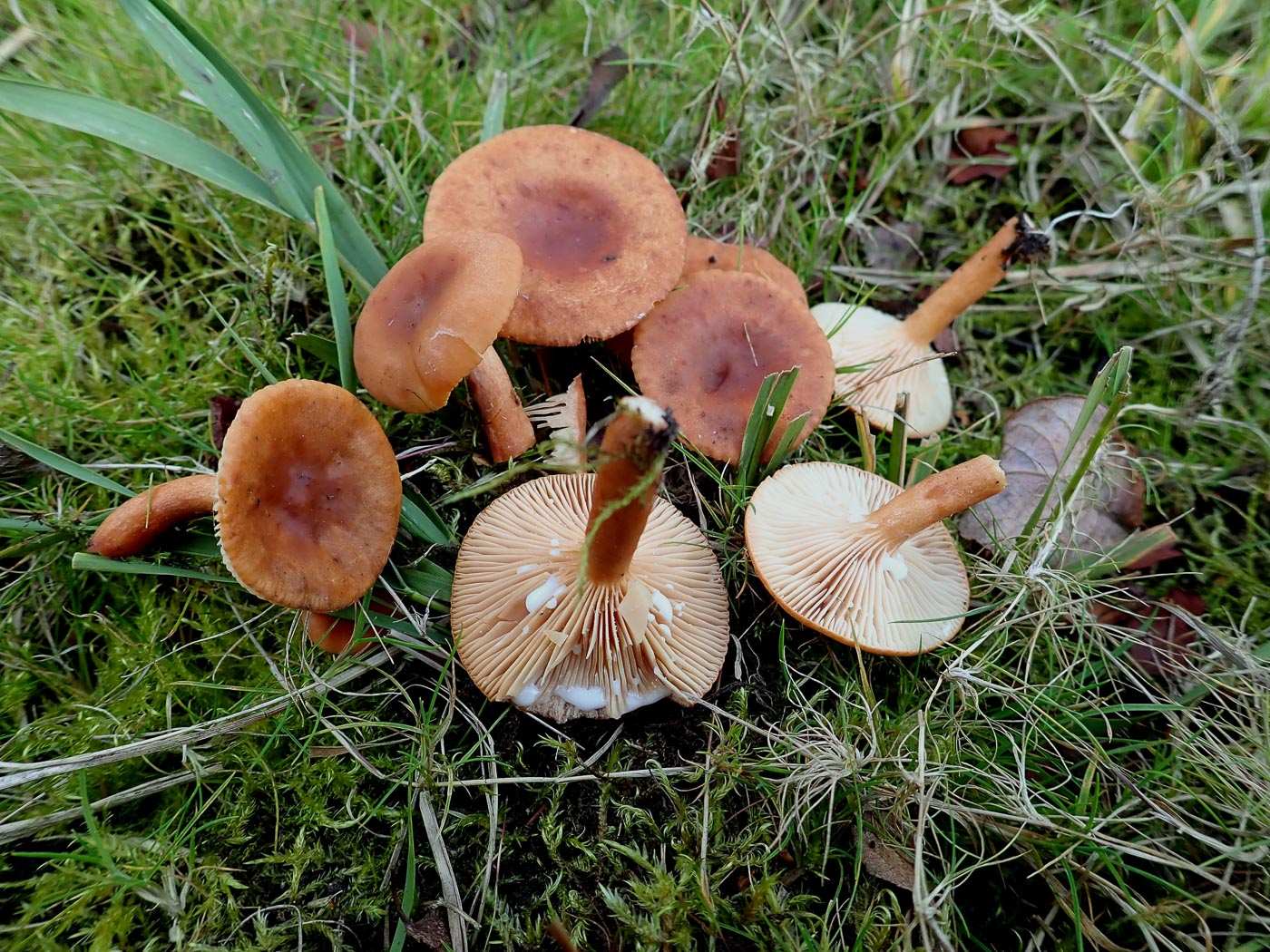 |
October 27th Lactarius lacunarum (a Milkcap with no common name)
Also under Birch at Stoke Common Penny found this much less common Milkcap, often quite squat in stature, it has a bright reddish brown cap and stem and, like the much more common Birch species L. tabidus, its white milk turns yellow on a hankie (though not as strongly so as in that species). Unlikely to be mistaken for L. tabidus, however, it has a darker cap, its stem is fragile and often hollow, and it favours wet boggy areas sometimes under Alder, Oak and Willow also.
|

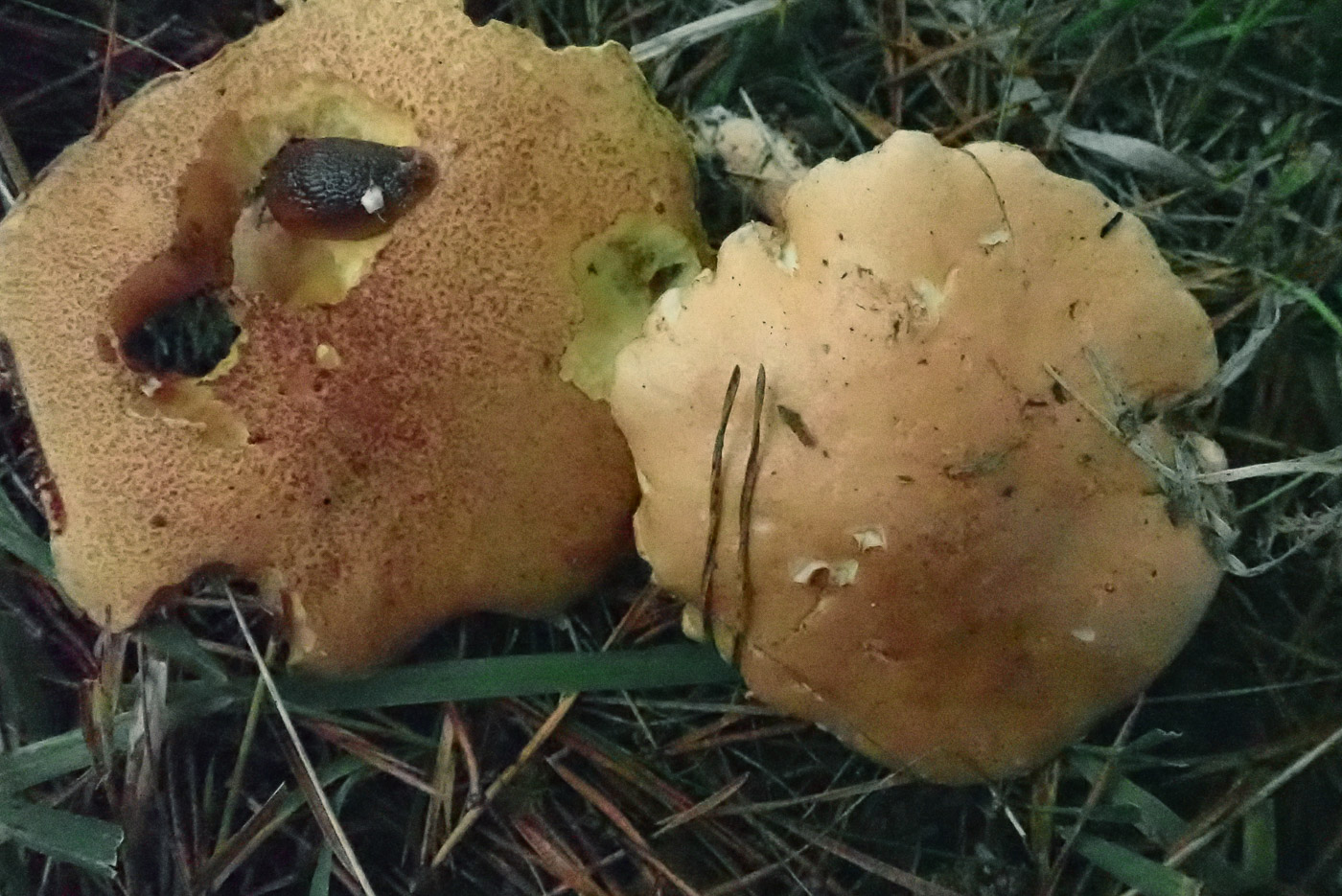
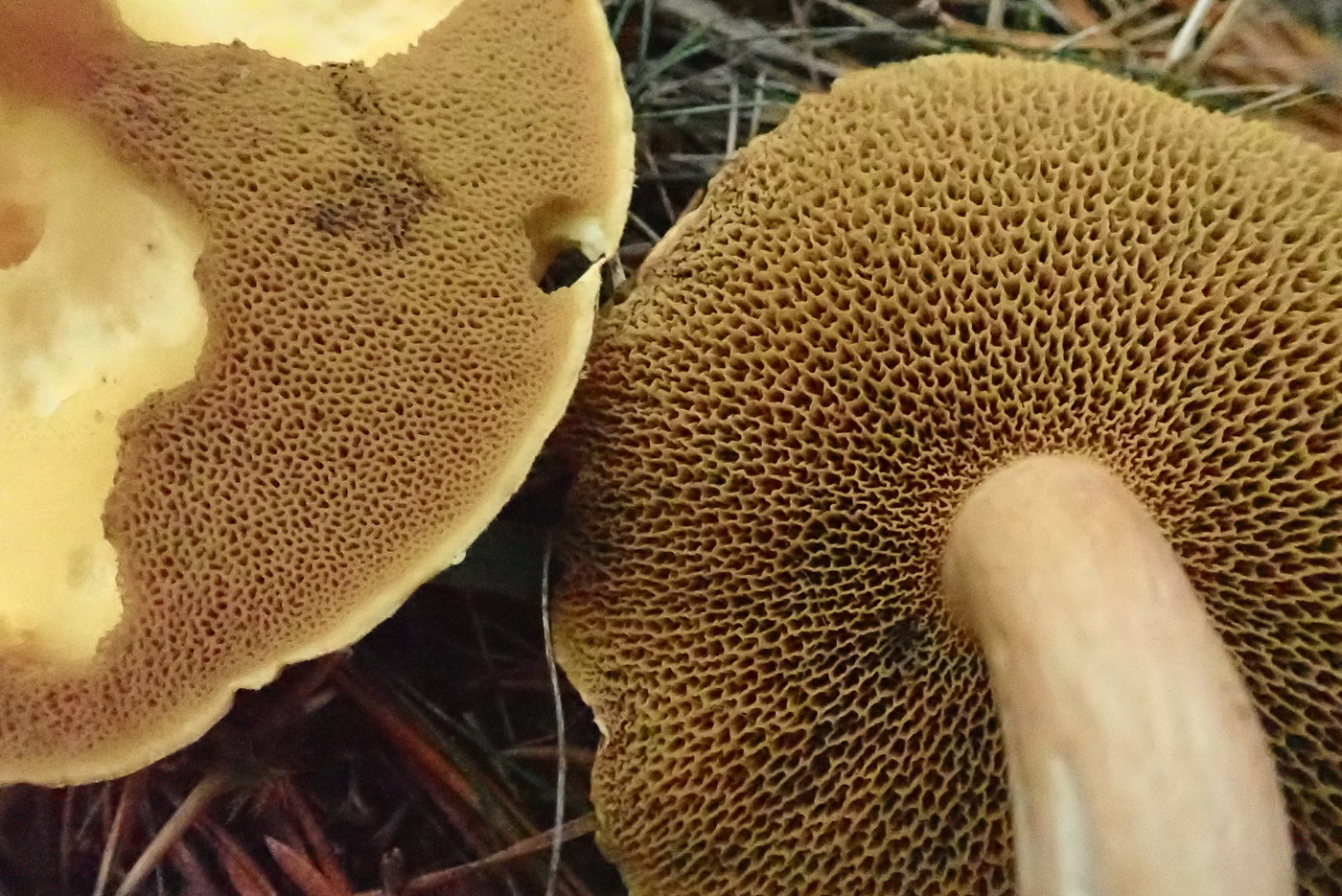
 |
October 27th Suillus bovinus (Bovine Bolete) and Gomphidius roseus (Rosy Spike)
Under Pine at Stoke Common Penny found many collections of this sticky capped Bolete and after much searching was rewarded by finding the red capped Gomphidius species which associates with it (and in fact is never found without it). The grey decurrent gills combined with rosy red cap and occurrence with S. bovinus make this an easy one to identify. There was another Suillus species present as well, giving the opportunity to compare the differences between the two. Suillus bovinus has a smooth sticky soft cap which is pinkish buff, also rather widely spaced irregularly shaped dull yellow pores which are slightly decurrent. Suillus variegatus has a darker brown textured to finely scaly cap and much smaller round pores which are not yellow but dark mustard to brown. Both species occur quite commonly under Pine and often grow near each other. Photo 1 is of Suillus bovinus; photo 2 compares the caps of S. bovinus right with S. variegatus left, photo 3 compares the pores of S. bovinus right with S. variegatus left; photo 4 shows S. bovinus together with Gomphidius roseus. (See also the collection of S. bovinus dated Aug 15)
|
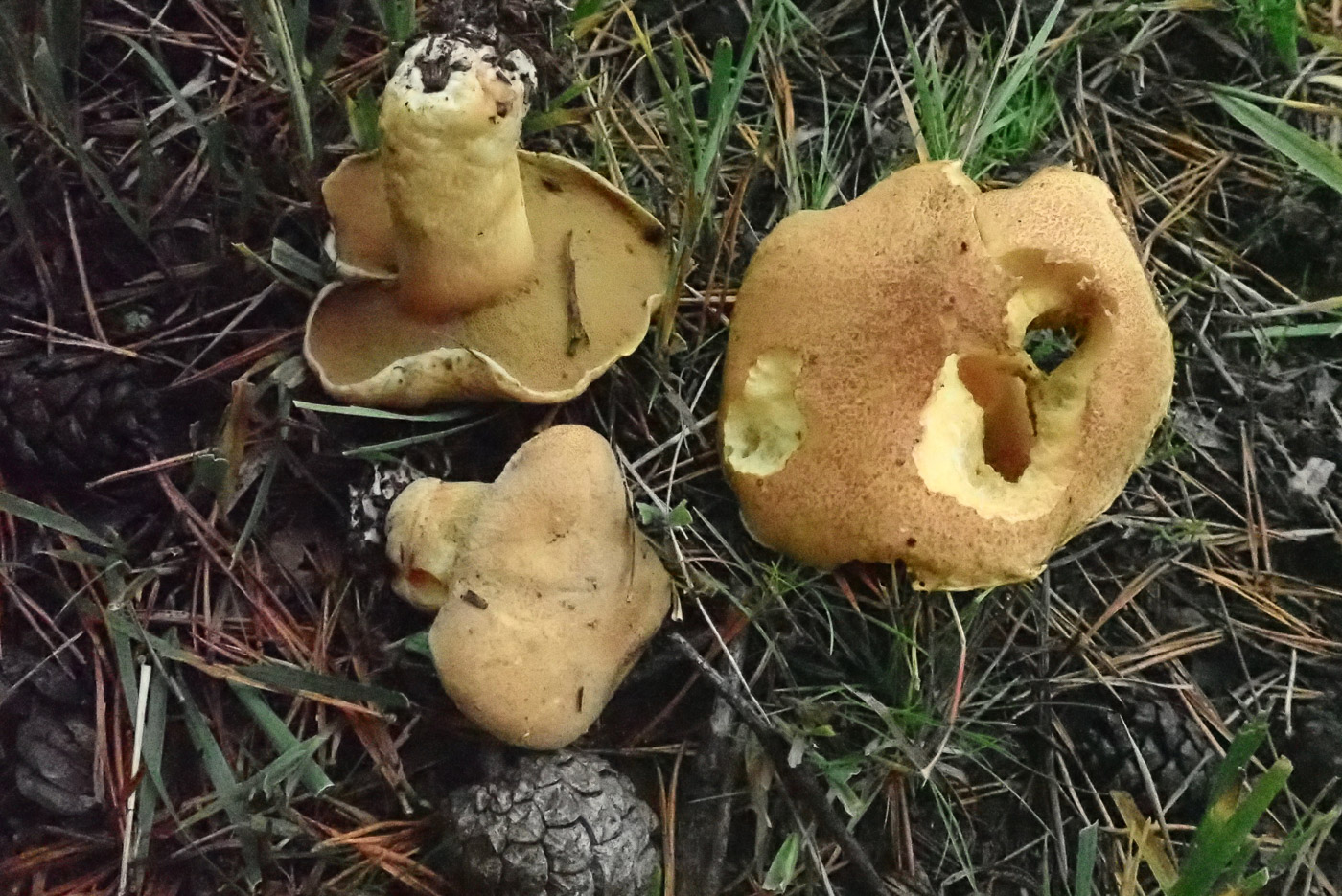 |
October 27th Suillus variegatus (Velvet Bolete)
Under the Pines at Stoke Common and often growing alongside Suillus bovinus Penny found this slightly darker capped but similar species, another which occurs only under Pine. The cap texture is notably less smooth, however, and turning it over reveals fine pores which are also darker than in the other species. (Clearly the slugs found it tastier too!). See also the text and photos for Suillus bovinus above which compare the two species side by side.
|
 |
October 27th Russula emetica (Sickener)
Also under the Pines at Stoke Common Penny found this bright red Brittlegill - one which is found only under Pine though preferring acid soil it is not common elsewhere in the county but a regular here. It is very similar to the common Russula nobilis (Beechwood Sickener) but with a brighter red cap which tends to be more domed than that species, also often has a taller stem in relation to cap size.
|
October 26th 2021
 |
October 26th Laxitextum bicolor (a corticioid with no common name) 
On some fallen unidentified wood in Beaconsfield Golf Club Jesper Launder thought he recognised this rare species for which we have just one previous county record, made by expert Martyn Ainsworth at Burnham Beeches back in 2005. At home the distinctive microscopy confirmed his determination. This is part corticioid / part bracket forming small brackets initially appearing quite similar to Stereum hirsutum (Hairy Curtain Crust) but with rather soft felt-like texture, also white and smooth underneath. It is most often found on fallen Beech but can occur on other woods. Another nice find for Jesper.
|
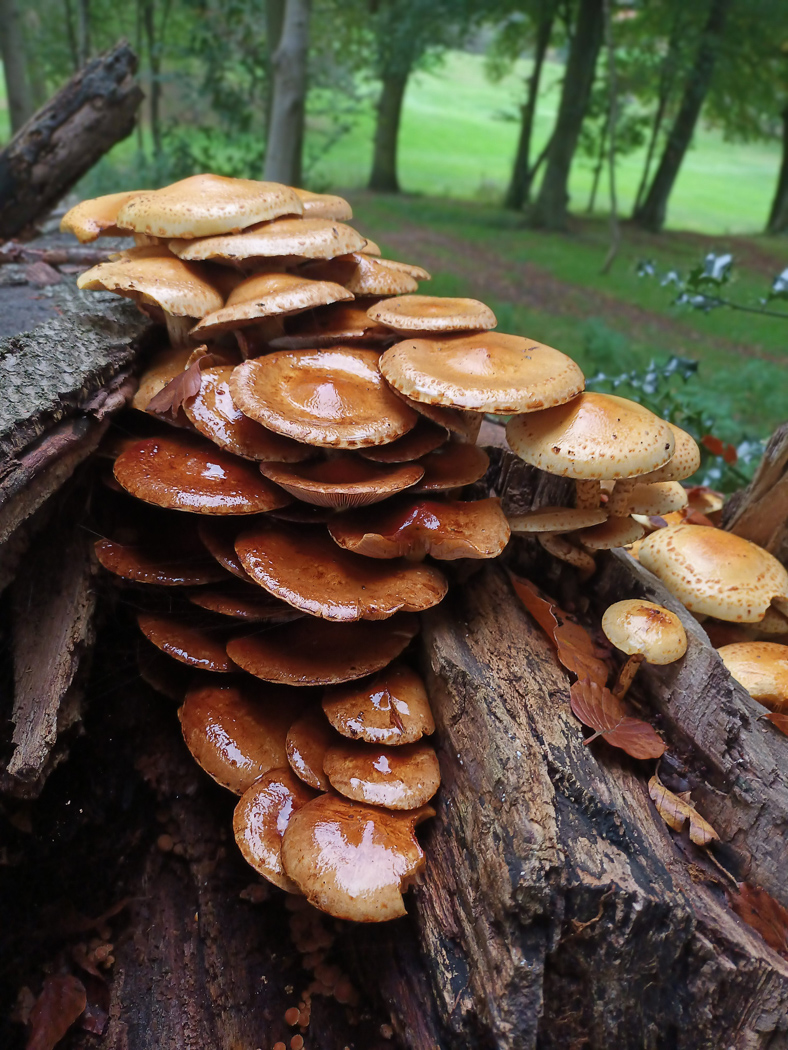 |
October 26th Pholiota limonella (a Scalycap with no common name) 
On a large fallen Beech trunk at Beaconsfield golf Club Jesper Launder found this cluster of a somewhat uncommon Pholiota - one for which we have just two previous county records. The species is virtually identical with the slightly more common P. adiposa, both species being restricted to Beech and having slimy caps but otherwise rather like the very common and dry-capped P. squarrosa which is happy on many different trees. The only difference between these two slimy capped species is in their spores: smaller and narrower in today's species.
|
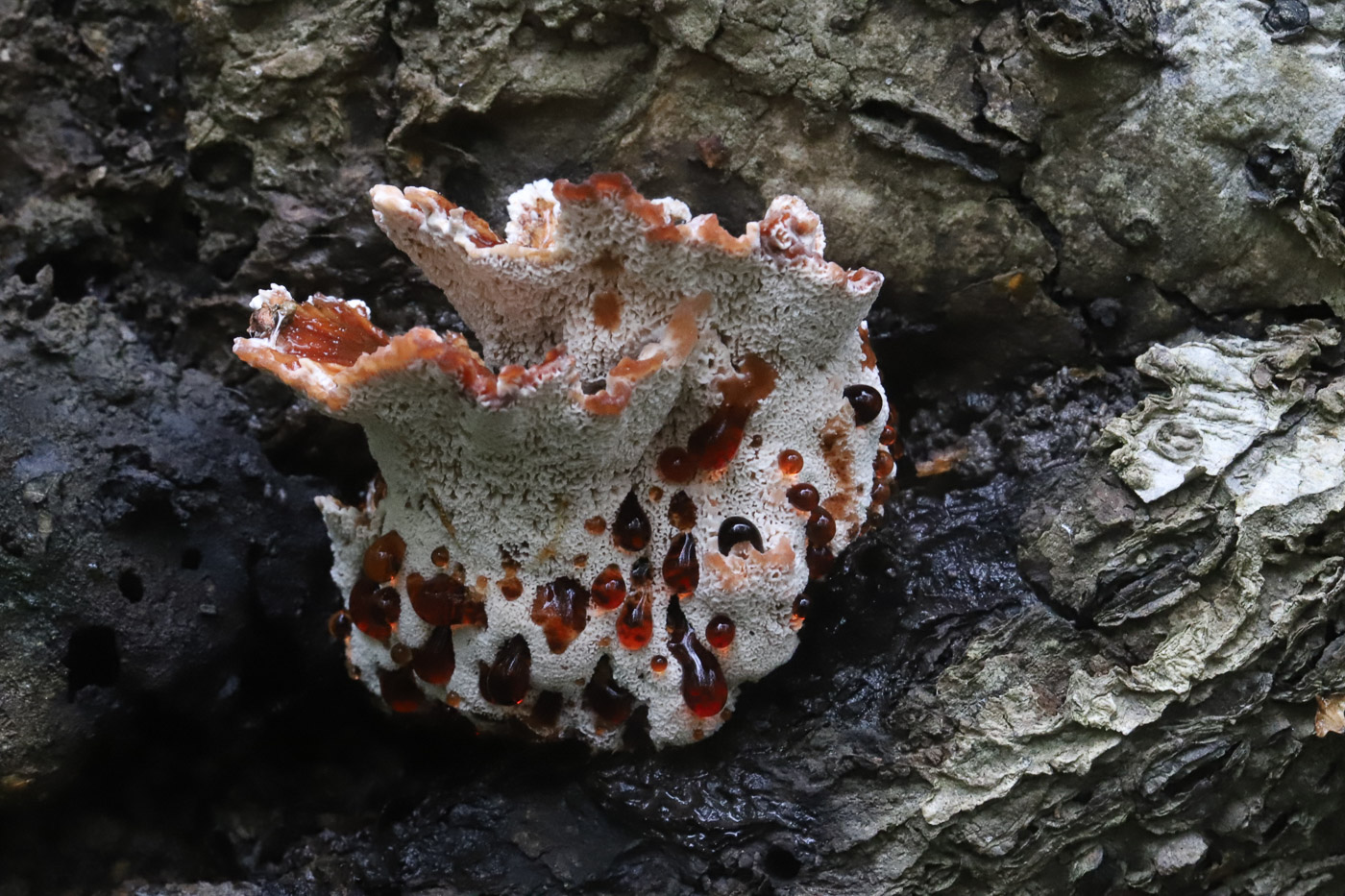 |
October 26th Abortiporus biennis (Blushing Rosette)
In Bernwood Forest Phil Townsend came across this lurid bleeding porous mass and wondered seriously if he'd discovered the extremely rare Hydnellum peckii (Devil's Tooth) - a species found almost exclusively in the Caledonian forests of Scotland. Well, that would have been something and Penny recalls having been fooled by the same experience in the New Forest (like Bernwood an area with good quantities of mature Pine). In wet weather Abortiporous biennis often produced these red droplets (as does the Hydnellum) and when emerging out of the ground apparently not on wood rather than on log piles etc it can be somewhat confusing. Any Hydnellum species would have distinct spines, however - very different from the strongly porous surface seen here.
|
October 25th 2021

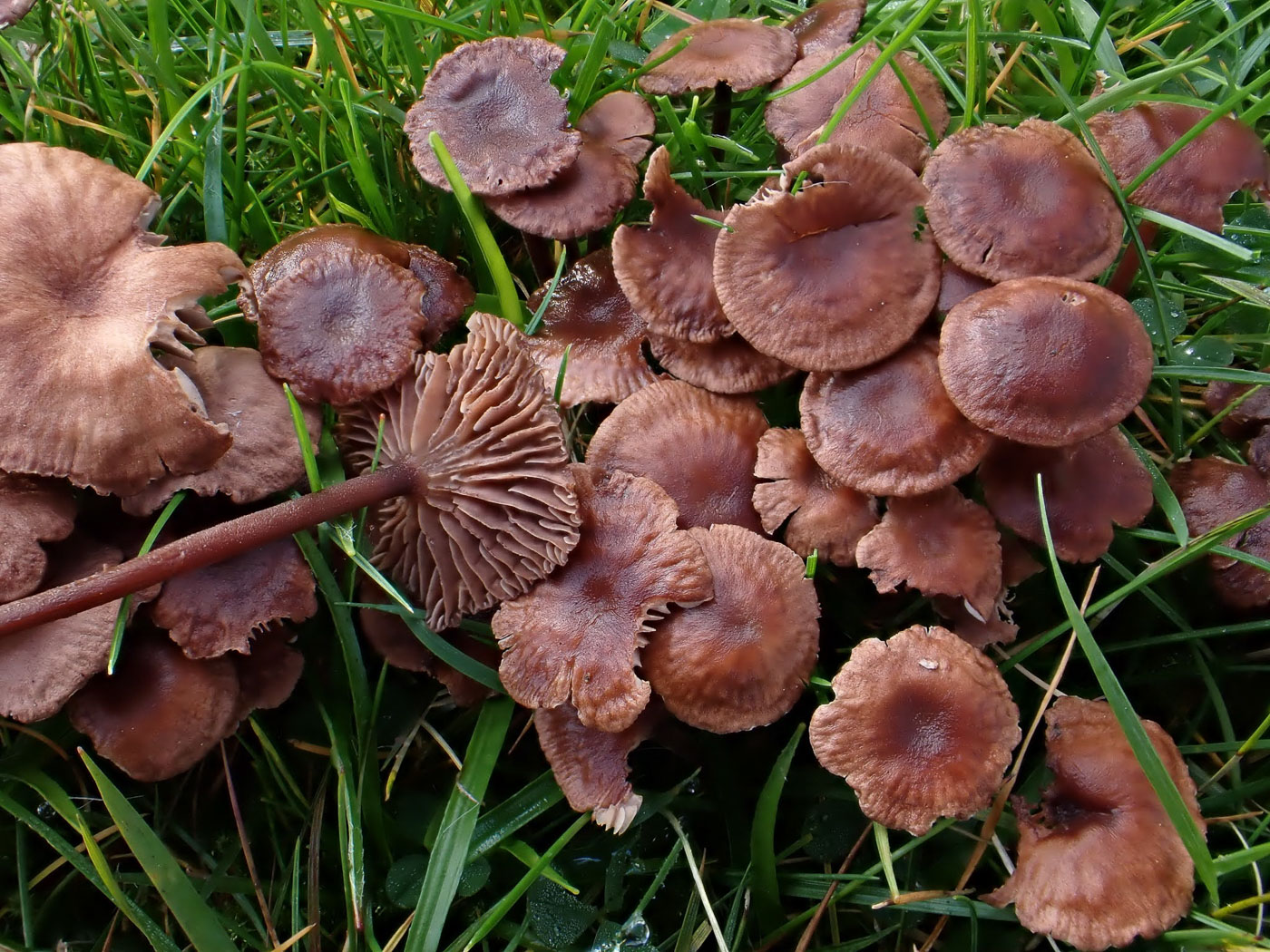 |
October 25th Collybiopsis villosipes (a very rare species with no common name) 
At Stoke Poges Memorial Gardens in lawns we came across several tightly clustered clumps of this small mushroom only recently recognised at British. It occurs in USA and Australia (and probably elsewhere in Europe) and has previously resided in Gymnopus, Marasmius and Marasmiellus but is apparently now listed in Collybiopsis! Penny has found it at this site for many years and not known what it was, only what it was near, but when sequenced last year all was revealed. Stephen Plummer's photos illustrate it well, the caps being no more than 1.5 cm across at most.
|
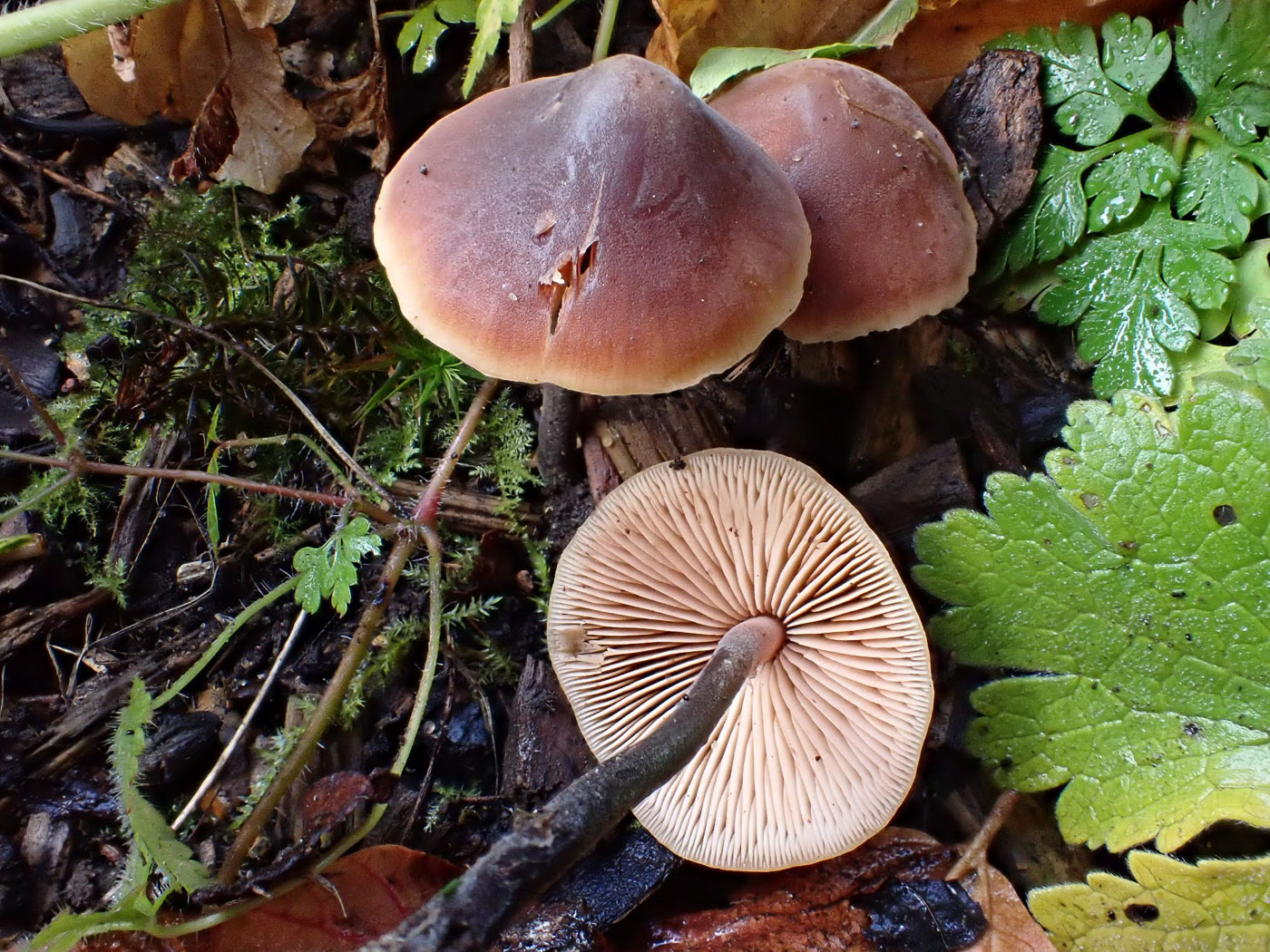 |
October 25th Macrocystidia cucumis (Cucumber Cap)
At Stoke Poges Memorial Gardens in woodchip we found this distinctive mushroom, quite tall for its cap size of around 3-4 cm across and with a rich brown conical cap which has a faint 'bloom' on the surface and a pale rim. The gills are pale brown, but put it to your nose and it has a remarkable smell! Opinions differ: cucumber sandwiches / salmon and cucumber sandwiches / cod liver oil. Whichever you favour, once smelt never forgotten! The photo is Stephen Plummer's.
|
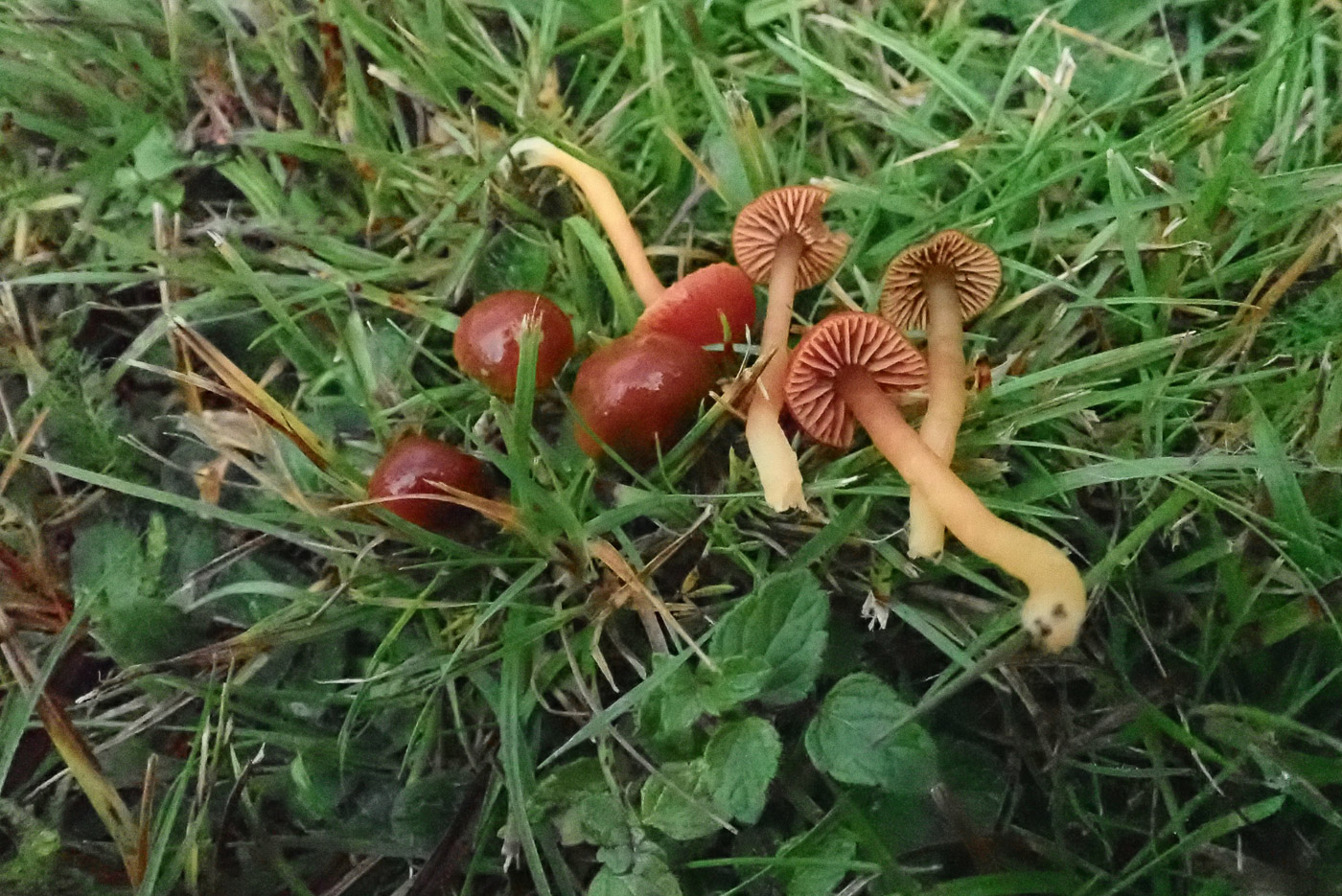
 |
October 25th Gliophorus aff. europerplexus (a very rare Waxcap awaiting a name)
In St Giles Churchyard, Stoke Poges, Penny's target species was this distinctive little Waxcap which she found here last year, and we were lucky enough to find it in exactly the same spot! Illustrated in Kibby vol1 p18 as G. sciophanus (apparently an invalid name) it is one of the psittacina complex - still in the process of being unravelled with DNA at RBG Kew. Similar to but different from G. europerplexus, its cap colour is vivid rusty red and it lacks any green tints which are always present in G. psittacina at the stem apex if nowhere else, but like all in this genus it is slimy all over. This is definitely one to look out for now in churchyards or unimproved grassland. Photo one is Penny's; photo 2 is Stephen Plummer's
|

 |
October 25th Gliophorus irrigatus (Slimy Waxcap)
In St Giles Churchyard, Stoke Poges, a group of us found several nice Waxcaps including this species, previously known as Hygrocybe irrigata. It is entirely slimy, both cap and stem, especially after rain when it it hard to pick up! When older it fades and loses some of the stickiness. Photo 1 is by Stephen Plummer. Photo 2 is of a further collection made at Prestwood Churchyard by Penny on Oct 30th.
|

 |
October 25th Cyathus striatus (Fluted Birds Nest)
This tiny species was much admired by members at Stoke Poges Memorial Gardens where it was found in woodchips. Each 'nest' is no wider than 5-6 mm and starts out like a tiny spiny puffball (seen top right of Photo 1), then splits open revealing a white membranous lid which is discarded to further reveal the fluted cup with four 'eggs' which are in fact bundles full of spores. Raindrops then expel the eggs which then dispersed their spores. Photos are by Stephen Plummer.
|
October 23rd 2021
 |
October 23rd Hygrocybe ceracea (Butter Waxcap)
At Stampwell Farm Jackie Ewan found this nice collection of one of the smaller yellow Waxcaps. It is not always easy to separate from the larger and more common H. chlorophana, especially when still small! Today's species tends to have orange colours mixed in with yellow and has a greasy but not sticky cap and a dry and not sticky stem, but the safest way to split them if in doubt is with a scope.
|
October 22nd 2021
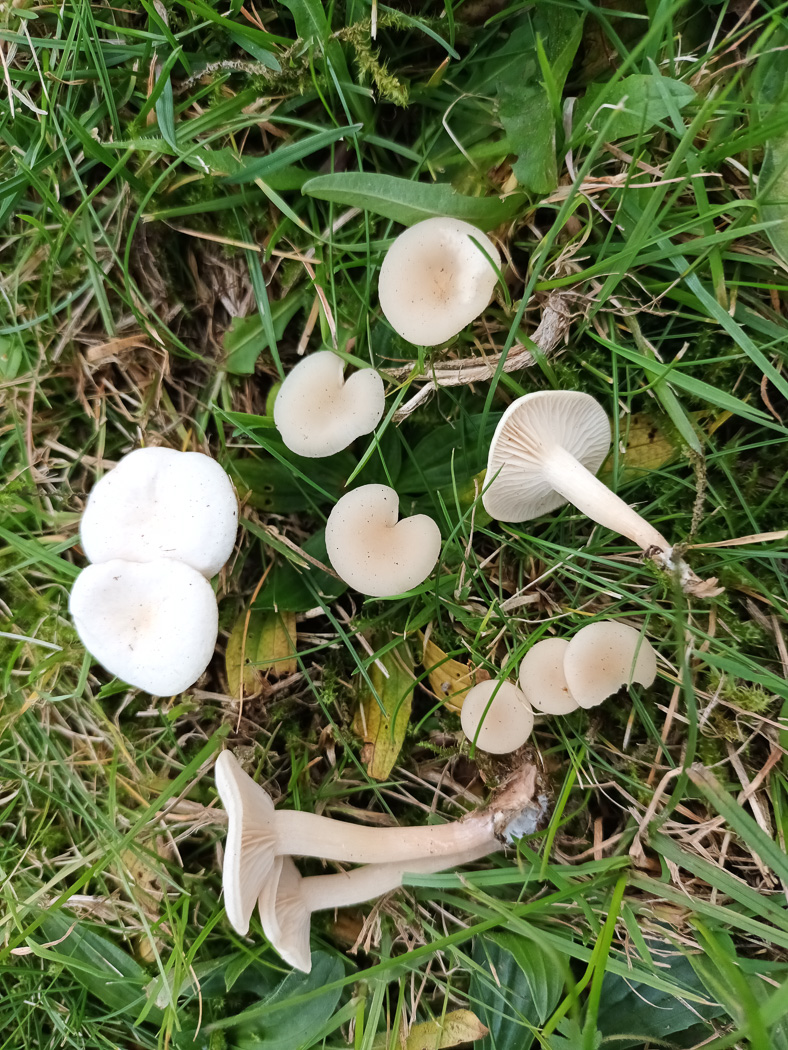 |
October 22nd Clitocybe agrestis (a Funnel with no common name) 
In a grassy area in Chalfont St. Giles Jesper Launder noticed this white Funnel growing in rings amongst the quite similar but clearly different C. rivulosa and recalled failing to tie it down to species last year. Having no useful microscopic characters to help beside checking the spore size, this genus often causes difficulty and tends to be passed by, but Jesper noted the almost Waxcap / Woodwax appearance with no zoning or pink tints as in the very common C. rivulosa, also the more distinctly decurrent gills, and was able to sort it this time. We have just one previous county record, though texts acknowledge that the species is probably not that rare but often overlooked.
|
 |
October 22nd Lepiota fuscovinacea (a Dapperling with no common name) 
In mossy grass in Chalfont Dean Jesper Launder found this rare species, one for which we have only a couple of previous county records, the last in 2007. It has a somewhat dark coloured cap for a Dapperling, the Latin species name describing it well as dark brownish wine coloured. The surface quickly becomes floccose scaly, as does the stem below the ring zone, thus contrasting strongly with the free white gills and upper stem. The flesh tends to be pink both on the cap surface between the darker flocks as well as within. A nice find.
|
October 21st 2021

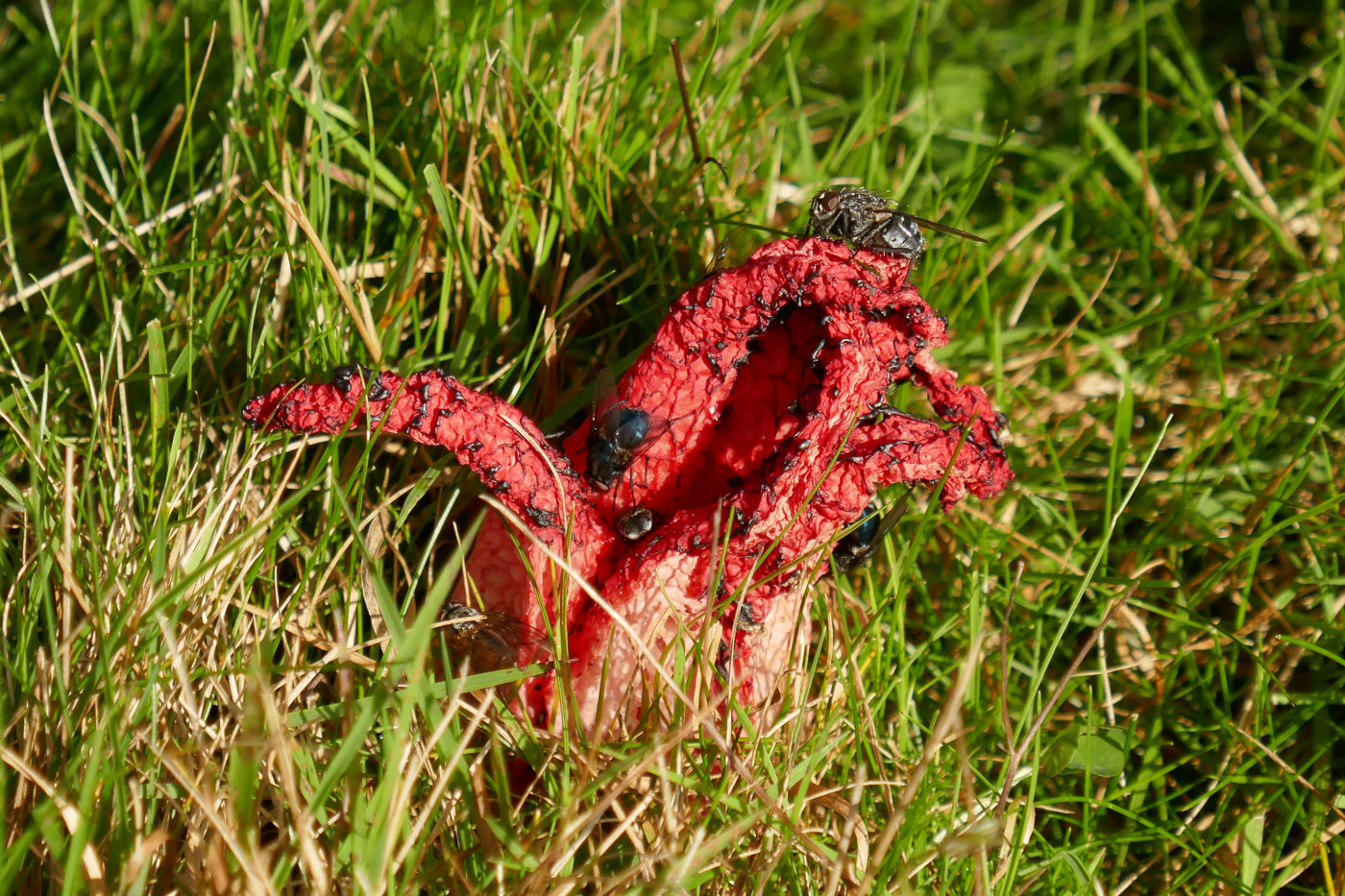 |
October 21st Clathrus archeri (Devil's Fingers)
Chris Miller noticed today that this strange fungus related to the Stinkhorns is up and fruiting again in a field in Naphill (photo 1). New to the county when found here two years ago, we now have two other known sites and it seems to be on the increase. Then a day later came a report from Jackie Ewan who'd found it at Stampwell Farm (photo 2) where it's been seen for the last couple of years also.
|
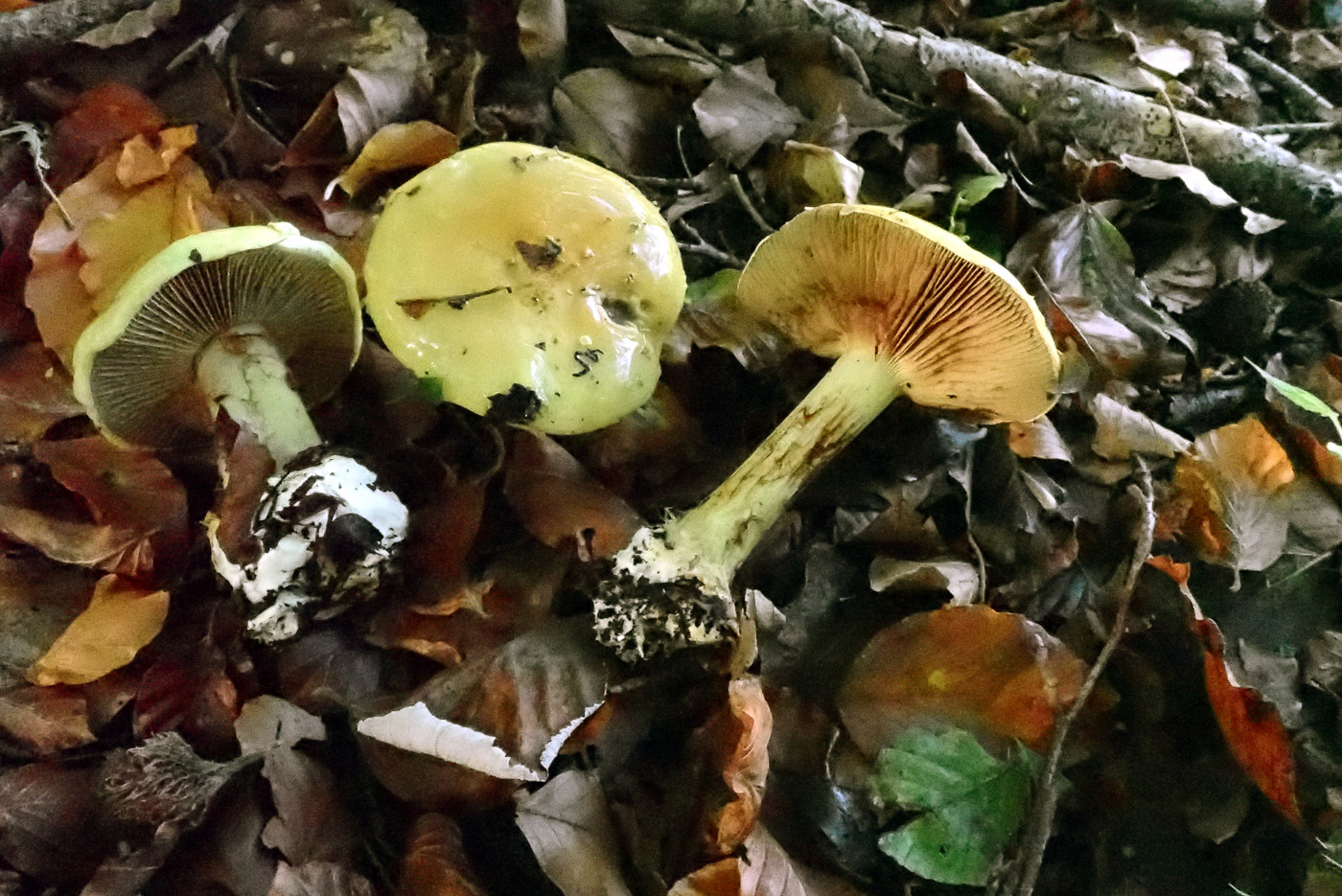 |
October 21st Cortinarius elegantissimus (a Webcap with no common name) 
In Mousells Wood under Beech Penny found several different Webcaps, this site being notable for rare and interesting species. The first was almost identical to one she'd found the previous day at Gussets Wood so she suspected todays would prove to be C. bergeronii once more (see photos and text for that species dated Oct 20th to save repetition of the same comments!). At home a careful check of the spores of both collections was made, and there was no doubt that they differed in size, making the Mousells Wood collection yet another rare species.
|
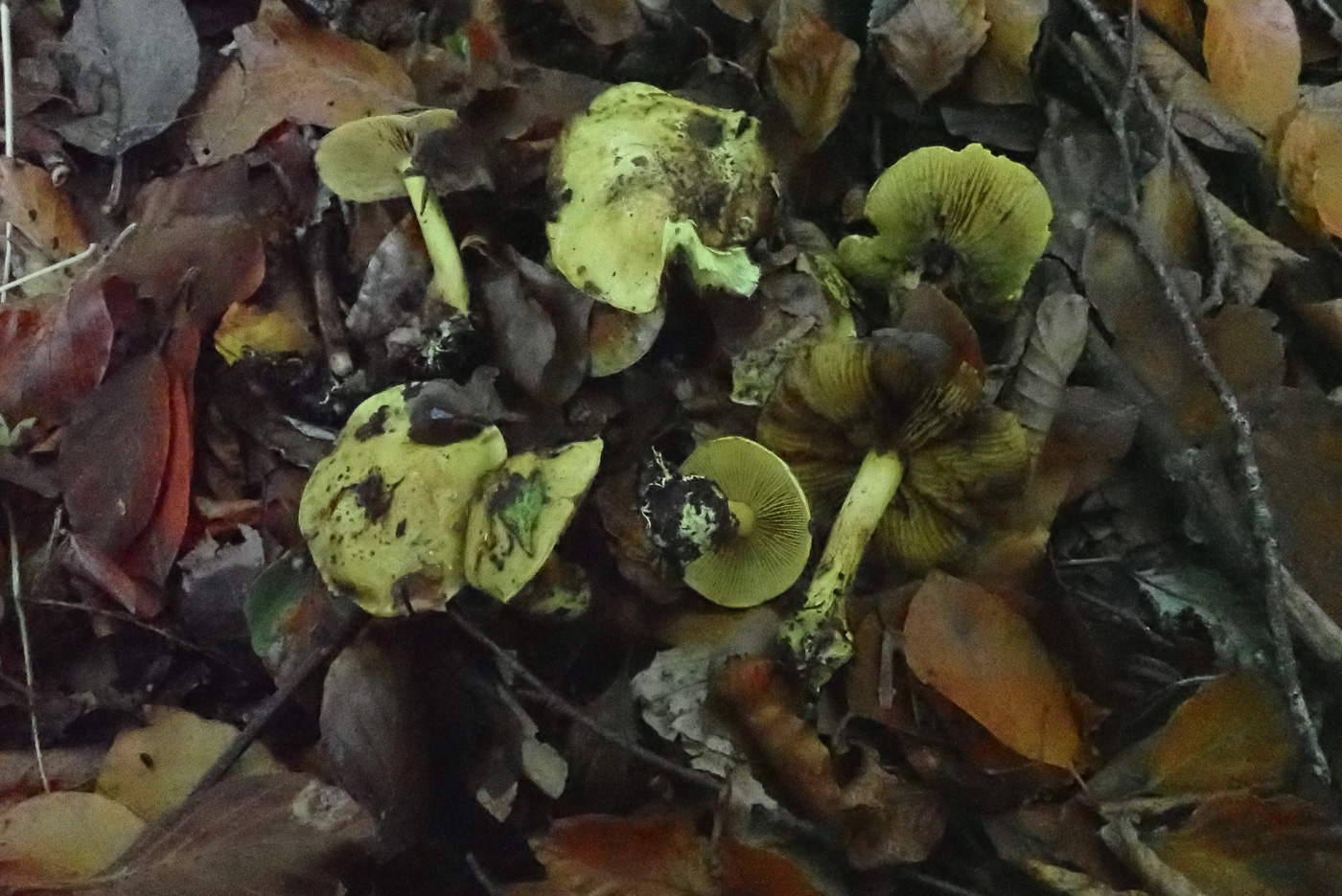
 |
October 21st Cortinarius splendens (Splendid Webcap) 
A few paces further on in Mousells Wood Penny found another bright yellow sticky Webcap under Beech but suspected this was not more of the same species described above. The yellow was decidedly sulphur with a greenish glint, as were the gills, and the stem base was much more pronounced, like a platform. After working on it at home it proved to be C. splendens, another rare species of calcareous Beech woodland, one she'd recorded here three times before (once with Webcap expert Geoffrey Kibby) though we have no other county sites for it.
|
 |
October 21st Amanita vaginata (Grisette)
In Mousells Wood under Beech Penny noticed two very pale Amanitas, one still only a button, and carefully extracted the larger specimen in order to preserve the volva (sac) at the stem base which can be diagnostic in the genus. The cap was almost white, tempting one to speculate that it might possibly be the extremely rare A. virosa (Destroying Angel) - new to the county last autumn from Hodgemoor Woods. The volva, however, was far too flimsy and obviously of the sort found in the Grisette group of Amanitas (of which the commonest is A. fulva - Tawny Grisette). With a white flimsy volva and an almost white cap this had to be a rather pale example of the elegant A. vaginata, normally much greyer than this and not very common.
|
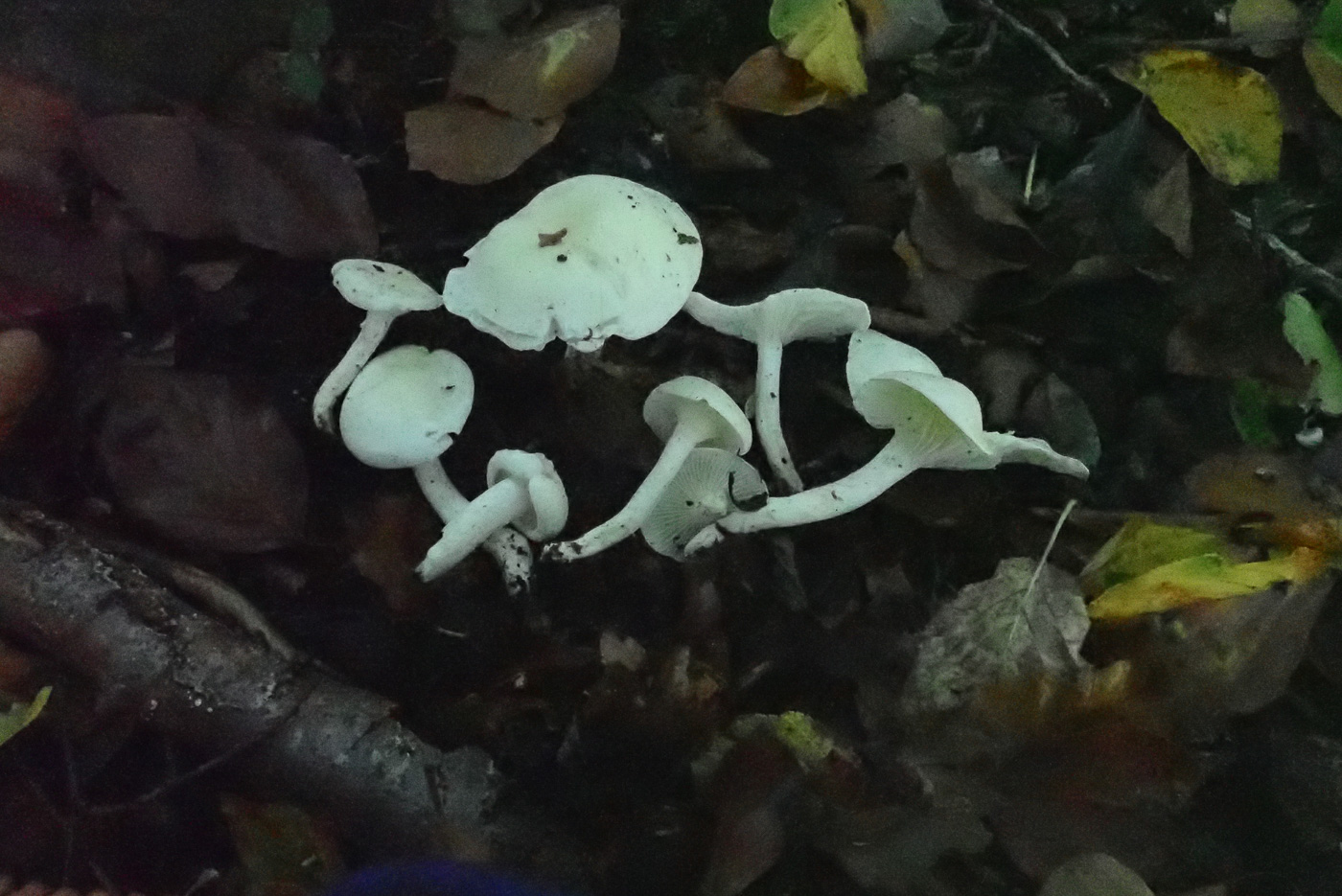
 |
October 21st Hygrophorus discoxanthus (Yellowing Woodwax)
In Mousells Wood Penny found this sticky white species and knew that it would need testing at home in order to name it. There are several extremely similar white Woodwaxes, some are sticky, some are dry, and the host tree can be significant also. Under Beech as here there are two likely candidates, both quite common, which can be split with a drop of KOH. The cap of today's species turned instantly yellow brown with KOH (and in fact in the field old specimens can often be found having naturally turned yellow or brown in places), whereas H. eburneus never yellows in the field and only turns brown at the stem base with KOH. See H. eburneus dated Oct 20th for comparison. Photo 2 is of a more mature collection made a week later near Jordans Village by Jesper Launder where the beginnings of natural yellowing can be seen at the cap edge.
|
October 20th 2021


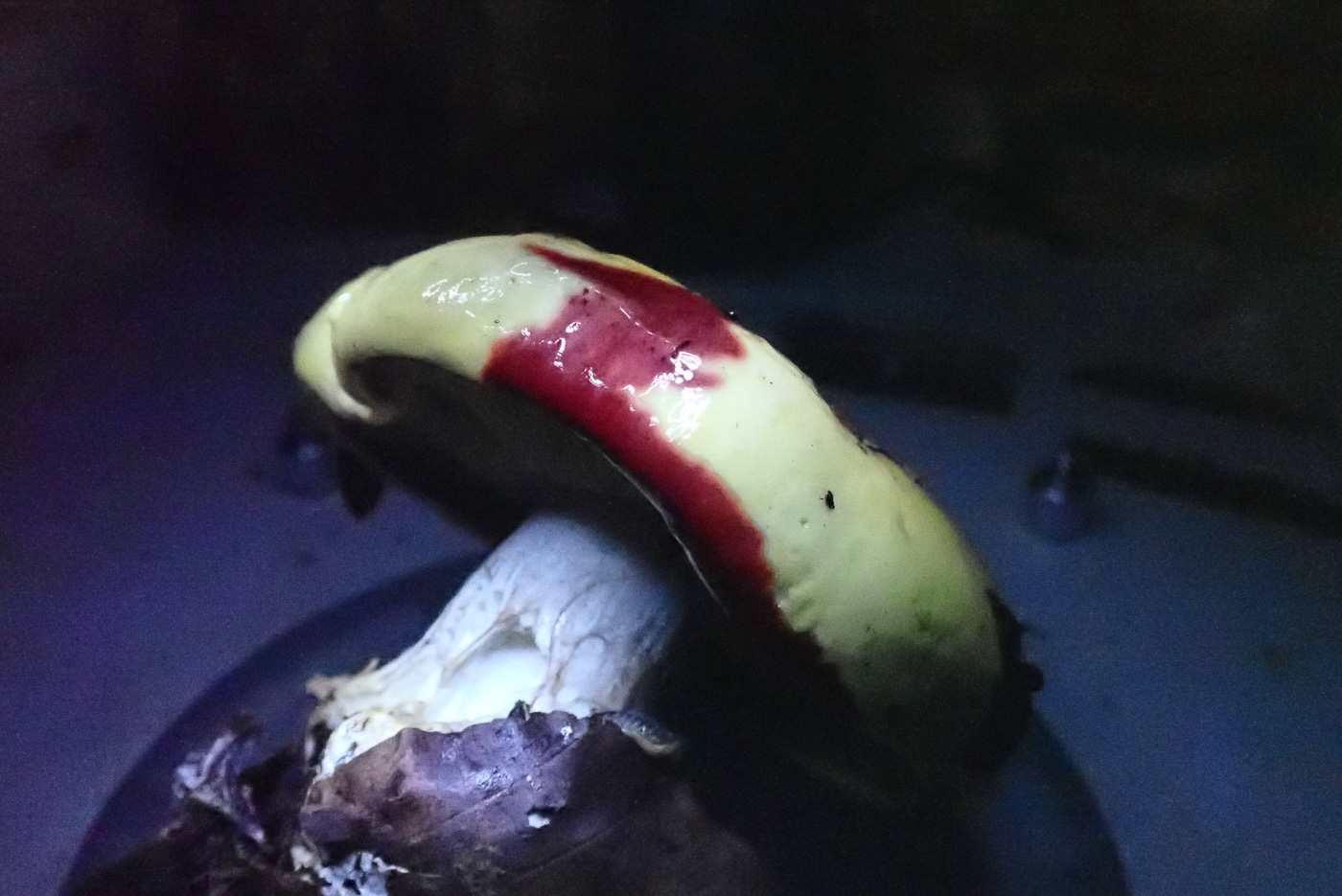 |
October 20th Cortinarius bergeronii (a Webcap with no common name) 
Under Beech in Gussets Wood Penny was pleased to find this beautiful and substantial Webcap. It belongs to Section Phlegmaceum (ie Webcaps with sticky caps but dry stems, often large and with swollen or platform stem bases) and there are two almost identical large species found in calcareous Beech woodland, both rare and with yellow caps and gills and swollen stem bases, and both with the same blood red reaction when a drop of KOH is added to the cap surface (see photo 3). Only the spore size (or a DNA test) will separate them, as Penny found out when finding the other species, C. elegantissimus, the following day! (See also C. elegantissimus dated Oct 21.)
|
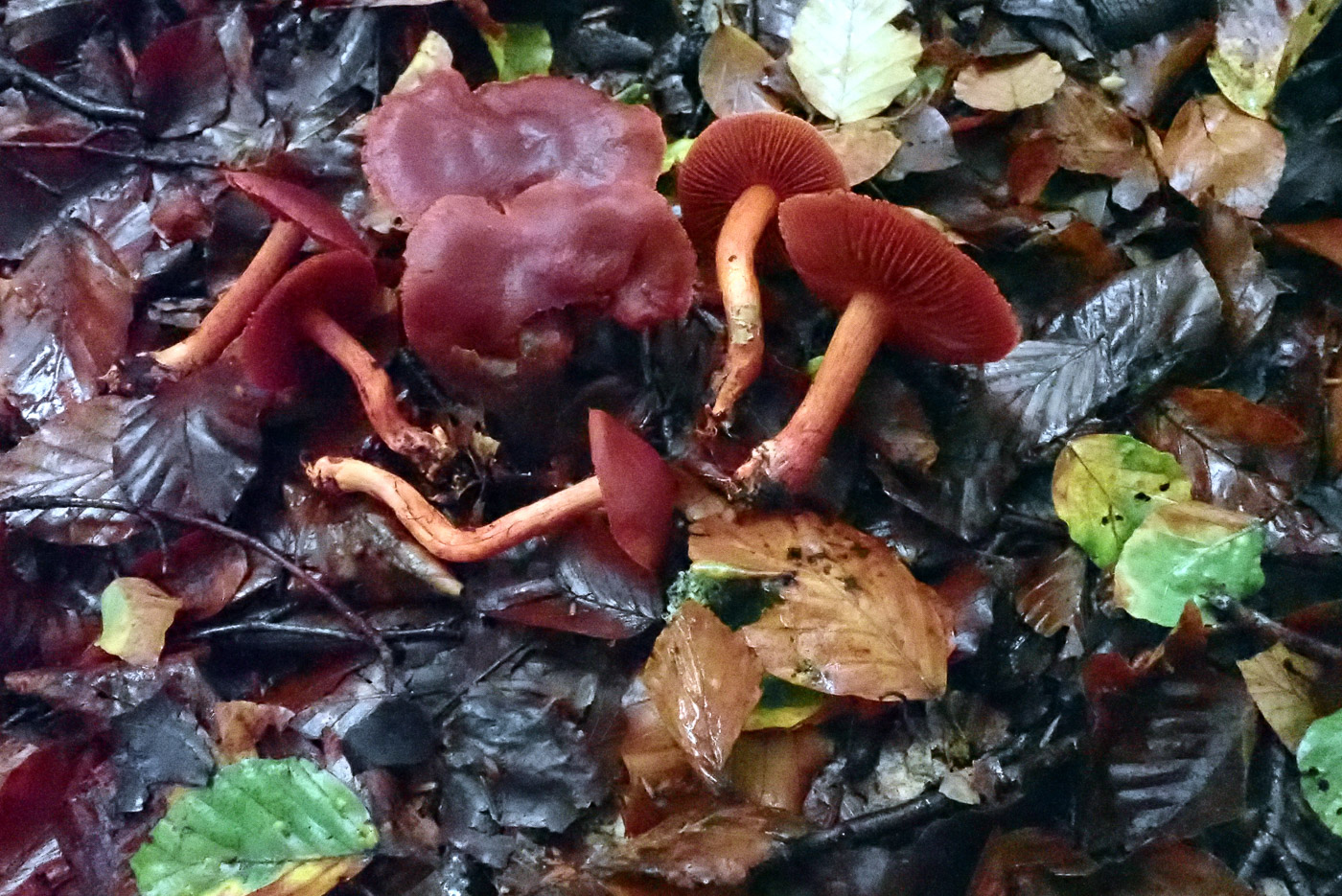 |
October 20th Cortinarius puniceus (Bloodred Webcap)
In Gussets Wood under Beech Penny found good numbers of this striking species, one of few Webcaps safely nameable in the field. Previous known as C. sanguineus, that name now applies to the similar species which occurs under Pine in Scotland (though both appear to have the same common name as yet?) and not to our more southern Beechwood species. Having a dark but brilliant red cap and gills, this uncommon species is surprisingly well camouflaged when amongst fallen leaves and easily missed. Do not confuse with C. semisanguineus (Surprise Webcap) which has the same striking red gills but a brown cap and is found under Pine or Birch. For comparison see a collection dated Oct 27th.
|
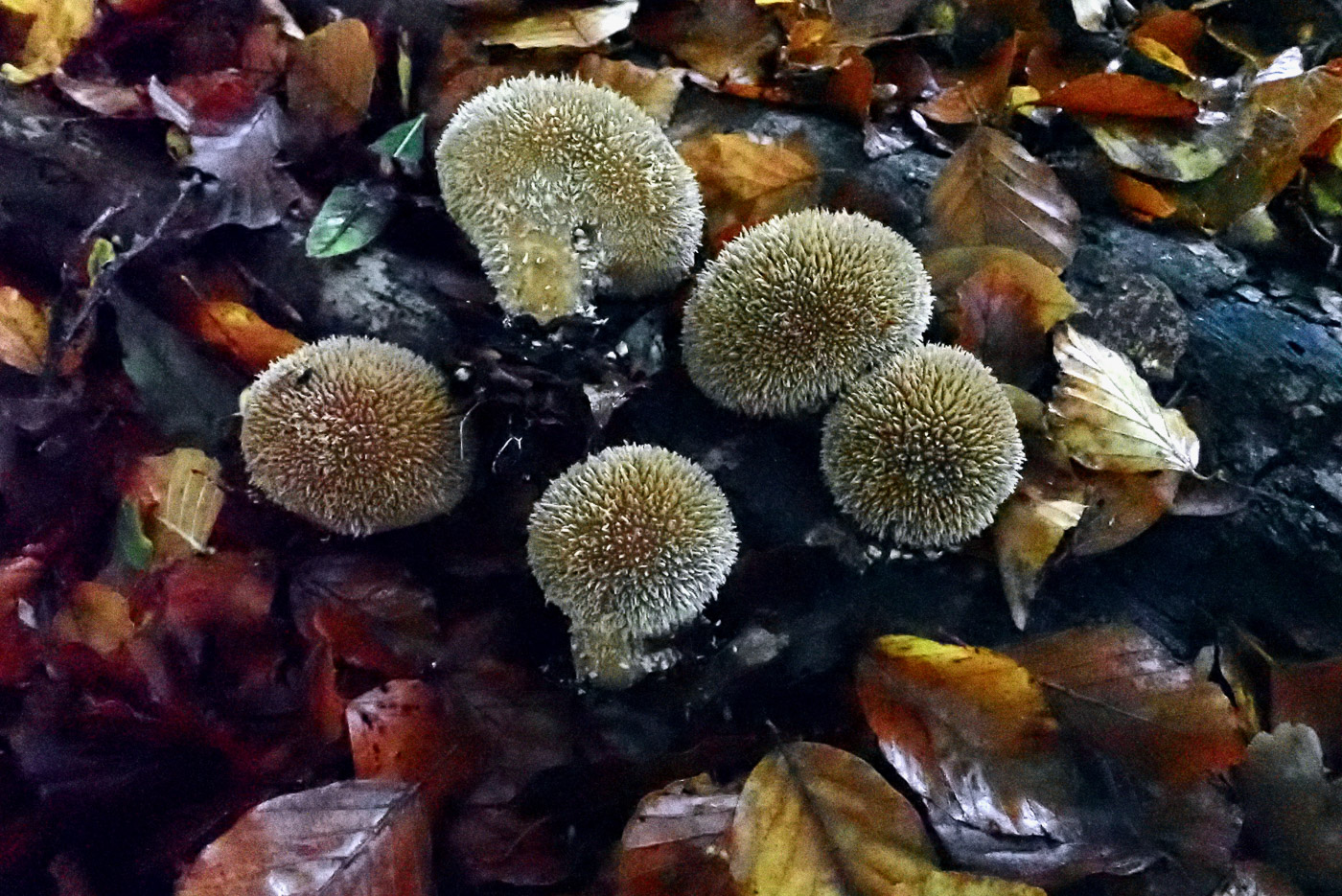
 |
October 20th Lycoperdon echinatum (Spiny Puffball)
In Gussets Wood Penny found quite a few of these very spiny puffballs which occur in mature calcareous Beech woodlands such as this. The species is not that common and often claimed in place of the rather darker, smaller, more common L. nigrescens (Dusky Puffball) which has quite similar conical clusters of spines but in that species they are shorter and do not overlap at the centre of each cluster as here. Photo 2 shows a specimen found at Dancersend by Mick Jones 10 days later.
|
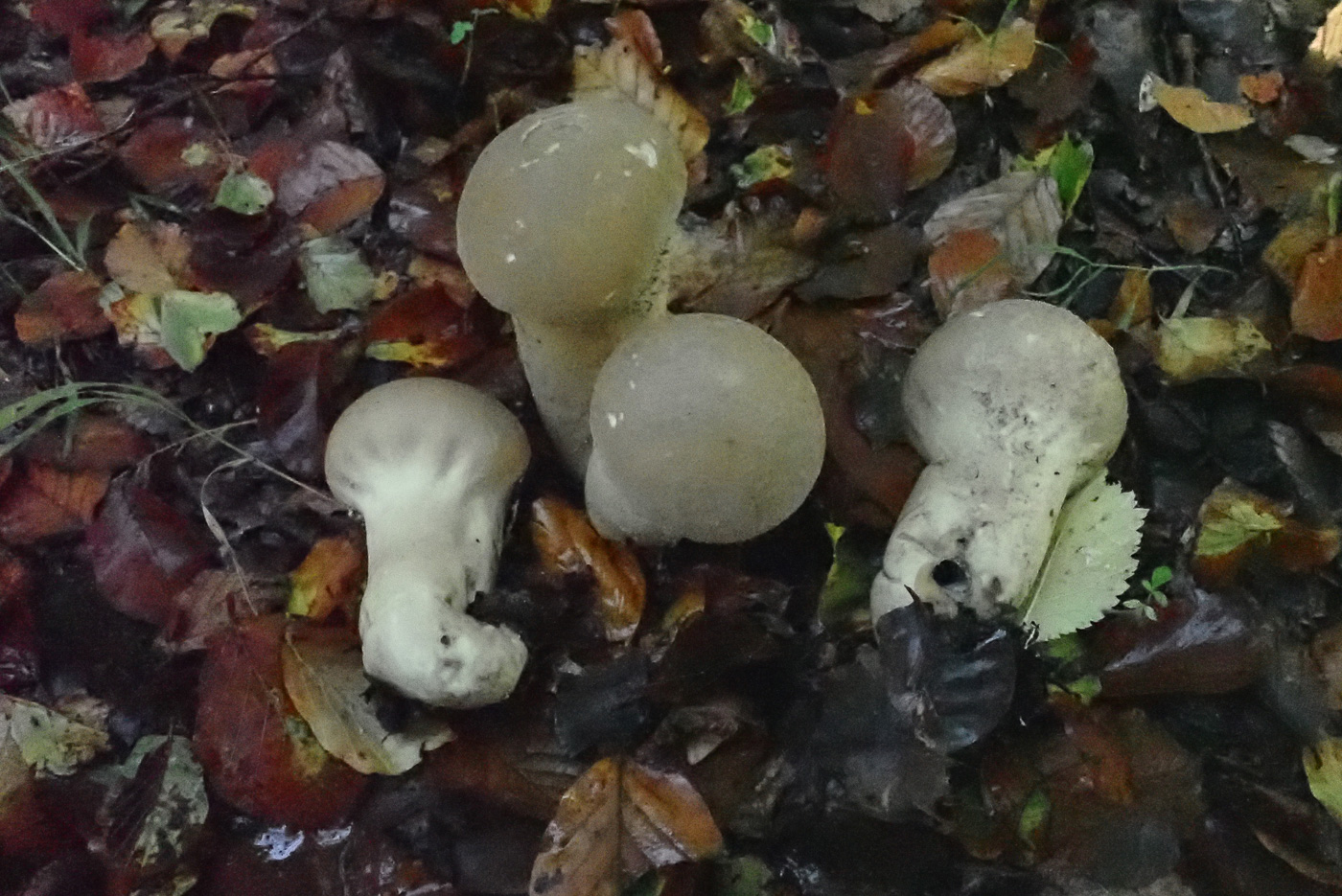 |
October 20th Lycoperdon excipuliforme (Pestle Puffball)
Another much larger Puffball was found by Penny in Gussets Wood, a species which is much less common than the smaller trio of woodland puffballs (L. perlatum, pyriforme and nigrescens). The surface of L. excipuliforme is quite smooth as in L. pyriforme but they can get to around 15 cm tall by 10 cm, are typically pestle-shaped and occur in woodland litter, occasionally in grassy areas.
|

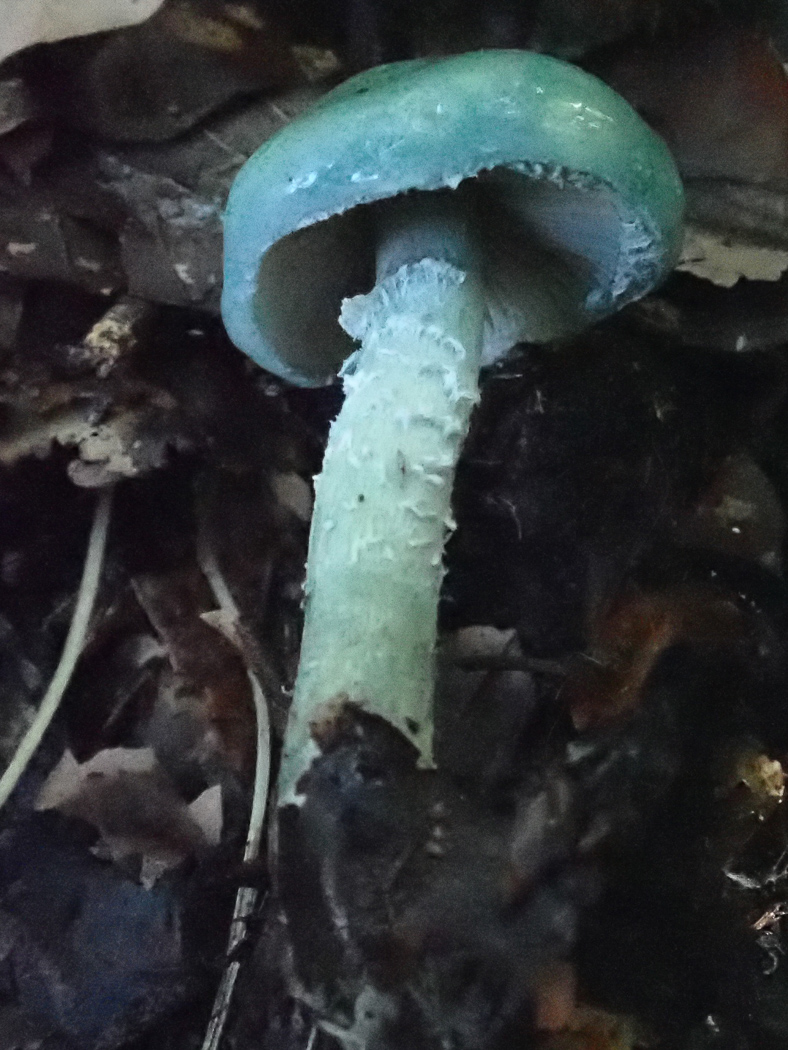 |
October 20th Stropharia caerulea (Blue Roundhead) 
In a rather wet Gussets Wood Penny found this rather faded collection of a beautiful blue green quite common species which develops dark brown gills and often has a floccose stem with a ring (though this can disappear with age or weather). A little further on she found a better specimen (photo 2) showing off its stunning colour. This is mainly a species of grassland / grassy verges but often also occurs in woodland litter where often mistaken for the even more impressive but considerably rarer woodland species S. aeruginosa (Verdigris Roundhead). That species should really only be claimed if proven to have different microscopic features from today's species.
|
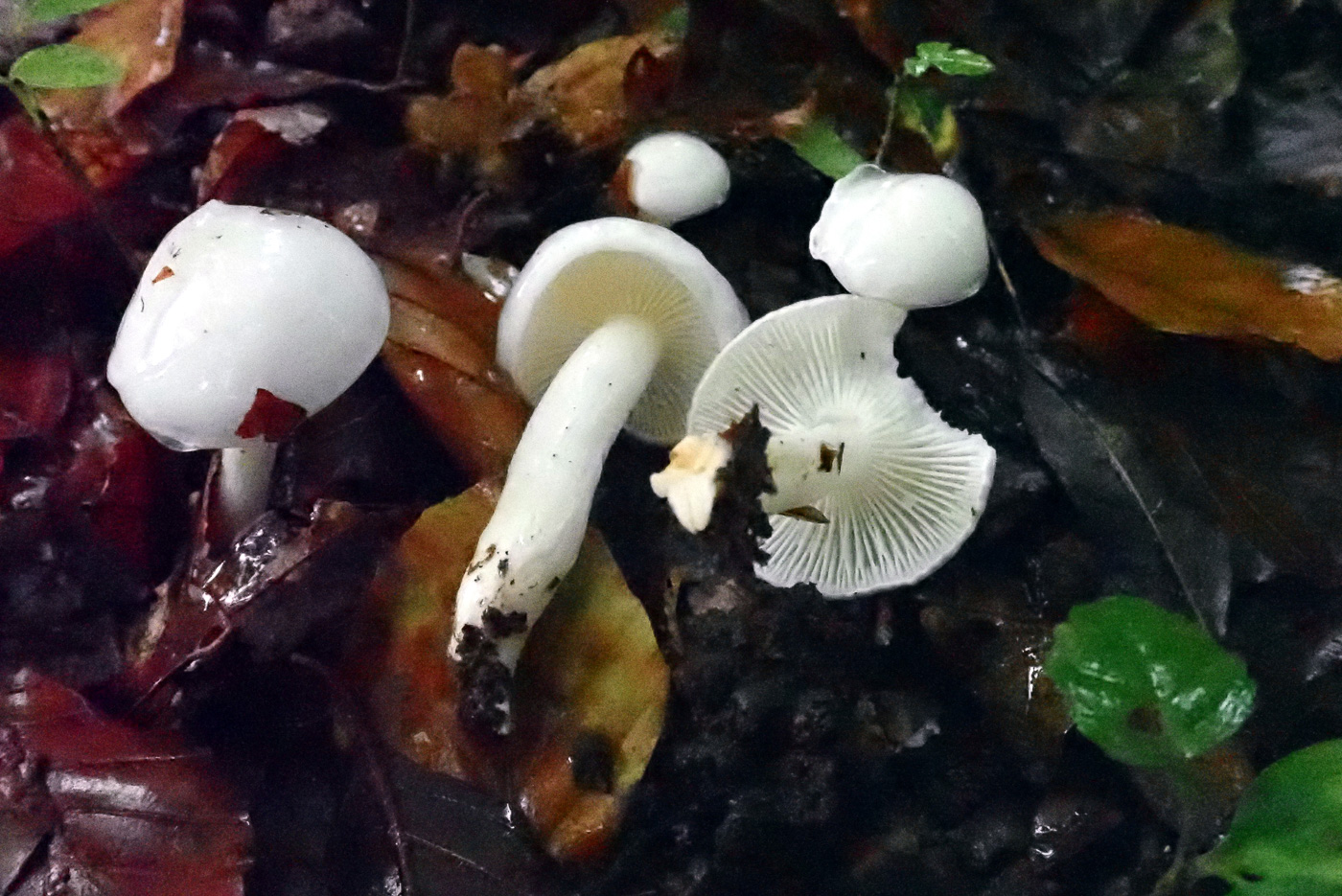 |
October 20th Hygrophorus eburneus (Ivory Woodwax)
After rain in Gussets Wood under Beech Penny found many extremely slimy small mushrooms which were entirely white. There are several quite similar white members of this genus - a bit like Waxcaps but found in woodland - and it is often necessary to take one home to treat with a drop of the chemical KOH. Unlike another very common white species, the cap of which turns instantly rusty brown, today's species turns rusty brown only at the stem base with no change in the cap.
|
 |
October 20th Mycena rosea (Rosy Bonnet)
In Gussets Wood Penny found plenty of these bright pink Bonnets - one of the larger species in the genus. They are common in deciduous litter, particularly under Beech as here, they have a whitish stem which tapers upwards and a sharp radishy smell, making them quite easy to identify in the field unlike many other smaller Bonnets.
|
October 19th 2021

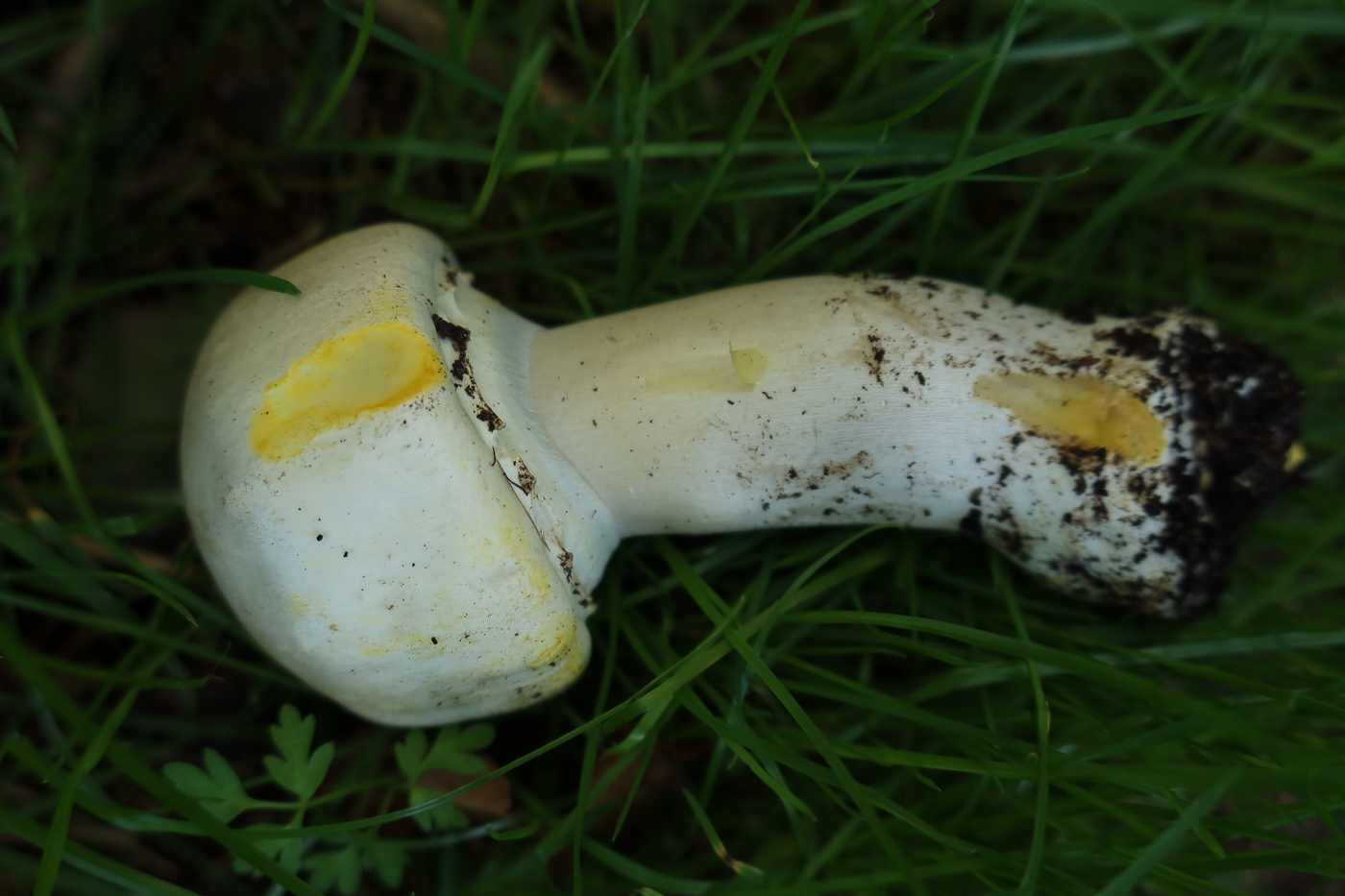 |
October 19th Agaricus xanthodermus (Yellow Stainer)
In Downley Woods Claire Williams found what she thought was a tasty collection of Mushrooms, noticed the caps were yellowing where touched and that the smell was unpleasant and therefore guessed they might be Agaricus urinascens. What she didn't check was whether the stem base when scratched turned bright chrome yellow! On receiving the photos Penny recognised the rather angular square caps with flat tops and suggested Claire might go back to test the base. This she did and sure enough photo 2 reveals the telltale signs of this species- known to cause gastric upsets if eaten. Many species of Agaricus have caps which turn yellow where damaged and are still good to eat, but not this one - alone in staining strongly at the stem base.
|
 |
October 19th Leucoagaricus leucothites (White Dapperling)
In grass near Chalfont Dean Jesper Launder found this pair looking like two tall members of Agaricus with white caps and a ring on the stem, but although the gills are free (ie not attached directly to the stem) as in Agaricus, in Leucoagaricus they remain entirely white. Sometimes this can be hard to assess because young examples of Agaricus can have pale gills but they will always eventually turn through pink to brown and then black as the spores mature. The spores in today's species are white, however.
|
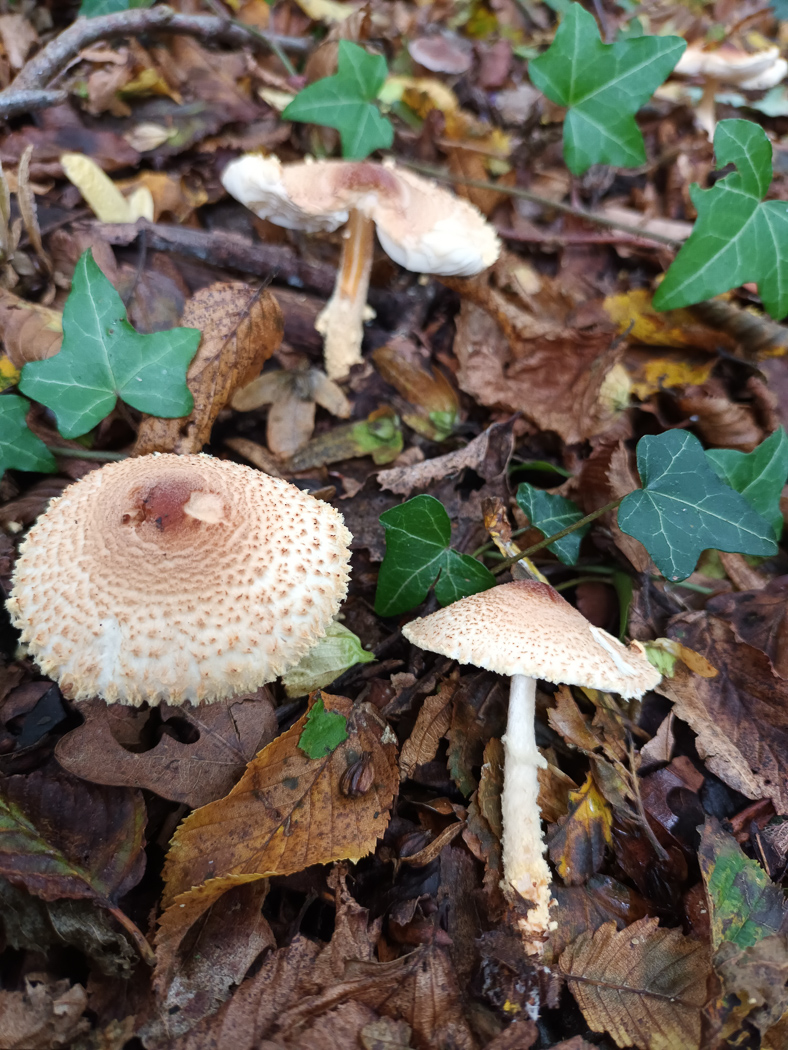 |
October 19th Lepiota magnispora (Yellowfoot Dapperling)
In woodland litter near Chalfont St. Peter Jesper Launder found this attractive species of Lepiota. Larger than the common L. cristata (Stinking Dapperling) but having the same rubbery smell, it has a cap edge often hung with cream veil remnants and the stem has a floccose ring often with further brownish remnants below this. As its name suggests, it has very long spores which are shaped like bullets.
|
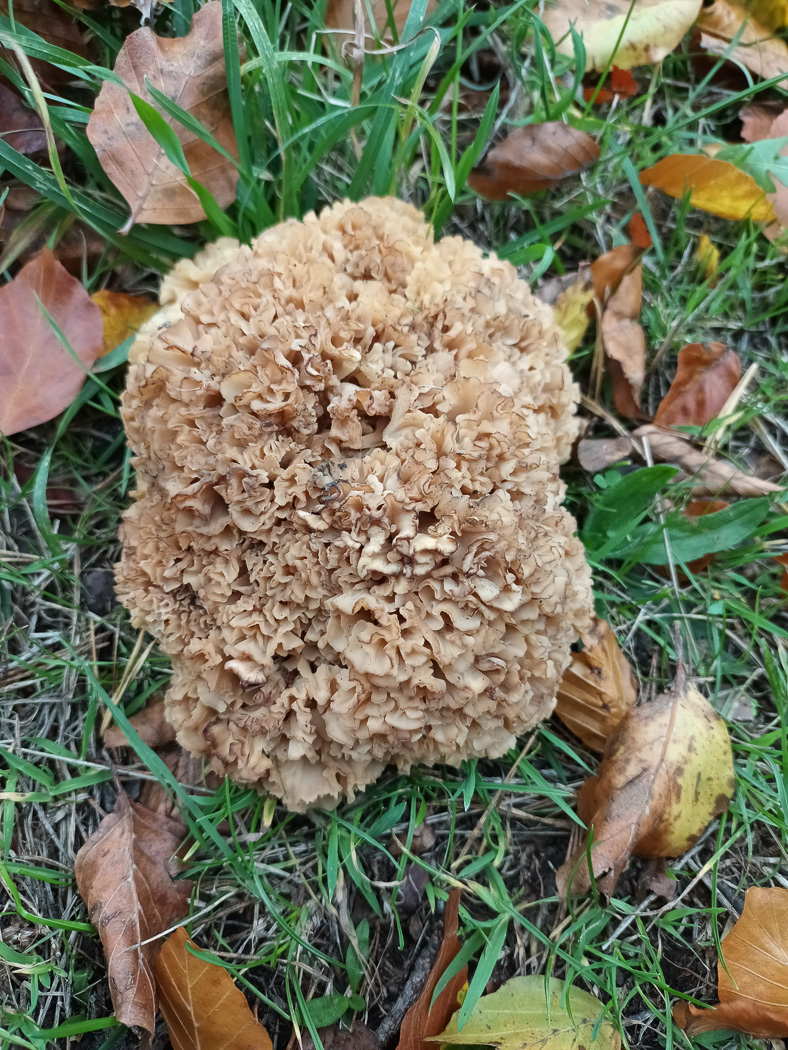 |
October 19th Sparassis crispa (Cauliflower Fungus)
In Chalfont St. Peter Jesper Launder found this impressive and beautiful species which grows at the base of conifers, most commonly Pine, and can get to a huge size - several times larger than this specimen which - judging from the windswept Beech leaves in the photo - was about 20 cms across. It is related to the Polypores, and if you find it under Oak with no conifers in the vicinity you may have the much rarer S. brevipes.
|

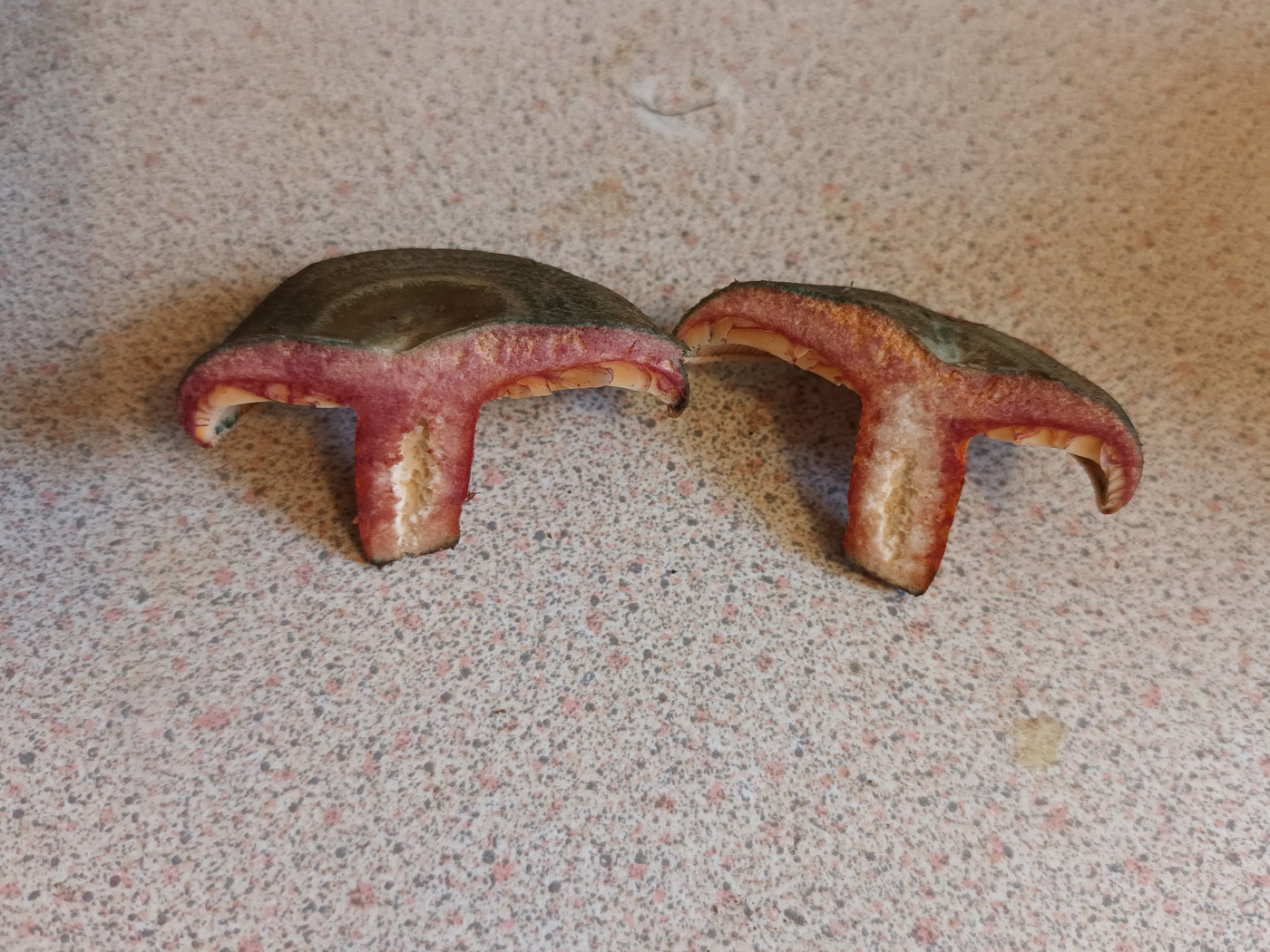 |
October 19th Lactarius semisanguineus (Bloody Milkcap)
Under Pine in Chalfont St. Peter Jesper Launder found this pair and recognised them as one of two possible species: either L. deliciosus or the less often recorded L. semisanguifluus. There are several similar Milkcaps which grow under conifers, have orange gills and milk and a tendency for the caps to turn green (very rarely blue!). Only under Pine (not Spruce) are the two mentioned above, the difference between them being that the flesh when exposed to air turns wine red in about five minutes in today's rarer species, but hardly changes at all or if so only after a much longer time in L. deliciosus (see photo 2 taken after 10 seconds). The species is not often recorded, quite possibly due to lack of knowledge of this colour change. Very similar and quite common is L. deterrimus, confined to Spruce, with no wine red flesh change and the cap often turning green.
|
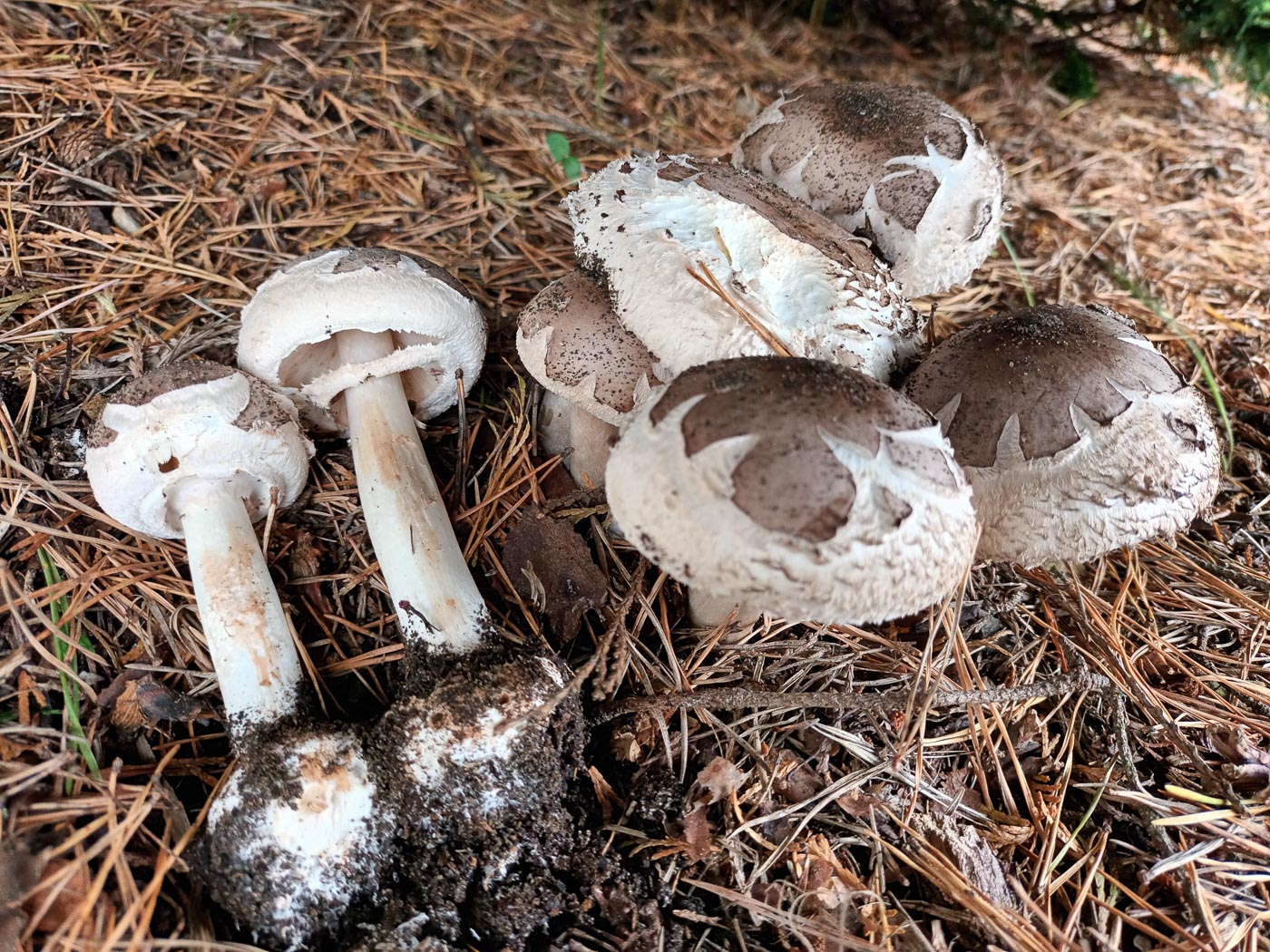 |
October 19th Chlorophyllum brunneum (a Parasol with no common name)
In Chalfont Dean under Pine Jesper Launder found this attractive and quite unusual Parasol, closely related to the much more common C. rhacodes (Shaggy Parasol). Both species share the common feature of flesh turning orange when exposed to air (thus separating them from the Macrolepiota Parasols) - just visible here where Jesper has handled them on the stem to arrange the photo. Features to separate the two species: today's doesn’t get as large as C. rhacodes, has a much more abrupt stem bulb, the ring is thinner (the underside is often brown though not here) and the cap markings are more akin to Macrolepiota konradii (see dated Oct 12) ie brown scales contrasting with white background.
|
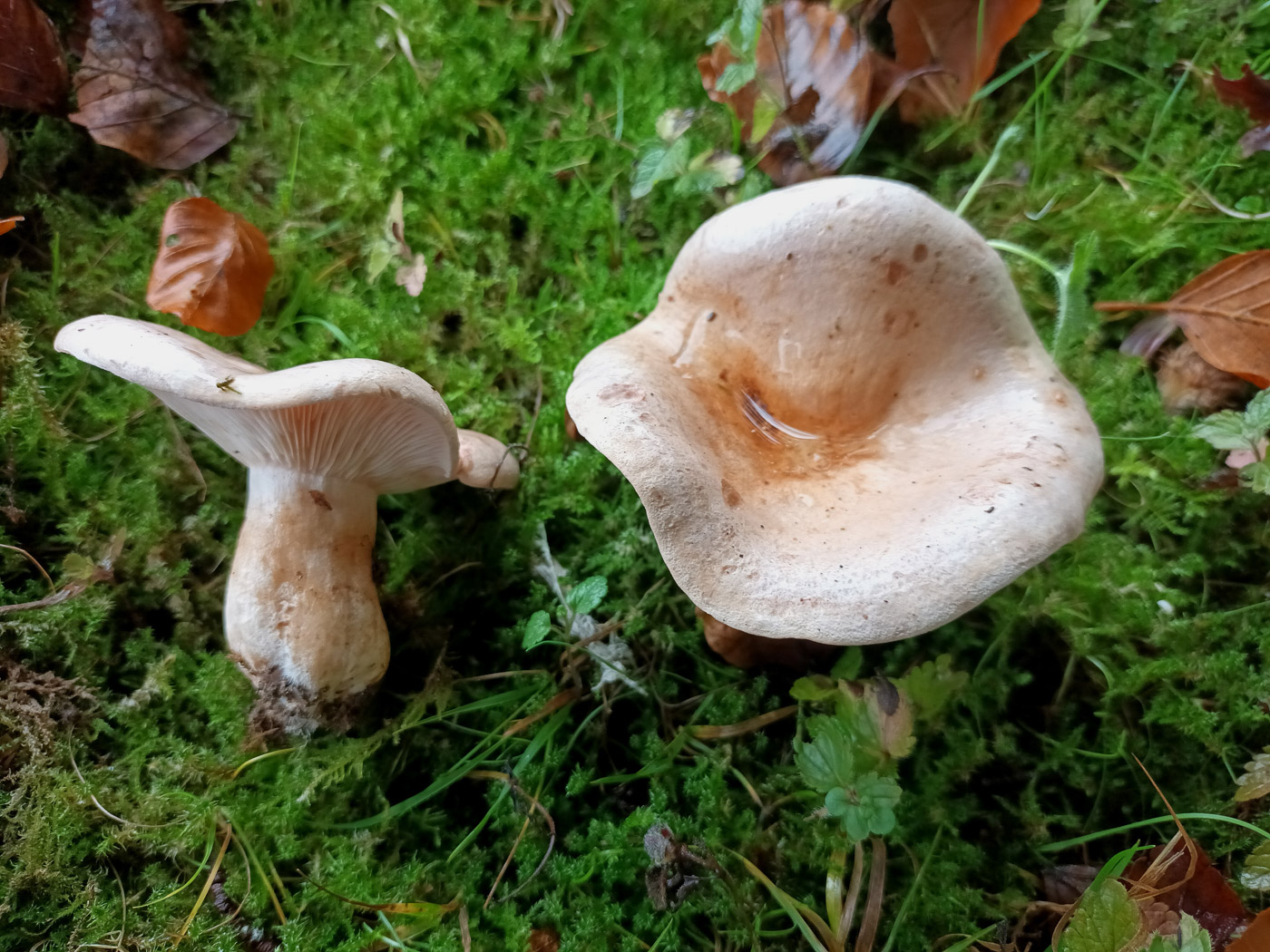 |
October 19th Lactarius pallidus (Pale Milkcap)
In Chalfont St Peter Jesper Launder found this quite uncommon Milkcap under Beech with which it is host specific. As its common name suggests, it is pale pinkish buff, as are some other Milkcaps, but the cap is smooth and has no obvious zoning on the surface, also the milk remains unchanged on the gills and these features together with its occurrence under Beech should be sufficient to eliminate other possibilities.
|
October 18th 2021
 |
October 18th Clitocybe odora (Aniseed Funnel)
At Stampwell Farm Jackie Ewan found this distinctive Funnel species. Many of this genus are somewhat similar and consequently hard to identify but this one is unique in its beautiful blue green cap colour and a strong sweet smell of aniseed - an unmistakable combination. It occurs in grassy path edges or woodland litter and in some years is quite common, in others is hardly seen.
|
October 17th 2021
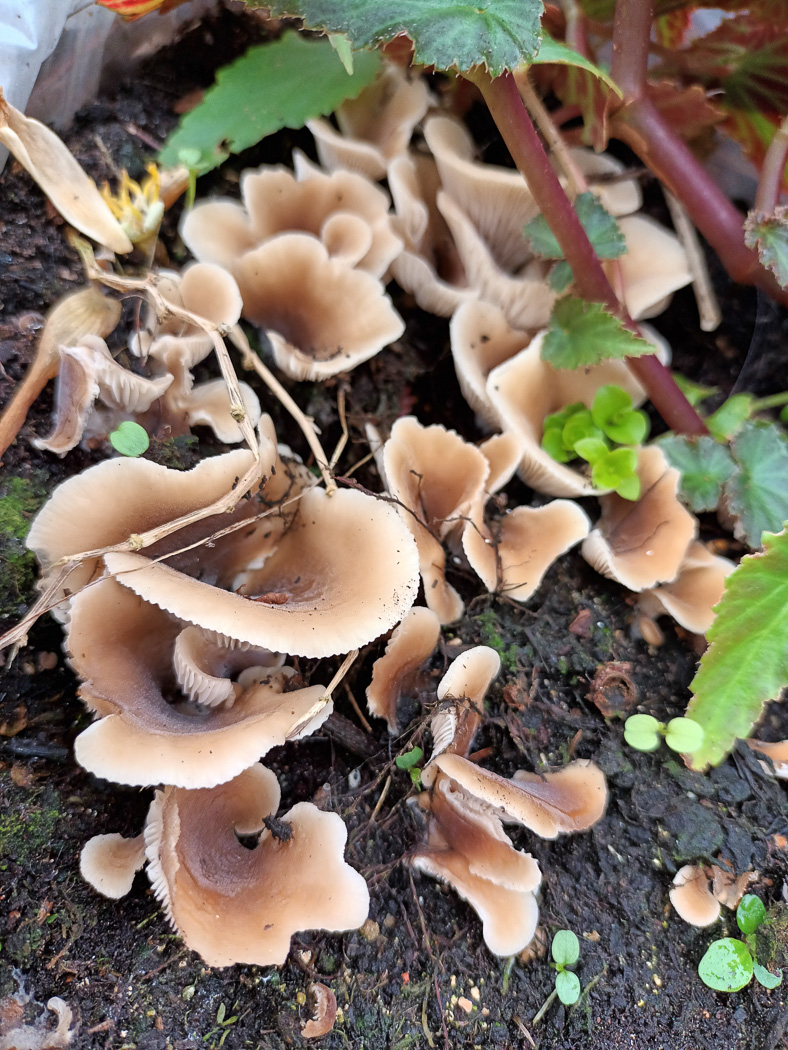 |
October 17th Hohenbuehelia petaloides (an Oyster with no common name) 
In Jordans village a friend of Jesper Launder found this rare fungus in a hanging basket in her garden, hence the Begonia leaves in the background! Jesper then worked out the identification using reference books and a scope. The genus has very individual cells on the gill edge and all species are considered rare. We have just one authenticated county record, from Ibstone Common in 1979 made by Roger Phillips. So this was certainly a special find.
|
October 16th 2021
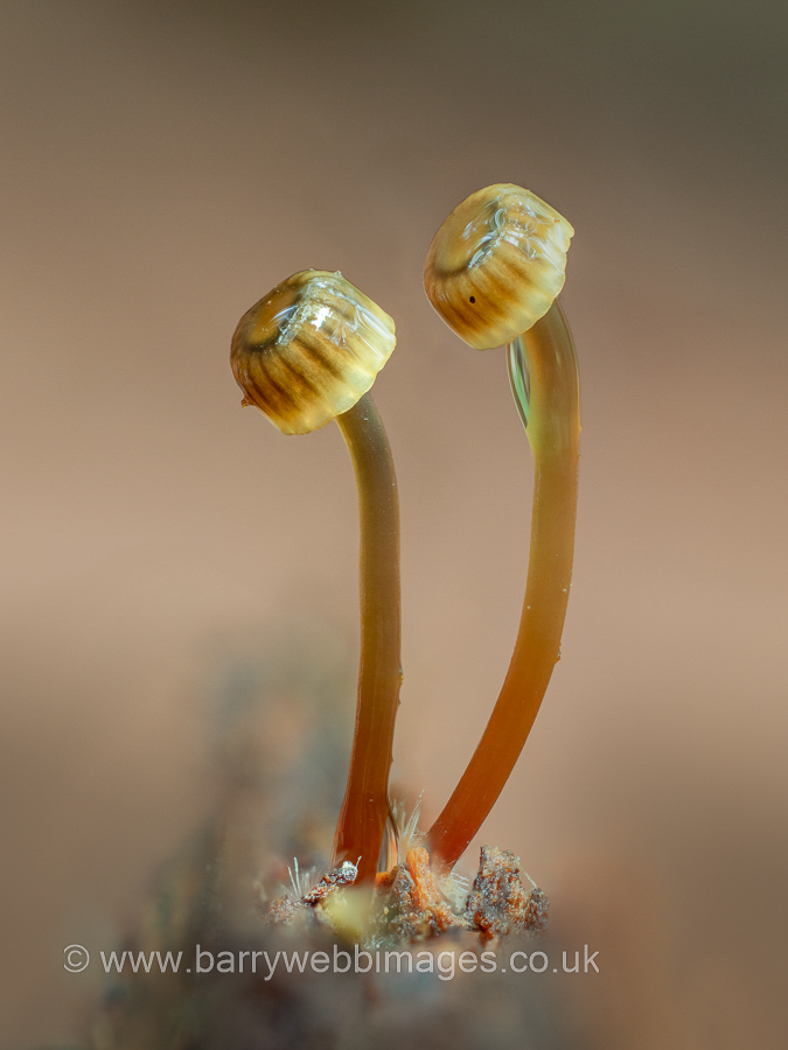
 |
October 16th Mycena picta (Cryptic Mycena) 
In Burnham Beeches on fallen rotting Birch near one of the ponds Berry Webb found these strange looking tiny mushrooms and took them to show a very excited Penny the next day! This unique and very rare Mycena is one she knew well from books, had never seen but had for a long time wanted to find. Described as occurring on damp woody litter in wet habitats, the cap is less that 1cm across, almost square with fluted sides, the gills are widely spaced and the stem attaches to the substrate with a thick matt of mycelial strands. There appear to be just 12 national records with just three since 2000, so this was an exciting discovery, new to the site and to the county.
|
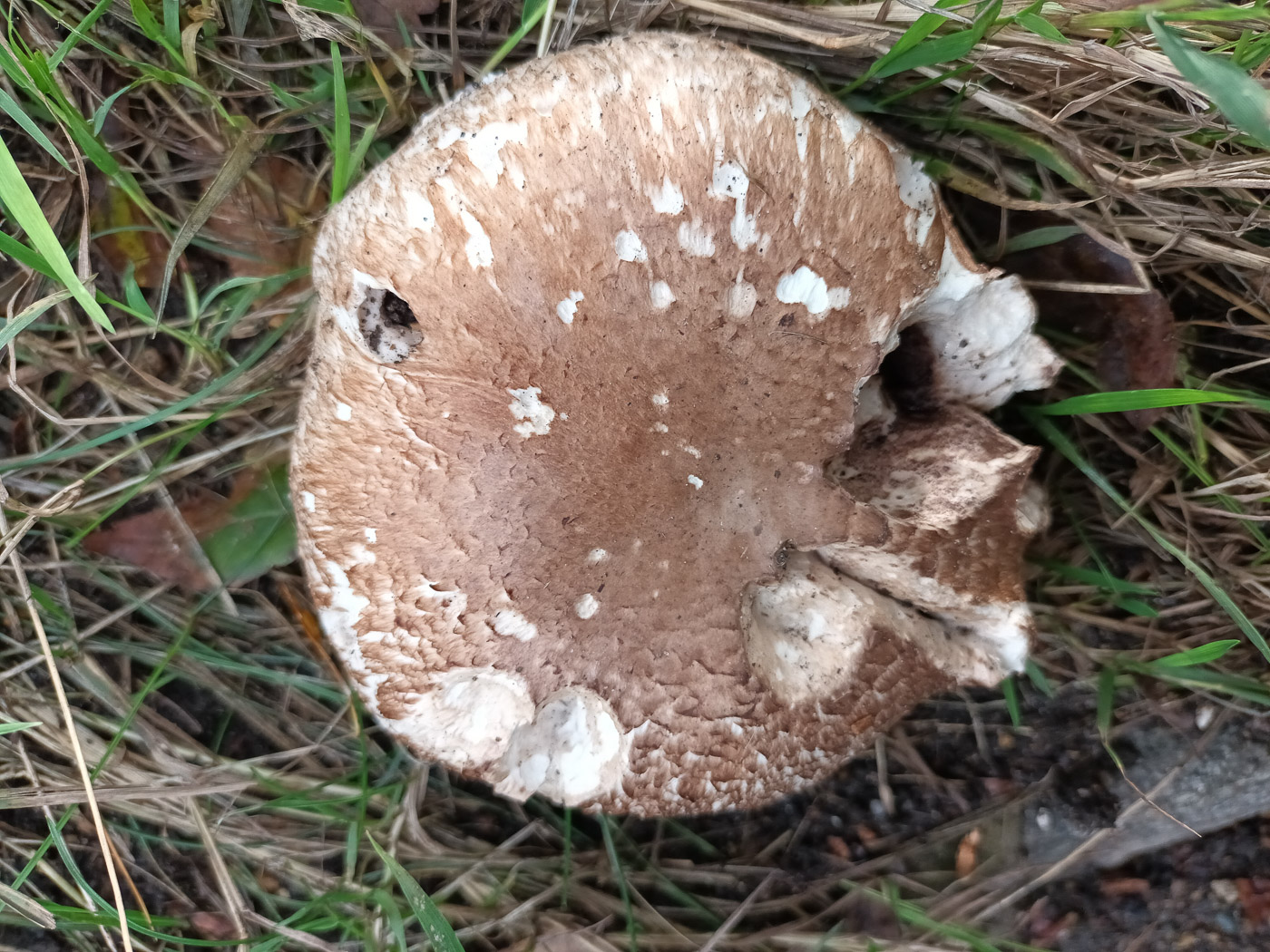
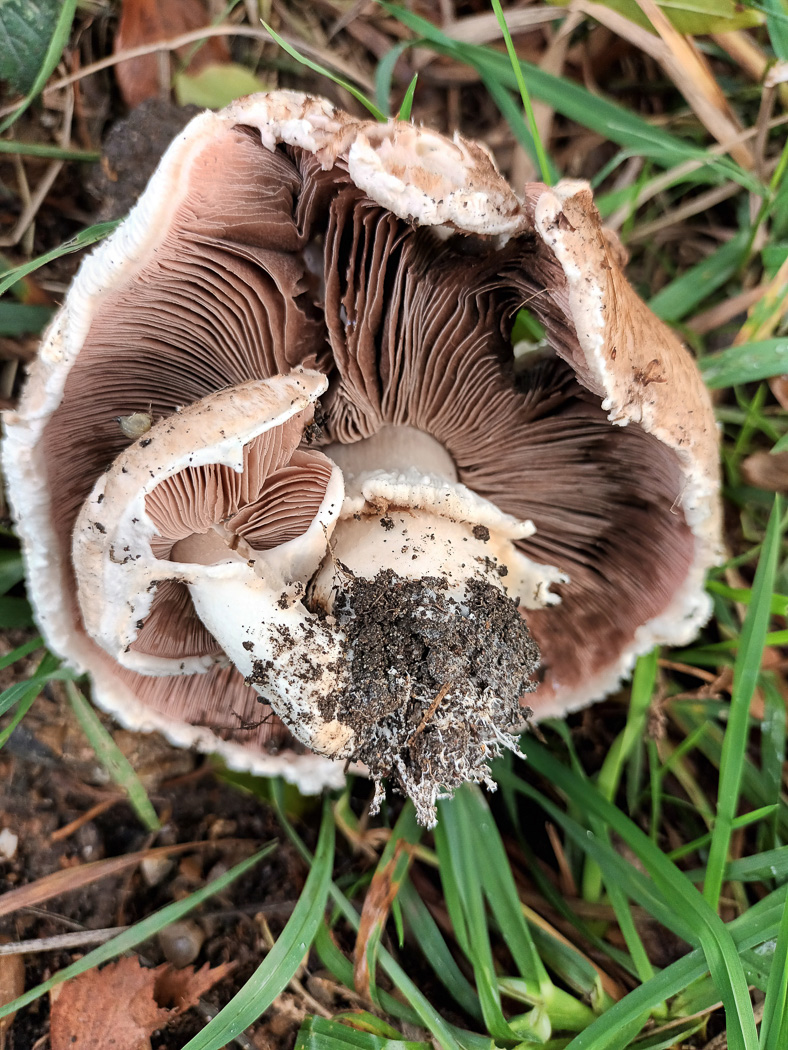 |
October 16th Agaricus subflocculosus (a Mushroom with no common name) 
In Jordans village in a grassy verge Jesper Launder collected this rare species, and at home by process of elimination using reference books and a scope came to his determination - a new species for the county. Diagnostic features are the brown scaly cap, rather squat appearance having a bulbous stem and a thick ring, also flesh which turns red in the cap but (unusually) orange in the stem, with a pleasant mushroomy smell having a coconut component. It apparently is normally associated with conifers, less often with deciduous trees, though Jesper doesn't comment on the nearest tree here. This was a special find.
|
October 15th 2021
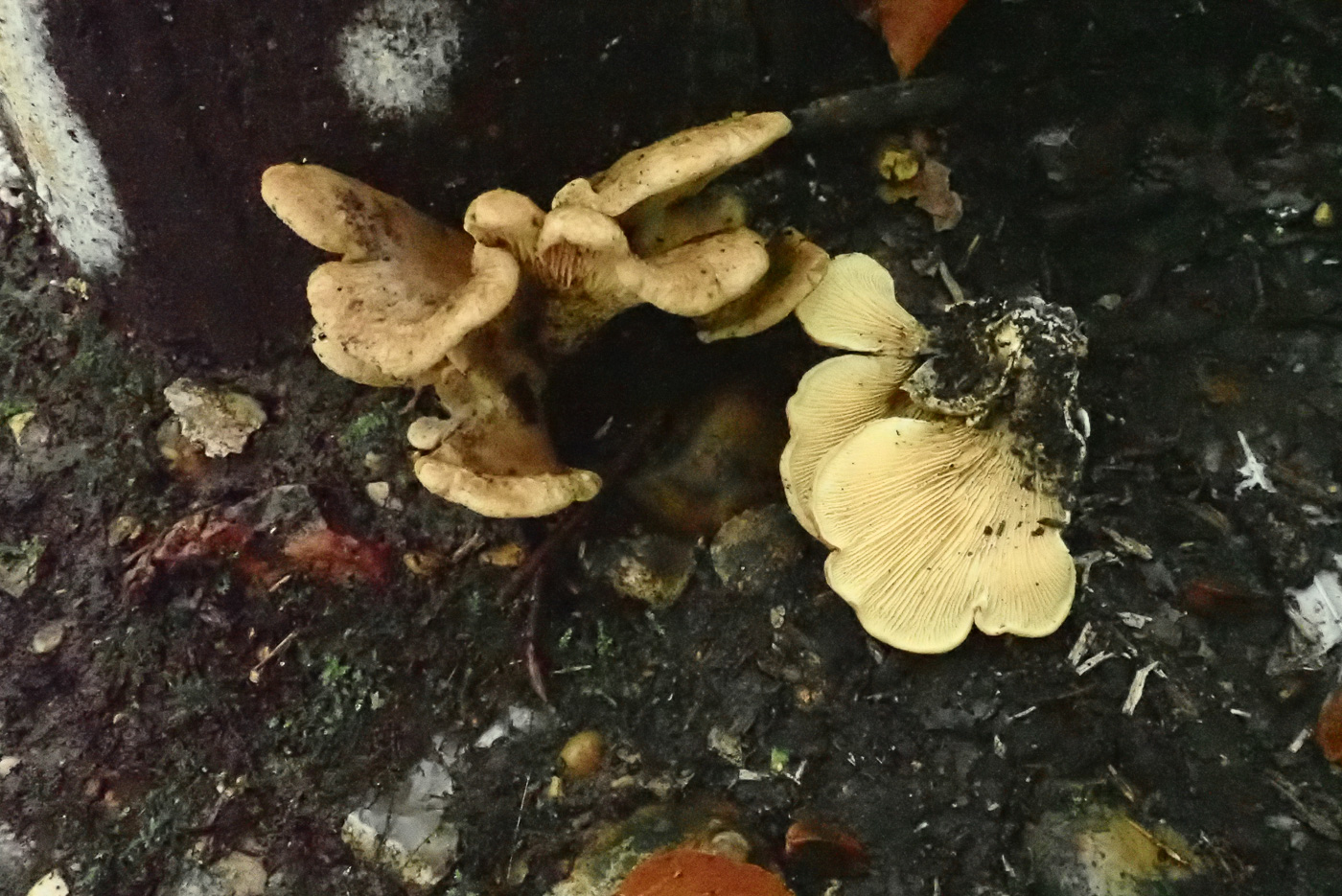
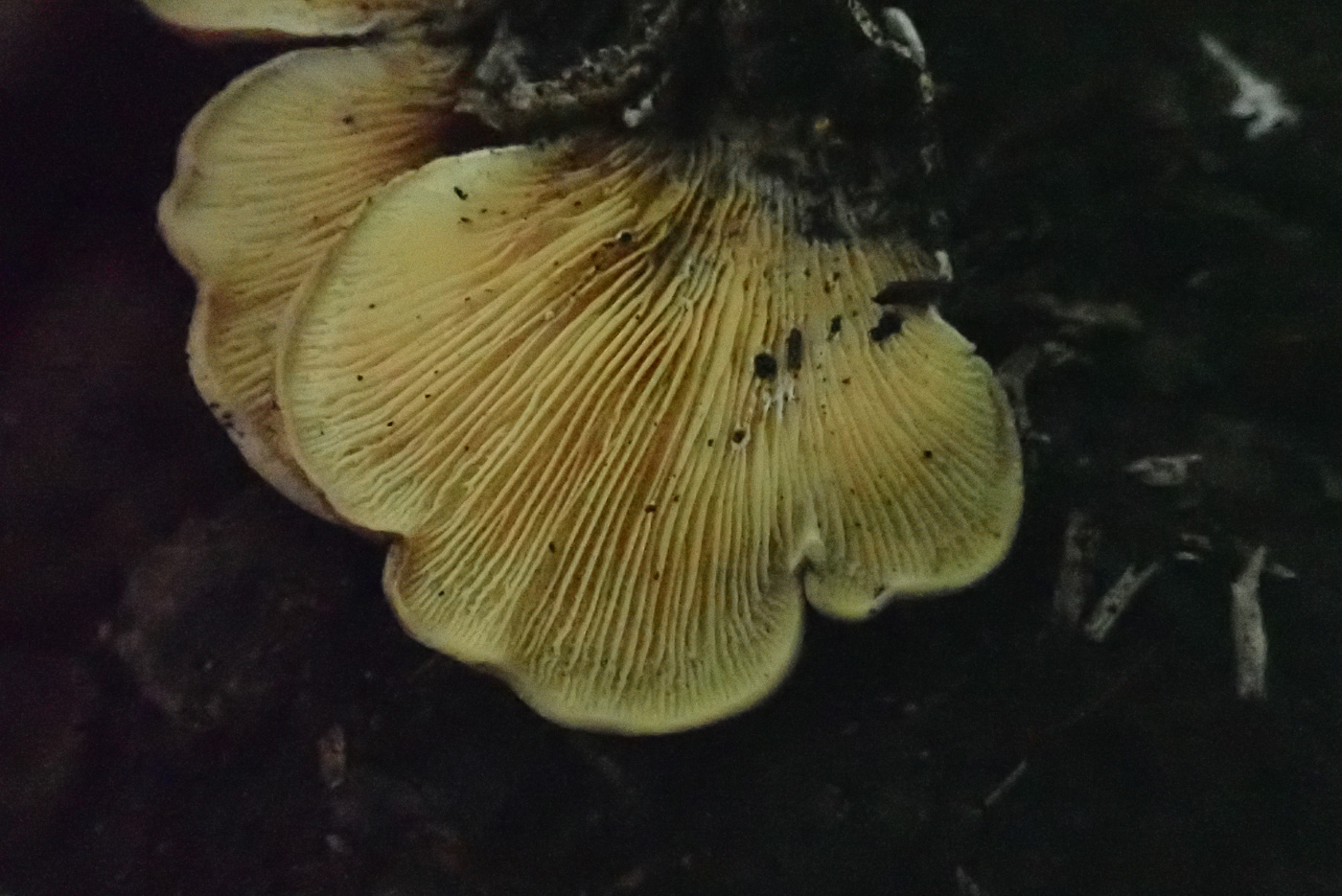 |
October 15th Tapinella panuoides (Oyster Rollrim)
At the base of an unidentifed stump in Pullingshill Wood Penny noticed this small tier of rusty ochre mushrooms and turning one over found orange crowded gills and no stem, so like an Oyster Mushroom but clearly the wrong colour. Not recognising it, she took a piece home and discovered its identity, it having a feature in common with the closely related Paxillus involutus (Brown Rollrim): the gills peel away from the cap flesh remarkably easily. This is not a common species and we have just two authenticated previous county records.
|
 |
October 15th Amanita muscaria (Fly Agaric)
We have one earlier photo of this quite common but eye catching species (dated Oct 5th) and it seems to be be making a somewhat late appearance this autumn. Here it is again, found at Cadmore End by Penny under Birch - its host tree - and looking as if the fairies could be lurking somewhere near!
|
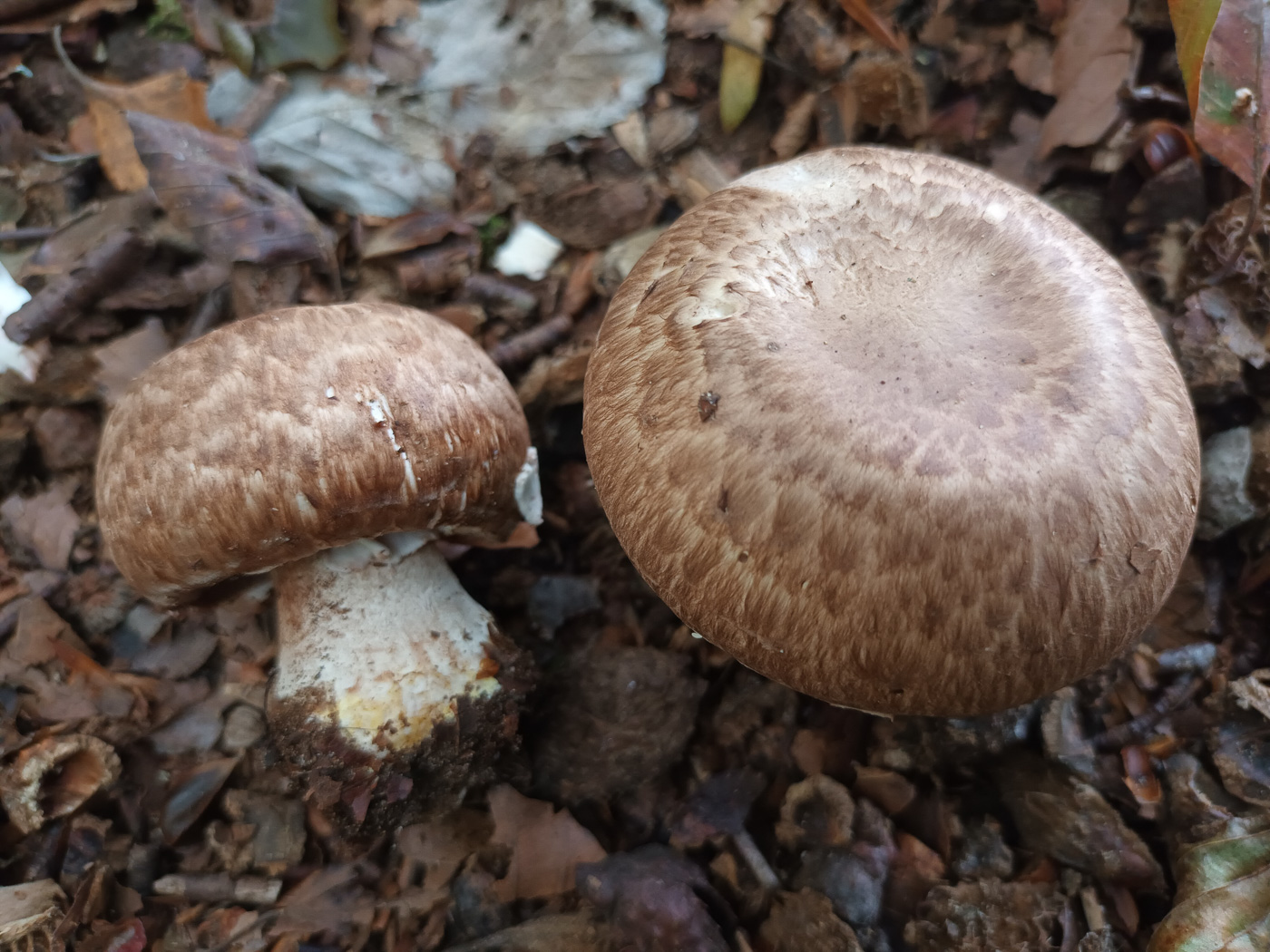 |
October 15th Agaricus lanipes (a Mushroom with no common name)
In Hodgemoor Woods Jesper Launder found this rare species of Mushroom in deciduous litter under Beech, a first for the county. It is characterised not only by the attractive brown scales on the cap which tends to be slightly depressed at the centre, but it has the unusual combination of flesh which turns pink above when damaged but at the stem base turns yellow. It also has a strong sweet almond smell. A lovely photo and a nice species.
|
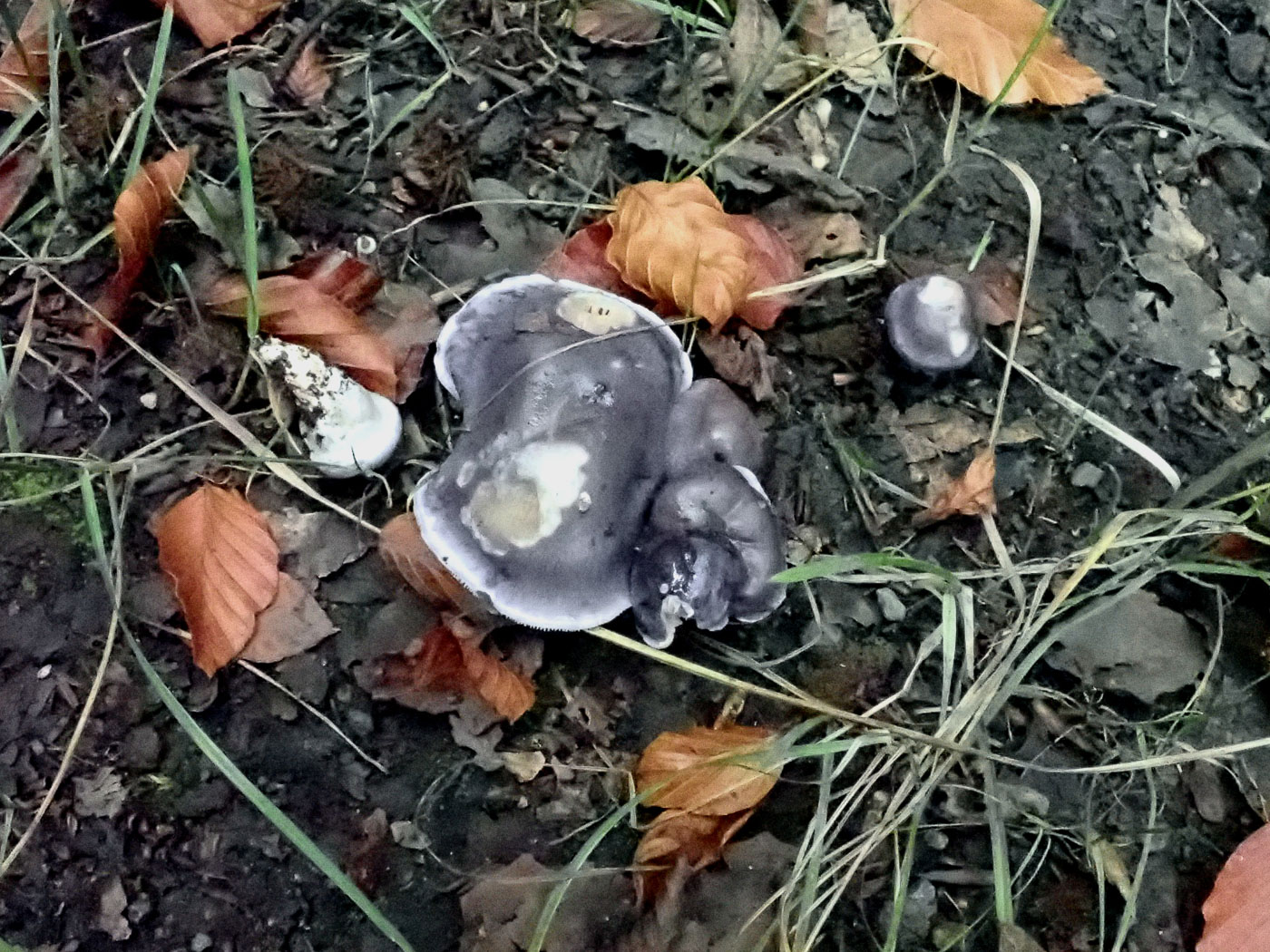
 |
October 15th Cortinarius croceocoeruleus (a Webcap with no common name)
In Marlow Common Penny was pleased to find this beautiful but small Webcap coming up in soil under Beech - its host tree. This is a very sticky species, belonging to the Webcap group known as Myxacium characterised by slimy caps and stems, and caps are this lovely purplish blue and gills are pale till coloured by. the maturing rusty spores.This site is one of just five where we've recorded it.
|
 |
October 15th Agaricus campestris (Field Mushroom)
In a wide grass verge near Stokenchurch (just within the county border!) Penny spied this collection from the car and stopped to collect them. This is a species which appears to be much less common than it used to be. The white cap tends to discolour pink or even greyish after rain and the gills are bright pink when young, gradually becoming greyer then almost black with age. The stems are white and at first have a flimsy ring but this is often soon lost. If you're collecting for the pot you should always check that the stem base when scratched does not stain chrome yellow. If it does then you have the very similar A. xanthodermus which causes stomach upsets and has, instead of the sweet 'mushroom' smell, and inky unpleasant smell.
|
 |
October 15th Pseudoboletus parasiticus (Parasitic Bolete)
In Marlow Common Penny found this unusual Bolete, one which is entirely restricted to growing on its particular host also seen here: Scleroderma citrinum (Common Earthball). These are young examples though the species never gets very large as Boletes go. In some years it is quite easy to find, in others it is rarely reported despite good numbers of its host fungus being present, but Marlow Common seems to be a hotspot having many mature Oaks - the host tree of the Earthball.
|
October 14th 2021
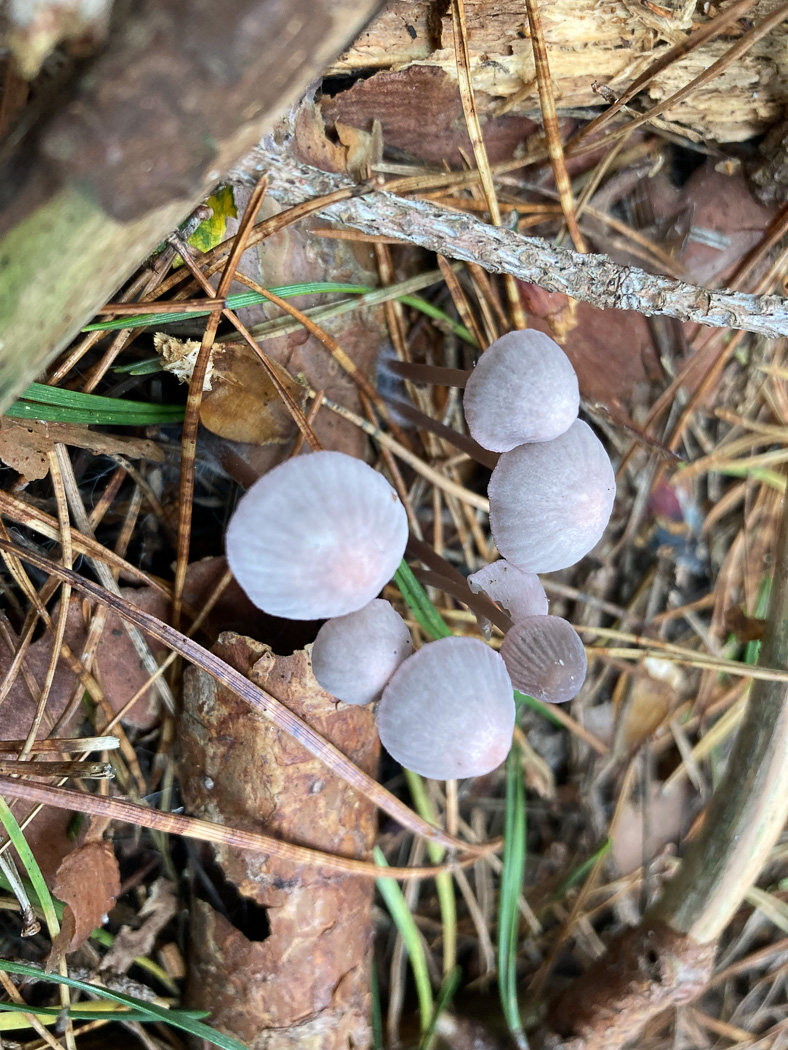
 |
October 14th Mycena albidolilacea (a rare Bonnet with no common name) 
At Stoke Common in Pine litter Russell Ness found this cluster of Bonnets and took them home to work on (often essential with this genus). The cap had a slightly pink lilac flush which made him suspect it was something unusual, this confirmed when the gills under close inspection sported a pale pink edge. Under the scope he found the correct cells on the gill edge to confirm this exciting find, not only new to the site and the county but with only a handful of UK records, all from the south. Sadly at the time he didn't realise the significance of what he'd found, so no voucher material was retained.
|
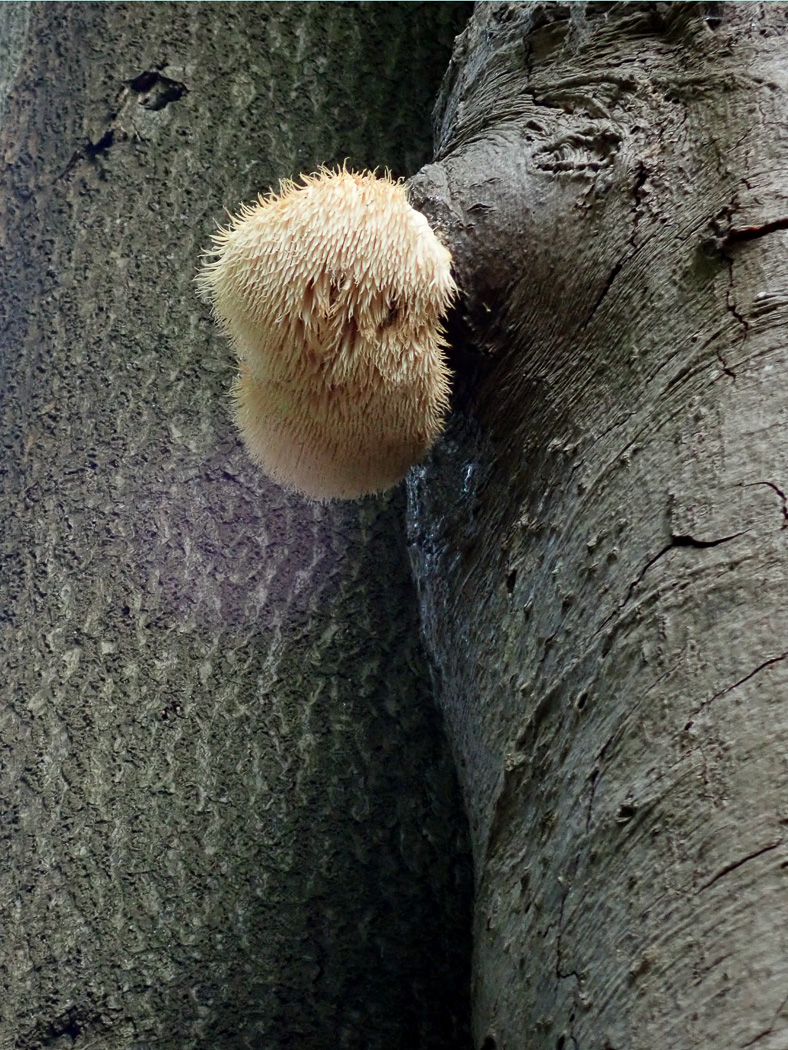
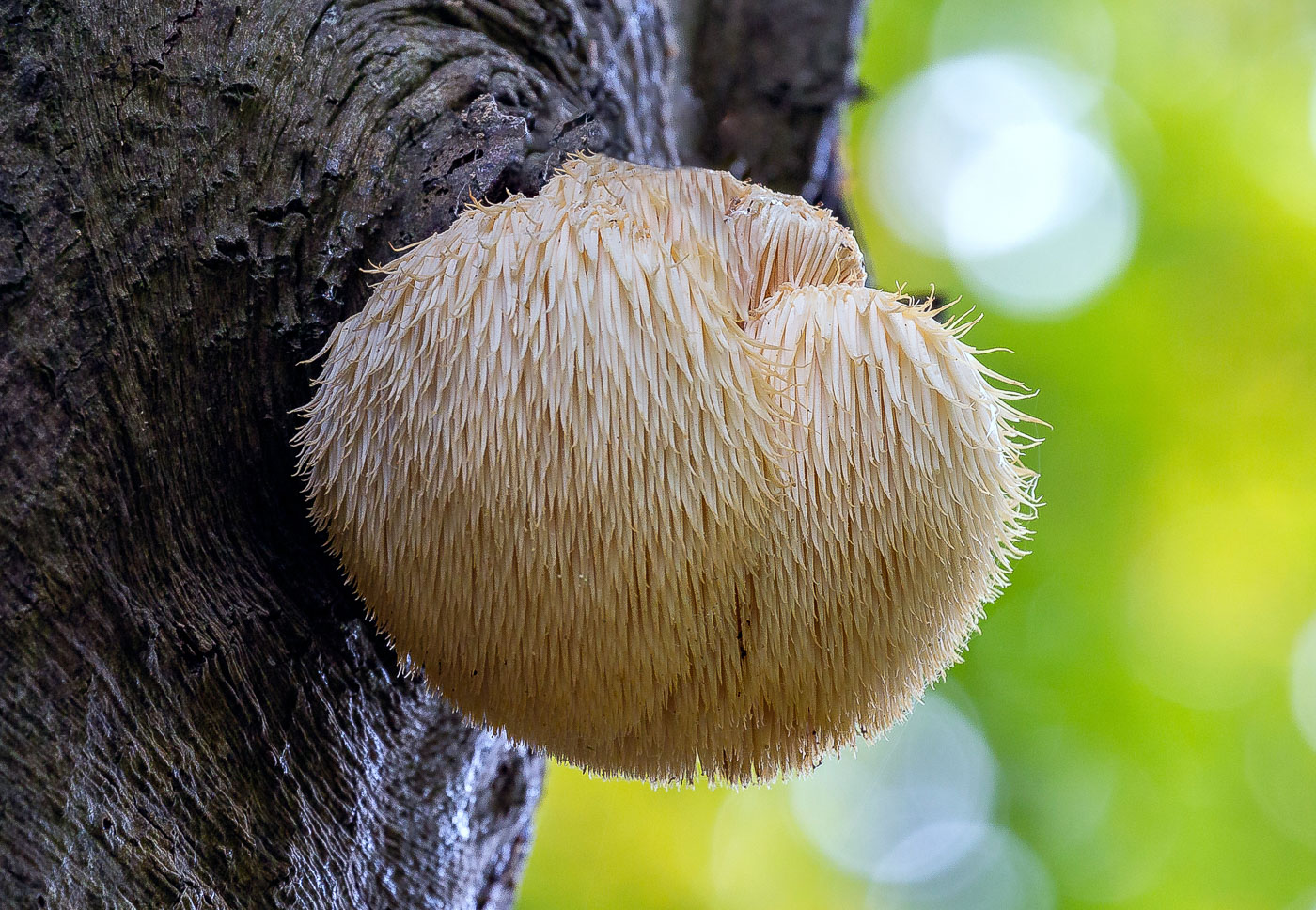 |
October 14th Hericium erinaceus (Bearded Tooth)
Penny was delighted to receive information of a new county site for this rare and impressive fungus. She went to check it out and although still quite small it was unmistakable (photo 1). The beautiful Photo 2 is of the same specimen taken later in October but not sent in to Penny till April 2022 when Robert Corran joined BFG and also informed Penny of his find, describing the identical Beech trunk at the same site. (The site is not revealed here for obvious reasons!)
|
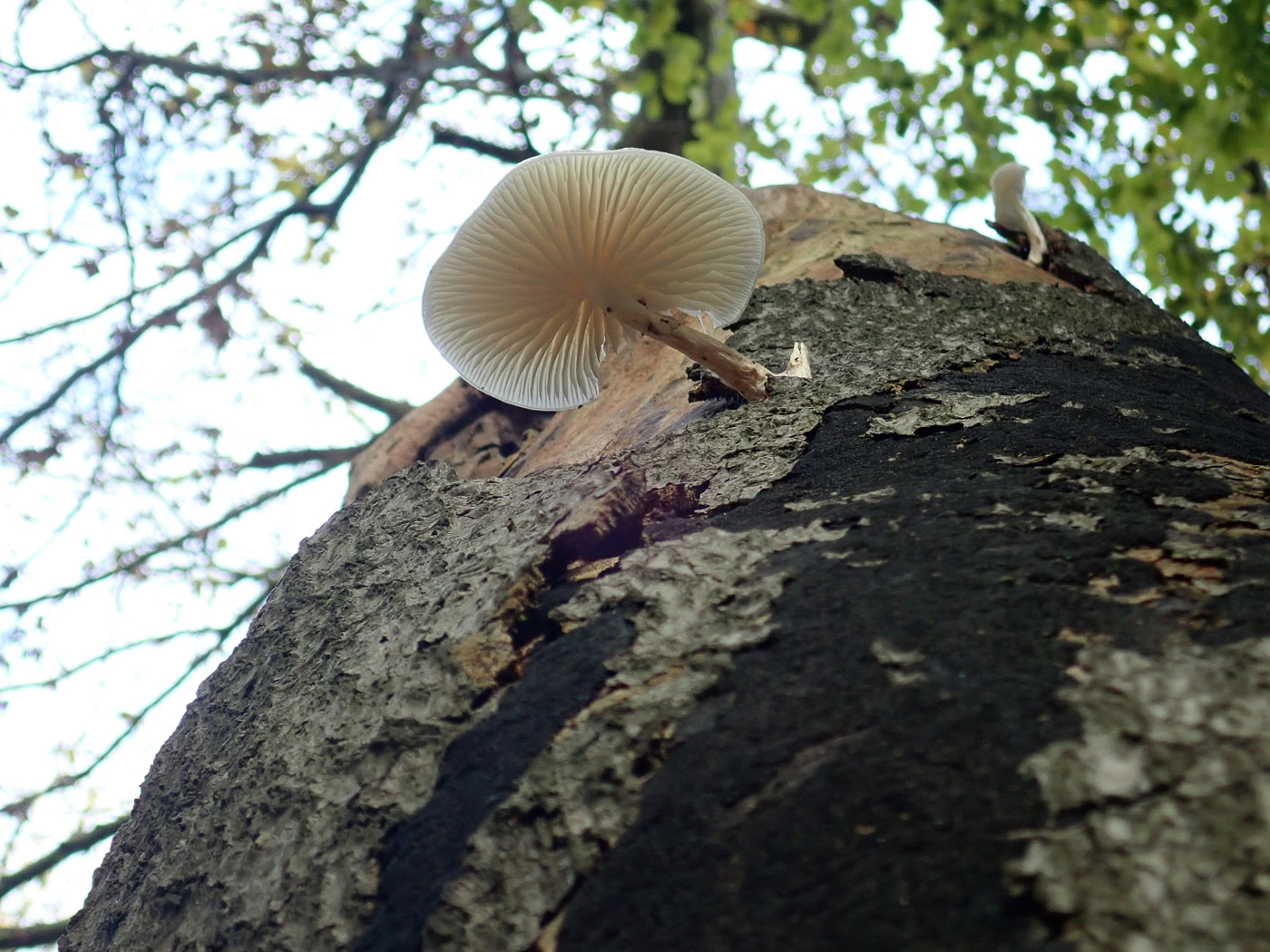

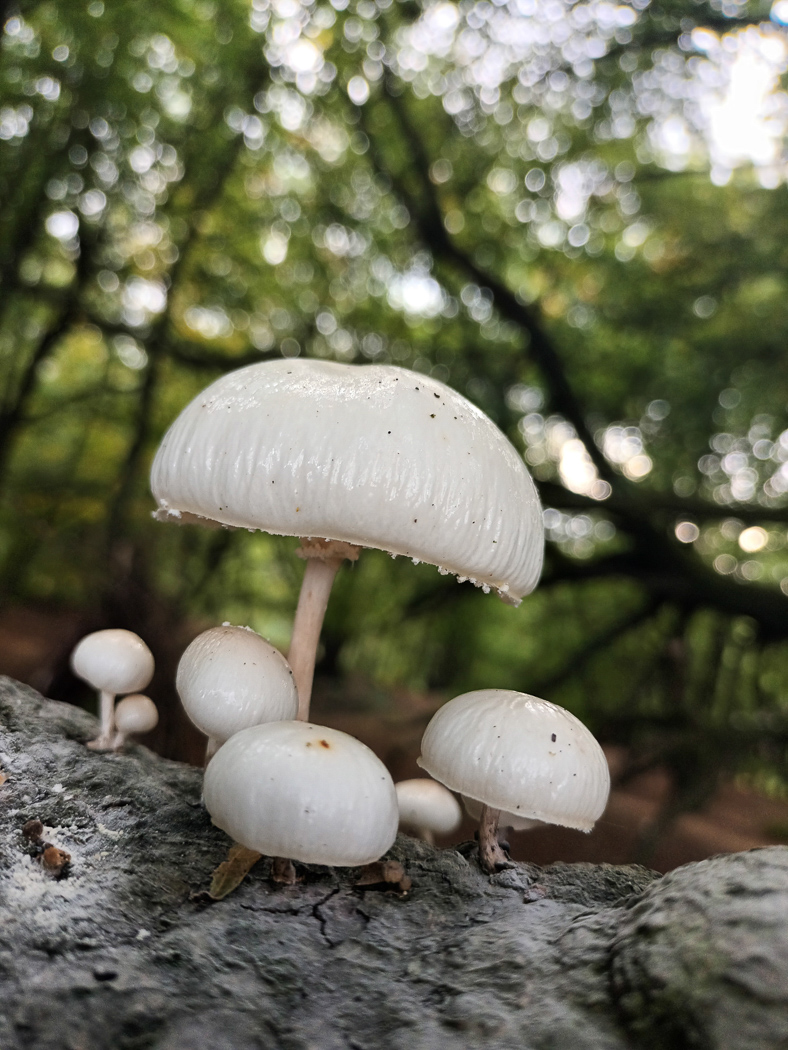 |
October 14th Mucidula mucida (Porcelain Fungus)
Better known as Oudemansiella mucida, this species is just beginning to make an appearance in this area (though Penny has had reports of a Beech at Whipsnade Zoo smothered in over 200 fruitbodies!). Photo 1 is of just one example spotted high up in a Beech at Whiteleaf Wood found by Penny and though not the most impressive example it shows the almost transparent cap when the light is behind it and also its habit of inhabiting living Beech, its sole host, often very high up. A day later Penny received Jesper Launder's lovely shots taken on fallen Beech in Hodgemoor Woods. Note the slimy cap surface and stem ring, both diagnostic features. There can be confusion when specimens are found apparently not on wood but on the ground - these will have fallen from the Beech above often from a great height.
|
 |
October 14th Pholiota squarrosa (Shaggy Scalycap)
In Whiteleaf Wood Penny found this tightly clustering species just emerging at the base of an old Beech. It is probably the commonest Scalycap and also the easiest to identify though others in the genus also cluster in this way. It is certainly the shaggiest with large dry scales on cap and stem, and the caps when expanded (not seen here) can get to about 10cm across, the gills are olive yellowy brown and the stem retains a ring. An impressive species, this is one to look out for now at the base of deciduous trees.
|
October 13th 2021
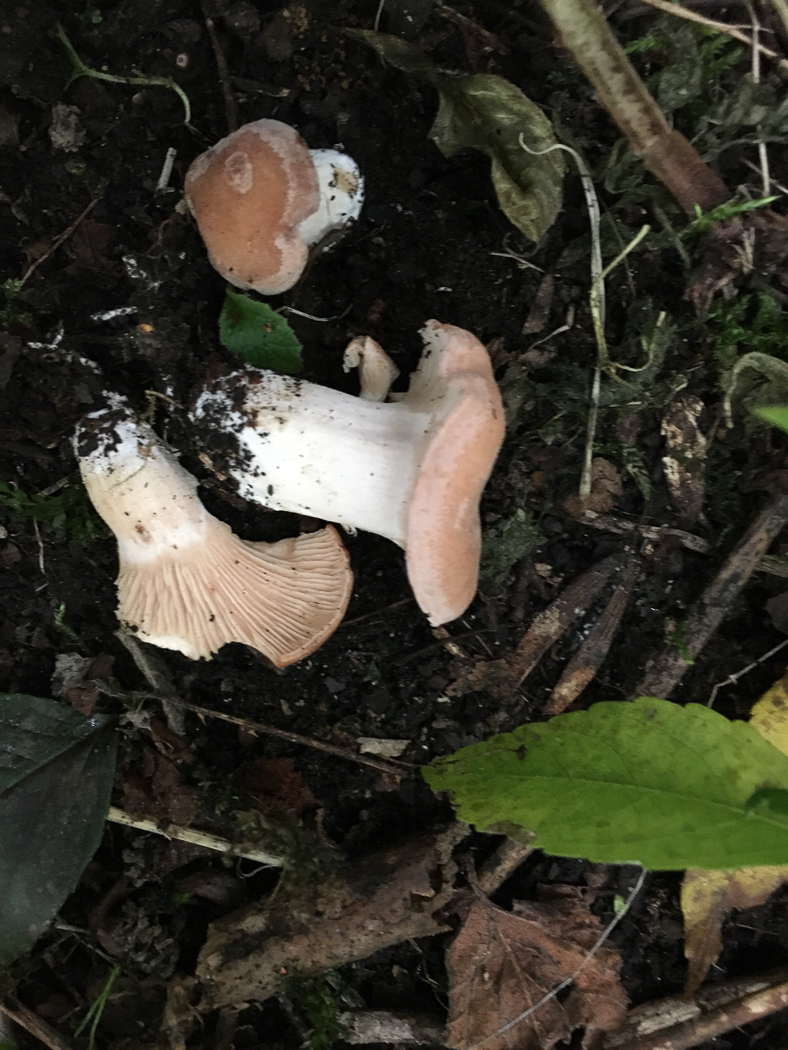 |
October 13th Rhodocybe gemina (Tan Pinkgill) 
In Rushbeds Wood Joanna Dodsworth found this unusual mushroom coming up beside a path in the same spot where we've recorded it in three previous years, the earliest being 2005 but with a gap then till 2019. The common name is perhaps confusing because this is not an Entoloma (also named the Pinkgills) despite having pink gills though its spores are pink but are not shaped like Entoloma spores. This is quite a big chunky mushroom with pinkish tones in the cap as well which is slightly hygrophanous (fades as it dries) and the gills are more or less decurrent and quite widely spaced. It seems to be becoming more common in the area with several records elsewhere in the county in the last few years.
|
October 12th 2021
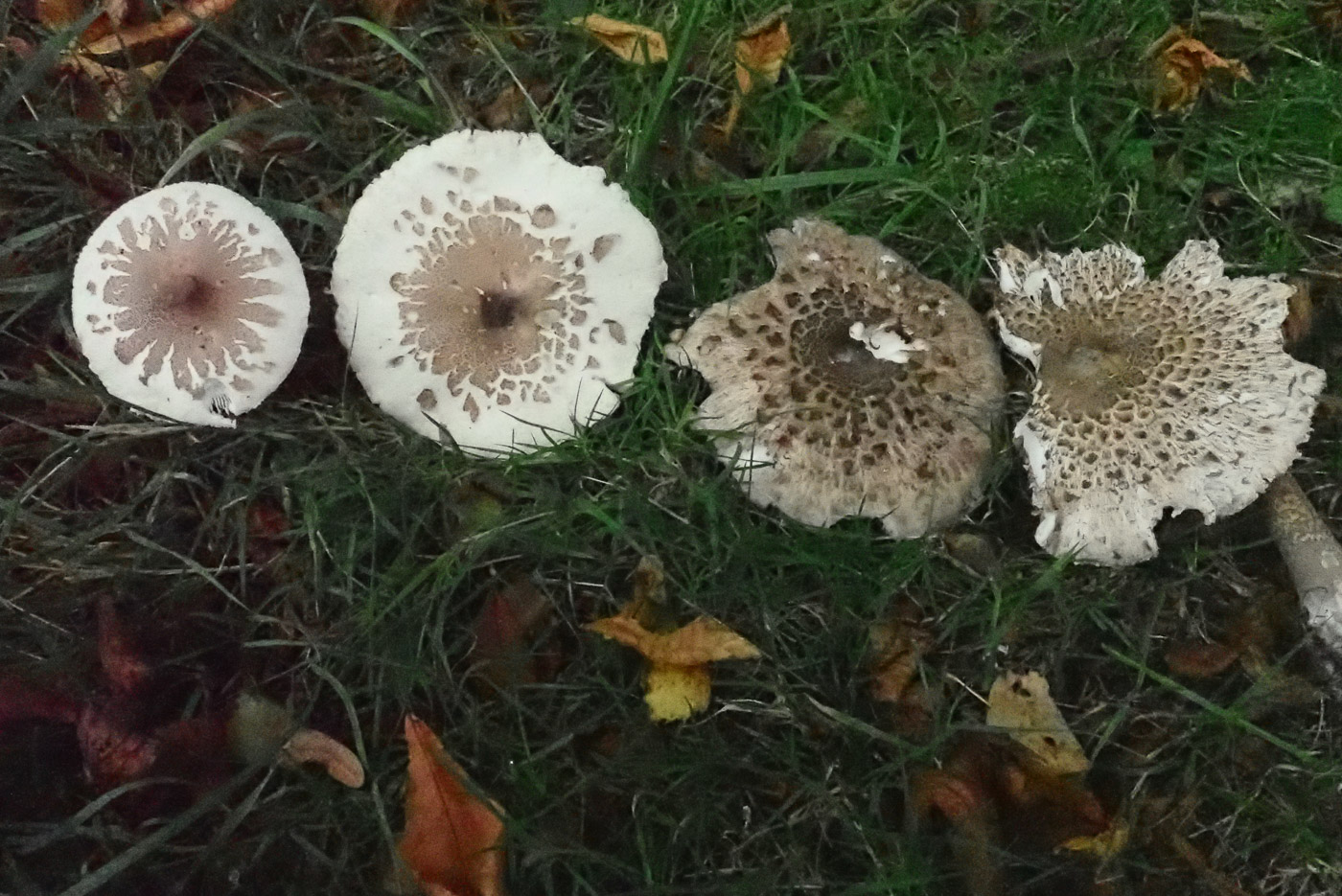

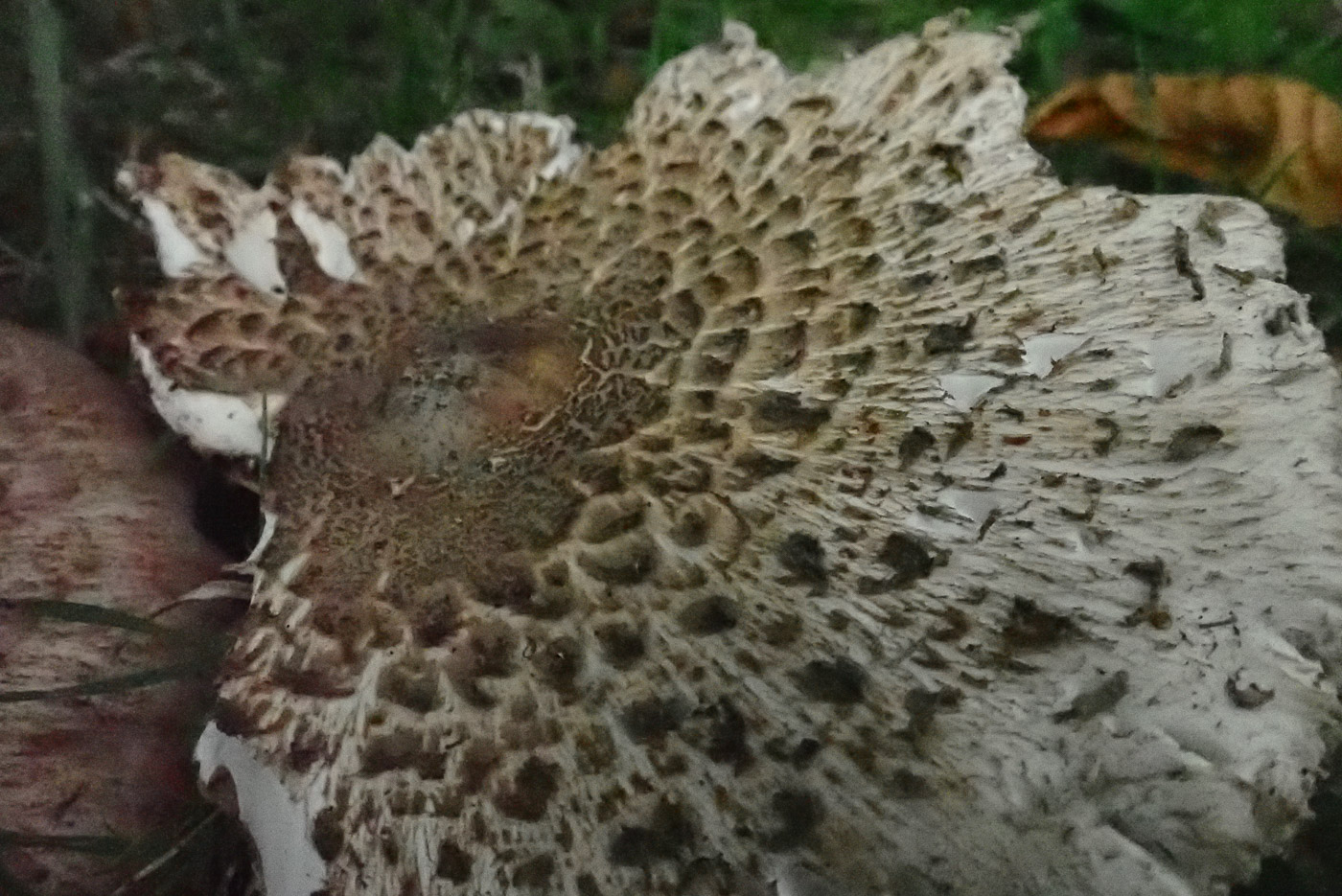 |
October 12th Macrolepiota konradii (a species of Parasol with no common name)
At Turville Heath in grassy soil Penny found two different species of Macrolepiota and took the opportunity to compare the difference in cap markings. M. konnradii is one we find quite commonly in this area but is often synonymised with M. mastoidea - a synonymy she finds hard to accept - in fact doesn't accept! The cap markings are so different though here she compares M. konradii (left) with the common M. procera (right). Note the white background of M. konradii (photo 2) with solid brown centre breaking up in a regular pattern of large rectangular flakes which cease well before the margin and which peel off really easily. In contrast the cap of M. procera (photo 3) has an off white background and the brown centre disrupts into smaller and smaller scales reaching more or less to the margin. M. mastoidea (not shown here) differs again by having a marked nipple-like umbo and is paler than M. procera but similarly though more delicately marked.
|
 |
October 12th Cortinarius hinnuleus (Earthy Webcap)
At Turville Heath in soil in the Lime avenue Penny found this Webcap, a member of the Telamonia group, many of which are notoriously difficult to identify but this one with experience can be recognised in the field. It has particularly notable widely spaced cinnamon gills and a distinctive smell: earthy, of vegetation, even of DDT. Considered not that common, it favours calcareous soil and is one we find fairly regularly in the Chiltern area.
|
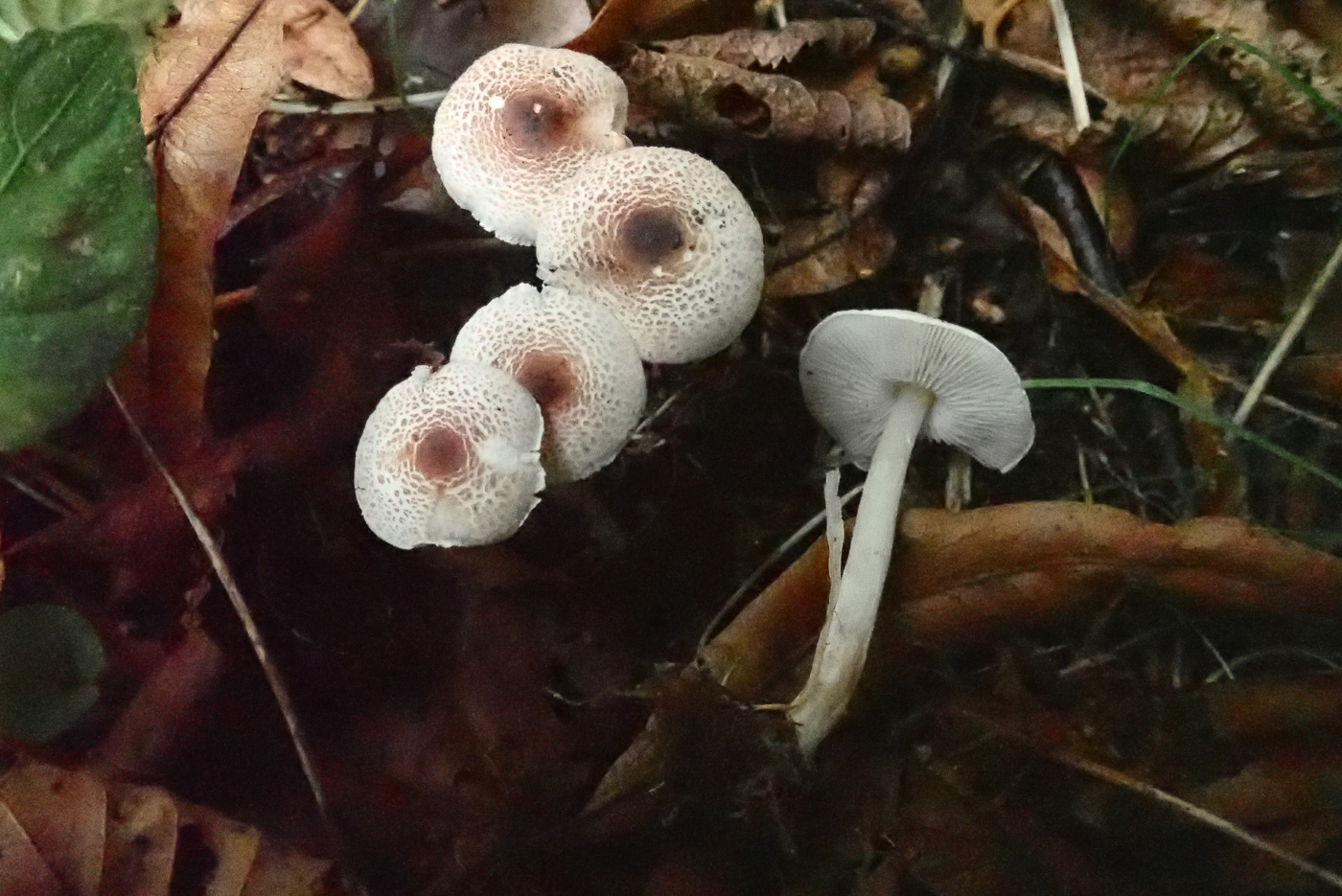 |
October 12th Lepiota cristata (Stinking Dapperling)
At Turville Heath in soil in the Lime avenue Penny found this cluster of nice fresh Dapperlings, a member of a genus which has been hard to find so far this autumn. Normally a very common woodland species, this is quite a small Dapperling with caps here only about 2.5cm across though it can get up to 5 cm or so. It has a flattish cap with rich brown centre and white surrounding area having contrasting brown scales, though there are other quite similar species which also have the white free gills of this genus, some retaining a ring on the stem, some as this one often losing it. The smell of this species, however, is distinctive (though not really stinking!): pungent, unpleasant, of burnt rubber.
|
October 11th 2021
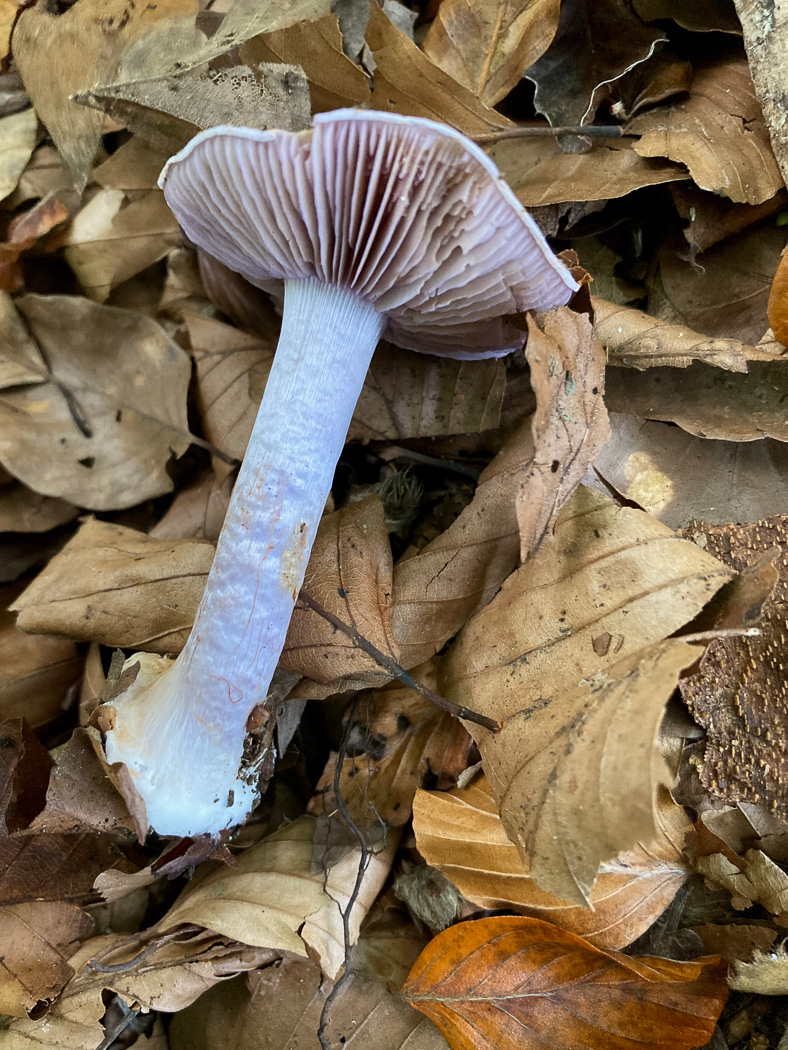
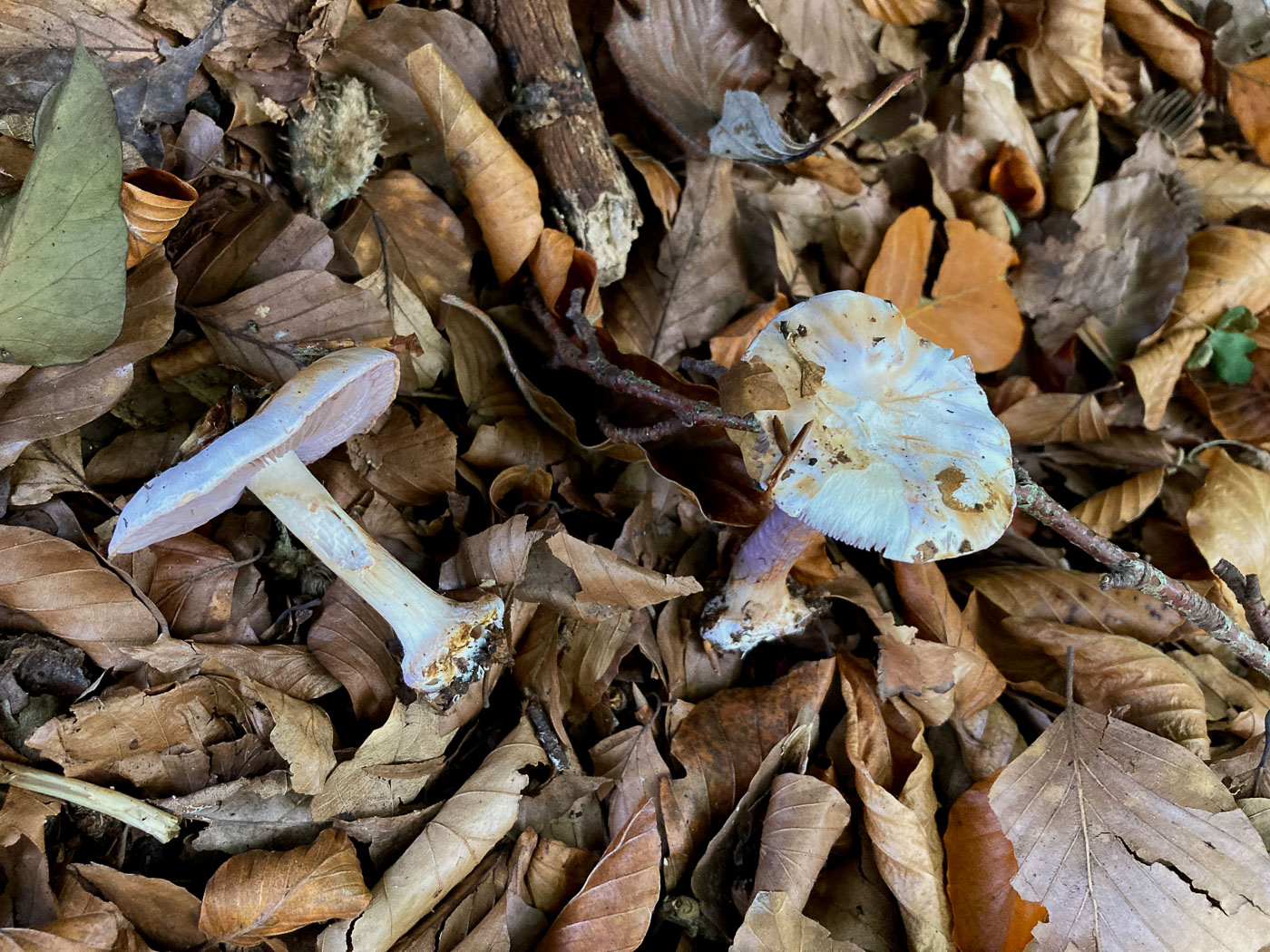
 |
October 11th Cortinarius nymphicolor (a Webcap with no common name) 
In Mousells Wood under Beech Russell Ness found this rare Webcap - a member of Section Phlegmacium - and took it home in the hope of identifying it. Its pale lilaceous colouring and bulbous stem base led him to a sizeable group of mushrooms within this section, but key to its identity was the placing of a drop of the chemical KOH on both the cap and the stem base which turned pink (see photo 3). Our only other records of this species are also from this wood, made by Geoffrey Kibby when Penny took him there ten years ago. (It is unclear whether the correct name is now C. nymphicolor or as previously recorded C. rickenianus)
|

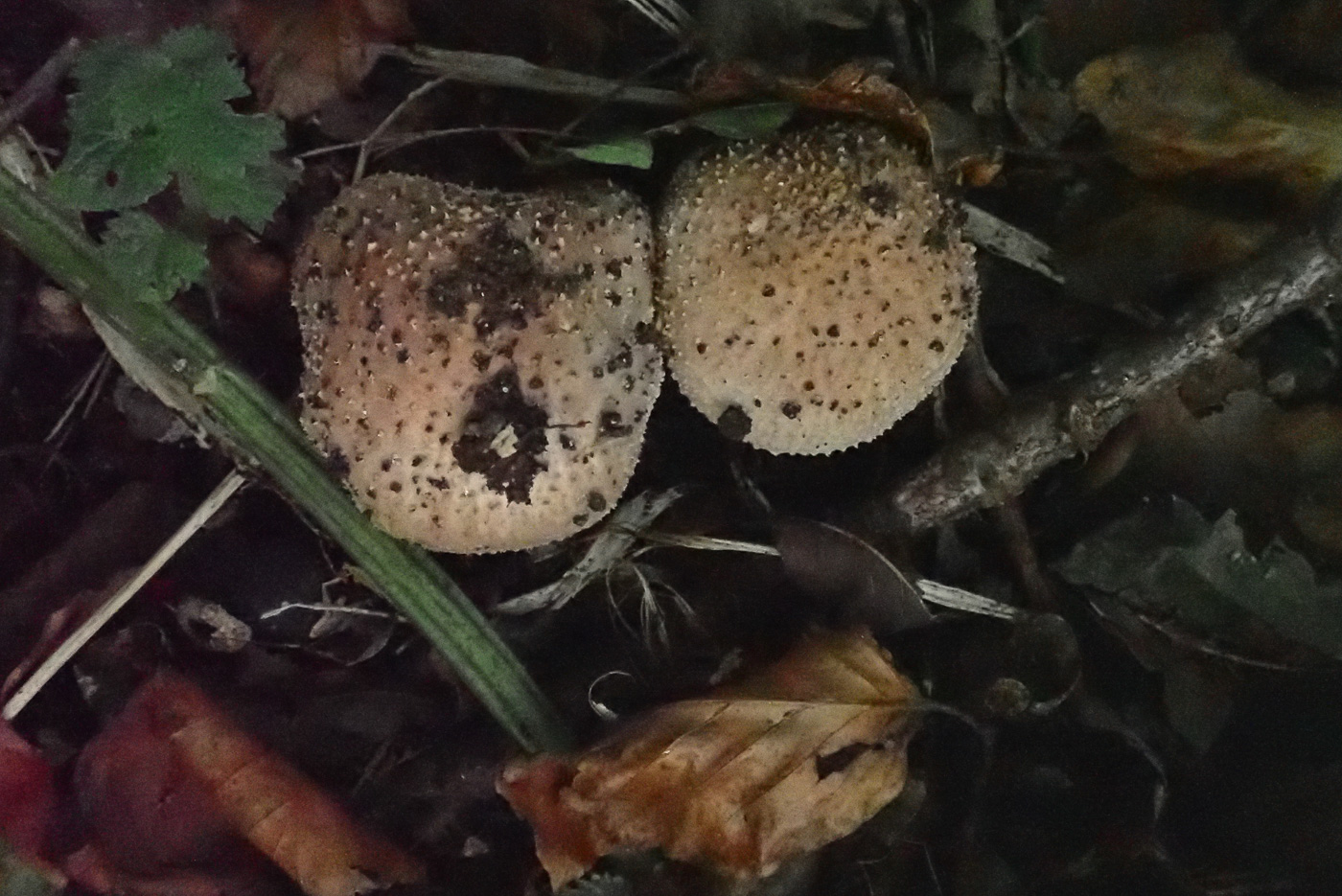
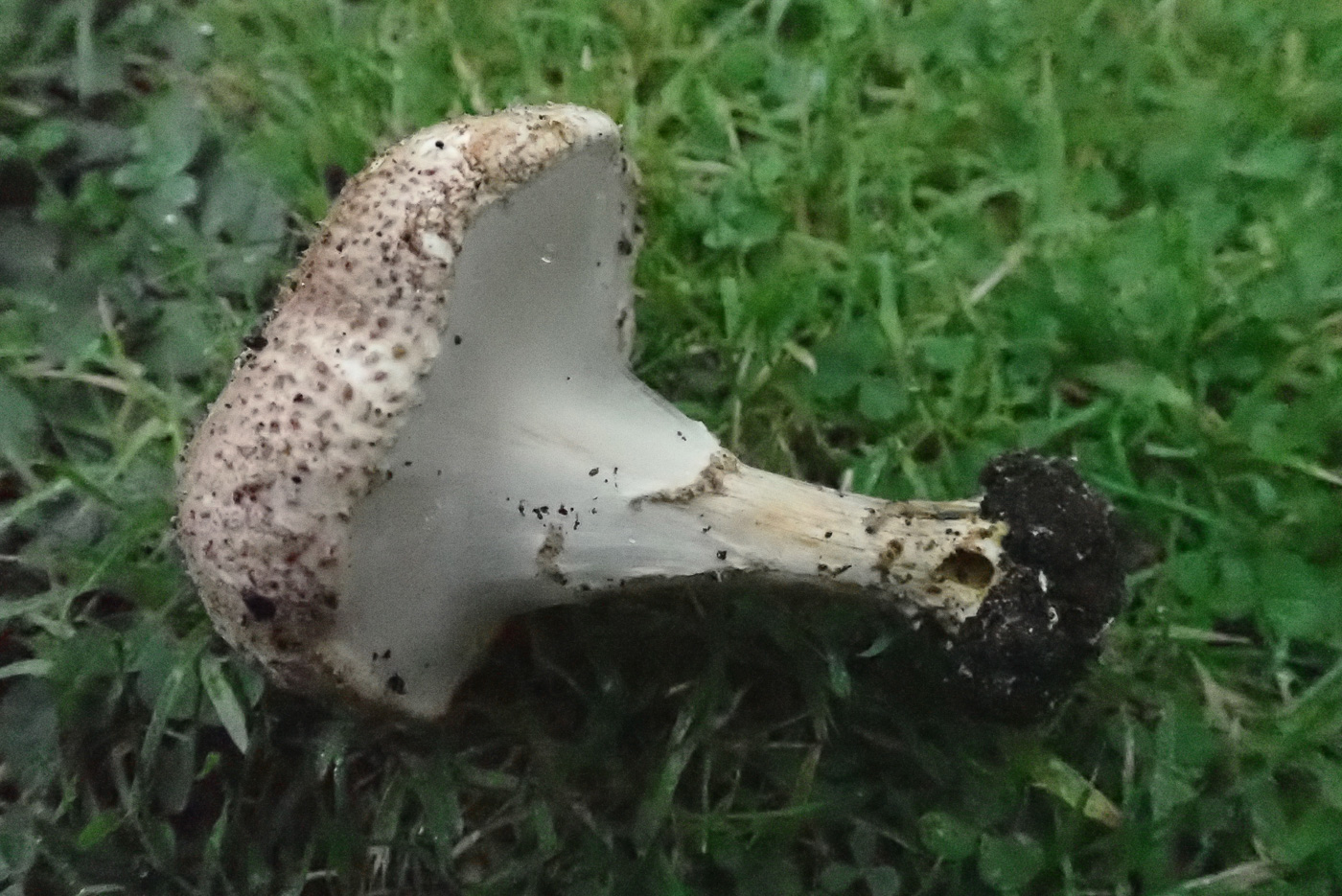 |
October 11th Echinoderma perplexum (a Dapperling with no common name) 
In Burnham Beeches on a large well rotted woodchip pile Penny discovered about 20 of these quite large mushrooms hiding under nettles. Previously in the genus Lepiota, this rare species is very similar to the common E. asperum. Caps were up to about 12 cm across and covered in dark pyramidal scales (hence this relatively new genus name), gills are creamy white and free, and the stems lack much sign of a ring which though present when immature is soon lost. The immature specimens (photos 2 and 3) had a beautiful white cortina-like fine mesh adjoining cap edge and stem with a few scales on the underside. We have just one previous county record, and though careful attention was paid to microscopic characters here, this will be sequenced as part of the CoLC project to confirm the determination.
|
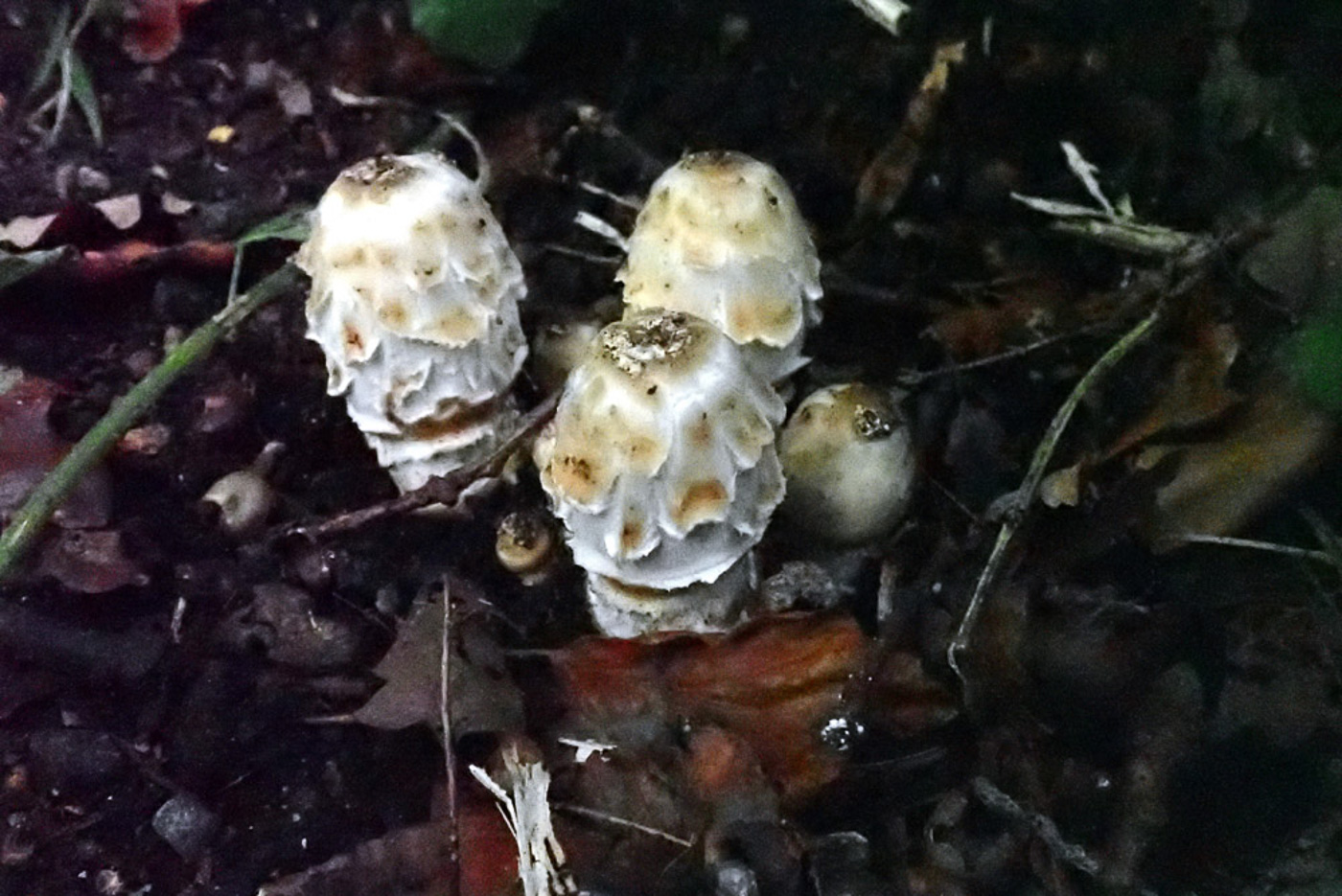
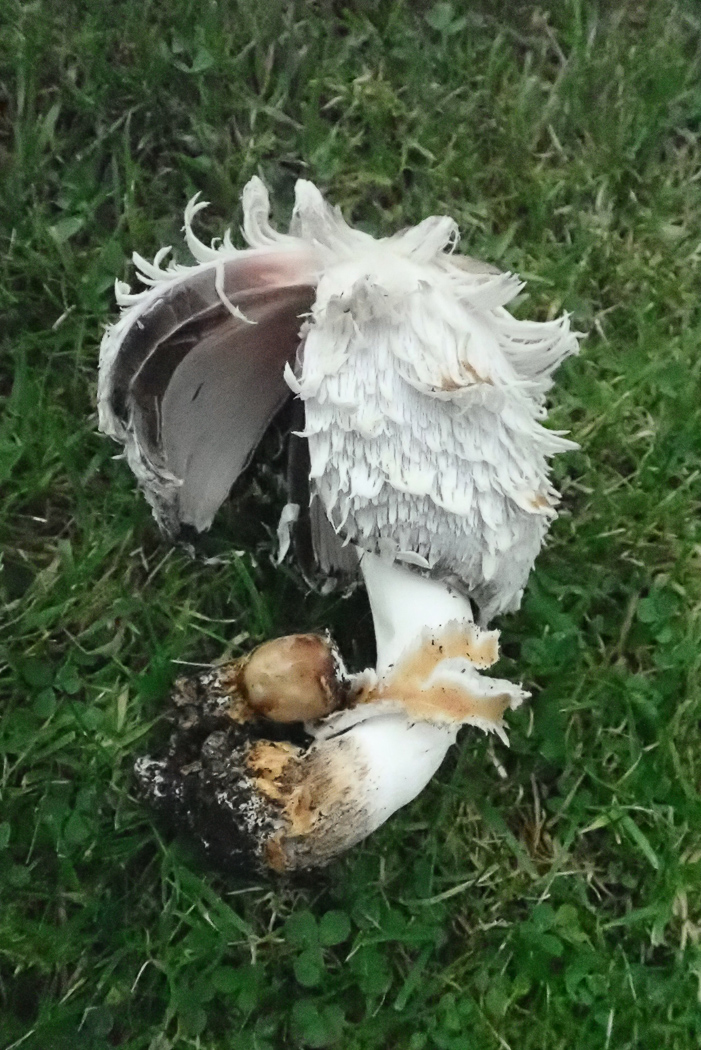 |
October 11th Coprinus comatus (Lawyer's Wig)
Under the same nettle patch in a woodchip pile at Burnham Beeches Penny found this trio of very scaly caps just emerging. She guessed they were likely to turn into this species but kept them upright on damp kitchen roll in a pot outside to see if they would develop enough to confirm. This particular woodchip pile often produces rarities so she wanted to make sure she hadn't missed something special. Sure enough in a couple of days it had expanded and was starting to turn black and deliquesce - no doubt now!
|
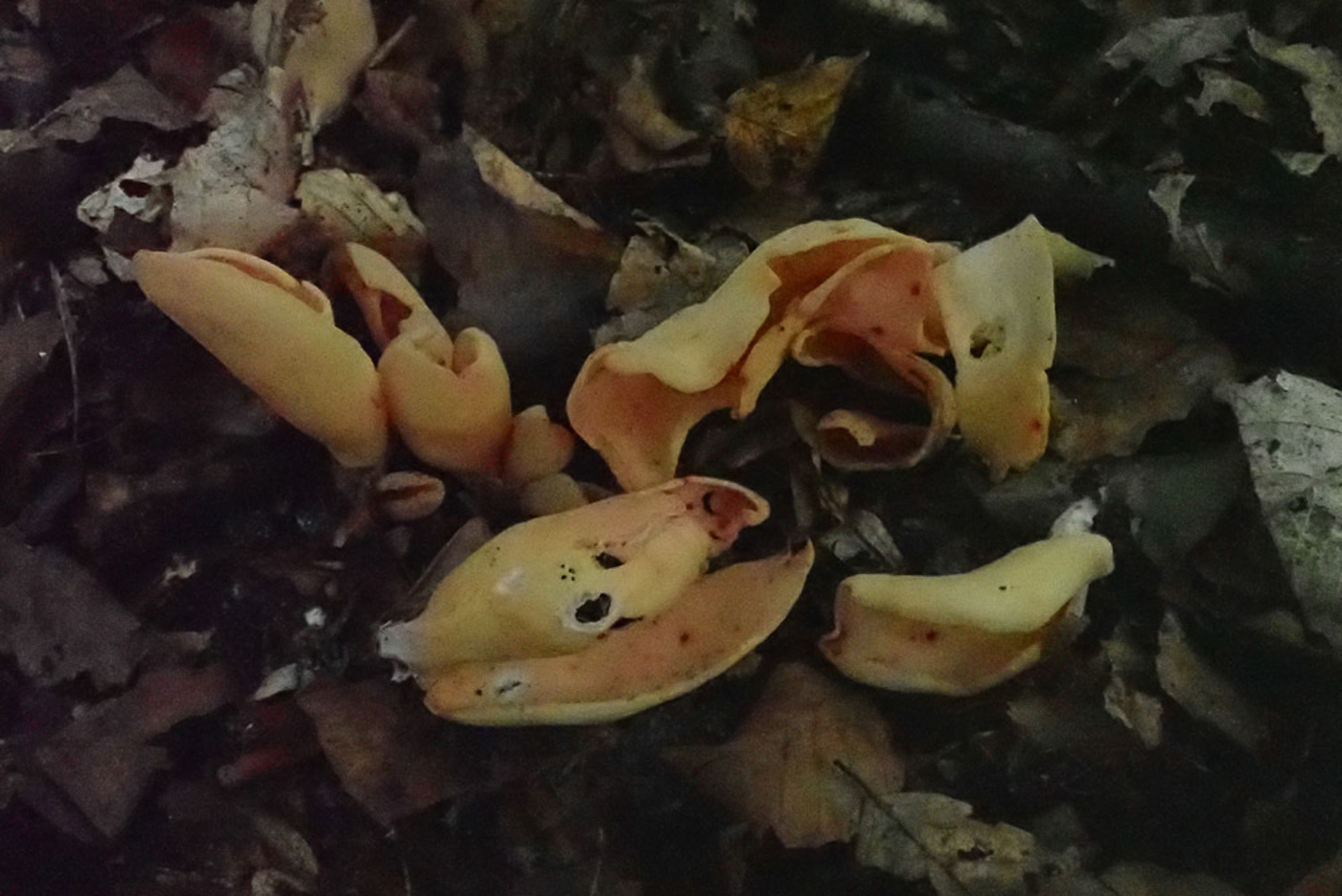
 |
October 11th Otidia onotica (Hare's Ear)
In Burnham Beeches Paul Cullington found a nice collection of this attractive Ascomycete in decidous litter. One of several quite common species of Otidia, this one is easily separable when it shows the typical pink blotches on the inner surface though this feature is not always present or as obvious as it is here. These cup fungi are separated in the field from the similar genus Peziza but having a split down one side - absent in Peziza. They can get quite big - the larges t here was about 7cm long.
|
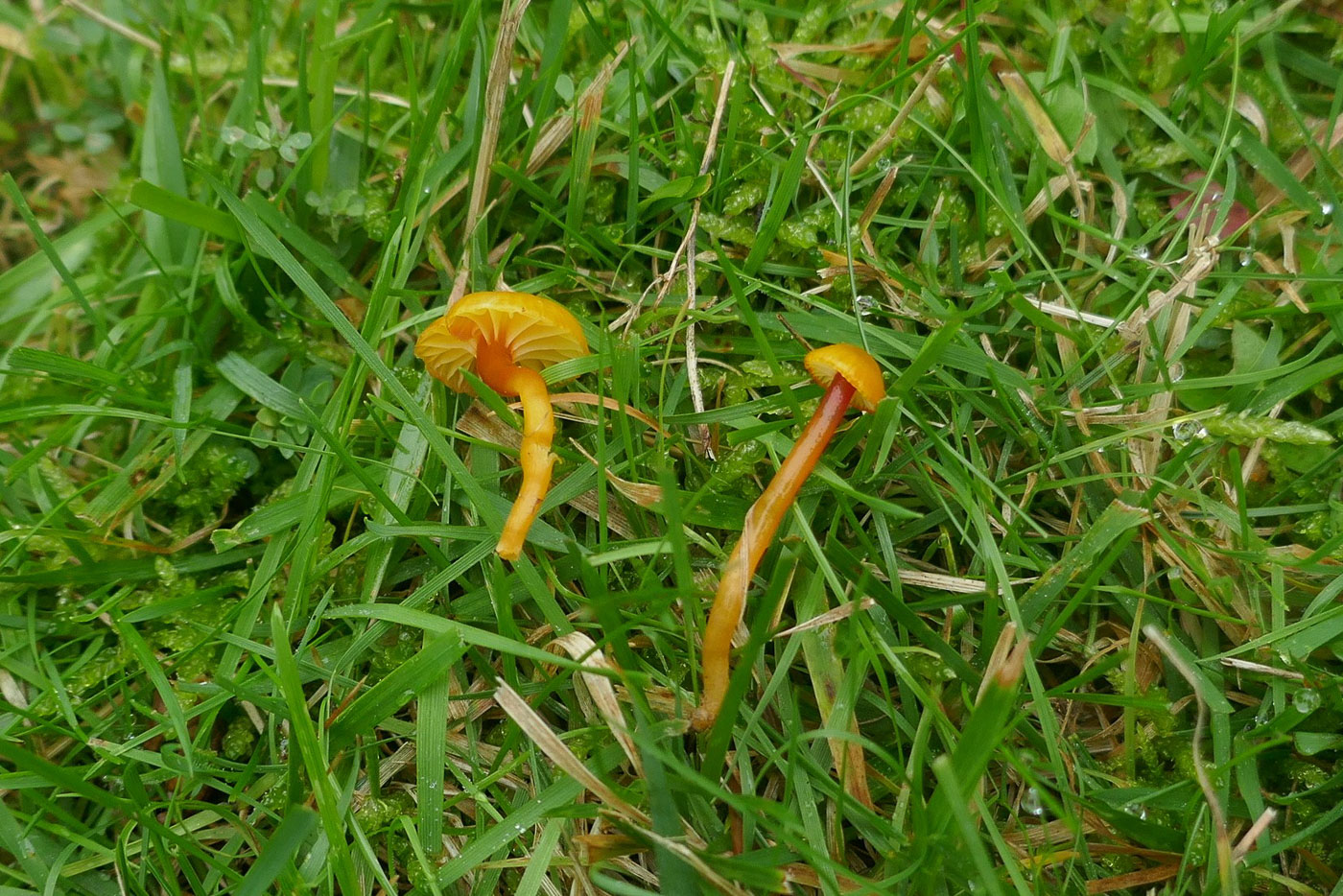 |
October 11th Hygrocybe insipida (Spangled Waxcap)
At Stampwell Farm Jackie Ewan found this small species of Waxcap in grassland. It is one of the species having a sticky cap and stem and often combined tones of yellow and red, nearly always red at the top of the stem as here. Gills can be more or less decurrent also.
|
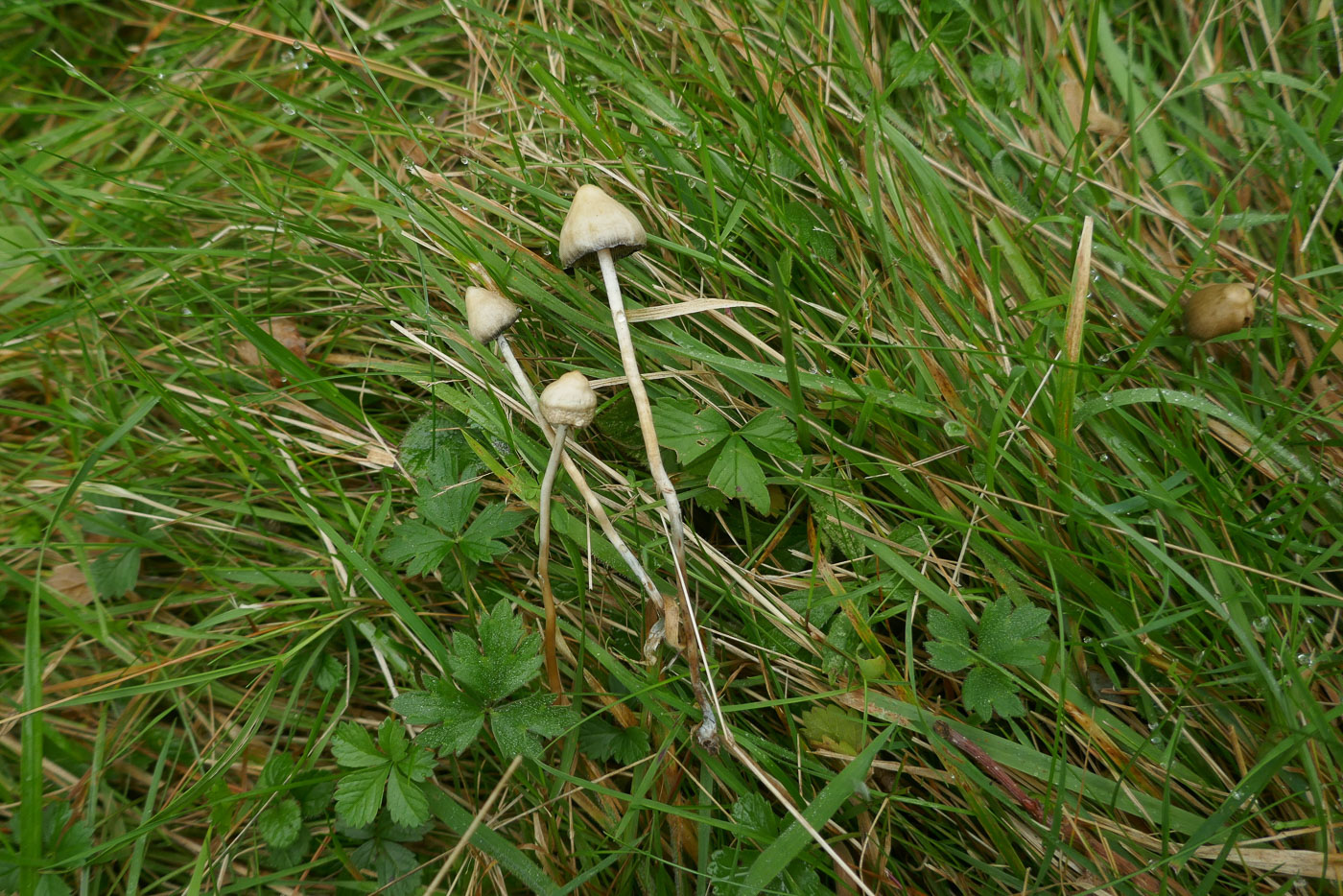 |
October 11th Psilocybe semilanceata (Liberty Cap)
At Stampwell Farm Jackie Ewan found several fruitbodies of this grassland species well known for its psychedelic effects and in fact a Class A drug. There are many other mushrooms which possess its active ingredient Psilocybin though this one is the best known and is easily recognised by its distinctive acutely conical shape, black gills and occurrence in grassland.
|
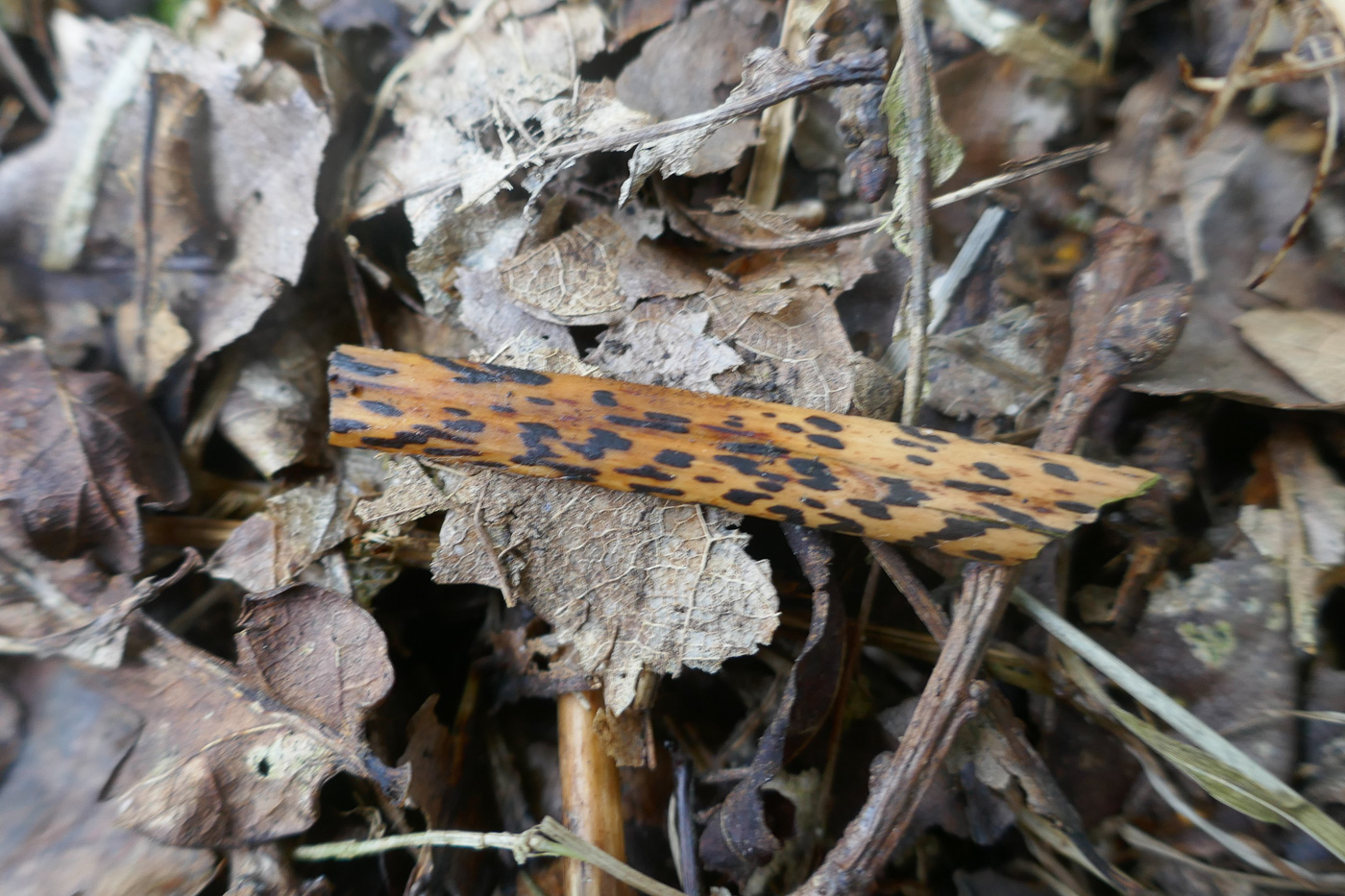 |
October 11th Rhopographus filicinus (Bracken Map)
At Stampwell Farm Jackie Ewan found this extremely common Ascomycete species which occurs on last year's bracken stems. It hardly protrudes from the stem almost appearing as part of its surface creating this distinctive pattern. Often it is hard to find a dead stem without it!
|
October 10th 2021
 |
October 10th Craterellus cornucopioides (Horn of Plenty)
In Downley Woods Claire Williams found some very small examples of this fungus just showing above the deciduous litter an moss. A common species in this area but an unusual-looking one, it lacks gills entirely, having very thin flesh and forms these distinctive black trumpets - unmistakable if you find it. Once you’ve seen one and get your eye in there are nearly always more in the same vicinity and it seems to favour banks and sloping ground.
|

 |
October 10th Armillaria gallica (Bulbous Honey Fungus)
In Downley Woods Claire Williams noticed these young mushrooms and was unsure of their identity. There are three very similar Honey Fungus species, all having scaly brown caps and a ring on the stem (here seen still covering the gills as veil in photo 2). This particular species tends to have yellow on the stem (often towards the base but here high up) and the base is swollen to almost bulbous - hence its common name.
|
October 9th 2021
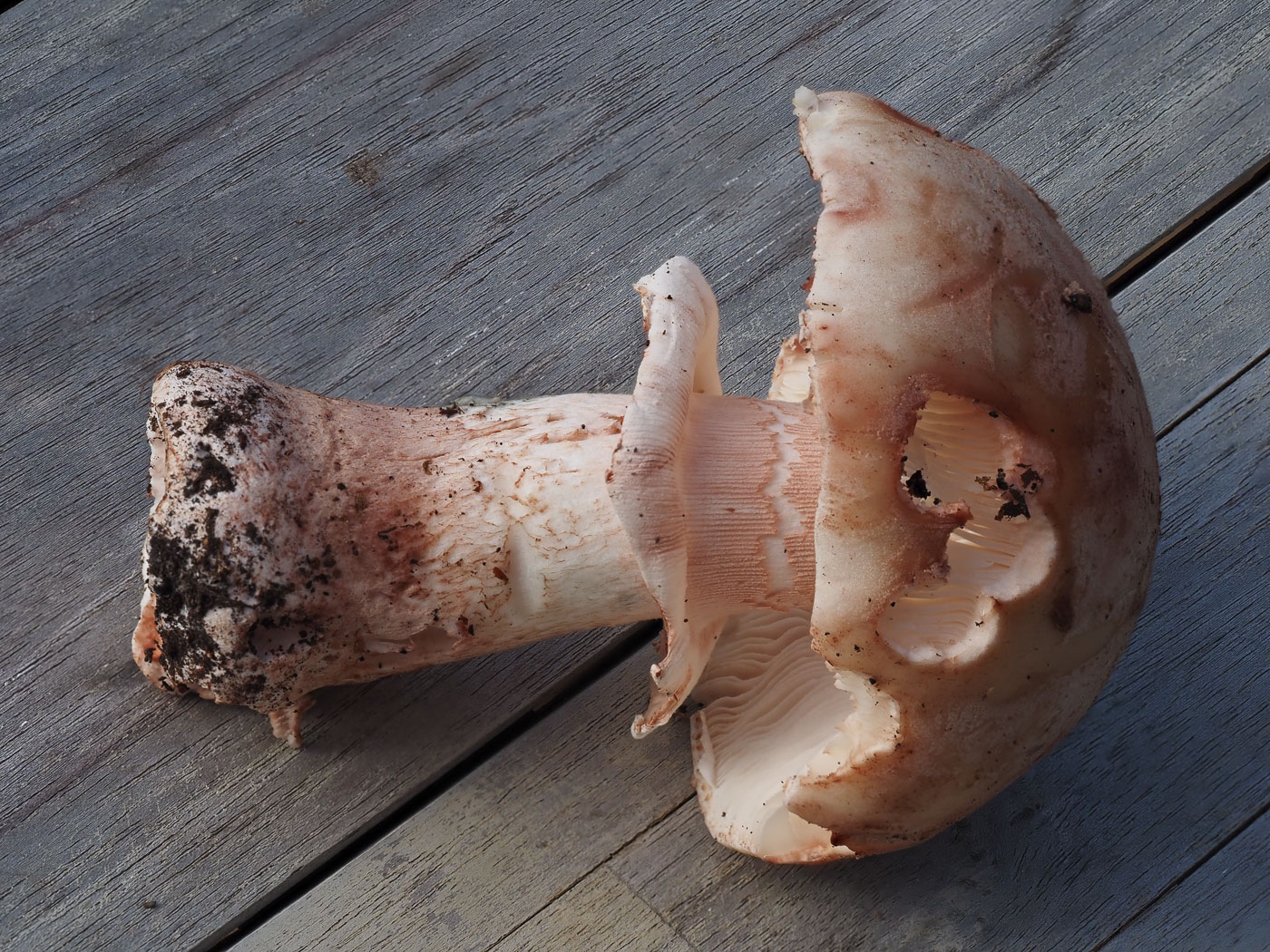 |
October 9th Amanita rubescens (Blusher)
Claire Williams found this specimen in Tinkers Wood - normally a very common species but no Amanitas seem very common this autumn so far. Her photo shows one particularly interesting feature: not only is it going distinctly pink everywhere but above the ring are clear pink striations. These are caused early on in its development when the gills and veil are compacted together, thus when it expands the gill pattern leaves this striate impression on either the upper ring surface or above it. Often it is white but less often pink. This striation is a useful identification feature to look for when splitting two other Amanita species which are regularly confused: A. excelsa var spissa (common) and A. pantherina (rare). A. pantherina lacks striations above or on the ring but they are present, as here, in A. excelsa.
|
October 8th 2021
 |
October 8th Gliophorus laetus (Heath Waxcap)
At Stampwell Farm in a grassy area Jackie Ewan found this quite unusual Waxcap (previously in the genus Hygrocybe). It is similar to the familiar G. psittacina (Parrot Waxcap) having both a slimy cap and stem, but lacks green shadesand also has a gelatinous layer along the gill margin which with care is removable with a pin!
|
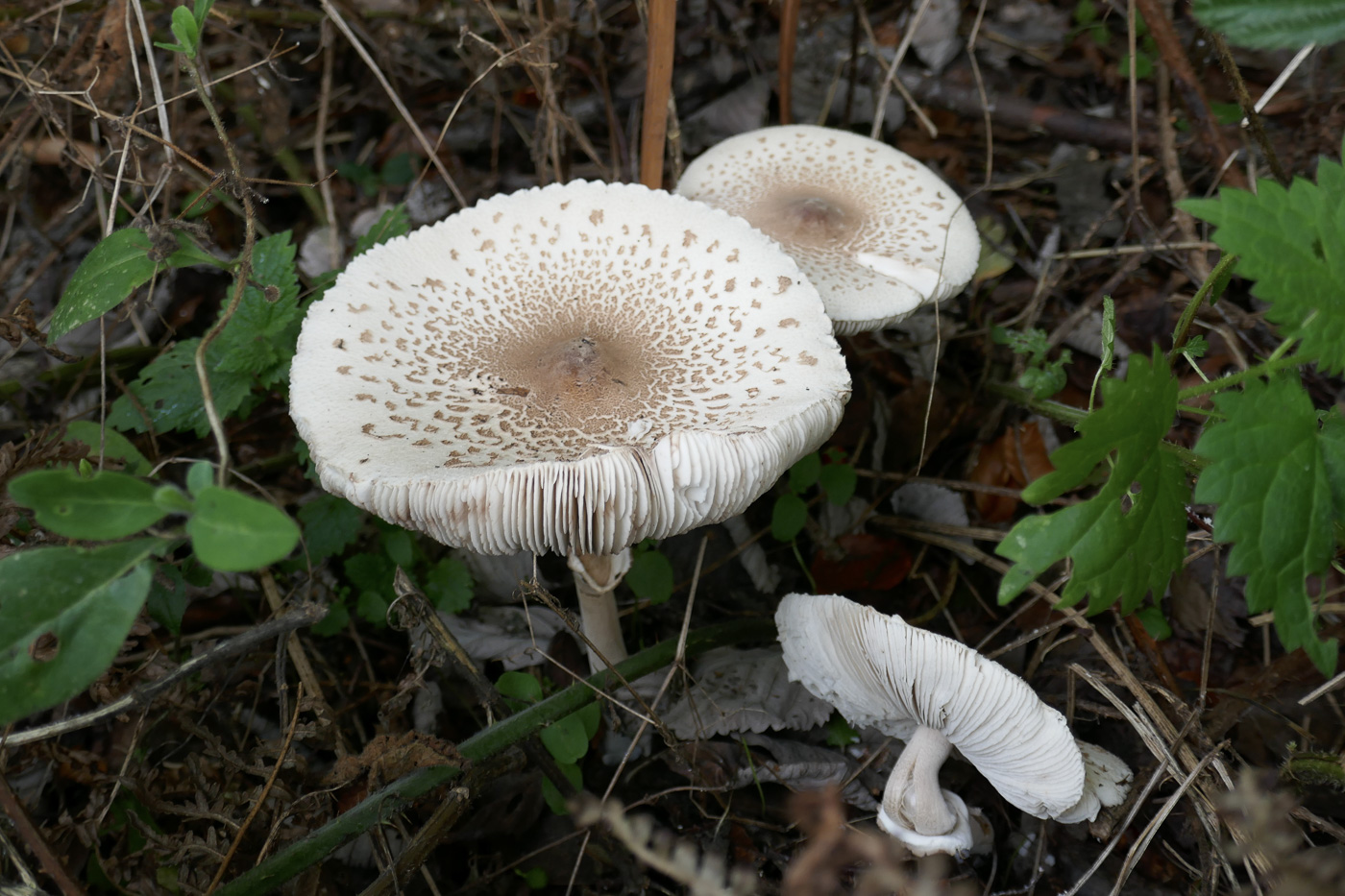 |
October 8th Macrolepiota mastoidea (Slender Parasol)
At Stampwell Farm Jackie Ewan found these nice specimens. The species is rather paler, smaller and more delicate than the more common Parasol and Shaggy Parasol (compare with M. procera dated Sept 20th and also with M. konradii dated Oct 12th). Like those species it can occur in woodland and grassland areas but also commonly occurs in dunes - not a likely habitat in the county!
|

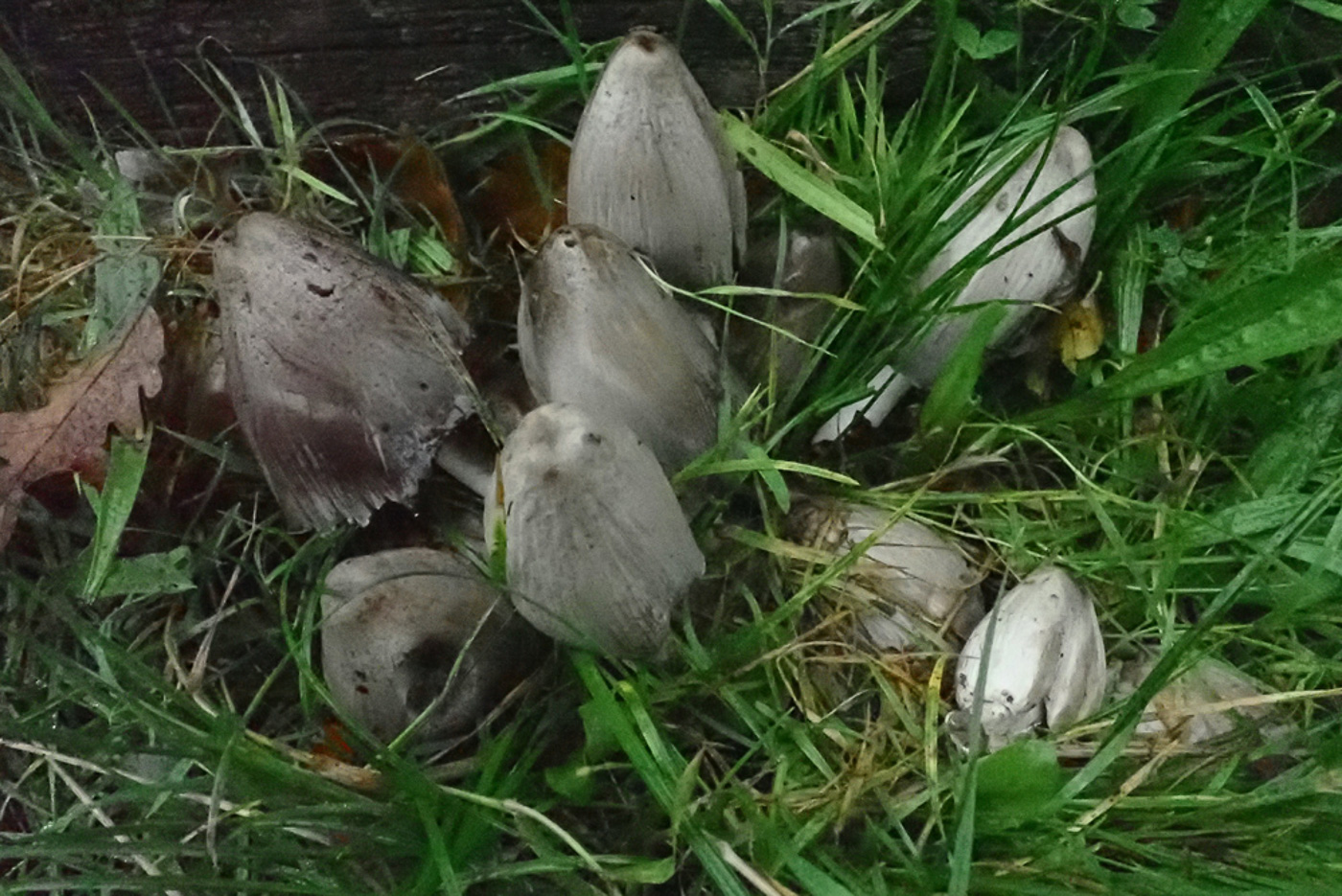
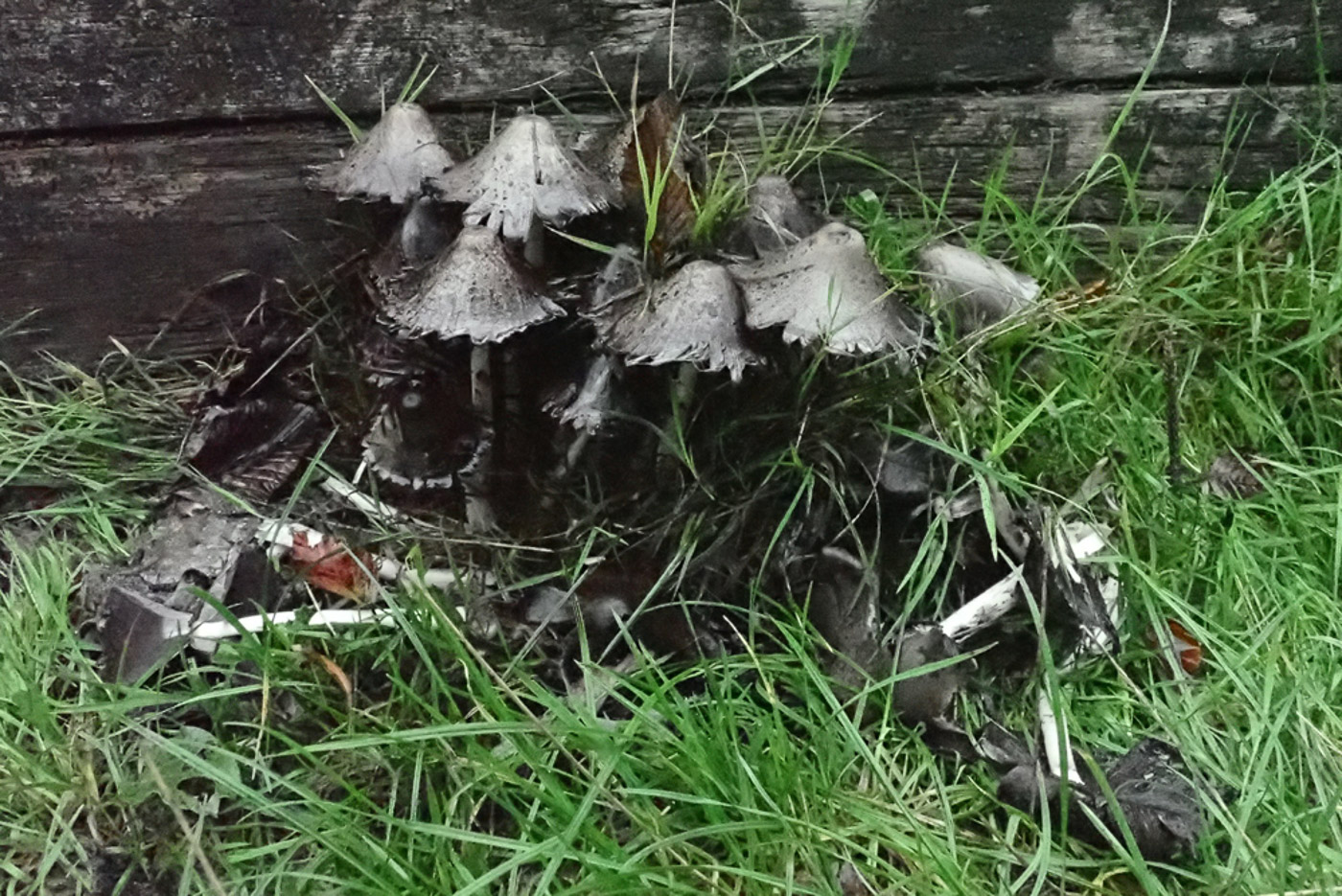 |
October 8th Coprinopsis atramentaria (Common Inkcap)
In the carpark at Whiteleaf Cross Penny found the long row of sleepers was providing the substrate for two different Inkcaps, one very small (see below) and in contrast this very large species with caps up to 7 cm x 7 cm. There were many clumps ranging from those just pushing through the grassy edge to full maturity being the dripping inky stage, thus providing the opportunity to illustrate this common species.
|
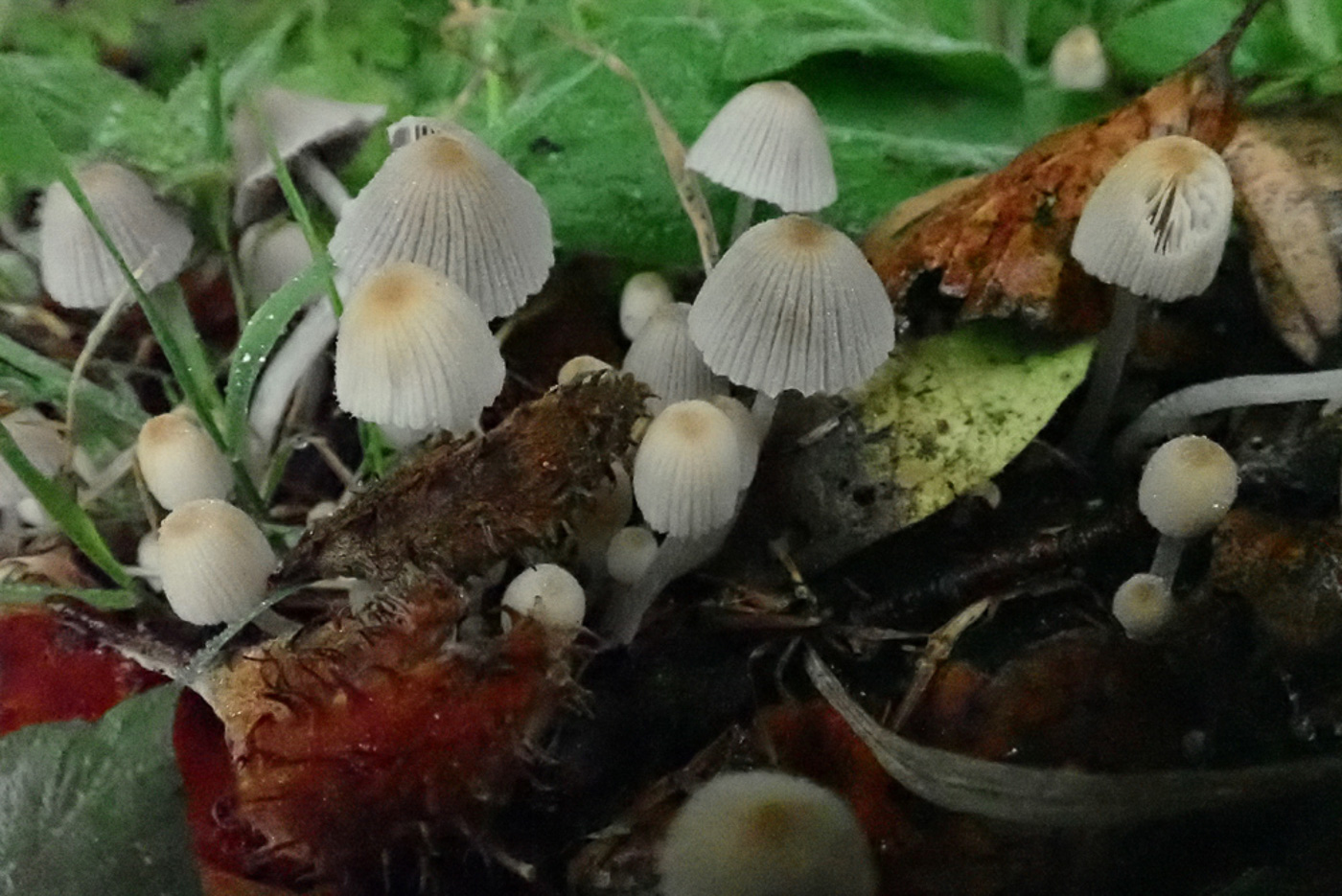 |
October 8th Coprinellus disseminatus (Fairy Inkcap)
This was the second Inkcap species on show on the sleepers at the Whiteleaf Cross carpark found by Penny. The largest mature caps seen here were about 1cm across, the smallest were tiny. There were many swarms of them coming up through the cracks in the wood but the species is just as happy on deciduous roots forming large colonies around dead stumps etc.
|
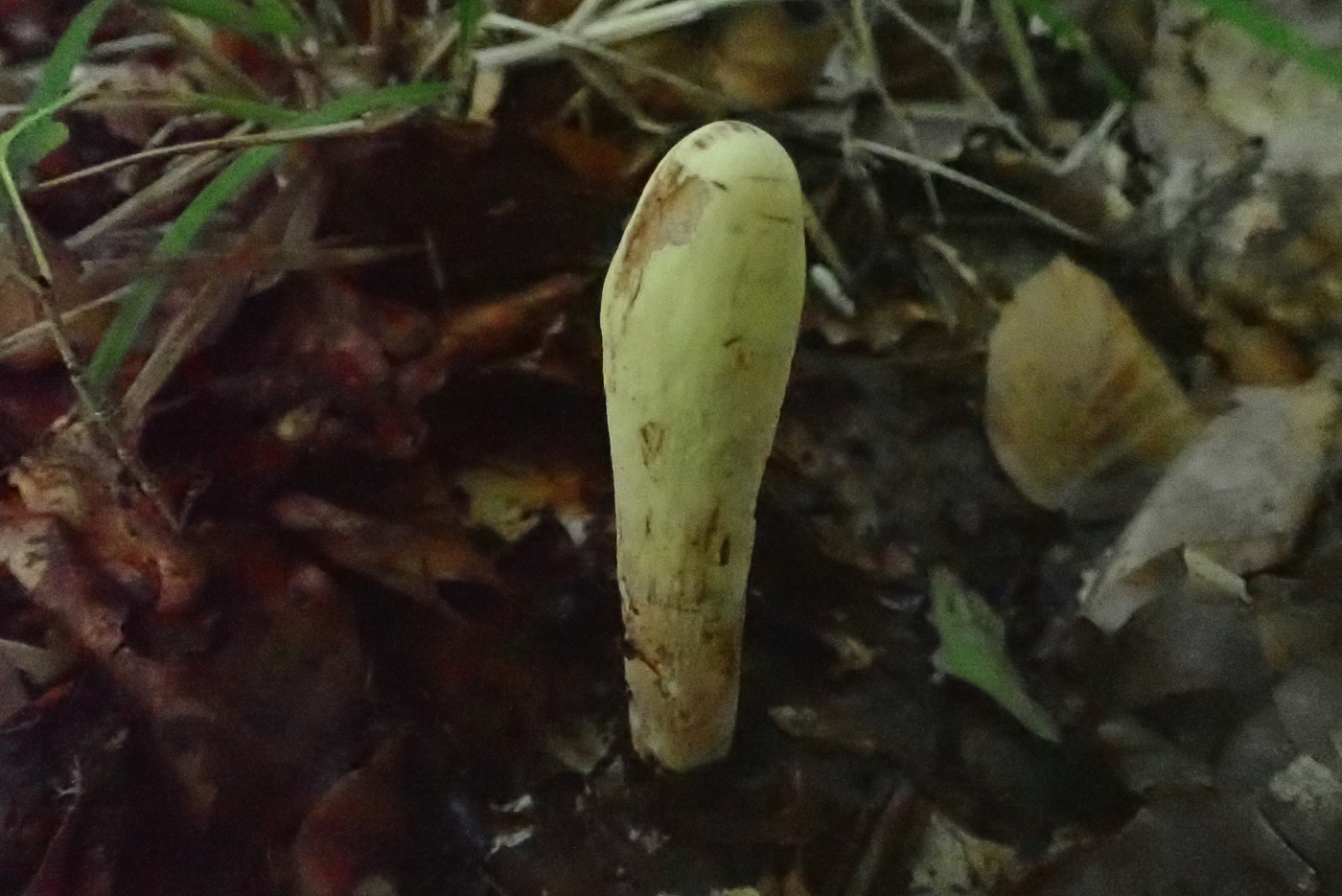
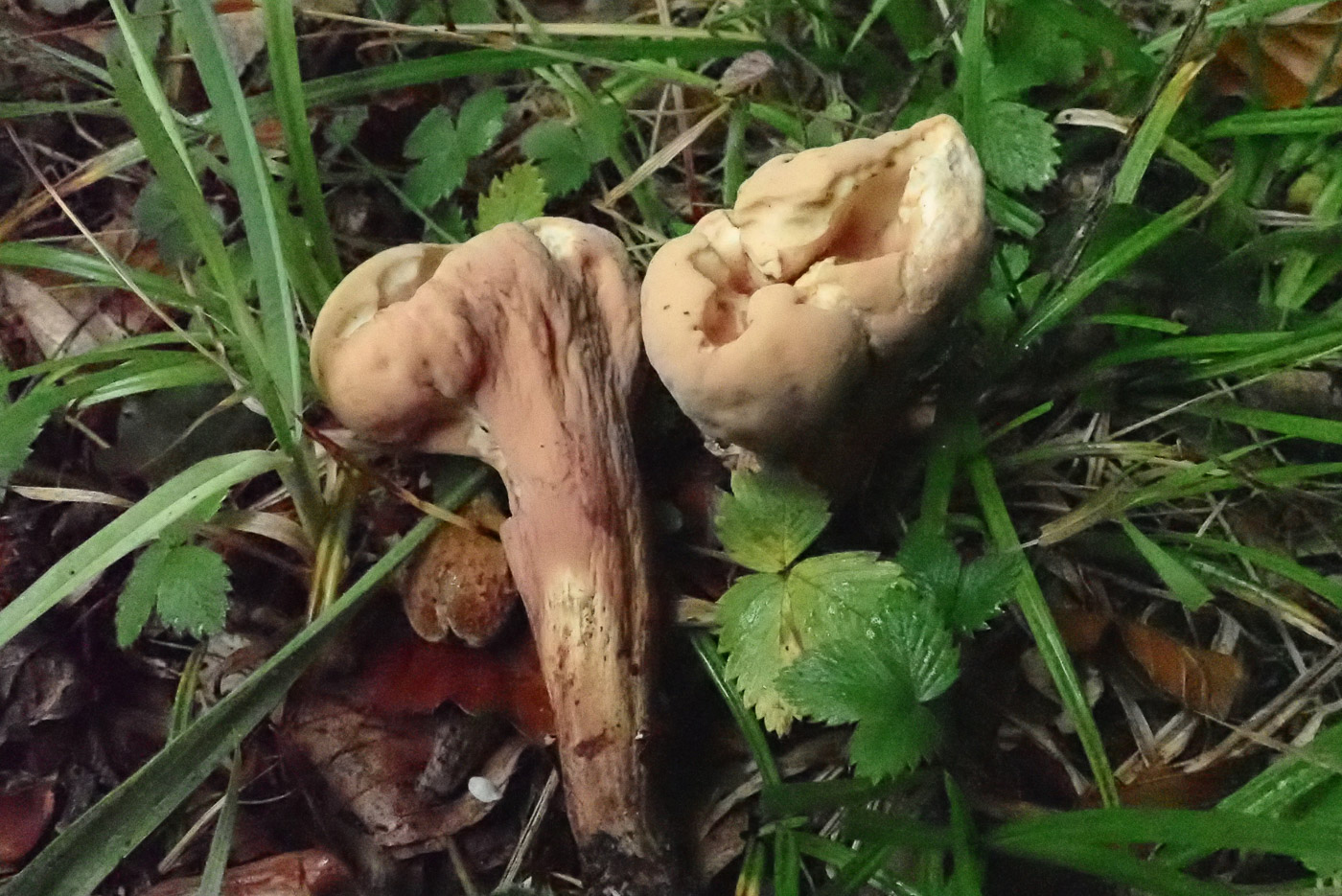 |
October 8th Clavariadelphus pistillaris (Giant Club)
After John Catterson's find of this unusual species (see dated Oct 3rd) Penny then found it at two different sites: photo 1 was two days earlier at Kings Wood Tylers Green, then photo 2, today's find, at Whiteleaf Cross, both under Beech. The two look very different and on finding today's two specimens she was not at all sure they represented the same species, but realised later when checking that they are just fully mature examples. They were about 12 cms high and the club-shaped tops were about 6-7 cms across. Both finds were new to the respective sites.
|
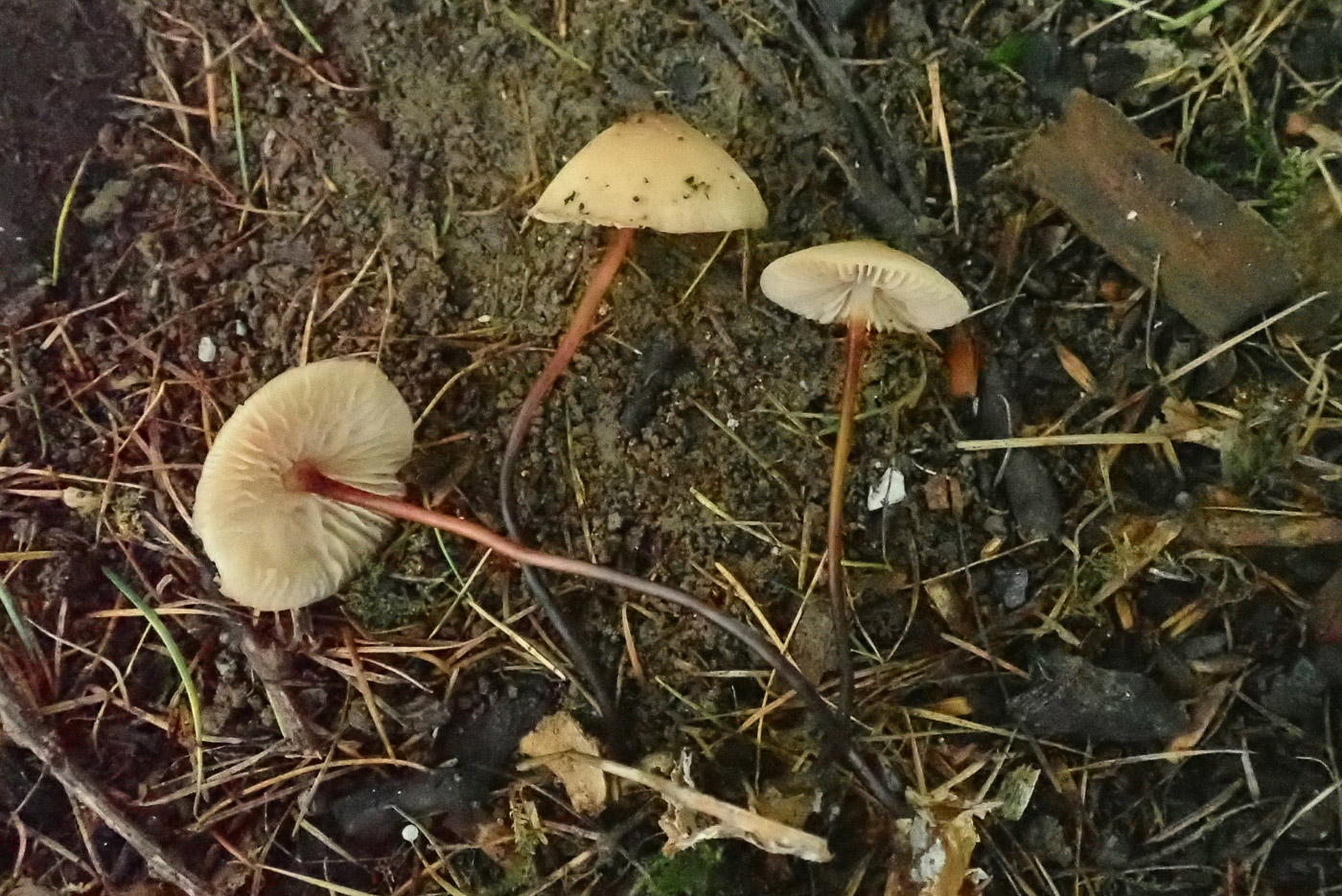 |
October 8th Marasmius cohaerens (a Parachute with no common name) 
In woody litter at Whiteleaf Cross Penny noticed these three fruitbodies adjacent to some specimens of Mycena crocata (Saffrondrop Bonnet). The stems however, though somewhat orange, were very different: shiny and flexible, clearly with no juice within, and she recognised this as possibly one of two species of Marasmius. Both M. torquescens and M. cohaerens are similar to a large Mycena; they both have pale beige caps up to 4cm across, long thin reddish stems, and are found in Beech litter. With a hand lens the stem of M. torquescens appears finely hairy which is a diagnostic pointer, but to be sure a scope is needed to separate them with certainty.
|
 |
October 8th Parasola conopilea (Conical Brittlestem)
At Whiteleaf Cross Penny found good numbers of this species previously in the genus Psathyrella (hence its common name). The species is recognisable in the field from its typical conical cap which starts out bright brown and shiny but as the stem lengthens the cap becomes greyer and often fades to almost white in age. The cap apex is nearly always the palest point. The gills are misleadingly white when young but soon darken to black as it matures. Fruitbodies can get to 12 cms high or more when mature.
|
October 7th 2021
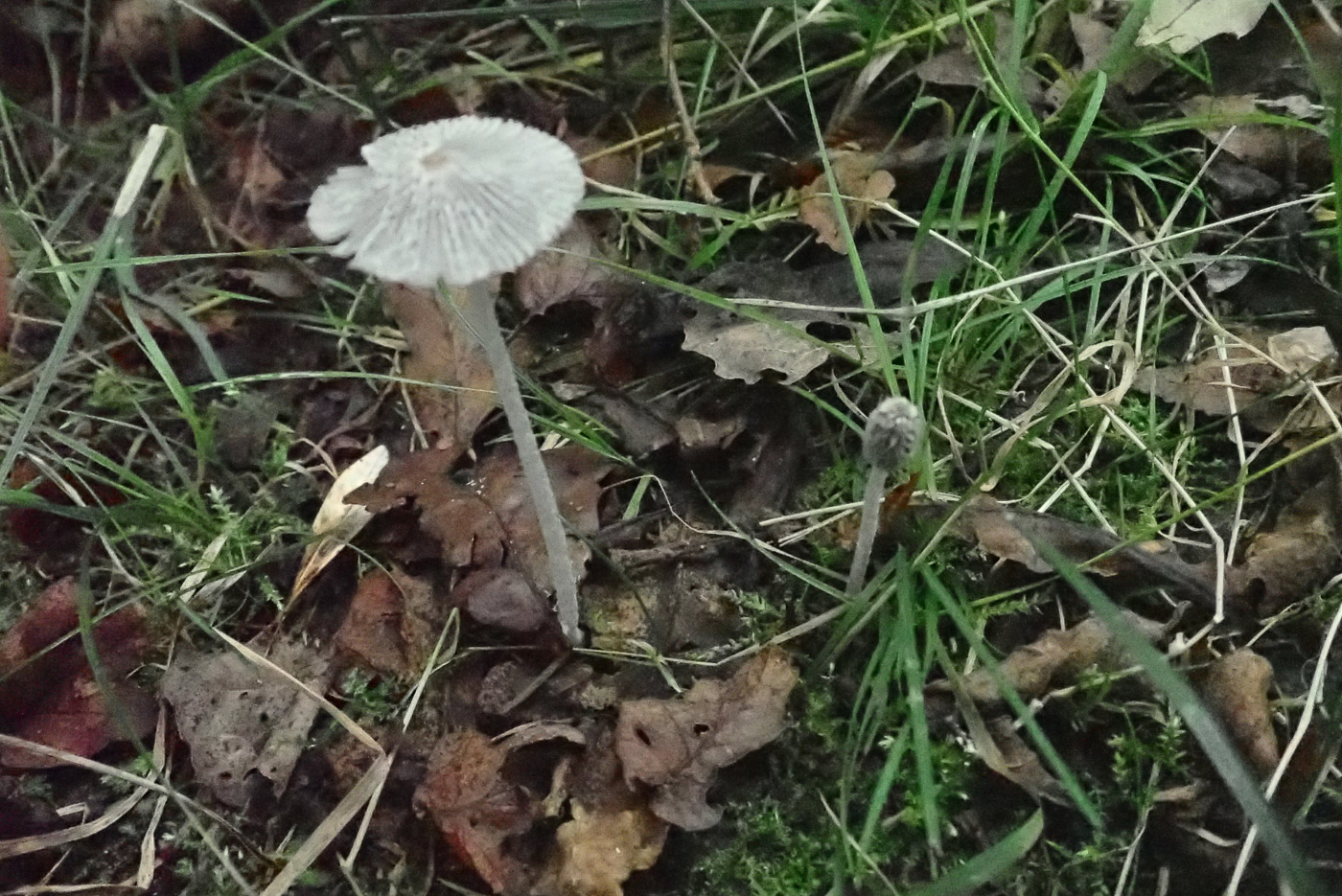
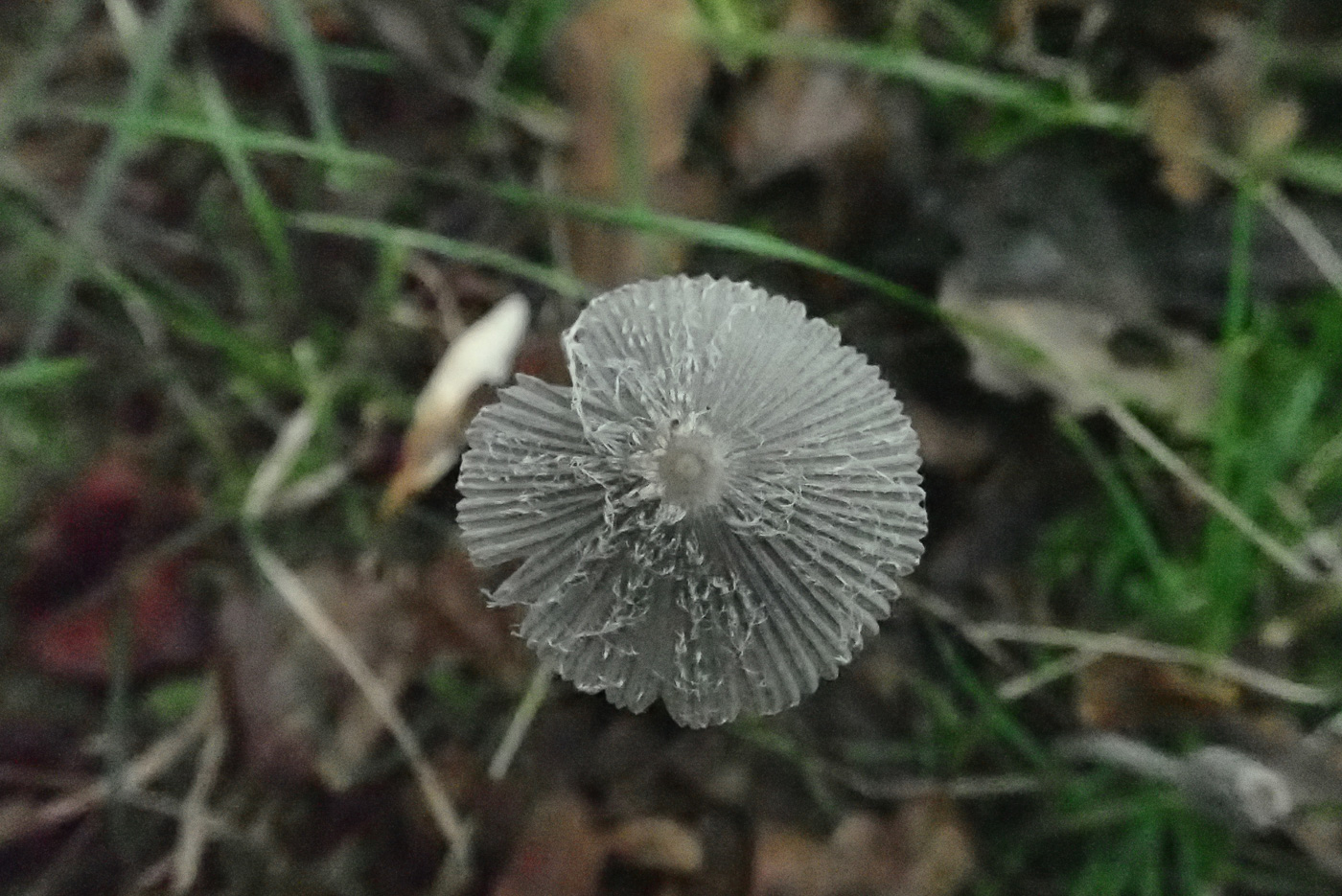
 |
October 7th Coprinopsis lagopus (Hare'sfoot Inkcap) 
In Rushbeds Wood Penny found quite a few of these delicate Inkcaps growing in soil in the grassy rides and although she could see plenty of veil on the caps - a feature of this but also of many other Inkcaps, she knew the species often occurs in large numbers on woodchip piles but was not at all sure it occurred in soil as here. At home it seemed to key out to C. lagopus but she asked Derek to check it for her a few days later (when dried) and he confirmed it and the substrate as not that unusual either. The long stringy strands of veil are apparent in photo 2.
|
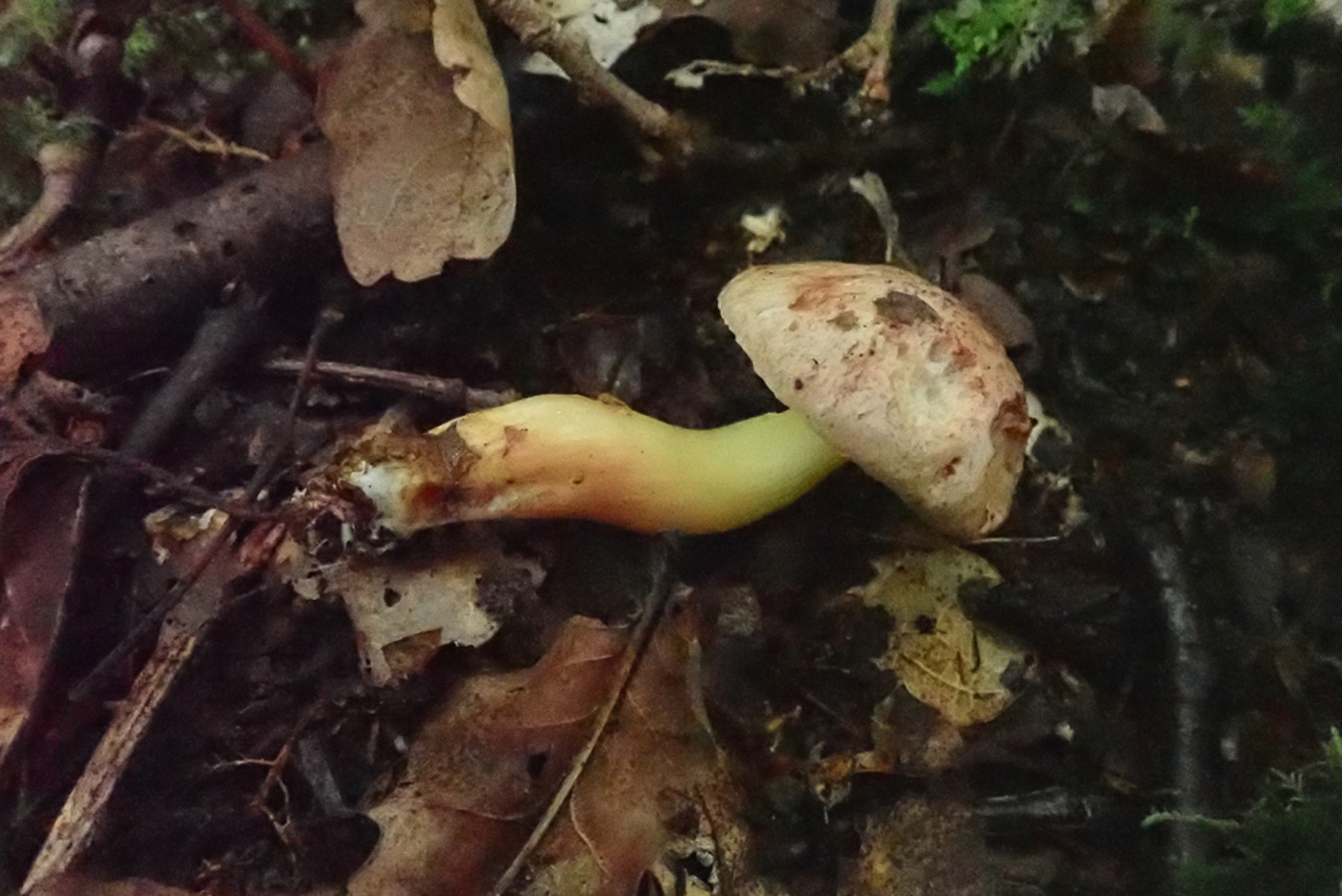
 |
October 7th Aureoboletus gentilis (Gilded Bolete)
In Rushbeds Wood Penny gave an 'ooh' when she turned this small mushroom over to see the brilliantly bright yellow pores of this small rare Bolete. It favours clay soils and is found under Oak (as here) or Beech, the cap being under 5cm across, sticky to viscid and pink buff, the small pores are golden yellow and unchanging when pressed, and the stem is also yellowish and sticky. It is the sole member of a genus of just two to occur in the UK and we have some older records from Bernwood Forest, also one in 2017 from Finemere Wood, so it was new to the site today.
|
 |
October 7th Lactarius azonites (a Milkcap with no common name)
Under Oak in Rushbeds Wood Penny found this pair of Milkcaps which clearly had milk turning pink on the gills where damaged. In this genus of about 70 UK species there are 6 which have this character thus quickly eliminating the vast majority. L. azonites is probably the commonest of the 6 though not that common in itself (and new to the site today). Other features to distinguish it are the dry 'milky coffee' brown cap, quite widely spaced anastomosing gills (ie with cross ridges as in Mycena galericulata), and whitish stem.
|
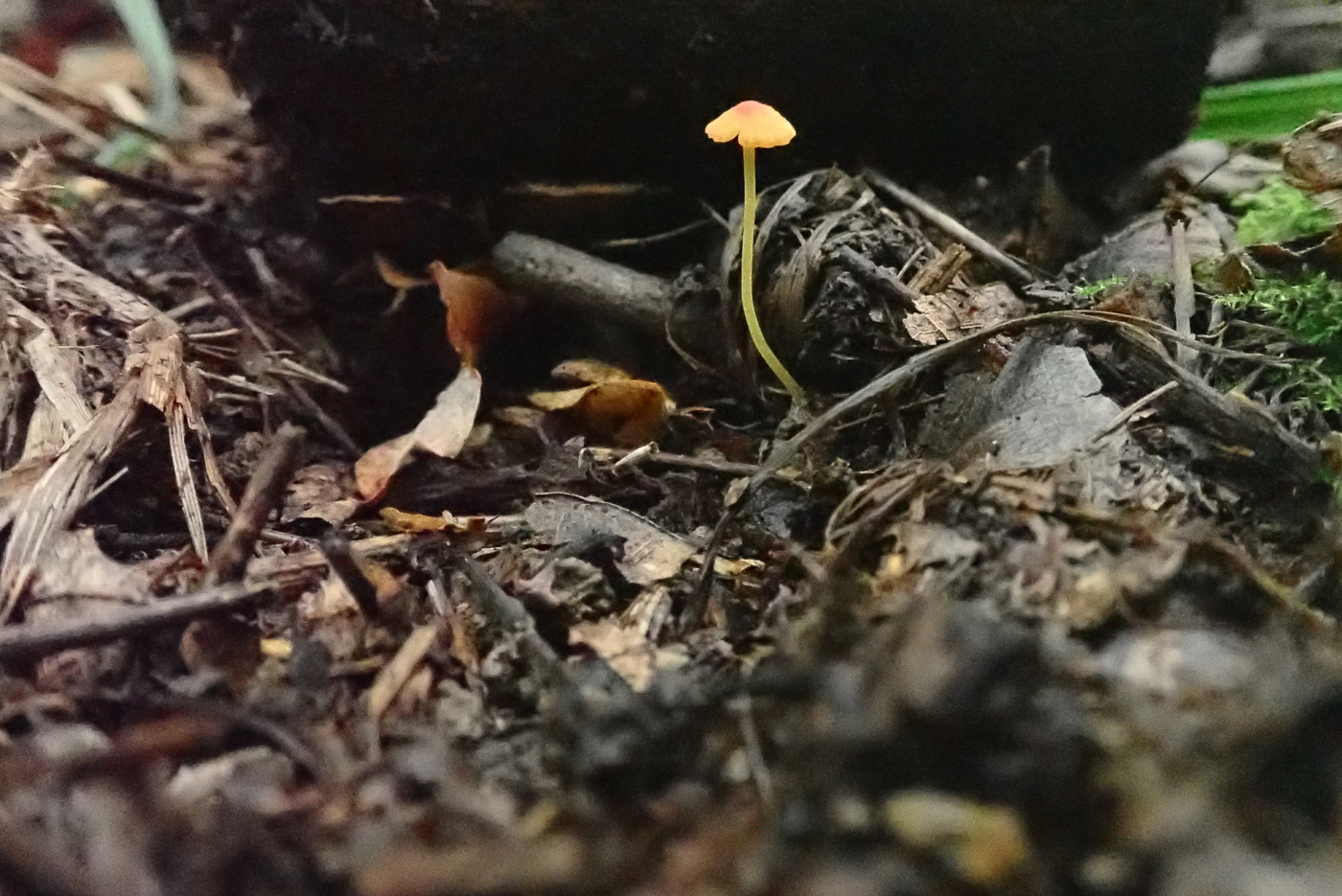
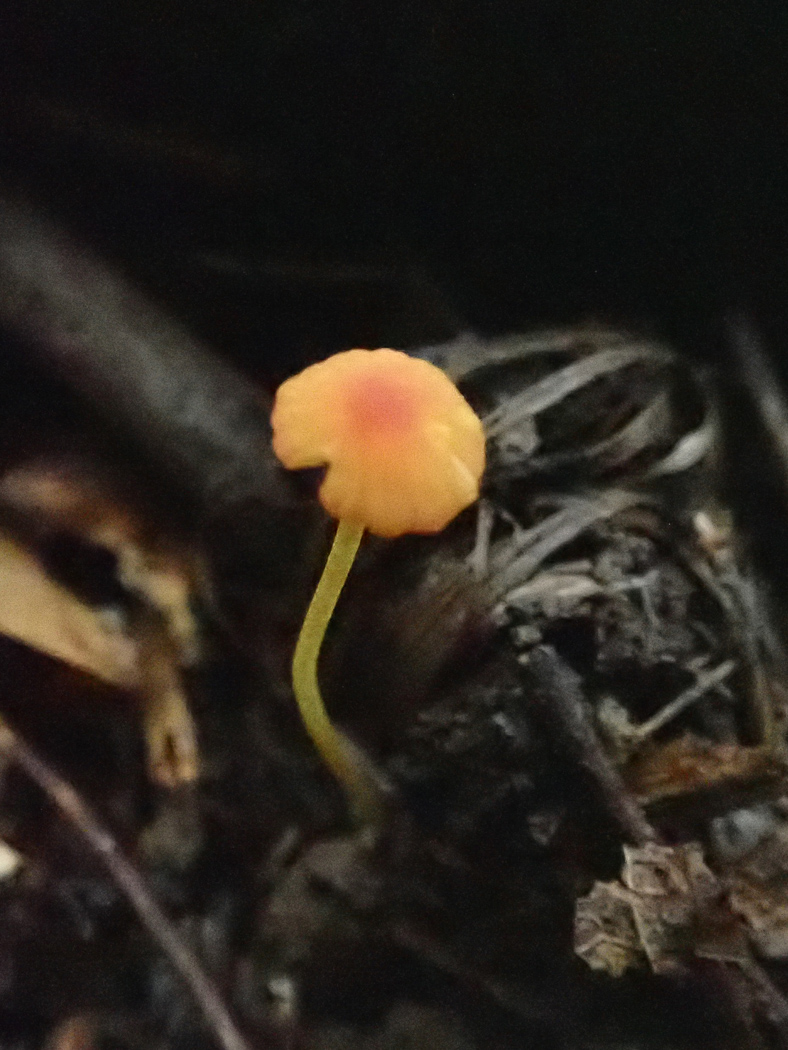 |
October 7th Mycena acicula (Orange Bonnet)
In a pile of rotting woody litter in Rushbeds Wood Penny saw this bright orange spot contrasting with its surroundings and knew what it must be. This tiny Bonnet is always a pleasure to find, its brilliant orange cap less than 5mm across and contrasting yellow stem making it an easy one to identify as well.
|
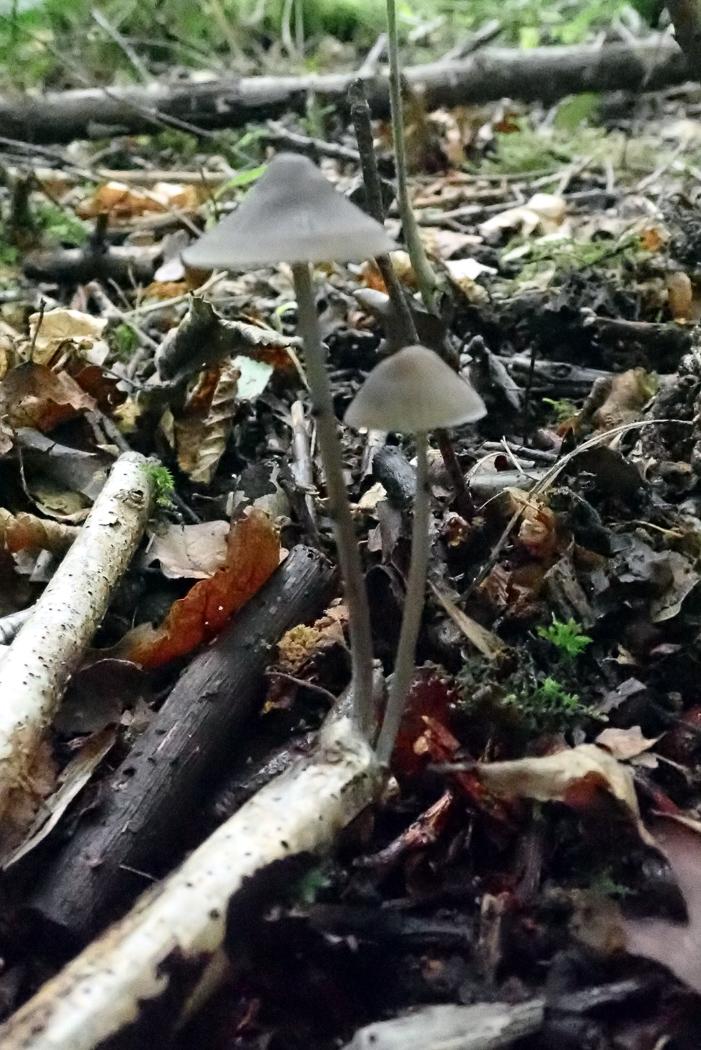
 |
October 7th Mycena polygramma (Grooved Bonnet) 
On a deciduous stick in Rushbeds Wood Penny noticed these two greyish Bonnets standing about 6cms tall. It wasn't until she saw the shape of the gill cells under the scope at home that she realised what species it was, then realised she could have named it in the field had she remembered to look for the grooved grey stem with a handlens. Though not always very prominent and easy to see, if present - as they were here - the grooves separate the species from the many other Bonnets found on fallen wood. (Apologies form the blurry images.)
|

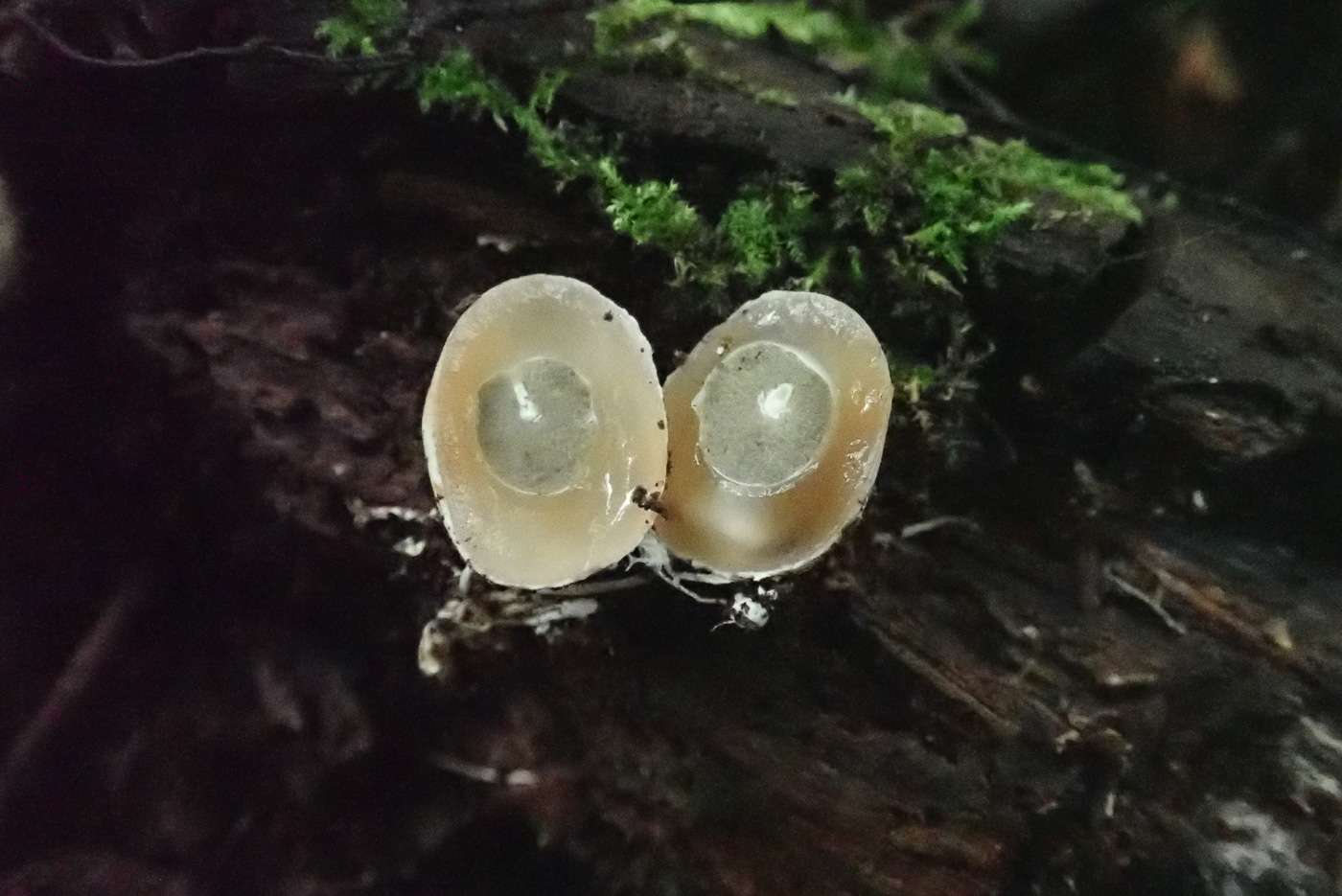 |
October 7th Mutinus caninus (Dog Stinkhorn)
In Rushbeds Wood Penny came across just the egg of this species attached to some rotting deciduous logs by long mycelial strands. The egg of this species is considerably smaller than that of Phallus impudicus and is also pear-shaped rather than round and less gelatinous. Penny cut it in half (photo 2) to show the central core which quickly expands into the familiar shape of the species. Hopefully we'll add photos of the later stage in due course. Though common, the species was new to the site.
|
October 6th 2021
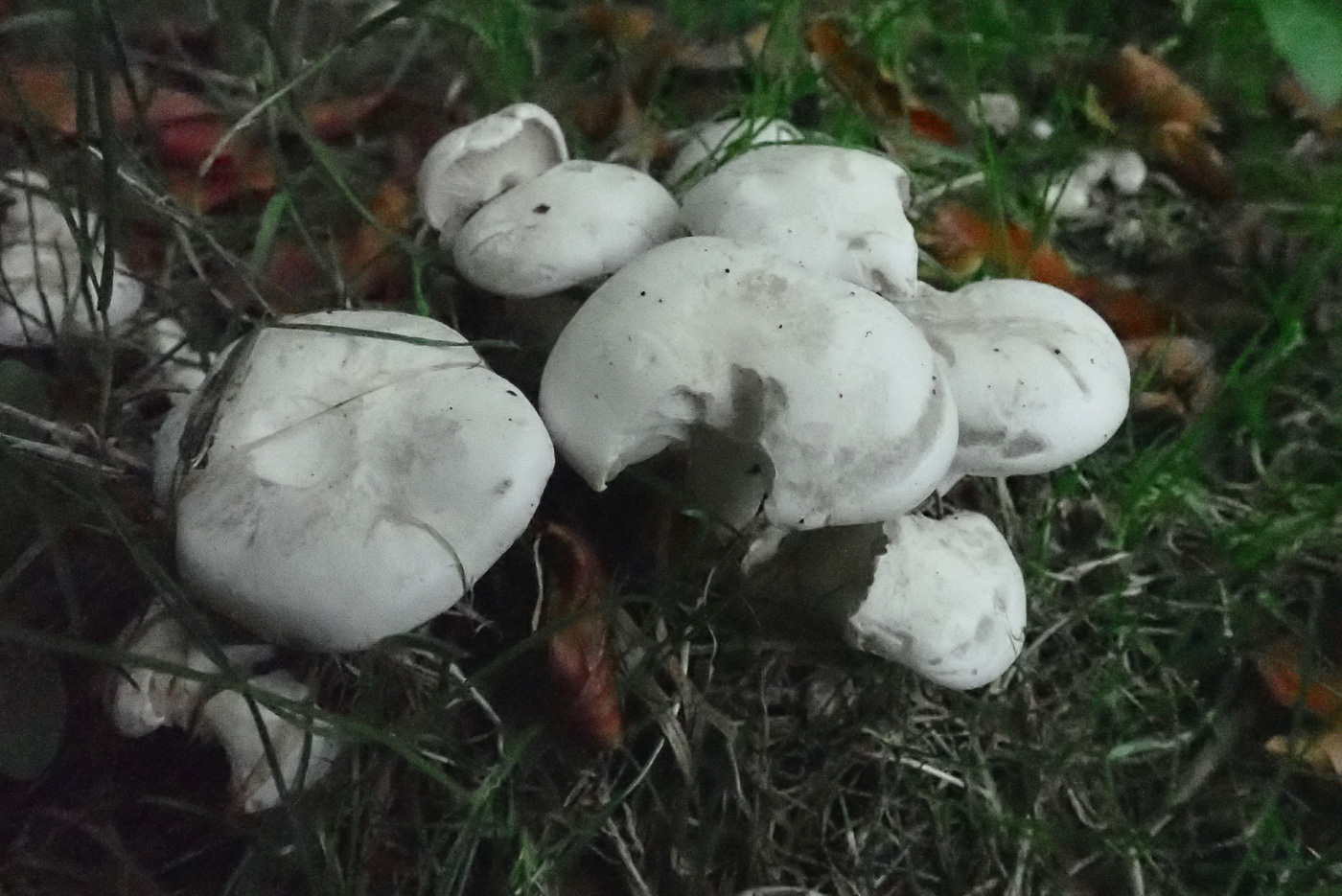
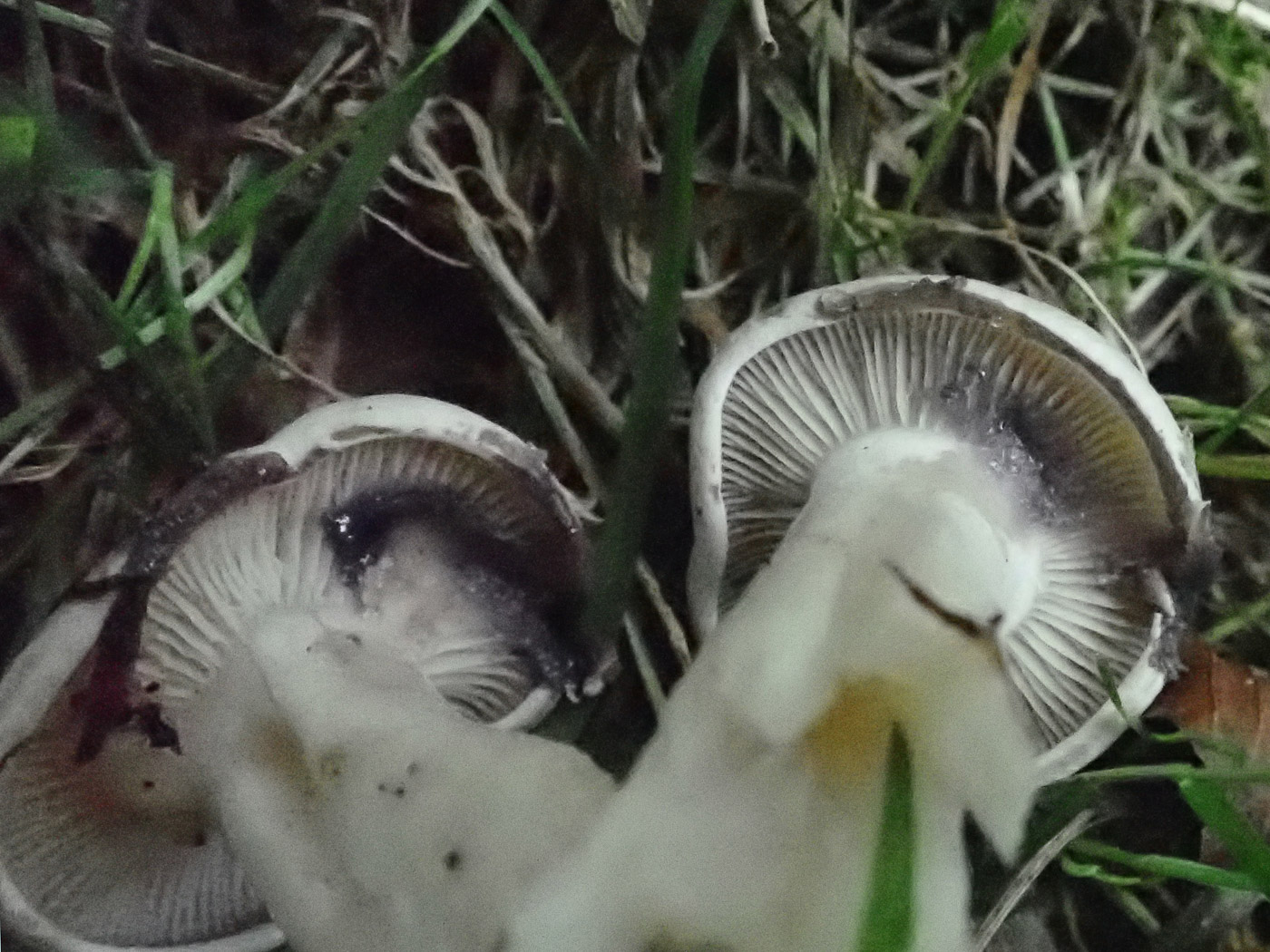 |
October 6th Leucocybe connata (White Domecap)
In Kings Wood Tylers Green there is a grassy bank adjacent to the car park where Penny regularly finds this species, better known by its earlier name Lyophyllum connatum. Not at all rare but not frequent in our area area, it is possibly misidentified as a white Tricholoma but grows fasciculate (in tight clumps) and has an unusual smell for a fungus: of fresh peas! Nice young clusters were just coming up, so Penny tested out another identification trick though if the material is dry it can be very slow to react. If you rub any part with a crystal of iron salts (as used for the genus Russula) it turns dark purple. Photo 2 shows a couple of fruitbodies which reacted within 3 seconds!
|
 |
October 6th Tricholoma sulphureum (Sulphur Knight)
In Kings Wood Tylers Green Penny found just a very few of this striking but common woodland species, a member of a genus we've hardly seen yet this autumn. It often occurs under Oak and Beech and is an easy one to identify: not only is it entirely yellow but it has an unforgettable smell of coal gas tar. Put one to your nose and you'll see!
|
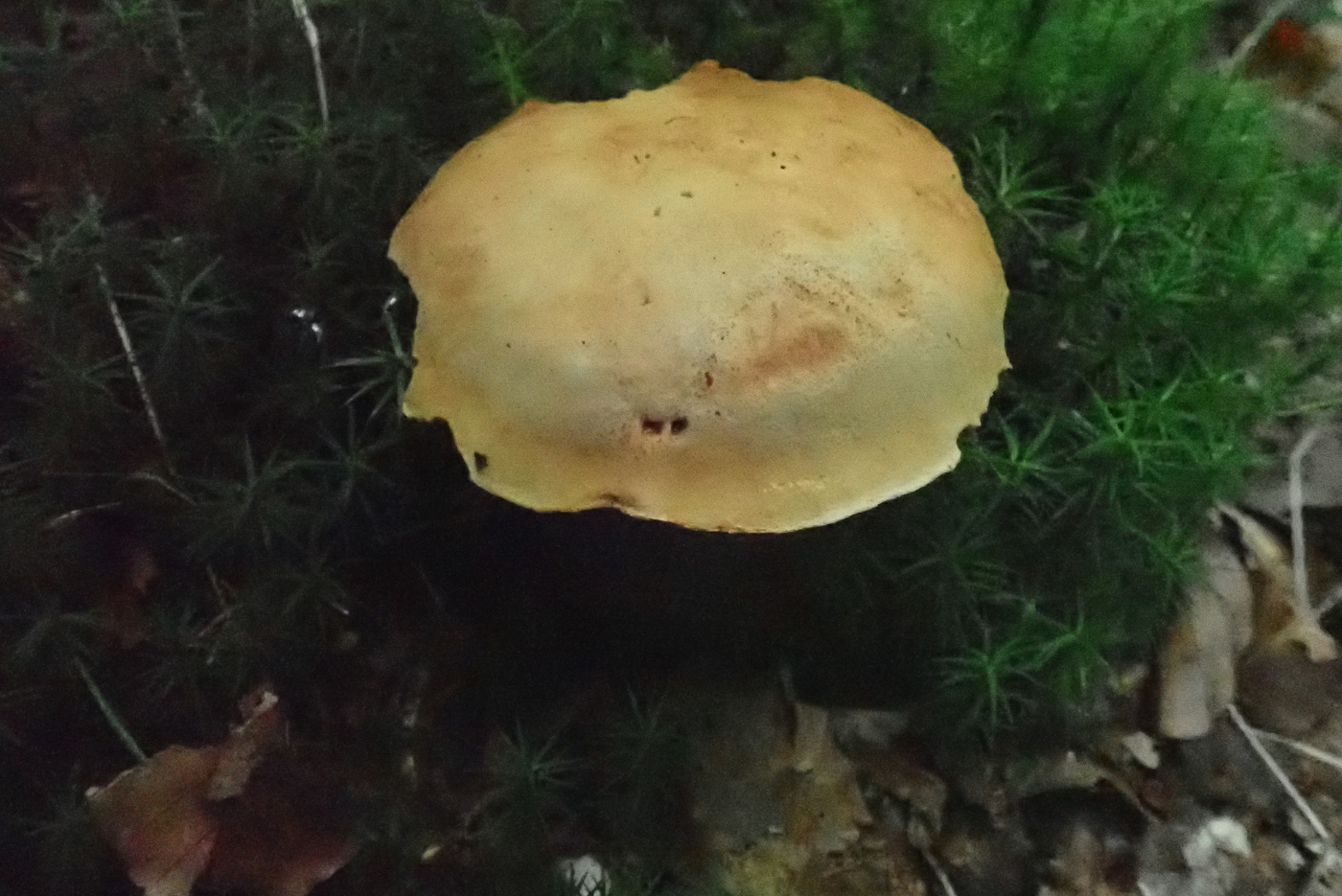

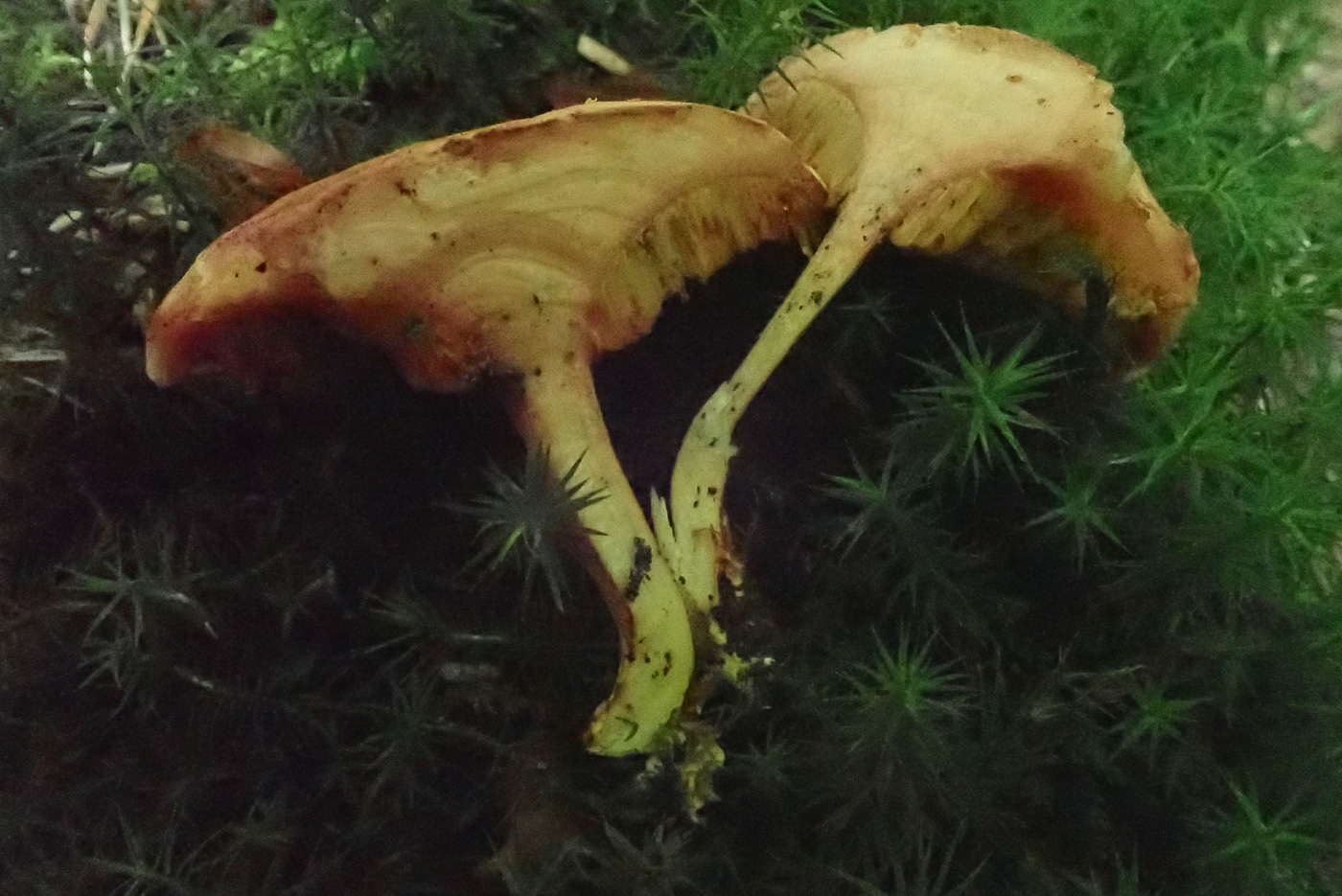 |
October 6th Chalciporus piperatus (Peppery Bolete)
In Kings Wood Tylers Green the only Bolete seen by Penny was this one - an occasional species which is new to the site. The tan brown cap is rather soft, as are the widely spaced pores which are a coppery colour and unchanging when pressed, and the stem is quite narrow for a Bolete with notably yellow flesh at its base. It was growing in deep moss under Beech but is most commonly found under Birch where often in association with Amanita muscaria. If you find the Amanita, have a look around for this species which may well be nearby.
|
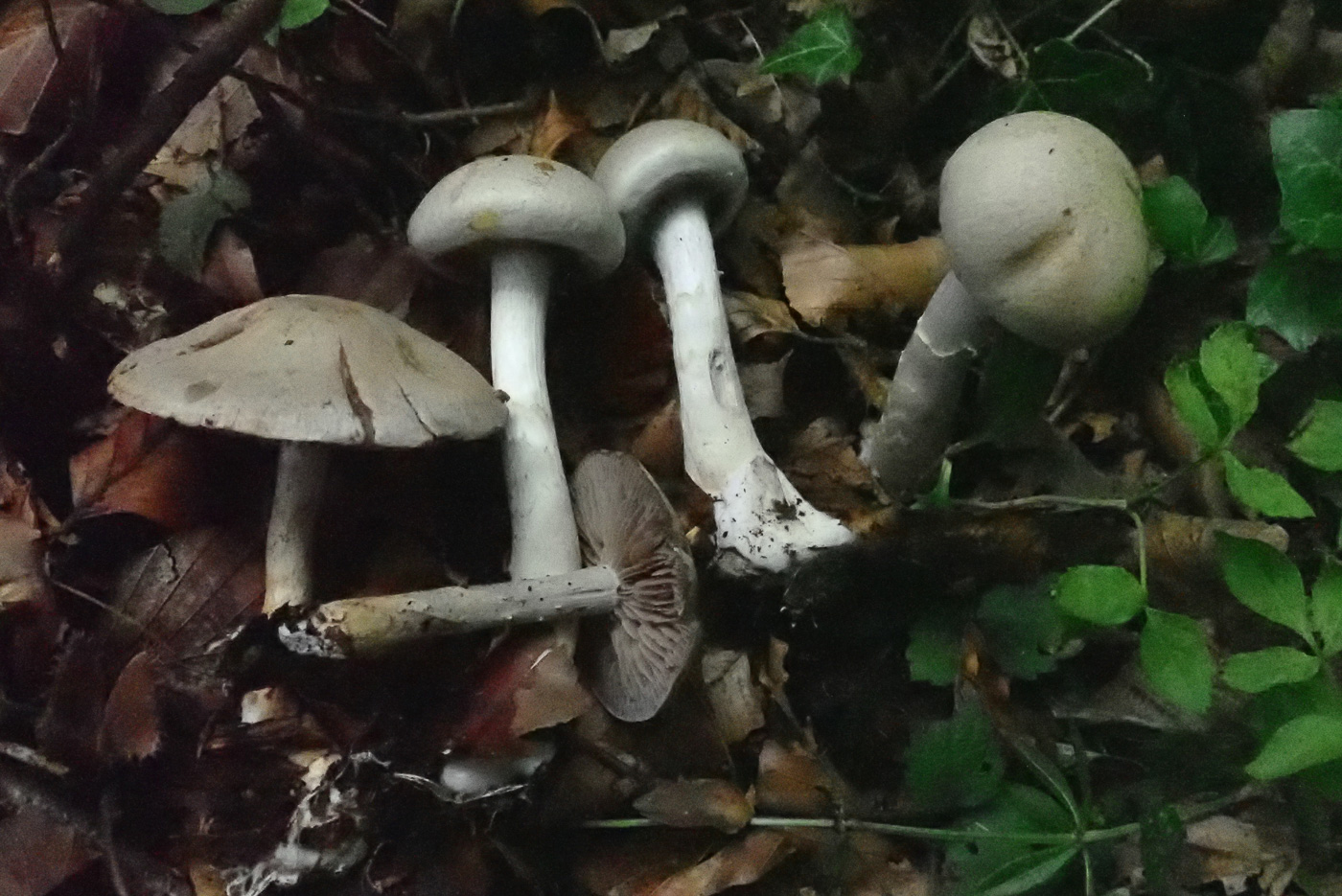
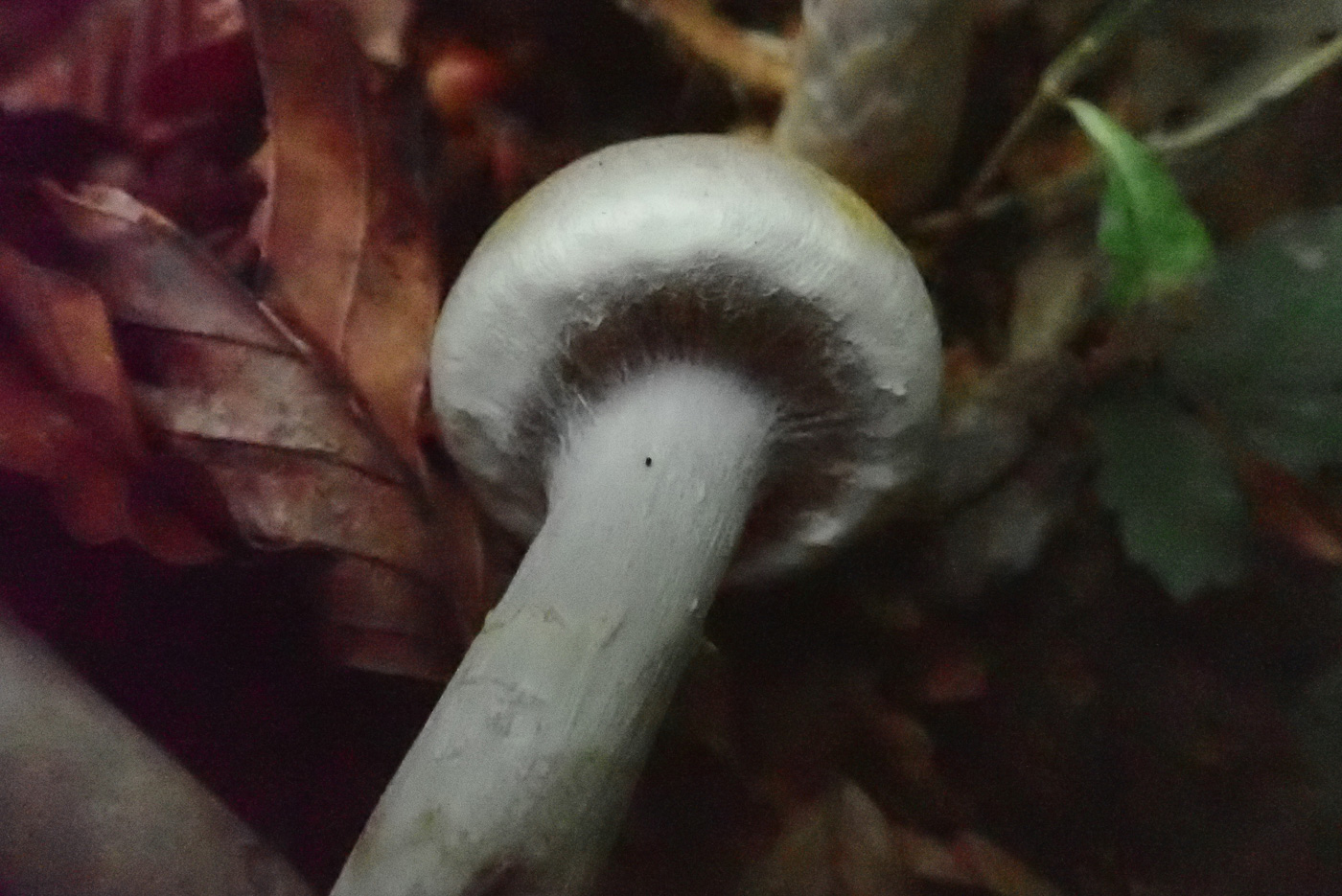 |
October 6th Cortinarius anomalus (Variable Webcap) 
In Kings Wood Tylers Green Penny found a cluster of this quite common Webcap just coming up in mixed deciduous litter. This is an enormous genus and this species is a member of the Telamonia group of Webcaps, many of which are extremely difficult to separate and very often remain unnamed except by a few skilled mycologists (of which Penny does not consider herself one!). There are, however, a few common species which with experience can be named, this being one. The pale dry silky cap with buff grey colours having a violet tinge especially when young and the flesh turning violet when exposed to air (I omitted to do this in the field but checked it later at home) are the features to look for. Note the cortina (weblike mesh) still in tact in the young specimen (photo 2) - the feature which gives the genus its name.
|
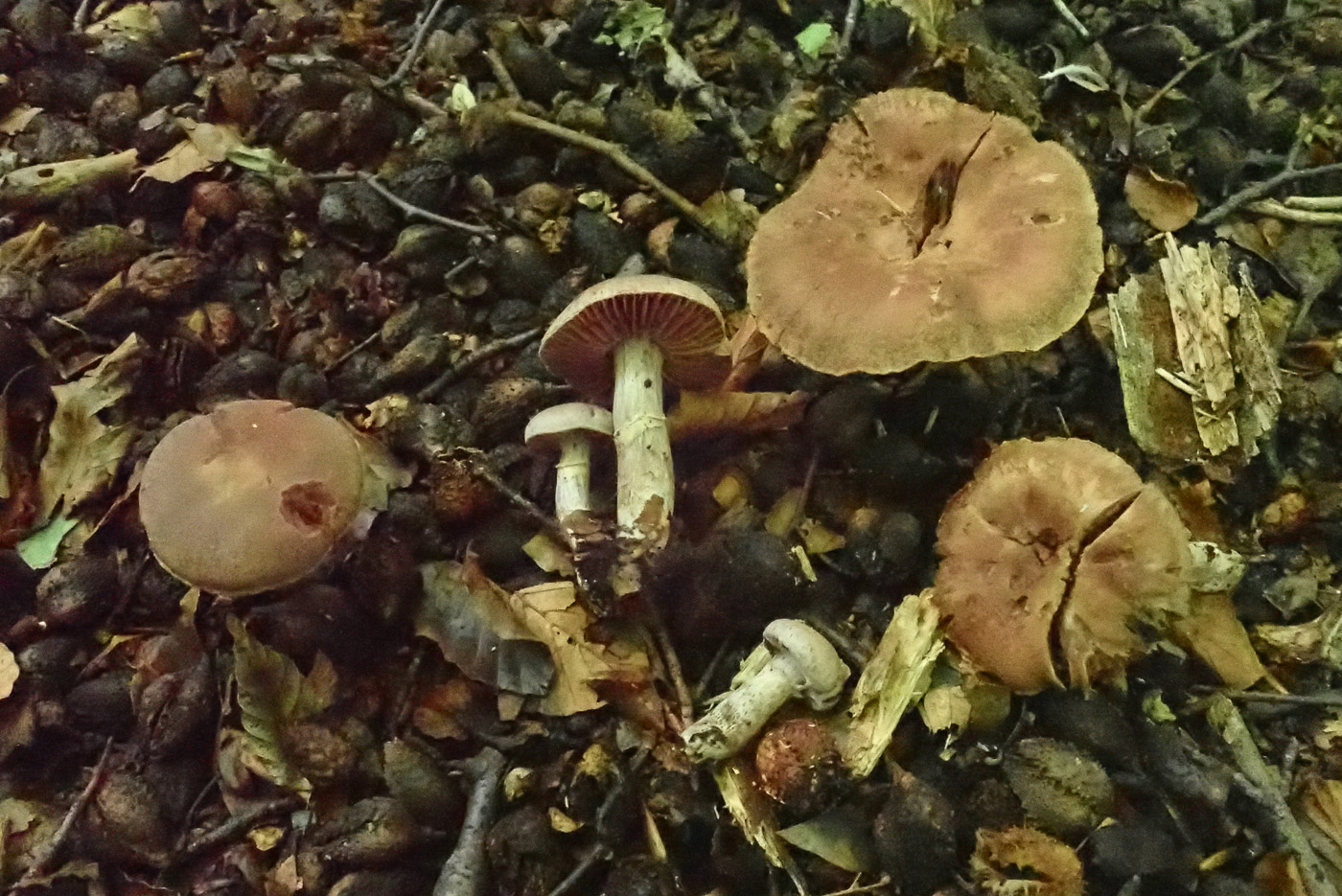
 |
October 6th Cortinarius torvus (Stocking Webcap)
In Kings Wood Tylers Green Penny found a group of another member of the Telamonia Webcaps (see also the species above) which can be named in the field. It has notably widely spaced gills and the stem has a stocking-like veil covering the lower section topped by a distinct cream ring (photo 2). The species is one of the commonest in the Chilterns, favouring Beech as host tree.
|
 |
October 6th Lycoperdon perlatum (Common Puffball)
In Kings Wood Tylers Green Penny noticed this little cluster of young Puffballs emerging through the Beech litter - the first time she's seen this very common species this autumn though we are officially in the peak weeks for fungi right now! The key feature to separate the species from the equally common L. pyriforme (Stump Puffball) is clearly visible here despite its immaturity: the little white 'warts' covering the surface which rub off very easily are absent on the other species. Furthermore today's species grows in woody litter and not directly on wood (stumps, roots) as L. pyriforme does.
|
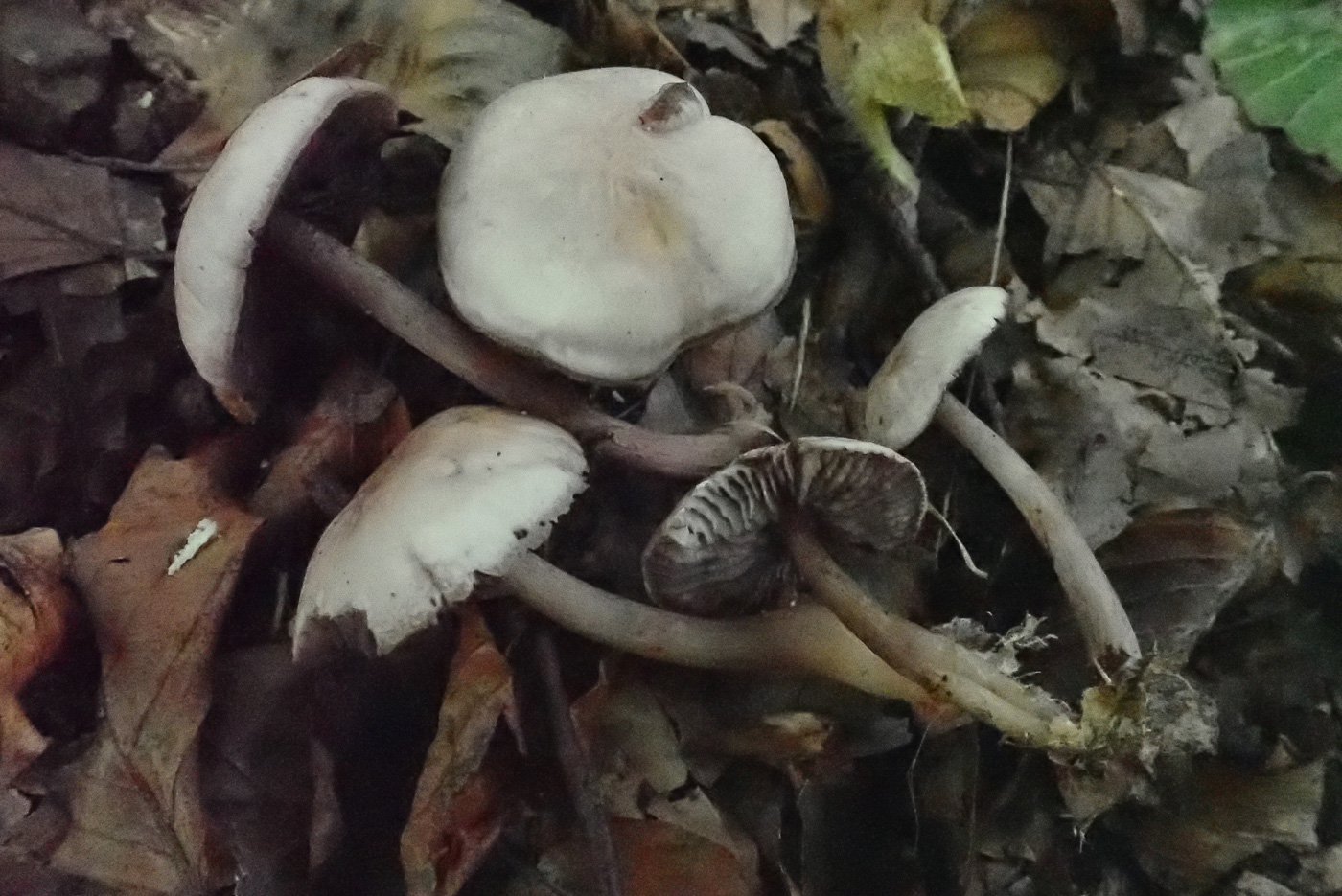
 |
October 6th Mycena pelianthina (Blackedge Bonnet)
On a visit to King's Wood Tylers Green Penny found several examples of this rather nondescript Bonnet, closely related to M. pura and M. rosea (see both these dated yesterday) and having the same 'radishy' smell and frequenting Beech litter. The cap is similar to a washed out M. pura, rather cream coloured, but the revealing feature is its gills which are not only dark for the genus but have a distinct dark purple edge (seen best with a handlens), unique to the species.
|
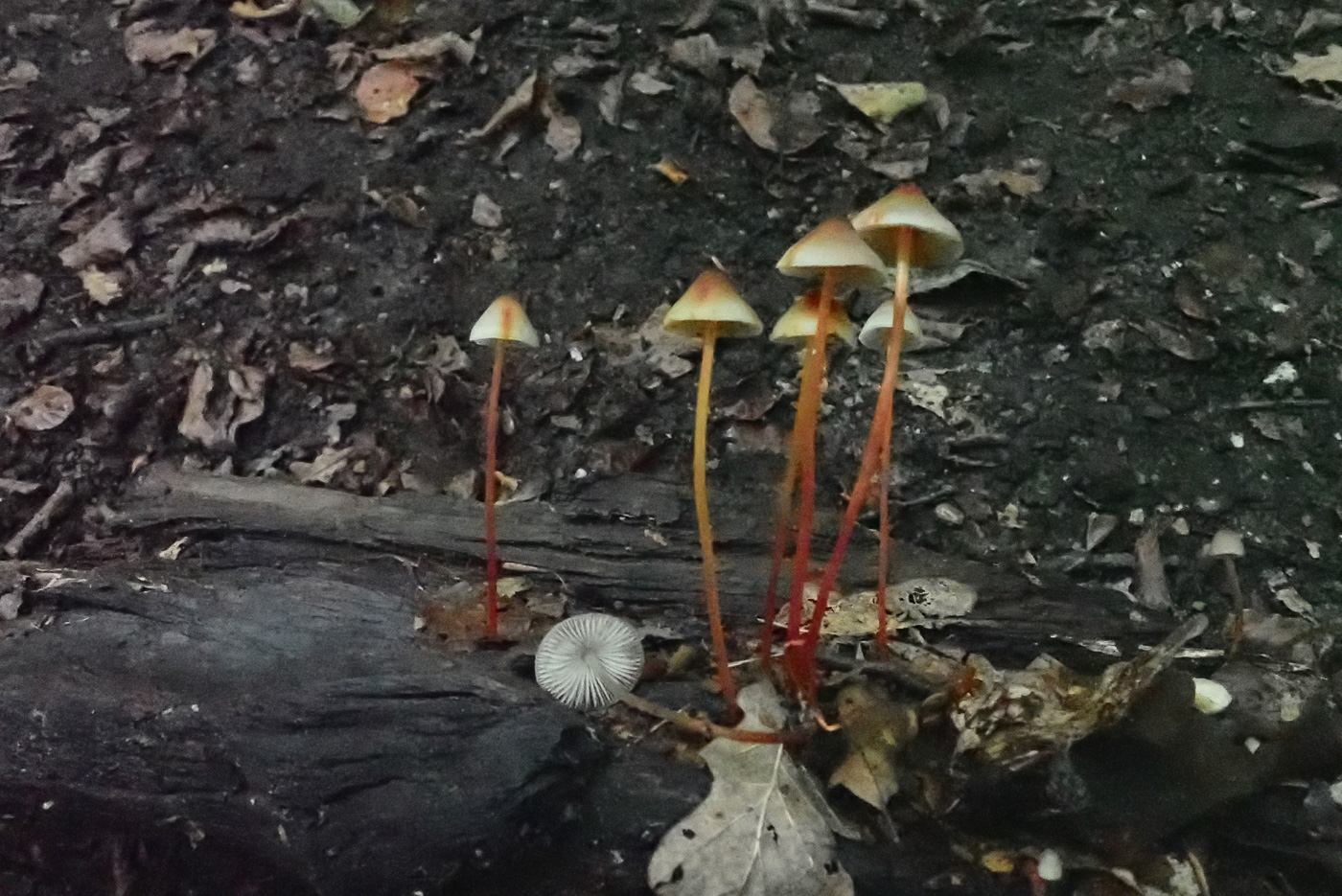
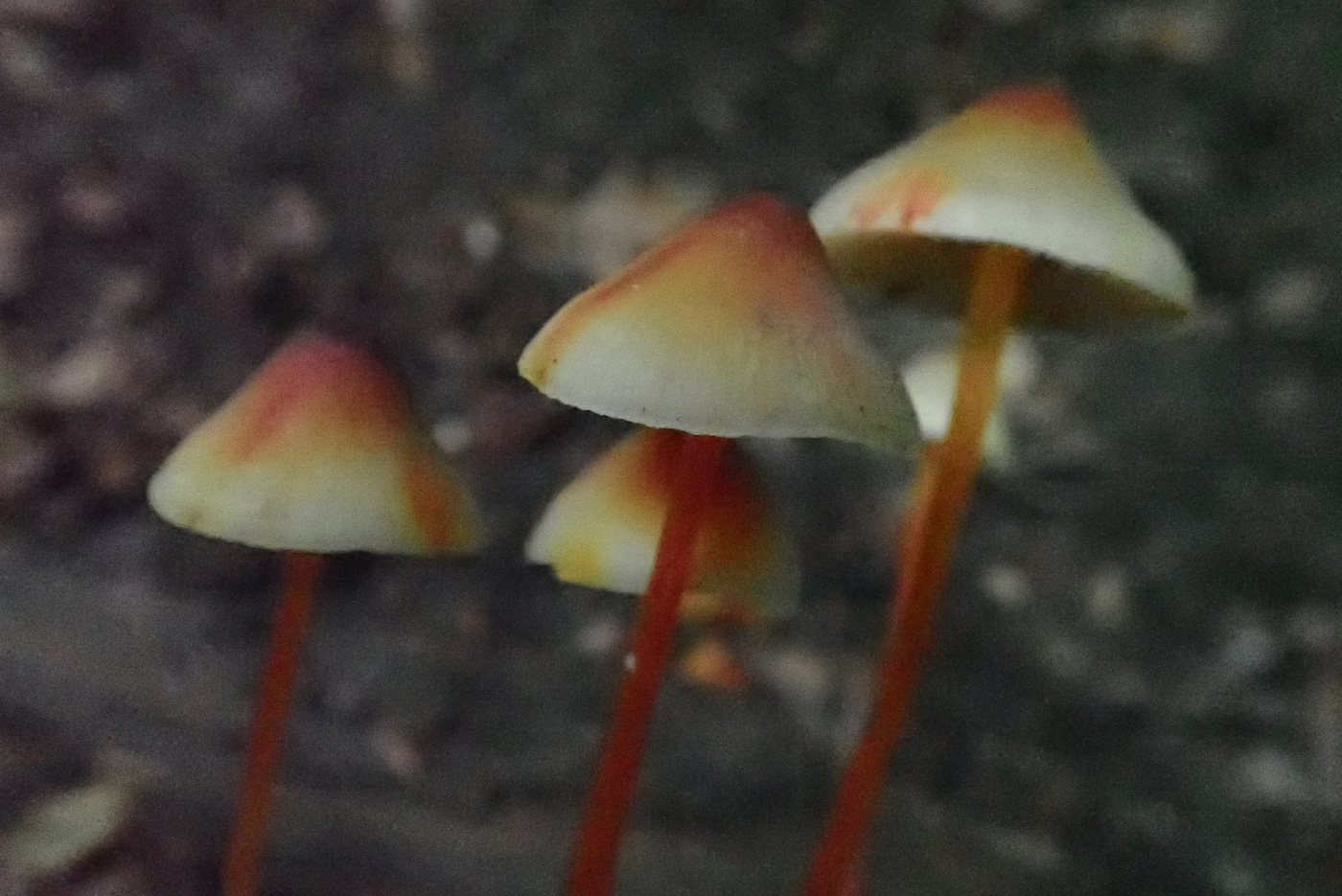 |
October 6th Mycena crocata (Saffrondrop Bonnet)
On a visit to King's Wood Tylers Green Penny found this typical Chiltern Bonnet just beginning to appear. Occurring only on fallen Beech, it is one of the easiest Bonnets to recognise with its distinctive bright orange-red stem which if damaged bleeds profusely, not only dripping off the stem but also colouring the cap and gills as well as seen here in (the rather blurred) photo 2. Caps can vary in colour from almost white to very dark brown, but the telltale stem is diagnostic.
|
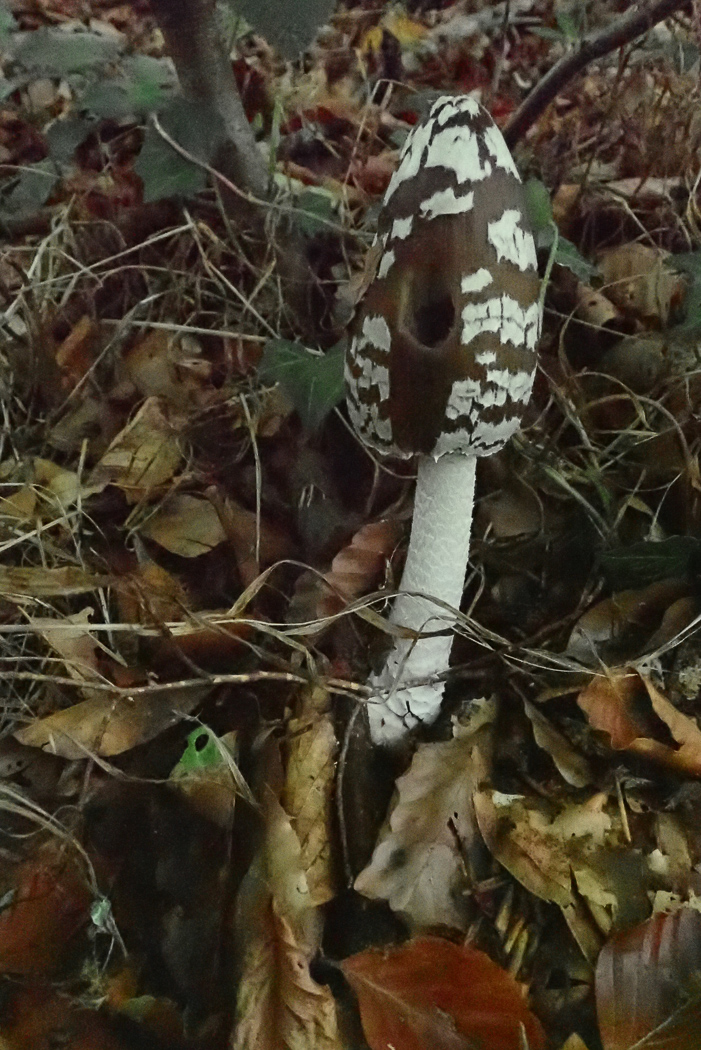 |
October 6th Coprinopsis picacea (Magpie Inkcap)
On a visit to King's Wood Tylers Green Penny found her first Magpie Fungus of the season. A very distinctive mushroom, this was extremely common in many woodlands last autumn so it remains to be seen if it will be this year as well.
|
October 5th 2021
 |
October 5th Amanita muscaria (Fly Agaric)
At Turville Heath things have at last started to appear after the recent rather belated rain. Amongst a good many other species (seen below) Penny was delighted to find her first Fly Agarics of the season just making their appearance under Birch - not the most photogenic collection but nevertheless a sight for sore eyes after the fungal desert of the last few weeks. Note the 'button' on the right which still has the complete universal veil still in tact with no sign of the red to come as it starts to expand, leaving the familiar 'white spots' everyone knows are a feature of this well-known mushroom. Hopefully we'll soon be adding better specimens here to illustrate the species.
|


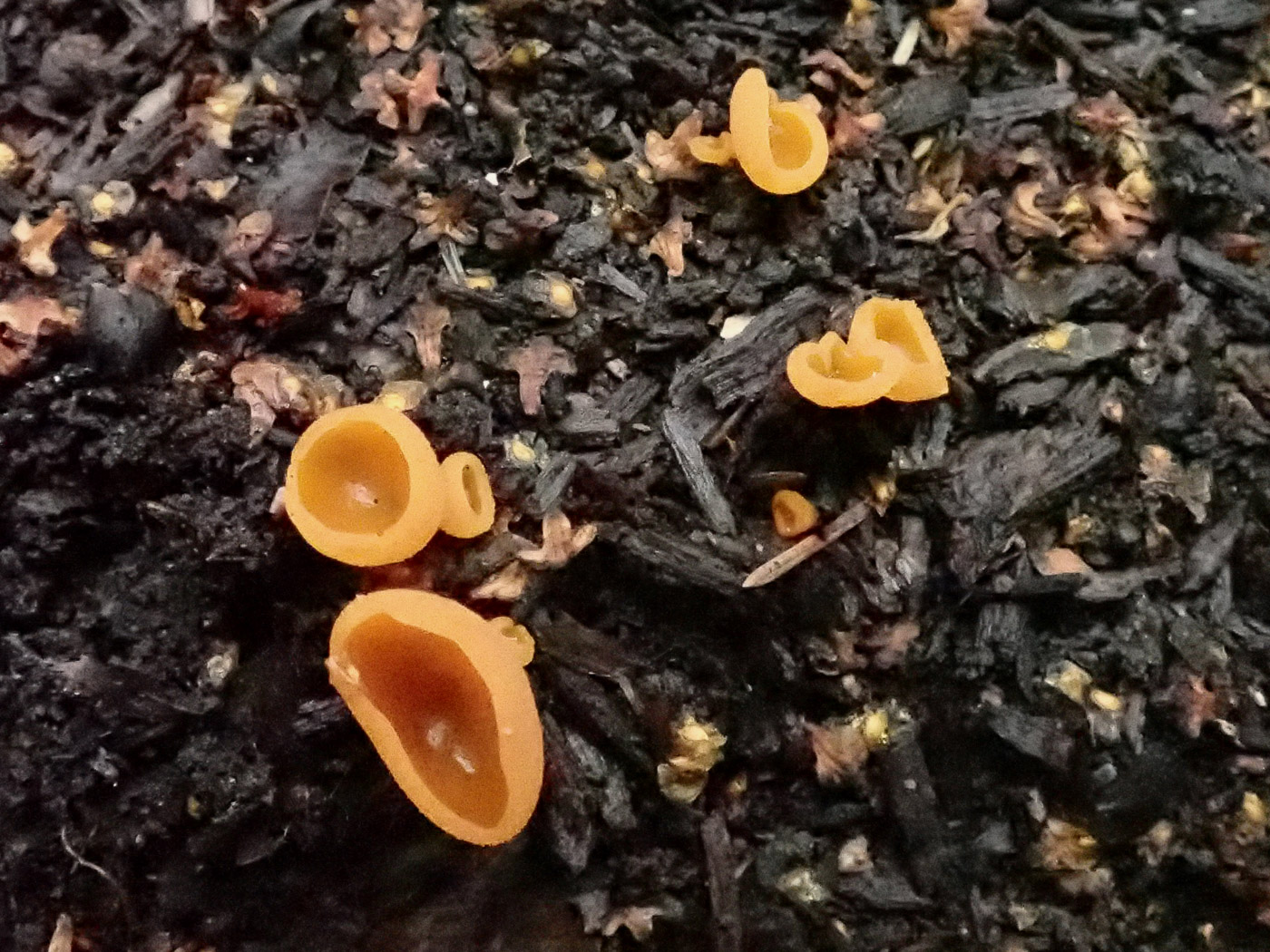 |
October 5th Aleuria aurantia (Orange Peel)
Penny never visits Turville Heath without checking a certain woodchip pile (now very rotten) and nearly always finds something of interest there. Today these brightly colour cups were just emerging, the examples in photo 3 being under 1 cm across. Photo 2 shows the contrast between the shiny upper surface and pruinose roughened underside of the species which often occurs in disturbed soil.
|
 |
October 5th Calocera viscosa (Yellow Stagshorn)
At Turville Heath Penny noticed this vivid clump not near any trees but in a suspiciously bare patch of soil in a grassy area. The species grows on stumps or roots of conifer, so it seems likely that in the past a conifer had been removed from this spot but with roots remaining in the soil. It was firmly fixed to its woody substrate and also decidedly viscid after the recent rain.
|
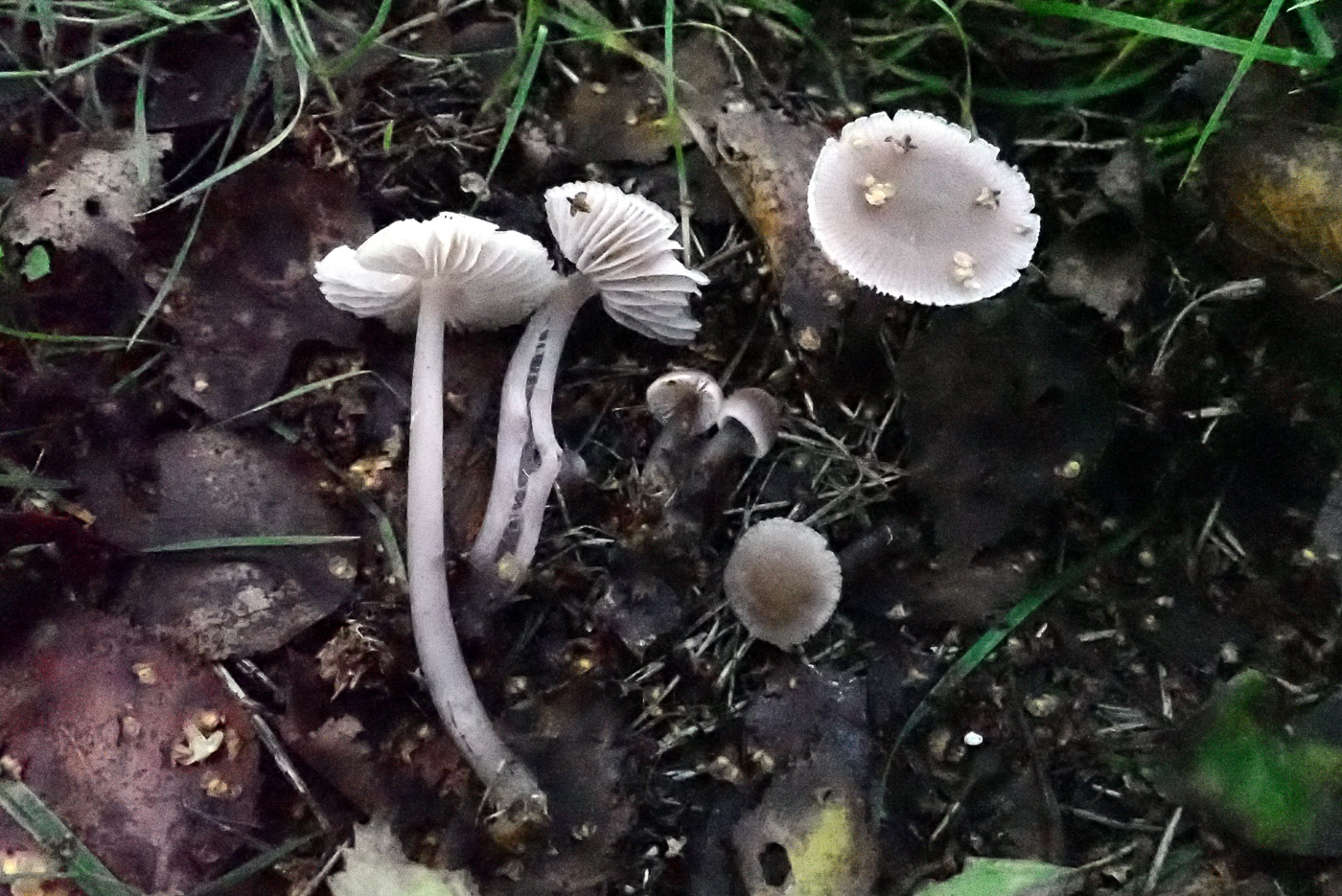
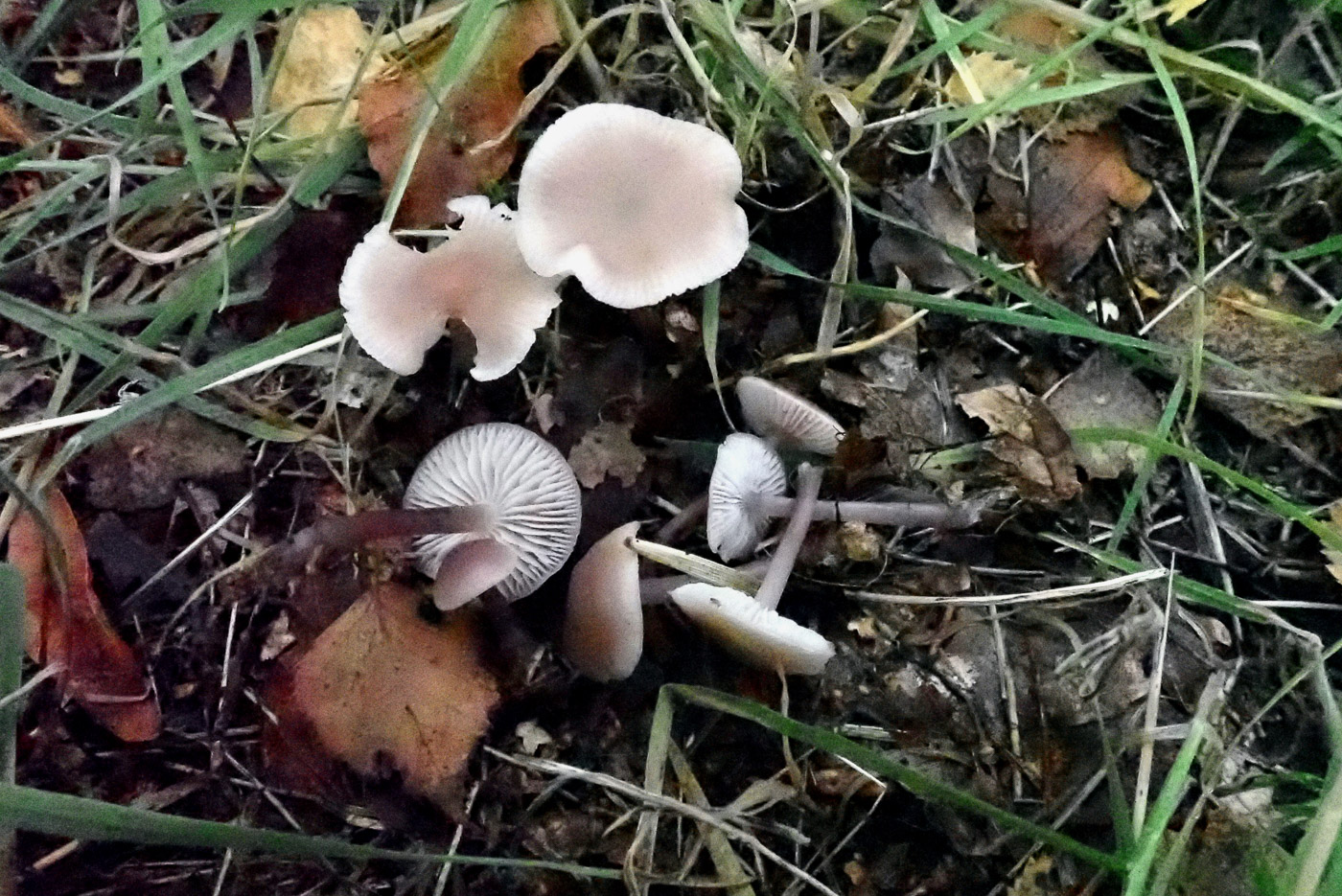 |
October 5th Mycena pura (Lilac Bonnet)
Coming up in grassy litter under Birch at Turville Heath were these small but distinctive Bonnets, found by Penny. This together with M. rosea (Rosy Bonnet) are quite common litter dwellers, most often under Beech, and also two which get confused. (In fact until fairly recently M. rosea was considered only a variety of M. pura: they have almost identical microscopic features and also share the same sharp 'radishy' smell.) Nearby today Penny also found just a single M. rosea (see below to compare). M. pura is very variable in colour but its cap never sports the beautiful pink of M. rosea. It can be white or even yellow but in woodland is most often as seen in the two collections here with brownish lilac colours in both cap and stem, the stem being cylindrical.
|

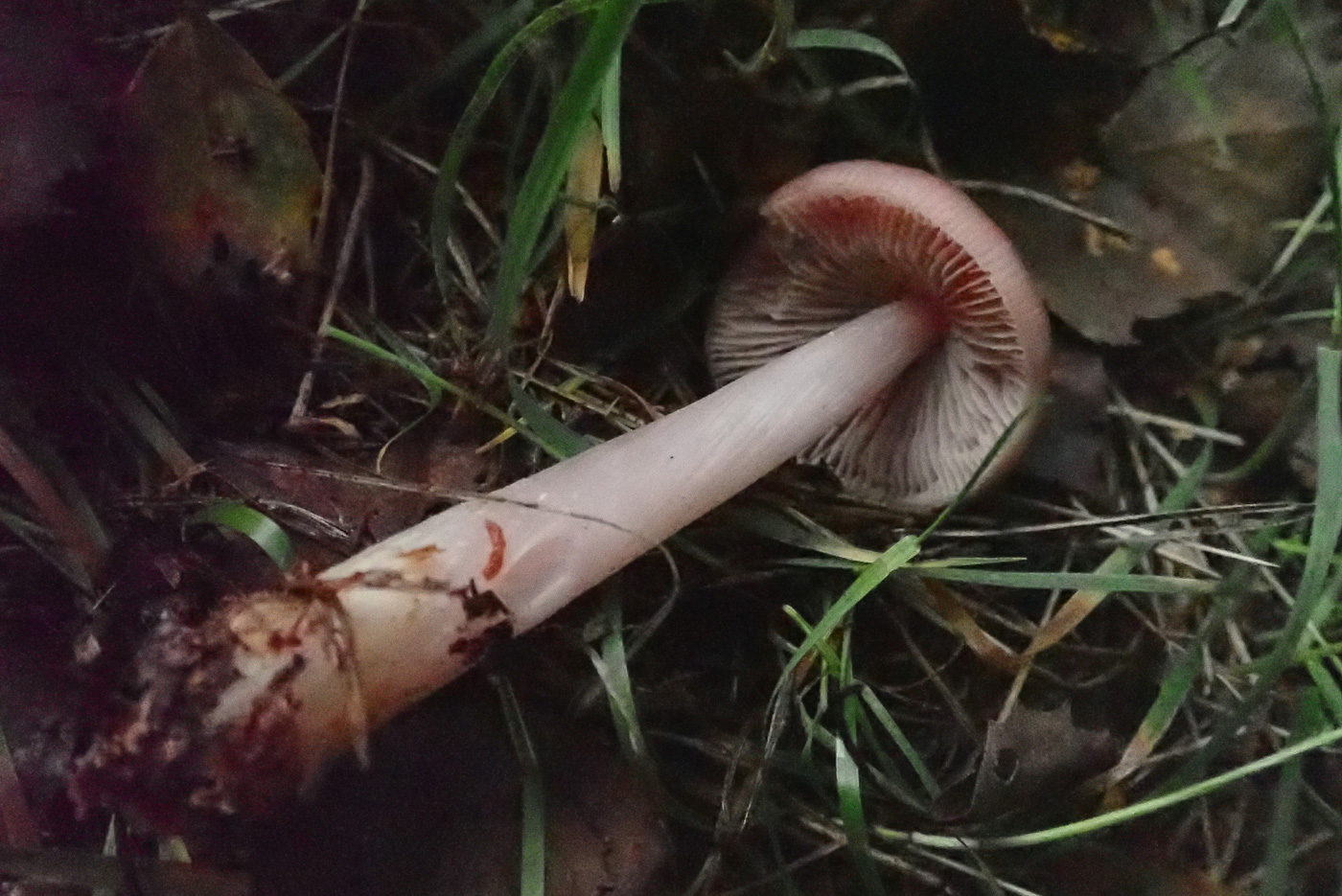 |
October 5th Mycena rosea (Rosy Bonnet)
Penny found just one fruitbody of this species in grassy litter under Birch at Turville Heath, but was surprised by the amazingly deep pink cap colour which almost made her question it. However, turning it over revealed the typical white stem, much thicker at the base and gradually tapering towards the cap. This together with the raddishy smell was all the confirmation needed. This is a large species for a Bonnet, often more substantial than the quite similar M. pura discussed above.
|

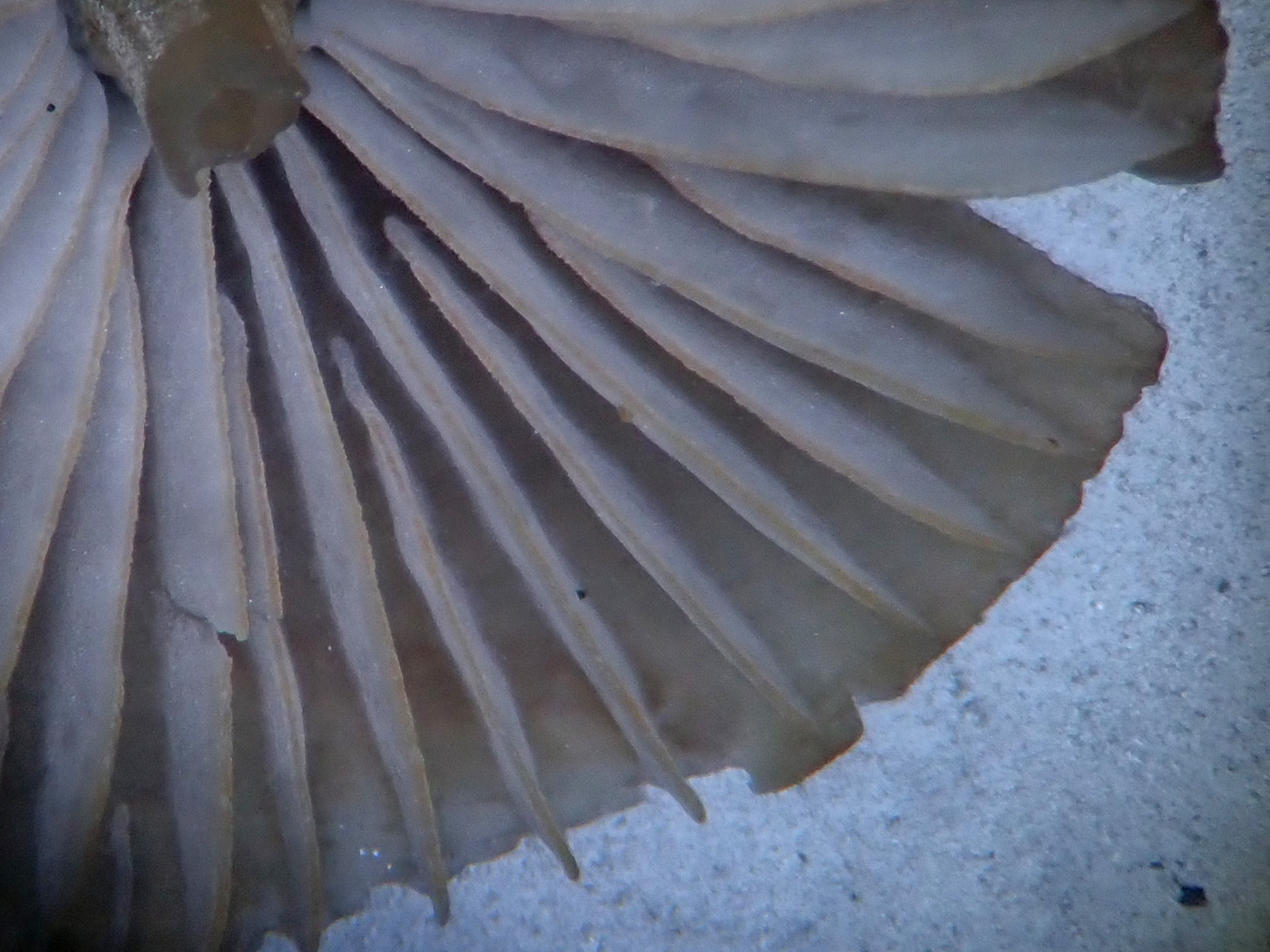 |
October 5th Mycena olivaceomarginata (Brownedge Bonnet) 
In longish grass at Turville Heath Penny - on her knees with the camera - was surprised to notice this Mycena which usually occurs in short mown grass. It has the typical conical Bonnet shape with a thin delicate stem and white gills, but has an olive brown cap and (uniquely) the gills have a faint olive brown edge - seen best with a handlens or disecting microscope. (Apologies for the slightly blurry images!)
|
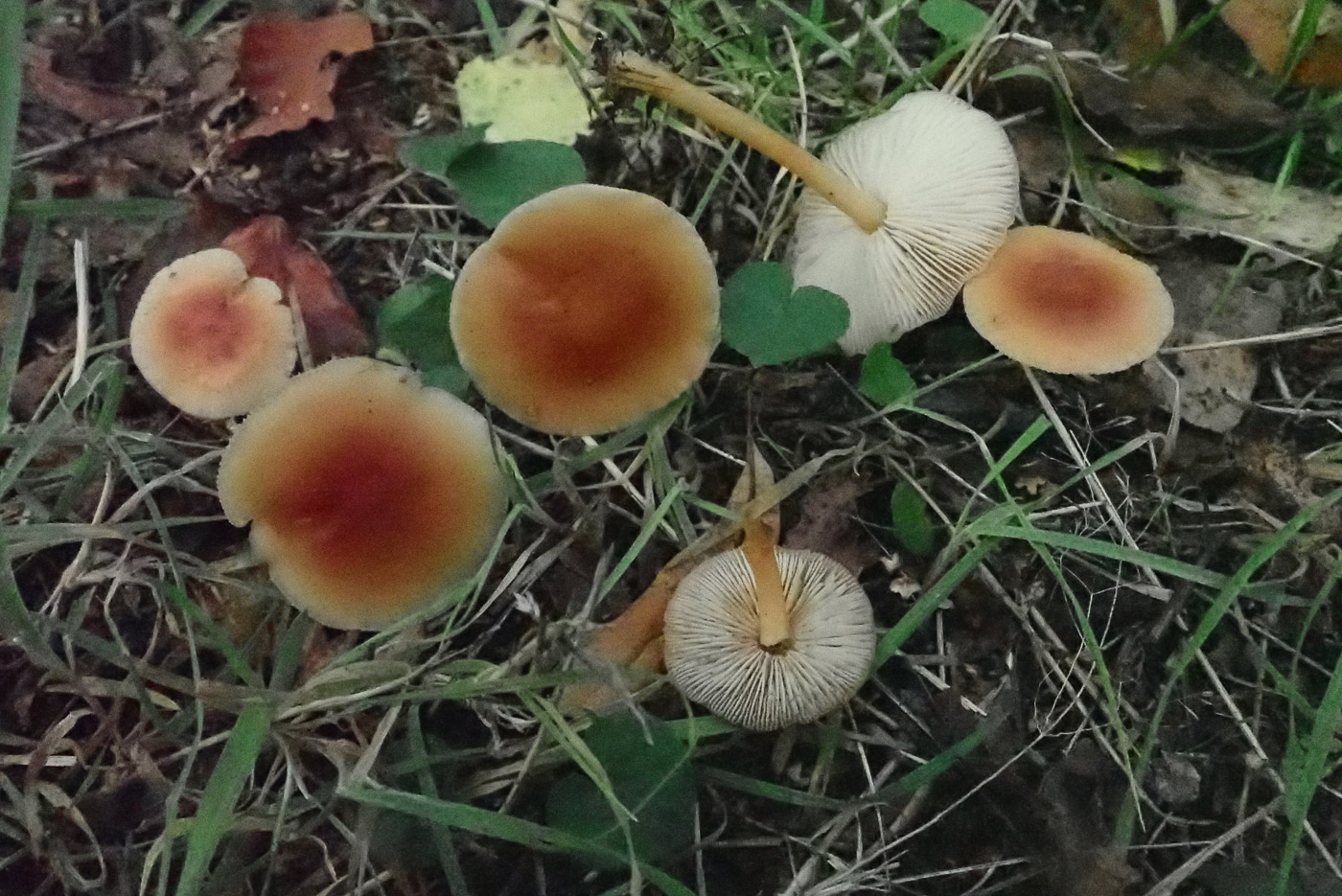 |
October 5th Gymnopus dryophilus (Russet Toughshank)
In longish grass under Birch in Turville Heath Penny found this common species, one which often appears early in the autumn in woodland areas but making a late appearance this year. The genus as a whole has rather flexible rubbery texture, and there are several far less common species with caps a similar colour to this one, but when fresh and damp as here the caps displaying a paler outer half as seen here is enough to confirm its identity.
|
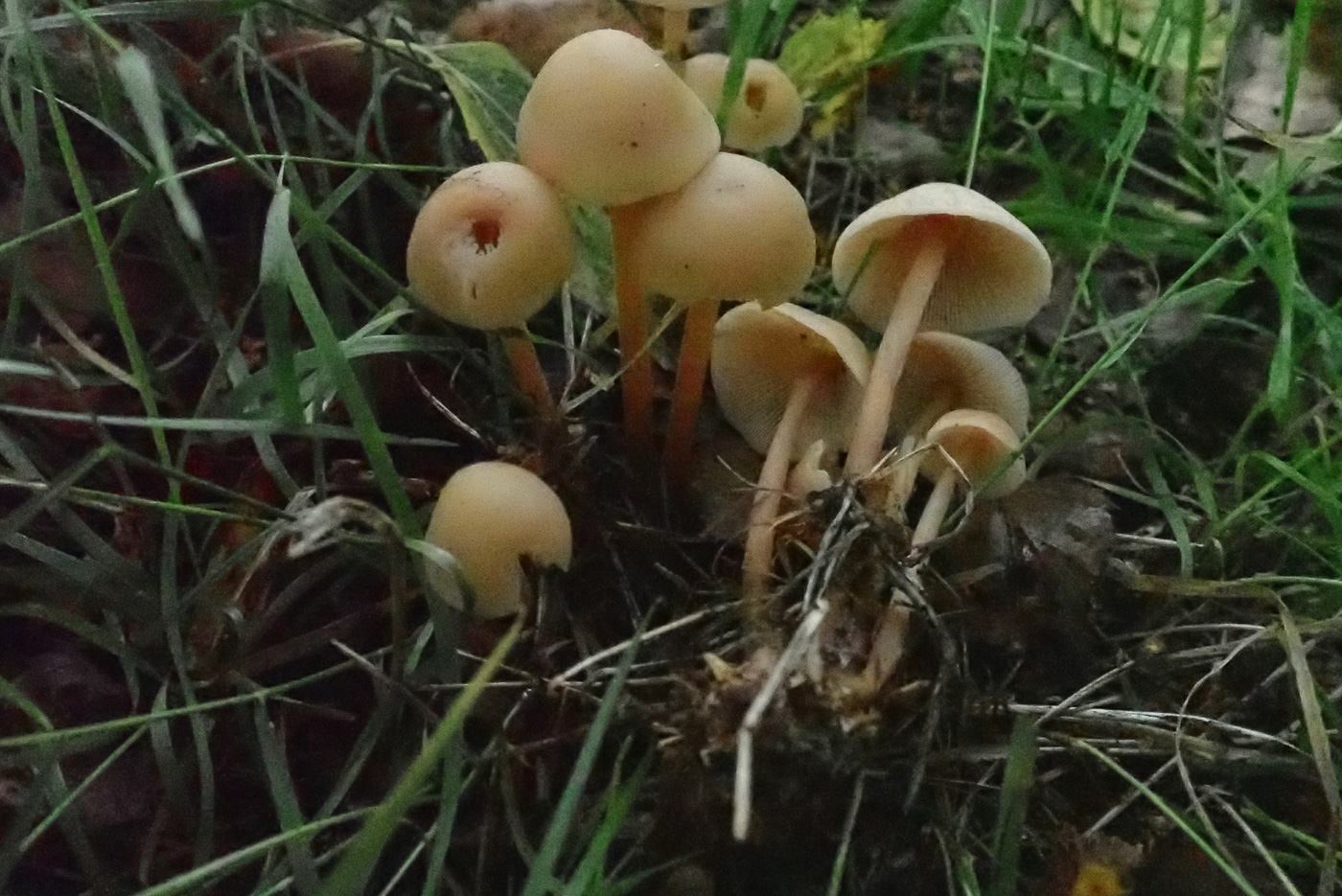
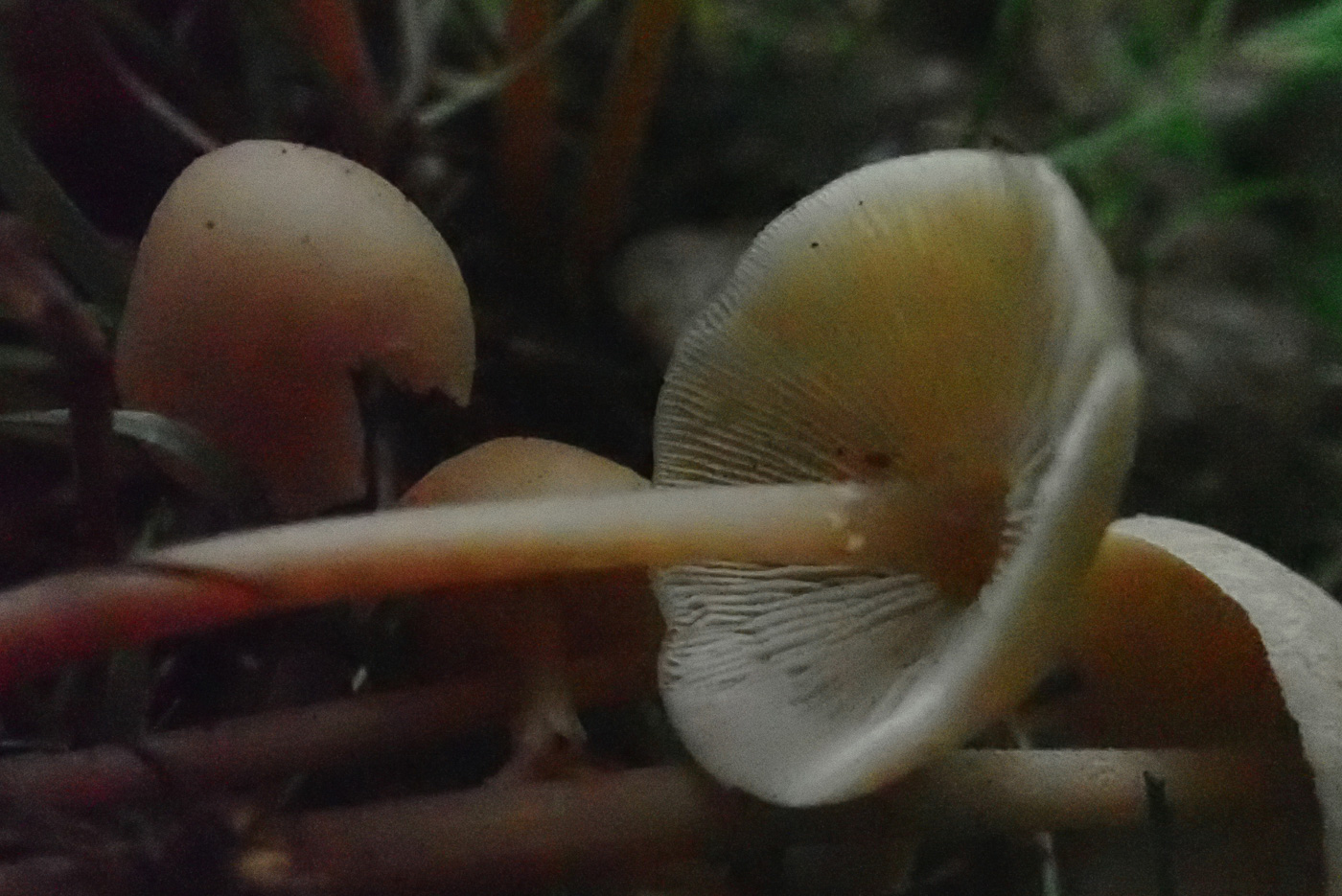 |
October 5th Gymnopus confluens (Clustered Toughshank)
In longish grass under Birch in Turville Heath Penny found this cluster. Having the typical rather flexible rubbery texture of the genus (cap and stem), this particular quite common species can be recognised in the field by its very crowded gills (seen in photo 2) and (if viewed with a handlens) a pruinose stem - ie covered in very fine hairs. Sometimes mistaken for G. erythropus - another clustered Toughshank with quite crowded gills - the two can be separated by the stem surface: smooth in G. erythropus but hairy in G. confluens.
|
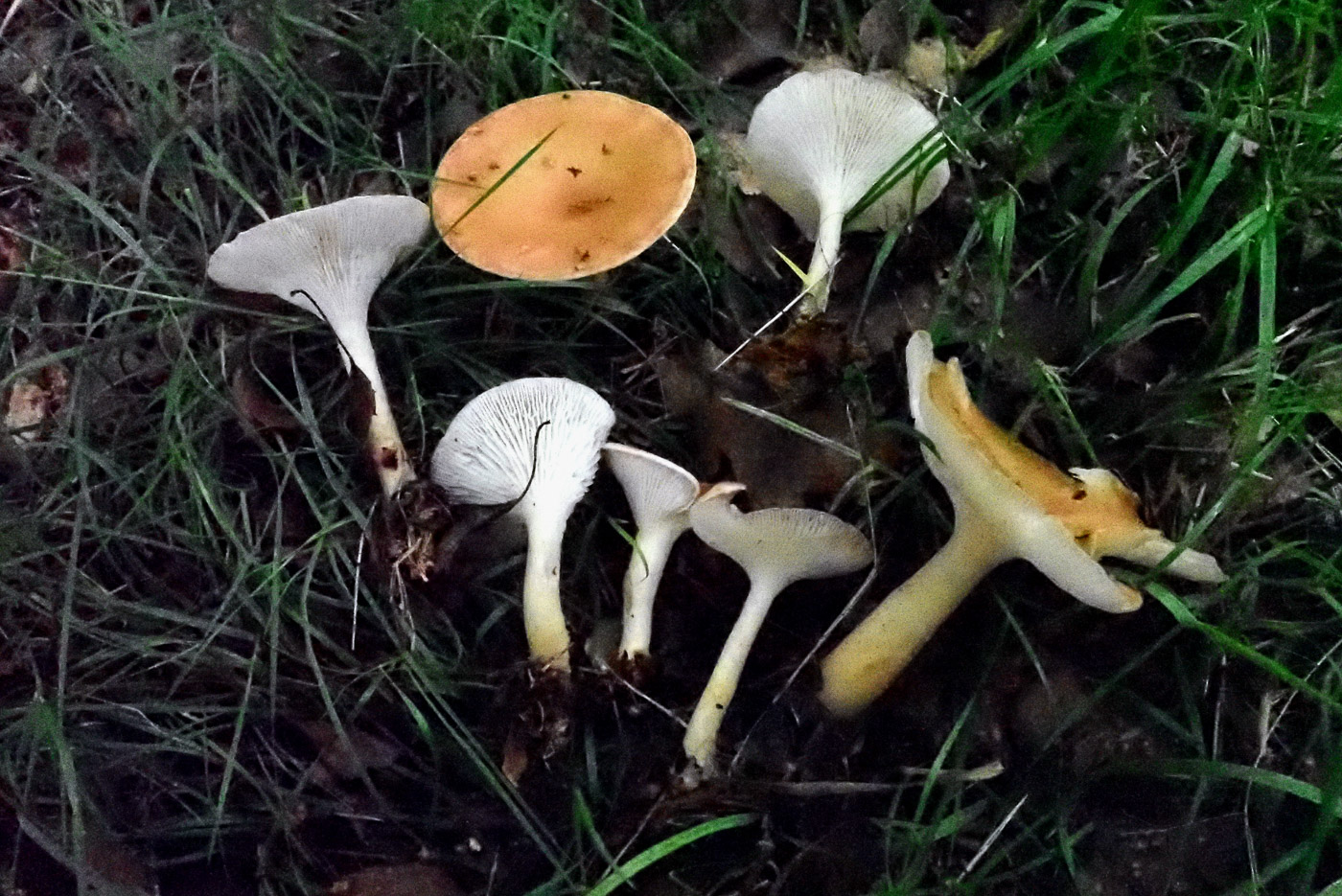
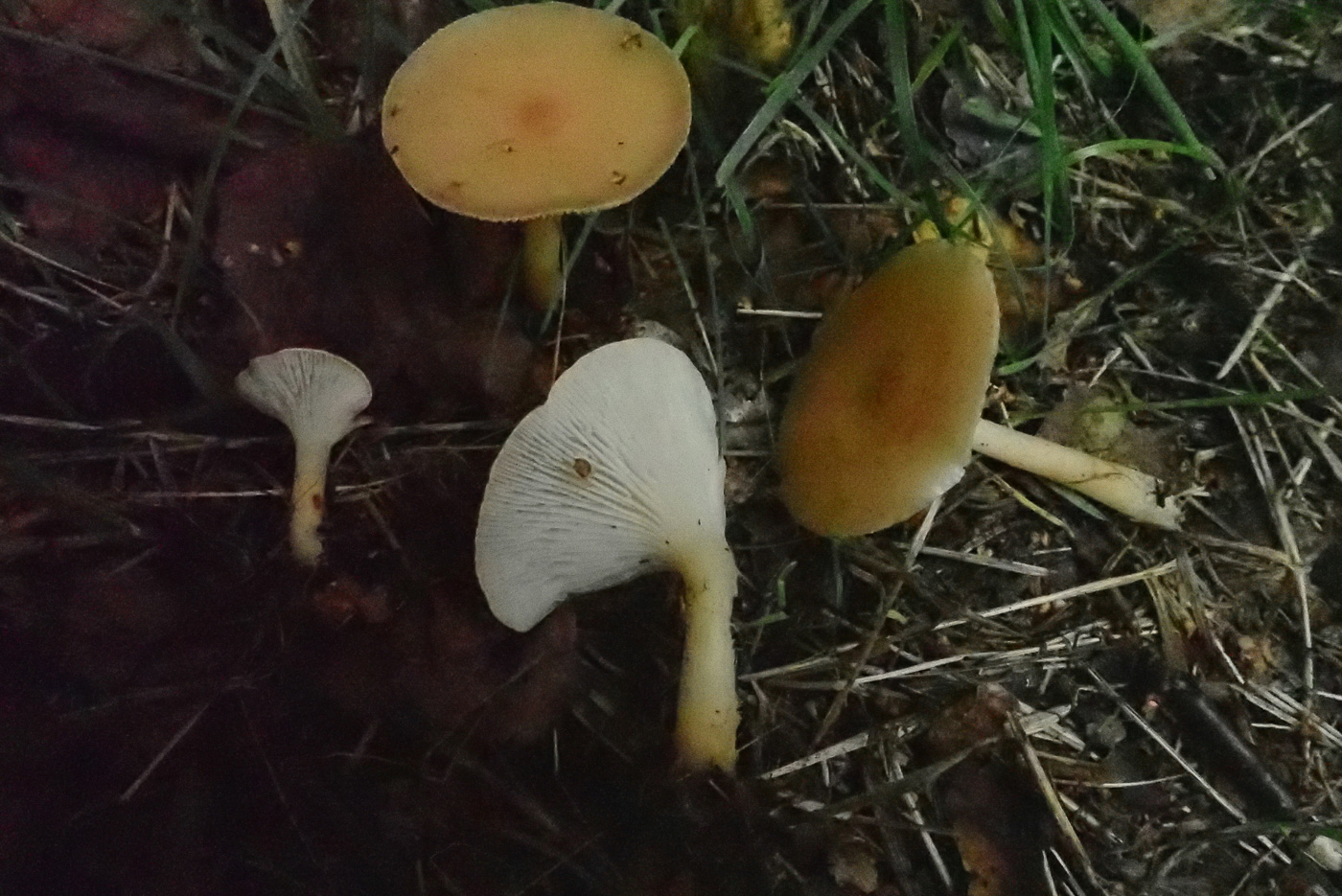 |
October 5th Infundibulicybe gibba (Common Funnel)
In Turville Heath Penny found many fruitbodies of this common species (better known as Clitocybe gibba) coming up in a grassy area under Birch. It is a typical Funnel having obvious decurrent gills (those which slope partway down the stem) and when fresh and damp as here the caps can have a pinkish tinge. They are often much paler cream and never get much bigger than 5 cm across or so and can be found in both woodland and grassland.
|
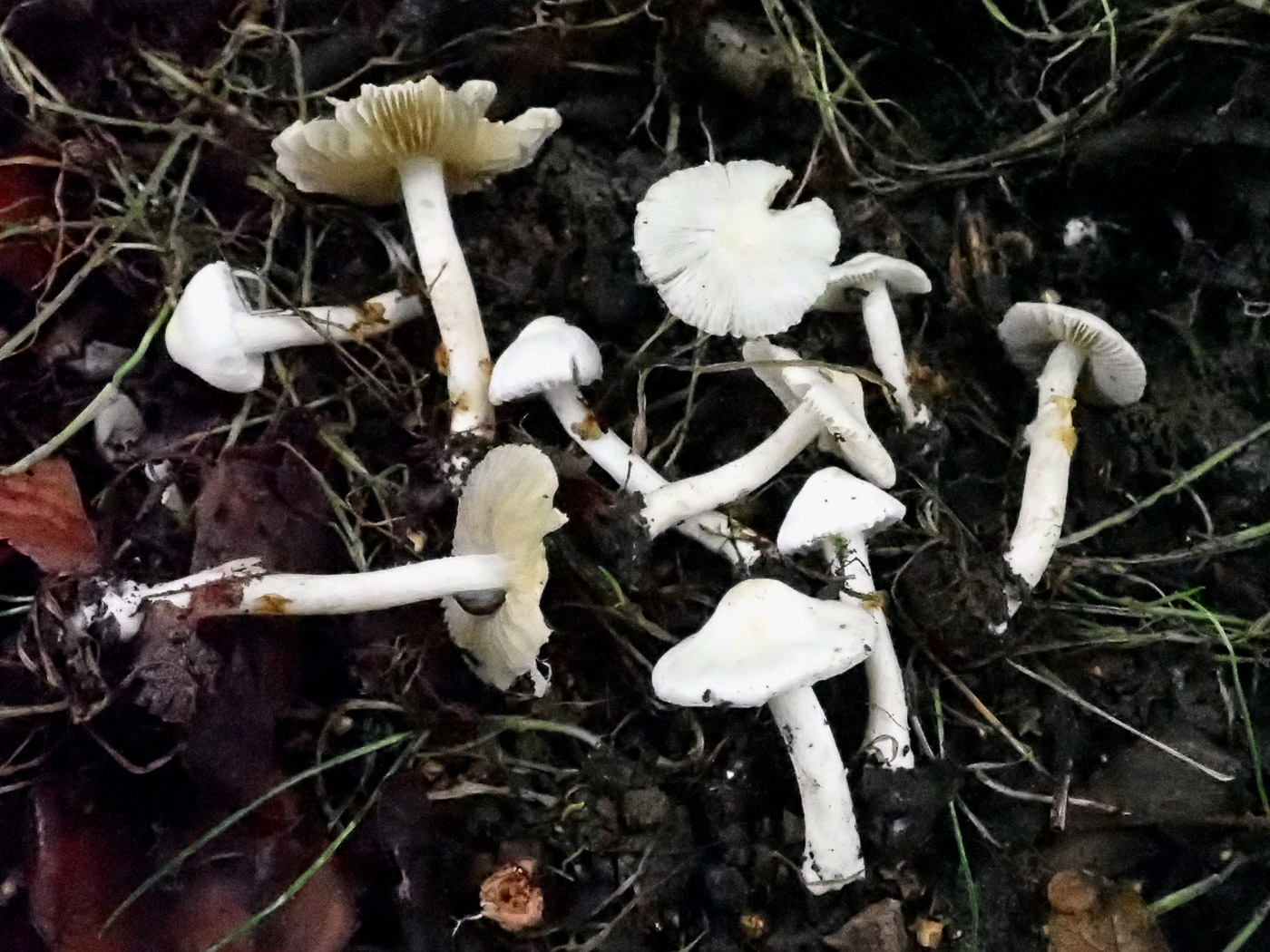 |
October 5th Inocybe geophylla (White Fibrecap) 
In Turville Heath Penny found several collections of this species just starting to emerge under the many Limes. It is the only common white Fibrecap (though there are a few others which, however, rarely seem to appear in this area) but until the mature gills reveal their buff brown colour (they are almost white at first) one could mistake this for several other small pale to white gilled white mushrooms. Most Fibrecaps have a distinctive smell described as spermatic which can often confirm the genus if in doubt.
|
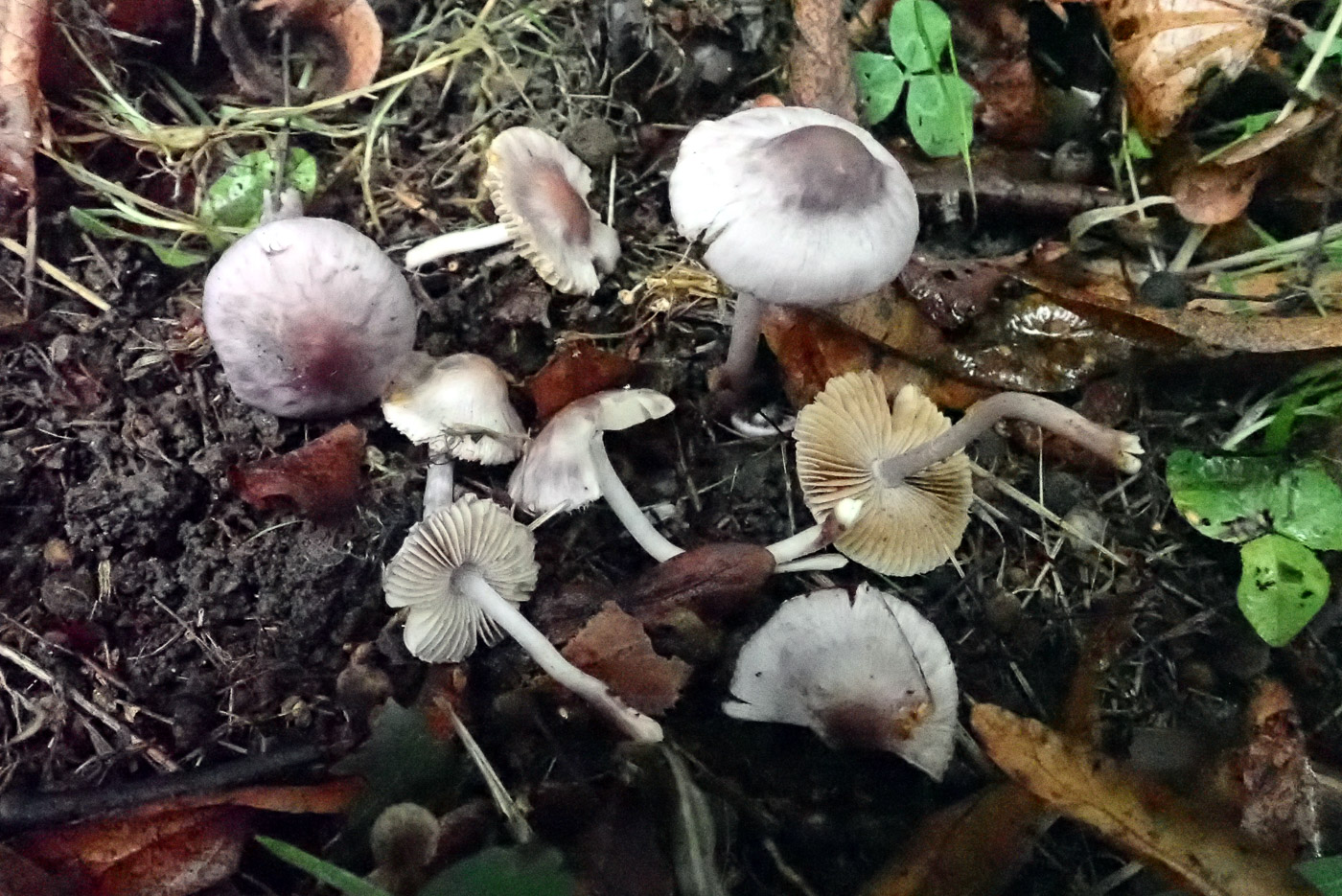 |
October 5th Inocybe lilacina (Lilac Fibrecap)
In Turville Heath Penny found several collections of this species also just starting to emerge under the many Limes. This is another Fibrecap almost as common as I. geophylla above, in fact the two species often occur together and until recently this beautiful little lilac-capped mushroom was considered only a variety of I. geophylla. It is likely to change its name yet again in the future because we know our European species is not the same as the American I. lilacina, and is one of a complex of European lilac-capped species still to be sorted out with DNA. (Note in the photos of both species the almost white gills when immature but the darker buff brown gills when fully expanded.)
|
 |
October 5th Neobulgaria pura (Beech Jellydisc)
In Downley Woods Claire Williams found these nice fresh pink discs on fallen Beech. This is a common Ascomycete, often on the same trunk as the equally gelatinous but smaller, darker and more purple Ascocoryne sarcoides (Purple Jellydisc). The two (both Beech inhabiting) are sometimes confused when N. pura is just emerging and still small (as in the lower examples in the photo) but it is always paler and pinker, sometimes almost colourless, and can get to about 5cm across whereas A. sarcoides remains small, not above 2cm across.
|
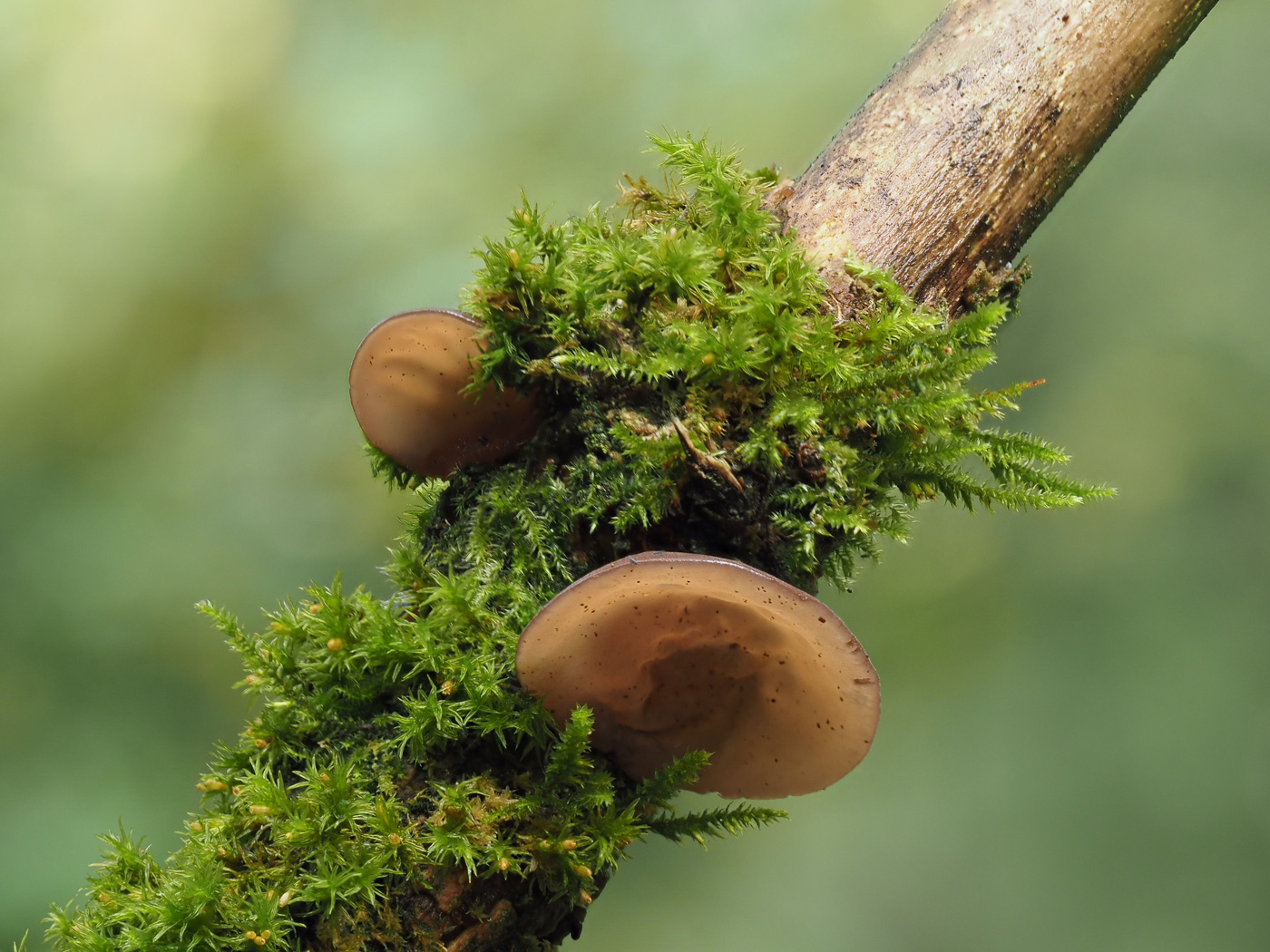 |
October 5th Auricularia auricula-judae (Jelly Ear)
In Downley Woods Claire Williams found these nice fresh 'ears' just forming on dead Elder. Similar in its soft gelatinous texture and also colour to Neobulgaria pura just above, this is not an Ascomycete but one of a group of Basidiomycete 'Jelly fungi' which lack gills. Very common on Elder, it also occurs on fallen Beech (as the Neobulgaria) but its wrinkled undersurface and typical 'ear' shape should prevent confusion.
|
October 4th 2021
 |
October 4th Hymenoscyophus fructigenus (Nut Disco)
In Tinkers Wood Claire Williams noticed this Beech nut husk liberally covered in this small and distinctive Ascomycete. The genus has many species, characterised by having smooth hairless cups and a notable equally smooth stem, and observing the substrate is often key to their determination to species. Today's species gets to about 4mm high and only occurs on Beech husks, hence is fairly common in the Chilterns.
|
October 3rd 2021
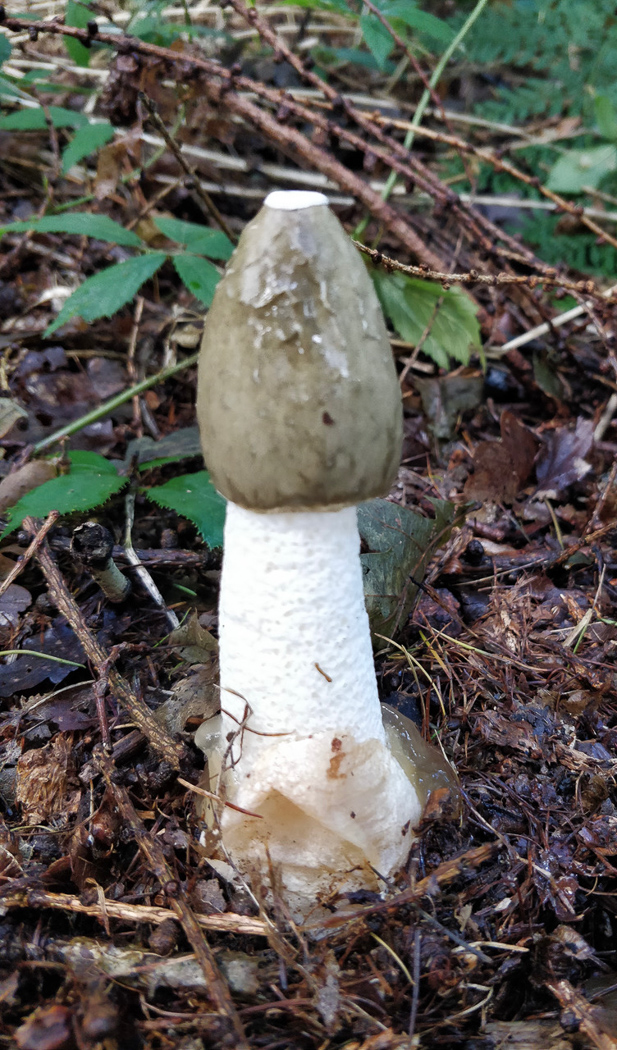 |
October 3rd Phallus impudicus (Stinkhorn)
In College Wood Bob Simpson found this impressive and no doubt smelly specimen which must have only recently emerged as the jelly egg is still to be seen at the base and the top section is still perfectly in tact and yet to be devoured by insects. The heavy rain of the previous day had clearly triggered the egg into expanding and once this happens it can grow in a matter of hours.
|
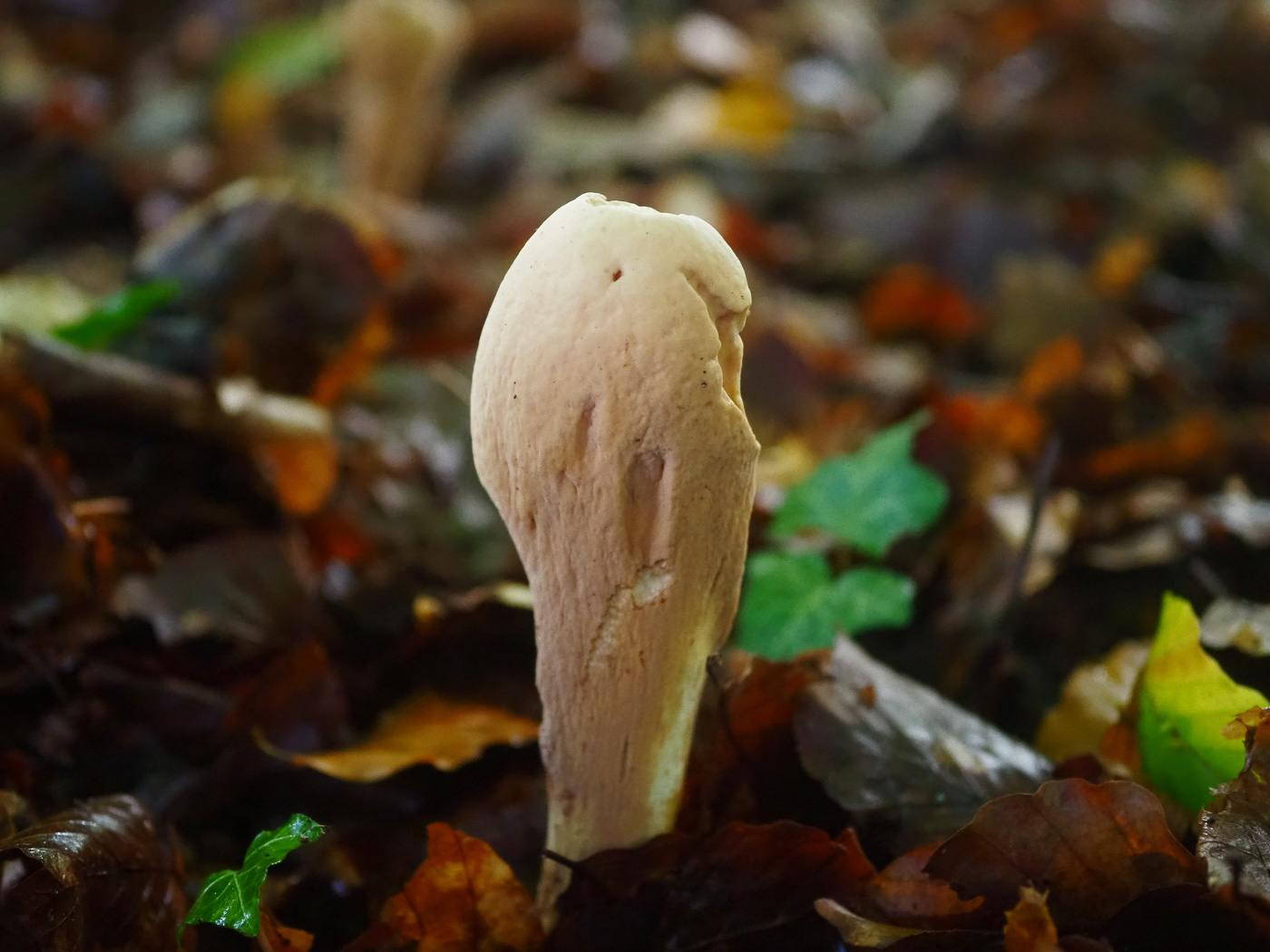 |
October 3rd Clavariadelphus pistillaris (Giant Club)
In Tinkers Wood John and Lesley Catterson found this unusual species, always an exciting one to find and considered an indicator species of ancient Beech woodland. Clubs can reach up to 20 cms tall, are typically this clavate shape and can sometimes be found in clusters.
|
 |
October 3rd Lycoperdon echinatum (Spiny puffball)
In Tinkers Wood John and Lesley Catterson found this singleton, our least common woodland Puffball species and thought to be an indicator of ancient woodland. The amazing convergent long spines (3mm or more) form little clusters, this also a feature of the much more common but darker brown L. nigrescens (Dusky Puffball), the spines of which are shorter though the two species are sometimes confused. Unlike today's find, L. nigrescens also occurs in grassland and dunes.
|
October 1st 2021
 |
October 1st Cordyceps (Isaria) farinosa (a rare species of Caterpillarclub)
In Hodgemoor Woods Barry Webb found this white club and, not having any idea what it was, posted his photo on Facebook where someone came up with the name (so the determination must remain slightly speculative). The genus Cordyceps is one that grows on pupating larvae of insects or butterflies / moths under the ground, somewhat gruesomely devouring them for nutrients before sending up the fruiting body. Once found, if you dig down it is often possible to uncover the unfortunate pupa with fungus in tact. This species is rare and new not only to the site but also to the county.
|
 |
October 1st Rhodotus palmatus (Wrinkled Peach)
In Disraeli Woods, Downley, Claire Williams noticed these tiny little specimens just appearing on some fallen Wych Elm which has produced this species in previous years. More or less host specific with Elm, it has become increasingly rare with the demise of Elm in the UK but is possibly adapting as there are now a few UK records on other woods. Fallen Wych Elm is still ones best bet to find it, however.
|
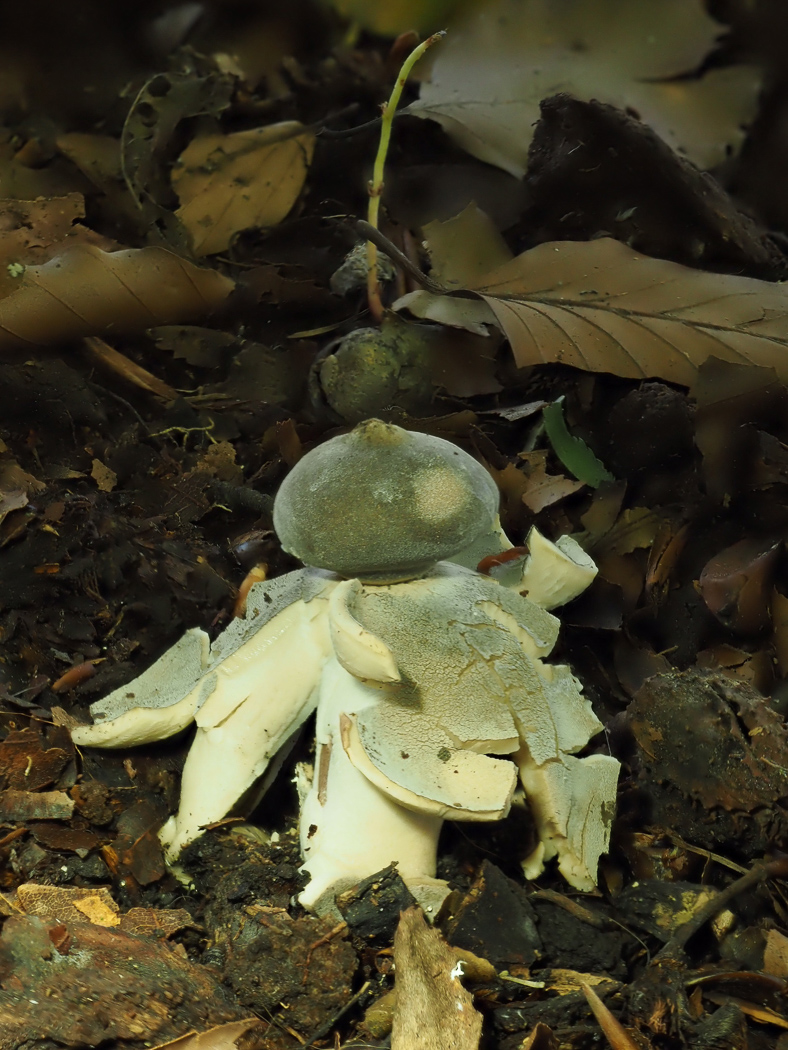

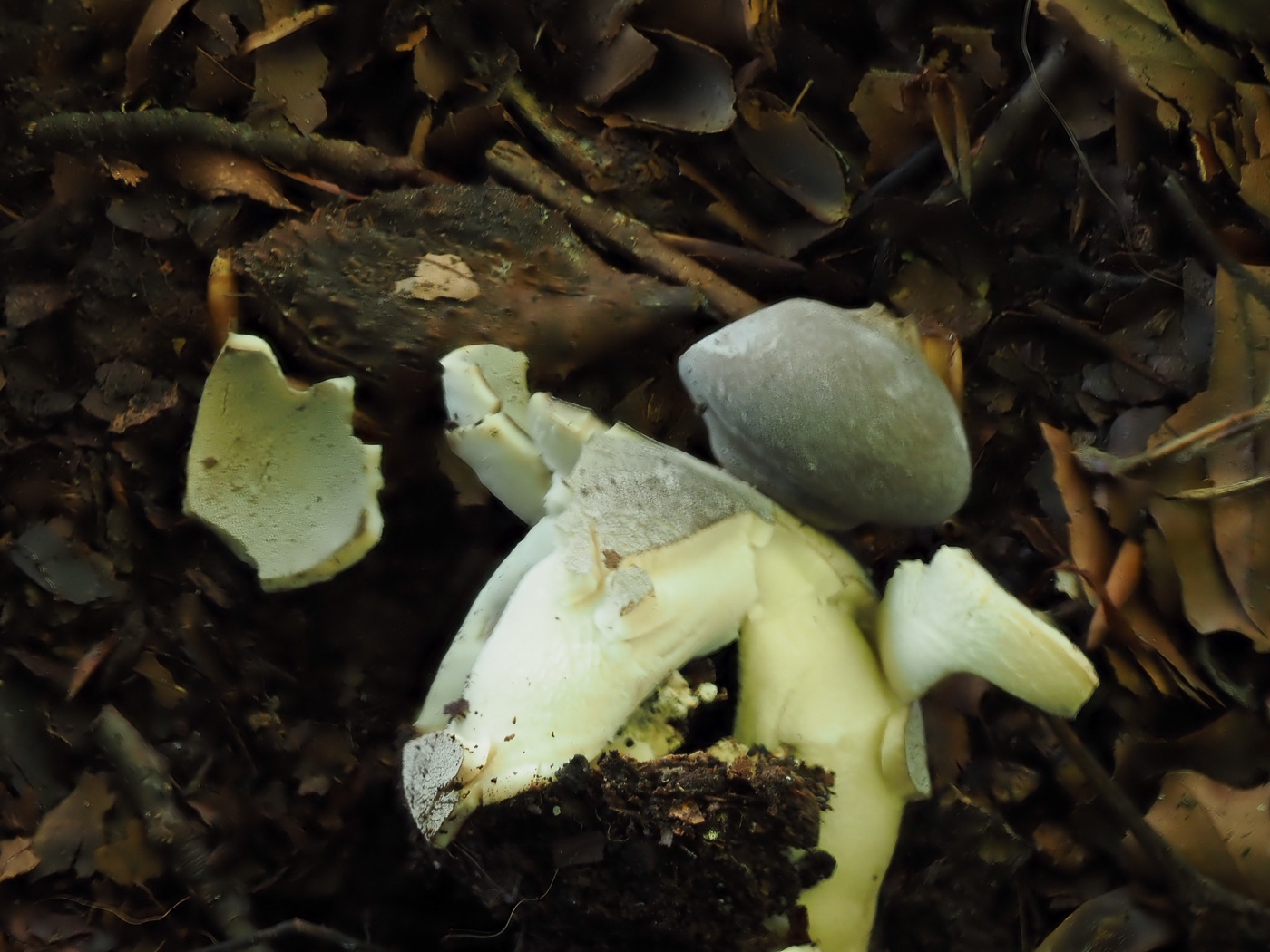
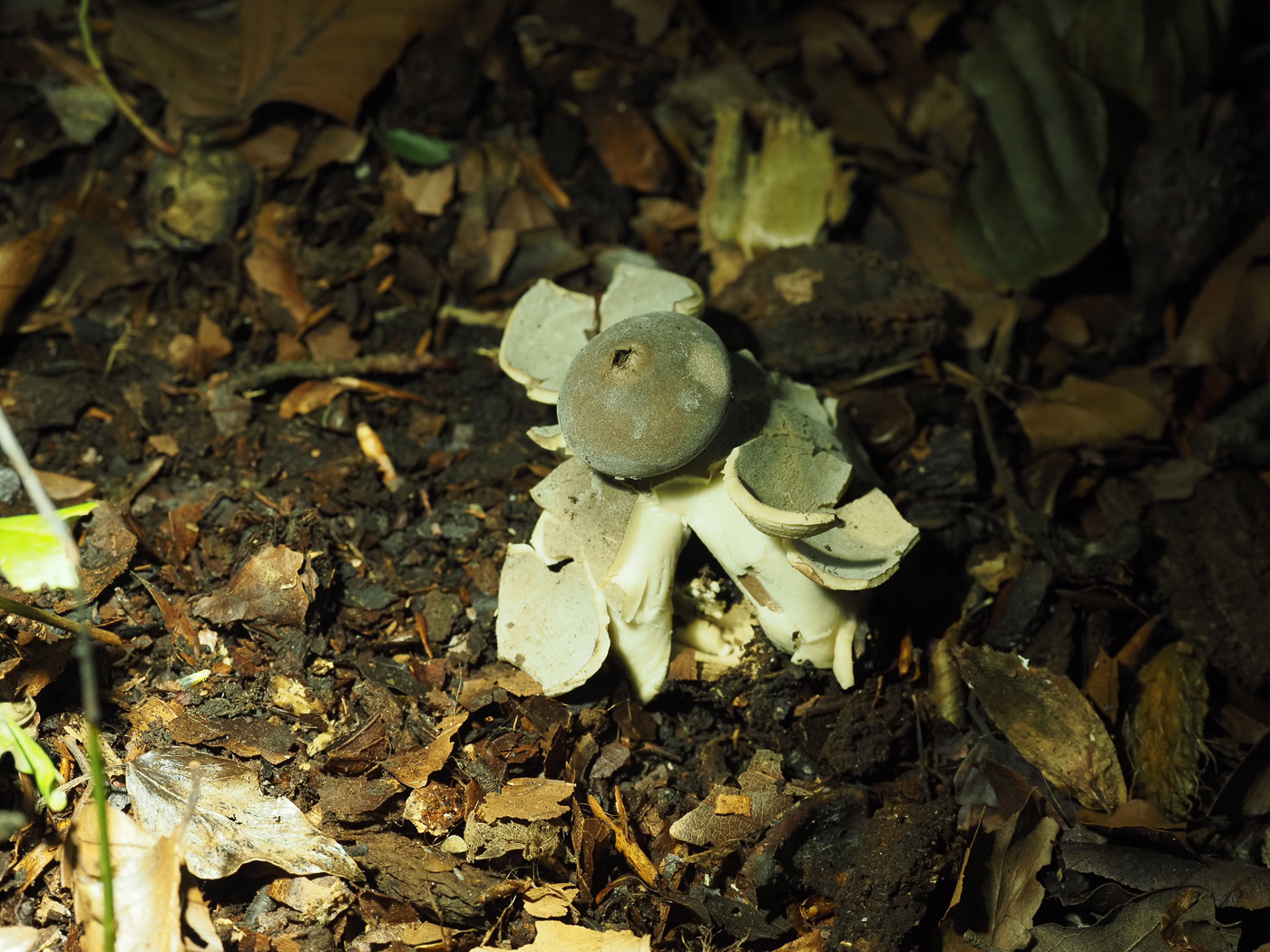 |
October 1st Geastrum fornicatum (Arched Earthstar)
In Disraeli Woods, Downley, Claire Williams found this singleton specimen in the woody litter and realised it was considerably smaller than the common Collared Earthstar with which she was familiar. The peridium (puffball centre) was rather grey with a 'pruinose' coating and a torn opening at the top and it was standing rather proud supported on only a few rays (legs), all features pointing to either G. quadrifidum or G. fornicatum. This is not a genus Penny feels overconfident at identifying, especially just from photos, but two experienced mycologists have now determined it as G. fornicatum. We have only one previous county record dating back to 1934 so this is a notable find and we hope the specimen can be retrieved with a view to getting it sequenced to confirm.
|
September 28th 2021

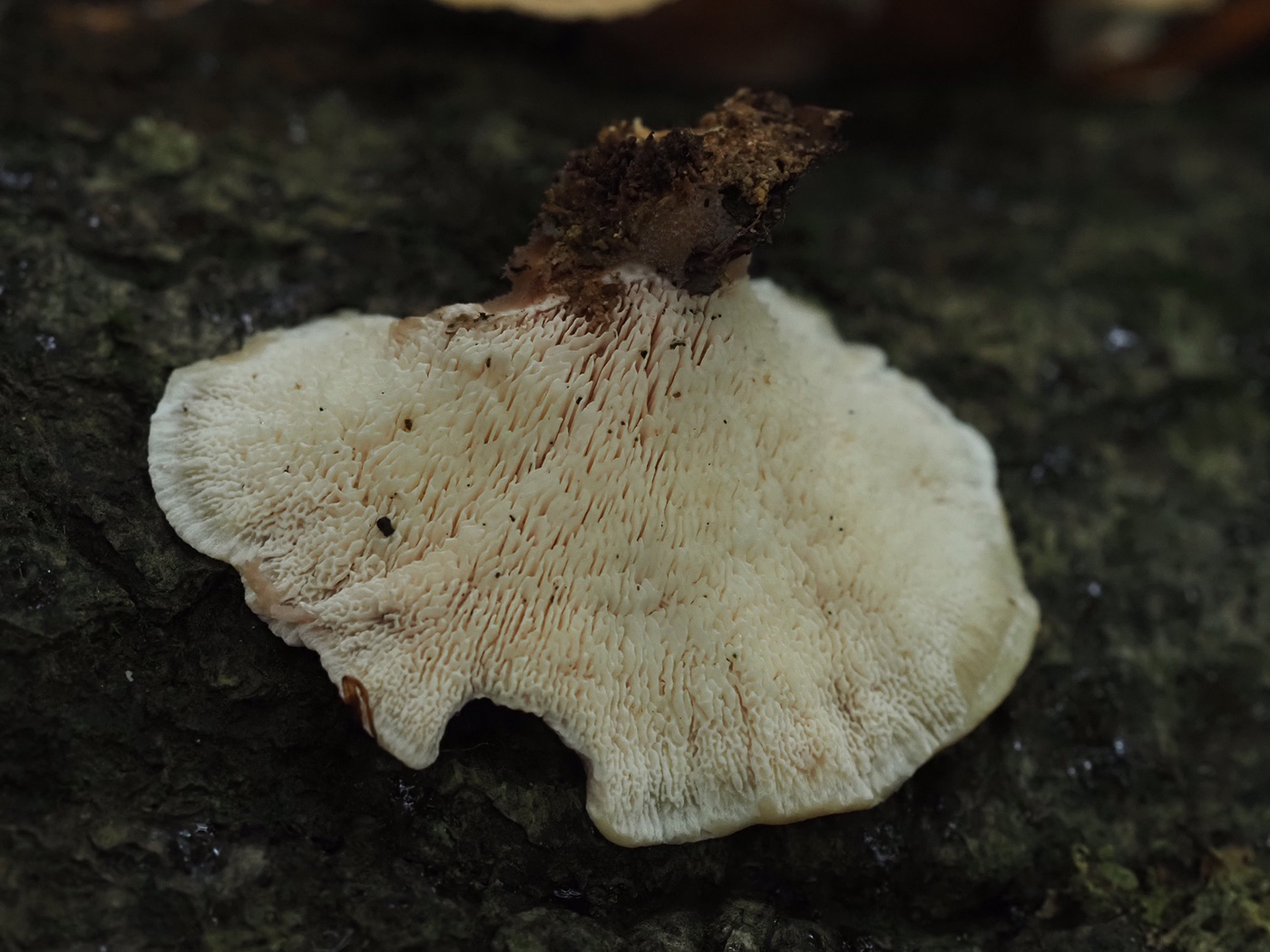
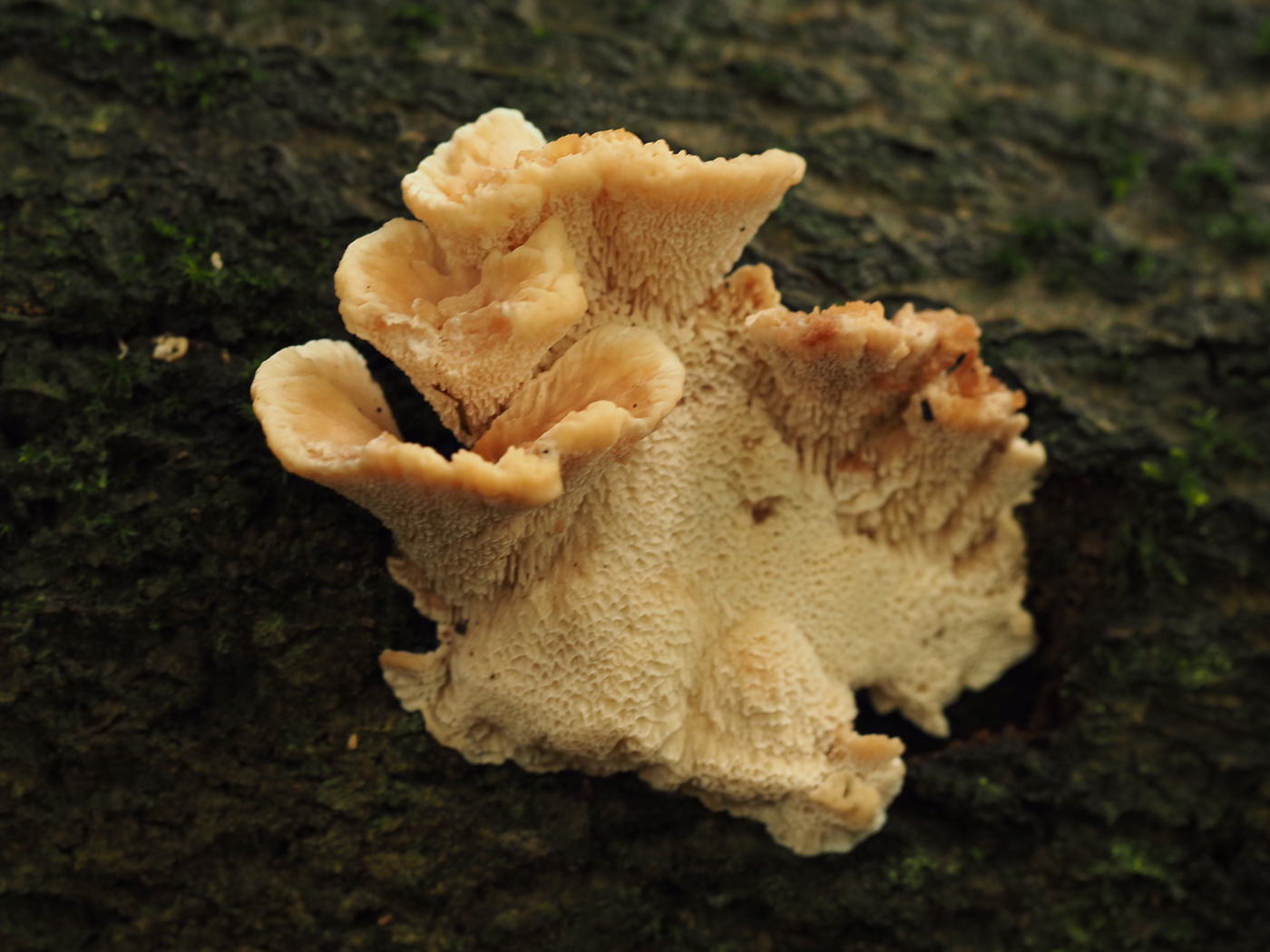 |
September 28th Abortiporus biennis (Blushing Rosette)
In Naphill Common on fallen Beech Claire Williams found this species of bracket which often causes confusion until it forms the typical pinkish 'rosette' which makes it more recognisable. It more commonly appears in the middle of paths growing on submerged roots rather than on fallen wood; it is tough and leathery and is one of the species which has a mazelike pattern underneath rather than pores, almost reminiscent of 'teeth' as in Hydnum.
|
September 27th 2021
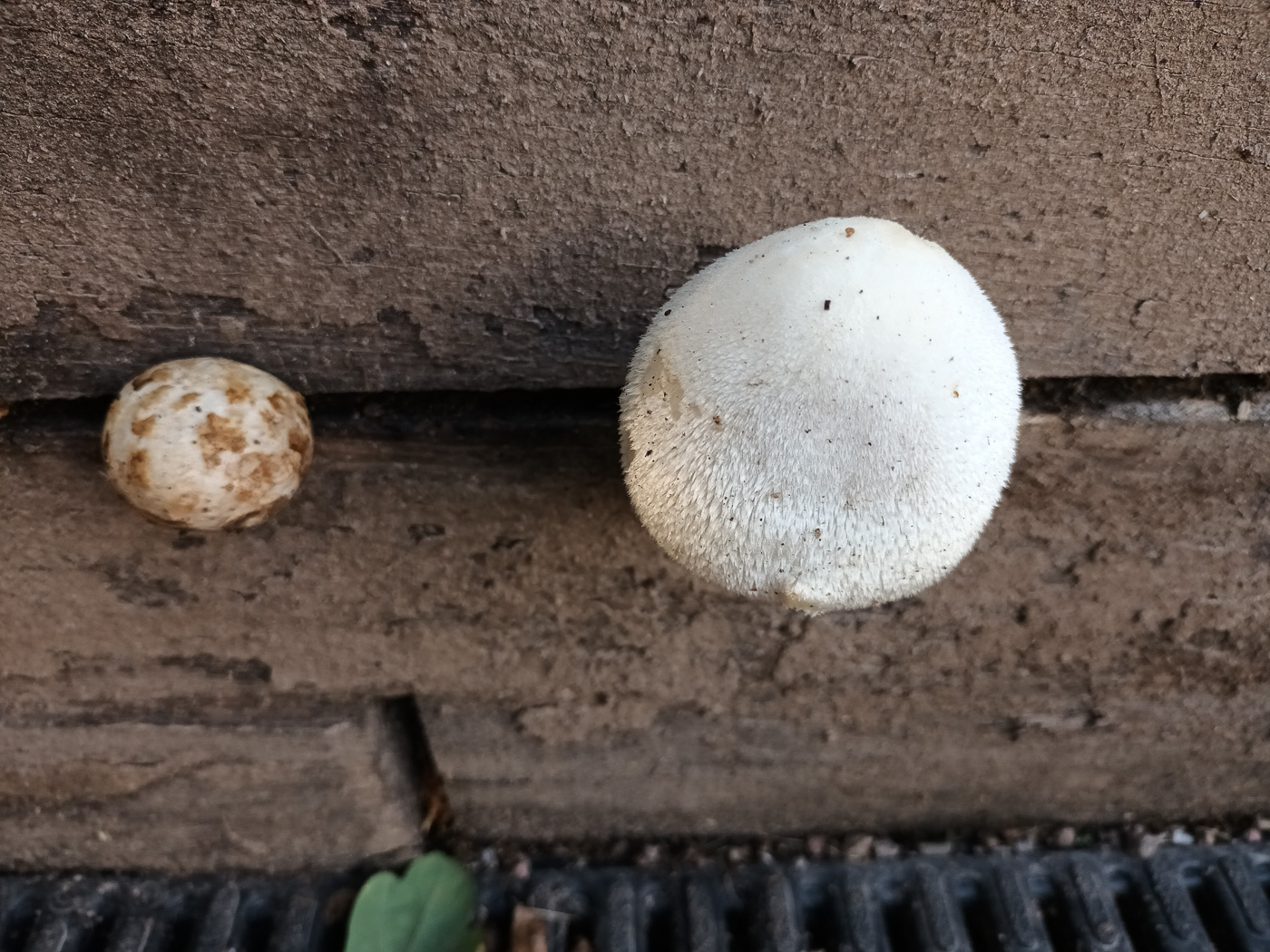
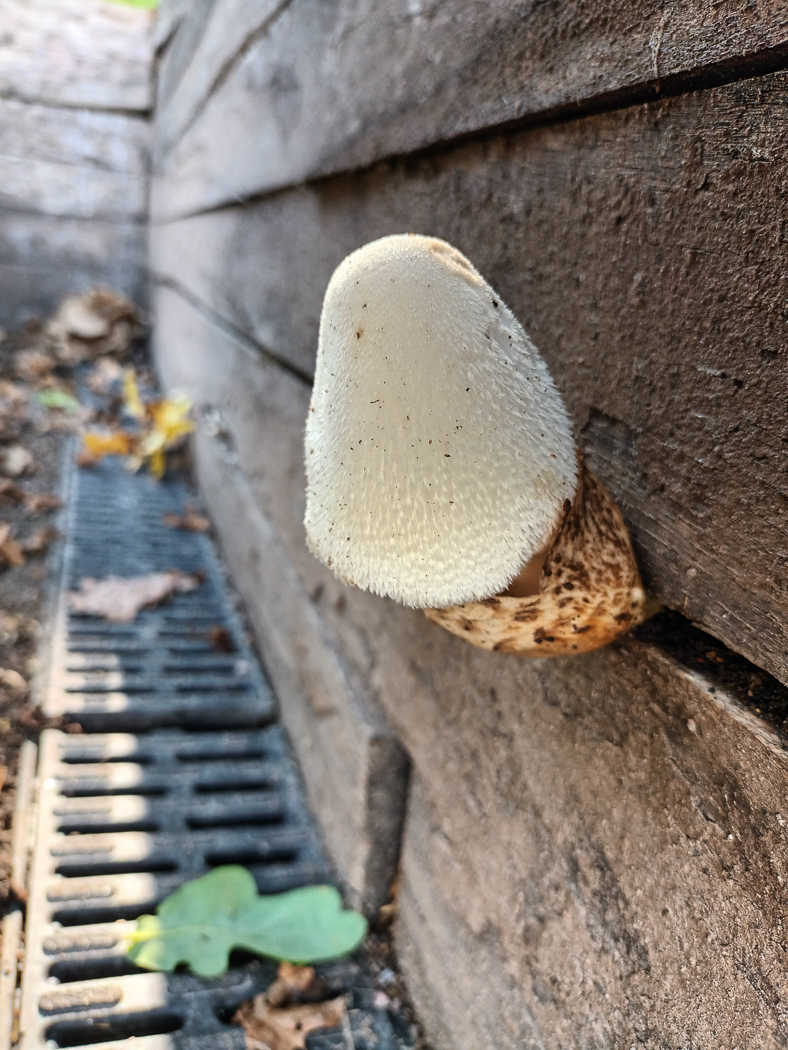 |
September 27th Volvariella bombicina (Silky Rosegill)
On Beaconsfield Golf Course, Jesper Launder was pleased to find these young specimens just emerging through a couple of planks. Not a common species - in some years hardly recorded - the slightly furry cream to white cap together with the stem arising from a volva (as in the genus Amanita) are the diagnostic features to look for, also the fact that the free gills are not white as in Amanita but gradually turn pink as in the genus Pluteus. See also a specimen dated July 6th.
|
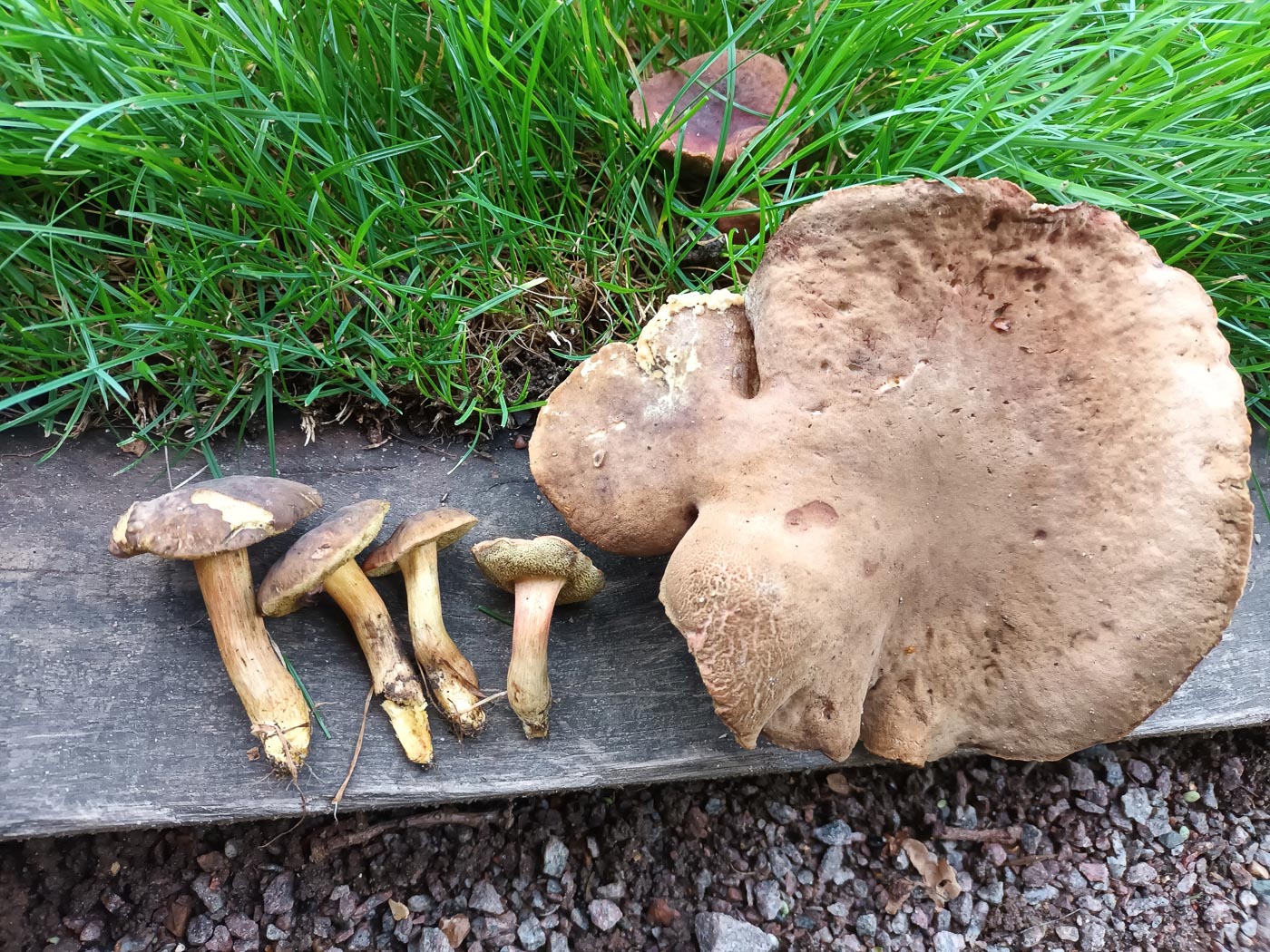
 |
September 27th Hortiboletus engelii (a Bolete with no common name)
On Beaconsfield Golf Course, Jesper Launder found this collection of Boletes under Oak, one of which he described as a whopper so presumably with a cap more than 10 cms across! Cutting open the stem lengthways revealed the telltale orange spotting at its base which separates this typical 'Red-cracked Bolete' type from others. It is common under Oak but rather surprisingly still lacks a common name. See another example dated Aug 12th.
|
September 25th 2021
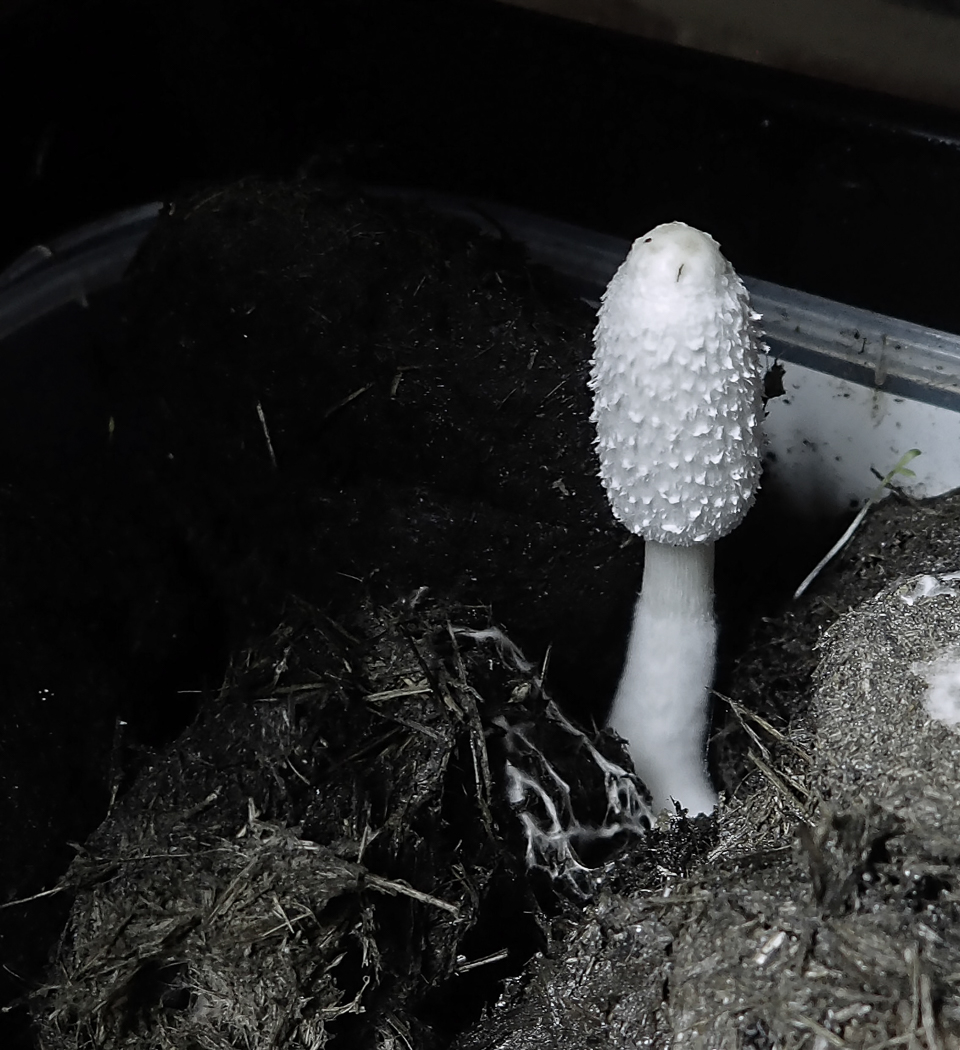 |
September 25th Coprinus sterquilinus (Midden Inkcap) 
In May Derek Schafer collected some Exmoor pony dung from Burnham Beeches with a view to culturing it to see what fungi appeared - this was part of our ongoing project funded by City of London Corporation, owners of the site. He was then delighted to see this very rare species emerging a few months later, new not only to the site but also to the county and placed as Vulnerable on the 2006 Red Data list. One of only four Inkcaps remaining in the original genus Coprinus when it was split into four, the similarity to the common C. comatus (Lawyer's Wig) is clear though it is smaller and occurs on dung rather than soil.
|
September 21st 2021
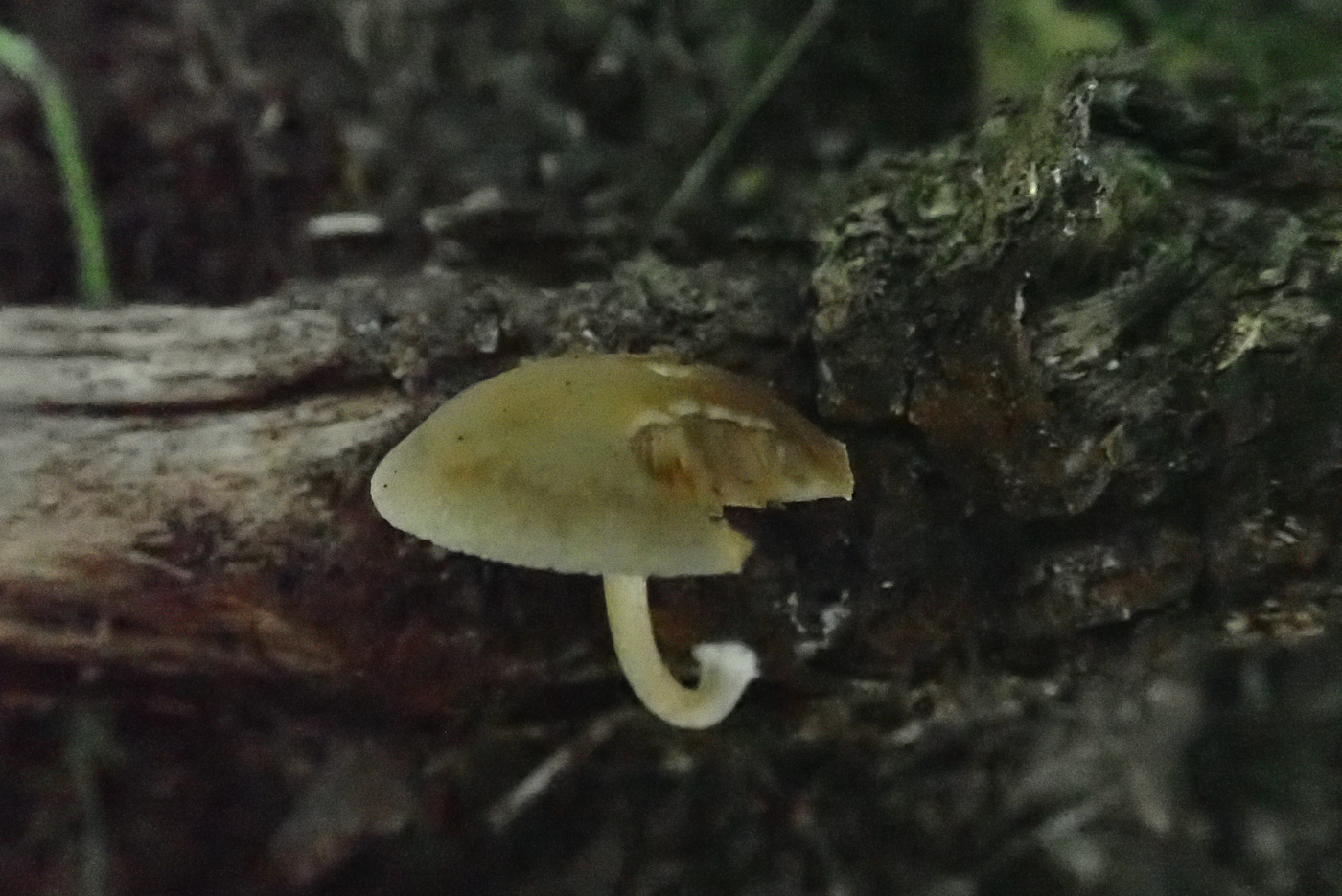
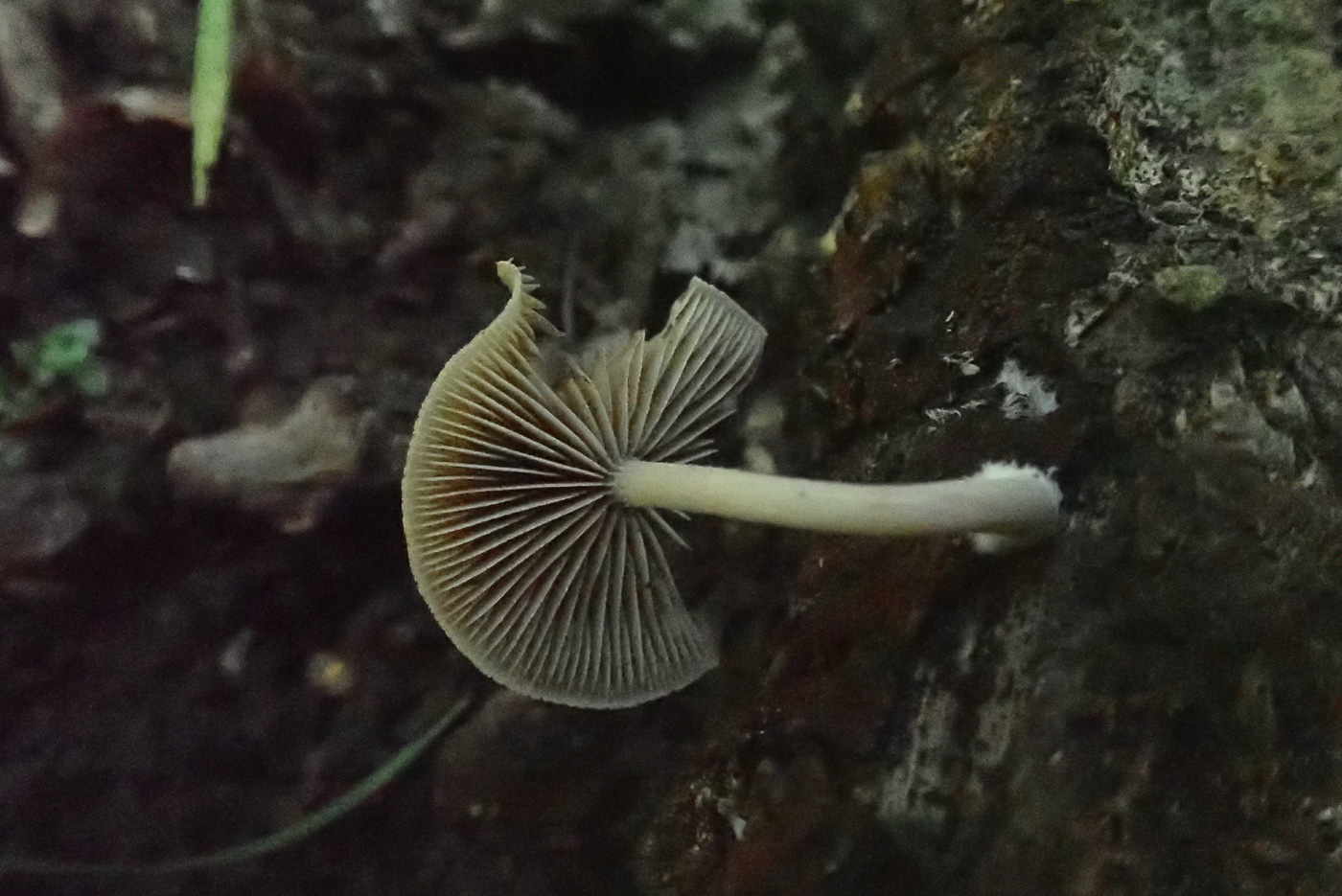 |
September 21st Simocybe sumptuosa (Velvet Twiglet) 
On a deciduous stick in Rushbeds Wood Penny noticed this LBJ, guessed it would be one of two possible species of Simocybe, so took it home to check. The fact that the genus lacks notable features apart from occurring on fallen deciduous wood is in itself a pointer to its identity. It could maybe be a small Pluteus but the gills are neither free nor pink, it could maybe be a Psathyrella but doesn't have a white brittle stem, etc, etc! Under a scope it redeems itself, having distinctive bean shaped pale brown spores and cells on the gill edge with swollen heads. Neither this species nor the very similar S. centunculus are at all rare but possibly go unnoticed or unrecognised.
|
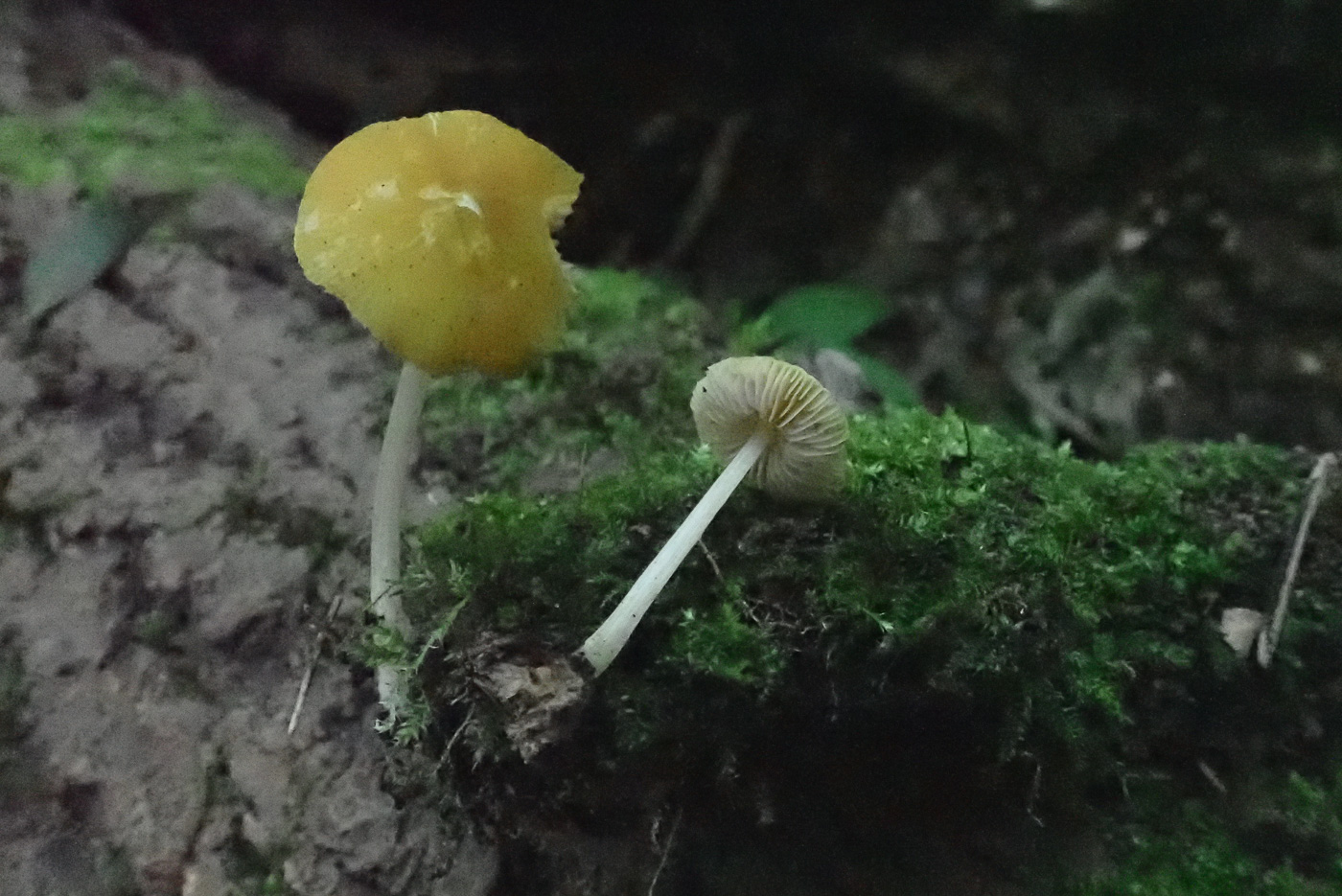 |
September 21st Pluteus chrysophaeus (Yellow Shield) 
In a log pile, mostly Willow, in Rushbeds Wood, Penny noticed a small bright yellow cap and on further inspection found another on a nearby log. The gills were free and were pale with a pink tinge, thus confirming the genus as Pluteus, though there are two small yellow capped species necessitating a check with a scope (particularly of the cap cuticle cells: like long sausages in the uncommon P. leoninus but round in today's species which is fairly common). See also a collection dated July 9th (marked sp. as not checked with a scope).
|
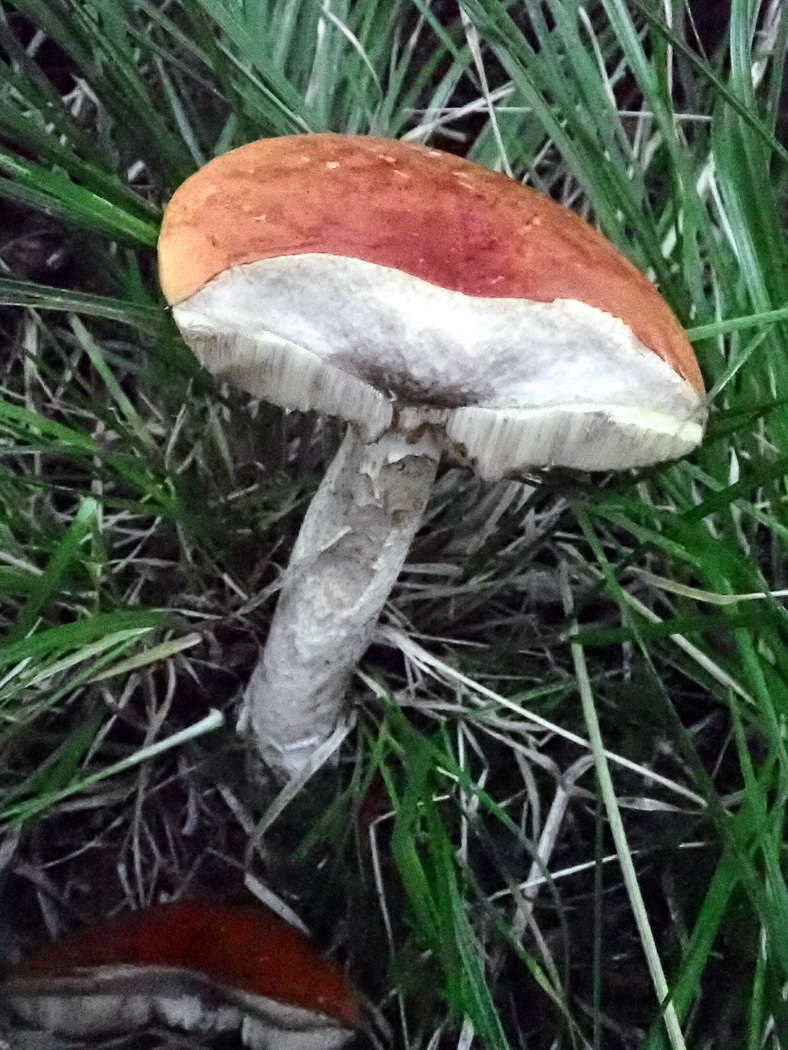
 |
September 21st Leccinum albostipitatum (a Bolete with no common name) 
In Rushbeds Wood Penny found this singleton in a damp grassy path edge under various deciduous trees. After noting the conspicuous foxy orange cap colour she checked firstly for the presence of Oak nearby and then for the expected concolorous foxy markings known as scabers on the stem which would confirm it as the fairly common L. aurantiacum (previously L. quercinum). Yes, there was Oak about but, no, the scabers if any were white and not standing out in contrast to the background colour which made this much more interesting and unusual. Separated from L. aurantiacum by the lack of orange scabers on the stem, this rare species occurs under Poplar or Aspen (closely related) and both of which were indeed nearby. Compare with L. aurantiacum dated Sept 6th where the stem is clearly dotted with orange scabers unlike today's find.
|
September 20th 2021
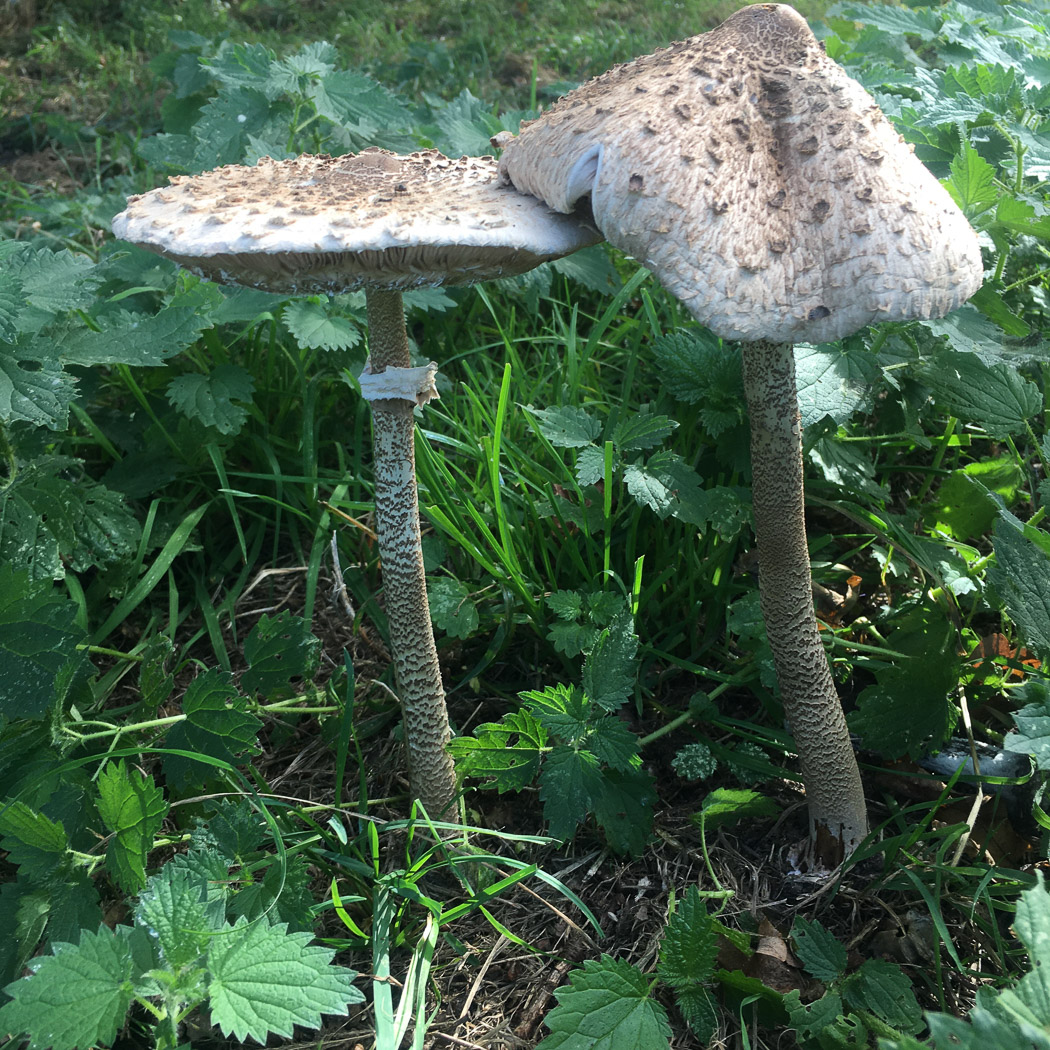 |
September 20th Macrolepiota procera (Parasol)
In the Walks at Brill Common Joanna Dodsworth found these splendid specimens. displaying the typical characteristics of the species well. Note the evenly scaly cap with darker scales on a pale background, also the beautifully clear 'snakeskin' markings on the stem (these absent in the very similar and often misidentified Chlorophyllum rhacodes (Shaggy Parasol)). Note also the ring on the stem which with care will slide up or down – this a feature of both species. The Shaggy Parasol is probably the commoner of the two and when its flesh is damaged it stains bright orange - the genuine Parasol flesh, however, remains unchanged. If you are into eating fungi DO NOT EAT Shaggy Parasol which can cause serious stomach upsets.
|
September 17th 2021
 |
September 17th Echinoderma asperum (Freckled Dapperling) 
In Rushbeds Wood Joanna Dodsworth found this beautiful specimen in woody litter. (Better known under its previous name Lepiota aspera, this is one of a few species moved into the newly created Echinoderma having notably scaly caps.) Not rare, it is always a delight to find especially when as pristine as this specimen where the ring on the stem is flared out like a skirt. Note also the white crowded gills (which are free - not seen here) typical of all Dapperlings though not all species have a ring on the stem and many are much smaller than this species which can have a cap up to 15 cm or more across.
|
September 14th 2021
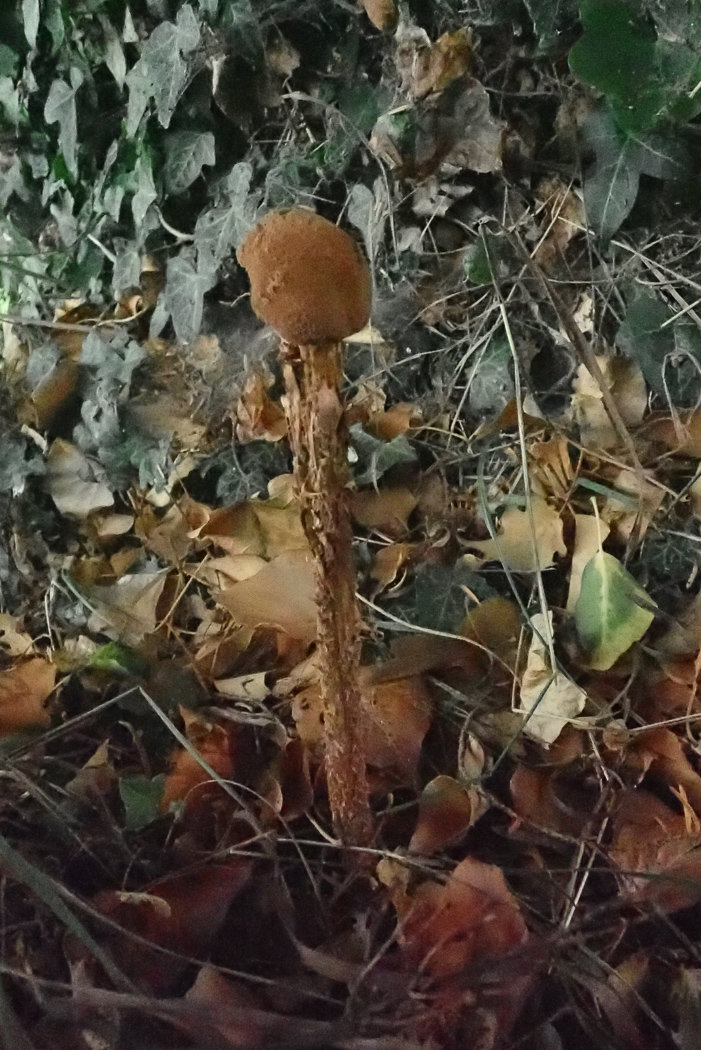

 |
September 14th Battarrea phalloides (Sandy Stiltball)
Penny was delighted to hear from Richard Fortey that this rare species (on the Red Data List and new to the county last year) was fruiting again in the same location in the south of the county - not revealed here for obvious reasons. She went in search and found the two specimens standing about 20 cms tall with heads 4-5 cms across, the shaggy stems being remarkably solid and sturdy (almost woodlike) and the heads powdery. The species is related to the Stinkhorns, arising from a gelatinous egg which has a solid outer coating and lacking the Stinkhorn smell; it appears to have a preference for sandy soil, occurring unpredictably in hedgerows, at roadsides mainly in the south. Last year it also turned up in Chesham, and when Jackie McKenzie-Dodds and Justin Warhurst went to check for it at this spot on Sept 26th there it was again! Photos 1 and 2 are Penny's on Sept 14th, photo is Justin's on Sept 26th.
|
September 13th 2021
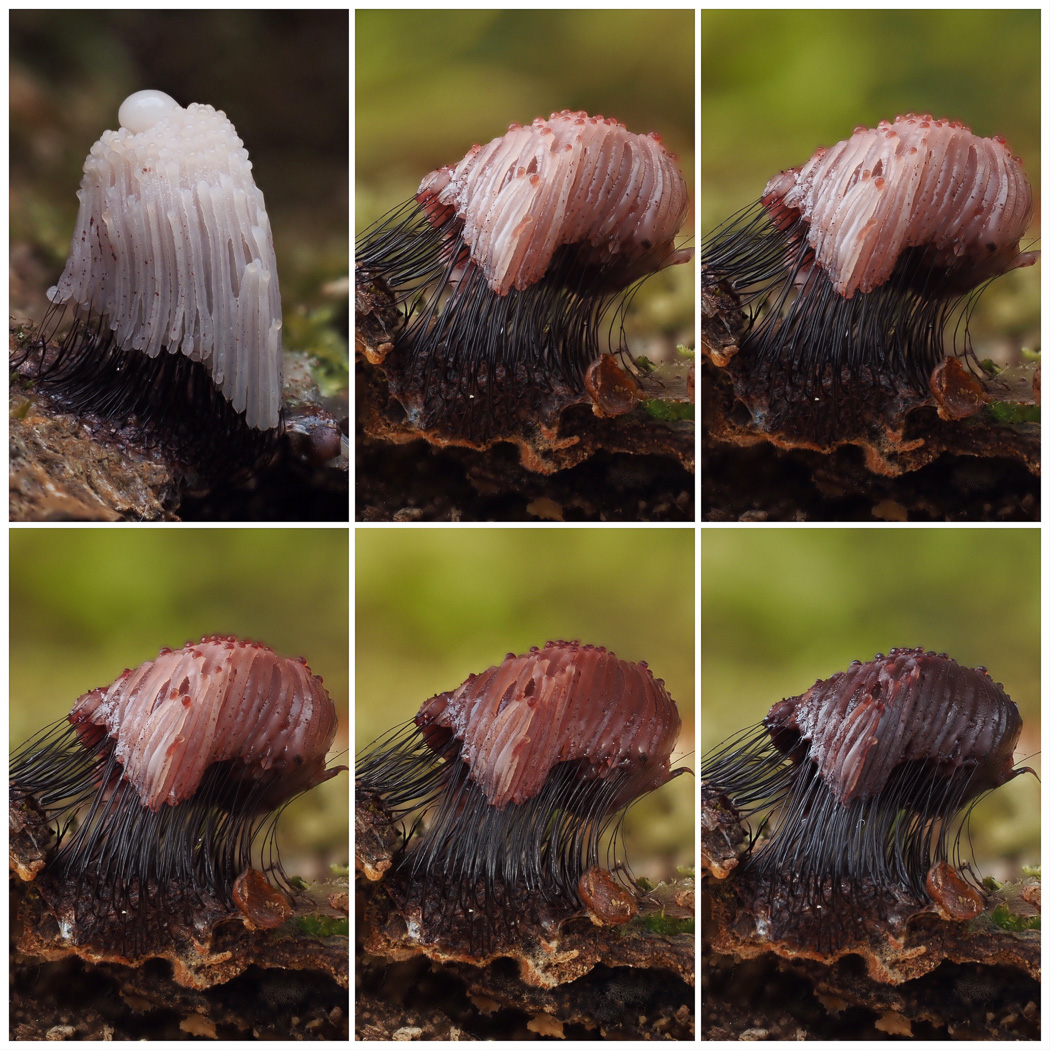 |
September 13th Stemonitis fusca (a Slime Mould with no common name)
On a fallen Beech trunk in Naphill Common Claire Williams found several different species of Slime Mould, and took this remarkable series of photos over a period of 4 hours showing just how quickly these organisms can develop once they settle down. Penny has named the species purely from the long stalks shown here which are up to half its total height (whereas other species in the genus have stalks of a lesser proportion) so the determination has not been confirmed microscopically.
|
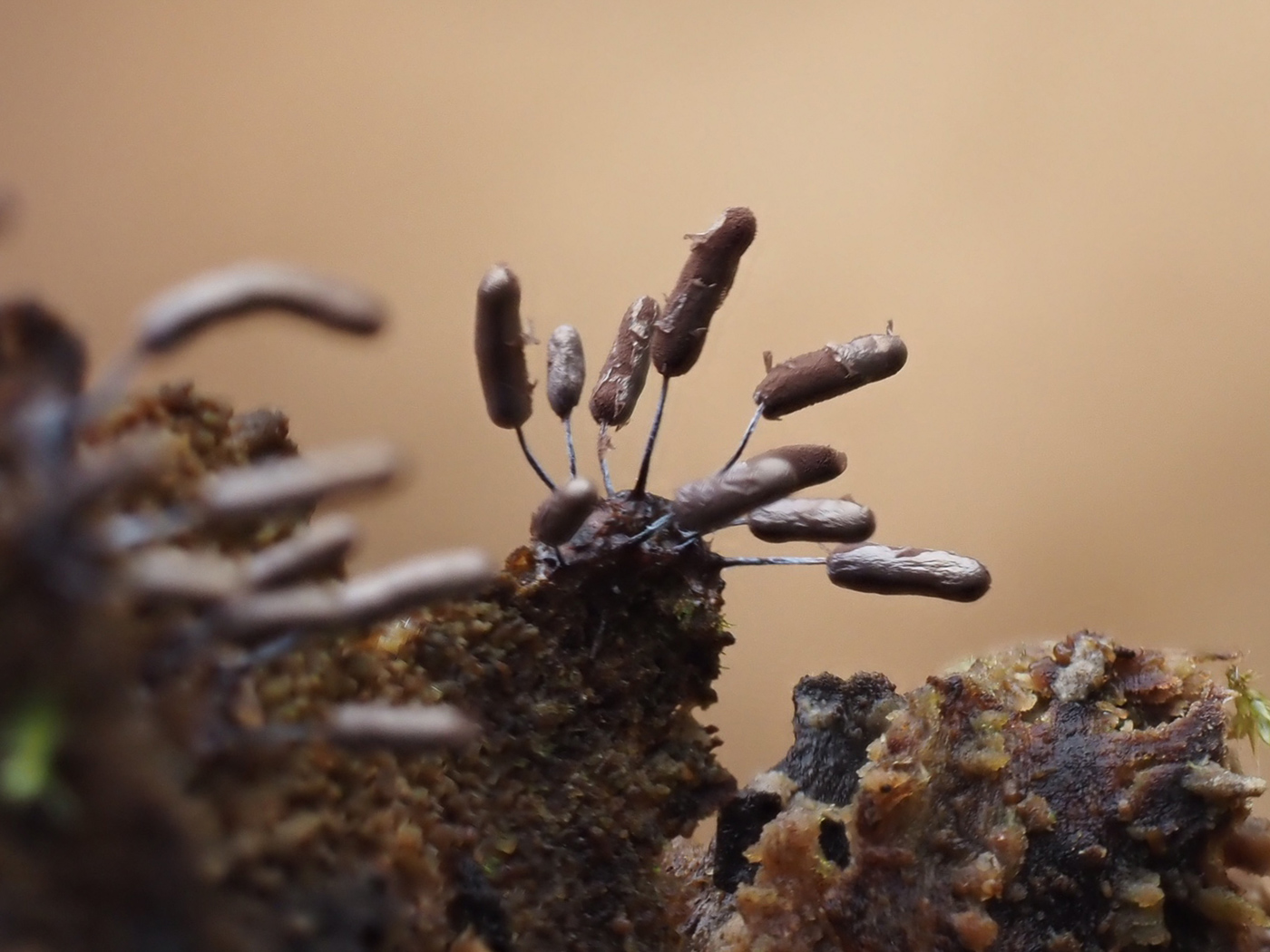 |
September 13th Stemonitopsis typhina (a Slime Mould with no common name)
On the same fallen Beech trunk in Naphill Common as her series of Stemonitis photos above, Claire Williams also found these almost mature little specimens belonging to a related genus. The species can be recognised at this stage by its sausage-like shape and typically by the flaking surface as it dries off. The stalk when younger is wrapped in an almost translucent white sheath which here has all but disappeared. (See Barry Webb's page in Finds for a younger example.)
|
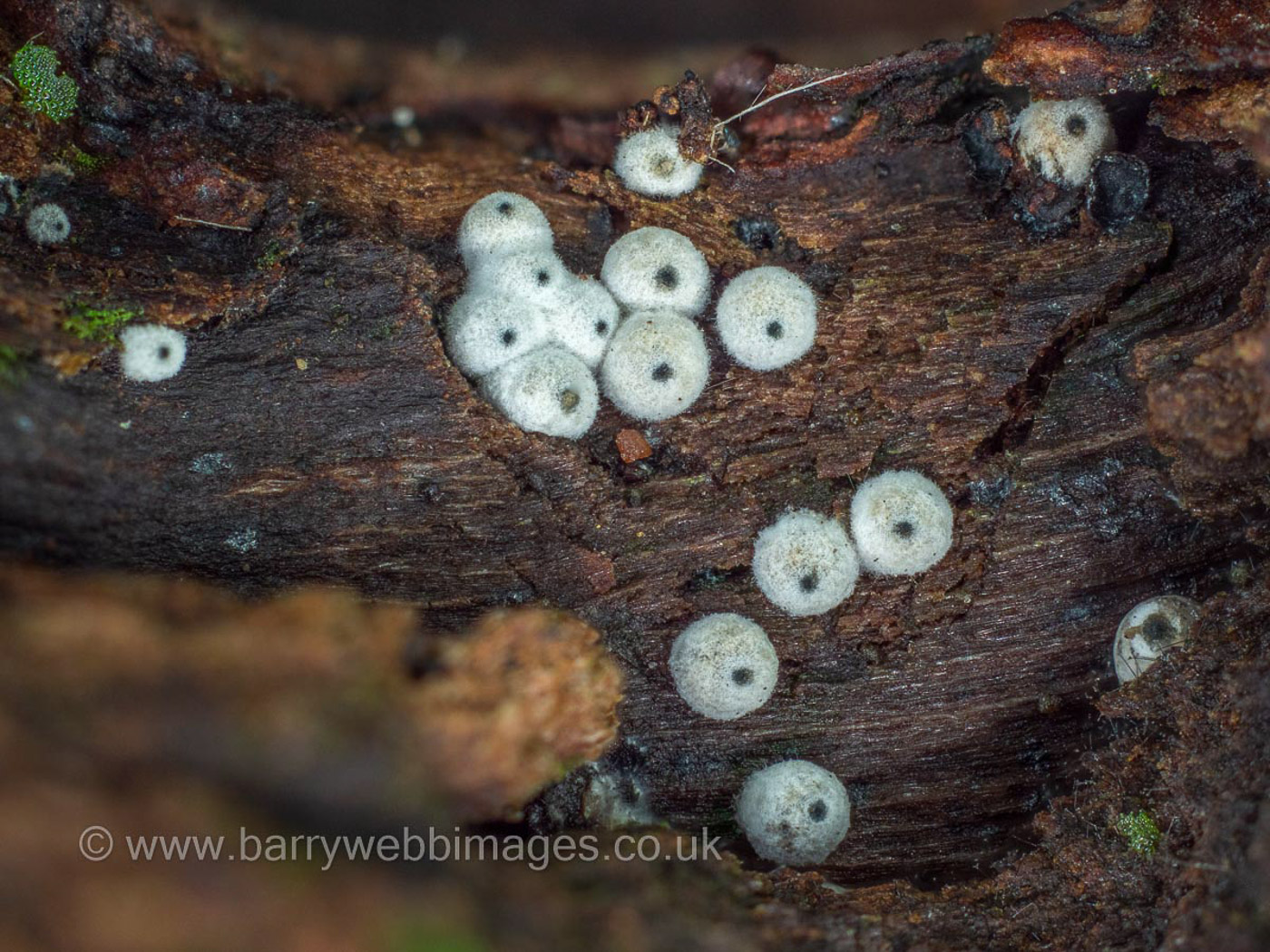 |
September 13th Lasiosphaeria ovina (Woolly Woodwart)
In Ivinghoe Common Barry Webb found these very small round slightly fluffy blobs on rotting fallen wood, recognising the species it having been identified the previous day when he also found a colony at Pullingshill Wood. This is a fairly common Ascomycete, one of the Pyrenomycetes being black and crusty, but distinguished from other quite similar species by its white covering of hyphae with a central black 'beak' which protrudes (like a min volcano!). Despite its common name it is not related to the Hypoxylon woodwarts.
|
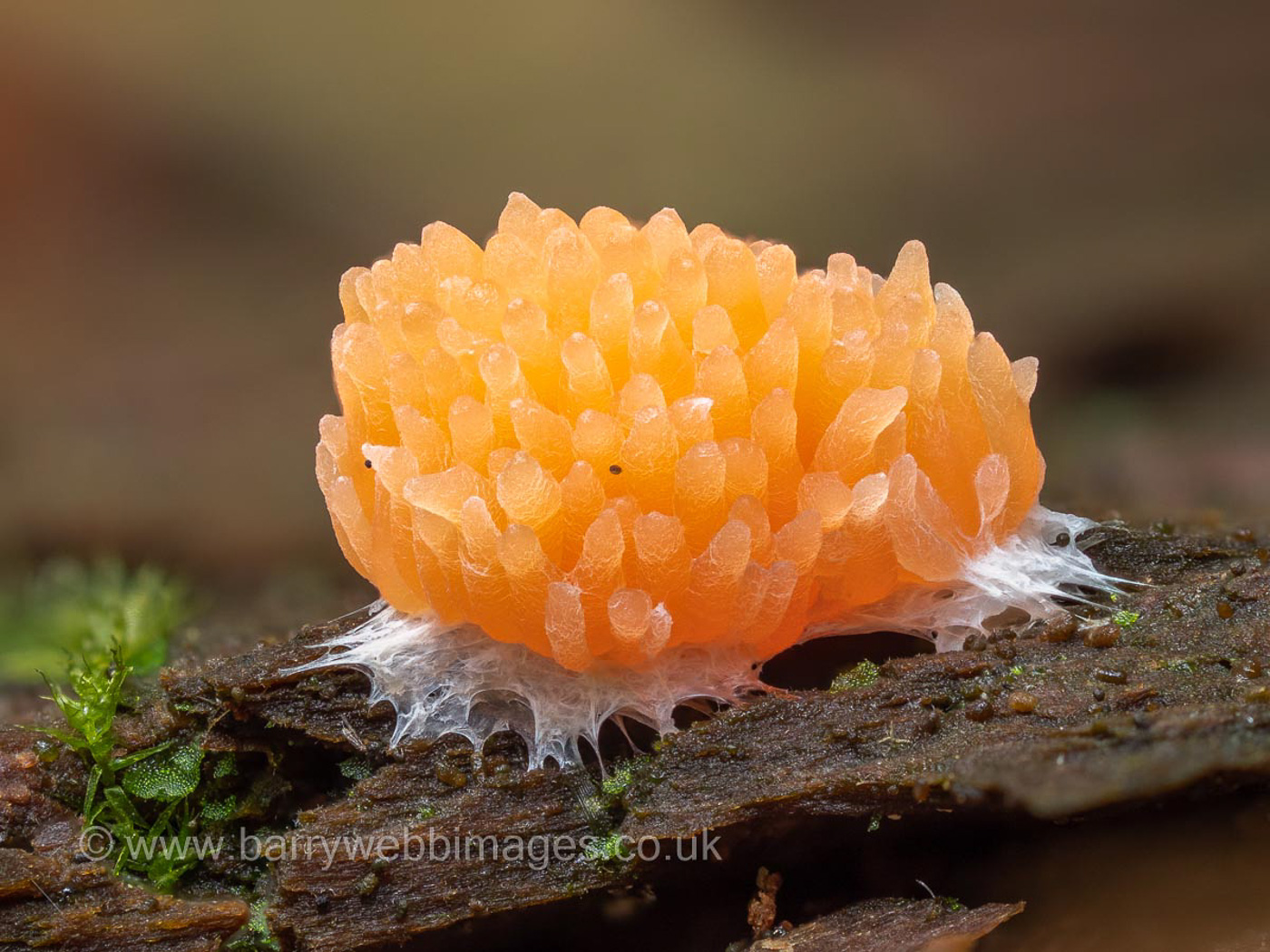 |
September 13th Tubifera ferruginosa (Red Raspberry Slime)
In Ivinghoe Common on rotting fallen conifer Barry Webb found this brightly coloured little mound just beginning to develop from the 'red raspberry' mycelium stage when instantly recognisable. The vast majority of slime moulds have white mycelium (the slimy stage), this being one of very few to sport bright orange, peach, pink-red mycelium. Here it can be seen beginning to evolve the closely packed columns which turn brown when mature. See also dated Aug 14th.
|
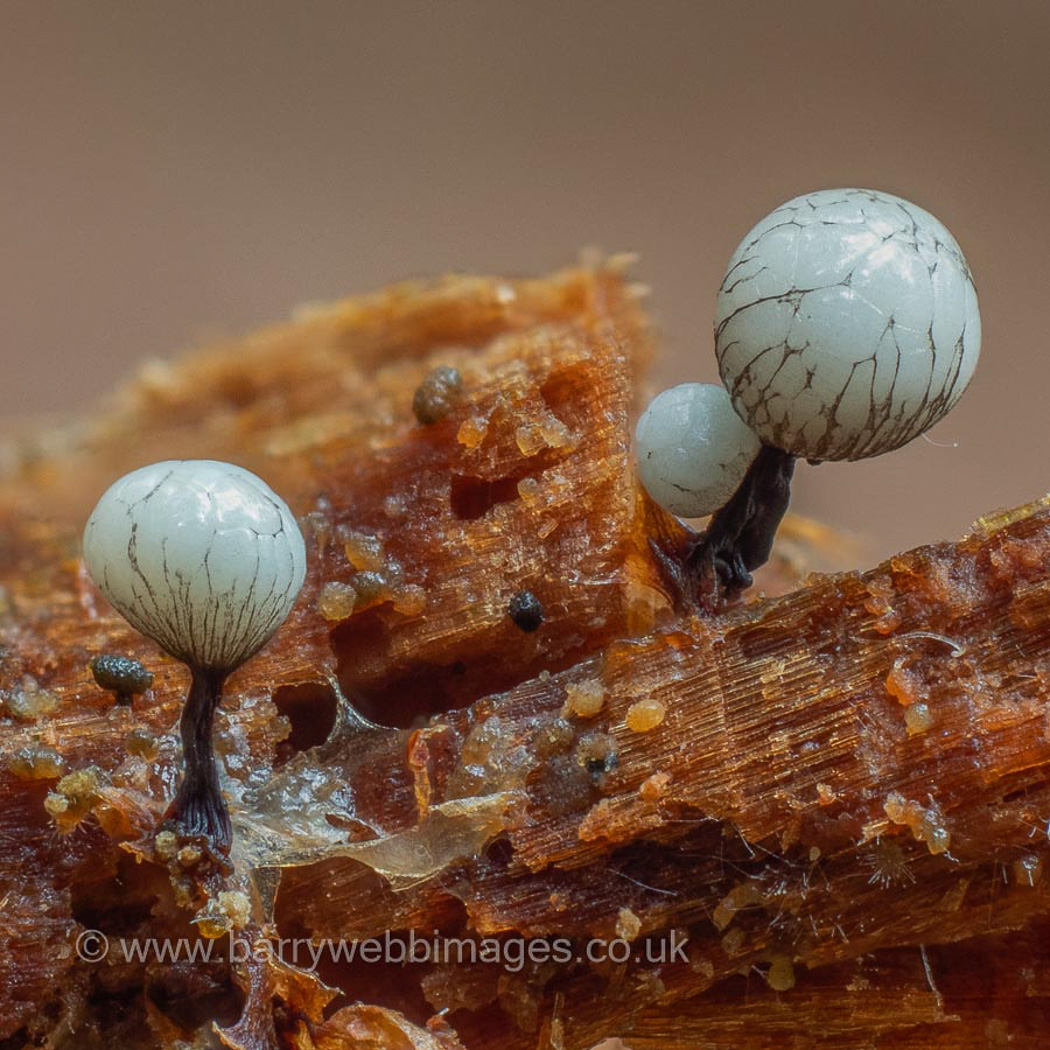 |
September 13th Cribraria rufa (a Slime Mould with no common name)
In Ivinghoe Common on rotting fallen conifer Barry Webb found these tiny white beauties, demonstrating an early stage of development before the head dries off to release its rusty spores. There are many species of Cribraria, all tiny and beautiful in their detail, nearly always on rotting conifer, and having round heads with a protective mesh / network. C. rufa has a short black stem and a widely spaced mesh, seen here just developing. See also dated July 9th; there are many more examples of the genus on Barry's separate page in Members' Finds.
|
September 6th 2021
 |
September 6th Leccinum aurantiacum (Orange Bolete)
In Stoke Common Barry Knight found this splendid Bolete (probably under Oak). An impressive species (previously L. quercinum), it sports a foxy red brown cap, pale cream pores and a typical Leccinum stem pocked with scabers which match the cap colour (and sometimes with green stains at its base).
|
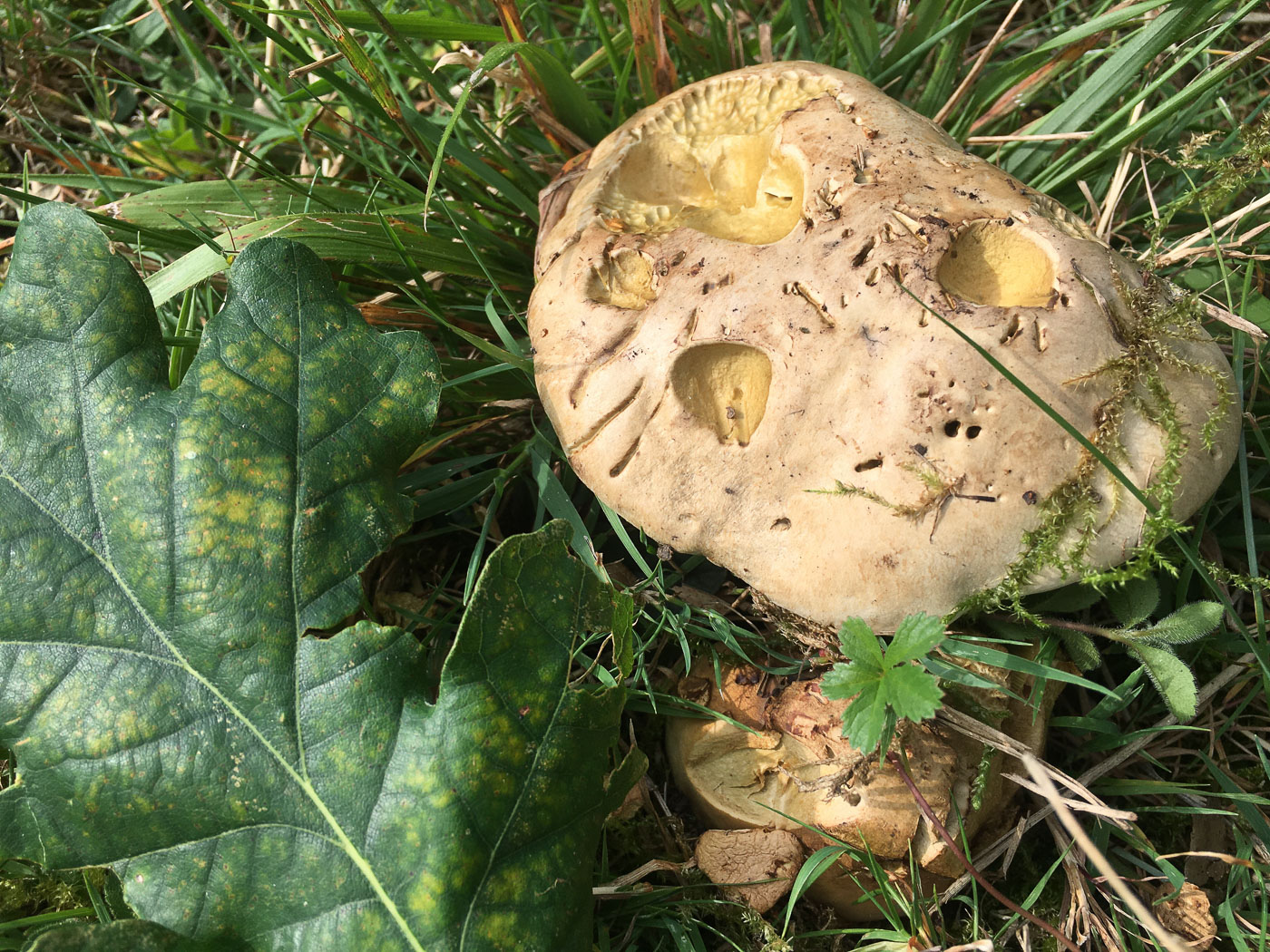
 |
September 6th Caloboletus radicans (Rooting Bolete)
In Wotton Park Estate Joanna Dodsworth found this singleton in grassy soil under Oak. Previously in the genus Boletus, it is a sizeable and solid species (sometimes up to 15 cms across or more) and a regular at this site early in the season. It has an ivory to pale cream cap with small yellow pores underneath which stain blue when bruised (seen in photo 2). The pale stem tends to root firmly into the ground, hence its Latin species and common names.
|

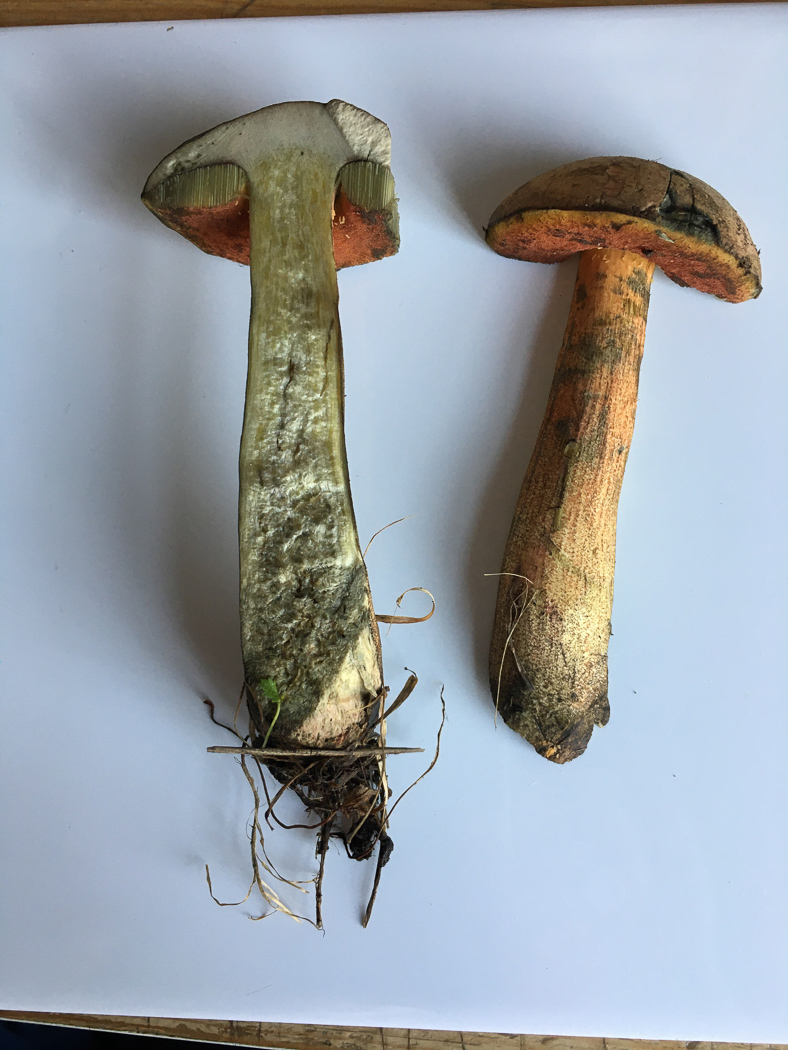 |
September 6th Suillellus luridus (Lurid Bolete)
In Wotton Park Estate Joanna Dodsworth found another singleton Bolete in grassy soil under Oak. Also previously in the genus Boletus, the species is less common than C. radicans above and very different in appearance. A smaller species though still solid, the cap colour is somewhat variable from yellow ochre to peach or reddish to olive brown and the pores are orange red, often more yellow around the rim (seen in photo 2) and strongly blueing when damaged. The stem flesh also tends to blue but can be bright beetroot at the base. It occurs in open deciduous woodland and also quite commonly with Helianthemum (Rock Rose) wherever that plant abounds (see also dated Jul 13 for an example with Rock Rose).
|
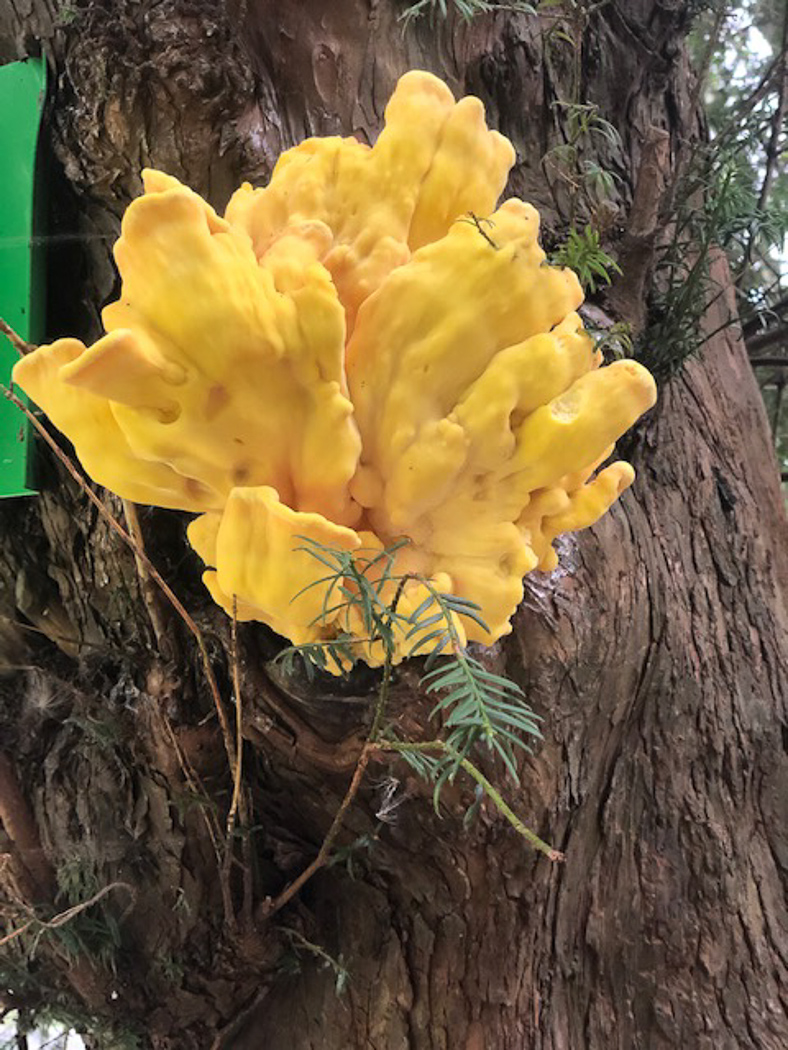 |
September 6th Laetiporus sulphureus (Chicken of the Woods)
In St Laurence Churchyard, West Wycombe, Paul Goby noticed this fresh pristine bracket growing at eye level on Yew. A beautiful species when young as here, it tends to fruit in summer forming large tiers on many deciduous trees, most often Oak or Cherry, less often Yew as here. Considered by some good to eat when young, it should never be collected for the pot when found on Yew!
|
September 5th 2021
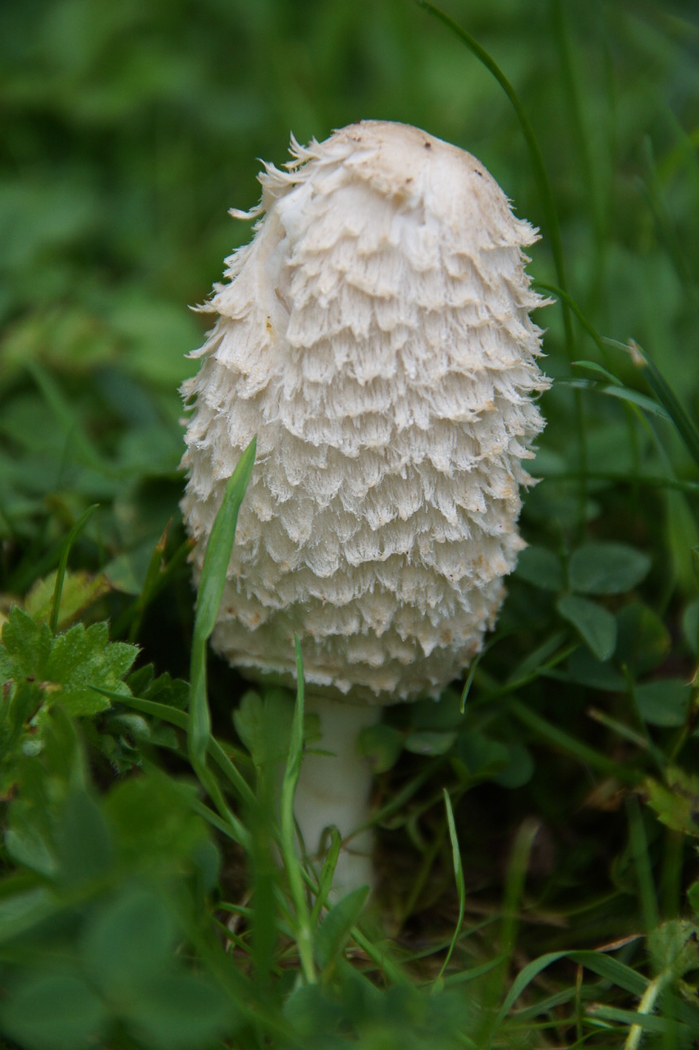 |
September 5th Coprinus comatus (Shaggy Inkcap / Lawyer's Wig)
In his lawn at home (Salden Wood) Bob Simpson found this perfect specimen which apparently comes up from time to time in the same spot. One of less than a handful of Inkcaps still residing in this genus, it is easily recognised and very distinctive, like a white Grenadier Guard's busby, though is shortlived and by the next day all that is left is the stem and a black pool around it!
|
September 4th 2021
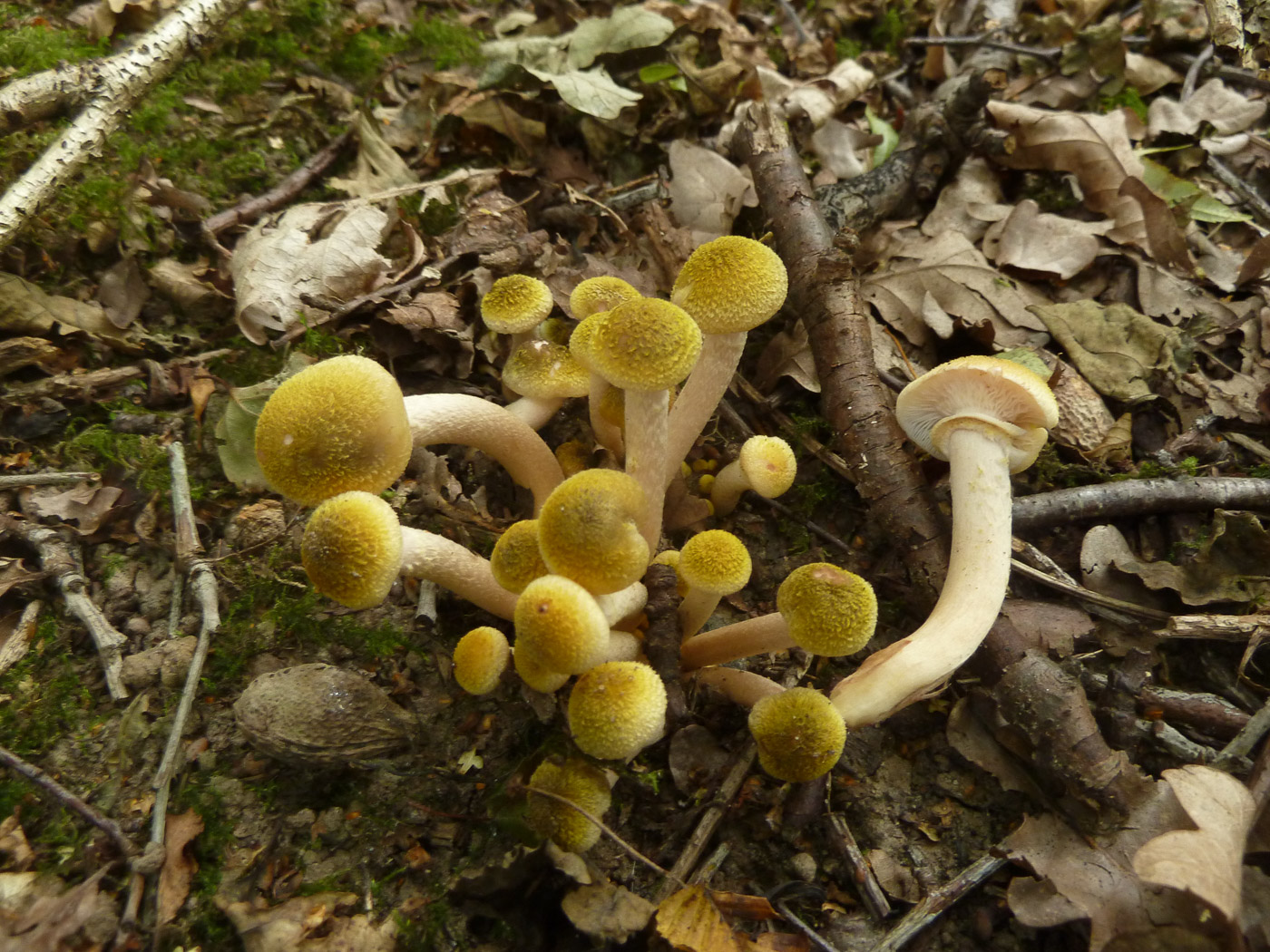
 |
September 4th Armillaria mellea (Honey Fungus)
Under mixed trees in the wooded edge of Stampwell Farm Jackie Ewan found this attractive but unwelcome cluster just emerging. The species is a serious parasite on many trees and shrubs, spreading from plant to plant via its thick black leathery 'bootlace-like' mycelium - often found on its own (see photo 2 taken by Paul Goby this February). Other species of the genus also have a ring on the stem as here but are not such a threat, this one distinguished from them by its unswollen stem base with no yellow.
|
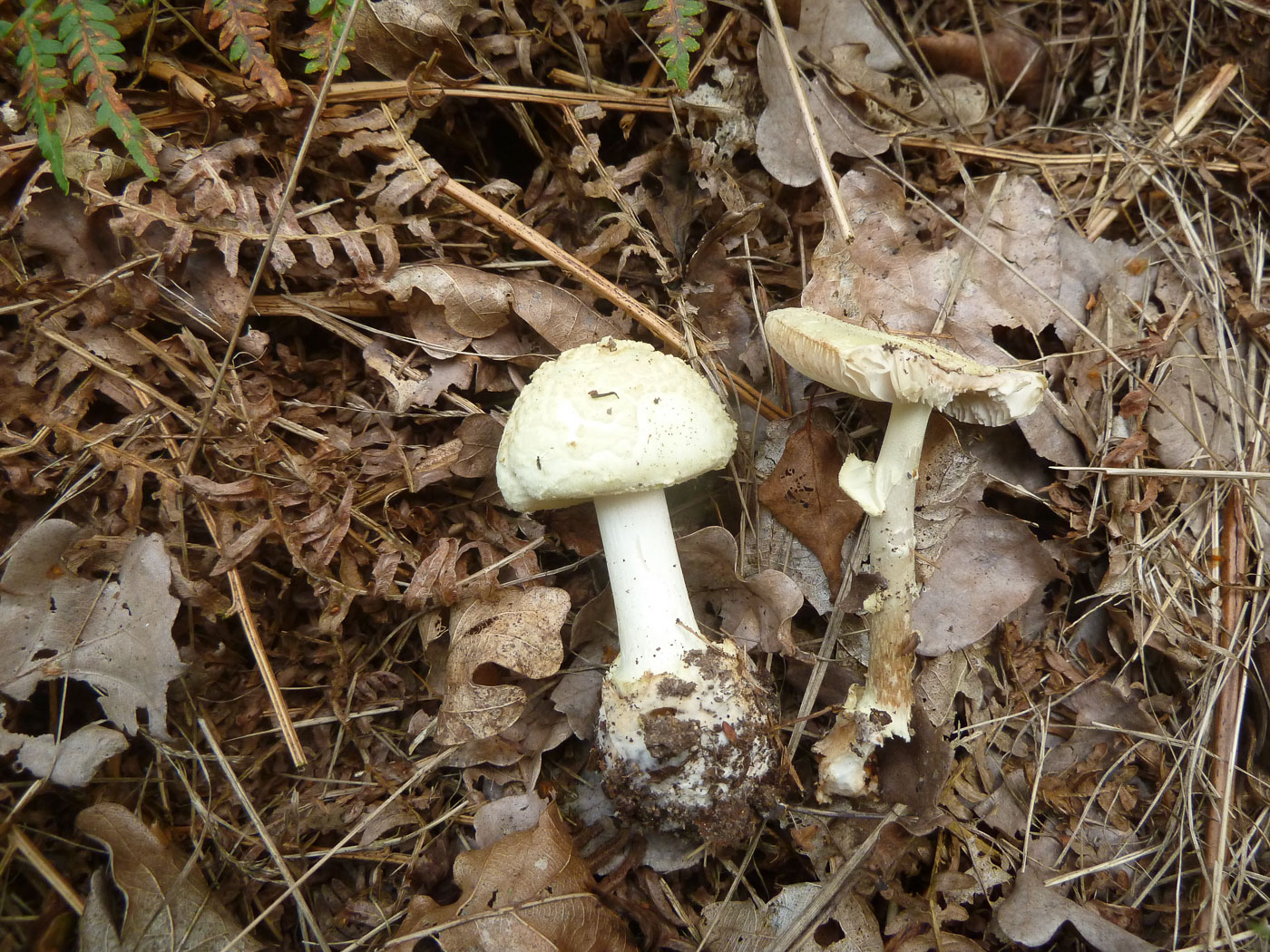 |
September 4th Amanita citrina (False Deathcap)
In the wooded edge of Stampwell Farm Jackie Ewan found one of our commonest Amanitas under Oak and Birch. Despite its rather scary name, this species rarely looks much like the genuine and deadly Deathcap - Amanita phalloides (also often quite common in our area) and in fact is much more often misidentified as the equally toxic Amanita virosa (Destroying Angel) - thankfully extremely rare around here. Important features to note: the lemon yellow cap usually with plentiful white flecks of veil and the round ball-like volva enclosing the stem base, both seen clearly here. Thirdly, if you pick it, it smells distinctly of potato peelings! Neither of the deadly species have yellow cap colours, the first being greenish though sometimes almost white, the second being white. The confusion comes with the white capped A. citrina var. alba for obvious reasons! Then the shape of the volva and the smell become diagnostic: only A. citrina has the potato peeling smell and such a regular but roughened ball-like volva - usually closed at the top; the volvas of both the other two species tend to be smooth but ragged and open at the top, furthermore both have a rather sickly honeylike smell.
|
September 3rd 2021
 |
September 3rd Laccaria laccata (Deceiver)
On a muddy bank near ponds in Brill Common Joanna found this common species which is now just starting to make an appearance (we also found it on our walk at Ivinghoe Common the following day). The left hand orange brown cap shows the colour this species starts off when fresh and damp, but note how faded the larger right hand cap has quickly become - hence its common name! There are two constant features which help avoid the regular confusion in the field the species causes: the slightly sunken cap centre but much more importantly the widely spaced pink gills seen in the central specimen here. Caps can get to about 3 cms across but it is often considerably smaller than this.
|
September 2nd 2021
 |
September 2nd Leratiomyces ceres (Redlead Roundhead)
In Salden Wood on a woodchip pile Bob Simpson noticed these medium sized brightly coloured mushrooms which were unfamiliar to him. The orange cap and grey gills together with the substrate left Penny in no doubt over its identity - a species previously and better known as Stropharia aurantiaca. Over the last 20 years or so it has come from being a rarity to very common on woodchip everywhere and was originally an Australasian species which has been imported no doubt with its substrate.
|
 |
September 2nd Lepiota cristata (Stinking Dapperling) 
At Stampwell Farm in one of the paddocks Jackie Ewan found these two small Dapperlings and instantly put one to her nose to check for the unpleasant pervasive rubbery smell of the species. She also checked the spores because there are other quite similar Dapperling species which have this smell to a lesser extent. This is a common species found in woodland (often along paths) as well as other grassy areas, the cap getting to about 3cm across typically with a brown centre but elsewhere whitish with brown scales, the gills are white and free as in all of this genus, and the stem has a ring.
|
September 1st 2021
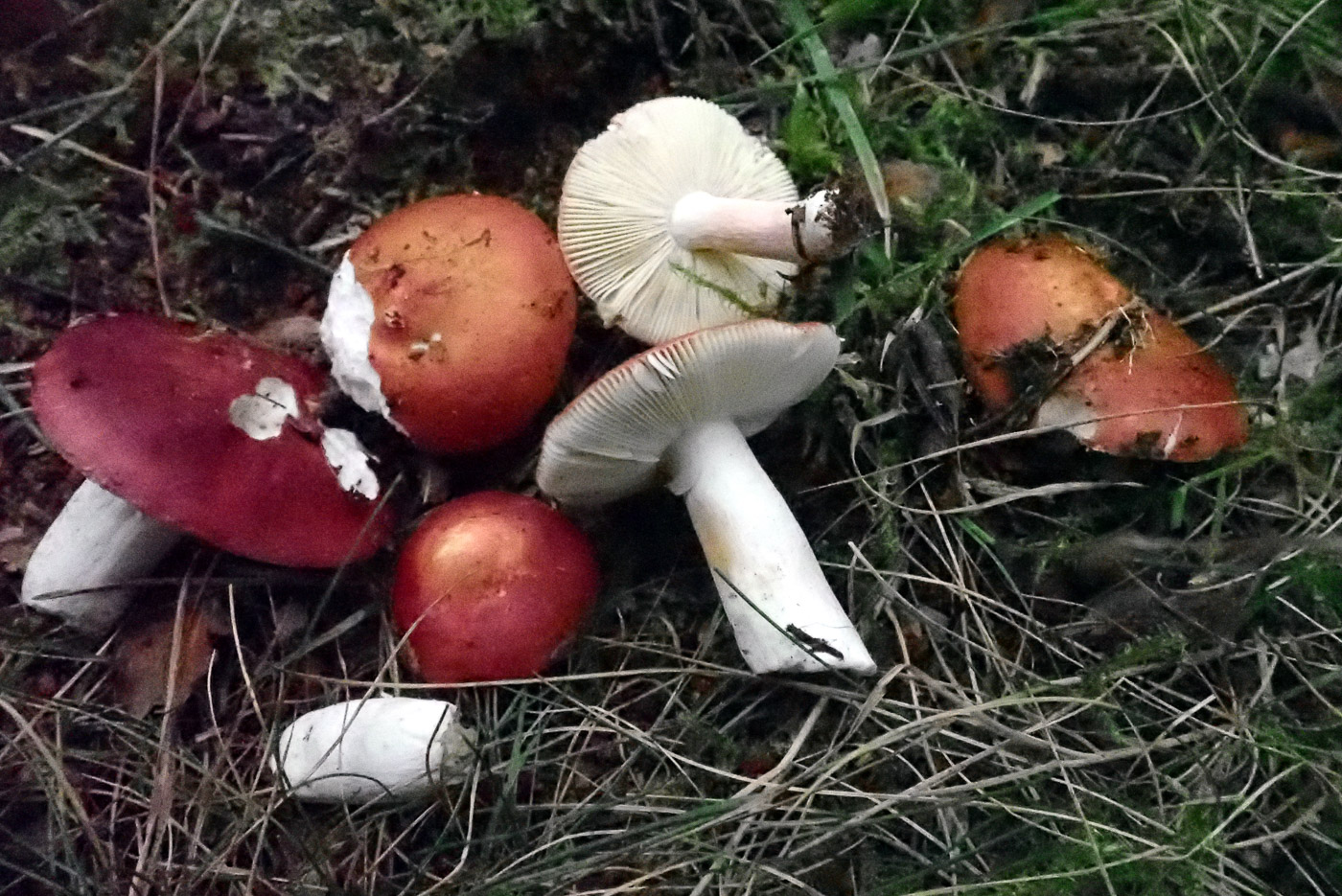 |
September 1st Russula velenovskyi (Coral Brittlegill)
Under Birch in Burnham Beeches Penny found several specimens of this quite common species dotted about, then brought them together to show how the cap colour can vary. It is a small to medium species, the cap often with a paler and slightly domed orange/coral centre but it can also be much brighter red as seen on the left. The gills are pale cream and the stem usually white though sometimes with a faint pink tinge - just visible in the top specimen. (See also the collection dated July 19th for comparison.)
|
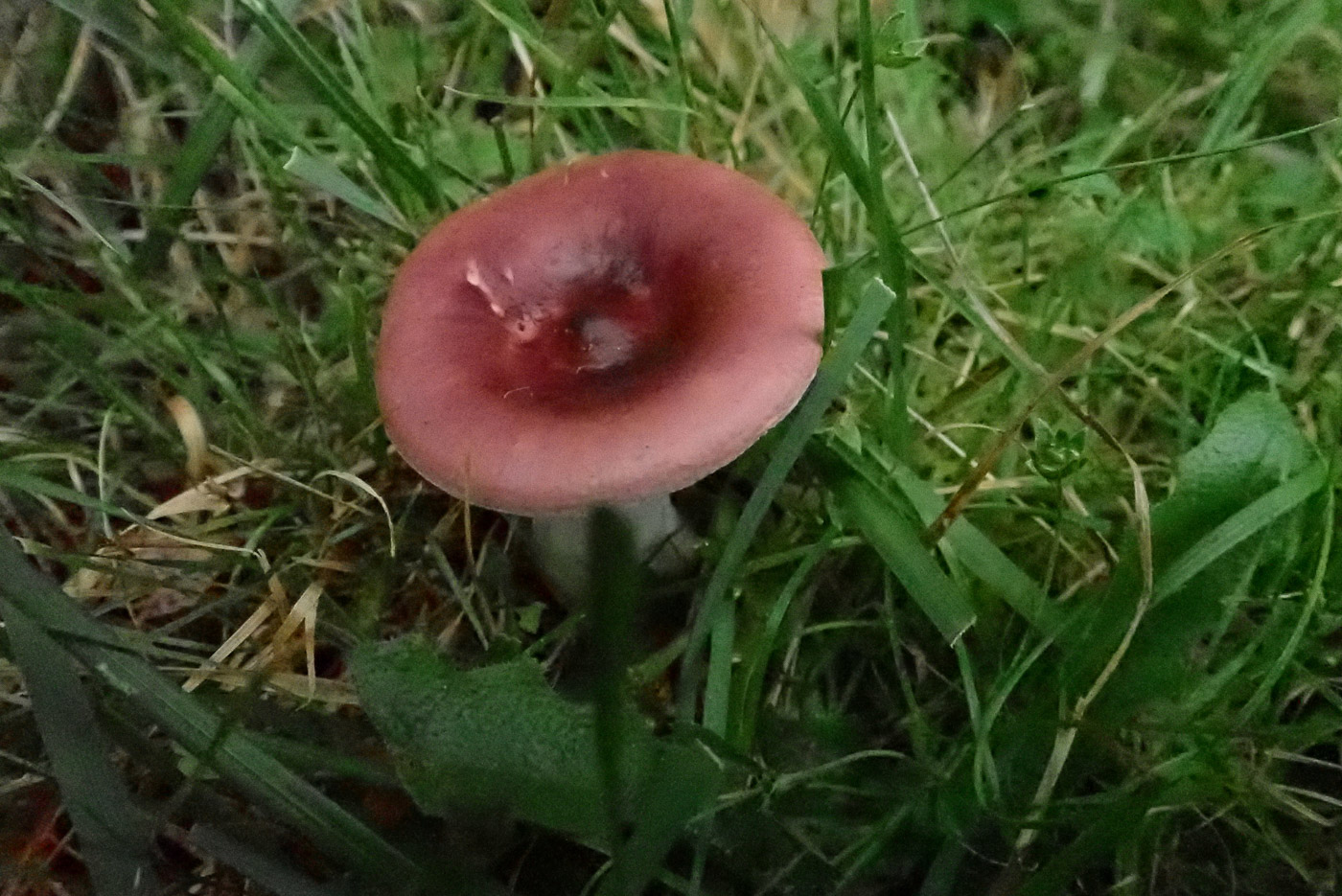
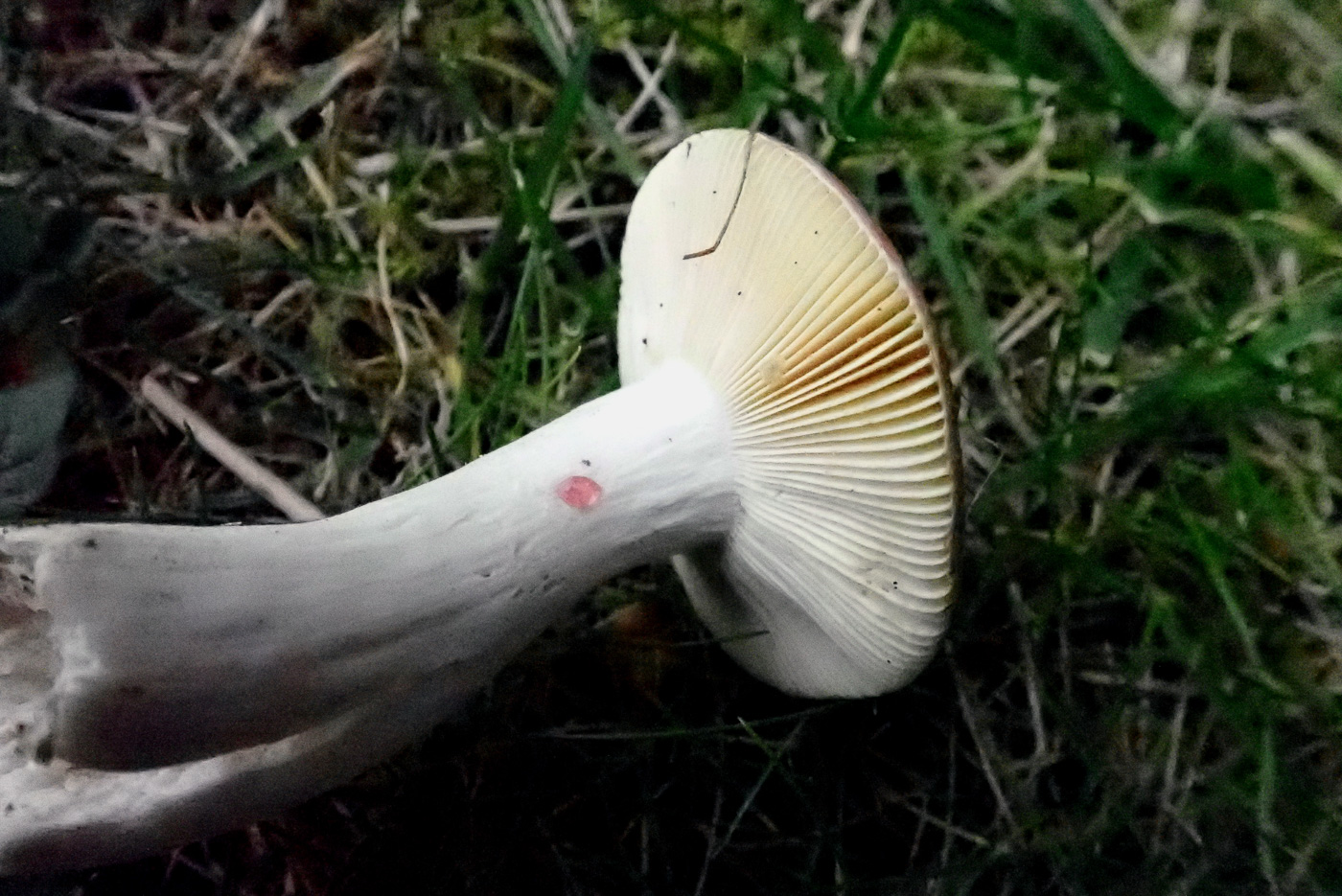 |
September 1st Russula caerulea (Humpback Brittlegill)
Under Pine in Burnham Beeches Penny found just this one specimen today. Only occurring under Pine it is not that common but quite an easy one to recognise having a purplish red cap, darker in the middle where distinctly umbonate (sunken but with a clear bump in the middle). The gills are pale at first but become primrose yellow as it matures - photo 2 shows this just developing. Also note the pink spot on the stem here where a drop of Sulphovanillin has been added (at home afterwards). This is one of a few species with this reaction to the chemical but the only one having a purplish red cap and found under Pine.
|

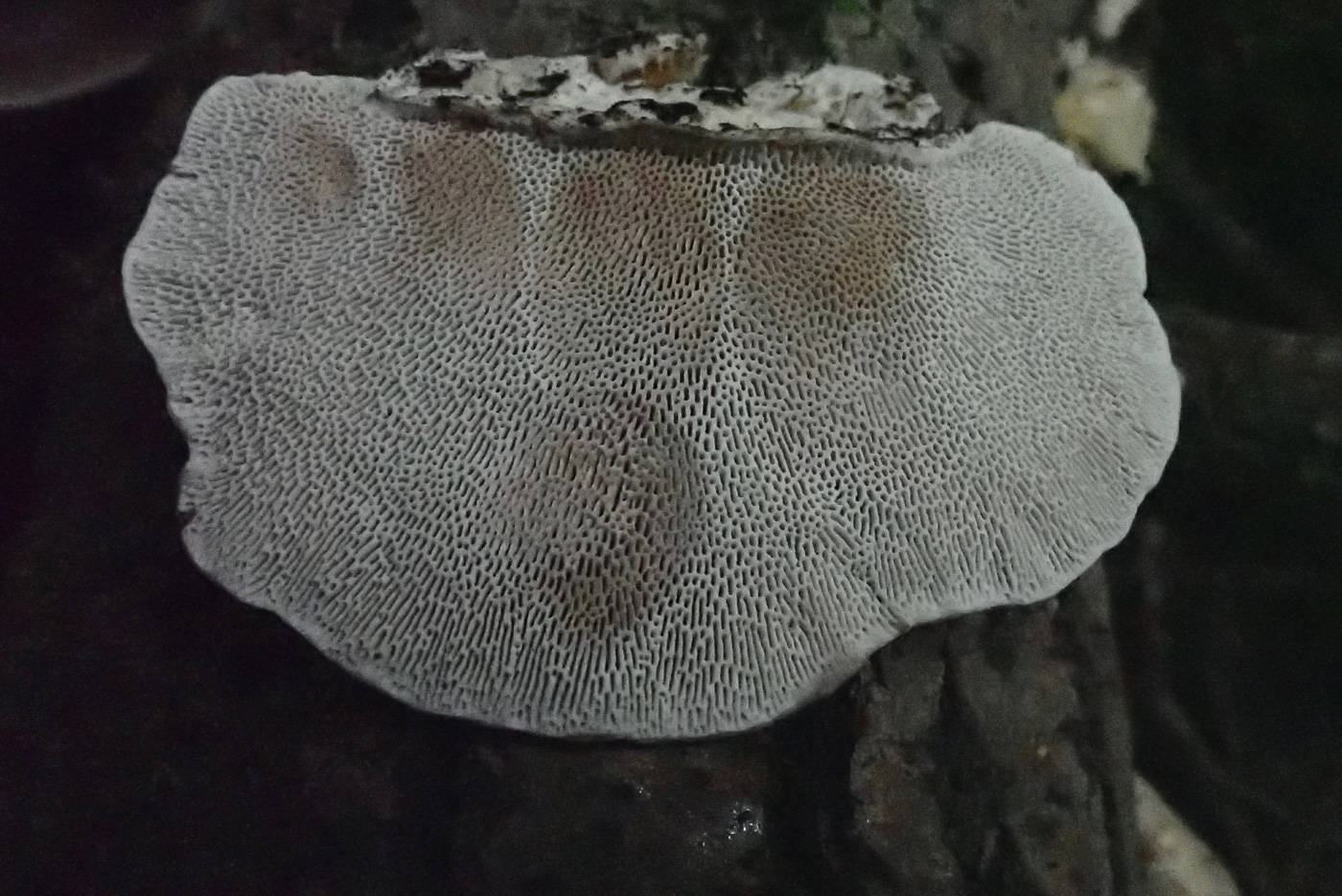 |
September 1st Daedaleopsis confragosa (Blushing Bracket)
In a somewhat disappointingly dry Burnham Beeches Penny struggled to find much fresh material but this cluster of brackets on a sawn off Birch branch obliged. This is a very common bracket usually but not exclusively on fallen Birch or Willow, though it can confuse because though pale when fresh as here it turns much darker, often ending up deep red. It is often evenly semicircular (occasionally entirely circular) and the pores underneath (photo 2) are somewhat elongated tending towards mazelike. Pale when fresh and young, this is the stage when the pores 'blush' pink when pressed, clearly seen in photo 2, but when older and drier this trick no longer works and they are just brownish and unchanging.
|
August 27th 2021
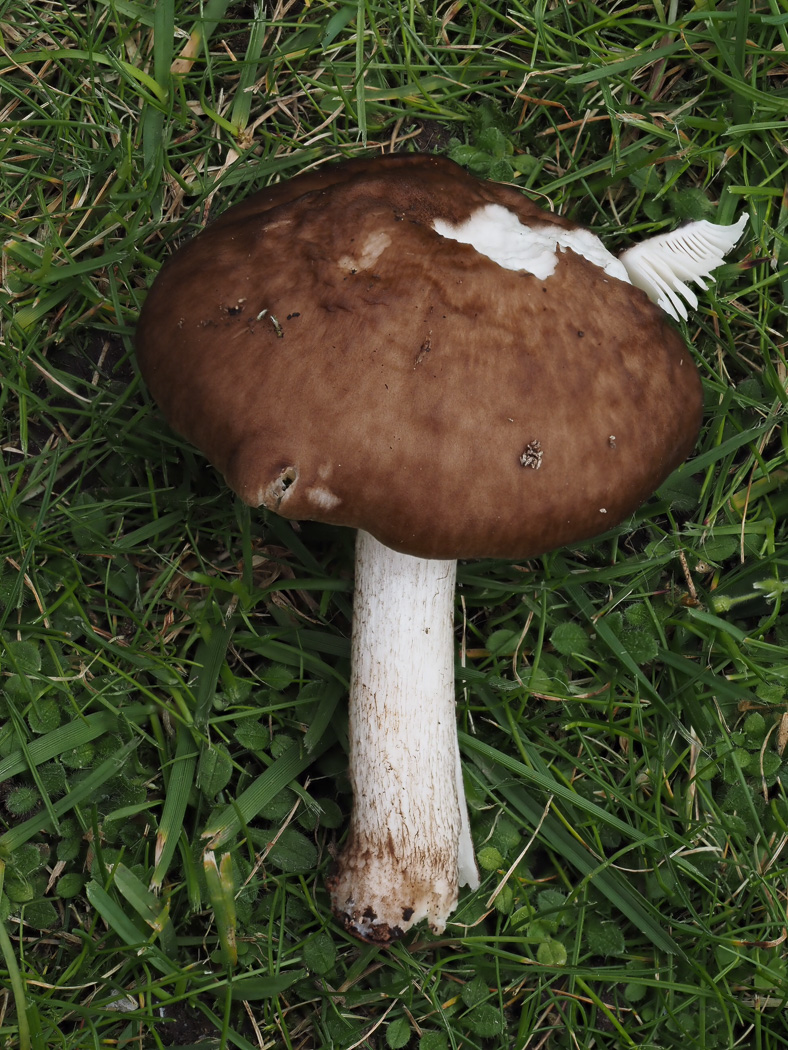
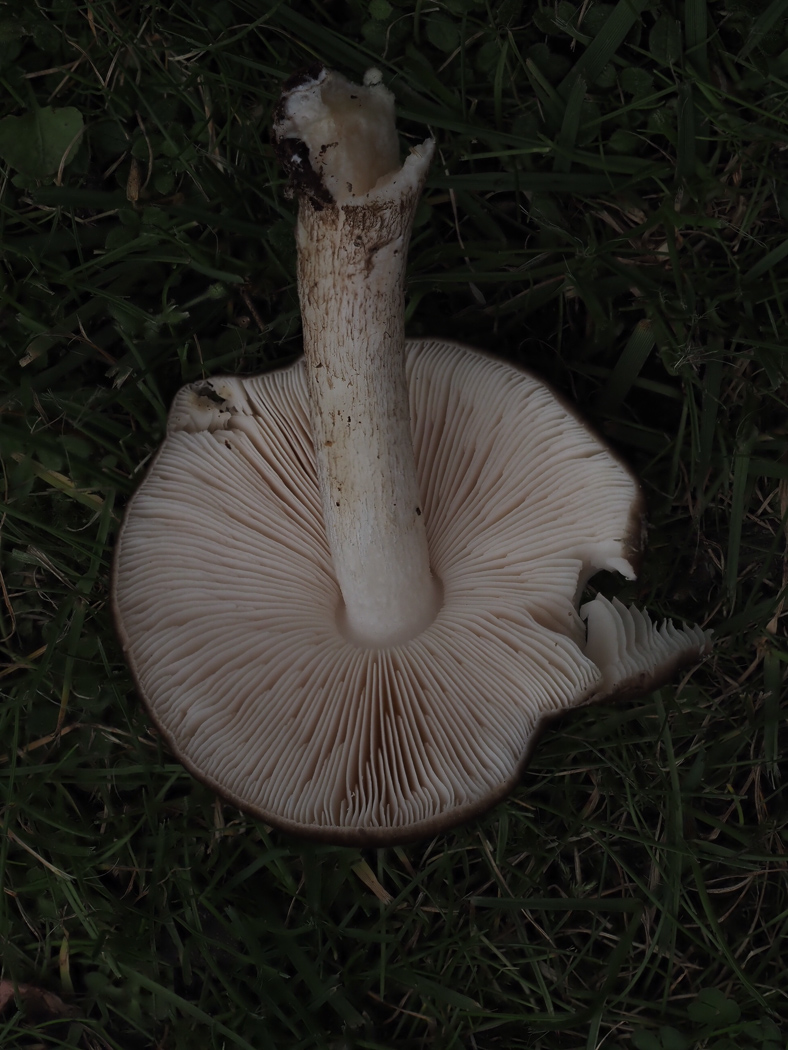
 |
August 27th Pluteus cervinus (Deer Shield) 
In Naphill Common Claire Williams found this common brown mushroom growing on fallen Beech and, being unsure of the genus, sensibly took a sporeprint (photo 3). On receiving the photos Penny suggested Claire look at the gill edge with a scope to check for the distinctive cells of this particular species, which she successfully acheived! There are many similar brown capped mushrooms but only this genus has this combination of characters: on wood, gills crowded and turning pink (see photo 2), sporeprint distinctly pink brown as seen here. This is one of the larger Shields, getting to 10 cm across or even more (especially when found on woodchip piles).
|
August 25th 2021

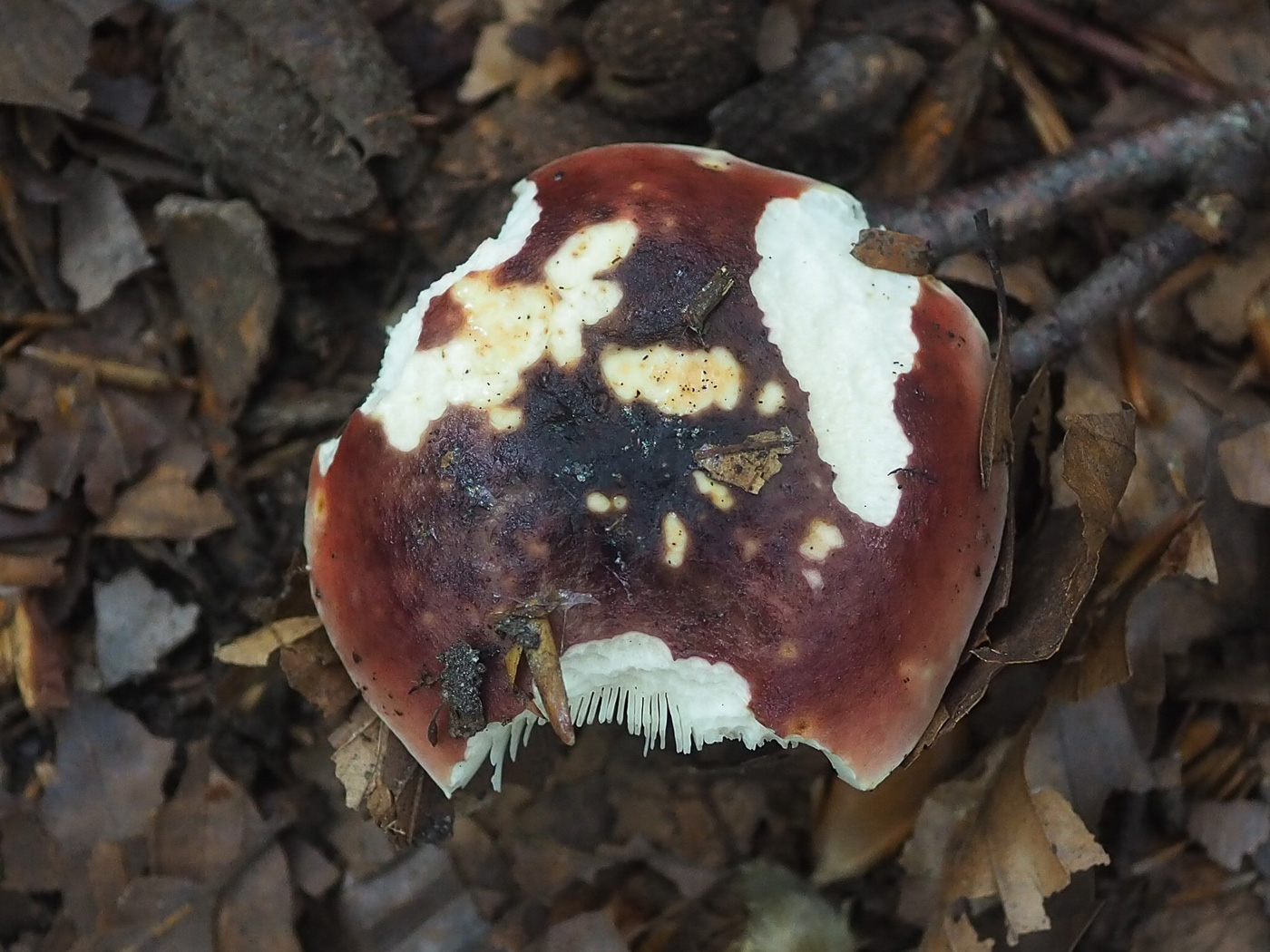
 |
August 25th Russula atropurpurea (Purple Brittlegill)
In Downley Common Wood John Catterson found this singleton of one of our commonest Brittlegills under mixed deciduous trees. About 6 cm across, it is one of our darker red Brittlegills (having in fact only a hint of purple despite its name) but always darkens to nearly black in the centre. It often has yellow blotches (seen in photo 2) - these sometimes predominating and making identification confusing, and the gills are almost white as is the firm stem. Clearly a favourite with squirrels and mice, it is unusual to find an cap without nibble damage!
|
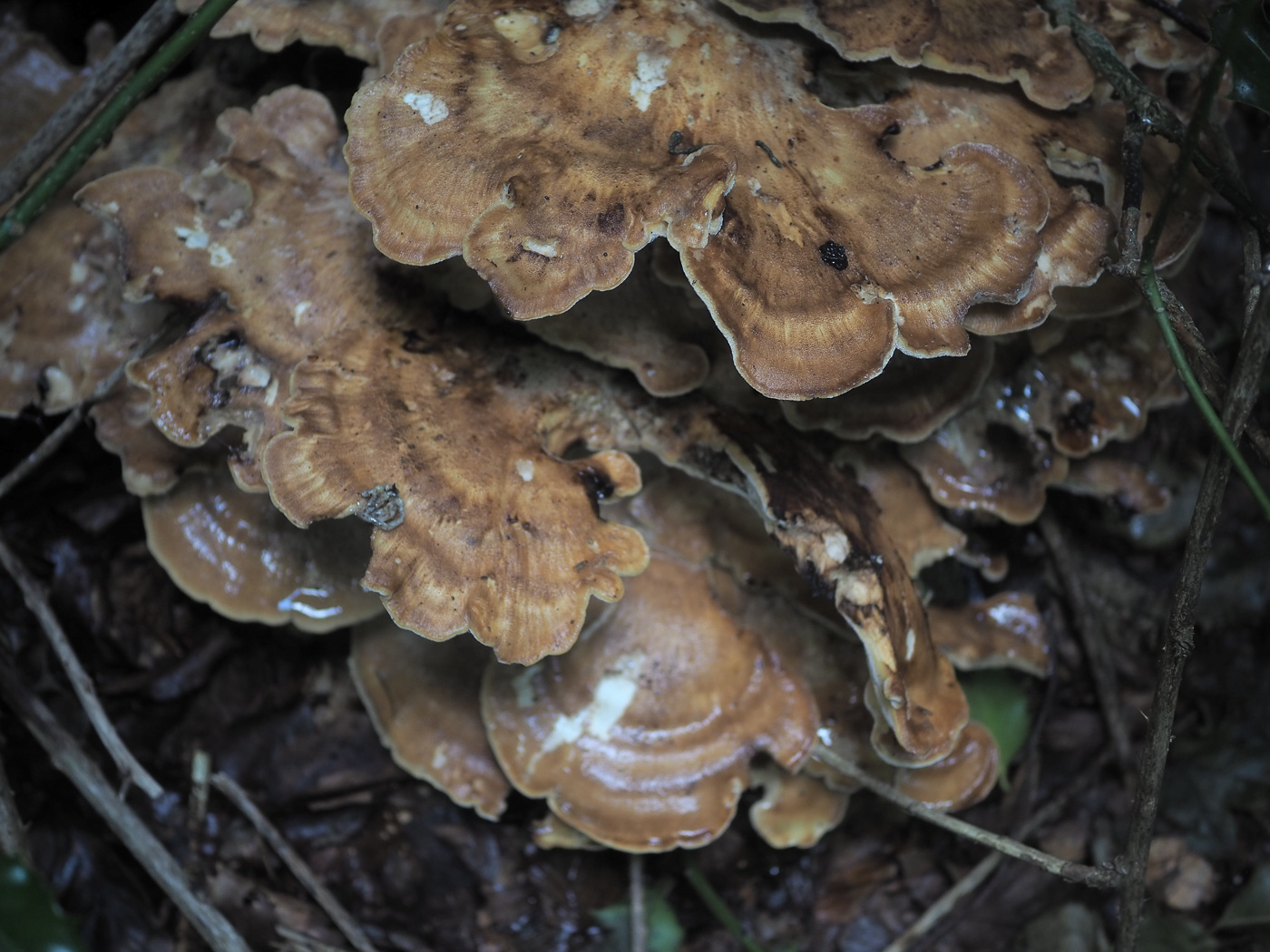 |
August 25th Meripilus giganteus (Giant Polypore)
In Downley Common Wood John Catterson saw this huge bracketlike fungus at the base of a Beech tree. This is quite a common species and is well named; it favours Beech and can sometimes be found with its tiers completely surrounding a living trunk covering several square feet - quite a site! When young and far smaller its identity can be much less obvious, but break off a piece and keep it for 15 minutes or so when the damaged underside will start to blacken - a sure sign to confirm it.
|
August 23rd 2021
 |
August 23rd Neobulgaria pura (Beech Jellydisc)
In Naphill Common on a fallen Beech trunk Peter Davis found this Ascomycete just developing. It likes to grow on the bark (only on Beech) and can get to about 5 cm across when mature and more cuplike but here was under 1 cm across. It has a soft gelatinous granular texture, always being much paler than the quite similar Ascocoryne sarcoides - also in Beech bark and gelatinous but considerably smaller.
|
August 21st 2021

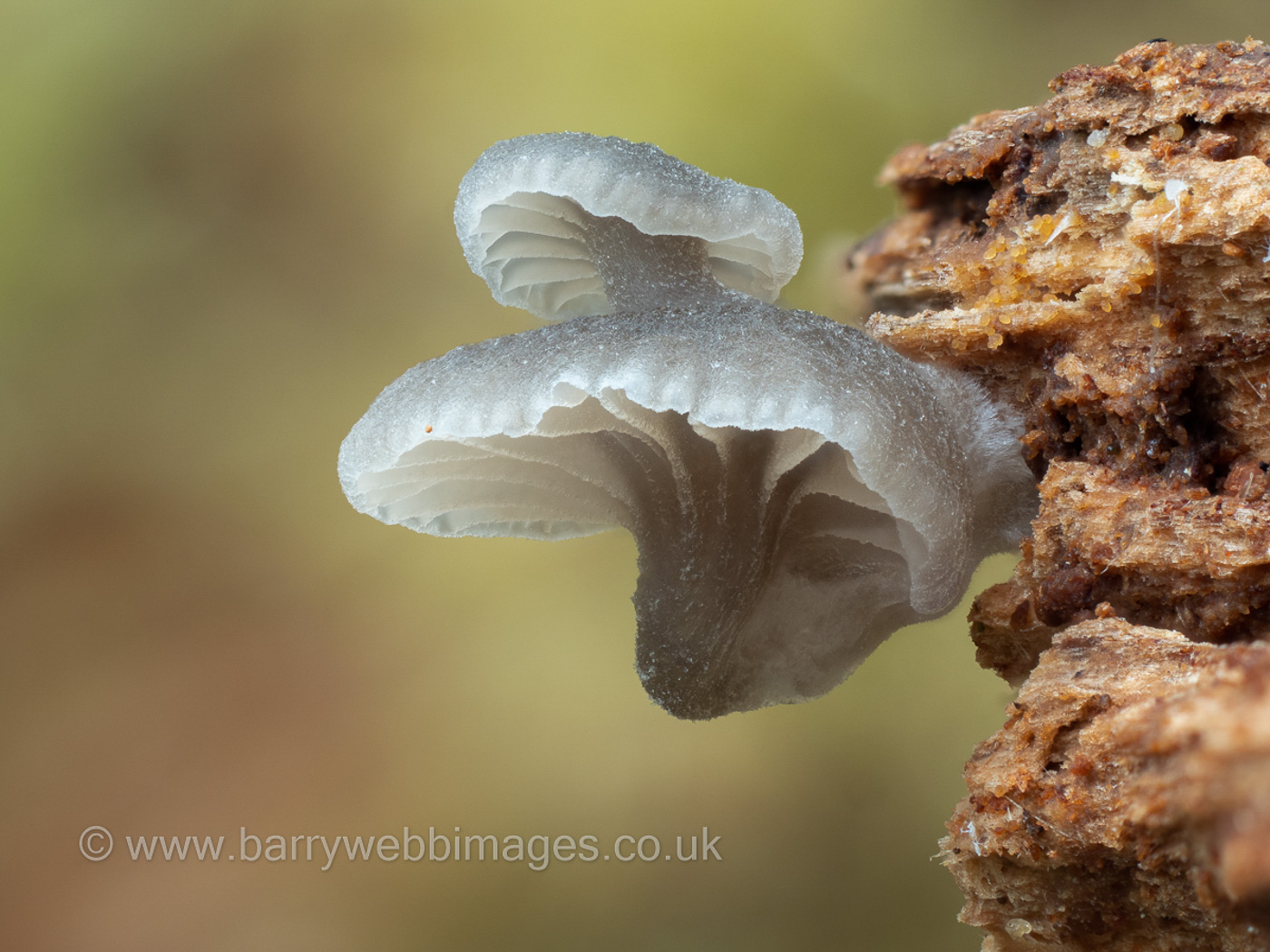
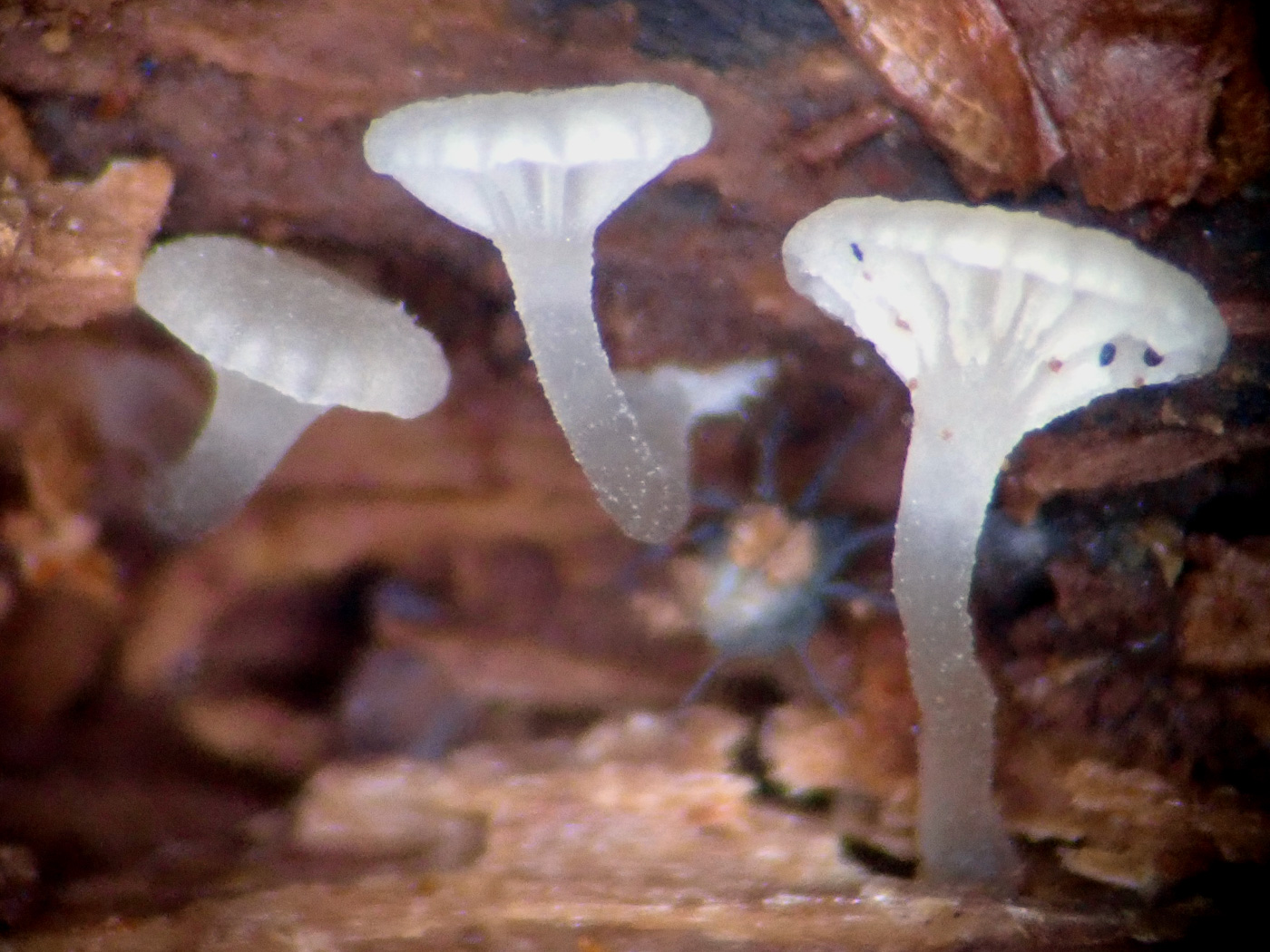 |
August 21st Hemimycena delectabilis (a tiny Bonnet with no common name)
From Burnham Beeches Barry Webb collected some small bits of soggy bare fallen Pine to incubate in his greenhouse in the hope of finding new Slime Moulds. What should pop up but these miniscule Bonnets only a very few mm tall! They kept coming over the next week or so enabling him to hand the wood over to Penny who was able to make the identification from the slightly decurrent widely spaced gills and rather greyish appearance together with microscopic and other characters. The species most often occurs on dead herbaceous stems but is also known from rotten wood and is not commonly recorded (maybe due to its size?); we have just three previous county records. (Apologies for photo 3 - Penny's)
|
August 20th 2021
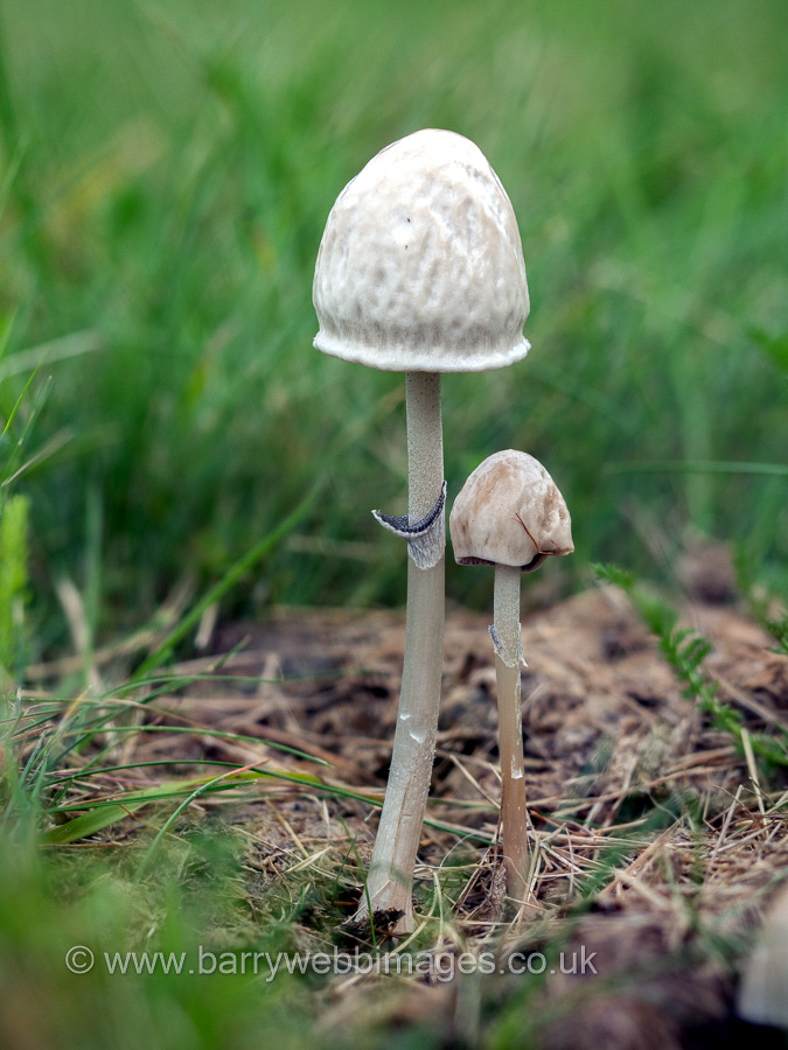 |
August 20th Panaeolus semiovatus (Egghead Mottlegill)
On dung in Gray's Field adjacent to St. Giles Church in Stoke Poges Barry Webb found this pair. Though gills are not visible, their very dark colour is not in doubt having dropped onto the upper surface of the clearly ascending ring, thus confirming the identity of the species. This is the only Mottlegill to have a ring on the stem, it is confined to dung and retains its distinctive rounded shape through life - all useful characters though this is a somewhat pale example and is suggestive of another similar dung species, P. papilionaceus, which, however, has frilly veil remnants on the cap margin - compare with the photo dated July 13th. The presence or absence of a ring is conclusive. |
August 19th 2021
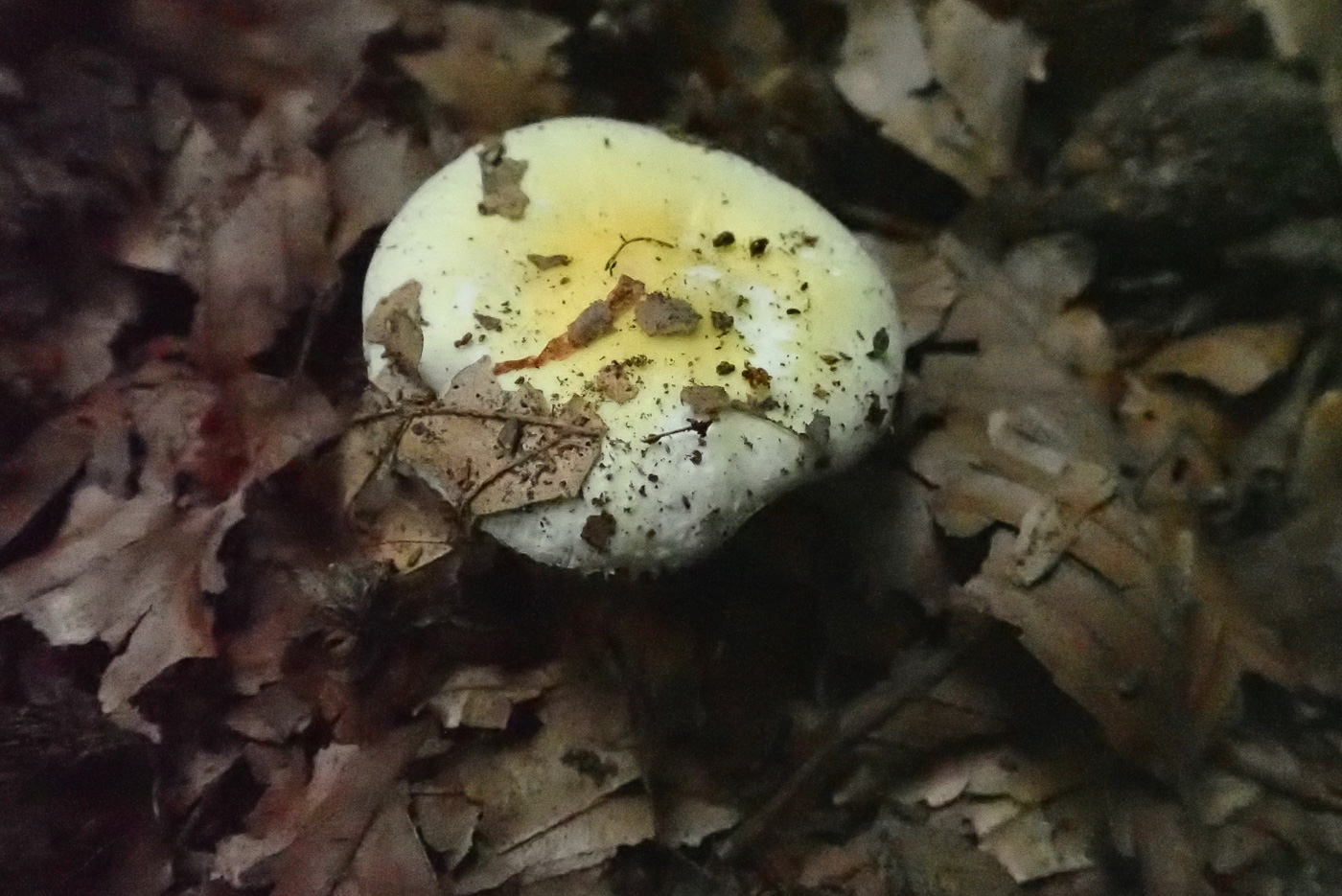
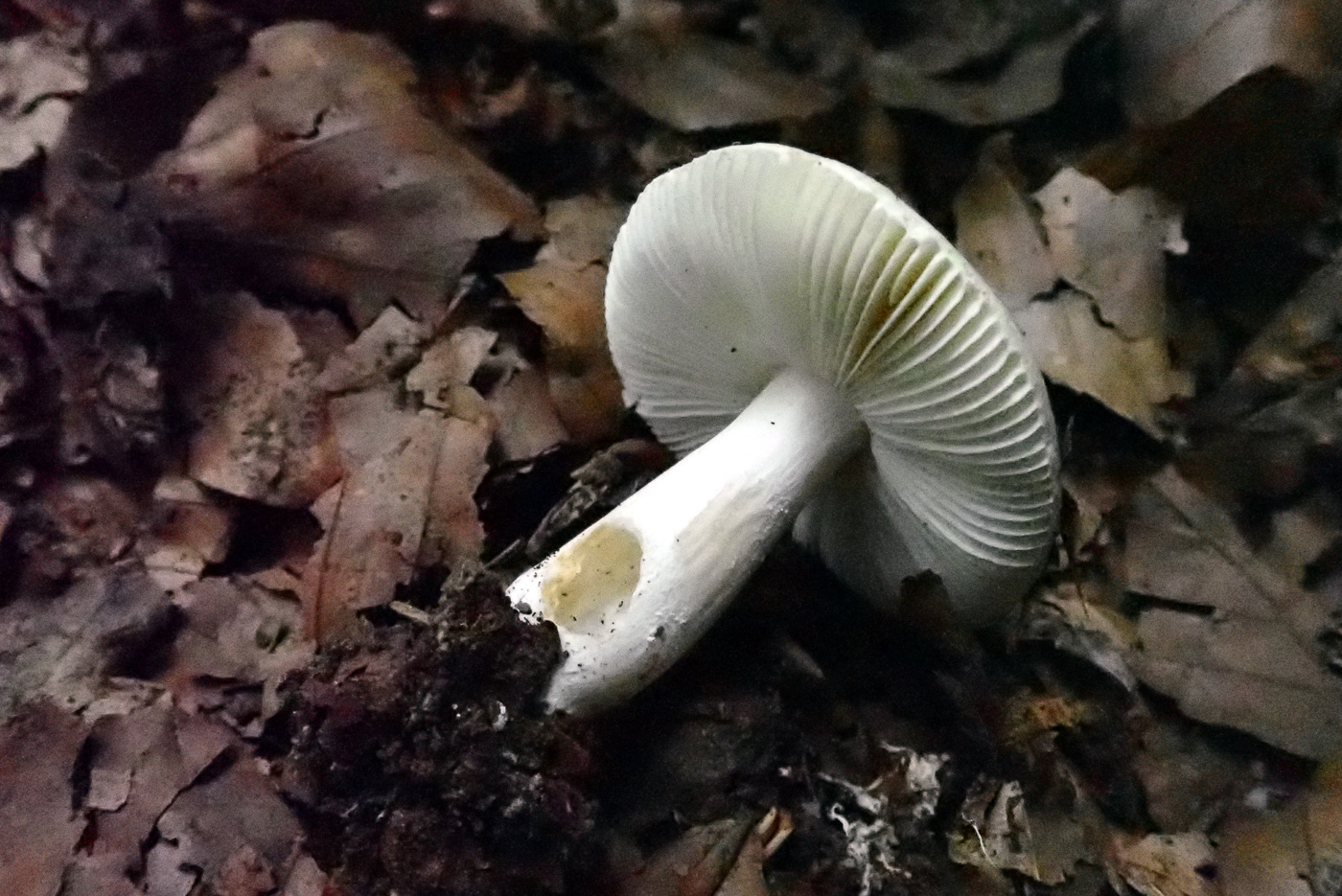 |
August 19th Russula solaris (Sunny Brittlegill) 
In soil amongst litter under Beech in Kings Wood Tylers Green Penny was delighted to find this somewhat dried up singleton of a species considered quite a rarity in many areas of the country though we do have a handful of records from the south of the county. The species favours calcareous soil under Beech and has a distinctive bright yellow cap, the colour always darker and more intense in the centre, and the gills are a pale cream belying the distinctly cream spore print. Our records reflect its early fruiting habit, mainly from July to September.
|
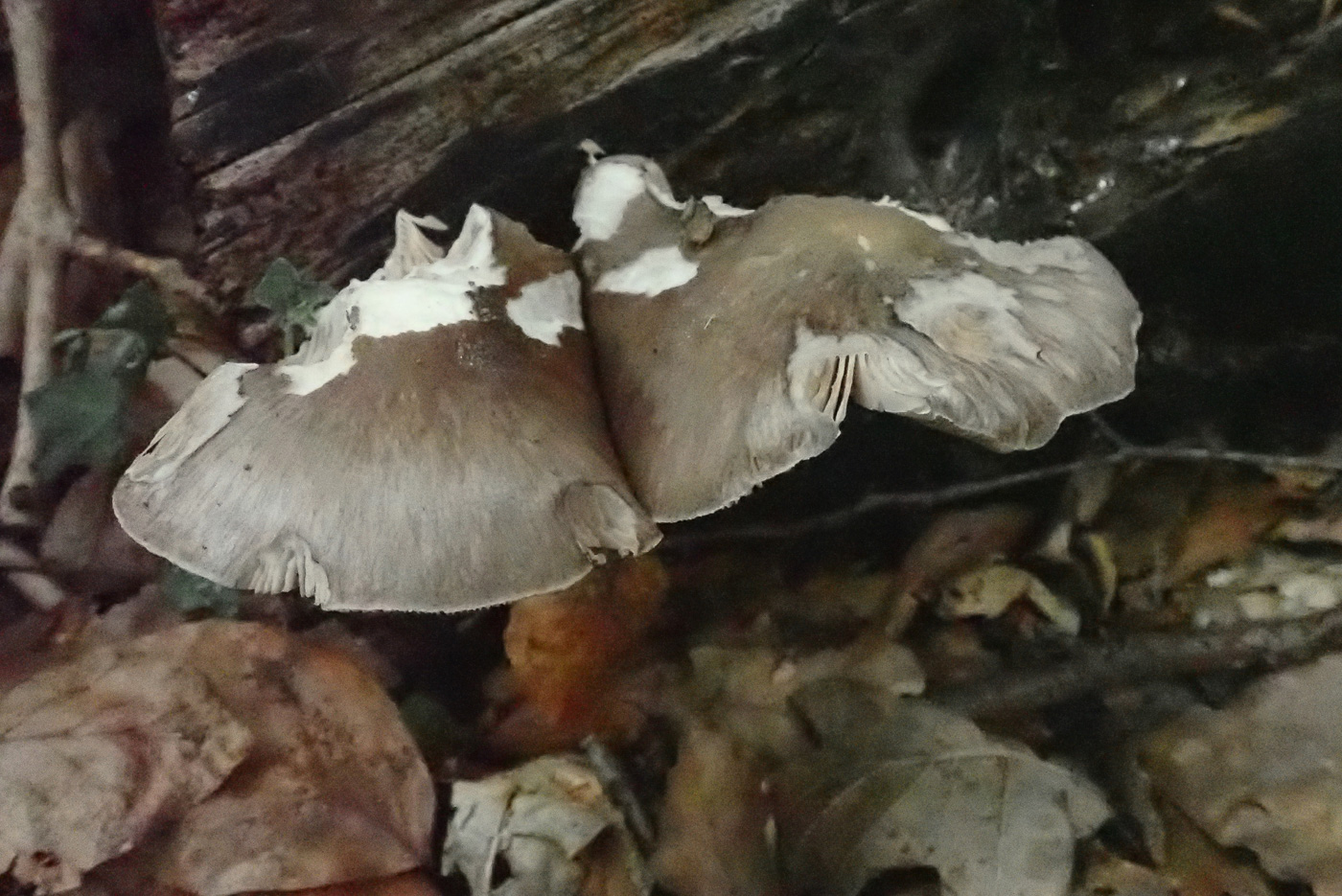
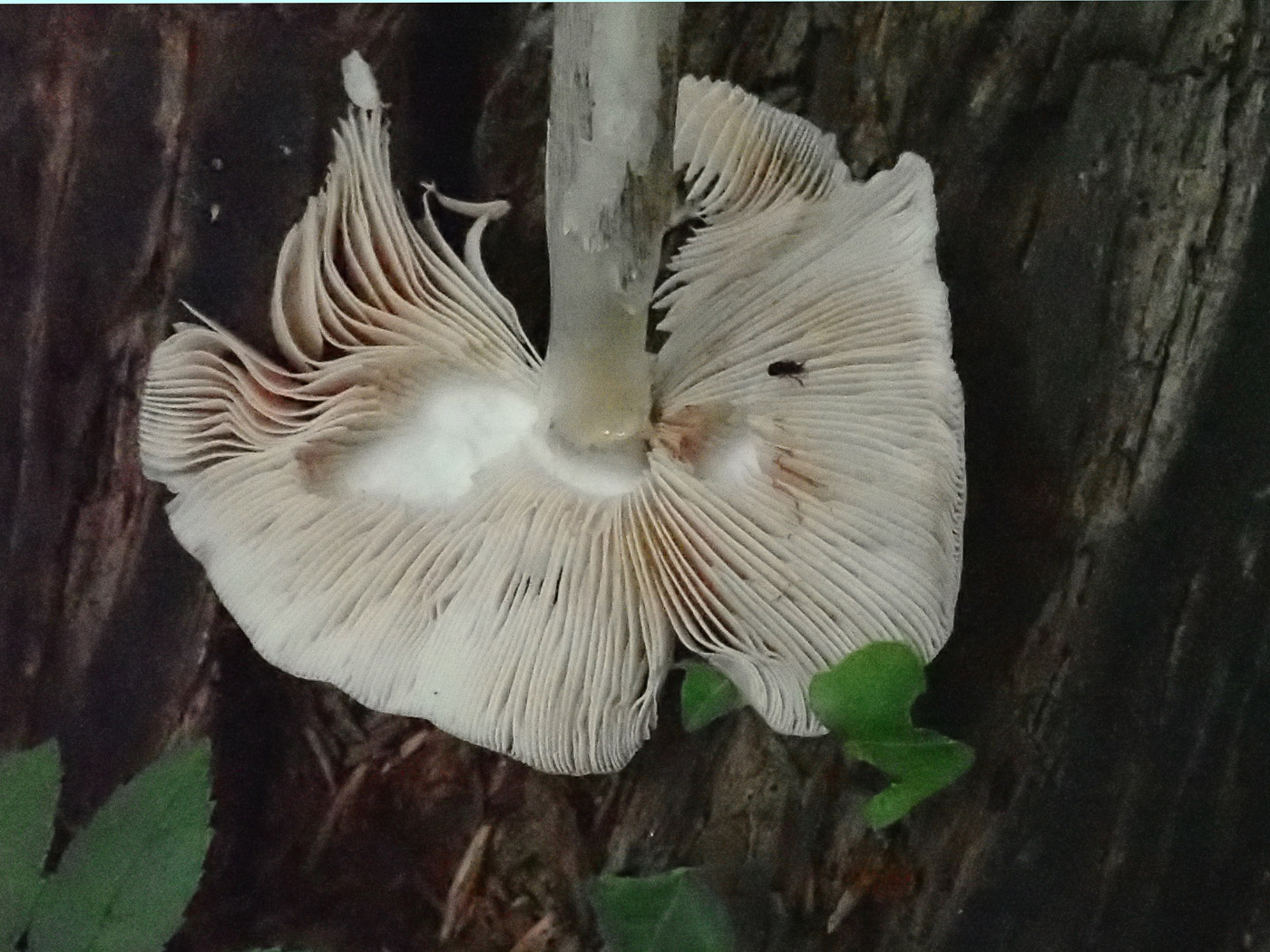 |
August 19th Pluteus cervinus (Deer Shield)
On fallen Beech in Kings Wood Tylers Green Penny noticed two adjacent caps and turning one over (photo 2) quickly confirmed the genus: crowded gills which start pale but soon turn pink, also the gills are free (ie not adjoined to the top of the stem). Despite having been munched a bit this specimen still demonstrates both these important features. The smooth midbrown caps were about 5 cm across, too big for one of the smaller Pluteus species and typical of this the commonest member of the genus, all species of which are found on wood, woodchips or (less often)submerged roots.
|

 |
August 19th Polyporus leptocephalus (Blackfoot Polypore)
On a deciduous stump in Kings Wood Tylers Green Penny found a nice cluster of this species varying in size from about 2-6 cm across and initially looking like an Agaric species having a stem and a pale cap. Turning one over revealed the somewhat small whitish pores underneath which in photo 2 can be seen to run down the upper stem. This the commonest species of Polypore always has black at the stem base providing a useful feature with which to separate it from others.
|
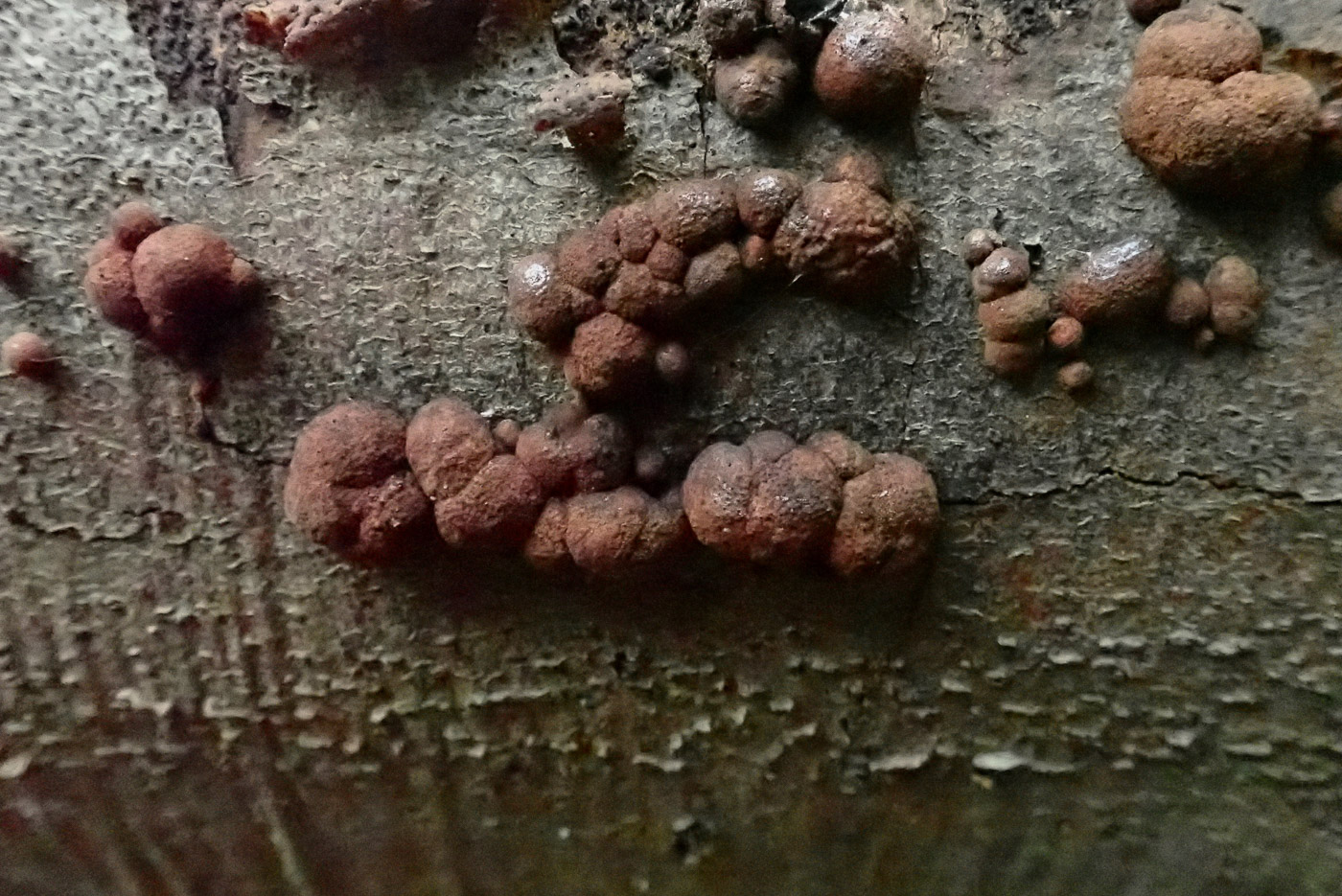 |
August 19th Hypoxylon fragiforme (Beech Woodwart)
In Kings Wood Tylers Green Penny saw plenty of fresh swarms of this very common Ascomycete on fallen branches of Beech. At this stage they are typically bright cocoa brown but later become much darker to almost black. They can get to about 1 cm across and the surface is roughened with punctate tiny openings (reminiscent of the surface of a strawberry, hence the common name) through which the spores are expelled. The species is confined to Beech, so if you find similar warts on different wood you have a different species.
|
August 18th 2021
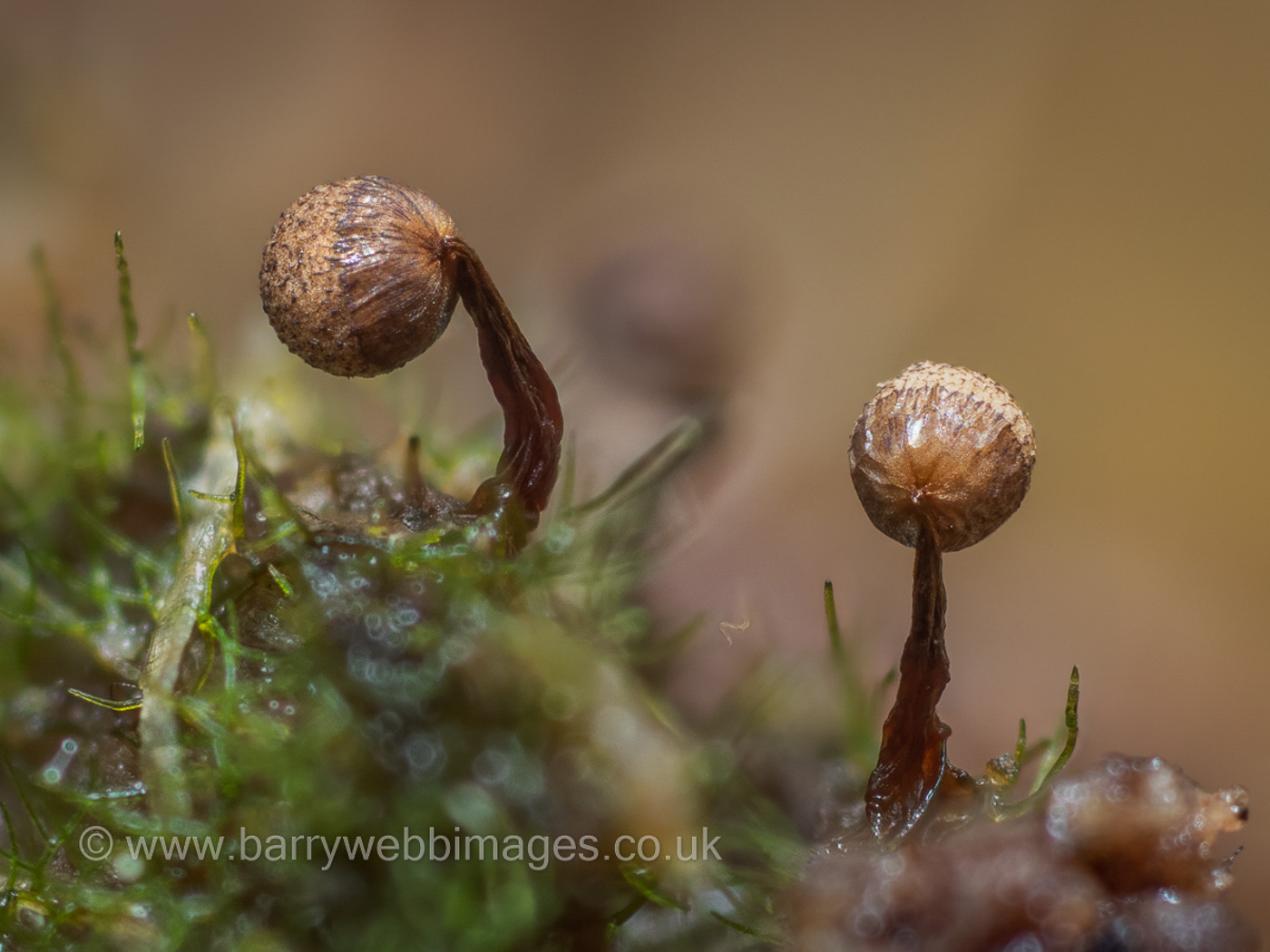
 |
August 18th Cribraria persoonia (a Slime Mould with no common name)
In Burnham Beeches on fallen Pine Barry Webb found this species, new to the county and with not many British records despite being described as common in the literature. (The determination came from online and is therefore not 100% but it is hoped that the material will be checked with a scope to confirm.) This is another tiny and delicate species no more than 1.5 mm high with a tapering brown stalk and having a wrinkled cup at the base of the sporangia being about a third of the whole.
|

 |
August 18th Xerocomus subtomentosus / ferrugineus (a Bolete with no common name)
In Wotton Park Estate Joanna Dodsworth and Derek Schafer found this singleton Bolete and though it appeared at first glance very similar to some other common boletes (e.g. Xerocomellus species) the reticulate markings on the stem quickly eliminated them, however. Penny is taking a risk here because the photos were named X. subtomentosus but she strongly suspects that it is in fact X. ferrugineus! The two are extremely similar and equally variable, but the latter often has a coarse brown network on the stem, the yellow pores tend to become dirty olivaceous, furthermore the flesh when exposed to air (seen here where the cap has been nibbled) remains white unchanged - all features visible in Joanna's two photos. Microscopic differences are slight so not that much help. The two species are clearly distinct when sequenced but without that evidence we cannot be absolutely sure which of the two this specimen belongs to. Apparently X. ferrugineus - though with fewer records - is the commoner of the two in Britain. Mycology doesn't seem to get any easier!
|
August 17th 2021
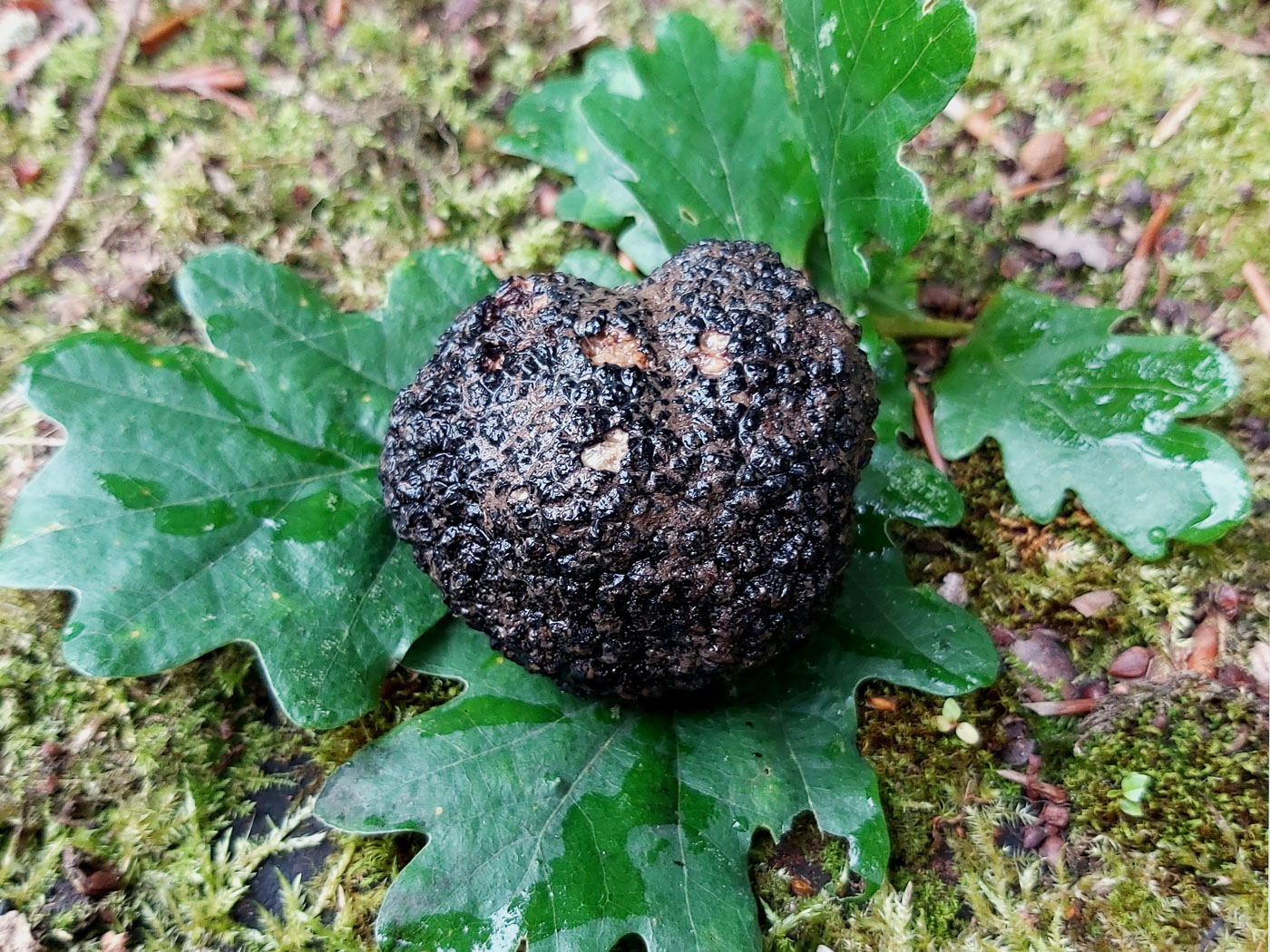
 |
August 17th Tuber aestivum (Summer Truffle)
In Jordans village in soil under Oak Jesper Launder uncovered this nice specimen of a revered species for those who enjoy eating fungi! Apparently fruiting in this spot a month later than in previous years, the species is hardly ever reported in the county (we have just one previous record) but is probably not at all rare, having a preference for calcareous soil under both Beech and Oak - a habitat in plentiful supply! Tubers belong with the Ascomycetes and this species can get to 7 cms across but remains submerged in soil / litter therefore hidden unless one deliberately looks for it or detects its delicious nutty sweet smell!
|
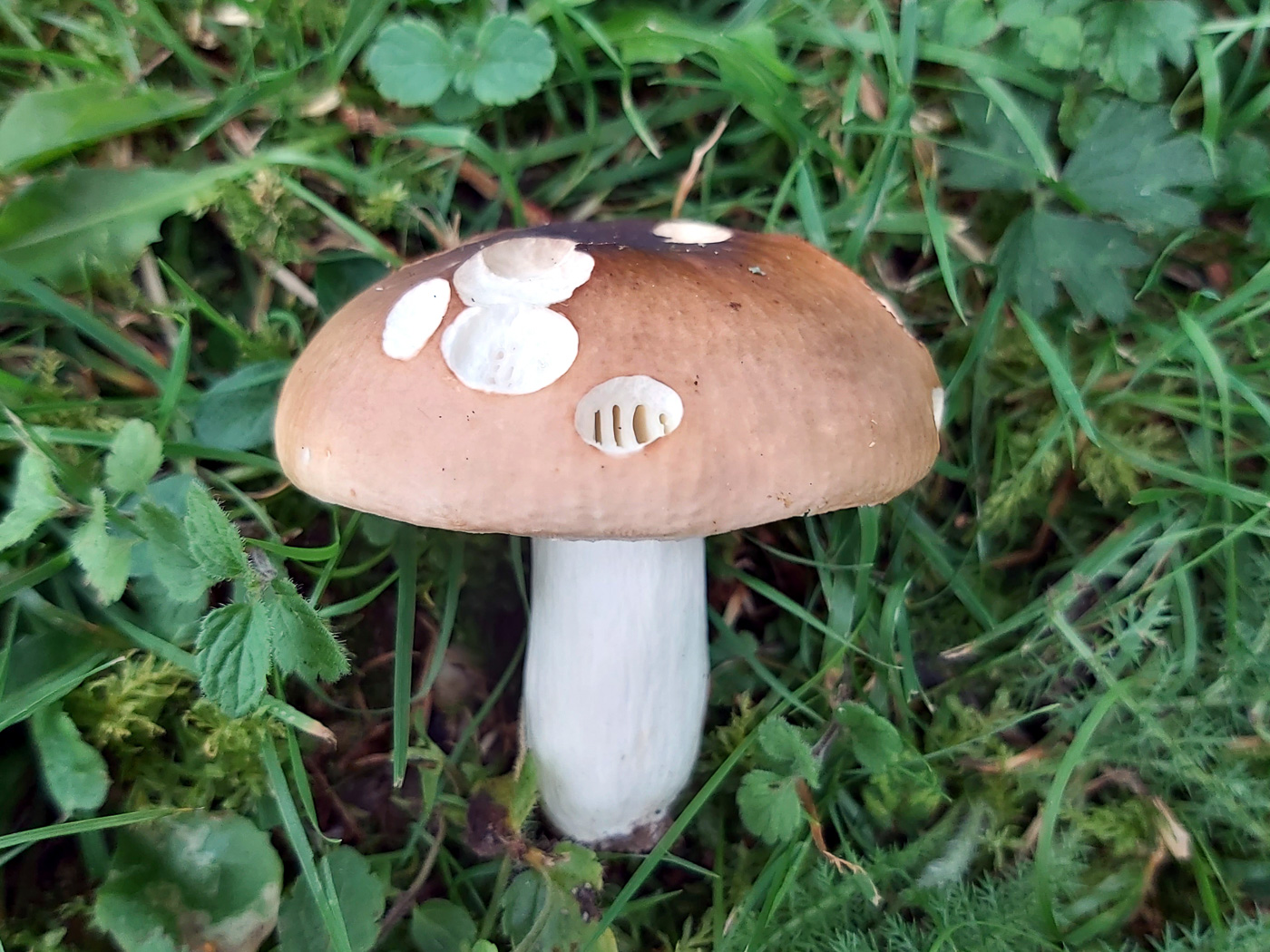
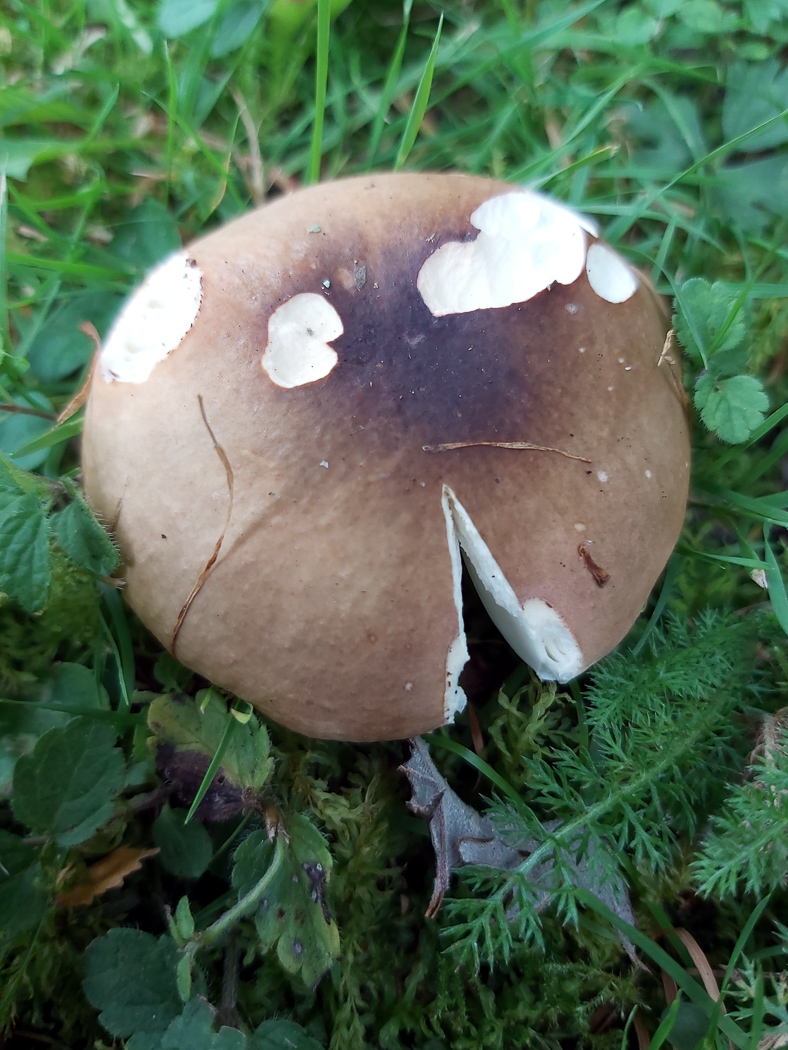 |
August 17th Russula graveolens (a Brittlegill with no common name)
In Jordans village under Oak with Willow and Birch nearby Jesper Launder found a singleton Russula which looked familiar and once he'd recalled the species he immediately put it to his nose and detected the telltale strong smell of cooked crab / fish! The species is one of several belonging to the Xerampelina group of Brittlegills, all of which develop this smell and also have a unique colour reaction on the stem when rubbed with a crystal of ferrous sulphate: instead of the normal dirty rust, they turn dark green after a few seconds, then almost black. Probably the commonest of this group in our area, it is found under Oak and has a cap colour not unlike R. vesca (see July 12th for comparison) but with browner tints, also a much darker sporeprint and very different reaction with a crystal (not shown here) from that species.
|
August 16th 2021

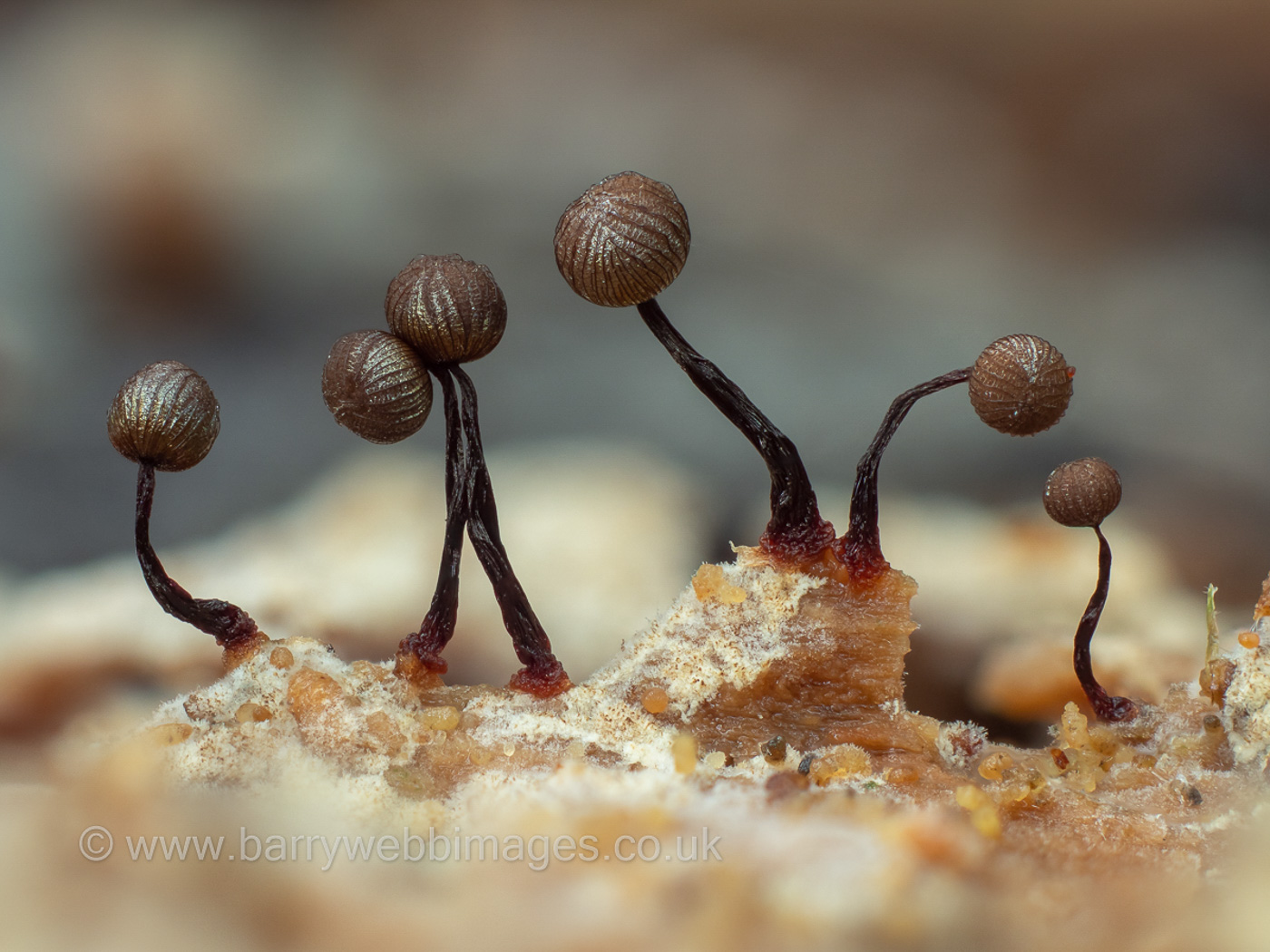
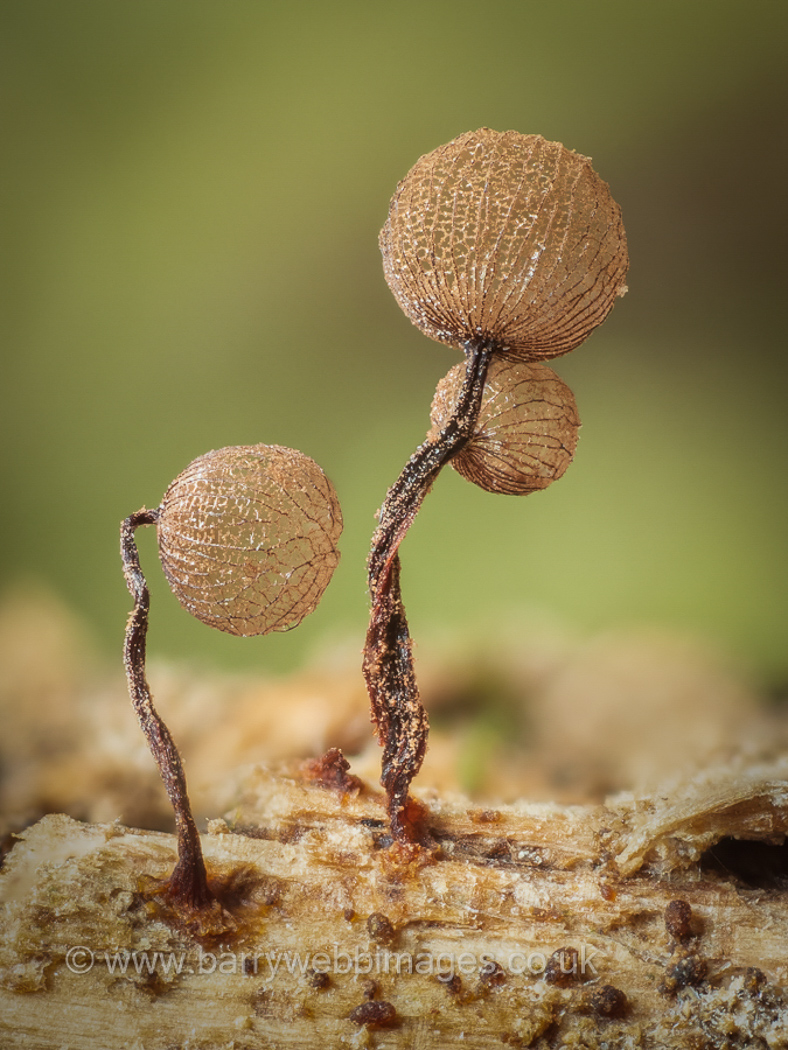 |
August 16th Cribraria mirabilis (a rare Slime Mould with no common name)
On fallen rotting Pine in Burnham Beeches Barry Webb found these rare tiny little beauties, a species with under 10 national records and new to the county. The identification was verified from Barry's photos by Norwegian expert Edvin Johanssen. Only up to 1.5 mm tall and 0.8mm wide, it is similar to C. cancellata lacking a cup and having a cage of longditudinal ribs but is irridescent in early stages (photos 1 and 2). (There seems to be some confusion over previous records, Edvin informing Barry that the last record was UK expert Bruce Ing's from Bucks. However, our national database shows that record was from Scotland with others after it, none from Bucks.)
|
August 15th 2021
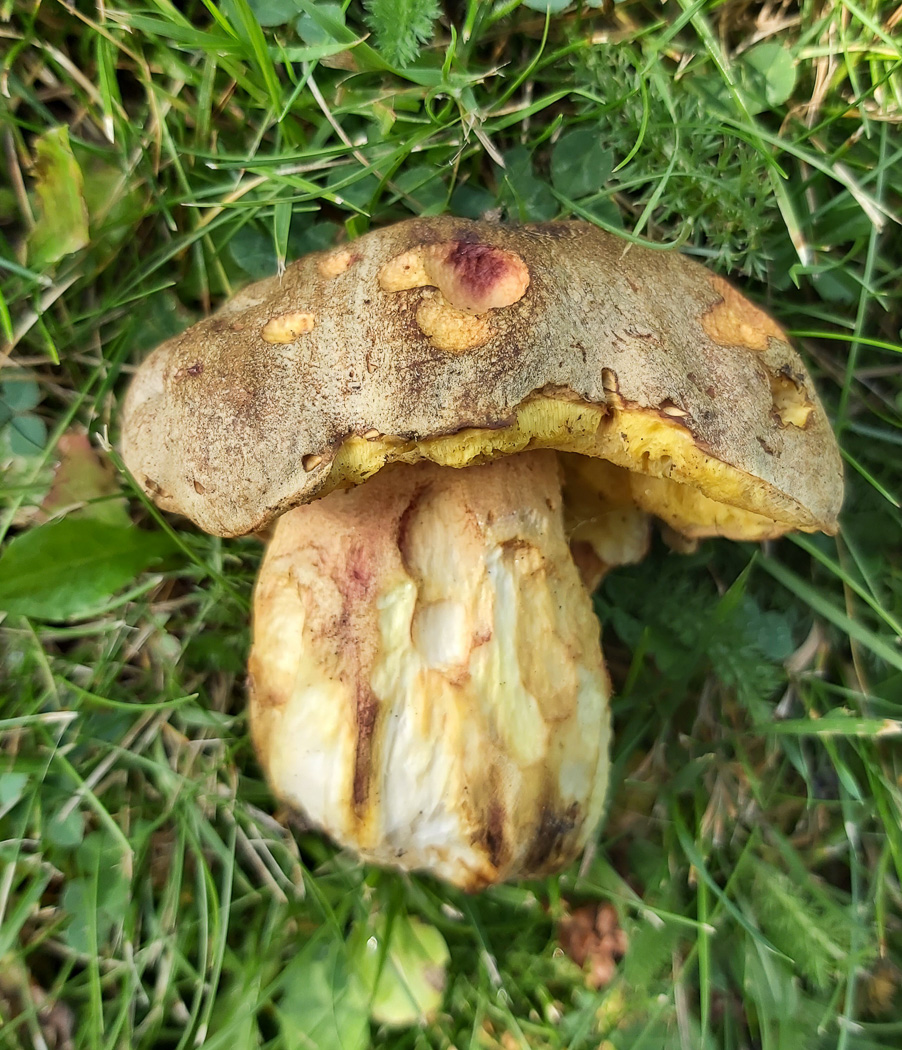 |
August 15th Hemileccinum impolitum (Iodine Bolete)
Under Oak in Jordans village Jesper Launder noticed a sizeable bolete which had been dislodged but was not too badly damaged to identify. Previously known as Boletus impolitus and one of the Oak associates, it is notable in having solid flesh, bright yellow pores which don't stain blue when pressed and a strong smell of iodoform at the stem base particularly when cut or damaged - all three characters noted by Jesper. Though described as quite common, we have only a handful of records for the county.
|

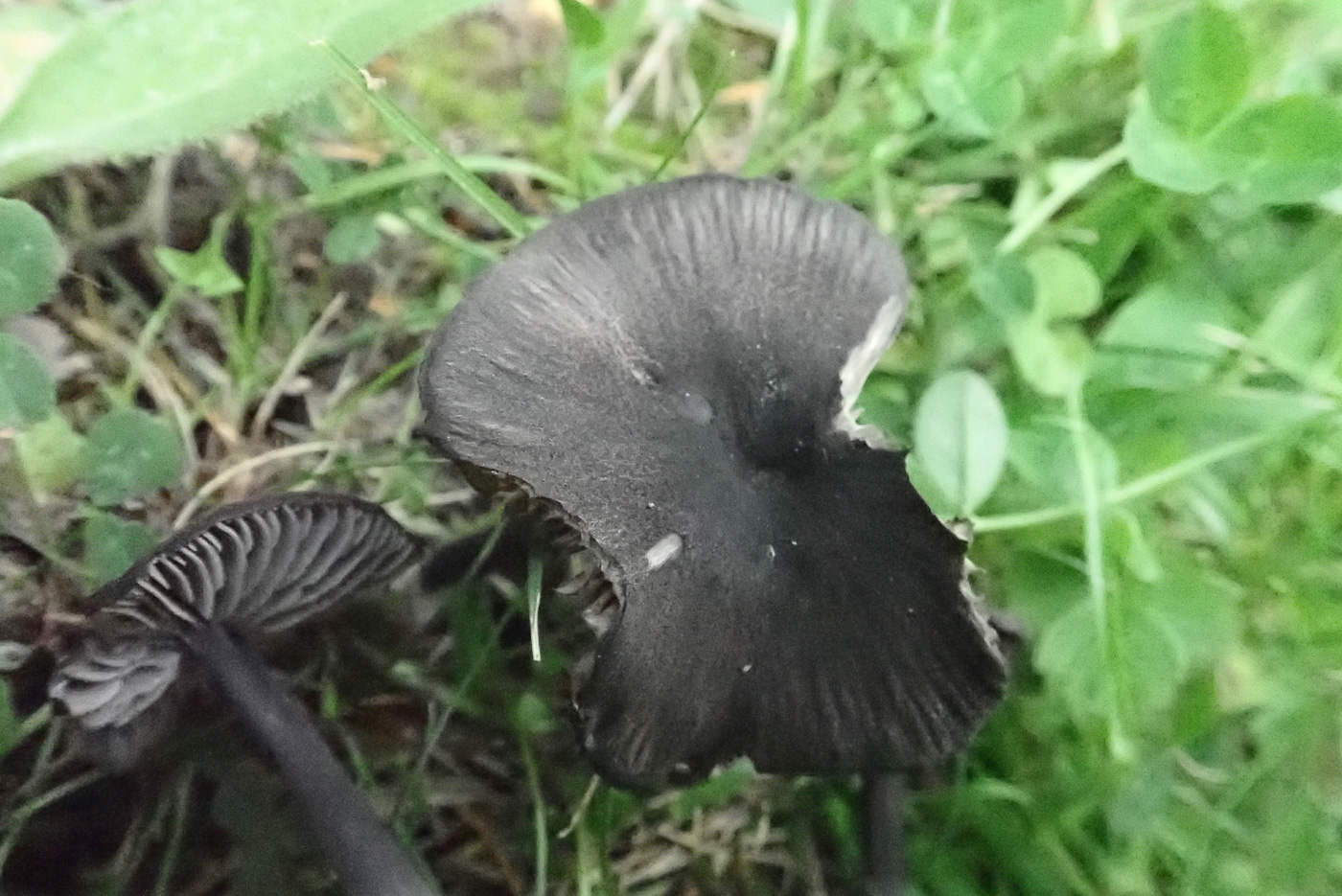
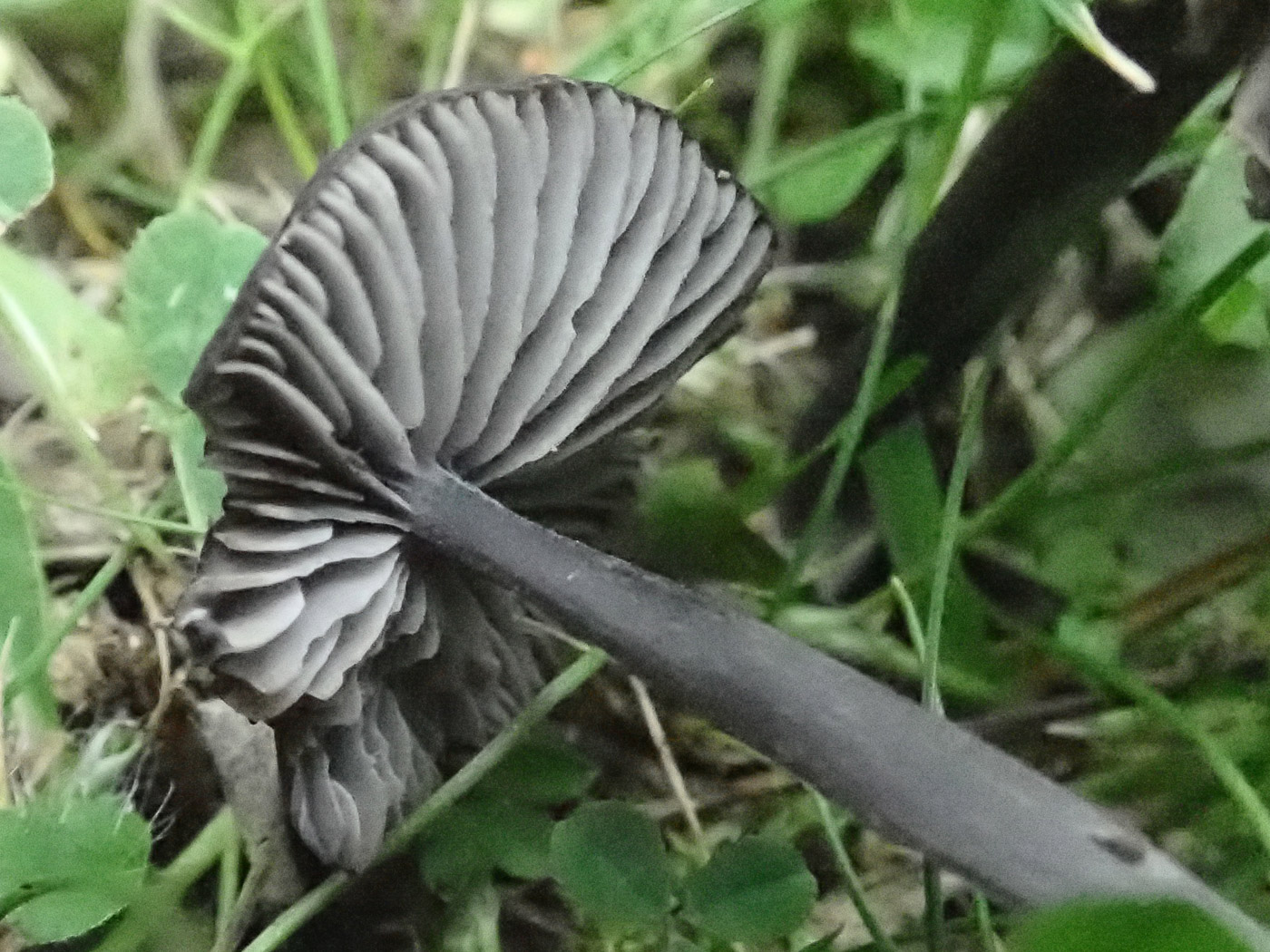 |
August 15th Entoloma serrulatum (Blue Edge Pinkgill) 
In soil in grass at Prestwood Churchyard Penny found a few small dark blue caps and turning one over noticed that this colour was also faintly lining the edge of some of the gills. Pinkgills - a huge and tricky genus - mostly have brown caps, but those having blue caps or stems (or both) belong in Section Leptonia which at least then reduces the number of species to a more manageable number when trying to key a collection out. Even fewer from this section have a blue gill edge making the task even less arduous, and today's species is possibly the commonest of those (though none are that common!). We have just four previous county records from three sites. For comparison see also E. chalybeum v. lazulinum dated July 12th and E. pseudocoelestinum dated Aug 14th.
|
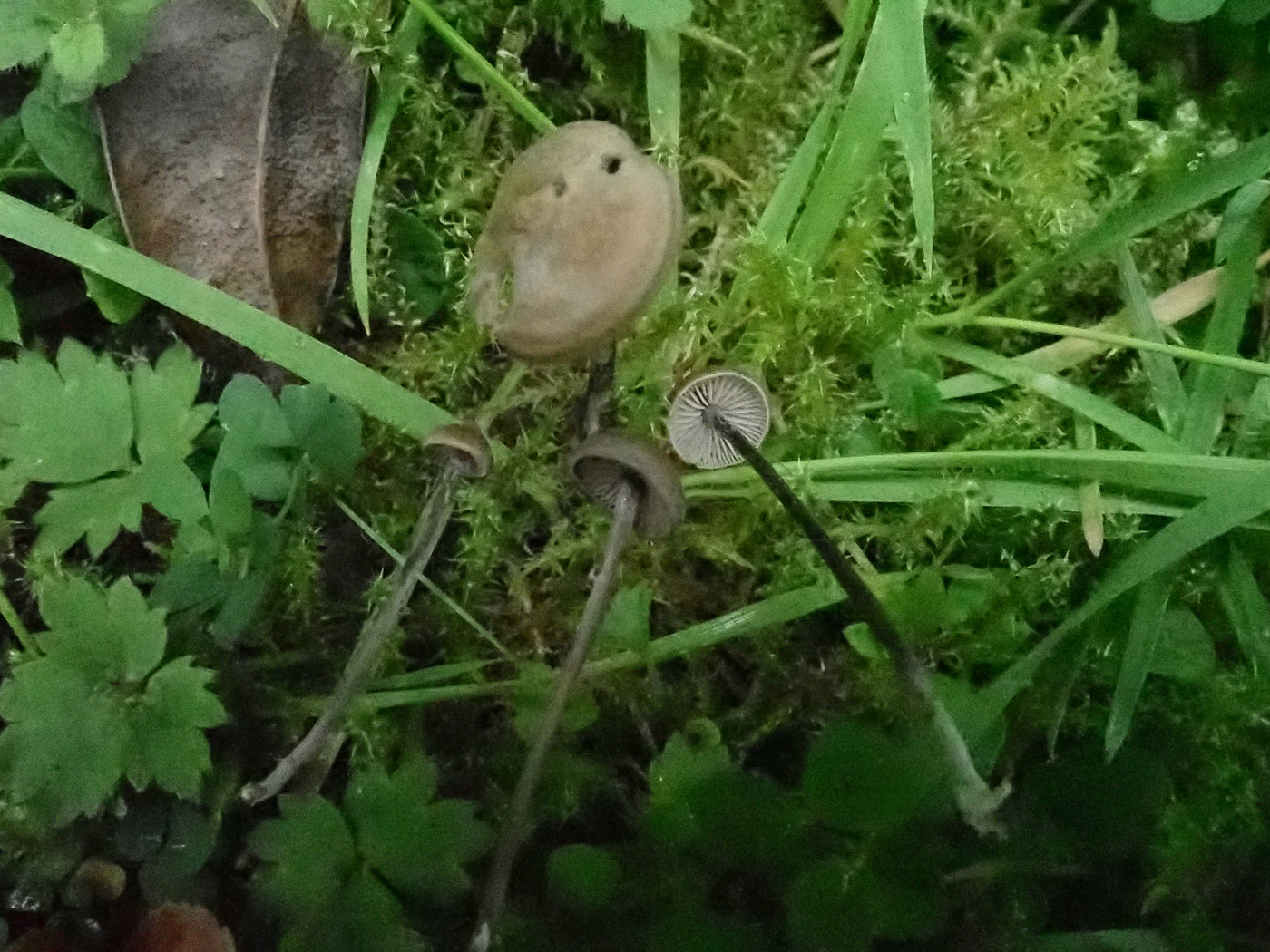
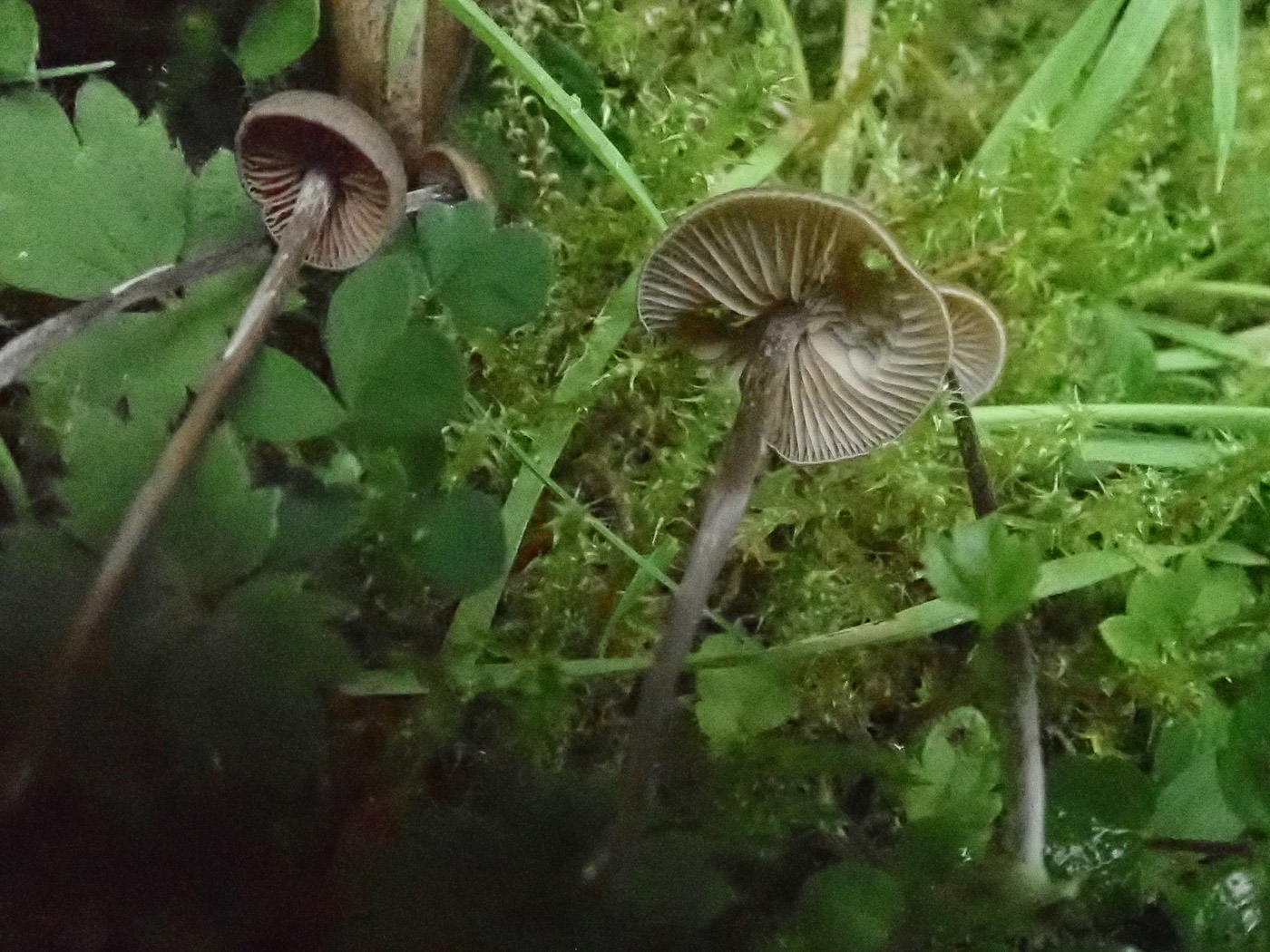 |
August 15th Entoloma hebes (Pimple Pinkgill) 
In soil in grass at Prestwood Churchyard Penny spotted one tiny brown cap whilst on her knees with the camera for another species. Searching around produced a few more, so the photo was set up and the specimens collected. From the gill colour it was clearly a Pinkgill, and the small size together with the distinctive central pimple on the caps (the largest being under 1 cm across) strongly pointed to this species, but there are others with similar characters so a scope is always necessary to make a determination.
|
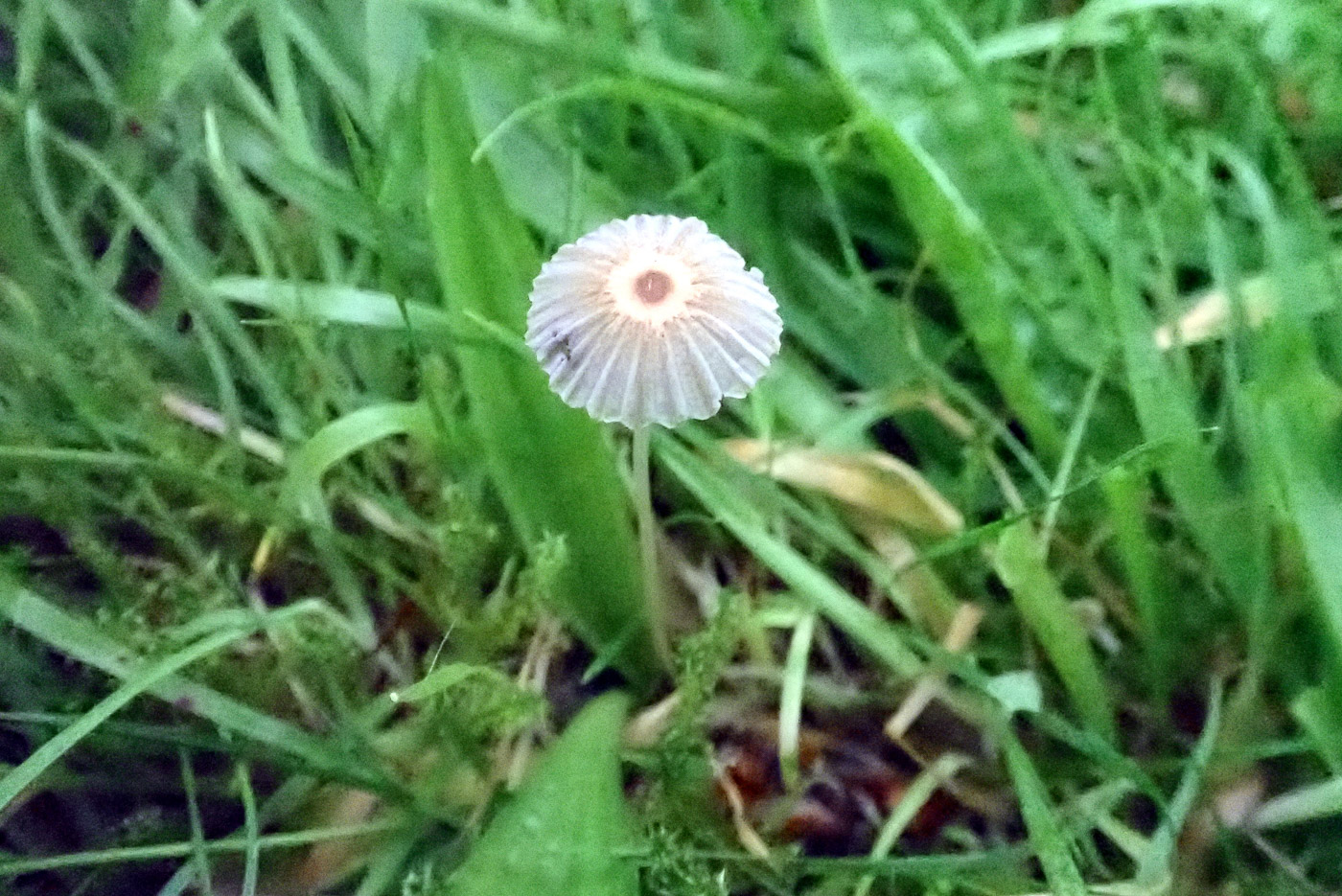
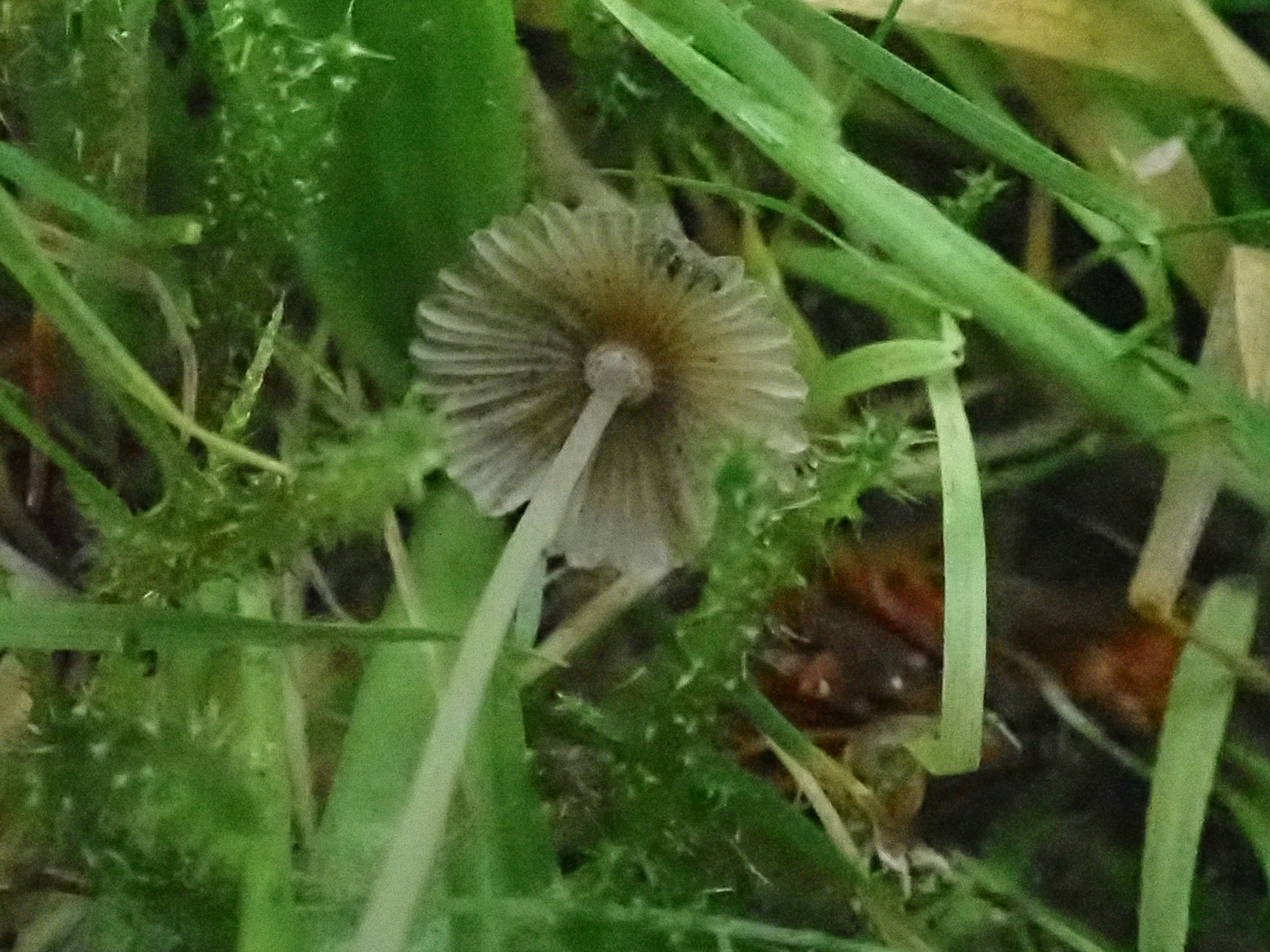 |
August 15th Parasola schroeteri (a Parasol Inkcap with no common name) 
In soil in grass at Prestwood Churchyard Penny spotted this small singleton and knowing that it could not be named without measuring the spores (there being several very similar Parasol species) she collected it to work on at home. (Luckily Parasols do not deliquesce making them more amenable to later study!) The cap was fully expanded though less than 1cm across and the stem was comparatively long and very thin, reflecting the length of the surrounding grass. The spores were remarkable: very dark reddish brown and subtriangular to heartshaped, and this shape together with their size led to two possible names: P. schroeteri and P. hercules, the latter being extremely rare so much less likely. P. schroeteri is described as mainly on dung (our only county record being on cow dung from Brill Common) though also on soil but tends to be bigger, up to 3 cm across. As Penny was not sure, however, the specimen when dried was sent to Derek who was able to confirm it as P. schroeteri from the spores, making this the second record for the county.
|
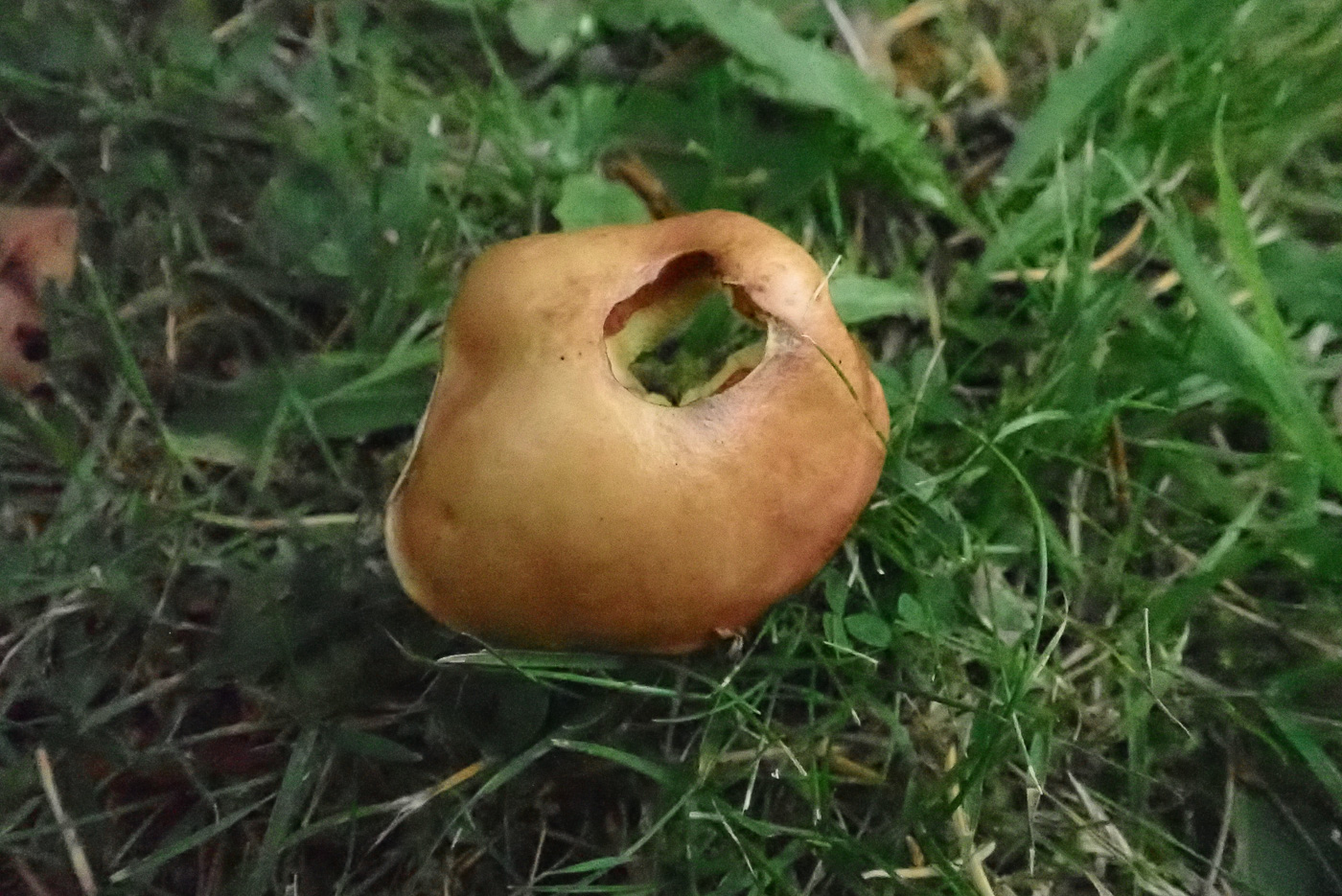
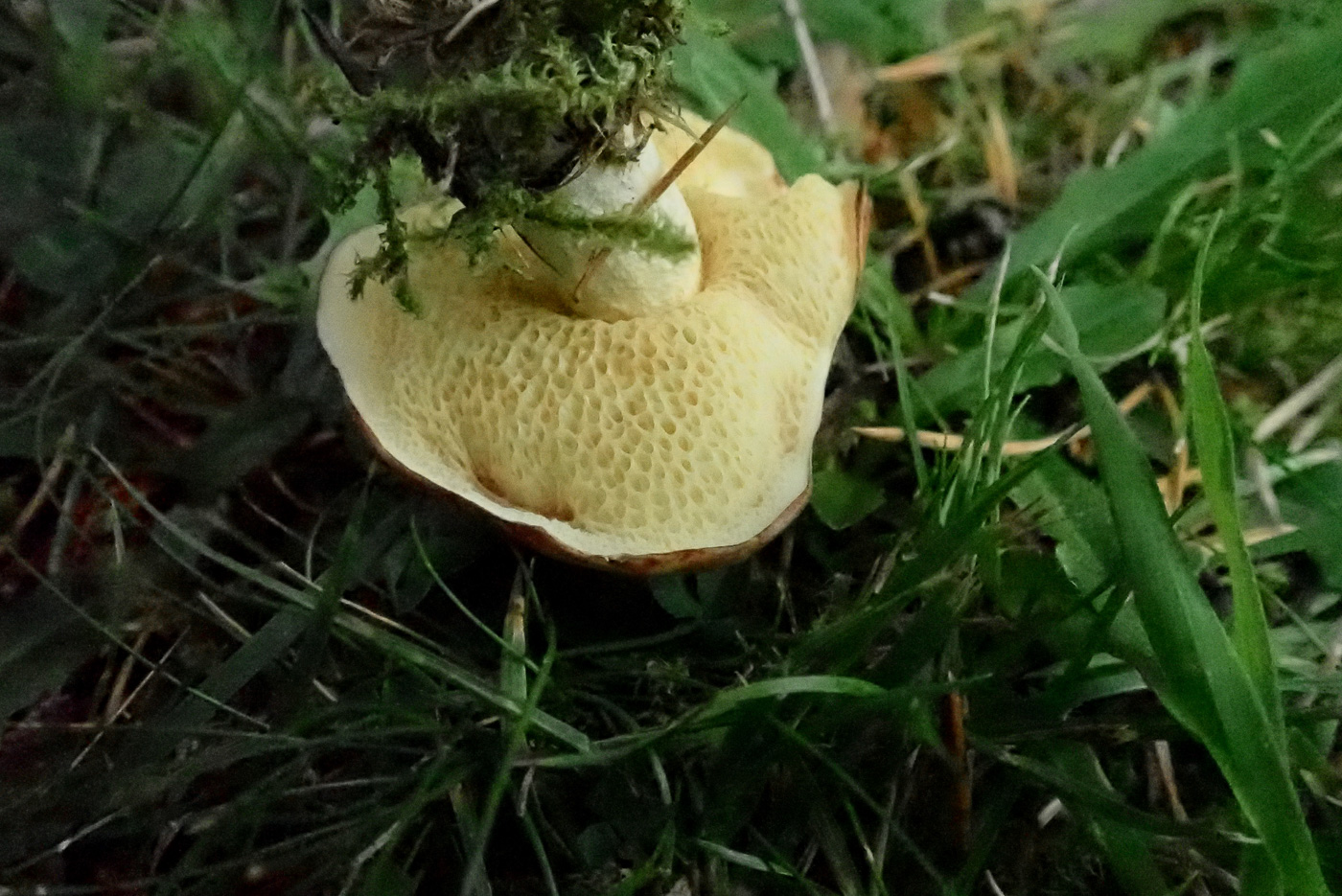 |
August 15th Suillus bovinus (Bovine Bolete)
In short grass under a large Pine just outside Prestwood Churchyard Penny found this small singleton having just pushed up through the soil. Turning it over revealed two things: the cap felt sticky to the touch and it clearly had large pores underneath - the pores making it a member of the boletes and the sticky cap and presence of conifer making it a species of Suillus. Only found under Pine, the pale clay coloured smooth sticky cap is typical as are the slightly yellow large pores which don't blue when pressed, also the stem has no ring (unlike the much commoner S. grevillei, found only under Larch, or the much browner capped S. luteus, found also under Pine).
|
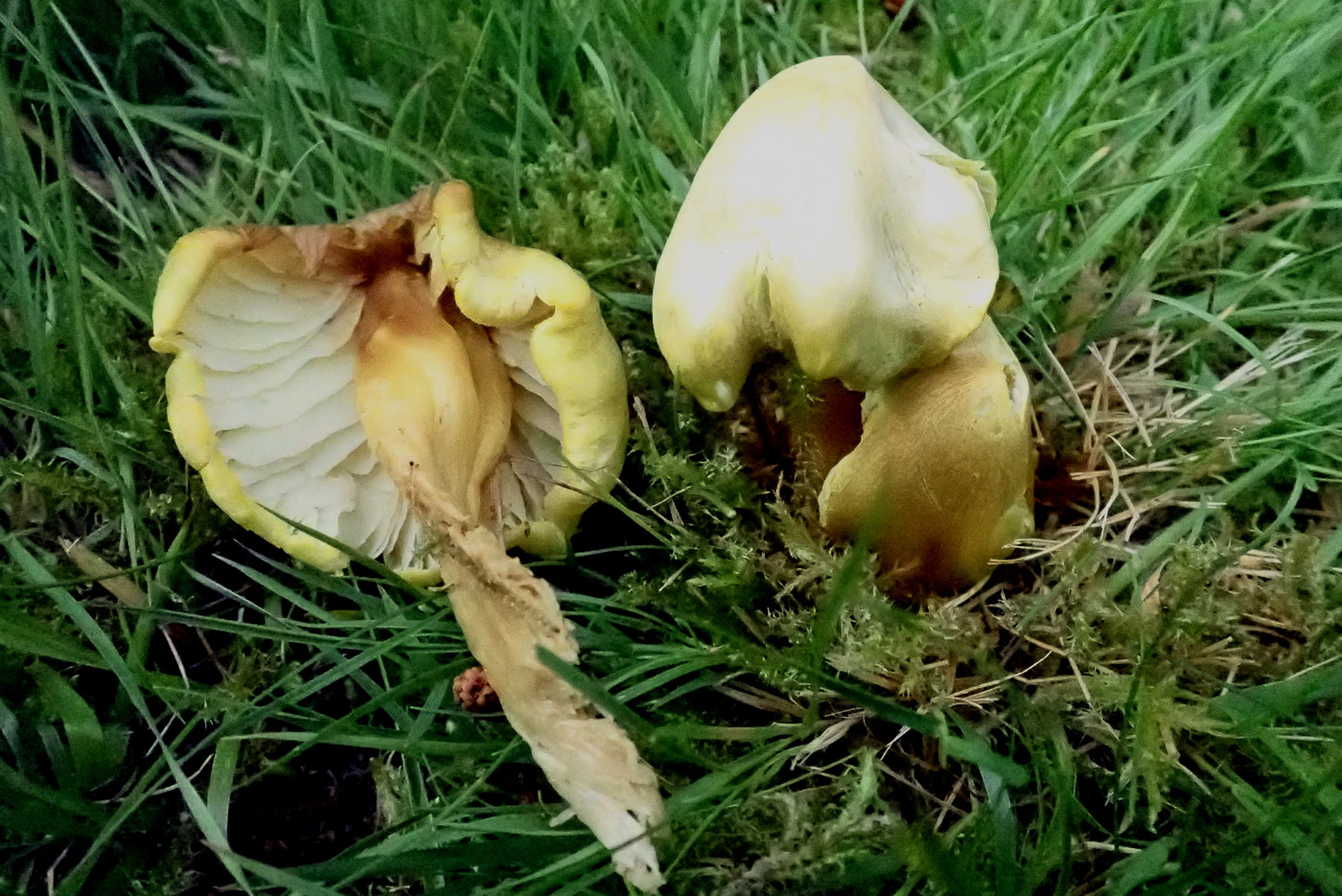 |
August 15th Hygrocybe acutoconica (Persistent Waxcap)
In short grass in Prestwood Churchyard Penny found this grassland species (better known by its previous name H. persistens). We've had quite a few Waxcaps fruiting early this year but this one fruits regularly at this time. Quite similar to H. conica in shape and often this lemon yellow, it differs in not blackening as always occurs in that species.
|
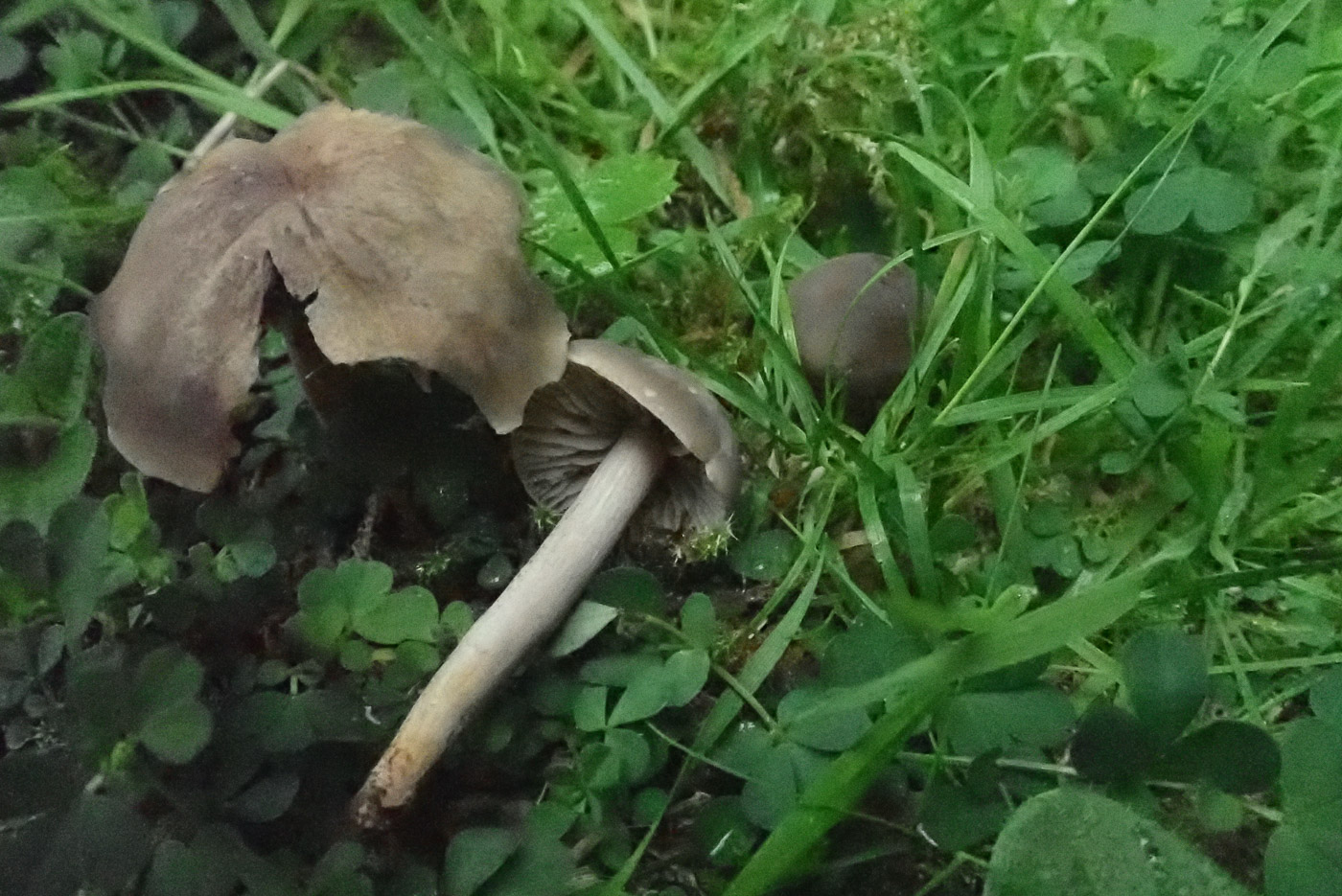 |
August 15th Dermoloma pseudocuneifolium (Dark Crazed Cap) 
In short grass in Prestwood Churchyard Penny noticed this group of LBJs and, thinking they looked like the quite common grey/brown grassland species Dermoloma cuneifolium, she picked one to test for the strong mealy smell of that species. It was absent, however. So into a pot to work on at home! Still convinced that it was that genus and remembering last November finding the rarer sister species in another local churchyard (see Finds 20 November 8th), she tried adding Melzer's reagent to a sporeprint and was rewarded with the positive blue reaction of D. pseudocuneifolium - the spores of the commoner species having a negative reaction. Today's species has longer spores and apparently often lacks the mealy smell until cut open (though mine lacked it even so). Last year's collection, confirmed with sequencing, was new to the county making today's our second record.
|
August 14th 2021
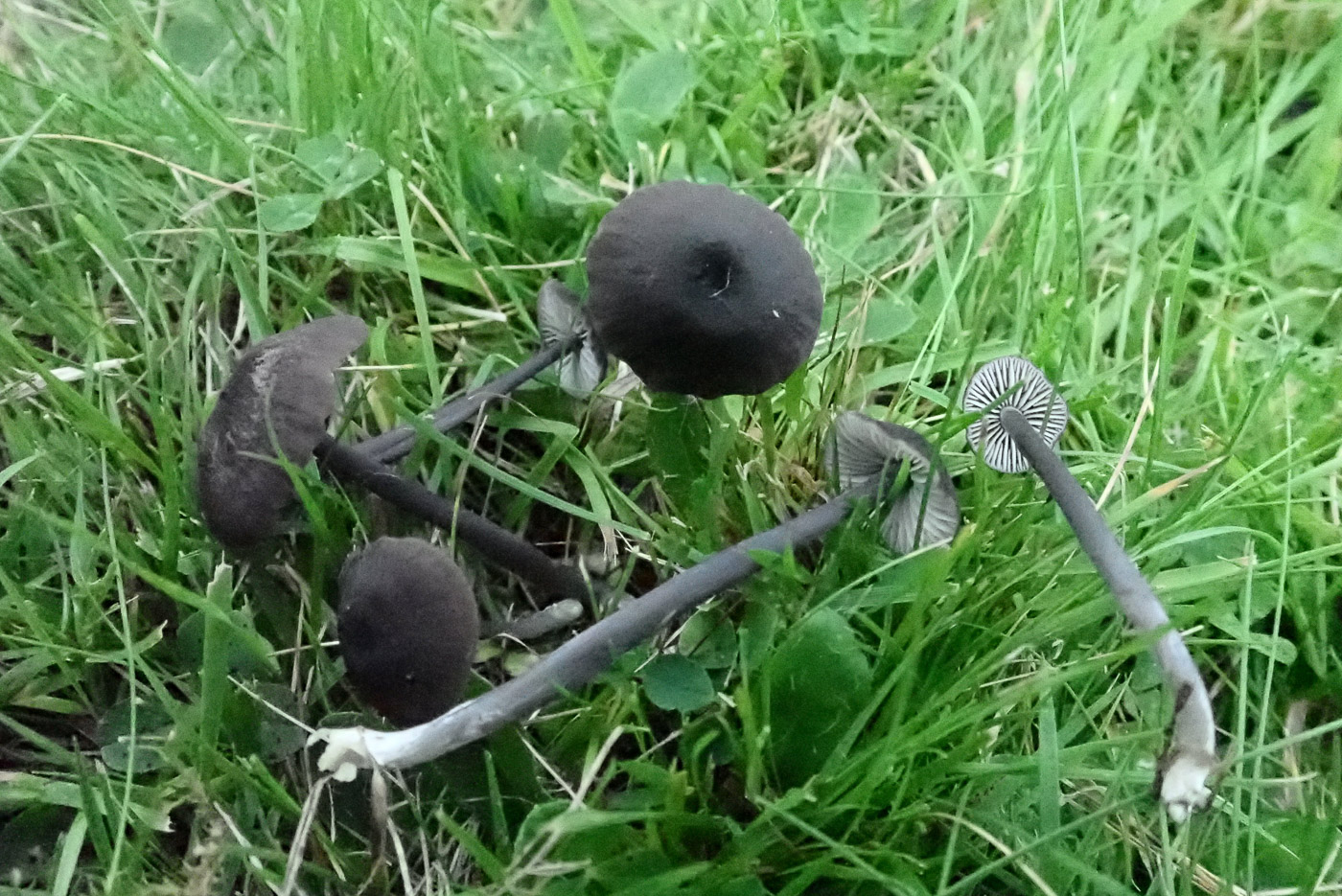
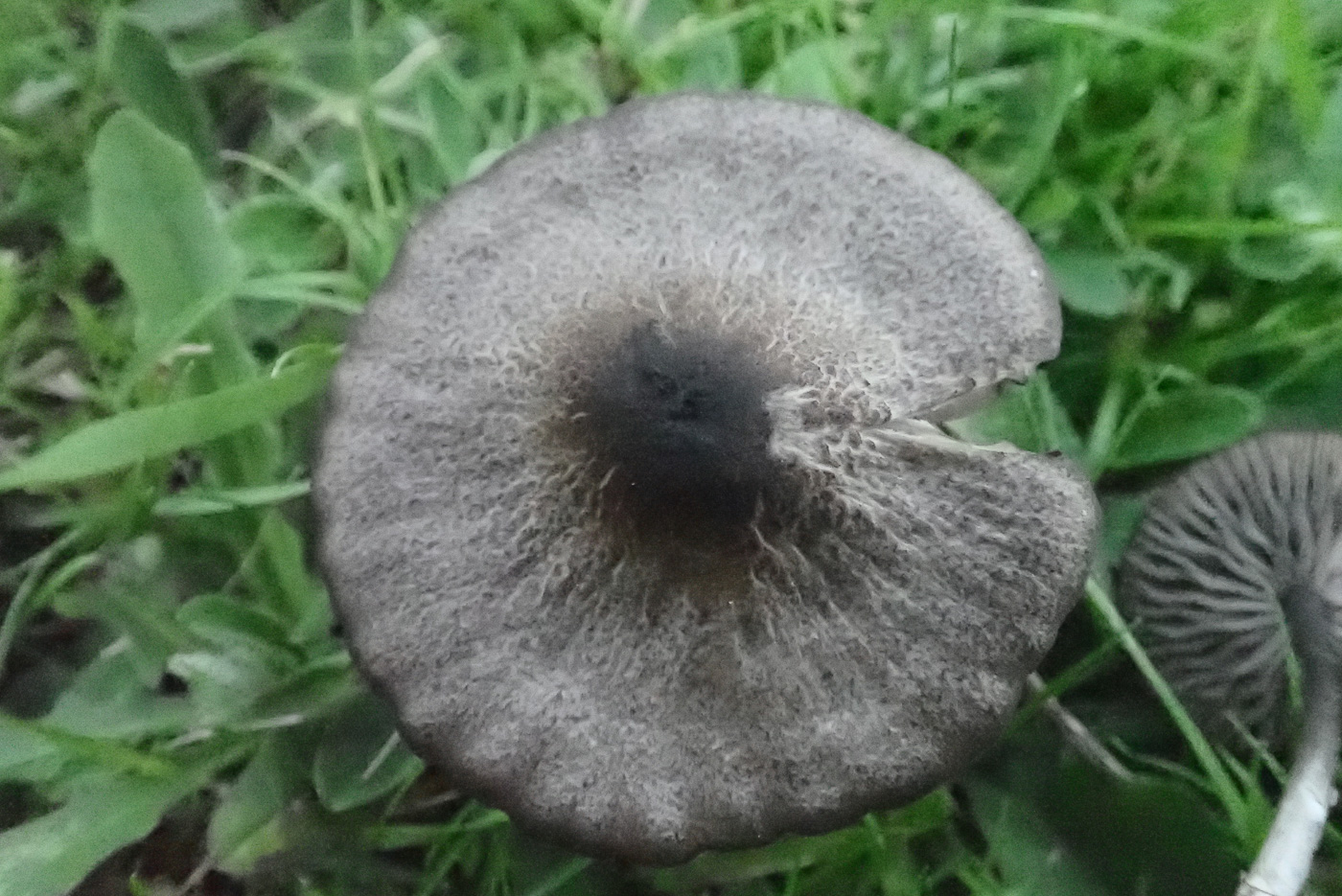
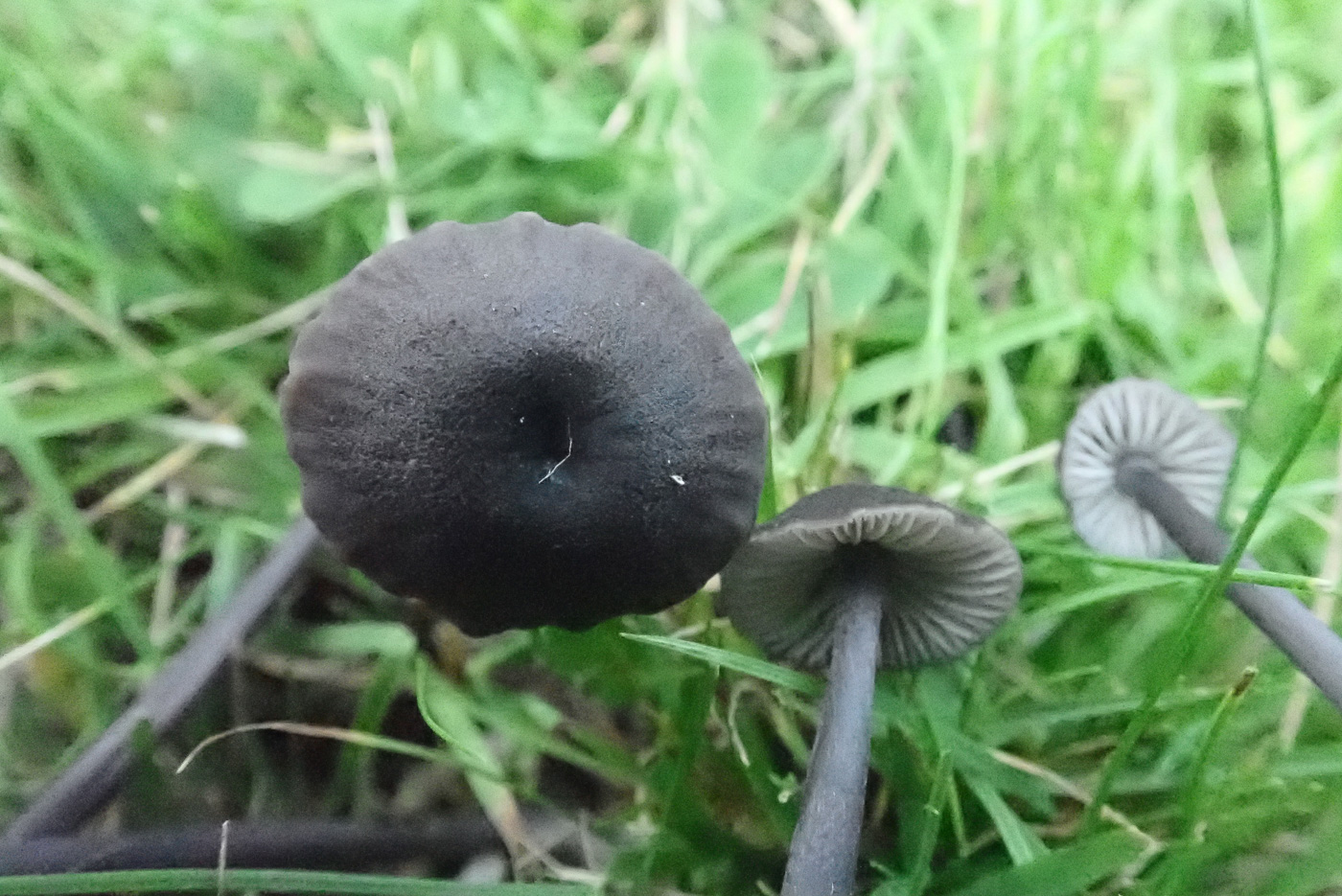 |
August 14th Entoloma chalybeum (Indigo Pinkgill)
In mown grass in Penn Street Churchyard Penny was pleased to find several fruitbodies of a smallish distinctly blue Pinkgill (this colour on stem or cap, or both as in this case, placing it in Section Leptonia). At first she thought she had two different species because the smaller young caps were deep blue whereas growing a little further away were the larger browner caps which were more striate with the surface disrupting to minutely scaly. However, a scope revealed identical spores in both collections with other microscopic characters also matching, but following various keys lead somewhat dubiously to a rare species which seemed unlikely. The collection was therefore dried and eventually sequenced, which was just as well because it turned out to be something much less unusual though still with only three previous county records. It is worth comparing with a collection in Finds dated July 12th, this being E. chalybeum var. lazulinum which differs in having a translucent outer cap.
|

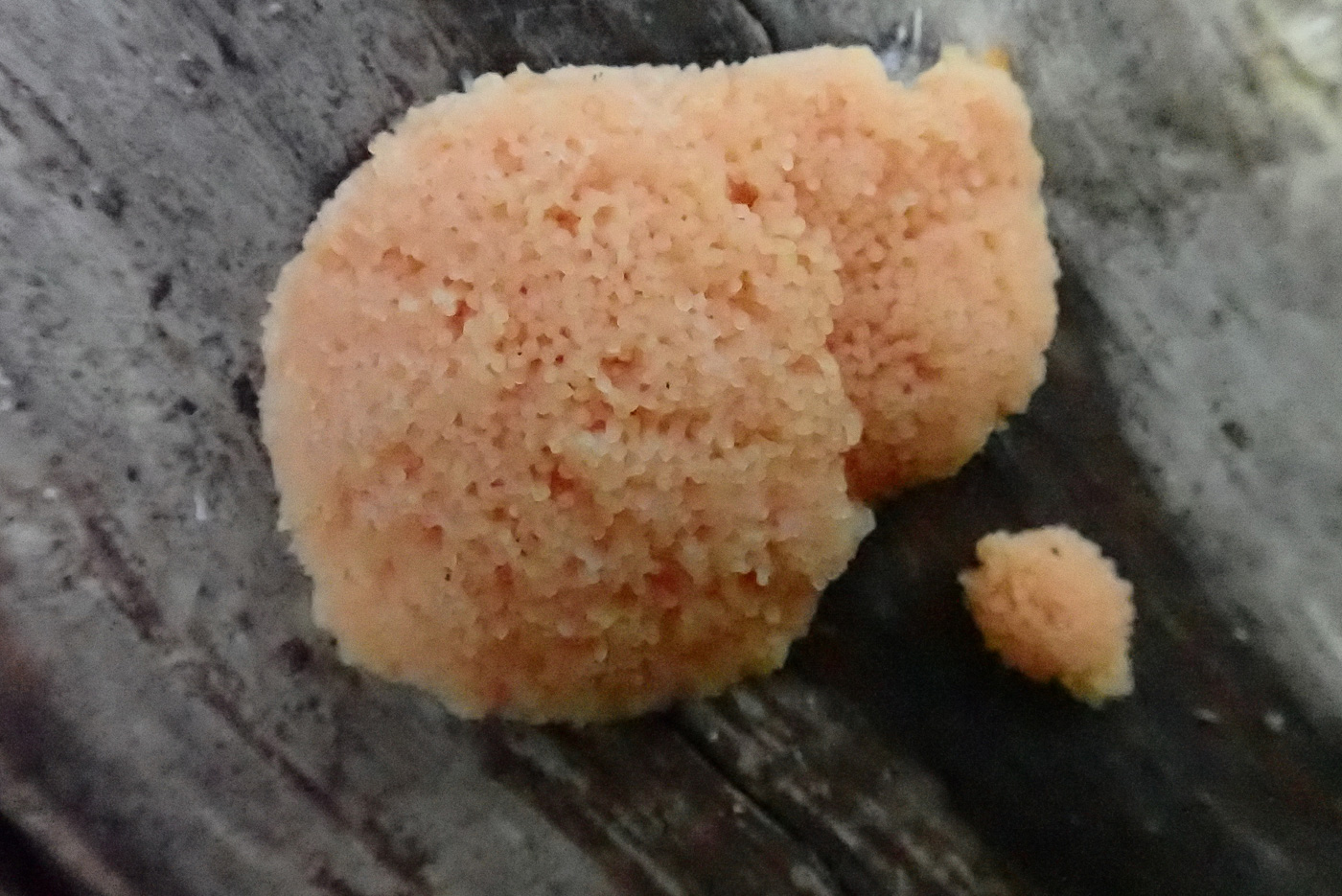 |
August 14th Tubifera ferruginosa (a Slime Mould with no common name)
At the base of a bare Conifer trunk in Penn Street Churchyard Penny noticed these brightly coloured patches of plasmodium - one of the few slime moulds nameable at this stage of its development purely from its distinctive orange / peach colour together with its occurrence on conifer.
|
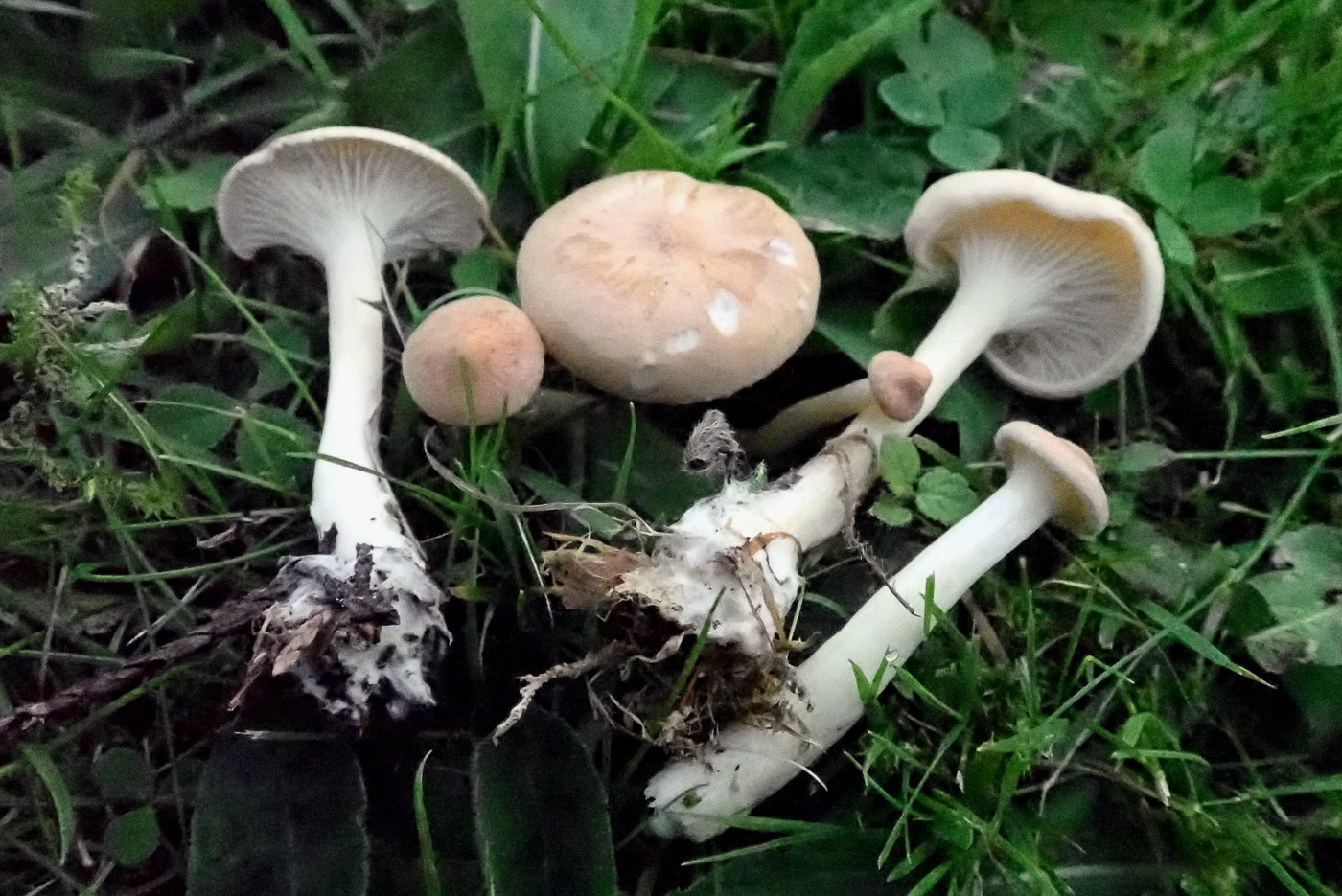 |
August 14th Infundibulicybe gibba (Common Funnel)
In the churchyard at Penn Street Penny found several young specimens of this common species (better known as Clitocybe gibba) just emerging. The largest cap was only 2cm across and the smallest caps still had a distinct nipple in the middle (visible in a couple here) - a feature which soon disappears as they expand and develop the strongly infundibuliform (goblet) shape. The species occurs in grassland as well as woodland glades.
|

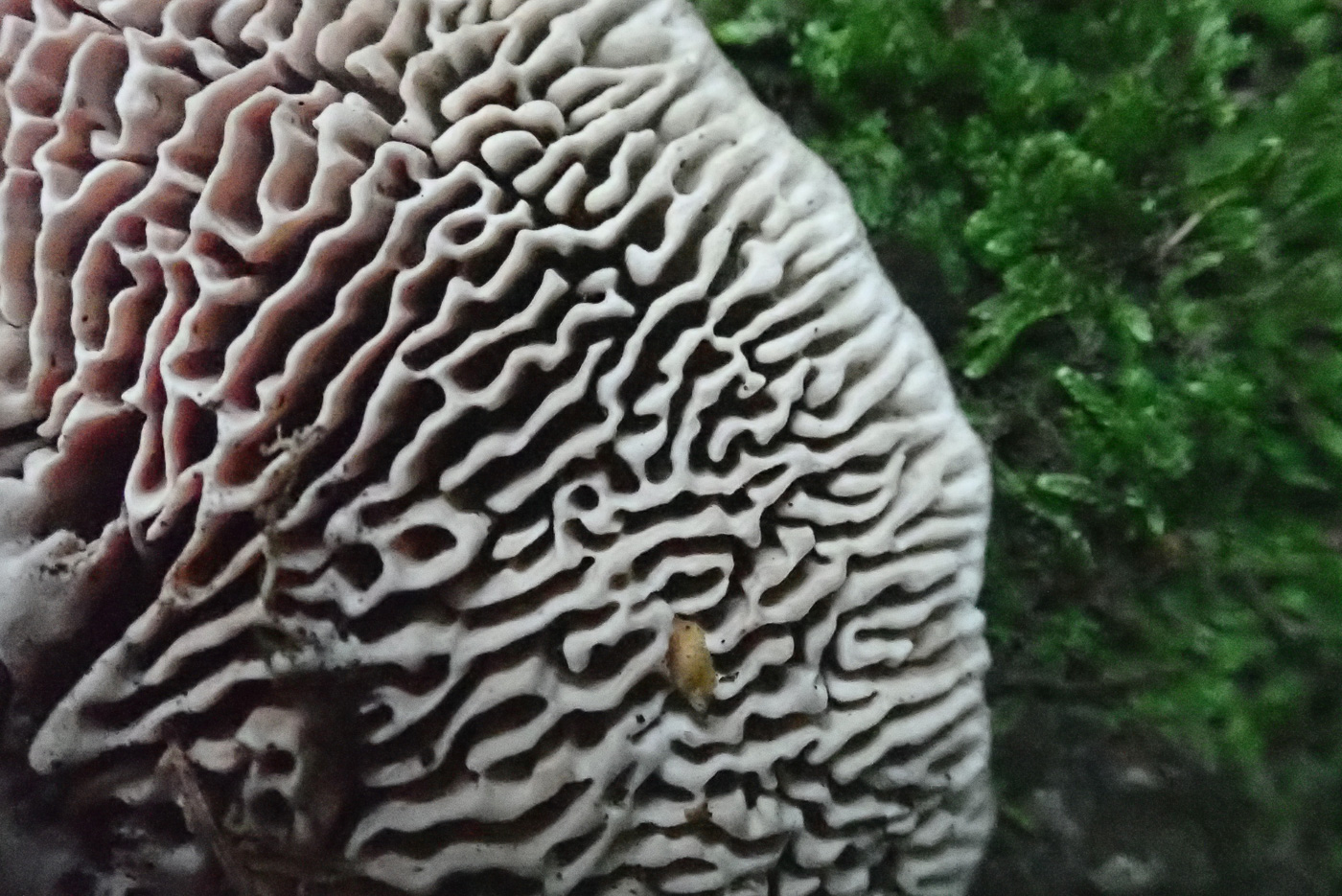 |
August 14th Daedalea quercina (Oak Mazegill)
On an old Oak stump in Penn Wood Penny found this perennial bracket just freshly fruiting. The underside (seen in detail in photo 2) is more strongly mazelike than in any other species making it an easy one to recognise in the field.
|
August 13th 2021
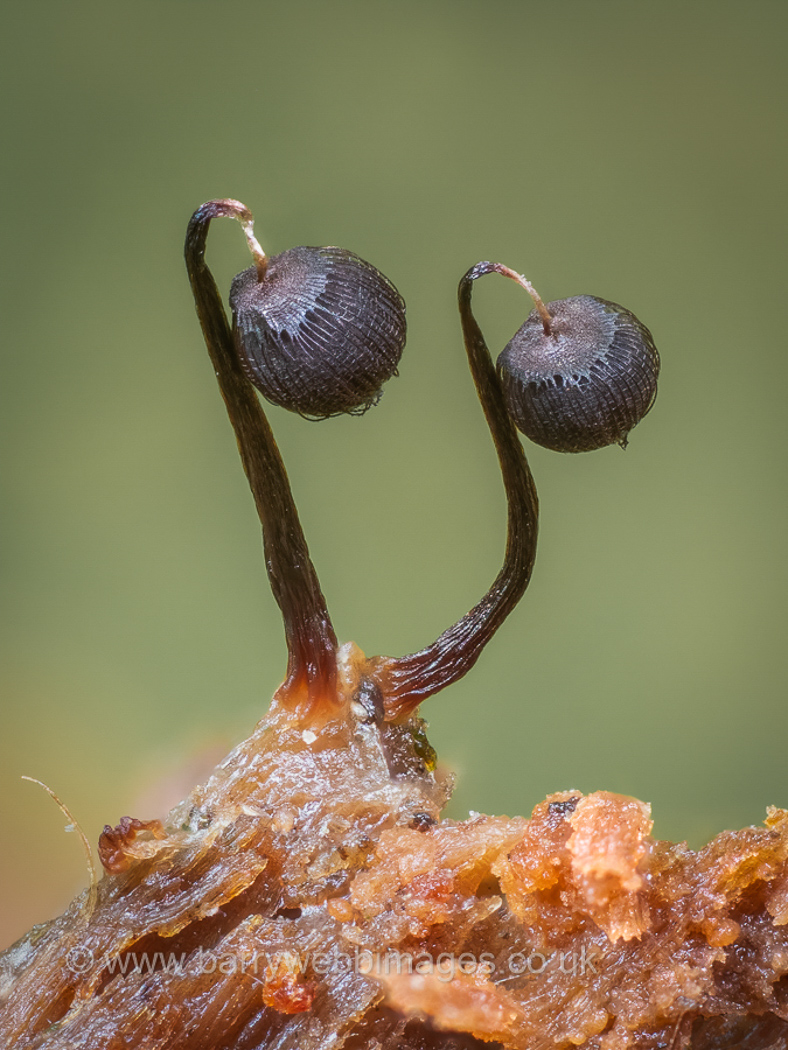
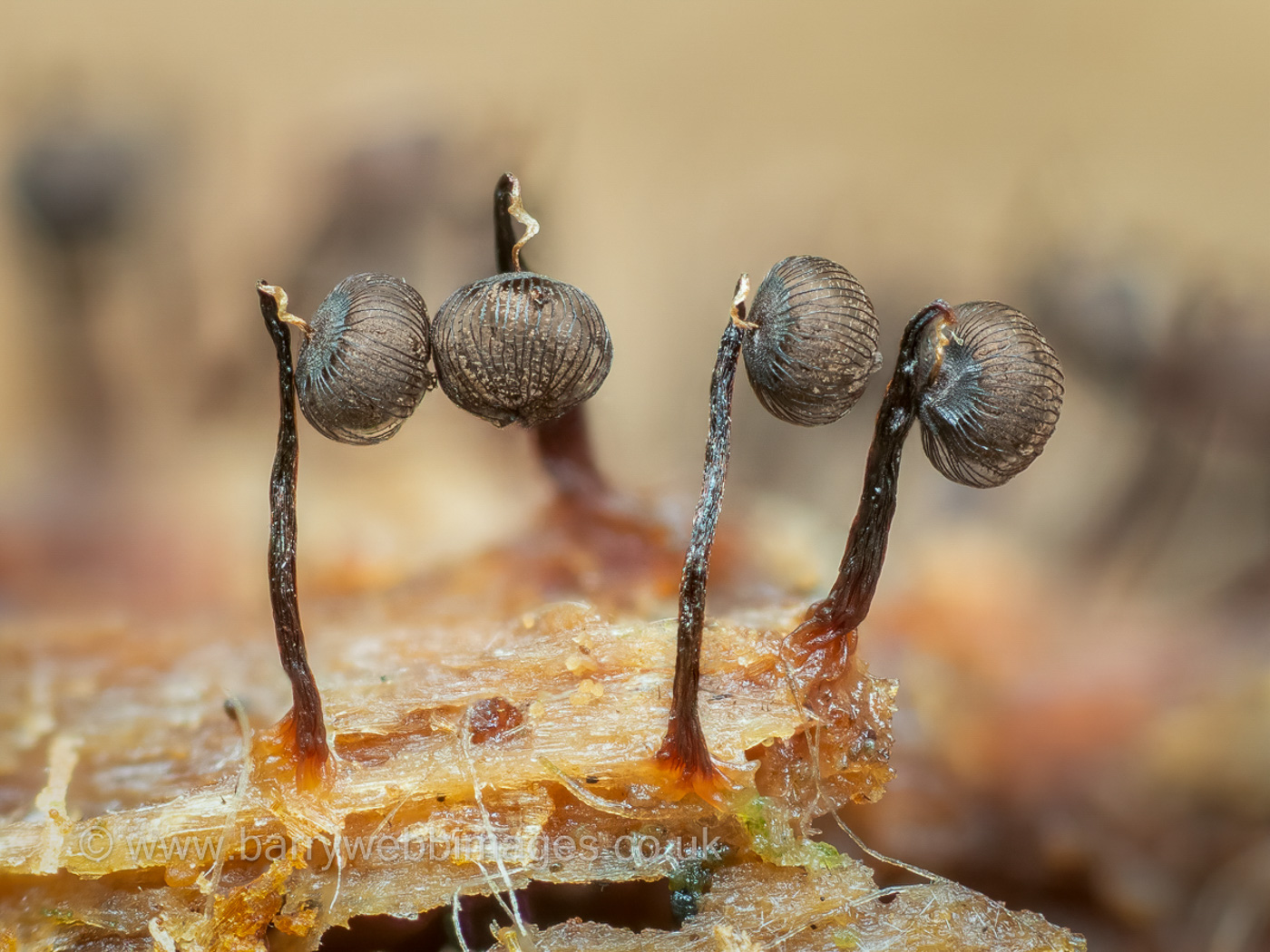
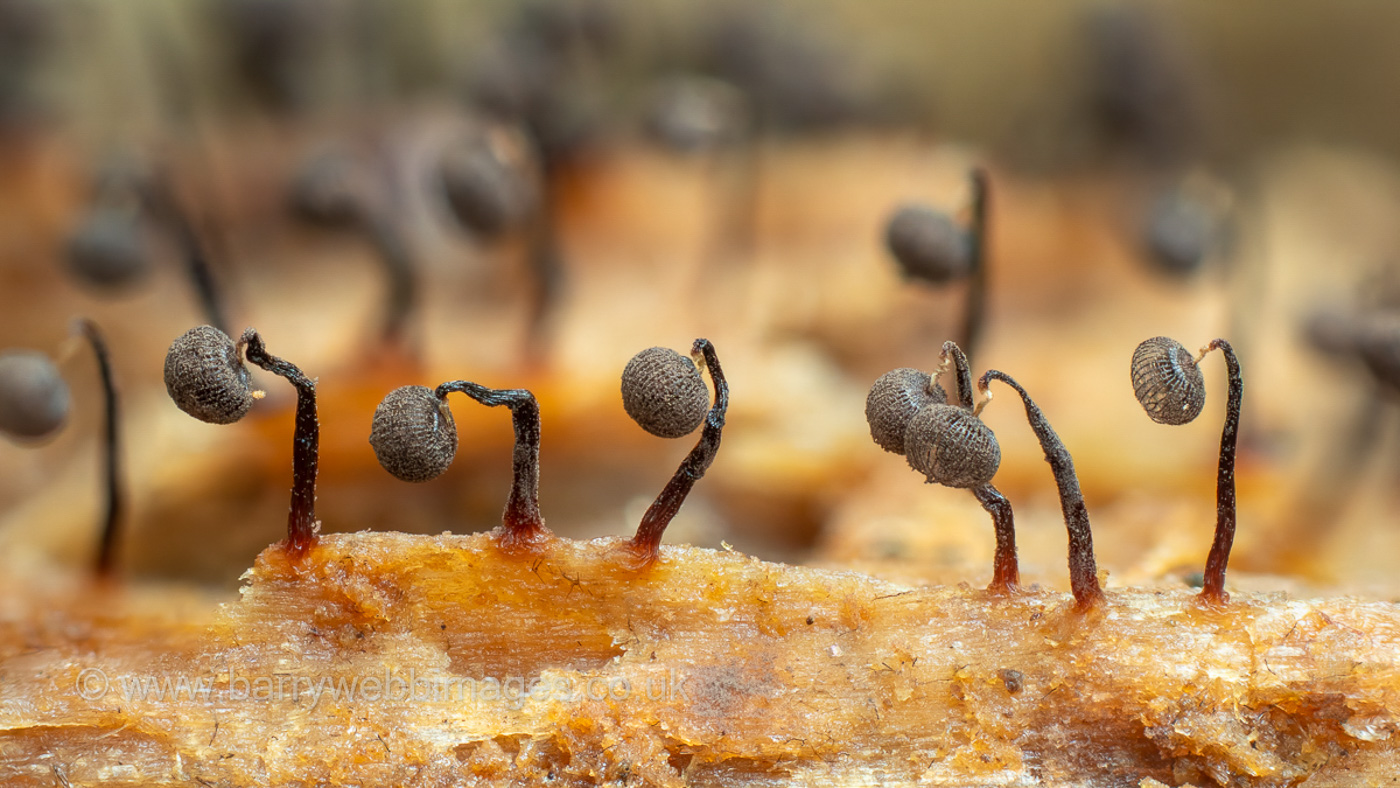
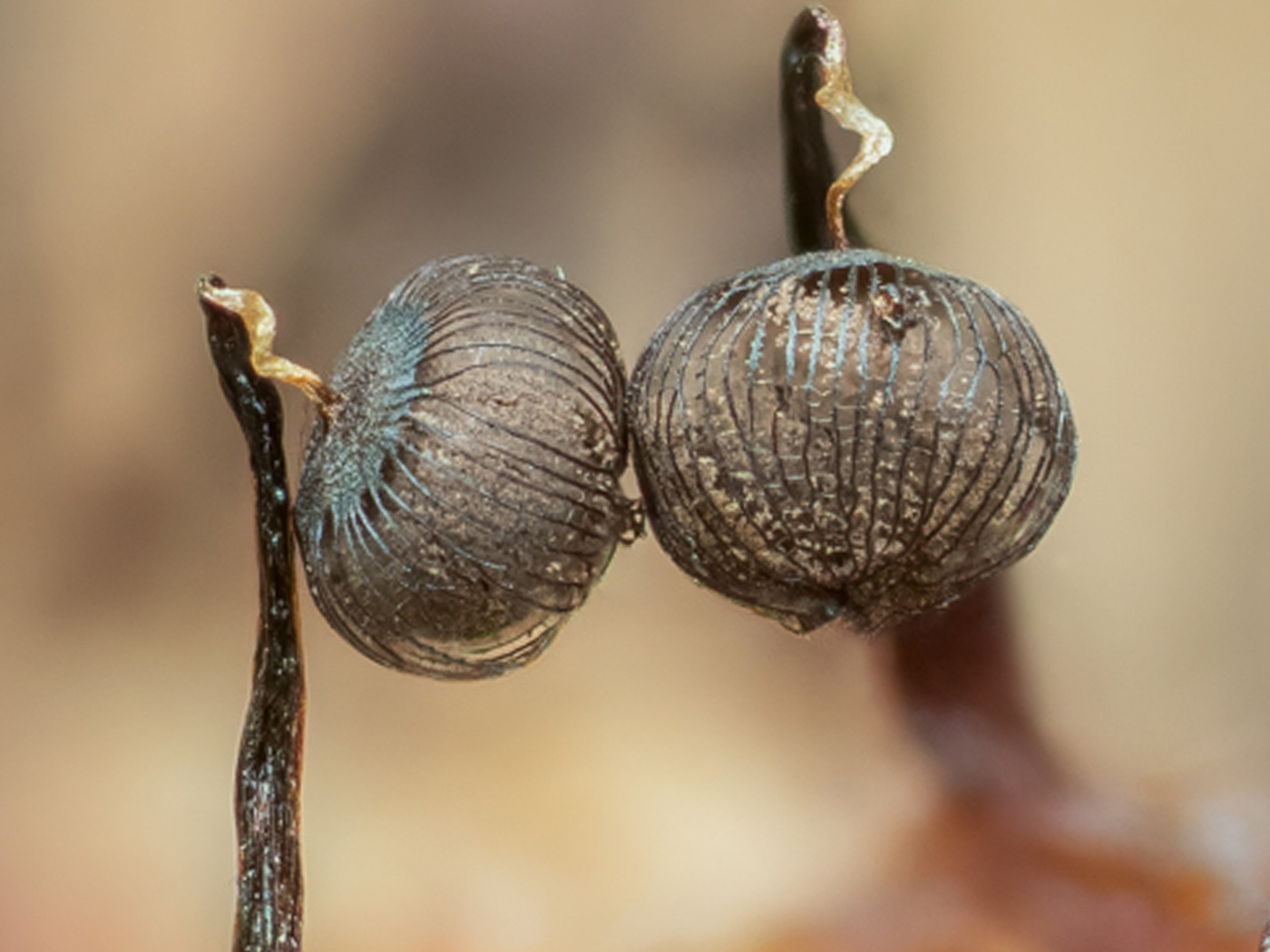 |
August 13th Cribraria cancellata var. fusca (a Slime Mould with no common name)
In Penn Wood on fallen Pine Barry Webb found this rare species, new to the county and with not many British records though the type species is more common - compare with Barry's photos dated July 6th. Photo 3 is from Burnham Beeches found three days later by Barry, also on Pine. This variety differs from the type by having a well marked cup at the base of the sporangia (lacking in the type). Both species have many longditudinal ribs around the sporangia linked by ladder-like threads, seen in the detailed photo 4. Bear in mind that each individual fruiting body is no more than 3mm high and the heads no more than 0.7mm in diameter!
|
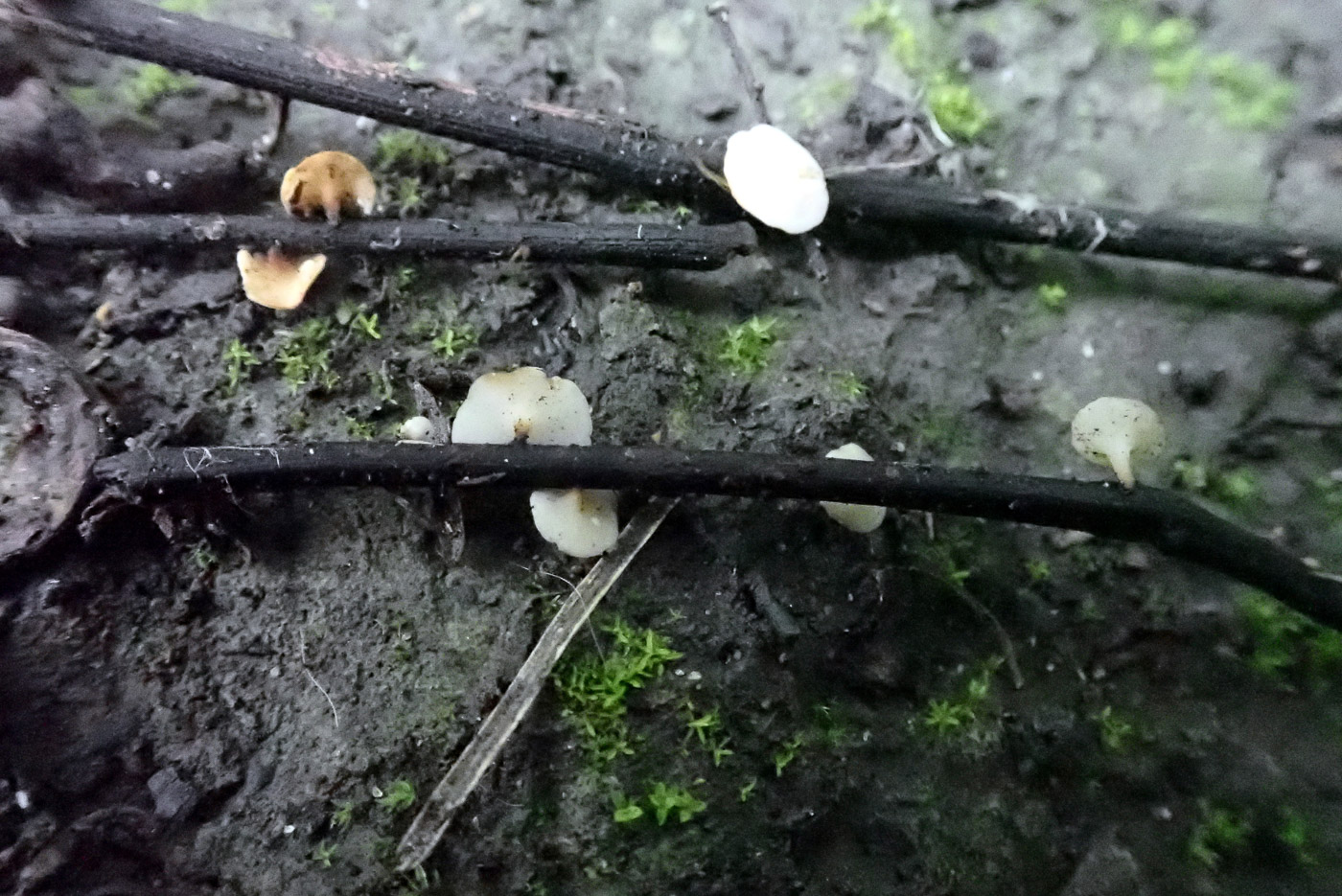
 |
August 13th Hymenoscyphus fraxineus (Ash Dieback) 
In Rushbeds Wood Penny noticed some tiny pale short stemmed cups growing on long thin black dead stems in general litter which she took home to attempt to identify. It gradually dawned on her that the stems were probably last year's Ash petioles - Ash being one of the most plentiful trees on site - and putting two and two together she checked the microscopic details against those for this species, knowing from the notice pinned on the gate that the dreaded Ash Dieback disease was present at Rushbeds. There are two almost identical Hymenoscyphus species which grow on this substrate, the other being the harmless H. albidus which is reportedly decreasing whereas H. fraxineus is seriously increasing. Not being an Asco expert, Penny could not say for sure which of the two species she'd collected but bearing in mind the facts above H. fraxineus unfortunately seems much the most likely of the two. Both species have pale cream smooth edged cups up to 2 mm across, with a short stem, wider at the top and black at the base, and long thin spores which are pointed one end and have droplets within.
|
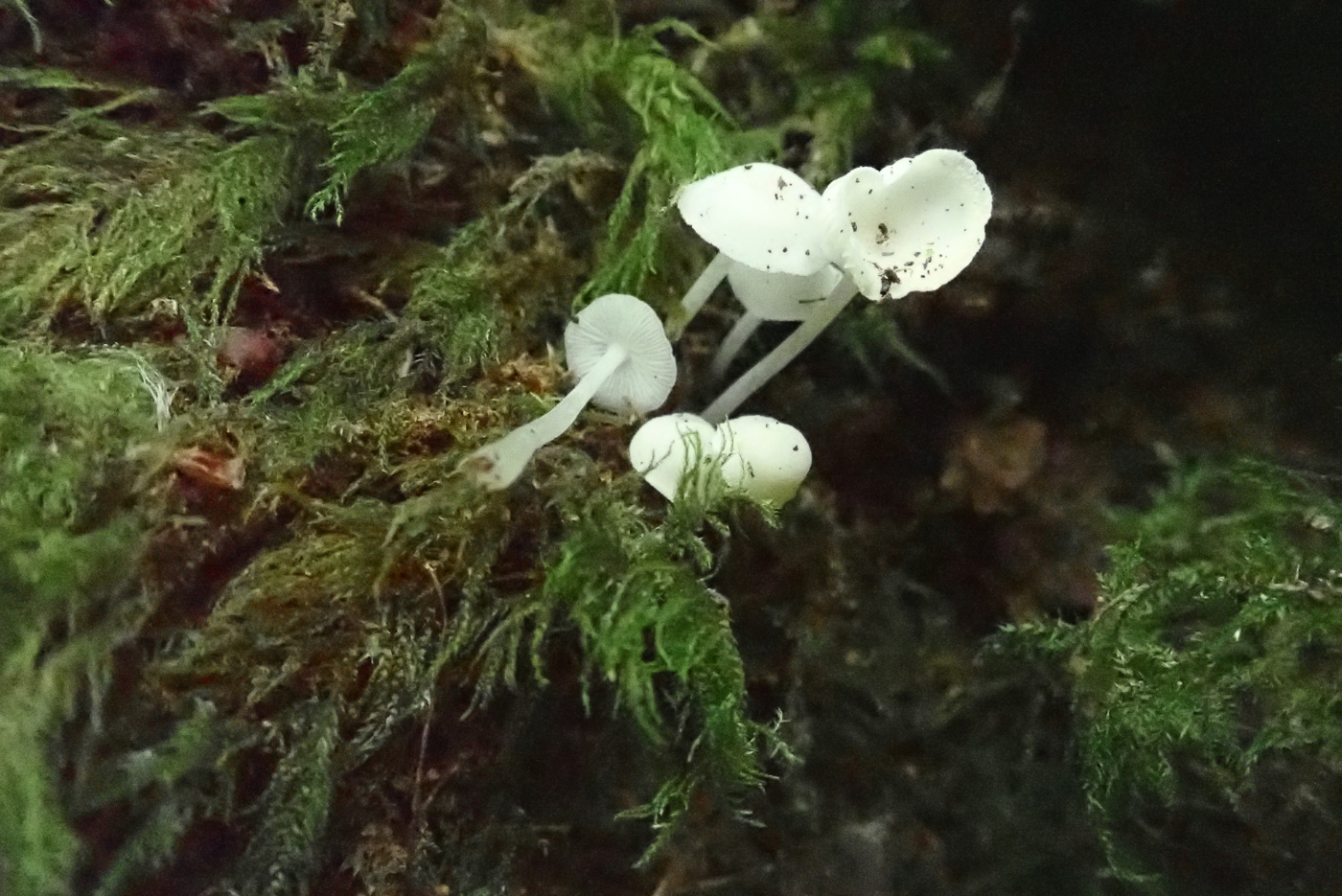
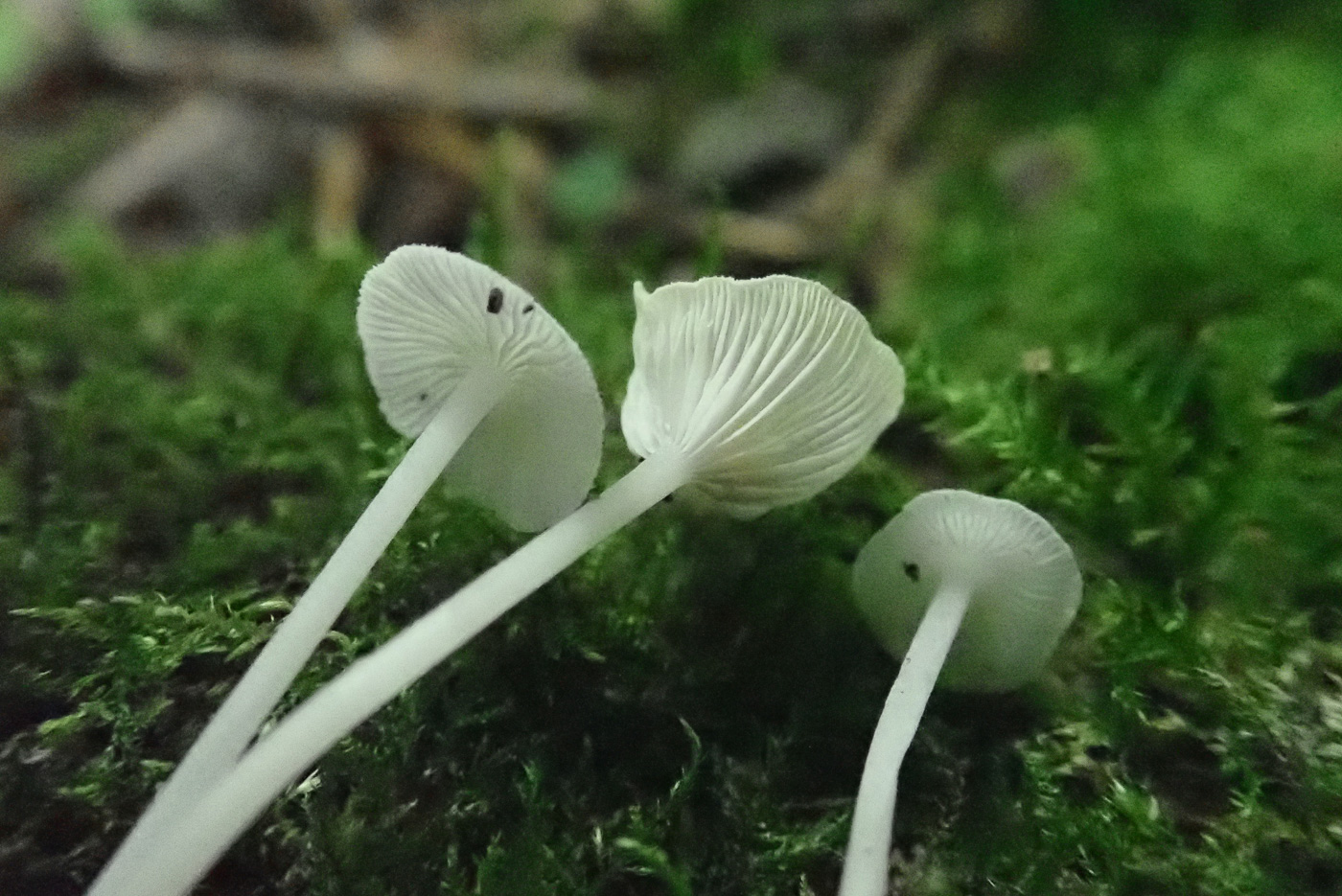 |
August 13th Hemimycena cucullata (a mycenoid species with no common name) 
On a pile of rotting mossy branches, probably Hazel, in Rushbeds Wood Penny noticed a few small mycenoid white caps, some clustered together, and took a couple home to work on. Caps were under 1 cm across, gills were somewhat crowded and tending towards decurrent, and stems were thin, finely pruinose and with straggly hairs at the base. At home the spores were long and thin, eliminating Mycena, and other microscopic features together with the field characters mentioned keyed out to H. cucullata, an unusual species which we've recorded just five times from three other sites, it being new for Rushbeds.
|
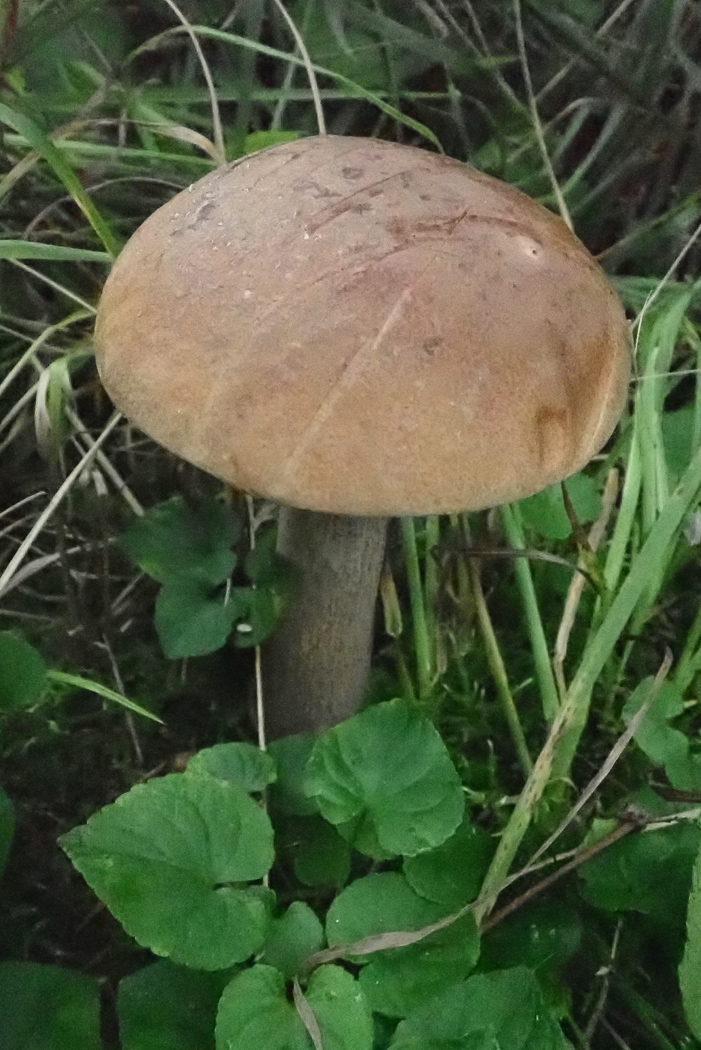
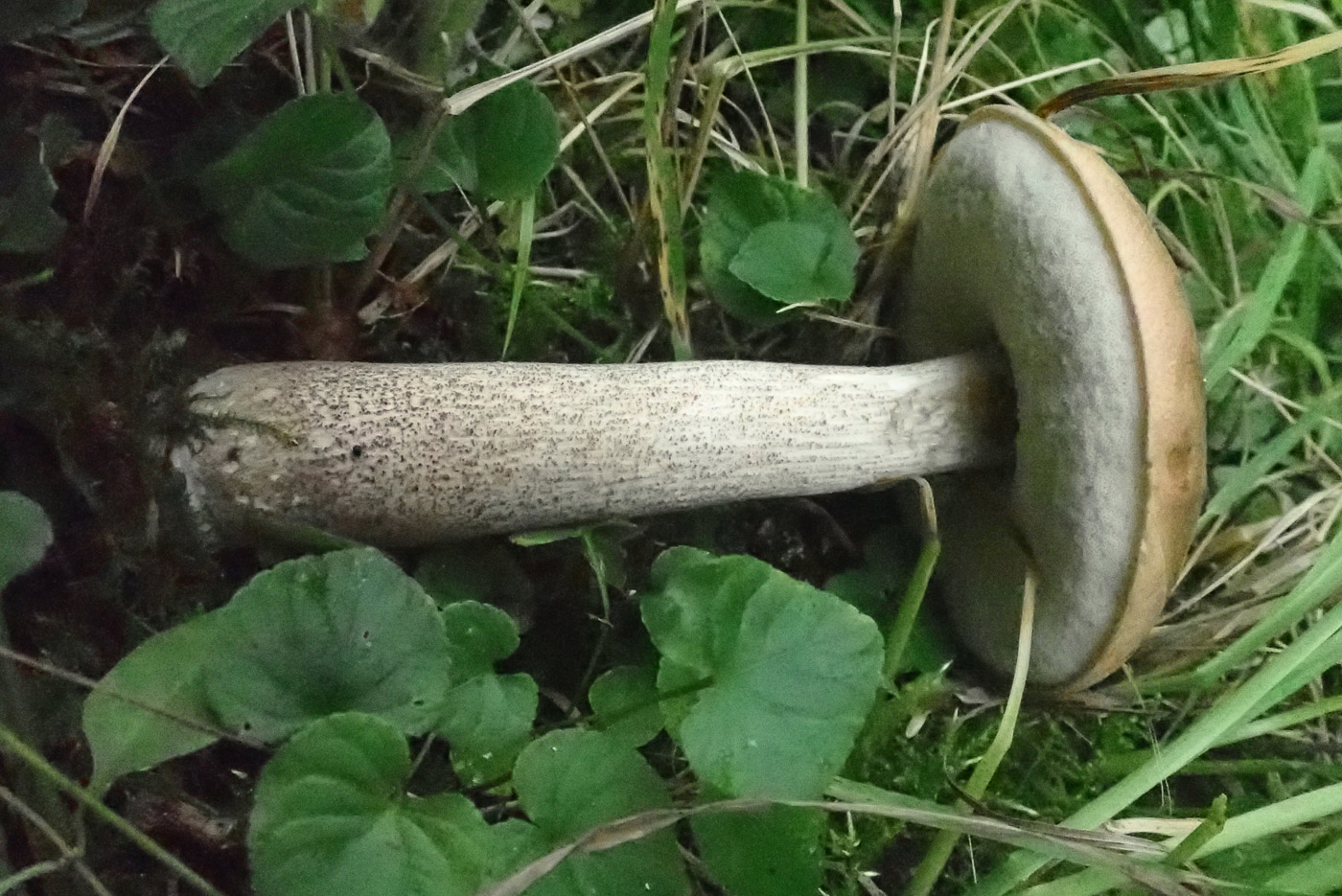
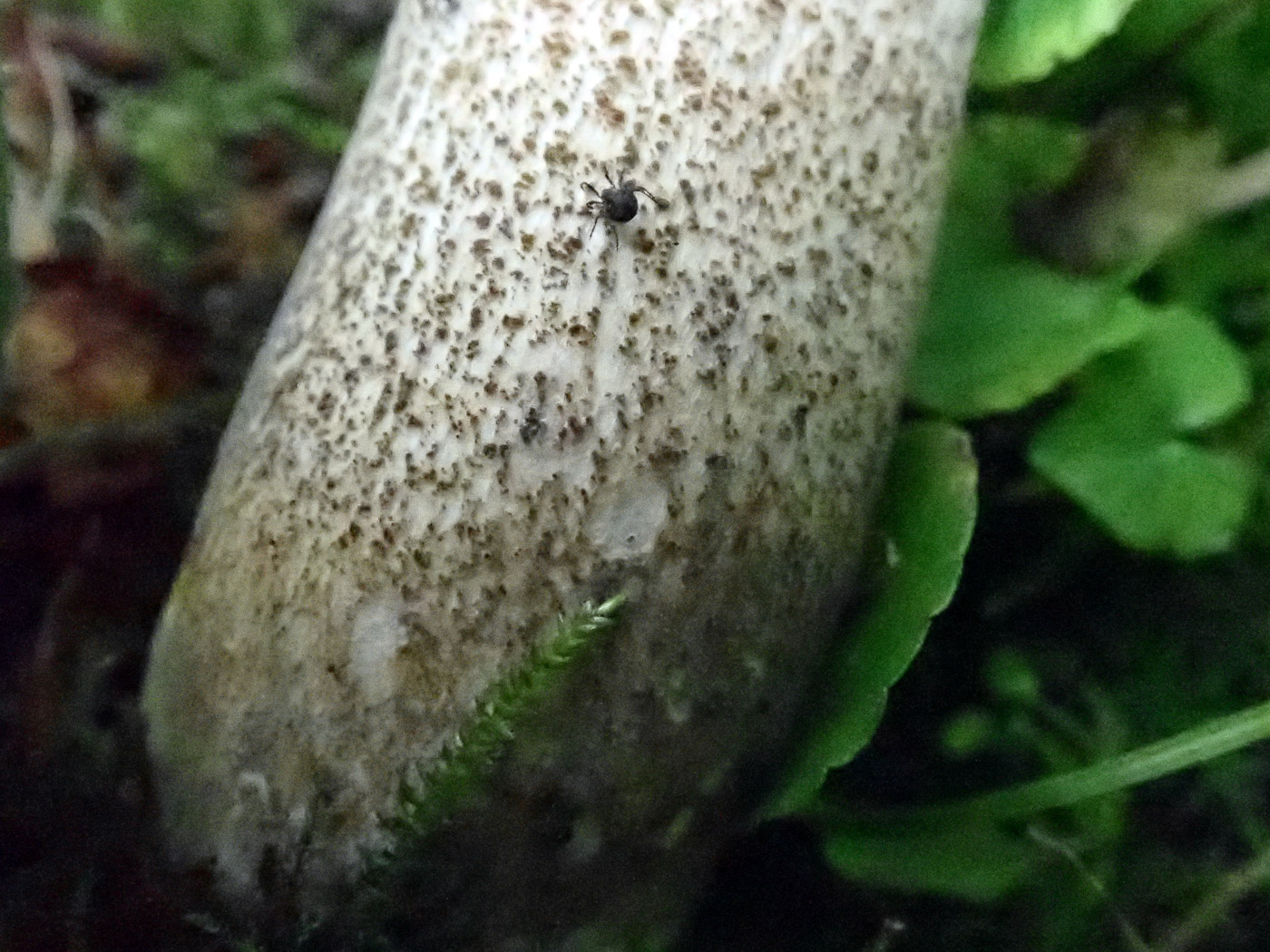 |
August 13th Leccinum scabrum (Brown Birch Bolete) 
In longish grass at the path edge in Rushbeds Wood Penny found this large bolete in soil near a mix of deciduous trees including Oak, Aspen and Birch - all of which could have been the host for the species though Birch was the likeliest. Turning it over revealed the dark 'scabers' on the stem (photo 3) and pale offwhite pores under the cap, making it a member of the Leccinum genus of boletes. Determining to species was going to need work at home, but the first step was to look for any signs of green staining at the stem base or where damaged by slugs and to slice the whole in half lengthways to observe any colour change in the flesh in 30 minutes or so. The lack of green staining or flesh change plus cap colour and softness together with microscopic features led to this the commonest Leccinum, host specific with Birch.
|

 |
August 13th Bulbillomyces farinosus (a Corticioid with no common name) 
In a stream in Rushbeds Wood Penny found this interesting and unusual fungus, one that at first glance looks like many other white corticioids but with a hand lens the tiny round white granules are quite distinctive (photo 2). Only found on soggy wood near water, this is a species which depends upon flood water to disperse the loose granules which contain the 'diaspores' - this stage of its development known as the Aegerita candida stage. This was new to the site, now one of six sites in the county where it's been found.
|
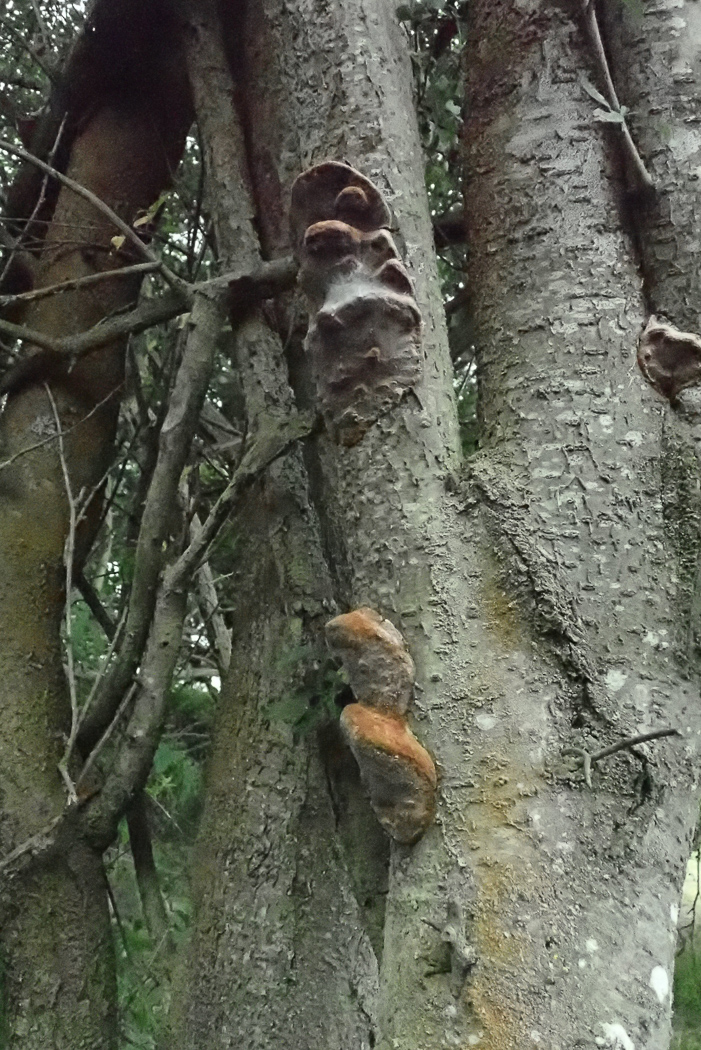
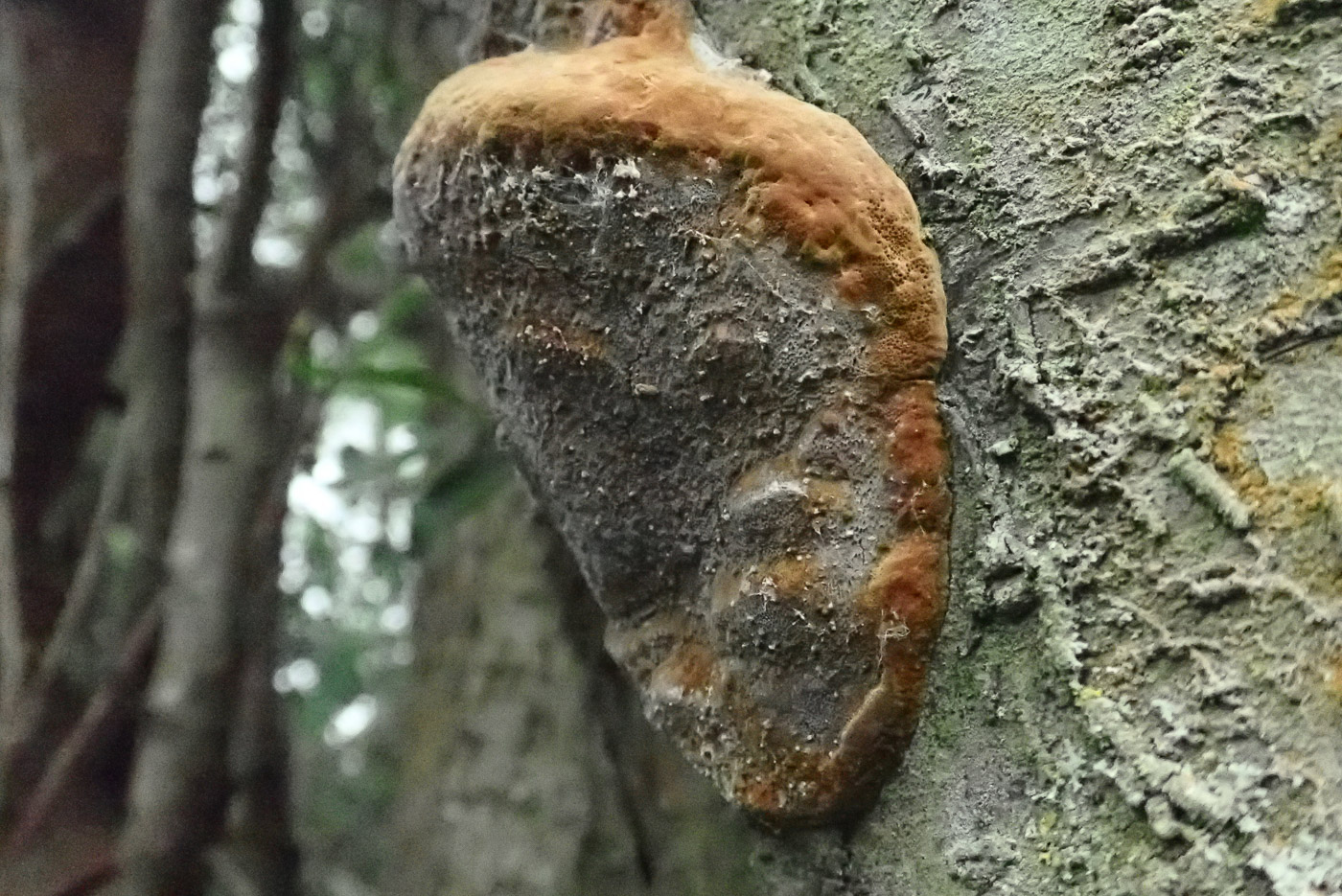 |
August 13th Phellinus pomaceus (Cushion Bracket)
In Rushbeds Wood Penny found this bracket on a Blackthorn tree where it regularly occurs. A perennial species which only grows on Prunus of various types, mature Blackthorn is a favourite host making it an easy bracket fungus to name wherever the host tree is prevalent. We have many county records though mostly from this site.
|

 |
August 13th Scleroderma areolatum (Leopard Earthball) 
In Rushbeds Wood under Oak Penny found this cluster of Earthballs and, suspecting that they were this species rather than the much commoner but very similar S. verrucosum (see Jul 19), she took one home to check the spores. Comparing the two species in the field, S. areolatum tends to have much less of a stem and the markings on the surface are more regular and less rough and scaly (hence the reference to leopard skin in the common name) and if one scratches the skin near the base in quickly turns pink with a violet tinge. The safest way, however, is the check the spores which are larger and have longer isolated spines in today's species. This was new to the site today.
|
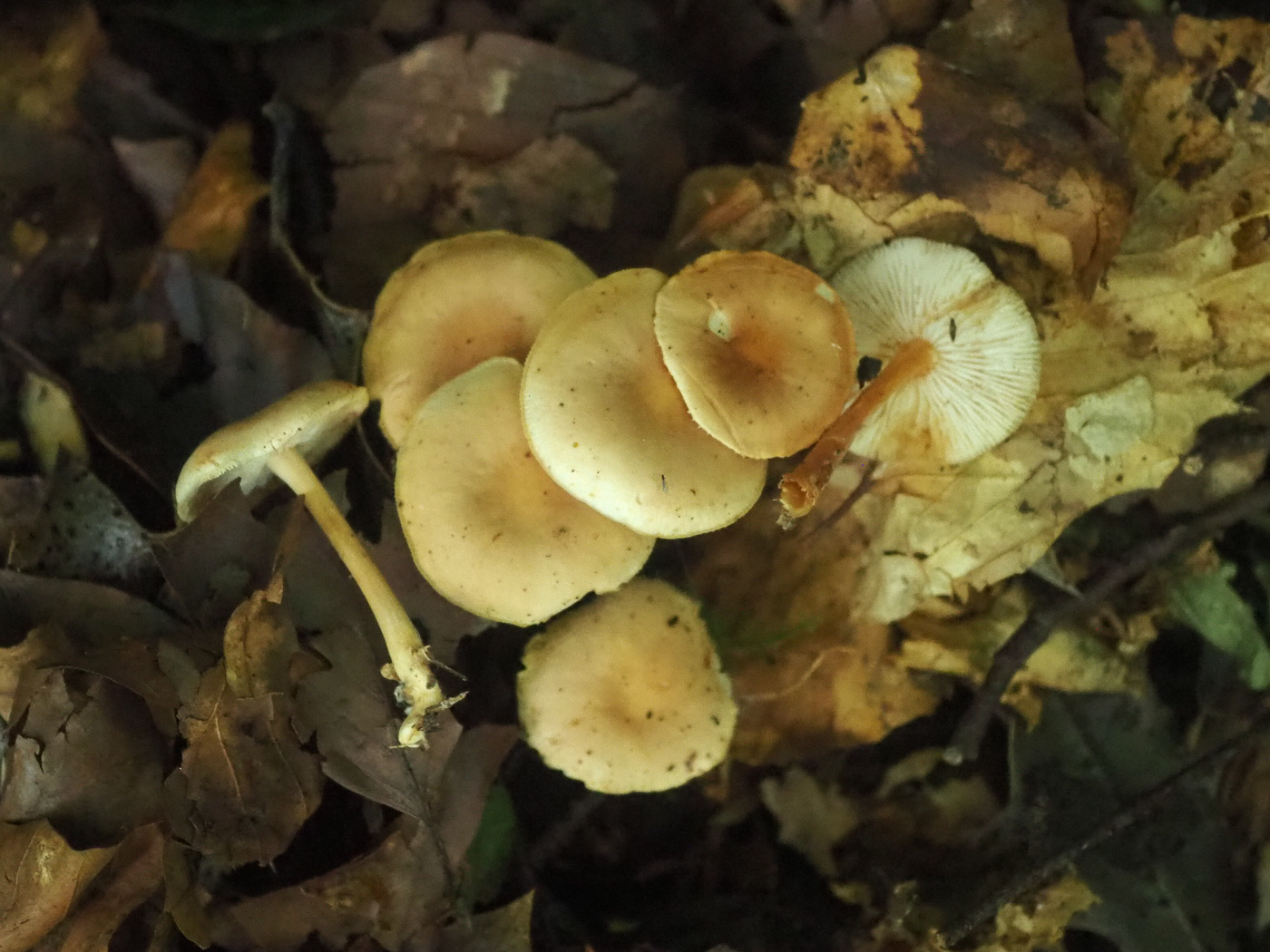 |
August 13th Gymnopus dryophilus (Russet Toughshank) 
In deciduous litter in Tinkers Wood John Catterson found several fruitbodies of this common and often early fruiting species of the woodland floor. The rusty cap and stem colour contrast well with its white gills and this together with its flexible texture usually make it recognisable in the field, though John went to the trouble of checking the spore shape and size to make sure he was correct.
|
August 12th 2021

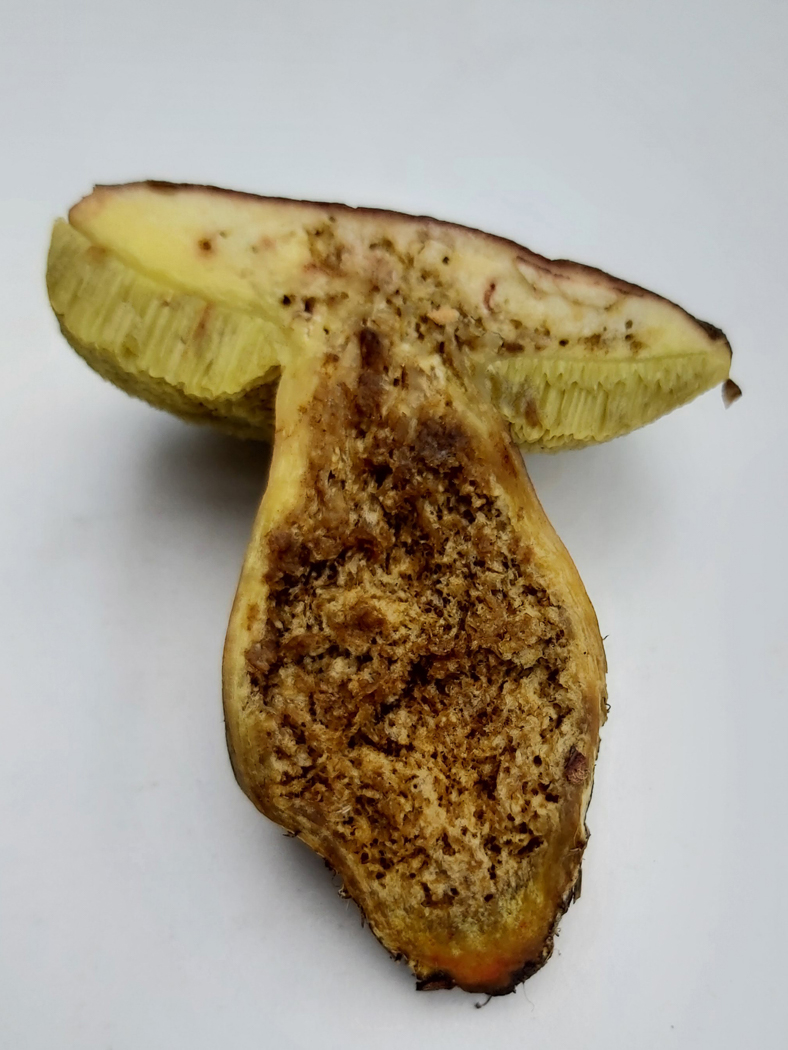 |
August 12th Hortiboletus engelii (a species of Bolete with no common name)
Under Oak in Jordans village Jesper Launder found this quite common species of bolete, previously known as Boletus or Xerocomus communis but one of a cluster of very similar species easily misnamed as Xerocomus chrysenteron (Red-cracked Bolete). Gone are the days when we can so name all soft-fleshed dull brown to pinkish capped boletes as that species with hardly a second glance! It is thought now that X. chrysenteron grows not under Oak but under conifers and occasionally Beech, whereas H. engelii is clearly an Oak associate. Photo 2 shows (as well as a very maggotty stem!) the diagnostic characteristic orange-red dots at its base which can coalesce, as here, into a distinct patch.
|
August 11th 2021
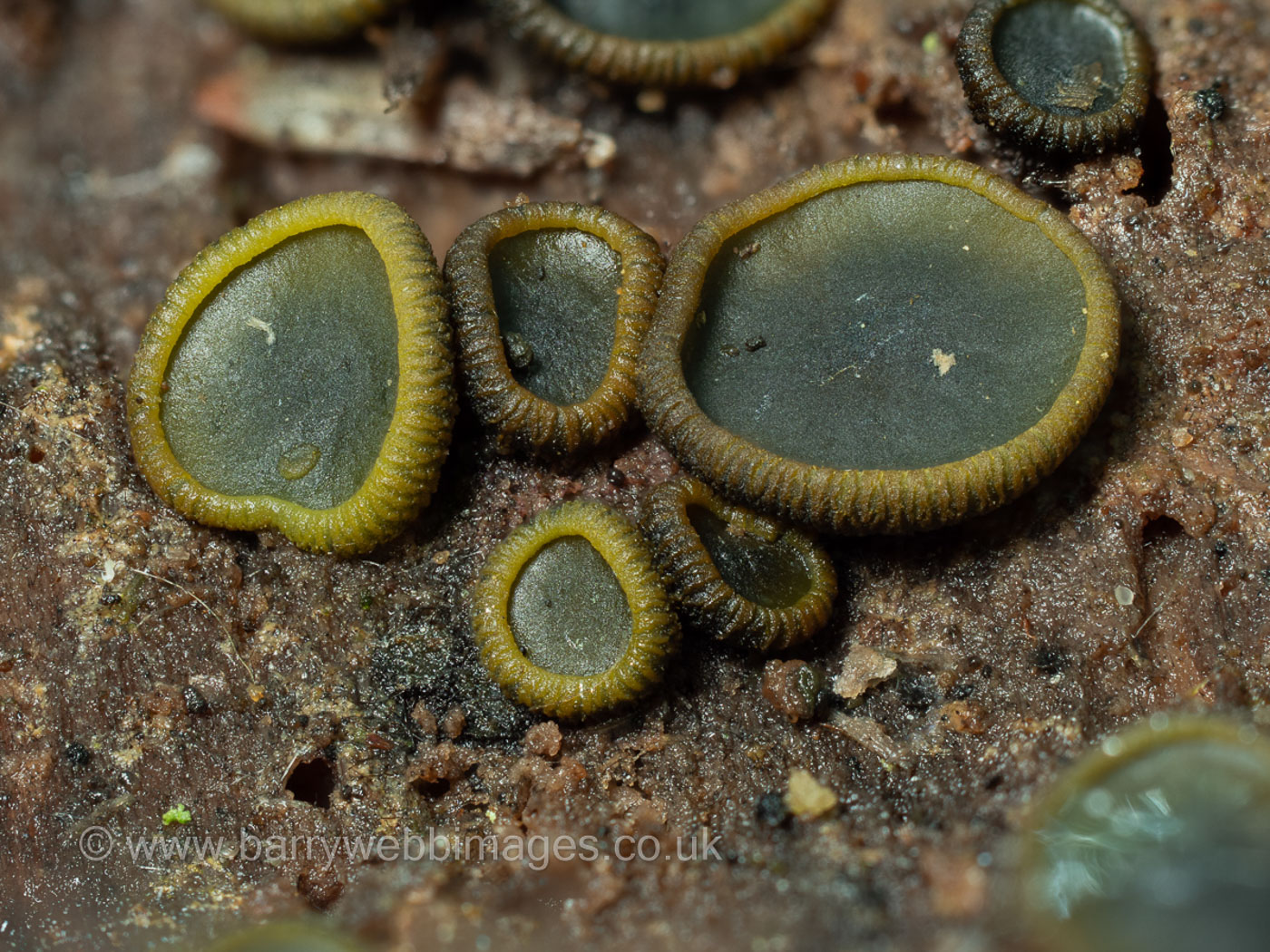 |
August 11th Catinella olivacea (Olive Salver)
In Penn Wood on bare wet rotting wood Barry Webb spotted these beautiful and distinctive little discs, the largest under 1 mm across. This is an easy one to name in the field if you happen to know it because the dark olive green colour is so unusual in a disc (or any other fungus!). It is not at all common, this being our 5th county record and the 4th site, the last find in 2003.
|
August 8th 2021
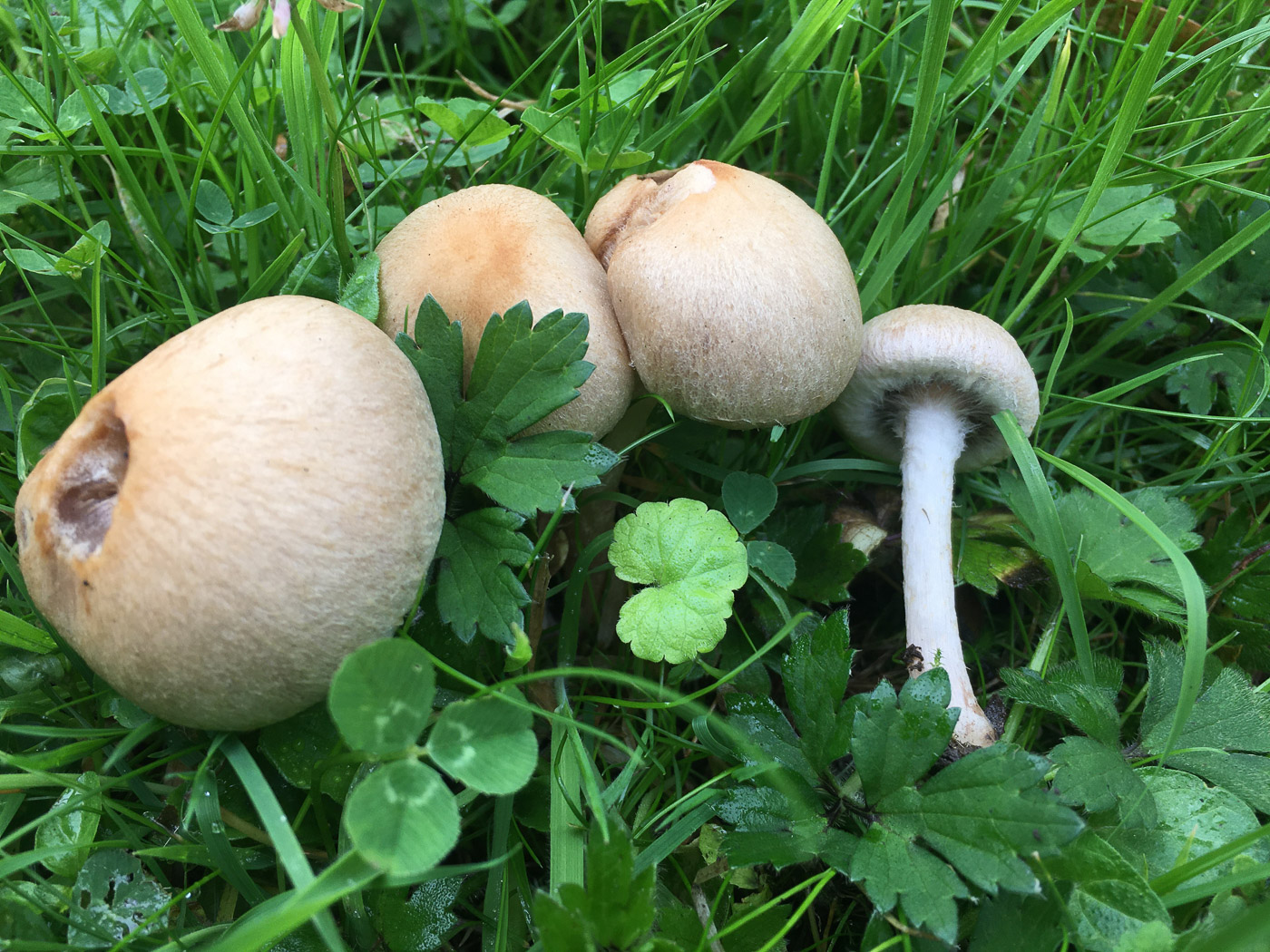

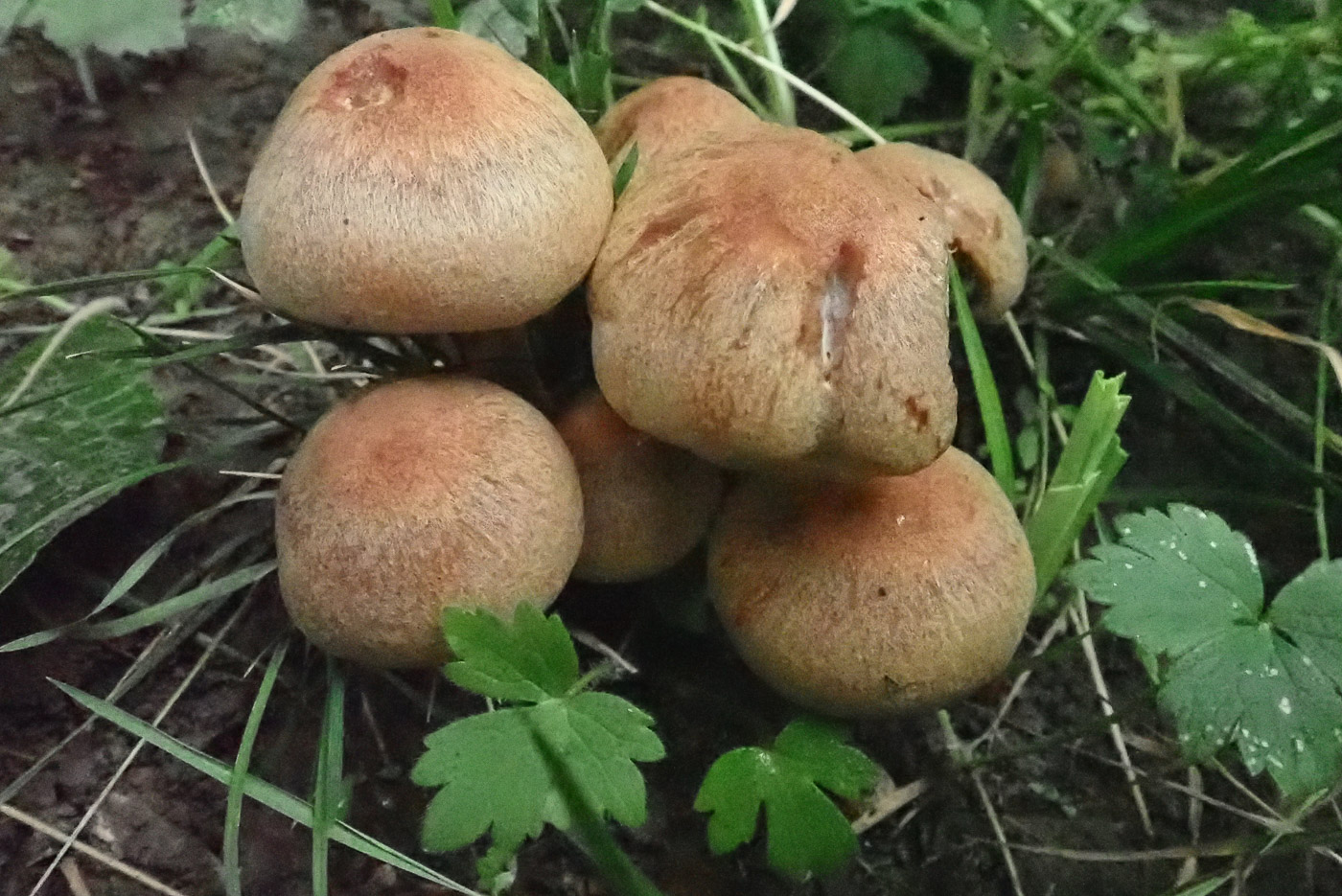
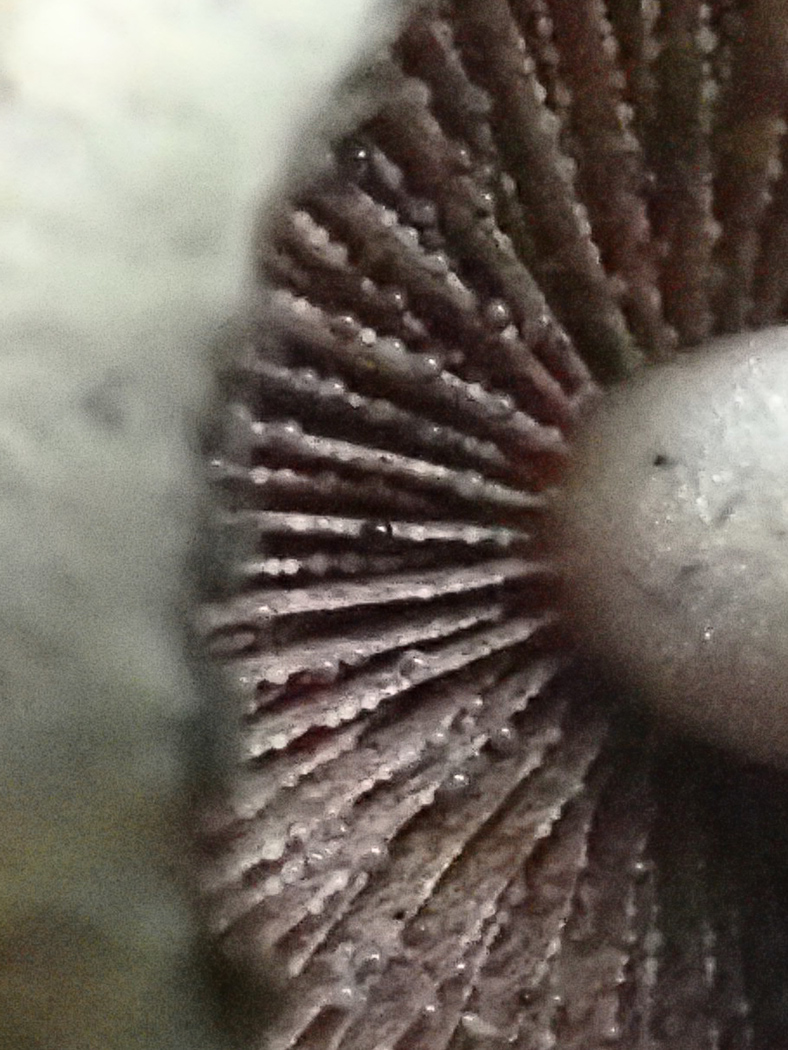 |
August 8th Lacrymaria lacrymabunda (Weeping Widow)
In soil in longish grass at Wotton Park Estate Joanna Dodsworth found typical material of this common species just emerging, one which frequents parkland, grassy paths, churchyards and the like, often in disturbed soil and early in the season. Caps can get to a good size, up to 10 cm across or more, and are shaggy to fibrous, pale to start with then gradually browner with age. The species name (meaning with abundant tears) comes from the black gills which have a white edge covered in fine droplets in moist conditions, and the underside view - photo 2 - shows the typical flocculose cap edge as the veil detaches from the stem leaving a ring zone. Photos 3 and 4 were of a collection of Penny's made a few days later at nearby Rushbeds Wood showing the more typical brown caps and a close-up of the gill droplets (with apologies for the blurred image).
|
August 7th 2021

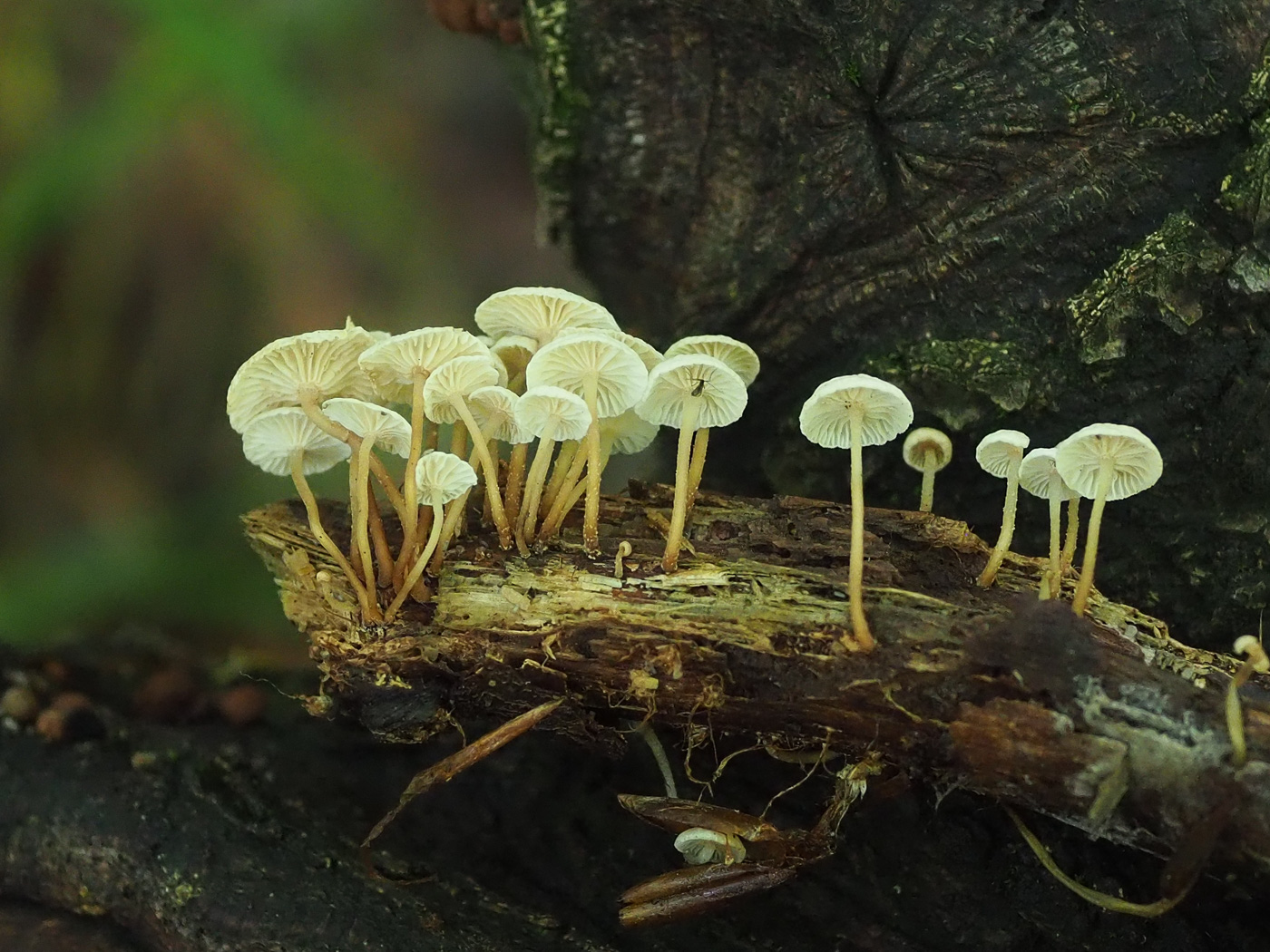 |
August 7th Marasmiellus ramealis (Twig Parachute)
On a small piece of bare deciduous wood in Tinkers Wood John Catterson noticed and correctly identified this tight cluster of small white fruitbodies. The caps rarely get above 1 cm across, typically with a pale brown centre, the gills lack the 'cog-wheel' around the stem to which the gills of the very similar Marasmius rotula attach (see photo dated July 31st for comparison), and unlike any species of Mycena the stem is white at the top but gradually darkens to brown at the base - this often a feature of both Marasmius and Marasmiellus. The species occurs in large clusters on wood, often sticks and twigs, also regularly on dead Bramble stems.
|
August 3rd 2021
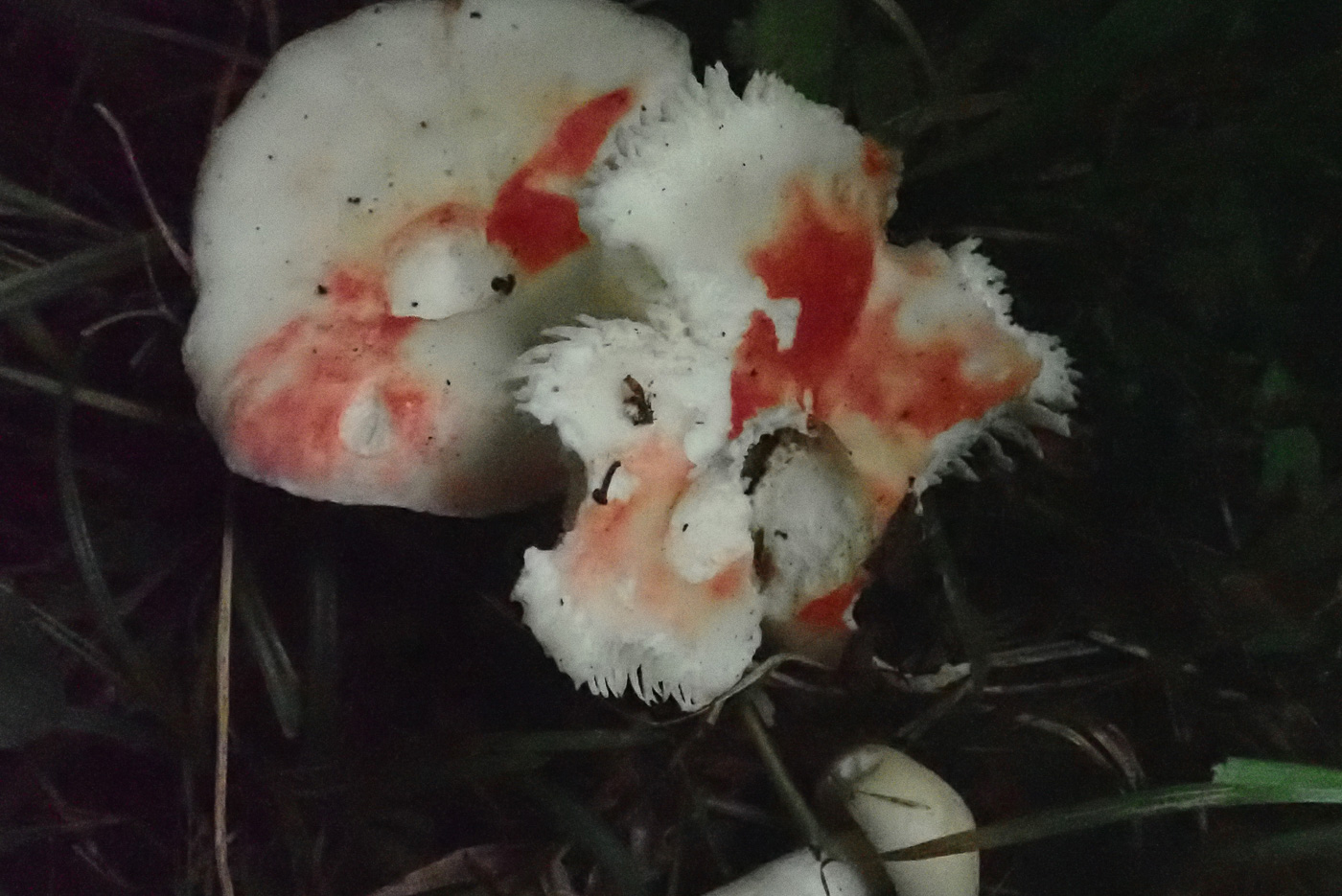
 |
August 3rd Russula persicina (a Brittlegill with no common name) 
In deep grass along a wide ride in Rushbeds Wood Penny found this large and impressive Brittlegill, the nearest trees being Hazel and Oak. Two caps were about 9 cms across and a young specimen was nearby. The unusual cap colour (a real blotchy mix of pink-red and cream-white) together with cream gills and white thick stem suggested two possible species: R. luteotacta or R. persicina, the first occasional in the county, the second not yet recorded here. A sporeprint overnight was the first priority, followed by scratching the stem and cap surface and waiting for the telltale bright chrome staining of R. luteotacta to develop - also probably overnight. Other characters (the hot taste and cap cuticle not peeling) fitted well with both species but the spore ornamentation pointed to R. persicina, this confirmed in the morning by the deep cream rather than white sporeprint and the lack of any chrome staining where damaged. Not only new to the site but to the county, this is quite a rarity and was a pleasing find.
|

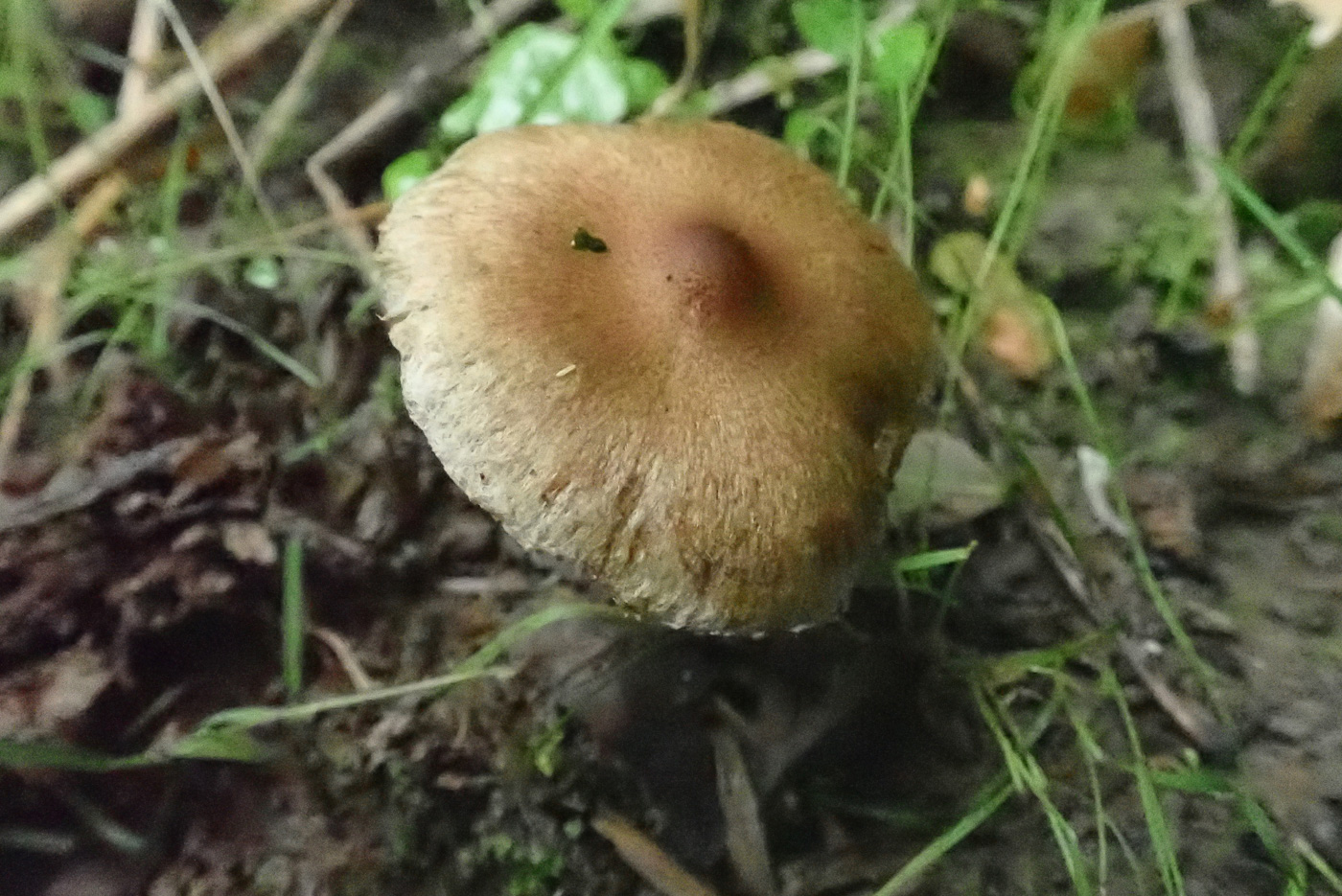 |
August 3rd Inocybe curvipes (a Fibrecap with no common name) 
At the edge of a muddy path under Hazel in Rushbeds Wood Penny found this group of typical Fibrecaps - a genus well qualified as LBJs with about 150 species, all but a very few needing a scope to identify with safety. Most have brown caps of some shade, with (as here) or without a central umbo which is a bit darker and the dry often fibrous surface tends to split towards the margin (see photo 2). Gills are pale brown becoming darker with maturity and stems vary in colour and sometimes have a basal bulb (not in today's species). I. curvipes is not rare and has a unique combination of distinctive nodulose spores and bloated thick walled cells on the gill edge and face, occurring under deciduous trees. (The species name, curvipes meaning a curved stem, is misleading and could equally apply at times to others as well thought today's were slightly curved!) We have a good number of records from a handful of county sites though it was new today for Rushbeds.
|

 |
August 3rd Psathyrella piluliformis (Common Stump Brittlestem) 
On a deciduous log pile in Rushbeds Wood Penny found three young specimens just emerging. This is a clustering Brittlestem always found on fallen wood and one of only a few of this genus which can be recognised with any safety in the field (P. candolleana, also found today, being another). The clustered habit and reddish brown cap having a rounded shape and (when young as here) copious veil are good characters though the veil soon vanishes. As with others in the genus the gills gradually darken to greyish almost black with maturity and the white often hollow stems are typical.
|

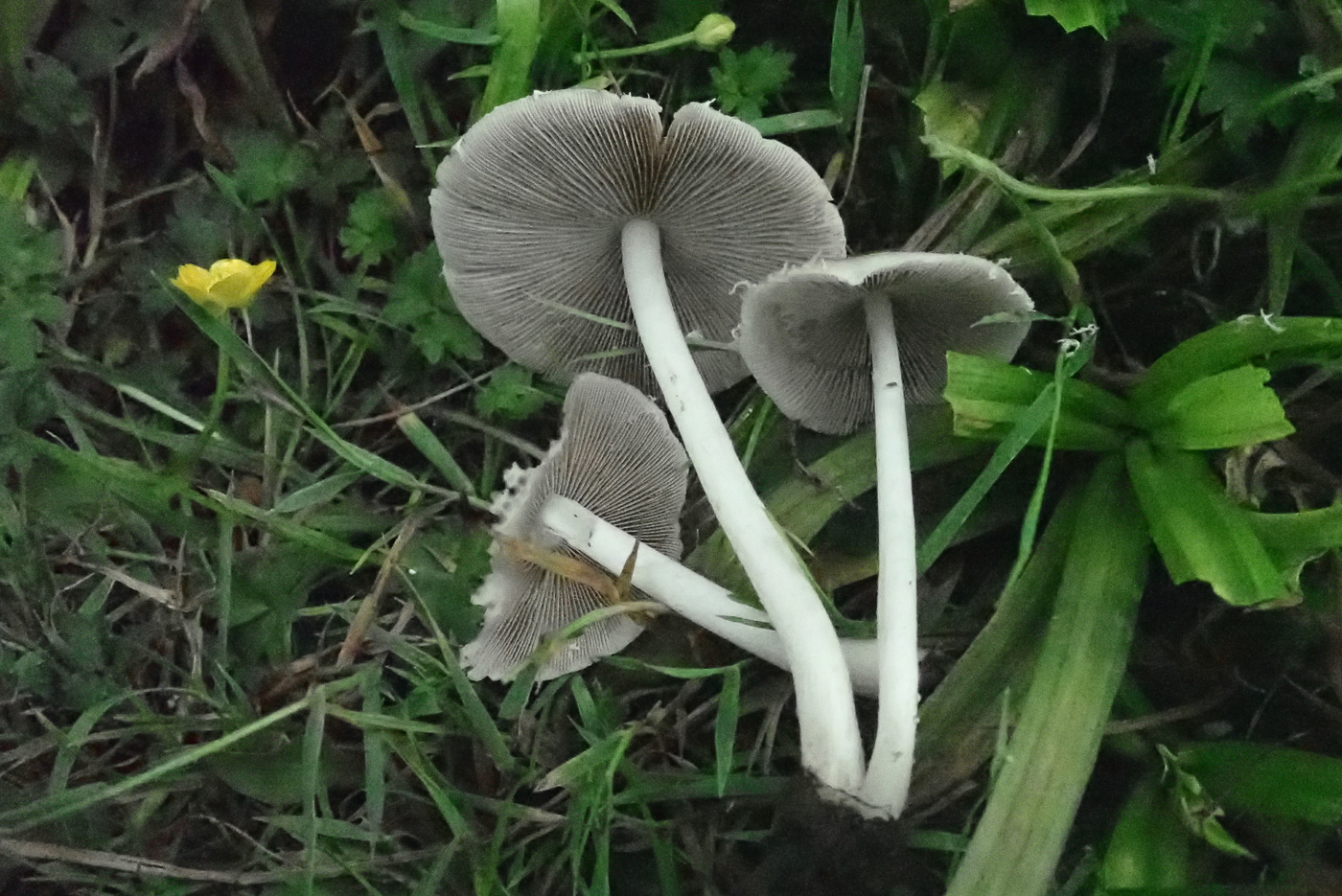
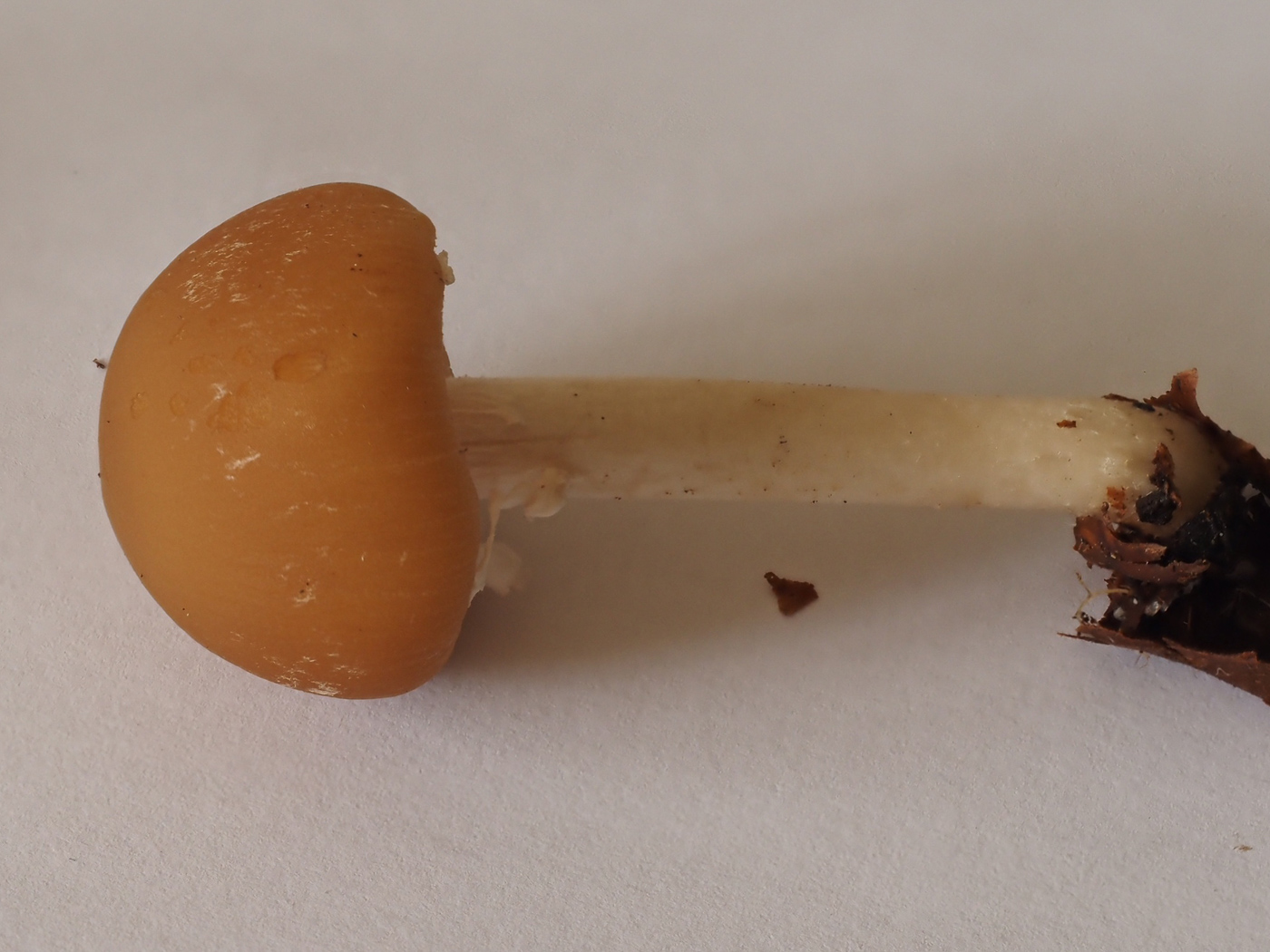
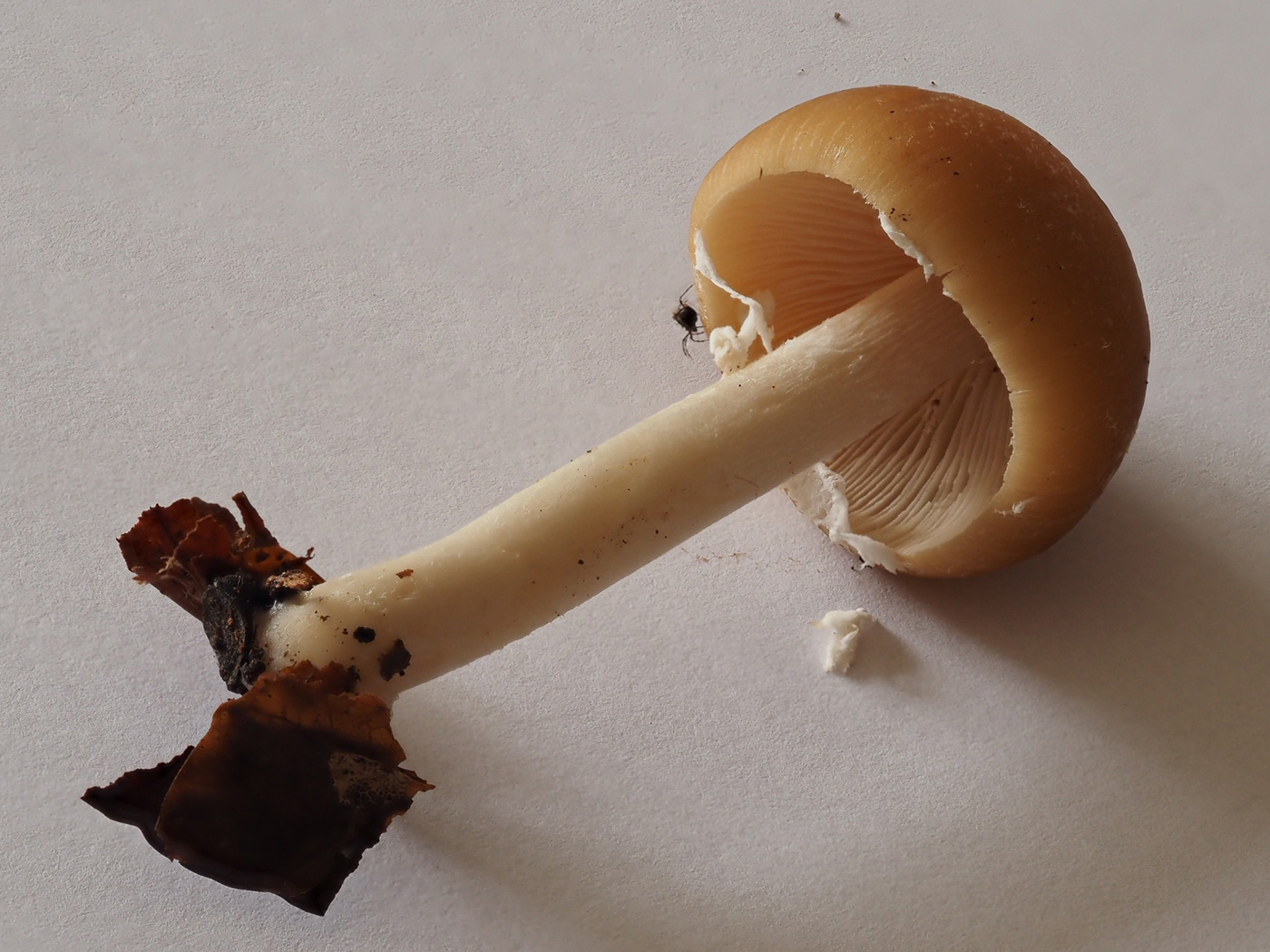 |
August 3rdPsathyrella candolleana (Pale Brittlestem) 
In a muddy grassy path in Rushbeds Wood Penny found various groups of this common and often early season fruiter. The pale to white cap once mature often has a frilly margin caused by veil remnants, and the gills gradually darken with age as the dark brown spores mature and colour them (photo 2). The stem, true to form, is white and quite fragile. However, when fresh and immature this species looks remarkably different with a darker ochre to reddish brown cap having flecks of white veil and gills which are pretty well white - the whole being reminiscent of another common early fruiter, Gymnopus dryophilus (Russet Toughshank). Claire Williams took photos 3 and 4 of young fresh P. candolleana found in Downley Woods on August 6th thinking they were the Toughshank, but an overnight sporeprint taken at Penny's suggestion proved otherwise, it being the veil remnants which pointed Penny in the right direction.
|
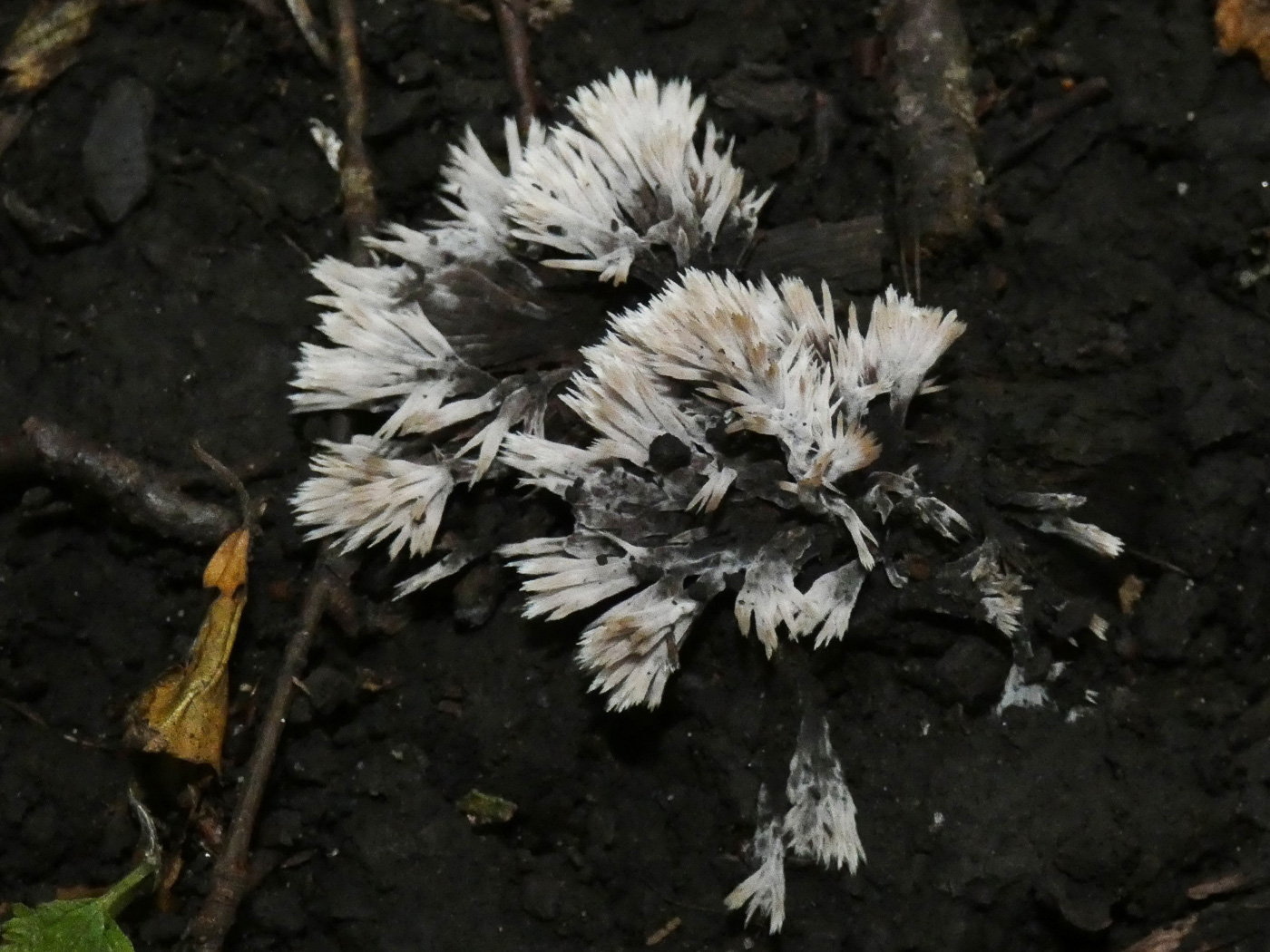 |
August 3rd Thelephora penicillata (Urchin Earthfan)
A member of the public found several clumps of this unusual fungus in Howe Park Wood, Milton Keynes. It was then identified online before being sent to BFG for confirmation and recording. We have a handful of records but all from the south of the county, so this was a nice find. It can occur in deciduous woodland and typically forms flattened clusters having white frilly tips which darken towards the base.
|
August 2nd 2021
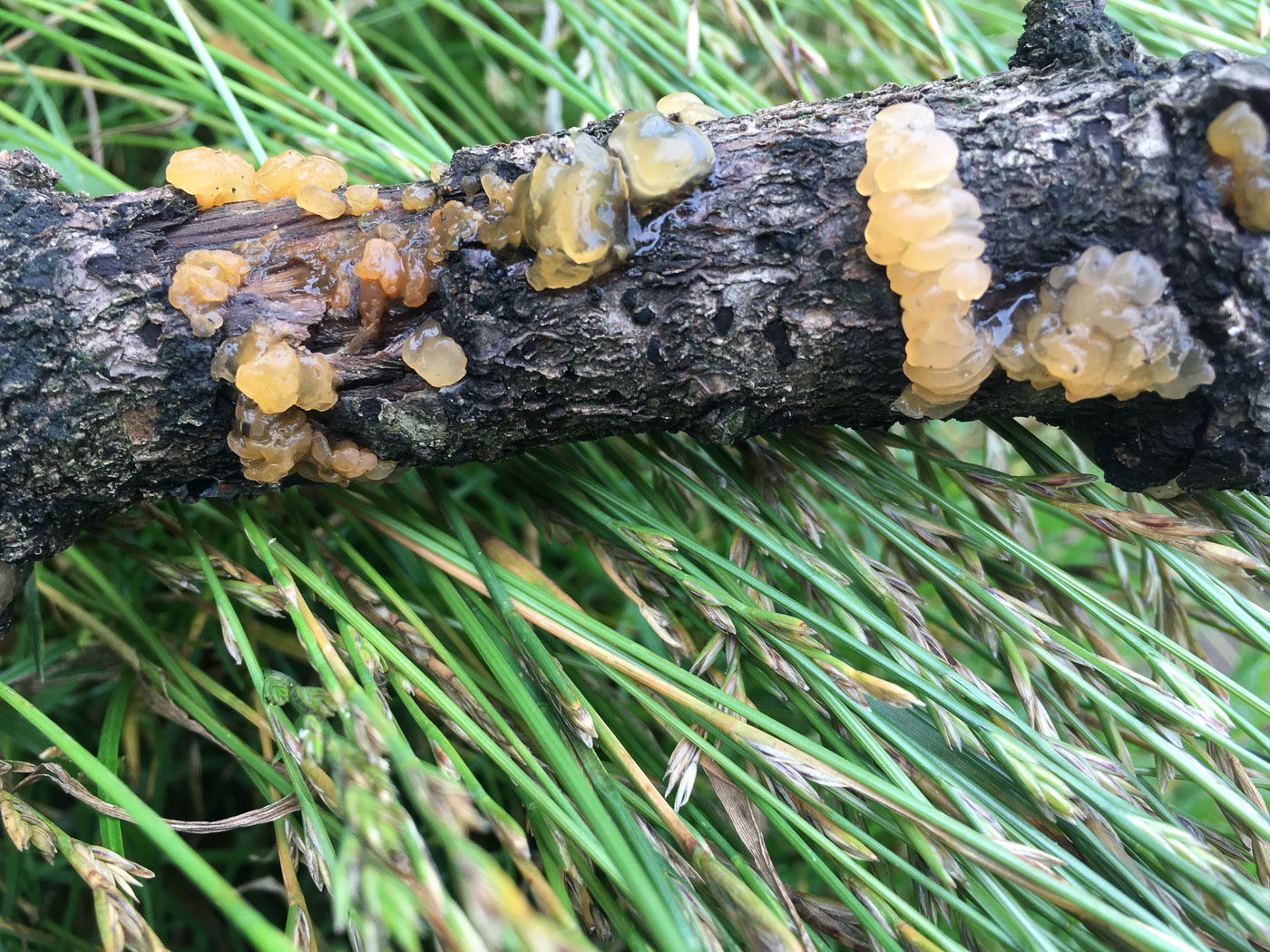 |
August 2nd Myxarium nucleatum (previously Exidia nucleata - Crystal Brain) 
In the Walks in Brill Joanna Dodsworth noticed this small clustered jelly-like fungus on a deciduous stick. Quite a common species on this substrate, it is usually translucent milky white and has a central thicker crystalline core (nucleus) which can often be detected (possibly just visible in the central blob here). It can apparently sometimes be tinted pinkish, violaceous or (as shown in some images online) more creamy to yellow as here.
|
August 1st 2021
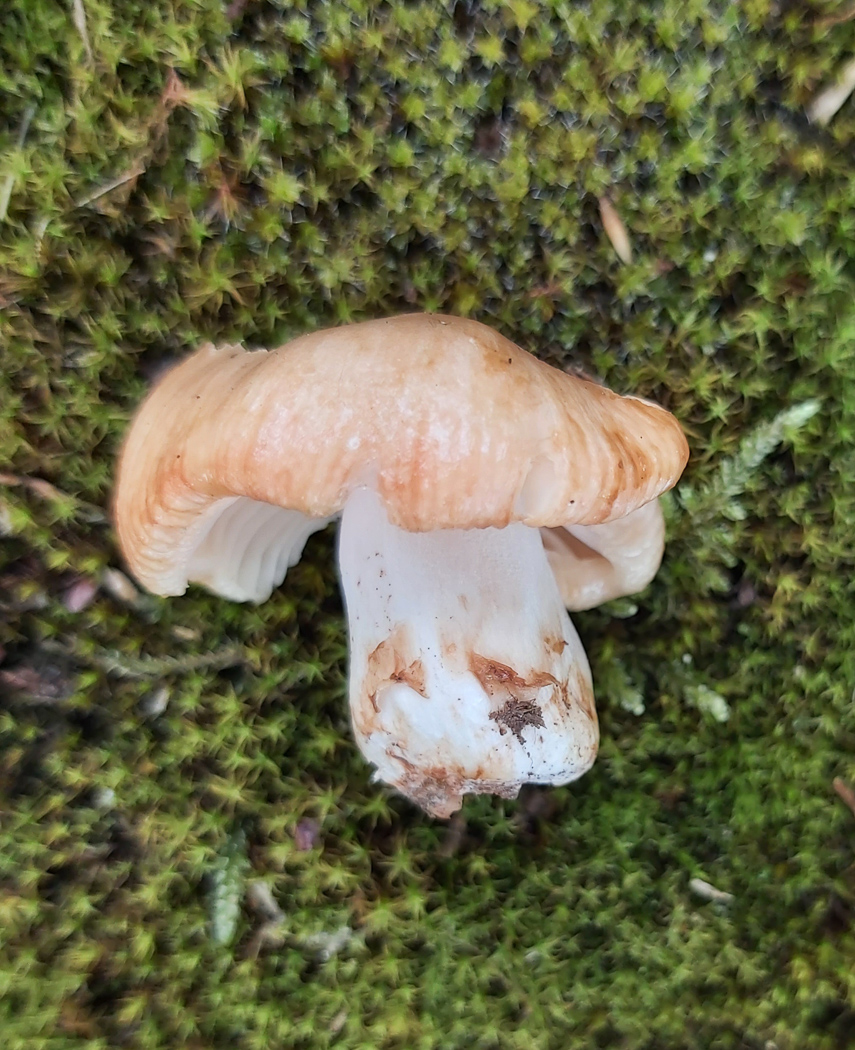 |
August 1st Russula praetervisa (a rare species of Brittlegill with no common name) 
In Jordans village Jesper Launder collected an inconspicuous Russula under Oak, recognising it as one belonging to the 'Smellies' group. (See other examples of this group dated July 16th and also today found by Penny). Taking it home to work on - often necessary with this genus - he noted the rusty stains on the lower stem as well as the mild taste and particular spore ornamentation which separate this species from another rarely recorded and very similar species, R. pectinata. Both occur under Oak, are yellowish ochre, have fluted cap margins and are viscid in moist conditionsas well as having unpleasant smells. We have just one previous record: from Hodgemoor Woods identified by Geoffrey Kibby.
|
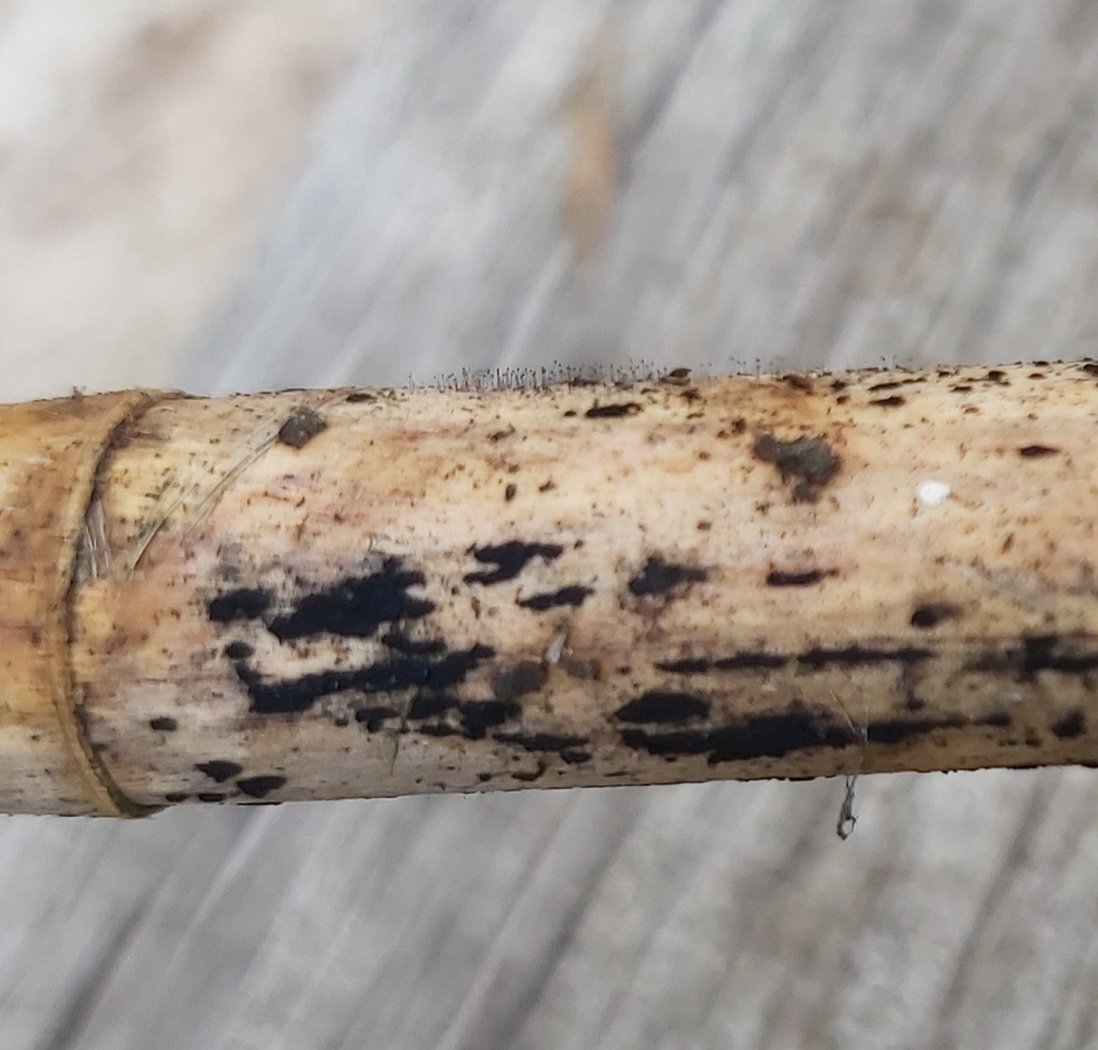
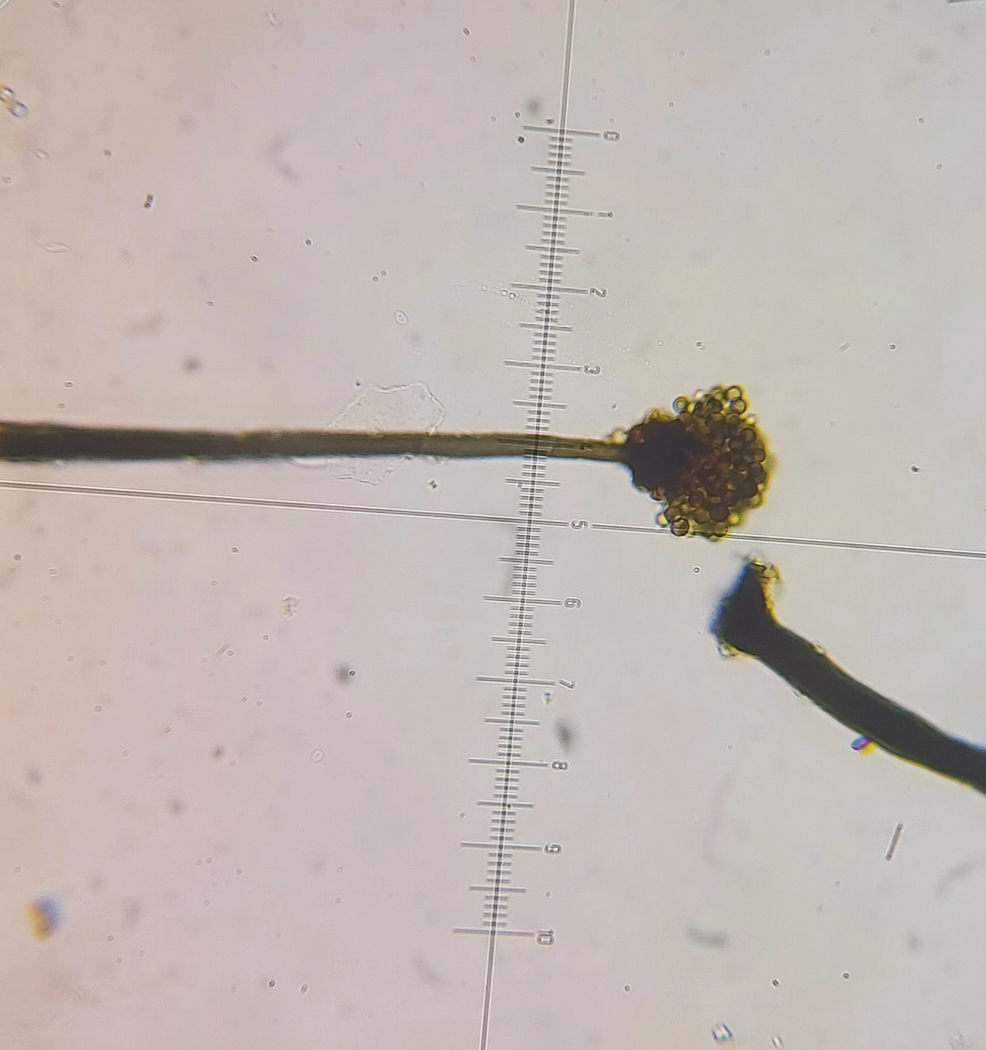 |
August 1st Periconia minutissima (an Ascomycete with no common name) 
On a bamboo cane in his Jordans garden Jesper Launder noticed these tiny stalked fruit bodies (just visible along the top surface in photo 1) and was able to identify them using the appropriate literature. Apparently a very common species but obviously one very easily overlooked(!), it occurs on many different dead herbaceous stems and leaves throughout the year and when viewed with a x10 lens looks like a miniature forest of black round-headed pins - photo 2 taken under magnification shows a single pin head with the clustered conidia (sterile spores). We have just two previous county records (1990 and 2001) both made by mycologists with impeccable reputations: Jerry Cooper and Henry Beker, so Jesper is in good company!
|
 |
August 1st Erysiphe heraclei (Umbellifer Mildew)
In his Jordans garden Jesper Launder noticed this very common mildew on Hogweed leaves - an inconspicuous summertime fungus which often goes unnoticed as do many such species on plant foliage.
|
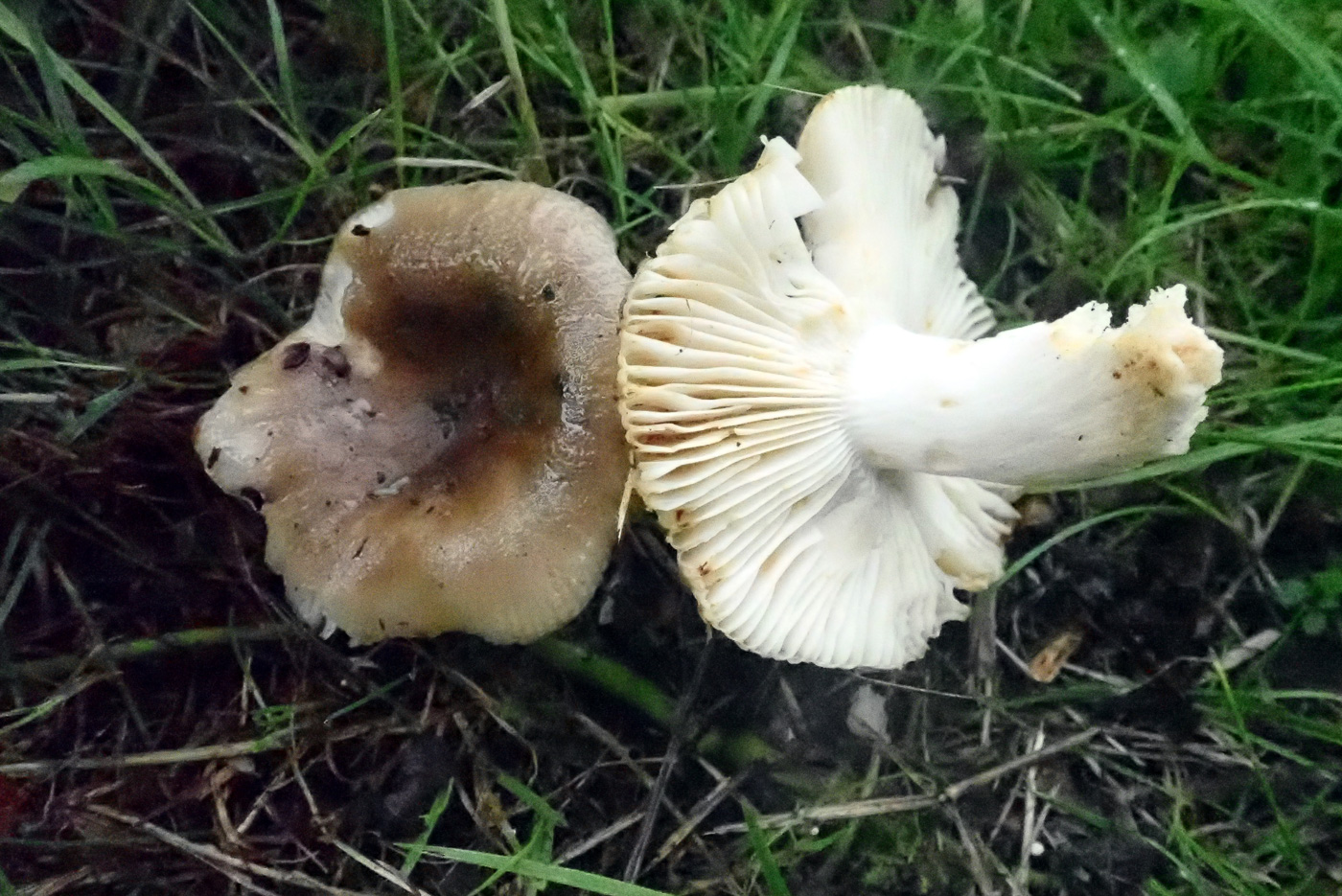
 |
August 1st Russula sororia (Sepia Brittlegill)
In grassy soil under Oak at Cadmore End Penny found a couple of Brittlegills clearly belonging to a group affectionately known as the 'Smellies'! This particular species is extremely similar to the much more common R. amoenolens (Camembert Brittlegill) and it is only in fairly recent times that it was realised that the two species could be separated by using the reagent Guaiac (derived from a resin) on the stem: instantly bright deep blue in R. amoenolens but negative to very little blue reaction in R. sororia. Prior to this knowledge the name R. sororia was applied to any similar collections, but as we now realise that R. amoenolens is really common and R. sororia quite rare many of the previous records are probably incorrect. We have about 20 (doubtful) county records named as R. sororia but very few since the turn of the century (which are likely to have been checked with Guaiac) and none since 2010, so today's find was notable. Photo 2 here shows the slight colour change after Guaiac was applied, but compare this photo with R. amoenolens dated July 16th showing the really positive reaction. Both species are mycorrhizal with Oak.
|
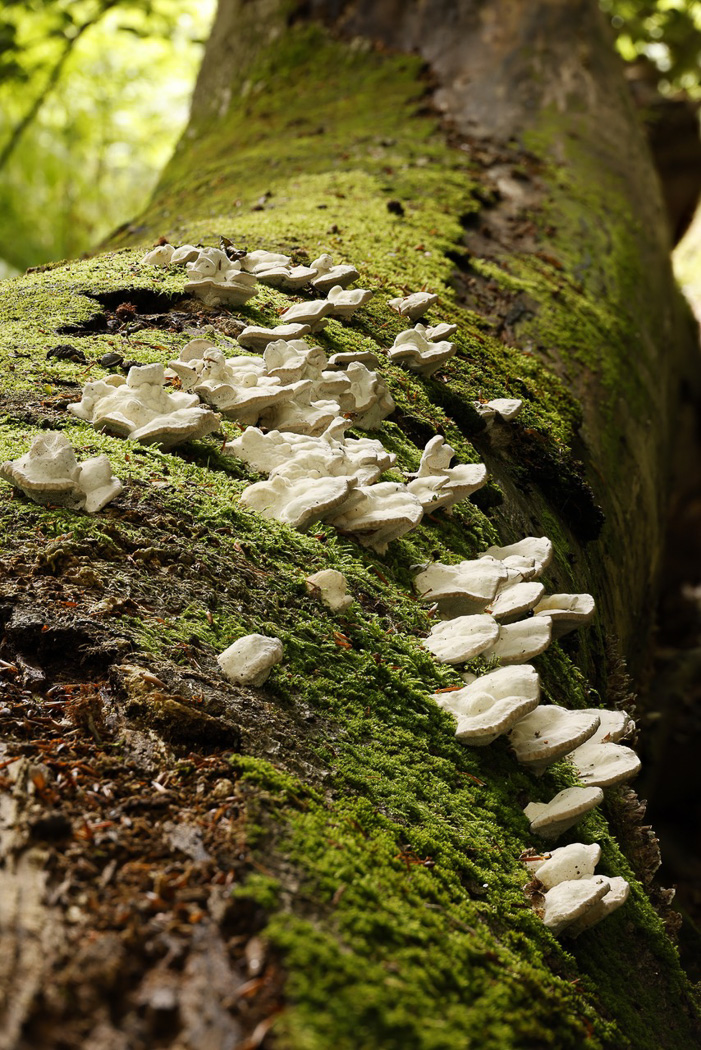
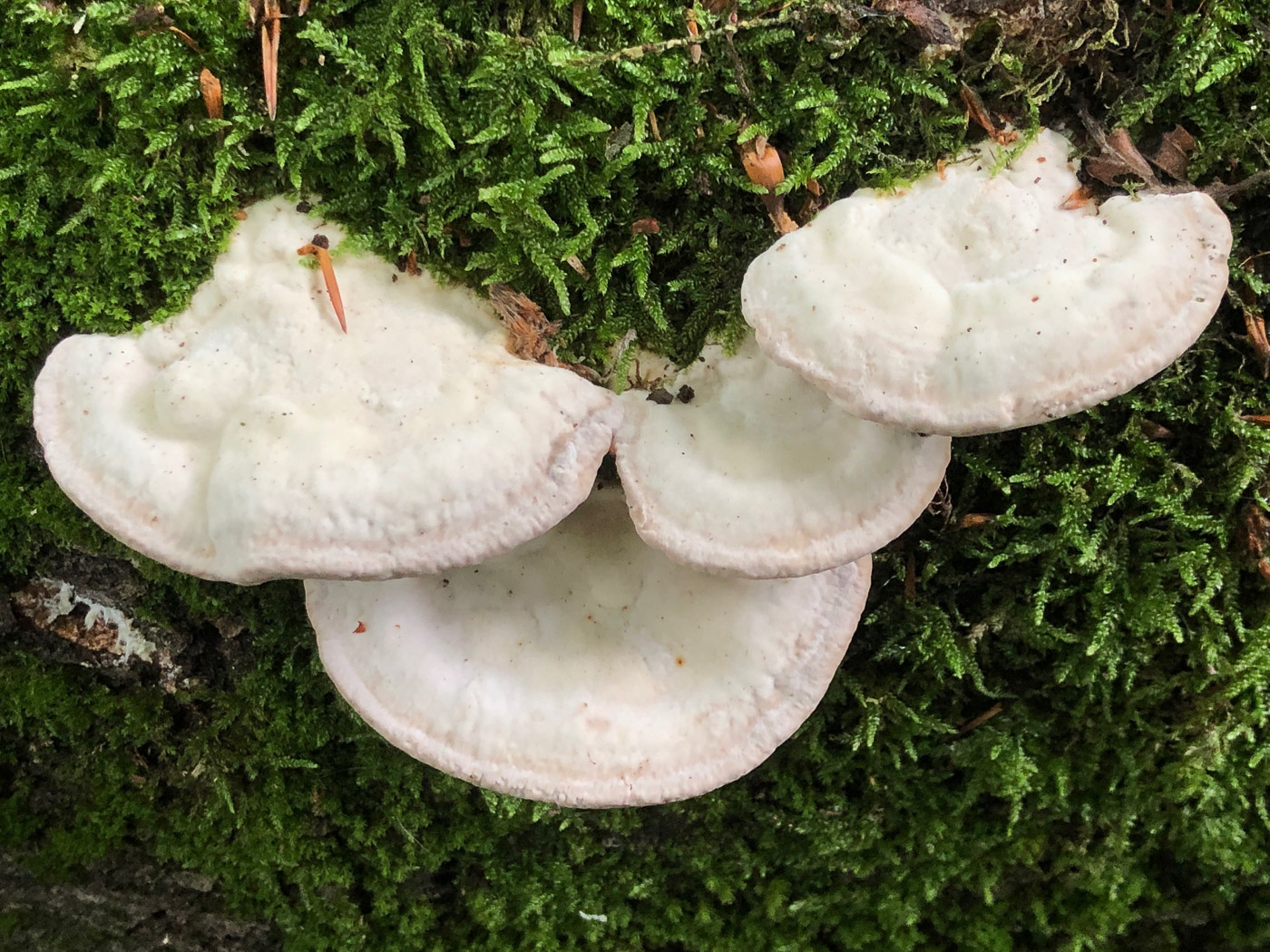
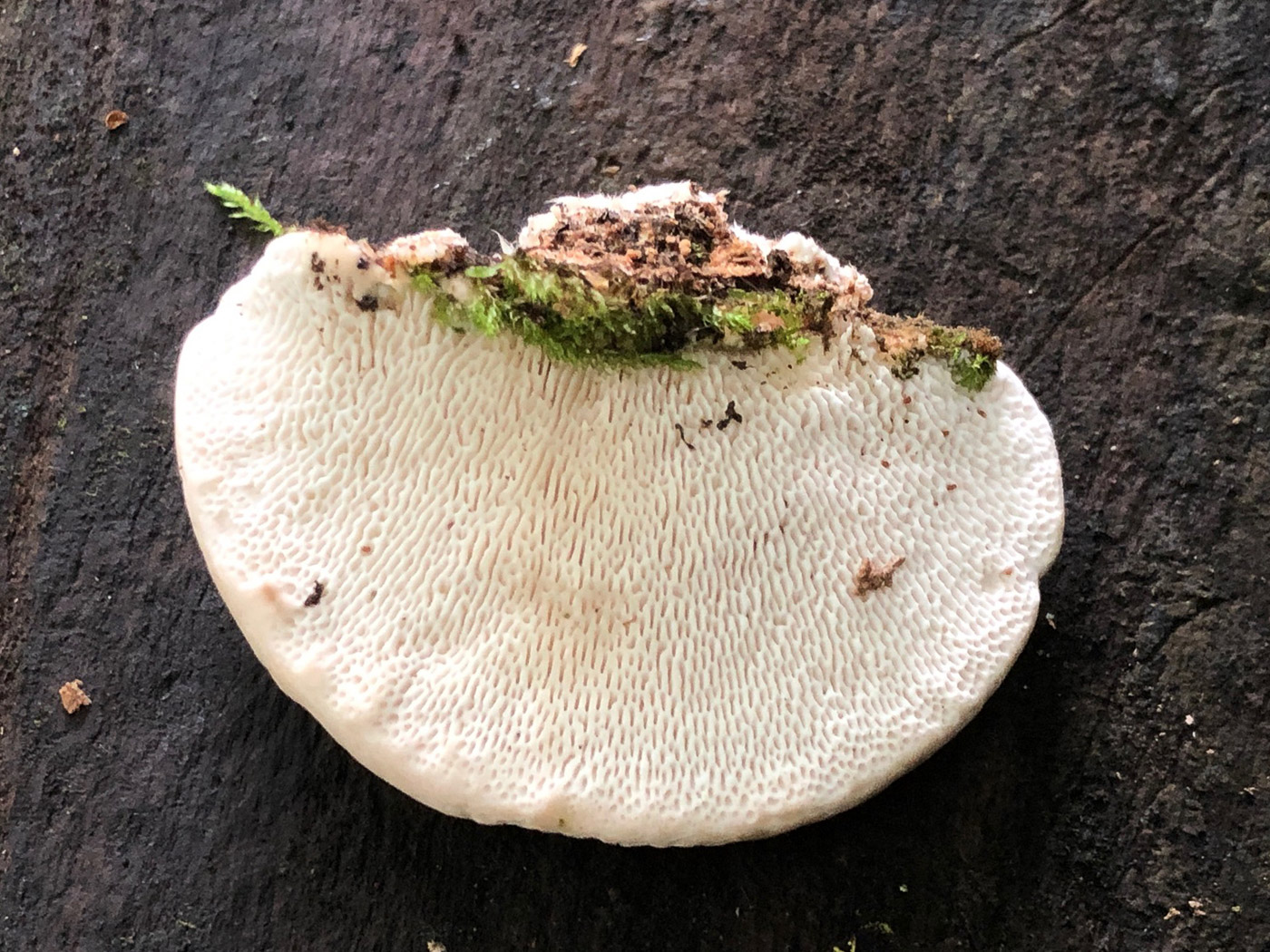 |
August 1st Trametes gibbosa (Lumpy Bracket)
On a fallen Beech trunk in Naphill Common Paul Goby noticed this spread of brackets covering about a metre of the trunk, some up to 10 cms across. Often this particular species - common on various deciduous woods - becomes coated with green algae as it ages, being a useful diagnostic feature. Today's example, however, is young fresh material showing its typical lumpy upper surface, pale colour with labyrinthine almost gill-like under-surface (photo 3). It has tough thick flesh, the whole being flexible but very firmly attached to its substrate.
|
July 31st 2021
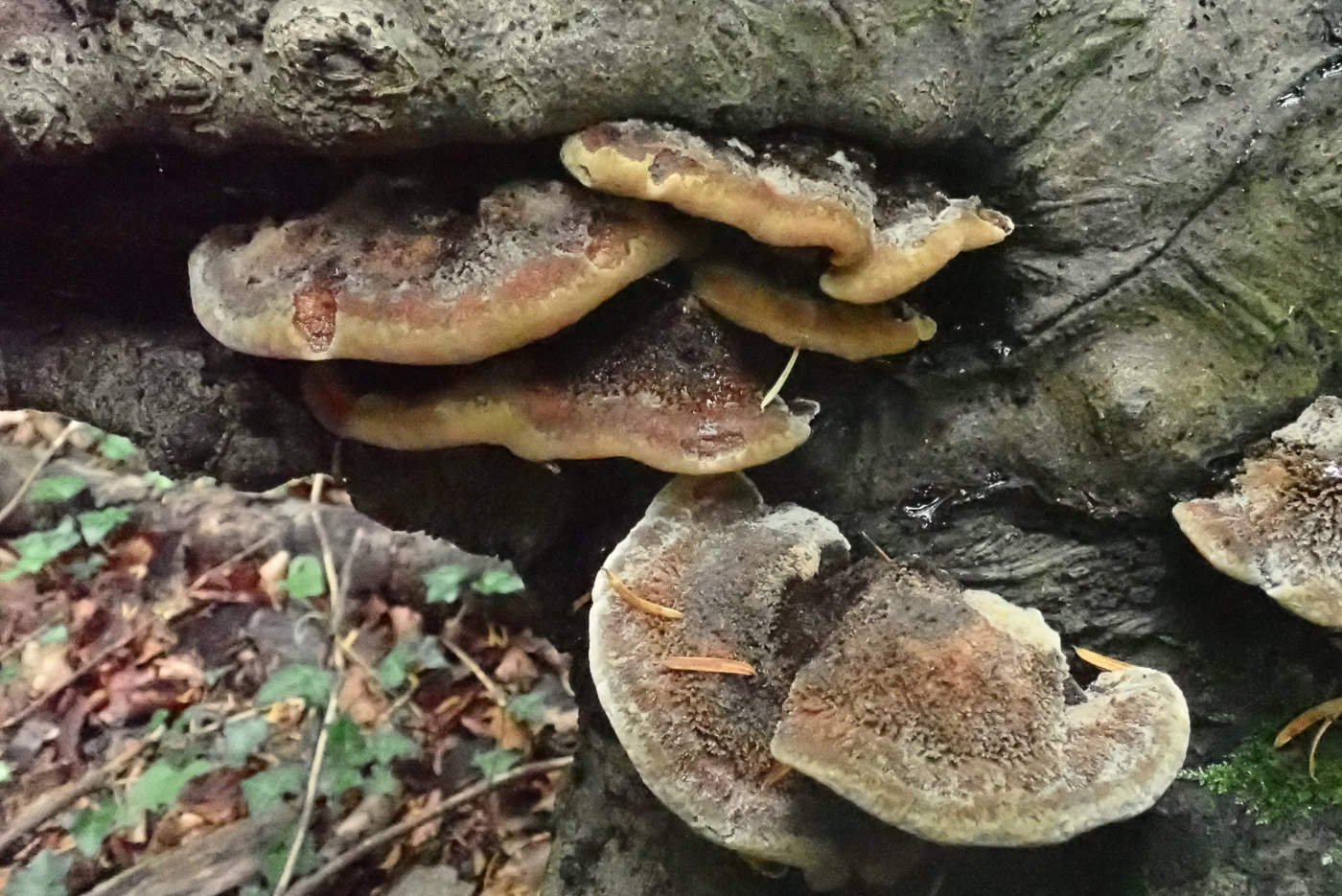
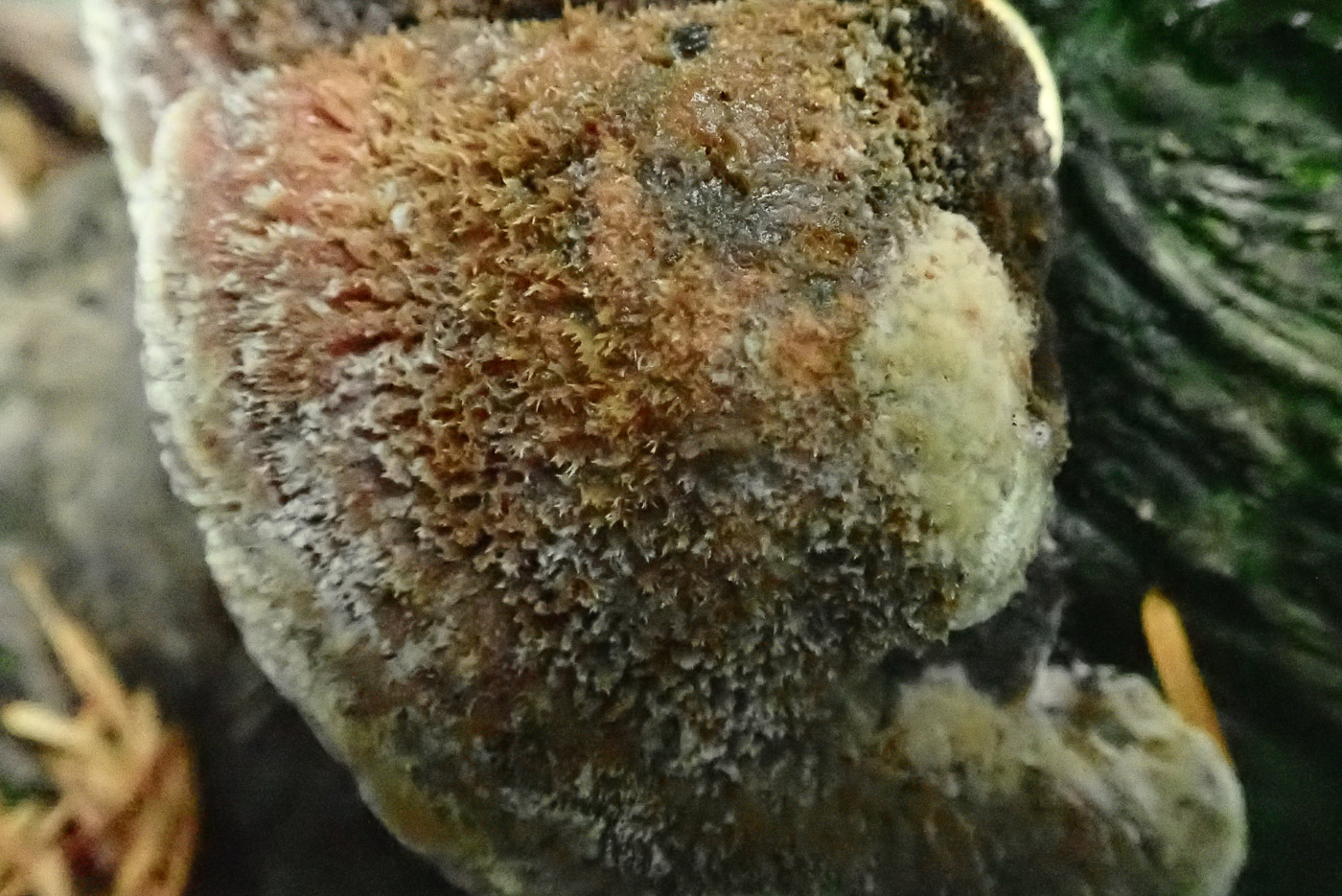

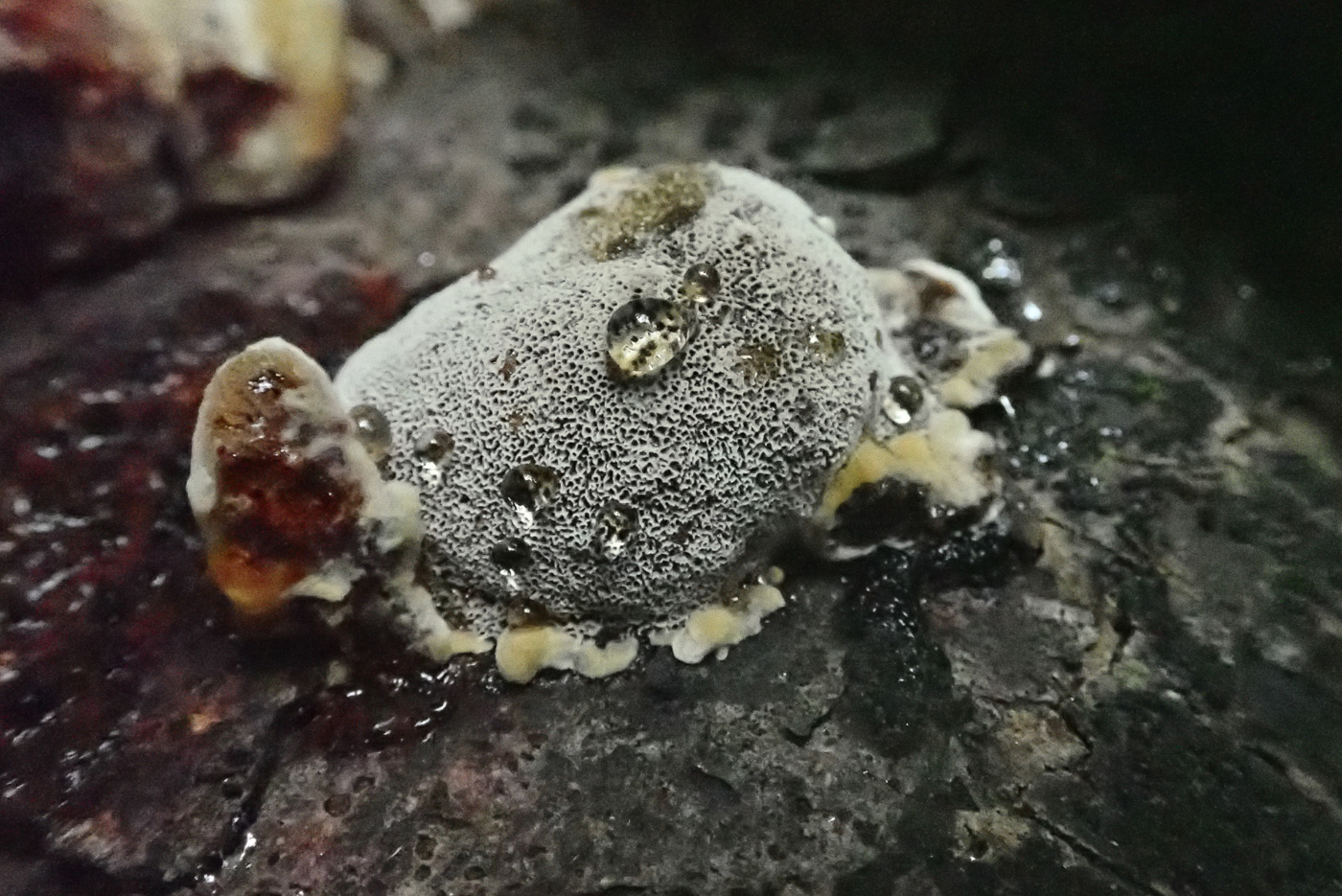 |
July 31st Inonotus cuticularis (Clustered Bracket) 
On a fallen Beech trunk in the piece of woodland on the edge of Ragpits Nature Reserve Penny found nice examples of this quite unusual bracket, one for which we have a handful of county sites. It is one that forms tiers as here, the upper surface being quite soft and spongy, also distinctly finely hairy (photo 2) with a thickened pale margin, the pores (photo 3) are pale at first but darken to brown and also bruise brown, and when actively growing and moist as here it can have resinous clear droplets on the upper surface (photo 4). Penny eventually persuaded it to drop spores at home, revealing their rusty brown colour as well as their size and shape, then checked the surface hairs which under a scope are brown, branched and spiky, diagnostic of this particular species which can occur on many different deciduous woods.
|
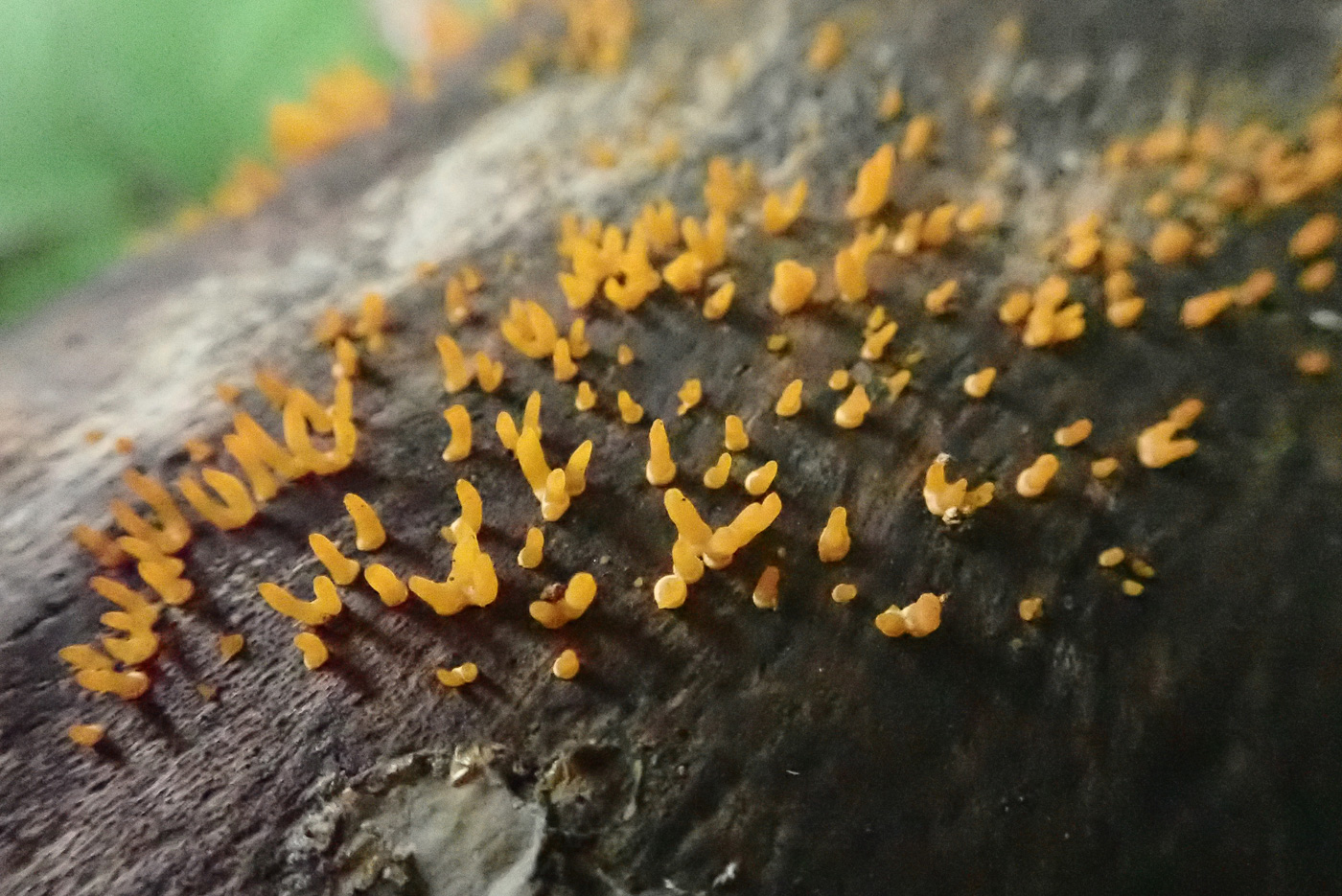
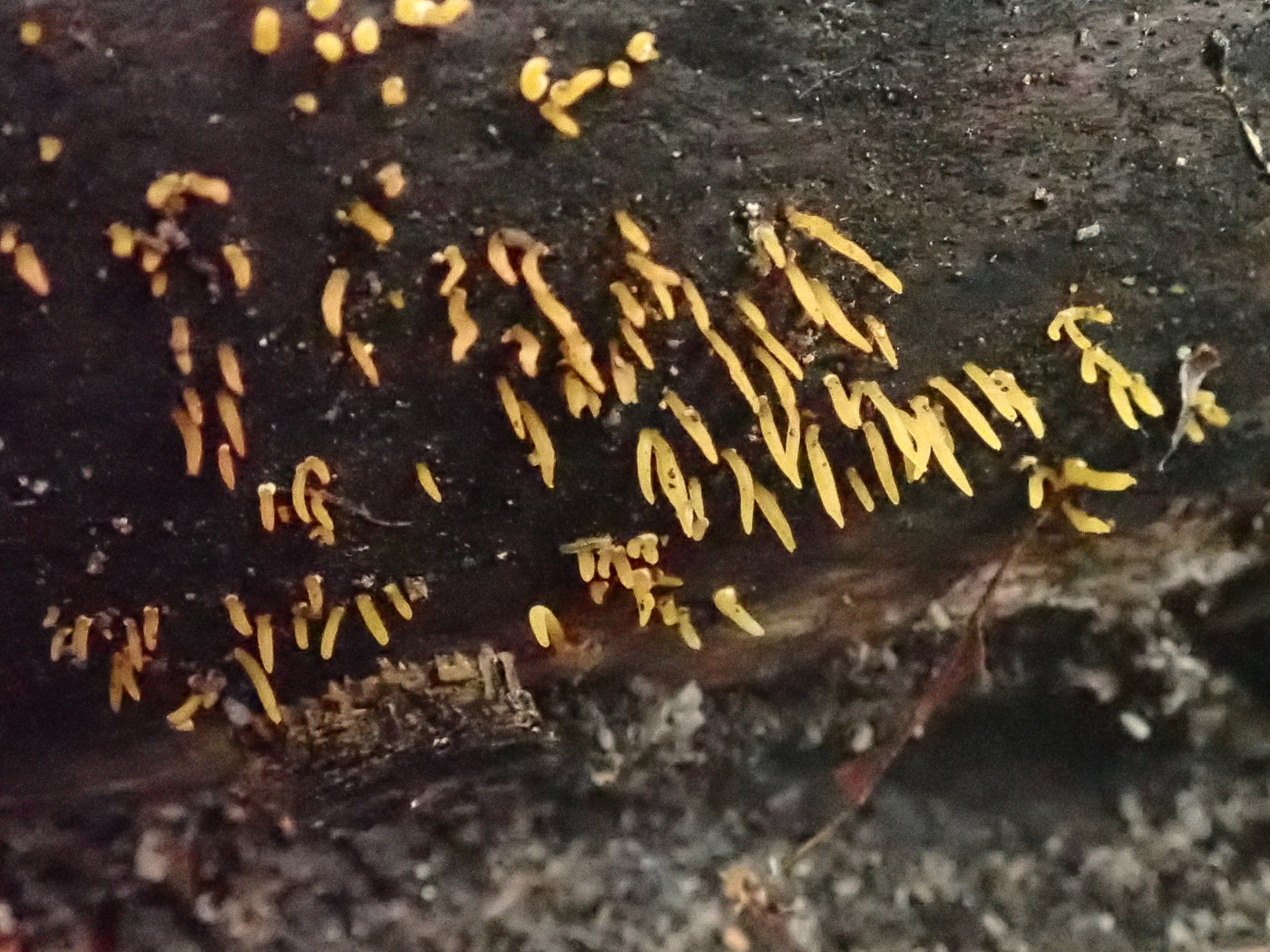 |
July 31st Calocera cornea (Small Stagshorn)
On a bare fallen Beech trunk in the piece of woodland on the edge of Ragpits Nature Reserve Penny found a colony of tiny orange individual spikes which, being sharply pointed rather than flattened and spathulate (spoonshaped), were attributable in the field to this particular and quite common species of Calocera. The genus belongs with the Jelly Fungi and there are several other common species, all some shade of orange.
|
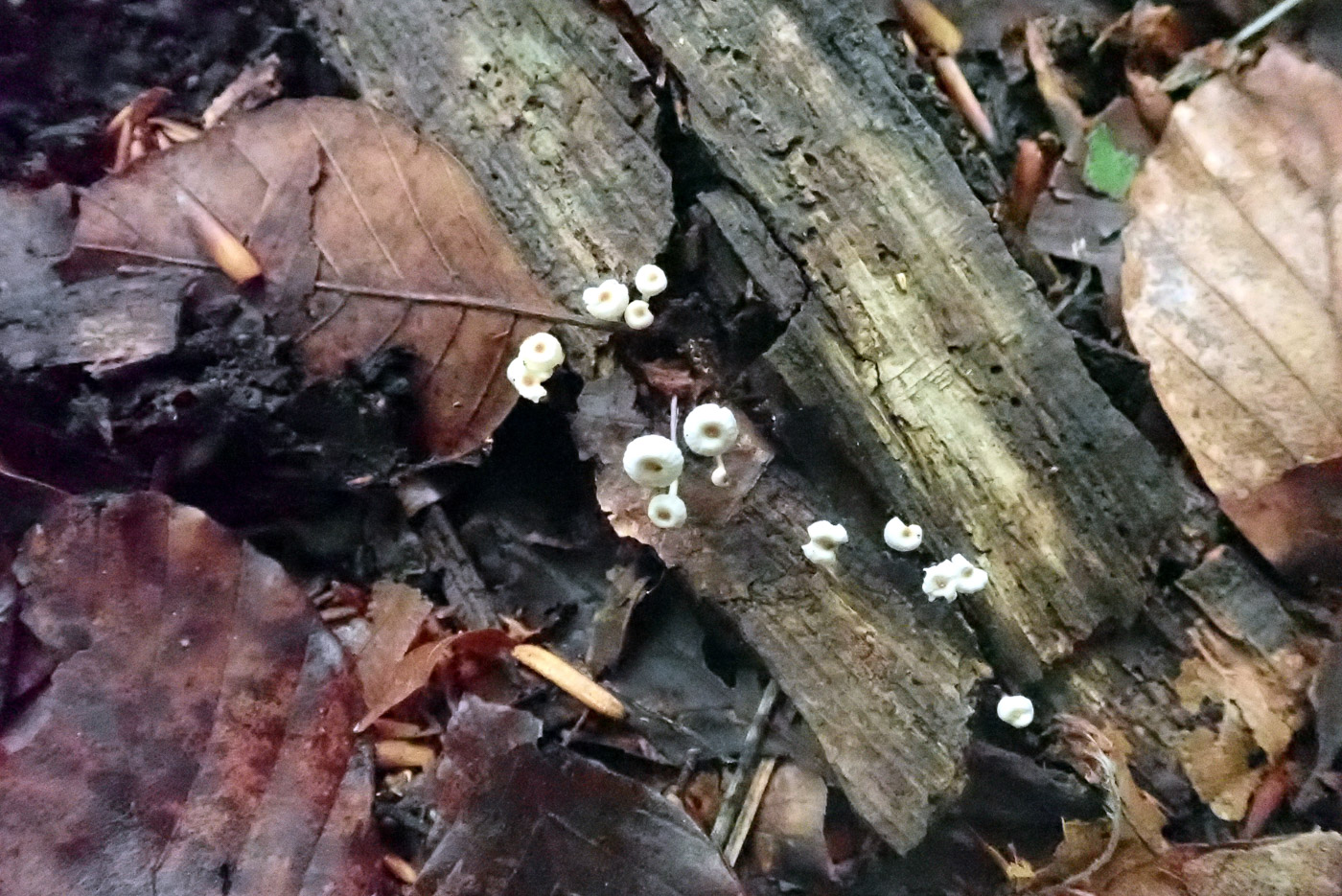
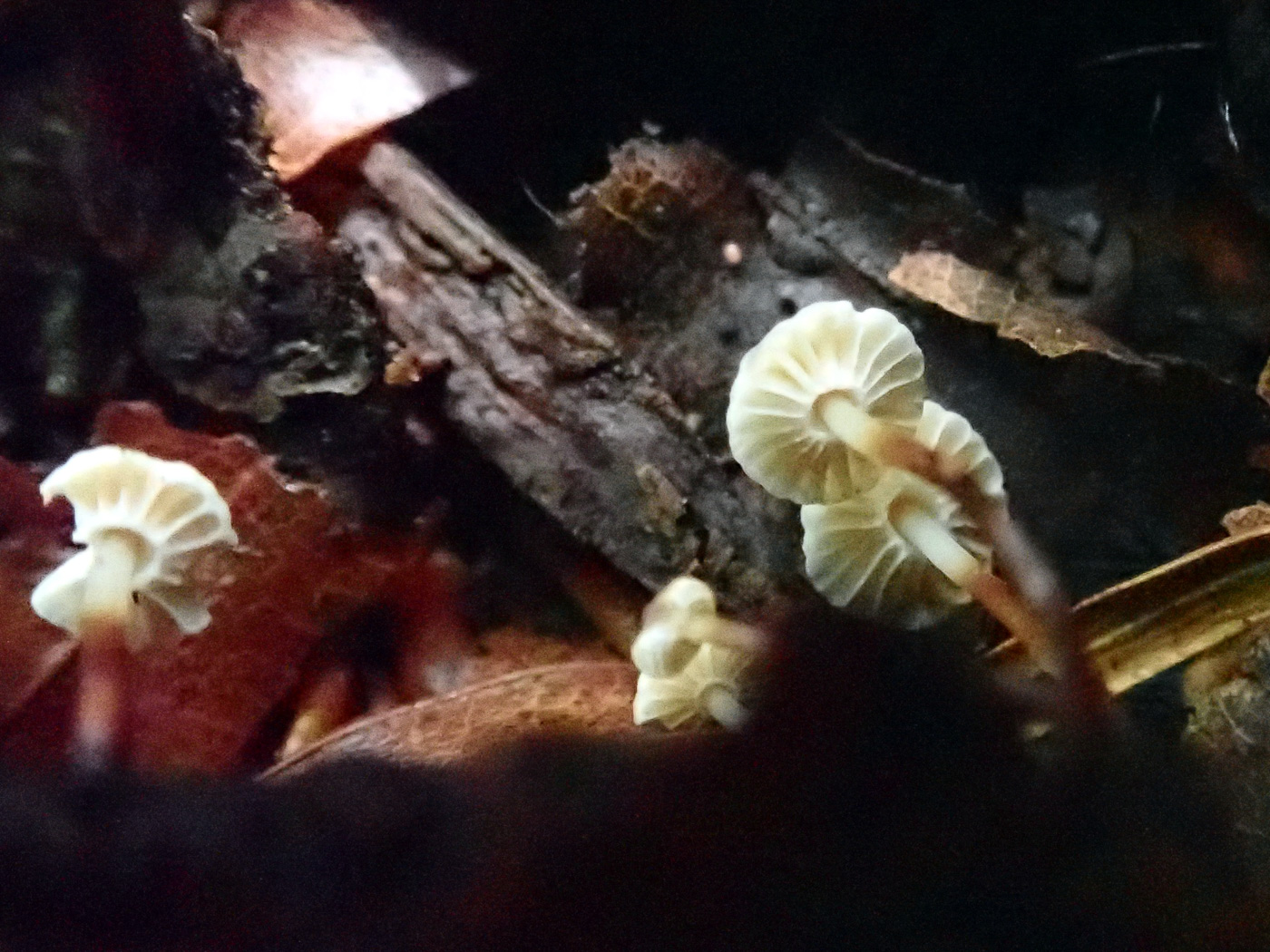 |
July 31st Marasmius rotula (Collared Parachute)
In the piece of woodland on the edge of Ragpits Nature Reserve Penny found these very common tiny white Parachutes growing on a bare Beech stick. One look at the underside of the caps was enough to identify to species, there being only two possibilities having white or very pale fluted caps and gills which clearly attach to a collar around the top of the stem (photo 2). The even smaller and much rarer M. bulliardii occurs in similar habitat but on fallen Beech leaves, not on woody debris or actual wood as here, also in that species the sunken cap centre has a distinct black dot rather than just being a bit darker as here. See also in Finds 2021 Jan to June dated June 30th for another example of today’s species, and for comparison in Finds 2020 dated Oct 13th for M. bulliardii.
|
July 30th 2021
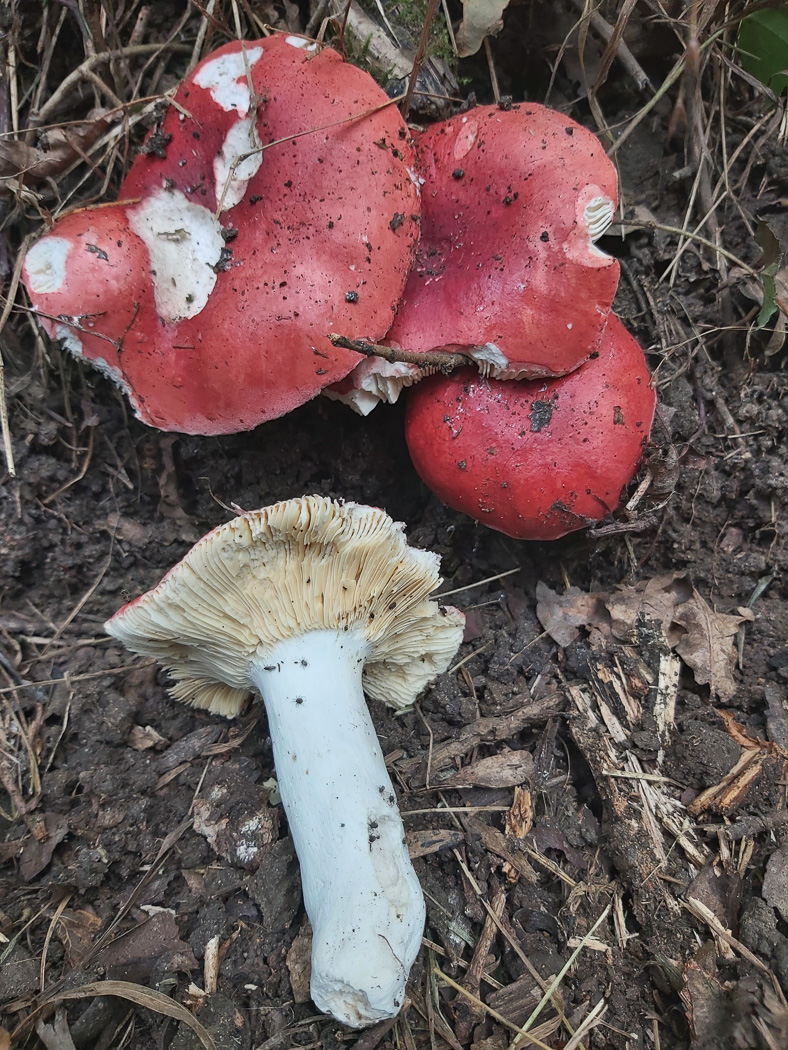 |
July 30th Russula pseudointegra (Scarlet Brittlegill) 
Whilst on a bike ride in Seer Green Jesper Launder spotted several brightly coloured caps on a bank under Oak and on close inspection recognised this beautiful Oak loving species which sports a shiny smooth red cap and develops deep orange gills as the spores mature - it has one of the darkest sporeprints in the genus. Taste can often be a useful character amongst Brittlegills: mild, hot, bitter or acrid depending on the species. Jesper confirmed the unique menthol acrid taste of this species and also checked other microscopic features plus the sporeprint.
|
July 28th 2021
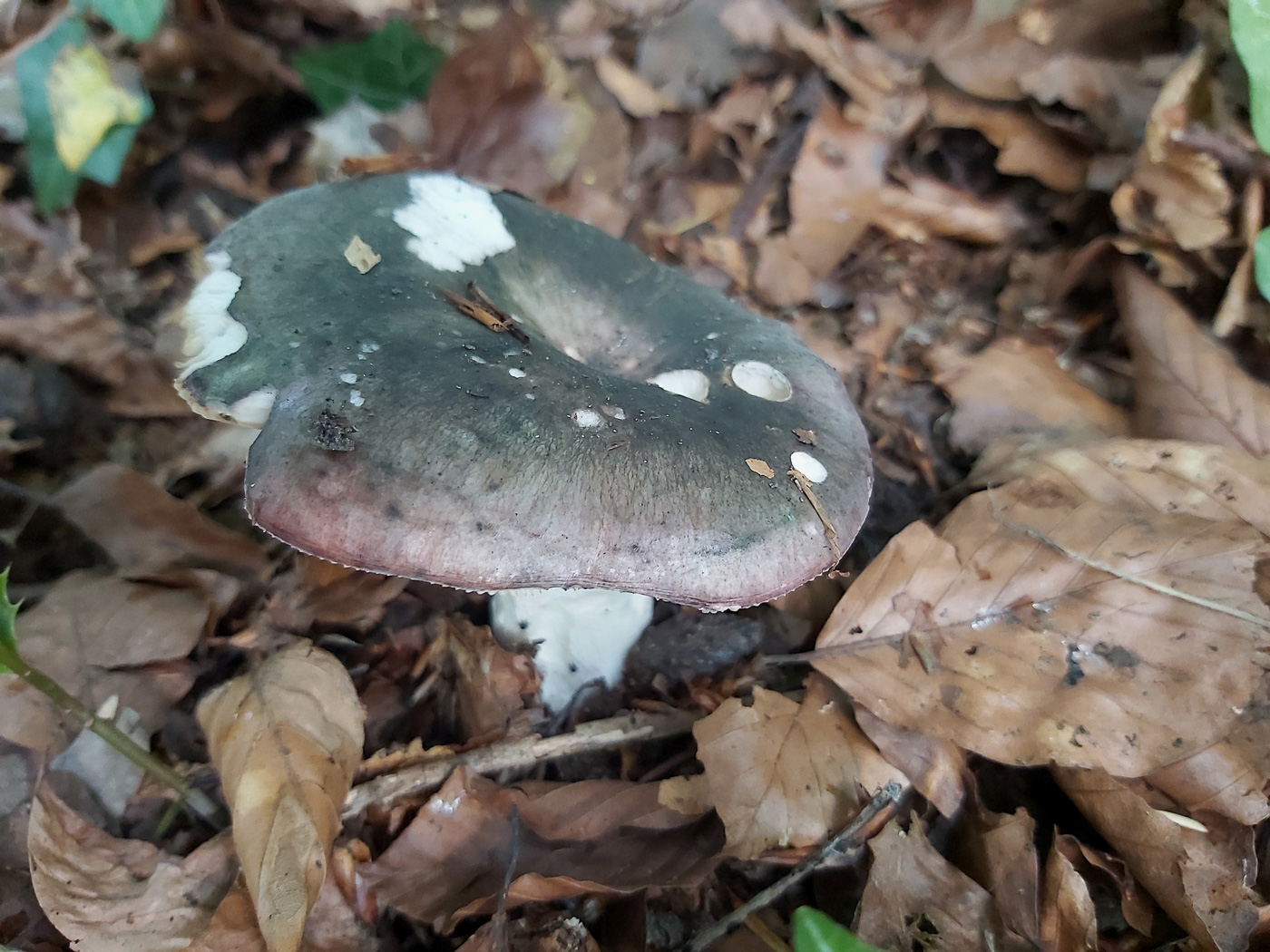 |
July 28th Russula cyanoxantha (Charcoal Burner)
In a roadside verge in Chalfont St. Peter Jesper Launder spotted this nice specimen of one of our commonest Brittlegills. The species is happy under any deciduous trees though is easy to confuse with several others having caps with a mix of green, blue, violet and pink shades. It is unclear where its traditional common name originated but one way to separate it from others is with a ferrous sulphate crystal: the stem when rubbed has a slow almost negative reaction, turning not rusty salmon as in many species but if anything very pale greenish grey.
|
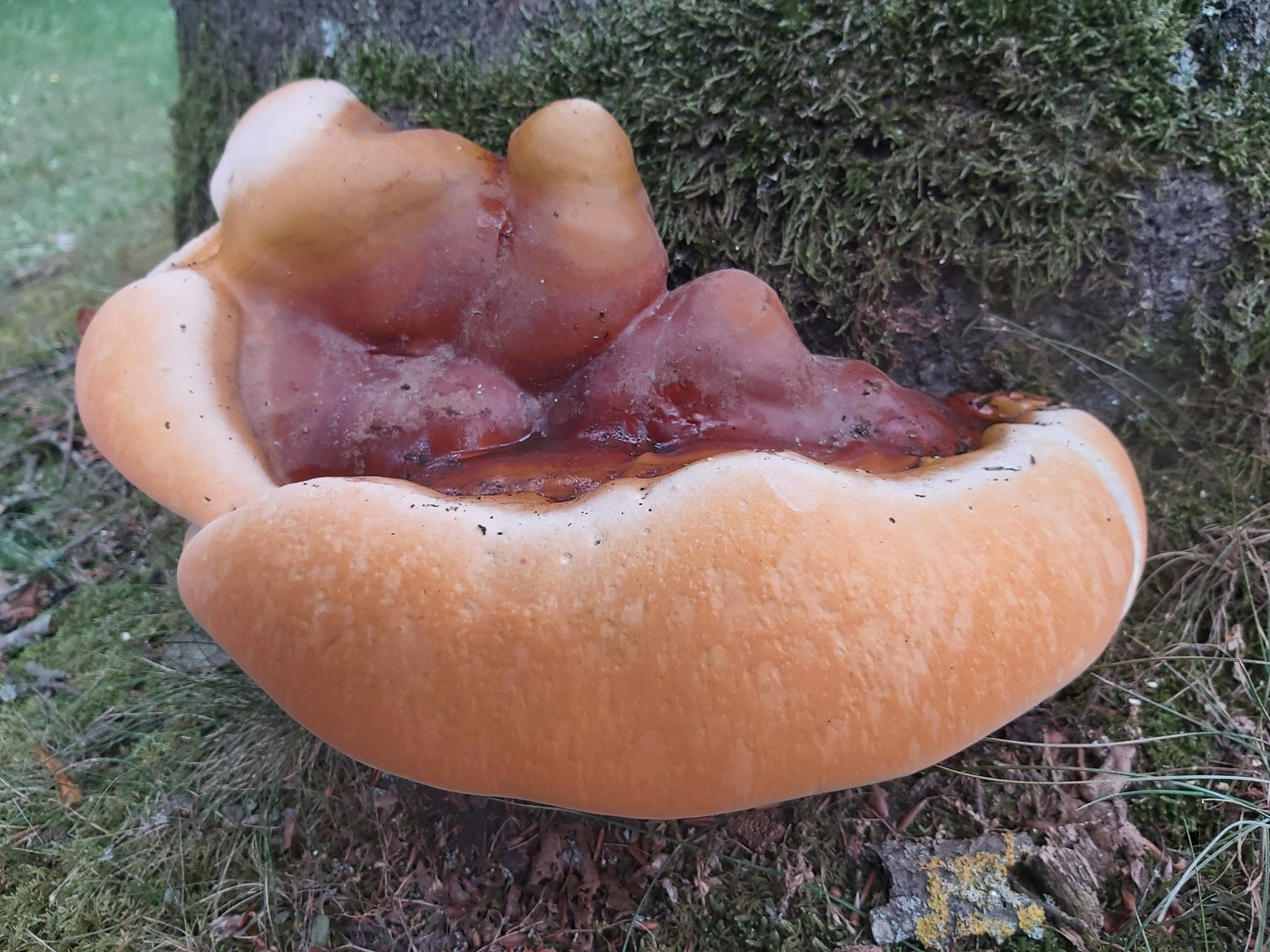 |
July 28th Ganoderma resinaceum (a bracket with no common name)
On a large Beech in Chalfont St. Giles Jesper Launder spotted this quite unusual bracket, one closely related to the Southern Bracket and for some known as Lacquered Bracket (though that name is officially alotted to the very similar G. lucidum). This is an immature specimen and at this stage the red brown, crusty almost varnished upper surface is very different from the common Southern and Artists's Brackets which are both rough and bumpy, though all Ganoderma species have white pores beneath but chocolate brown spores.
|
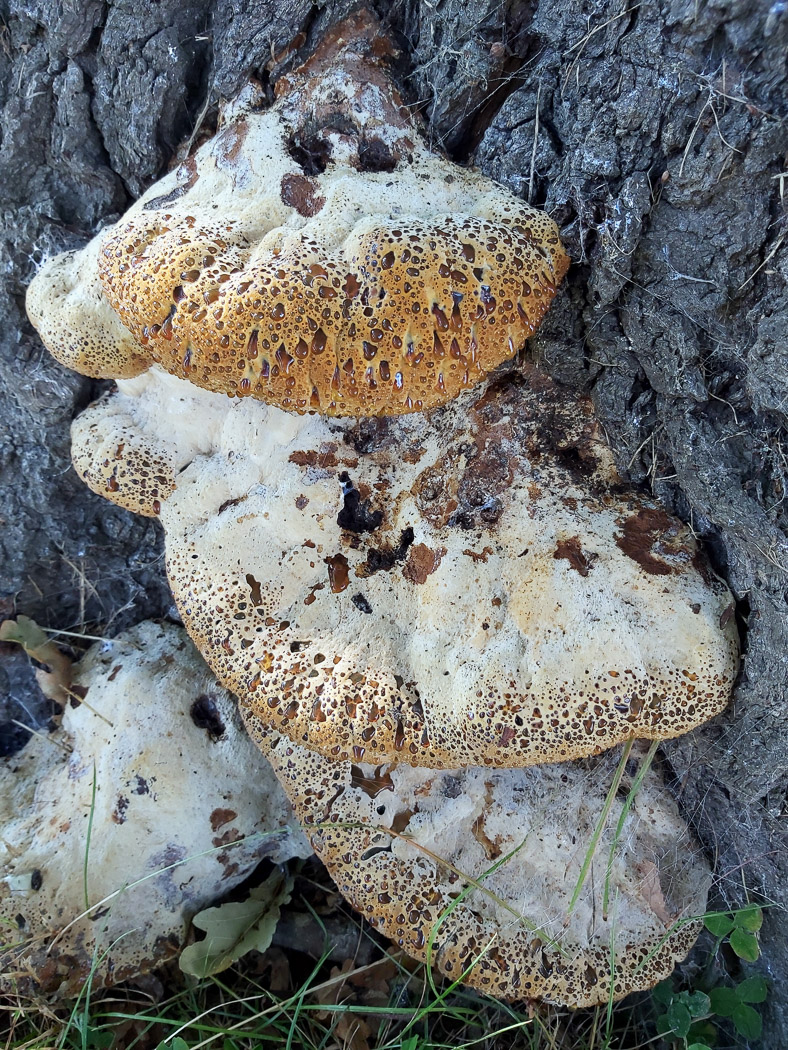 |
July 28th Pseudoinonotus dryadeus (previously in Inonotus) (Oak Bracket)
At the base of a mature Oak in Chalfont St. Peter Jesper Launder spotted this large and impressive bracket displaying its typical droplets which form when the fungus is actively growing and moist. The pores, not seen here, are greyish white as are the spores, and we have several sites where we record it regularly on its host tree, Oak.
|
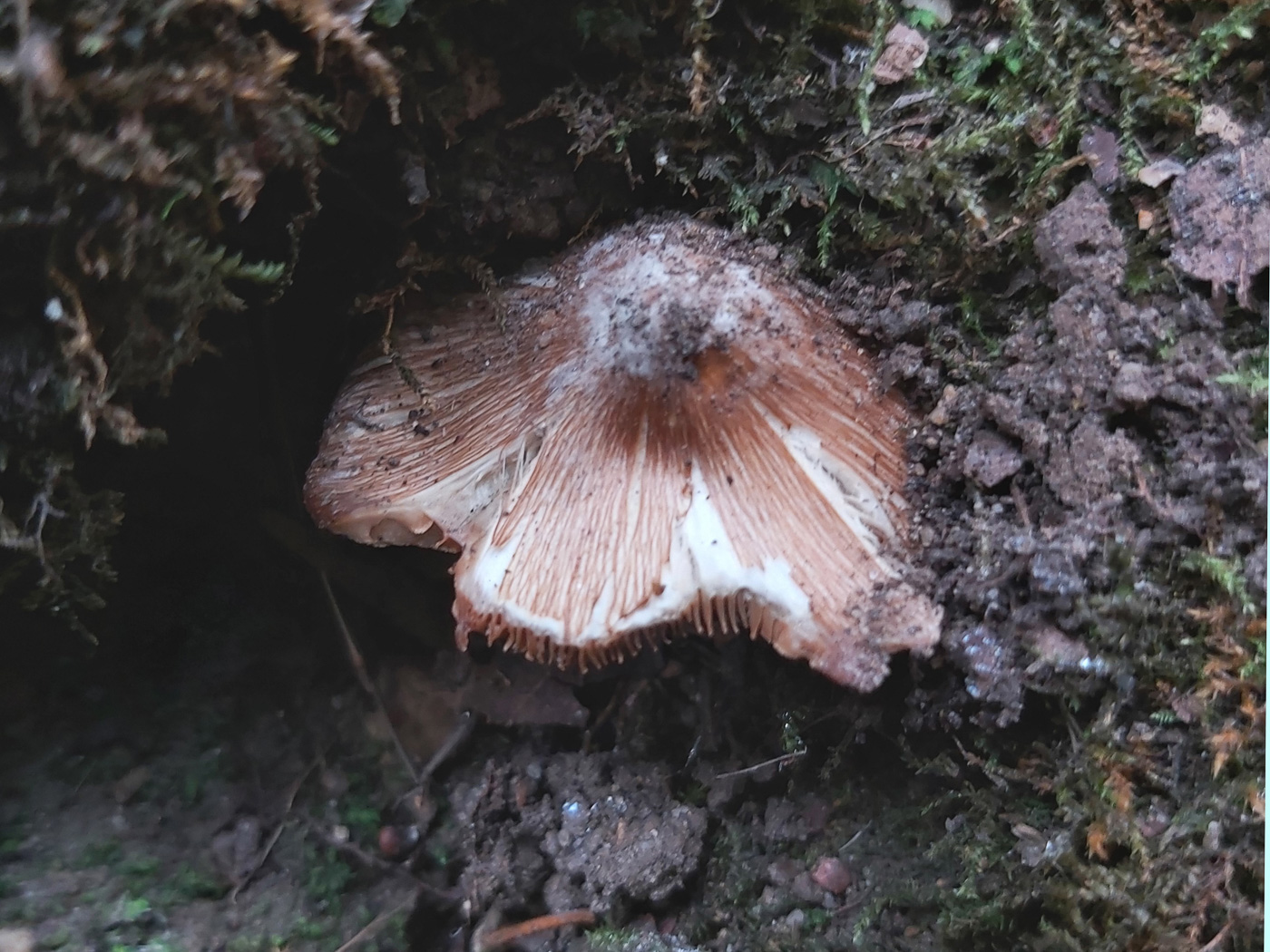
 |
July 28th Inosperma maculatum (previously Inocybe maculata) (Frosty Fibrecap) 
In Jordans village in soil under Oak Jesper Launder spotted this pair of typical LBJs just pushing up and still with the diagnostic white 'veil' of the species covering the cap centre. Like many Fibrecaps it has a brown rather split cap revealing the white flesh beneath, the species name 'maculata' meaning spotted and referring to the veil which is often present though can be washed off by rain. This large mycorrhizal genus has recently been split into four (as with the Inkcaps) and nearly all species need a microscope to identify with any certainty.
|
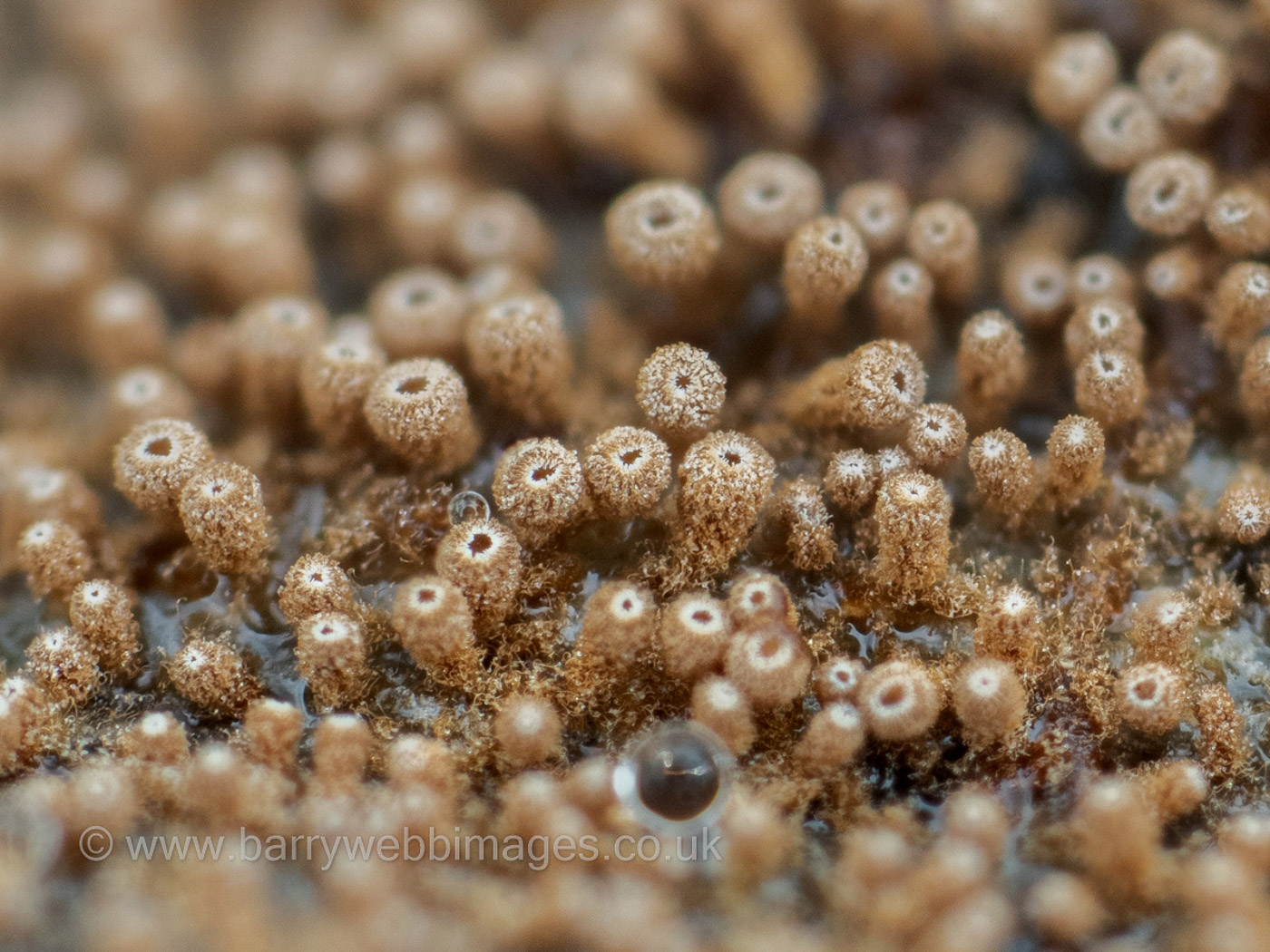 |
July 28th Merismodes anomala (a Basidiomycete with no common name)
In the Mire at Burnham Beeches on a piece of fallen wood Kerry Robinson noticed a brown Corticioid-like patch which on closer inspection she recognised as this somewhat unusual and tiny species, one of the Cyphelloid fungi (those having disc- / tube- / cup-shaped fruitbodies resembling an Ascomycete but in fact belonging to the Basidiomycetes). A x 10 lens is needed to appreciate the detail in the field, seen here in Barry Webb's lovely photo.Though there are plenty of national records this is new to the site and only the second for the county.
|
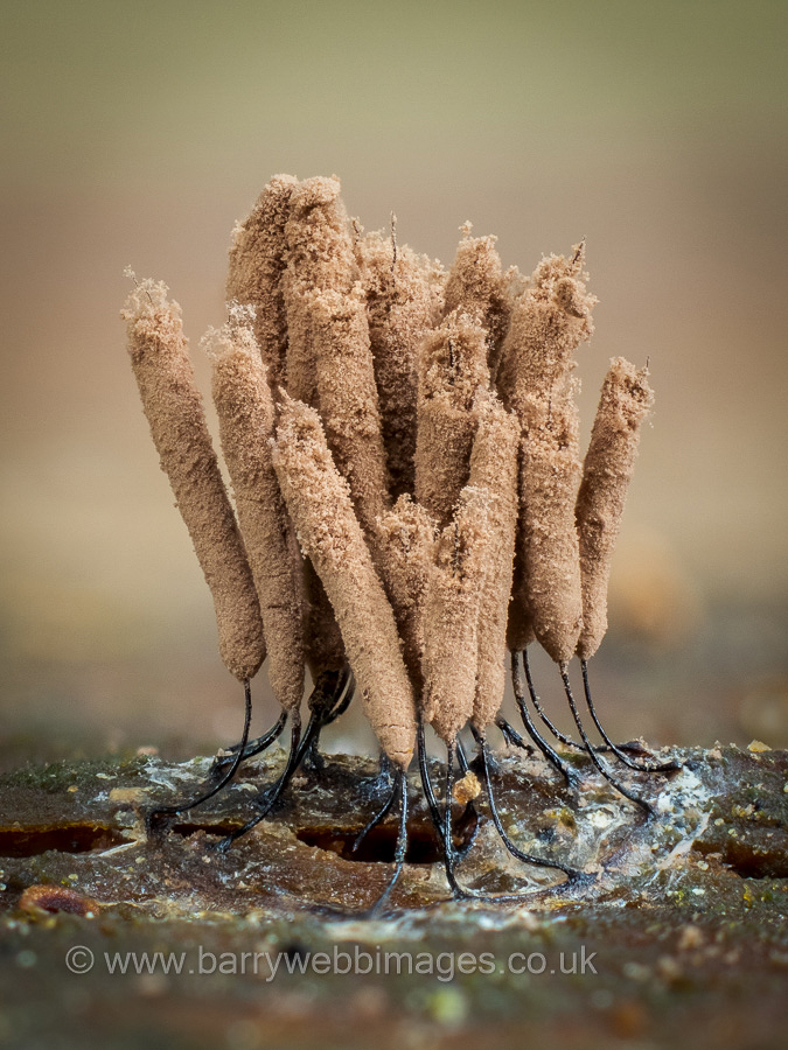 |
July 28th Stemonitis axifera (a Slime Mould with no common name) 
In Burnham Beeches on damp rotting deciduous wood Barry Webb found this small cluster of tiny 'pipe-cleaners', the sporangia being mature enough for Penny to be able to identify at home. The tiny smooth spores were diagnostic and though the species is not considered rare, this was new to the site with only one previous county record.
|
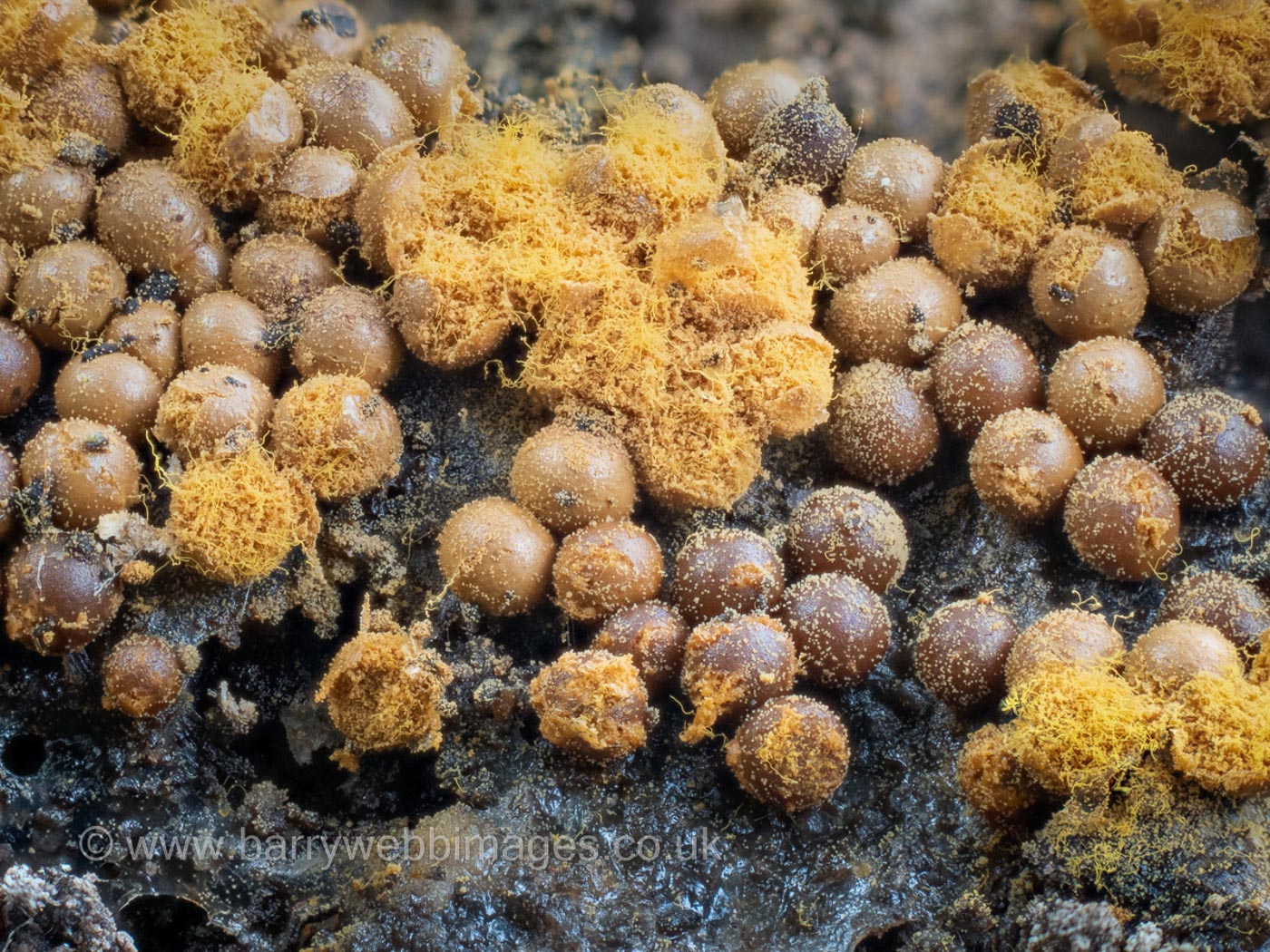 |
July 28th Trichia varia  (a Slime Mould with no common name) (a Slime Mould with no common name)
In Burnham Beeches on damp rotting deciduous wood Barry Webb found a colony of one of the commonest species of Trichia which was mature enough for Penny to be able to identify at home. This is genus with many somewhat similar species, most of which start out as a small patch of white blobby plasmodium which gradually turns yellow then dries off to form tight clusters of sporangia, some species with a short stalk, some without as here.
|
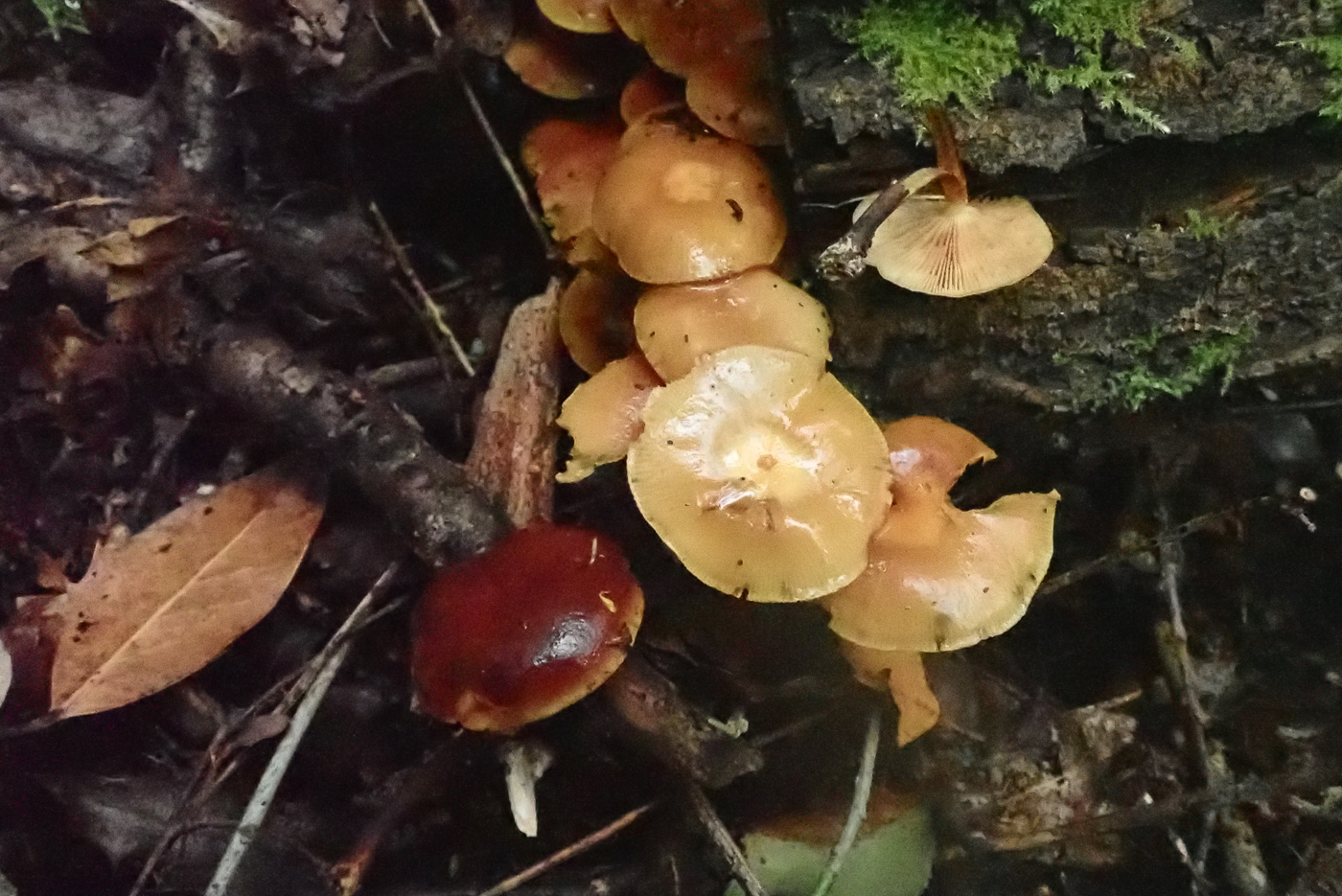
 |
July 28th Kuehneromyces mutabilis (Sheathed Woodtuft)
Near the Mire in Burnham Beeches Bob Simpson found several clusters of this somewhat variable species on a pile of fallen deciduous wood. The caps were about 3 cms across but varied in colour from milky coffee to rich reddish brown, appearing like two different species. Often both colours appear on one cap (hence a previous common name, Two-tone Pholiota and its Latin species name meaning changeable). It has a ring on the stem and later in the year is easy to confuse with the very poisonous Galerina marginata (Funeral Bell) - that species also clusters on fallen wood but fruits much later in the season. (The photos are Penny's.)
|
 |
July 28th Cantharellus cibarius (Chanterelle)
Near the Mire in Burnham Beeches Bob Simpson spotted a patch of these brightly coloured mushrooms in soil under mixed deciduous trees. (The photo is Barry Webb's but with Penny's camera!) Often an early season fruiter but never that common in the south of the country, it grows abundantly in Scotland. The beautiful apricot slightly felty caps with shallow decurrent thickish folds (hardly gills) underneath separate it from other lookalikes. Compare also with the similar C. ferruginascens (dated July 11th) which develops dark rusty stains where damaged.
|

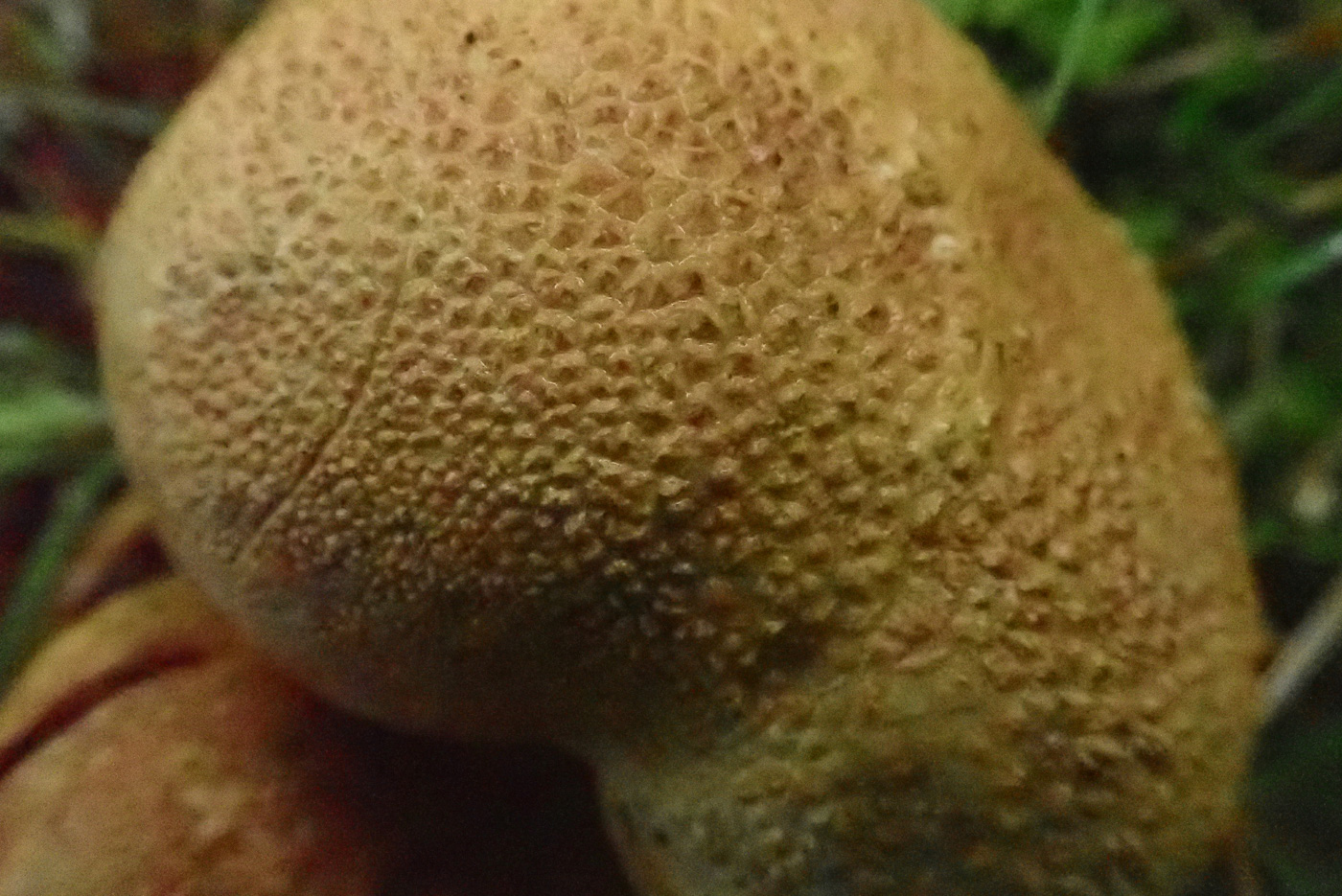 |
July 28th Scleroderma citrinum (Common Earthball)
In Burnham Beeches several specimens of this species were just beginning to appear, this pair found by Gill Ferguson in longish grass under Birch and Oak. Told from other Earthballs by its pale ochre (hardly lemon yellow!) colour, its very tough leathery skin which soon develops a rough scaly surface and a rudimentary stem (see photo 2). It has an unpleasant smell and can get much larger than other species - up to 10(15)cms across when often misshapen. If you find it, look out for the Parasitic Bolete growing out from around its base, sometimes in clusters - an unusual sight. (The photo here is Penny's)
|
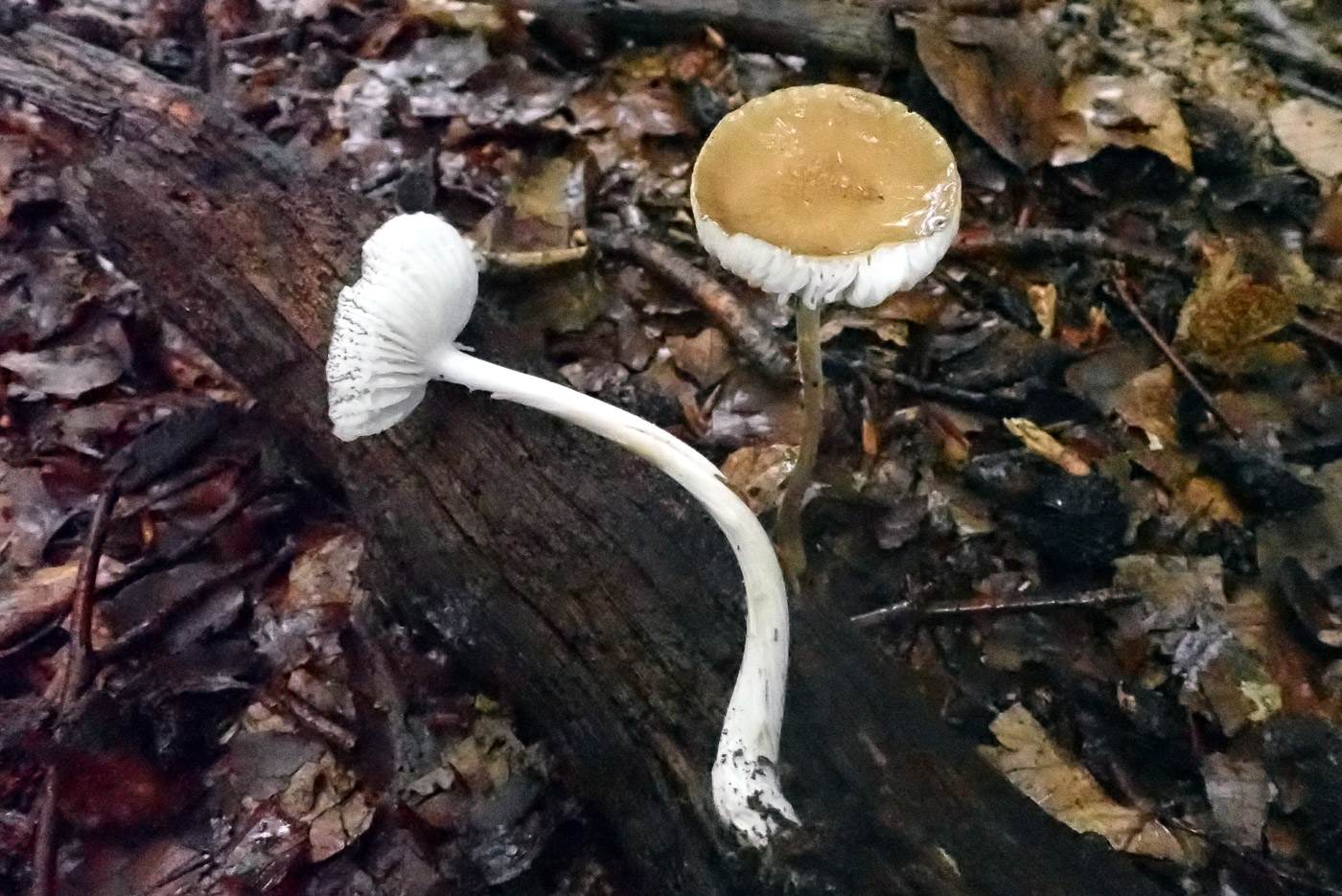

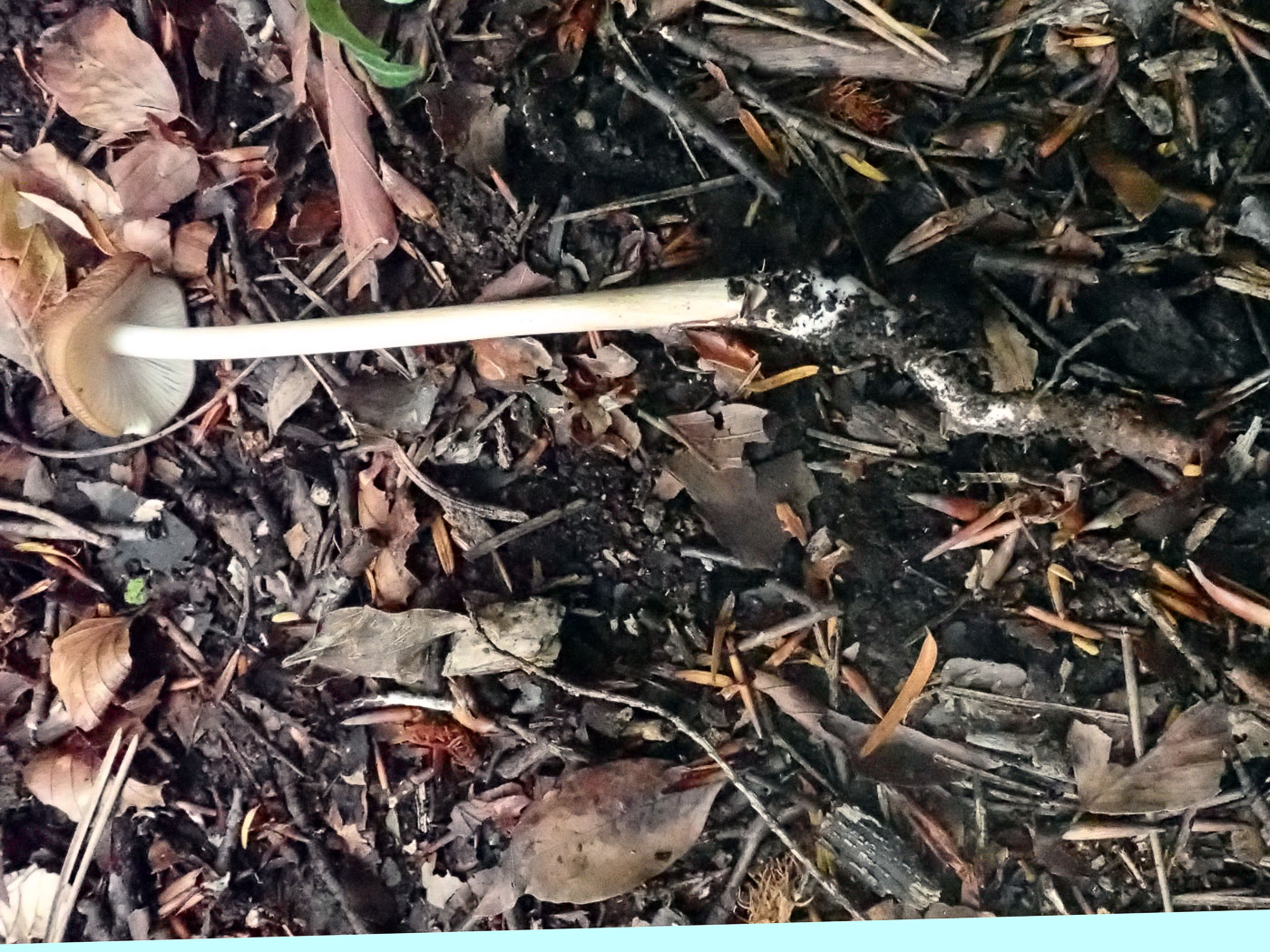 |
July 28th Xerula radicata (Rooting Shank)
In Burnham Beeches Barry Webb spotted these two mushrooms in soil but against visible Beech roots. This is a very common woodland species having a mid-brown wrinkled cap, often slimy after rain as here, and widely spaced white gills (sometimes sporting a dark gill edge). The stem is white and fibrous, often forming a long root which attaches to submerged Beech roots and with care can be dug out. Three days later at Ragpits Reserve Penny found another specimen which shows the wrinkled cap well (photo 3) and which she was able to remove with the root in tact (photo 4).
|
July 25th 2021
 |
July 25th Clathrus ruber (Red Cage)
Found in a private garden in High Wycombe, then reported in a local nature group and there spotted by Jesper Launder who had identified it in the same spot last year, he revisited the site in order to take this photo. This is a rare and somewhat unusual fungus and new to the county. Closely related to C. archeri (which appeared on July 1st this year - see also in Finds Jul-Dec) and belonging with the Stinkhorns, it arises from a buried whitish gelatinous egglike structure which then ruptures and from which the amazing latticelike framework emerges. It can get to 10 cms across and has a revolting smell of carrion! If anyone finds it elsewhere, do please report it!
|


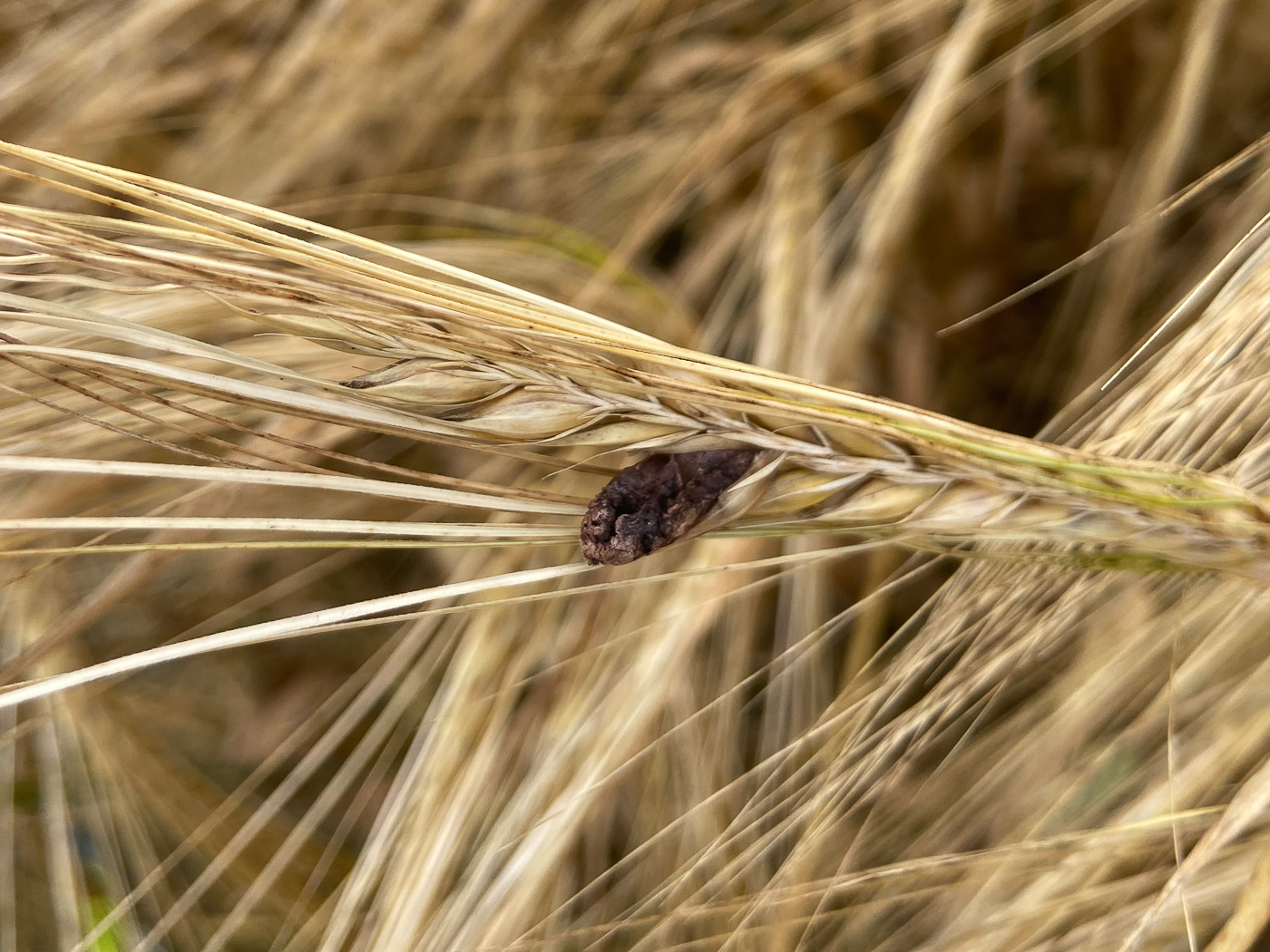 |
July 25th Claviceps purpurea (Ergot)
On two different host grasses in meadowland between Jordans village and Chalfont St Giles Jesper Launder spotted this fungus which develops a large dark purple 'sclerotium' just prior to harvest time and which, in the Middle Ages, was responsible for many deaths when harvested with rye and other related crops, causing the disease ergotism also known as St. Anthony's Fire. Not rare but nowadays controllable, and more information about the disease is available online. On the West Wycombe Estate a few days later Sarah Ebdon found the species again, this time on an ear of barley (photo 3).
|

 |
July 25th Russula farinipes (a Brittlegill with no common name)
Growing under Beech in Jordans village Jesper Launder noticed this unusual Brittlegill. It is probably the least common of the several species having yellow to ochre cap colours and in the field is easily separated from them by having a cuticle which doesn't peel at all. It tends to have a sticky cap and rather widely spaced whitish gills and favours Beech though can be found under other deciduous trees.
|
 |
July 25th Russula violeipes (Velvet Brittlegill) 
In a roadside verge in Jordans village Jesper Launder spotted several species of Russula growing under a mix of Oak, Beech and Birch. This particular species was probably associating with Oak or Beech and in some years can be quite common. The cap has a cuticle which is rather elastic and reluctant to peel - a feature worth noting because the cap colour is somewhat variable and often bright yellow (not so here, however). The stem is where the violet colour usually presents, though Jesper's specimens seem to have violet spotting on the cap which is quite unusual. Hopefully more typical collections will be found to further illustrate the species.
|
 |
July 25th Russula exalbicans (Bleached Brittlegill) 
In a roadside verge in Jordans village Jesper Launder spotted several species of Russula growing under a mix of Oak, Beech and Birch. This particular species associates with Birch and not that common in our area though we have a handful of sites where it's been recorded. The cap tends to fade, sometimes becoming a bit greenish to almost colourless except for a rim of pink around the margin, hence its common name.
|
July 22nd 2021

 |
July 22nd Calvatia gigantea (Giant Puffball)
In a grassy part of the Wotton Park Estate Joanna Dodsworth saw what she thought was a large plastic bag in longish grass (photo 1) but as she got closer she realised what it must be! Previously in the genus Handkea, also Langermannia, this is indeed a giant amongst fungi and can get to half a meter across (if left unmolested by nibbling animals or kicking humans!). It fruits in open areas, farmland in summer, sometimes in large numbers and Joanna's car keys give an idea of size, so although probably a good 20 cms across this specimen still has some growing to do though it's clear some animal has been munching at it already. This species is well worth looking out for now.
|

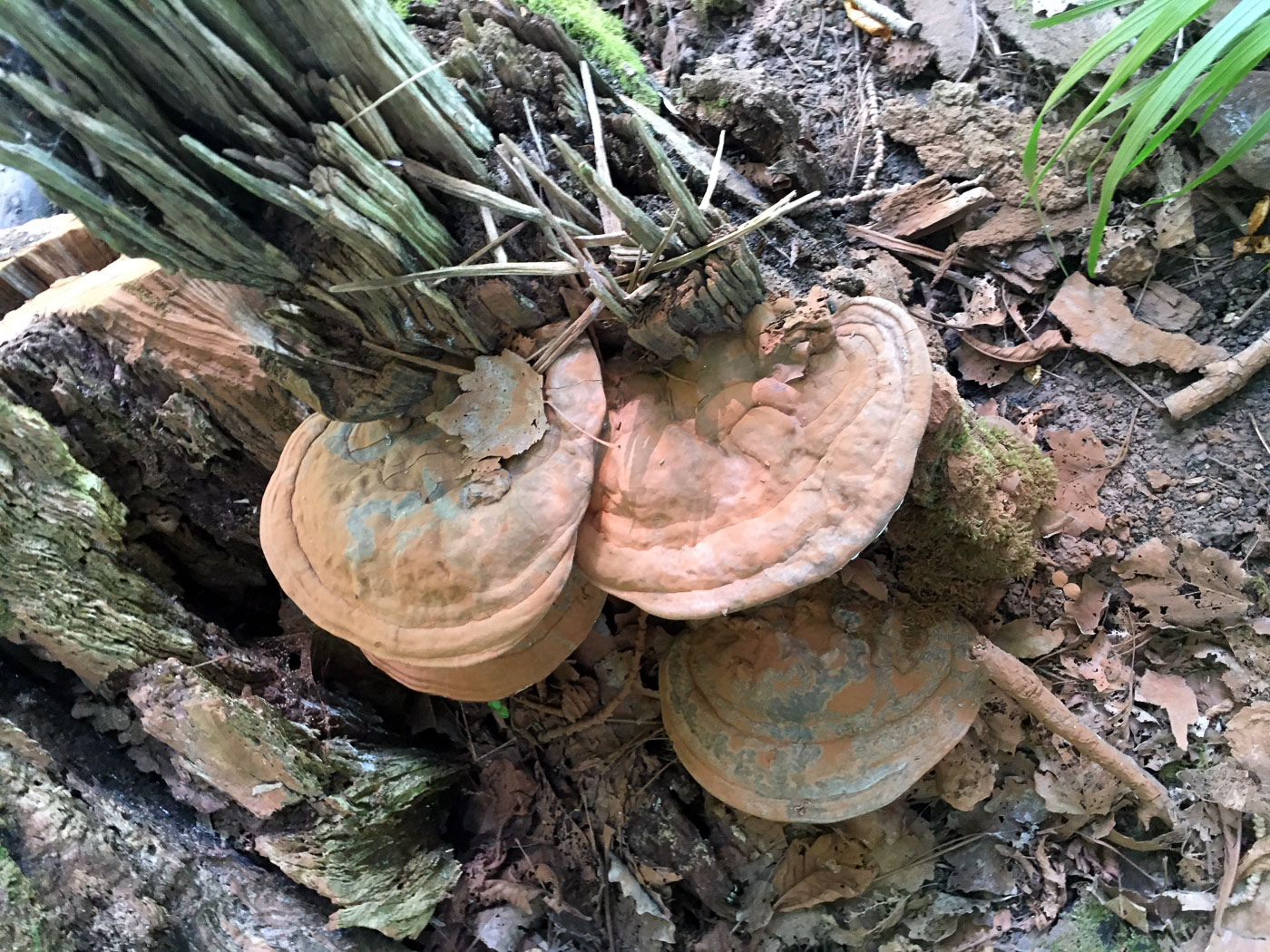 |
July 22nd Ganoderma australe (Southern Bracket)
On felled Poplar in Wotton Park Estate Joanna Dodsworth saw these nice examples of one of our commonest brackets. Each bracket was about 15 cms across and they show the brown lumpy upper surface, white border around the rim and finely pored white underside - all typical features. Note also (particularly in photo 2) the chocolate spore deposit liberally coating not just the fungi but also the surrounding vegetation. G. applanatum (Artist's Bracket) is extremely similar and can often be separated in the field by the presence of telltale insect galls on the underside - clearly not seen here. The safest way to split them, however, is by spores size.
|
July 21st 2021
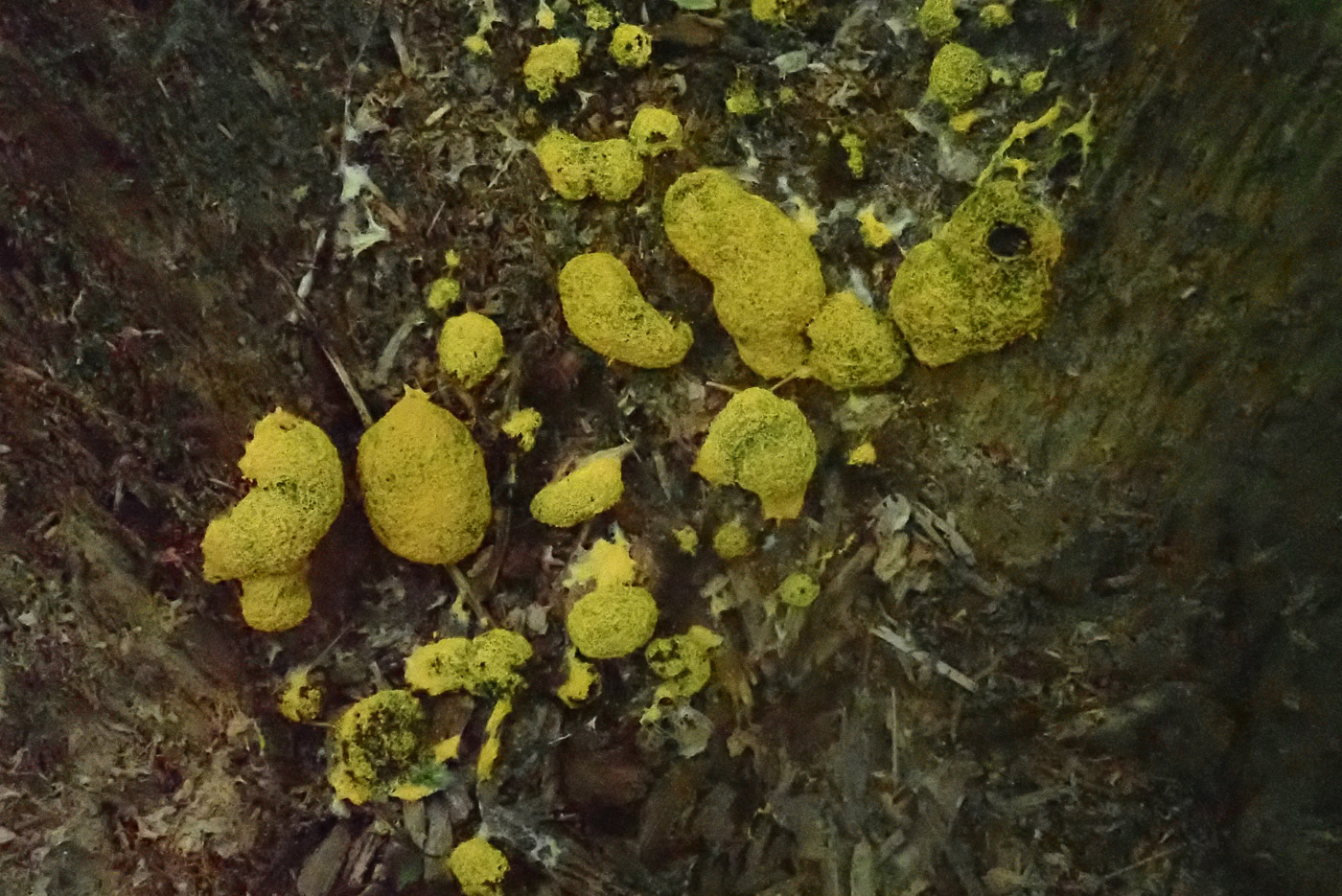
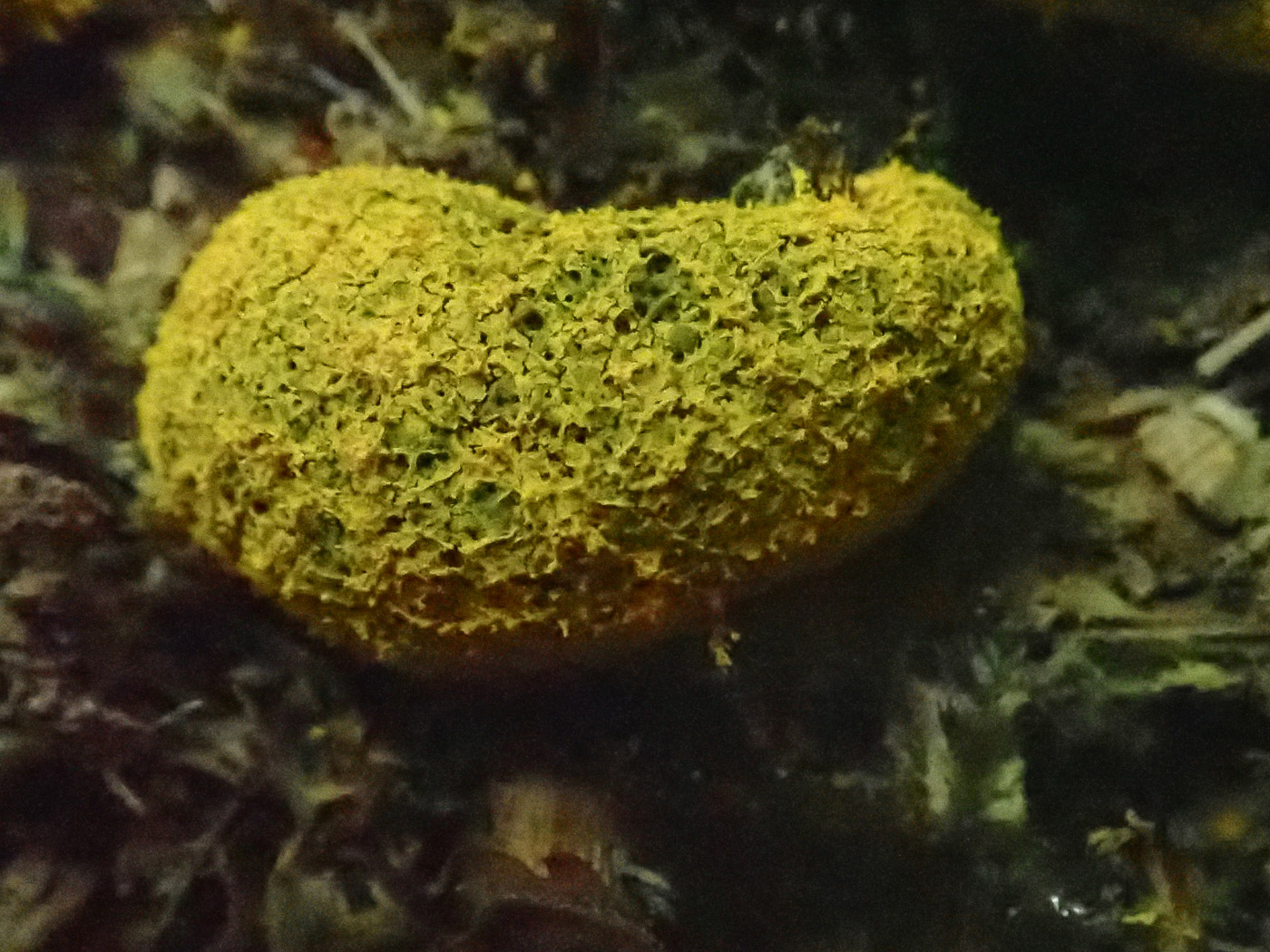 |
July 21st Fuligo septica var. flava (Scrambled Egg Slime Mould)
Failing to find anything 'mushroom' shaped at Turville Heath (no surprise in this very hot spell) Penny could do no better than a common slime mould, a common corticioid and a common ascomycete! Found in an old Oak stump, herewith a rather unusual specimen of perhaps the commonest slime mould which seemed to have become disjointed into many different lumps. On touching one it disintegrated into a dark chocolate powder (spore mass), showing that it was at the mature stage. This can be seen in the close-up photo where the yellow surface is disrupting and dry.
|
 |
July 21st Hypoxylon fuscum (Hazel Woodwart)
On the same stack of dead branches in Turville Heath Penny noticed a colony of brown to blackish crusty lumps on Hazel. This is as common as - and also very similar to - H. fragiforme (Beech Woodwart) though obviously both species are dependent on the presence of dead or dying branches of their host tree.
|
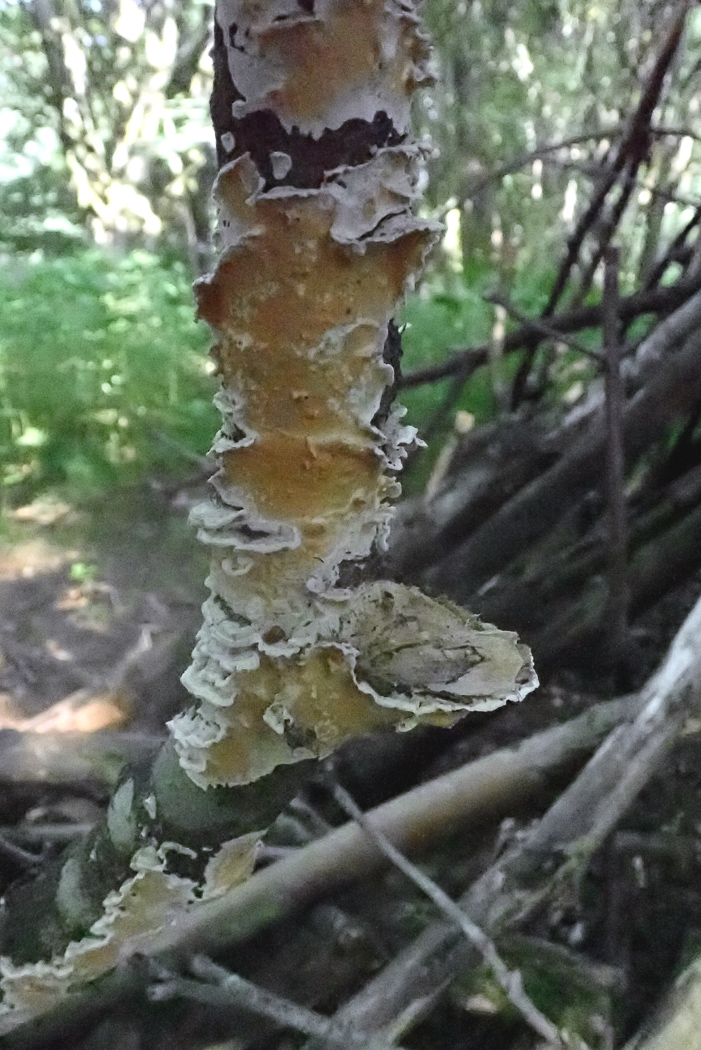
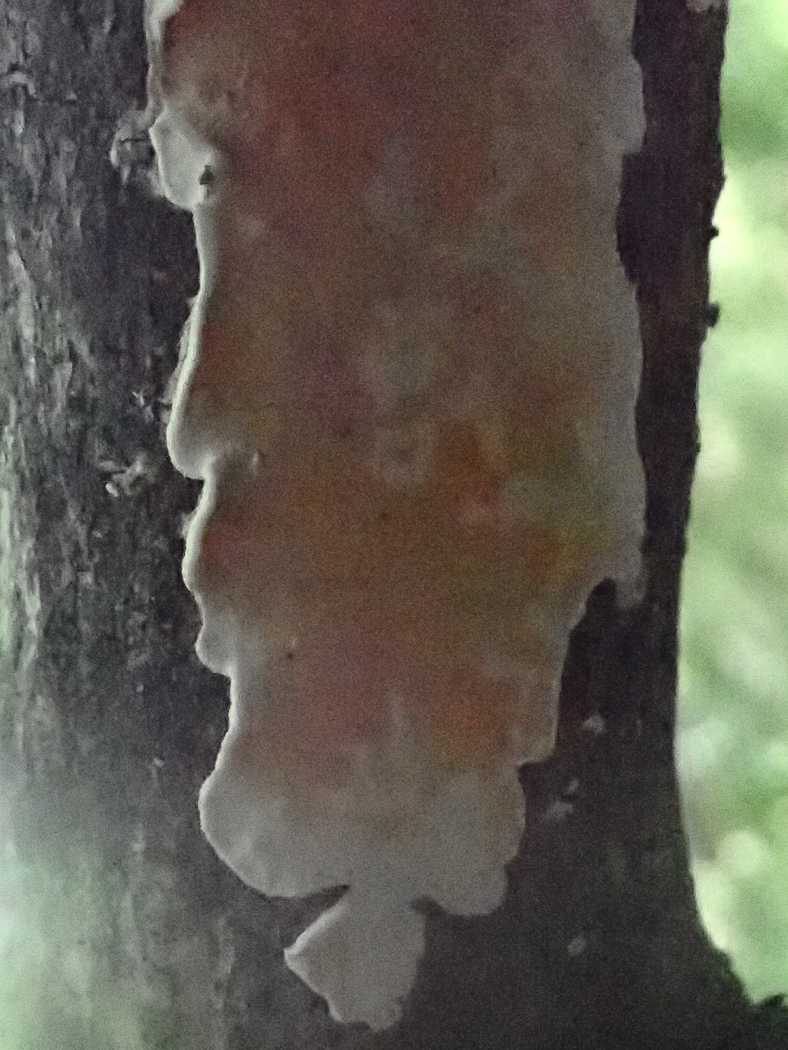 |
July 21st Cylindrobasidium laeve (= evolvens) (Tear Dropper) 
On a stack of dead deciduous branches in Turville Heath Penny noticed this patch of buff to pink-orange corticioid (flat fungus) which was white and peeling around the edges and forming small bracketlike extensions in places. The species gets its common name from its tear-shaped spores and when fresh and moist it is quite supple and peels off the substrate easily - a useful field character. Today's was, however, somewhat baked and neither peeled nor (when examined at home) produced any spores!
|
July 19th 2021
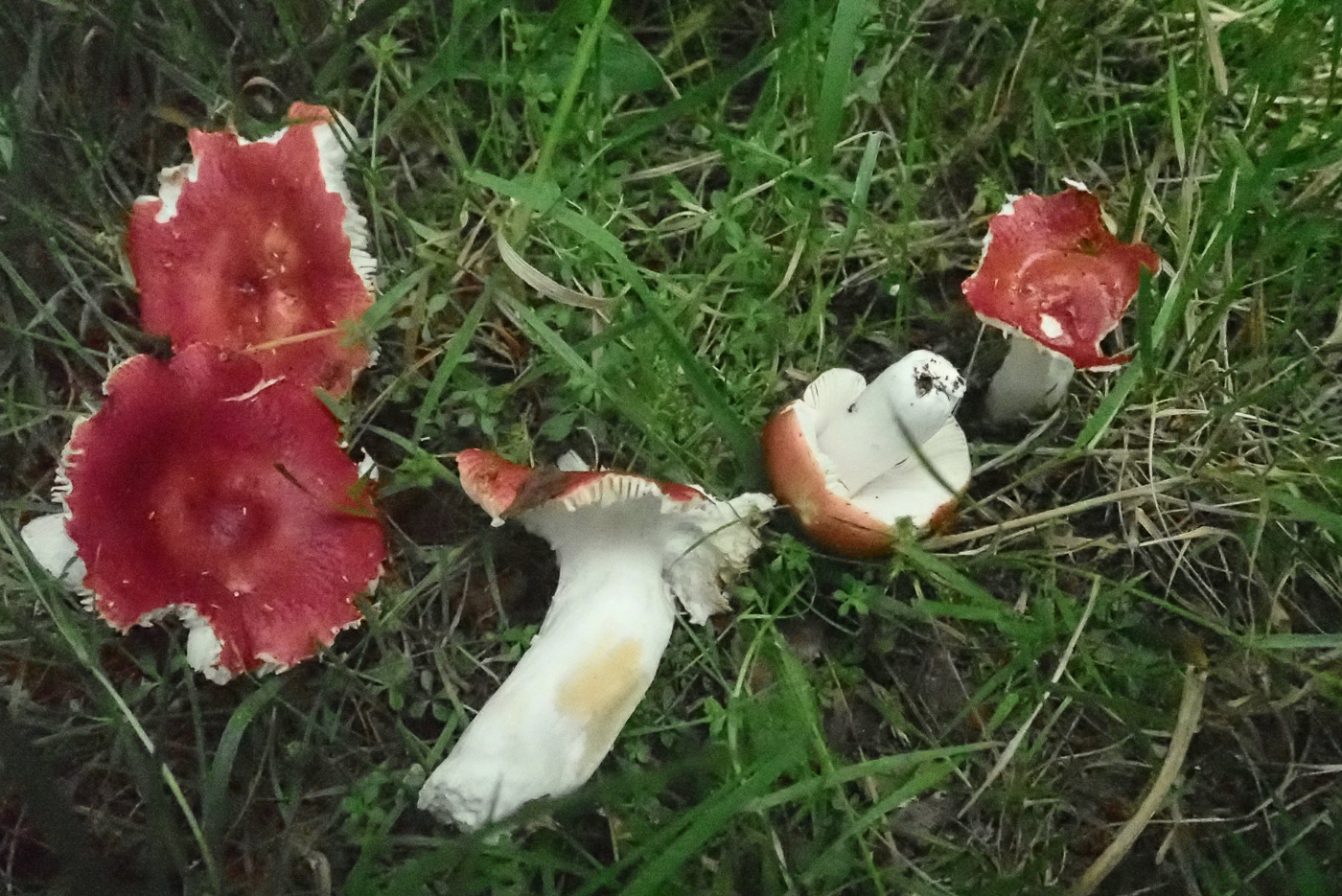 |
July 19th Russula velenovskyi (Coral Brittlegill)
In a grassy glade at Burnham Beeches Penny found this brightly coloured and common species in soil under Birch and Oak. Features to look for which separate it from other equally common red Brittlegills in the field: the cap is shiny, has brick to coral rather than pink tones and often has a paler umbo in the centre (as seen here). Gills, which start out white, become cream as it matures. We have many records from all over the south of the county.
|

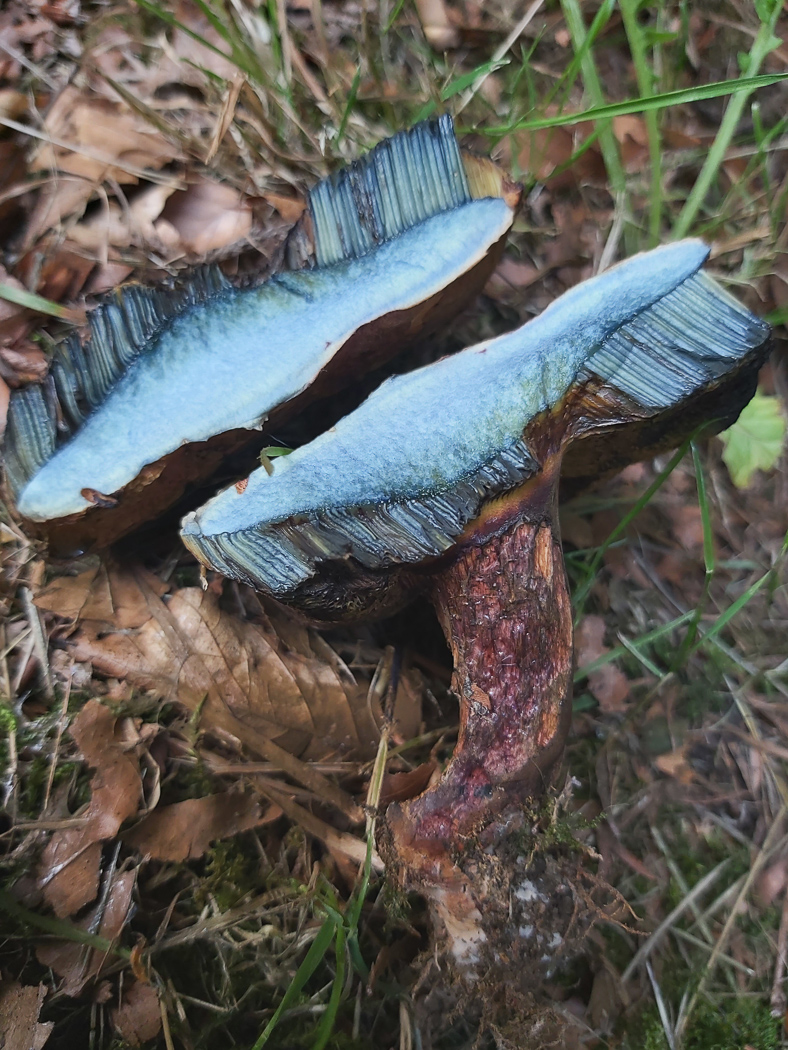 |
July 19th Cyanoboletus pulverulentus (Inkstain Bolete)
In his garden in Jordans village Jesper Launder looks for this striking and uncommon species every autumn where it comes up regularly under Beech and Hazel - see also in Finds 2020 dated Sept 21st). Here it was again fruiting very early this year. Previously in the genus Boletus, this is one of several species in which the flesh when exposed to the air turns instantly blue (shown in photo 2). This particular species, however, has yellow pores rather than the red of the much more common Scarletina Bolete, and is also notable for the deep almost blue-black colour it develops on bruised pores and stem as well as in the flesh - it is in fact the darkest staining Bolete, hence its common name. It occurs under deciduous trees, favouring Beech and Oak.
|

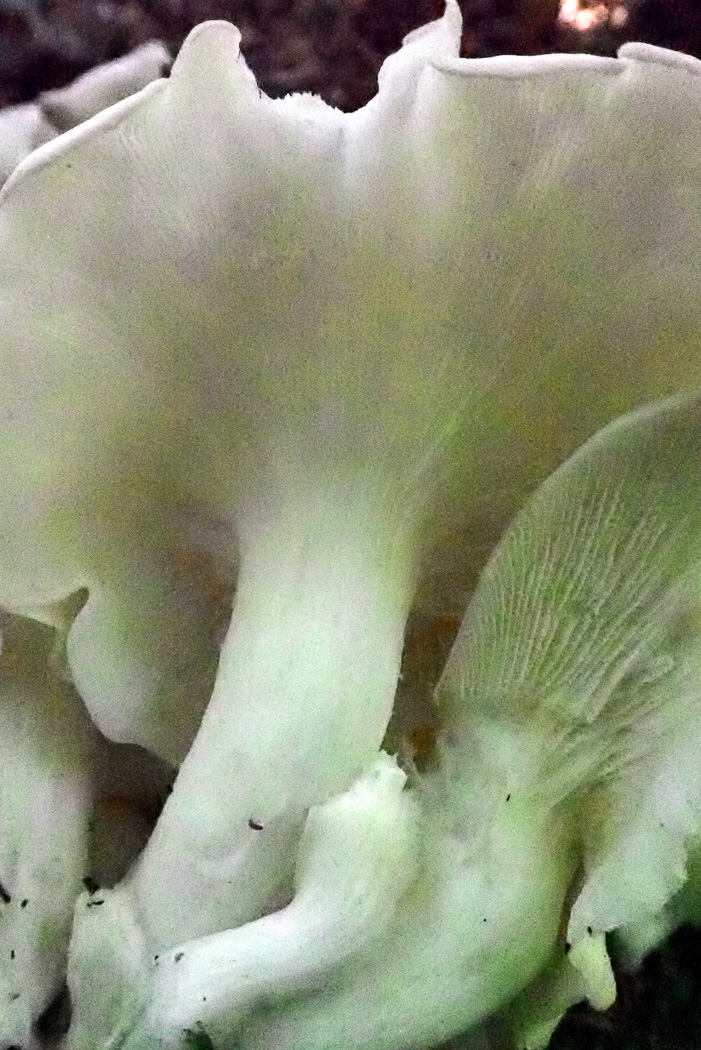

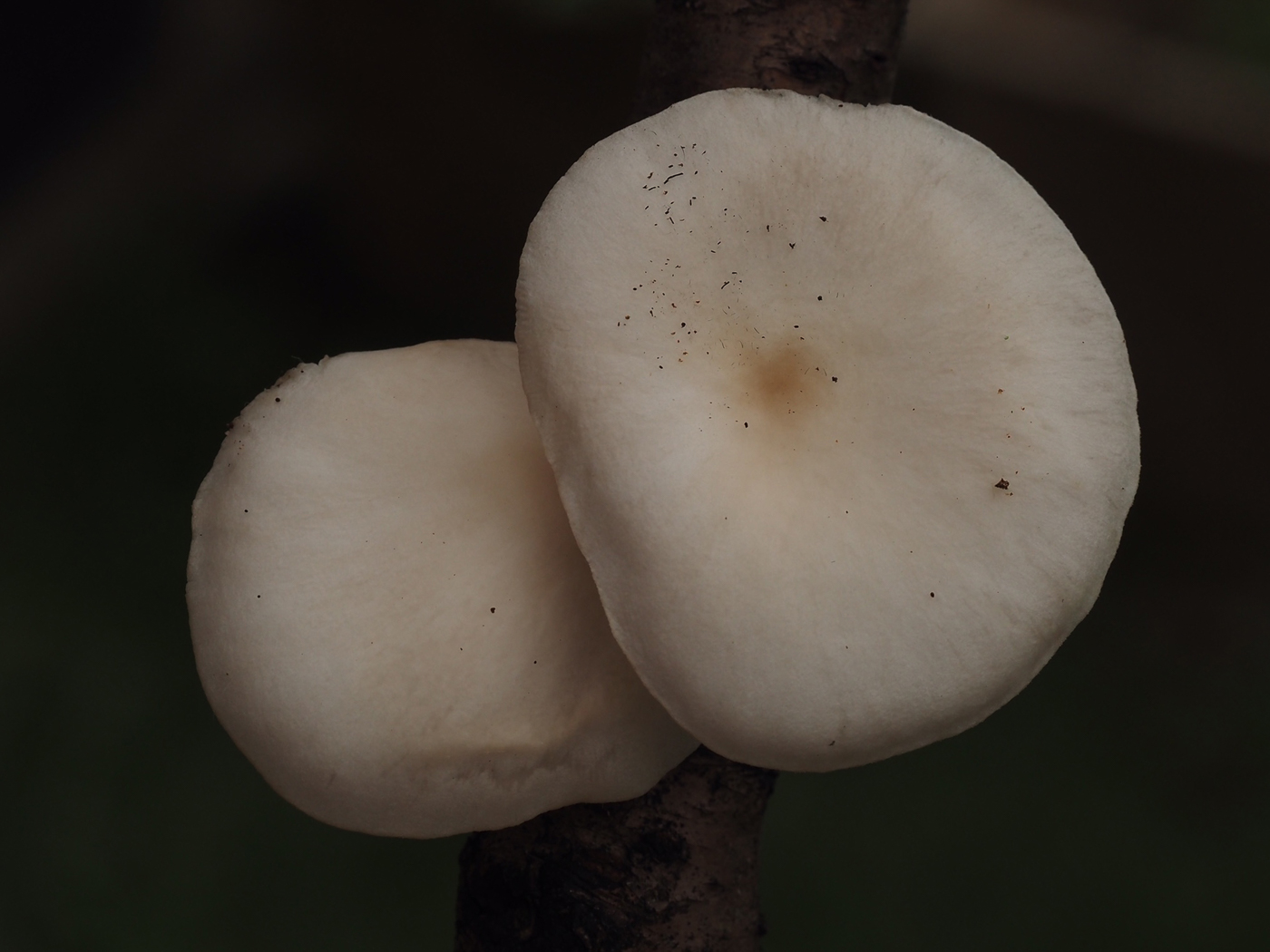 |
July 19th Pleurotus ostreatus (Oyster Mushroom)
On a fallen Beech trunk in Burnham Beeches Penny found several large fresh clusters of this very common species. Its colour is somewhat variable and when really pale as here it can be tricky to tell apart from the less common P. cornucopiae (Branching Oyster) - also pale though a slightly creamier white. Noting how far down the stem the gills run is the best way: see in photo 2 that they are decurrent, reaching down the stem, but then soon die out - in P. cornucopiae they are more prominent and widely spaced as well as continuing much further down the stem. Photos 3 and 4 are of Claire Williams's similarly very pale collection from Downley Wood a few days later.
|
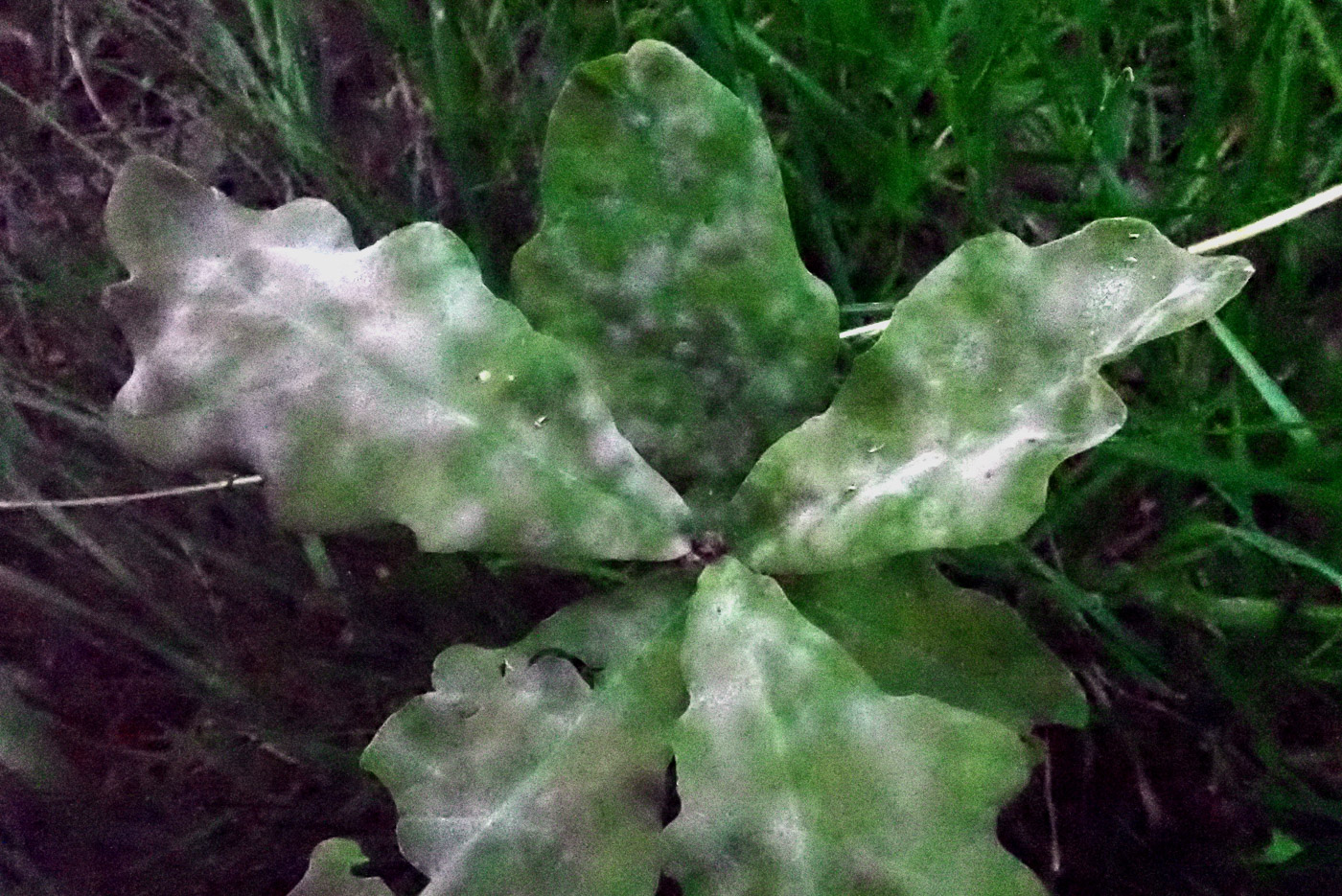 |
July 19th Erysiphe alphitoides (Oak Mildew)
On the living leaves of many Oaks in Burnham Beeches Penny saw this very common mildew seen in summer and autumn. There are many species of this genus and this one can be named purely through it being on Oak leaves though it also can occur on Sweet Chestnut and (very rarely) on Beech as well.
|
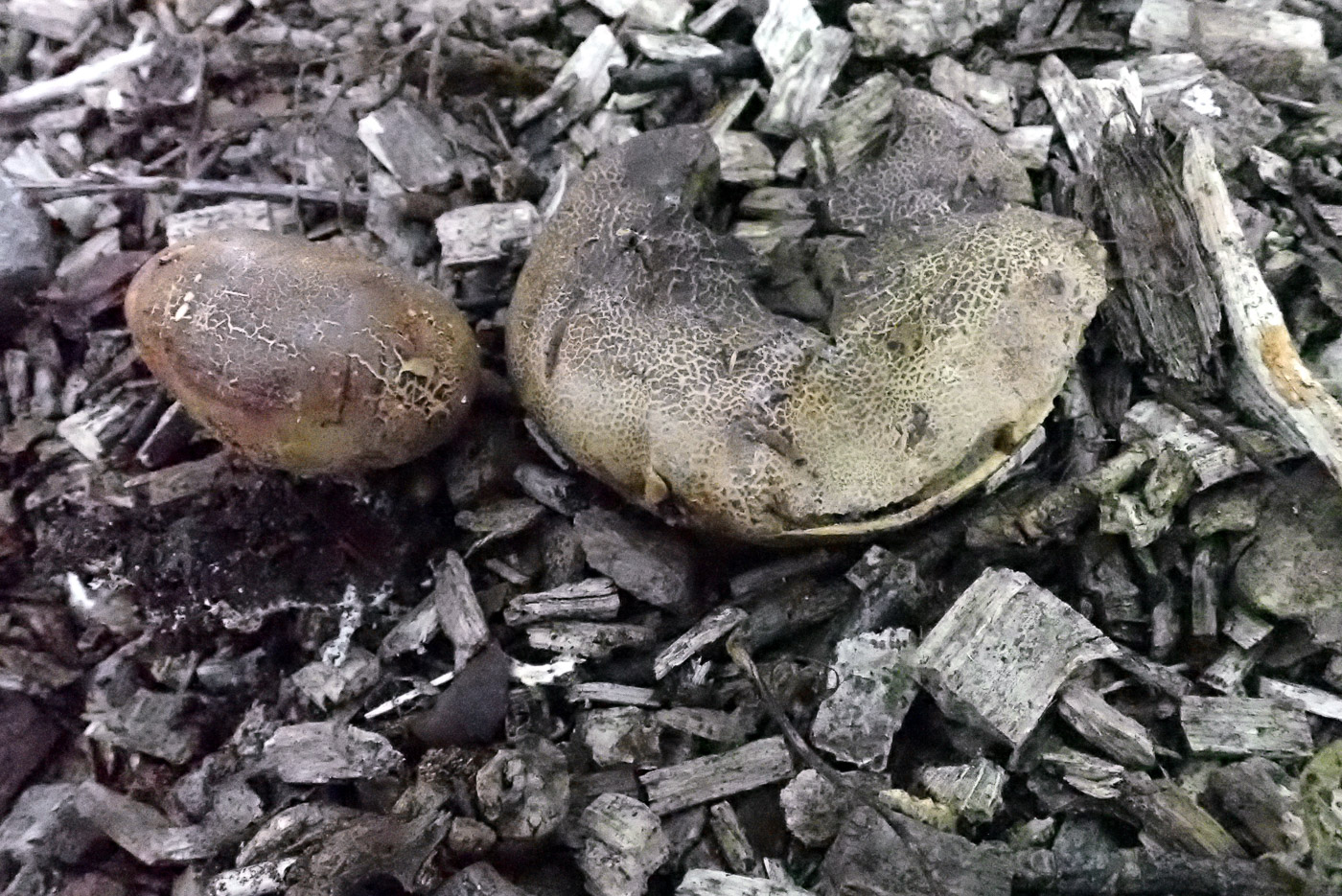
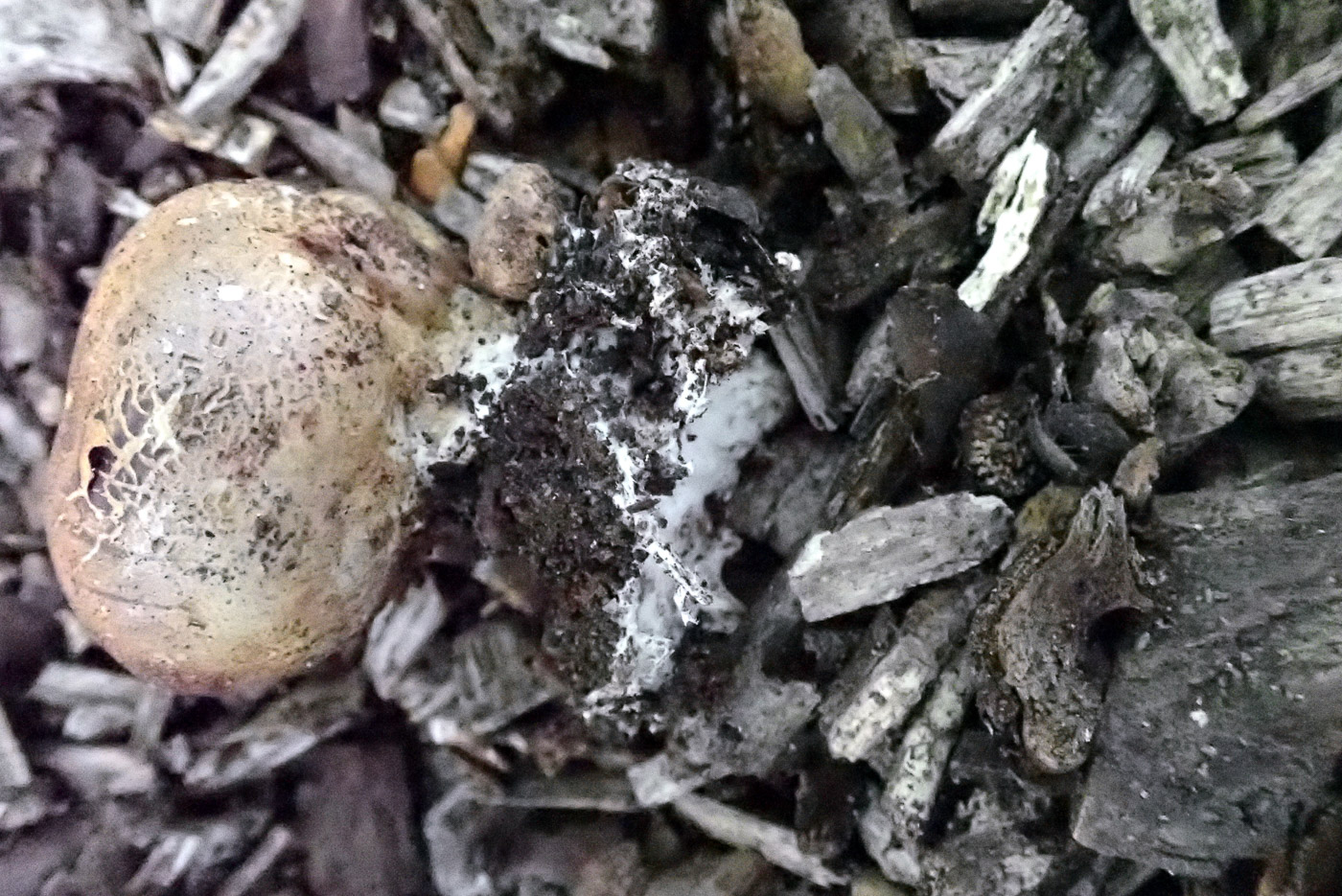 |
July 19th Scleroderma verrucosum (Scaly Earthball) 
On the edge of a large woodchip pile near Oak in Burnham Beeches Penny found her first Earthball of the season. Hardly likely to be mistaken for a Puffball when mature as here, the irregular shape and dirty brown colour with irregular pock marks, also the stem with debris interwoven into the mycelium at its base (photo 2) are typical. A common species usually associated with Oak.
|
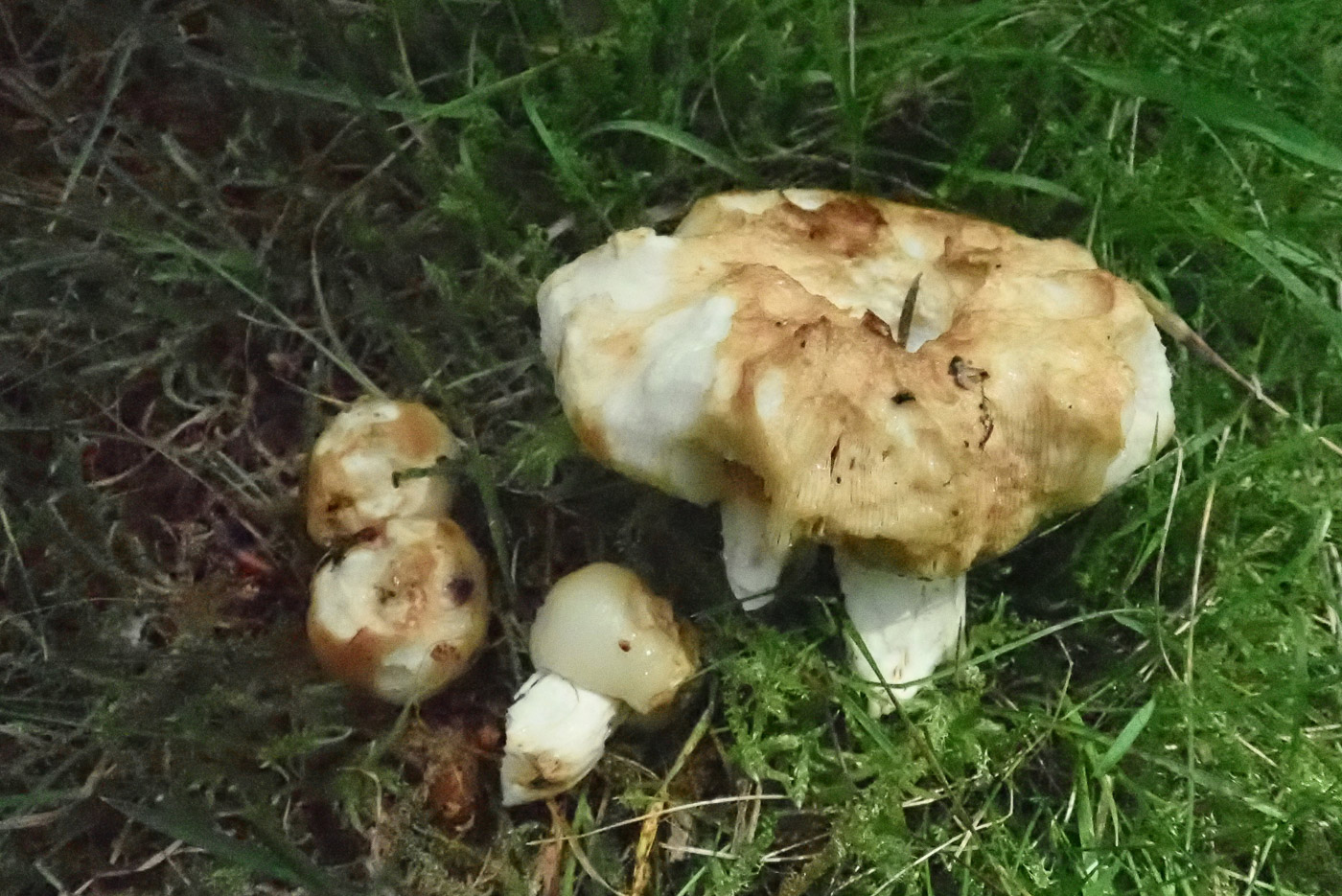
 |
July 19th Russula subfoetens (a Brittlegill with no common name)
In a grassy glade at Burnham Beeches Penny found two species of Brittlegill in soil near Birch and Oak. Both were fairly damaged as is often the case when this genus first makes an appearance, being a favourite with squirrels, mice and slugs amongst other nibblers, so are not looking their best, in fact the cap surface of the large specimen here has been mostly eaten away. R. subfoetens (as its name suggests) is another member of 'The Smellies' (see also R. amoenolens 3 days earlier) and very similar to R. foetens (Stinking Brittlegill). Both species are quite large and bulky with ochre yellow–brown caps which are sticky (an unusual Brittlegill character), very brittle gills and an unpleasant rancid smell. They are best told apart by a drop of KOH on the stem flesh: golden yellow in subfoetens and dirty brown in foetens. Todays species is probably the commoner of the two in the south.
|
July 18th 2021
 |
July 18th Lactarius circellatus (a Milkcap with no common name)
The genus Lactarius is not usually one that fruits early in the season but Jesper Launder noticed this nice group growing under Hornbeam, its host tree in Jordans village. This is not a common species and characterised by the palish greenish grey zoned cap, pink buff gills oozing copious milk when damaged, a fruity smell and of course only found under Hornbeam. We have records from just six county sites, the earliest date being the end of September, so this is an interesting find.
|
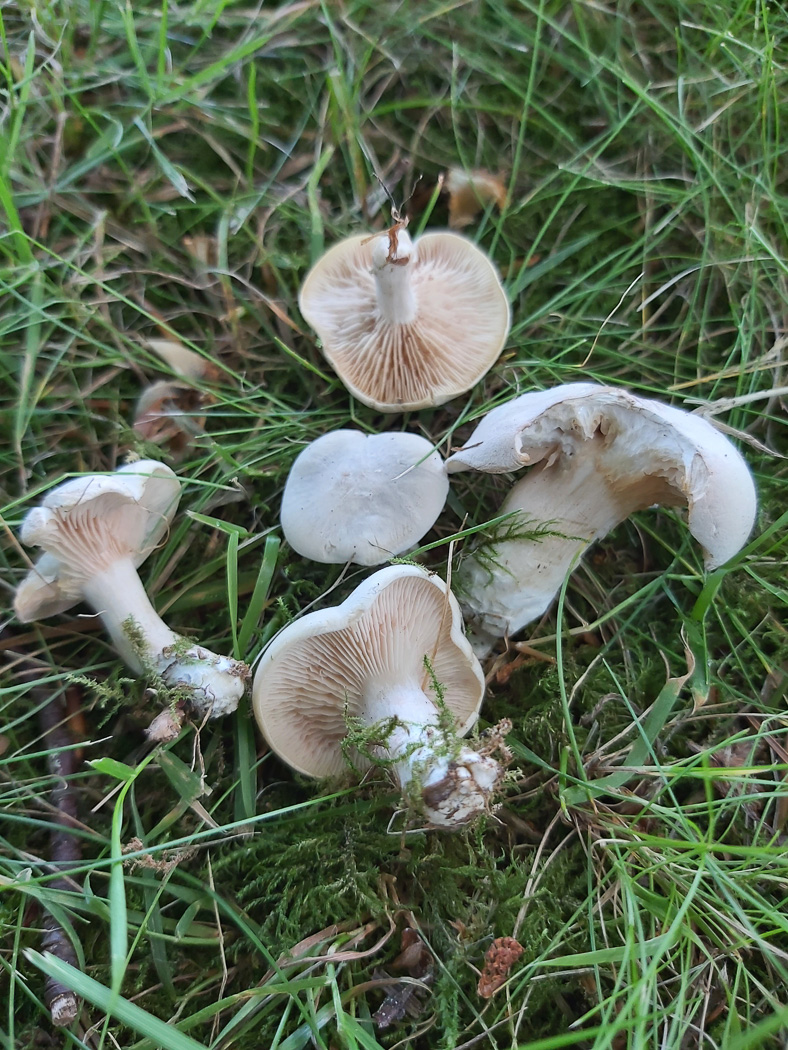 |
July 18 Clitopilus prunulus (The Miller)
Whilst walking on Beaconsfield Golf Course Jesper Launder found this collection of common early grassland mushroom, often found in grassy woodland glades as well. The caps are white and have a soft kid glove feel to them, the gills are pale pink and somewhat decurrent, the stems are also white and once picked they have a distinctive mealy smell (hence the common name). Considered by some a good edible species, beware because it is easily confused with a very similar and very poisonous species of grassland Clitocybe!
|
July 17th 2021

 |
July 17th Parasola auricoma (an Inkcap with no common name) 
In grassy soil at Stampwell Farm Jackie Ewan noticed these Inkcaps clearly from the Parasola genus (having very thin flesh, caps fluted like a parasol and lacking the deliquescing character of other Inkcap genera). The tendency is to assume that all such collections are P. plicatilis (Pleated Inkcap), considered very common and a species mainly of lawns. Less well known are the several very similar species which occur in other habitats and substrates and though appearing extremely similar have differently shaped spores and other microscopic characters. Lacking any detailed information on the genus, Jackie asked for help whereupon Penny suggested she searched in the cap cuticle (with a scope) for the amazingly long, thick-walled golden brown hairs found only in this particular parasol-like species. Bingo! Identification solved. Not rare, we have 15 previous records, half of which are from Derek's Whitchurch garden! The species occurs in soil / woodchip / submerged woody remains sometimes in lawns, and ends to be a little bigger than other Parasola species.
|
July 16th 2021

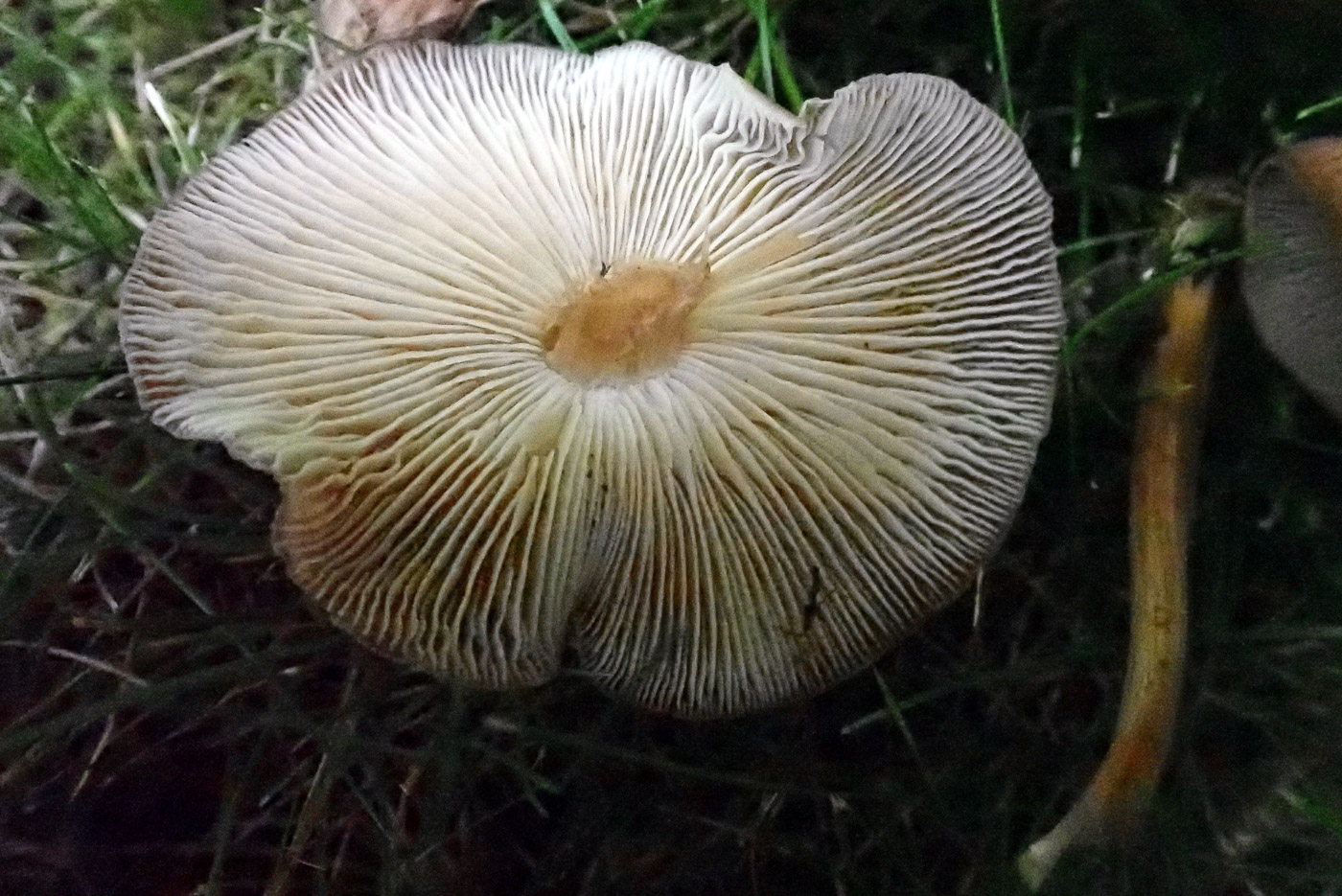 |
July 16th Gymnopus luxurians (a rare Toughshank with no common name) 
On a lawn in Stoke Poges Memorial Gardens when Penny was looking for early Waxcaps she came across a cluster of these brown capped mushrooms which rang no bell but which reminded her of the genus Gymnopus being somewhat flexible with crowded pale gills. At home she discovered this species which seemed to fit well including the microscopic characters but was not a name she knew, and on further investigation discovered it is an American species, possibly introduced here with only a handful of UK records, mostly from Kew Gardens in hothouses, also very rare in Europe. So this is new to the county and as the few British collections may not yet have been sequenced it may possibly prove to be different from the American species. It is now dropping a sporeprint and being dried with a view to getting it sequenced.
|

 |
July 16th Gyroporus castaneus (Chestnut Bolete)
At Stoke Poges Memorial Gardens in grass under Oak Penny found just a singleton of this occasional and distinctive species, an easy Bolete to recognise in the field having a chestnut cap and matching stem with contrasting off-white pores which don't turn blue when pressed. It occurs under mature Oak and Sweet Chestnut and develops hollows in the stem visible when sliced lengthways. (Penny tried this today but the whole stem was just a mass of maggots!) We have many records from Hodgemoor Woods and a few from elsewhere in the county but none previously found in July.
|

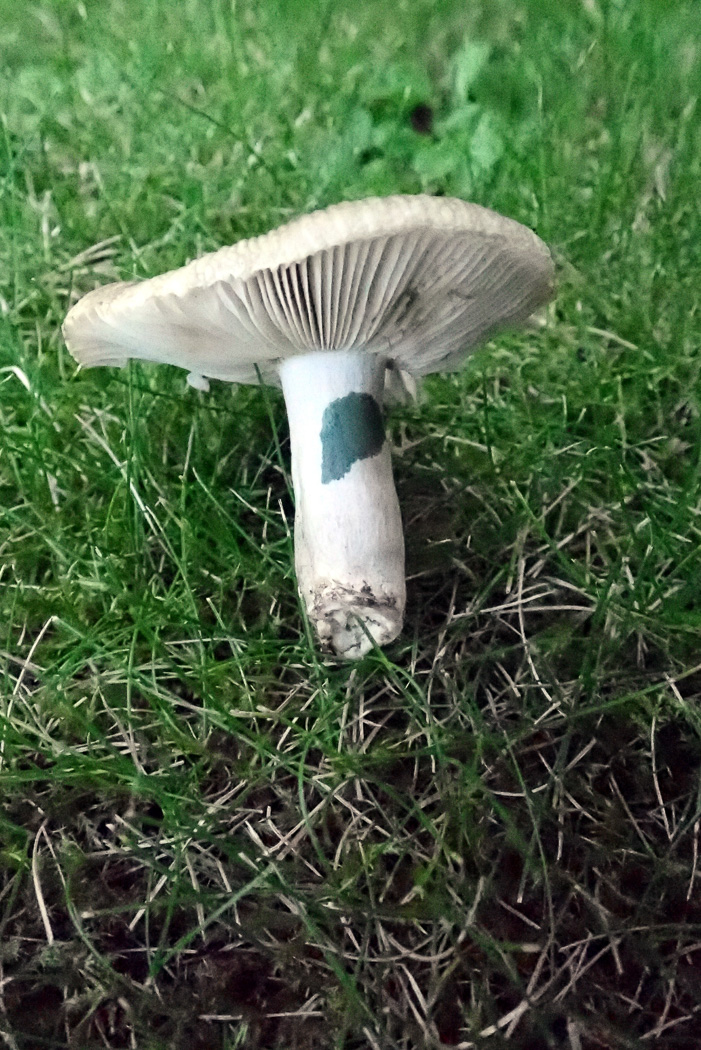 |
July 16th Russula amoenolens (Camembert Brittlegill)
At Stoke Poges Memorial Gardens in grass under Oak Penny found this Brittlegill, a member of a group of this genus affectionately known as 'The Smellies'! They mostly are mycorrhizal with Oak, have brown cap colours and - needless to say - unusual or unpleasant smells. This particular species is very similar to R. sororia (Sepia Brittlegill) and in fact incorrectly named as this for many years until it became known that the two could be split with the use of Guaiac on the stem: no reaction in R. sororia but instantly strongly blue in R. amoeolens as seen in photo 2. We now know that today's species is by far the commoner of the two. They share the strongly striate cap margin, dull grey brown colours, association with Oak and an unpleasant sour to cheesy smell.
|
July 15th 2021
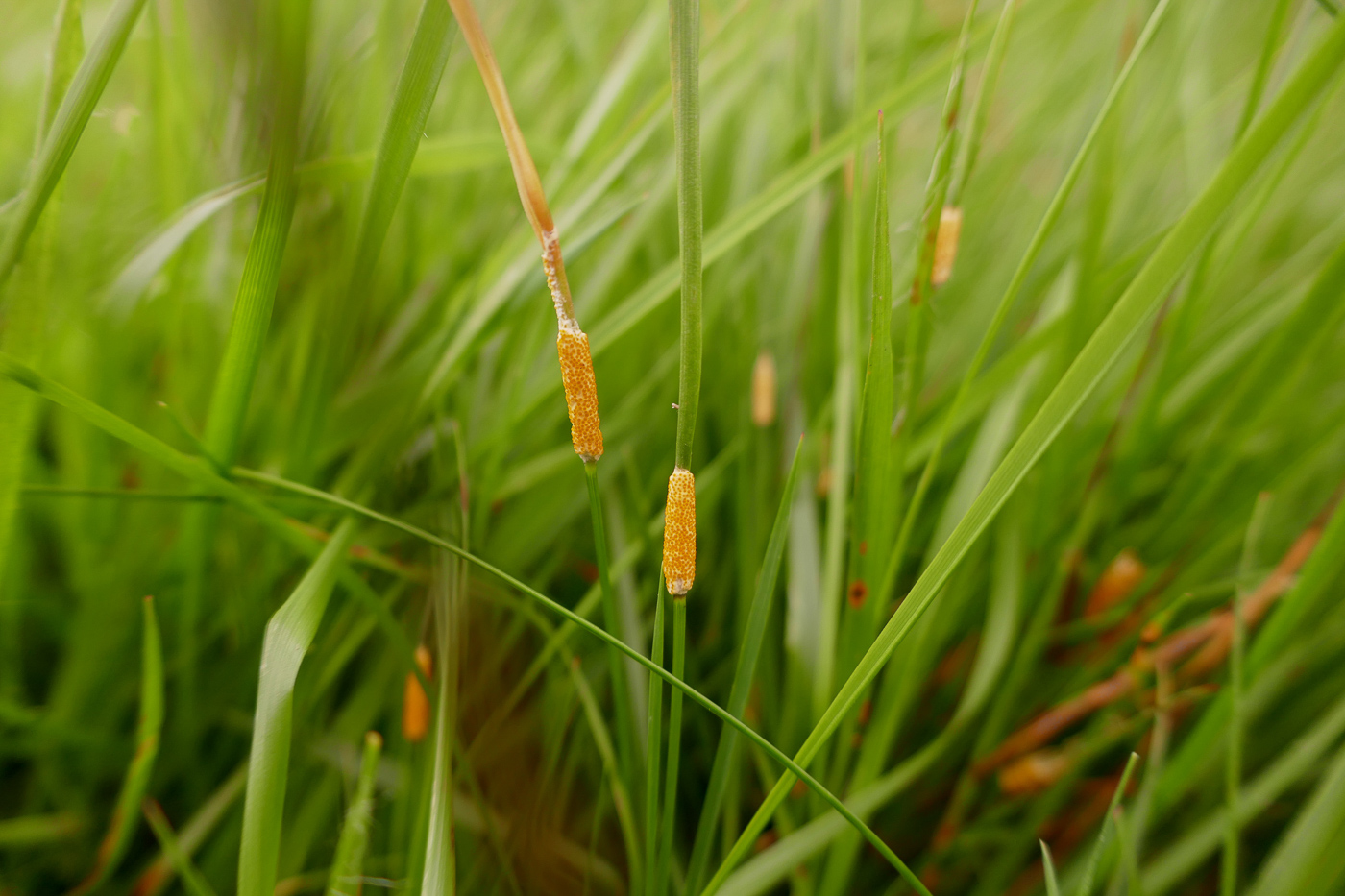 |
July 15th Epichloe typhina (Choke Disease)
On a grass stem at Stampwell Farm Jackie Ewan found and identified this summer fruiting species which apparently occurs on many different grasses, starting out white and yellowing as it matures. Though common this is only our second county record reflecting how we tend to focus on woodland autumn season fungi, no doubt overlooking many common things which occur else where at other times of year.
|
 |
July 15th Bolbitius titubans (Yellow Fieldcap)
At Cadmore End Penny found a collection of this common grassland species in roughly mown grass. It has a sticky cap which one can tell from the bits of dead grass adhering to the tall specimen here, and the bright egg yellow cap colour when young gradually fades as it matures. Possibly confusable with one of the yellow Waxcaps when young, a sporeprint will soon eliminate that genus: white in Waxcaps but distinctly brown in Bolbitius.
|
 |
July 15th Russula odorata (a Brittlegill with no common name) 
At Cadmore End under a large Oak Penny found two specimens of a pink Russula and noticing that the gills were developing a deep cream colour she knew it was an interesting species. The reaction on the stem with a ferrous sulphate crystal was pale salmon (seen in the upturned specimen), with Guaiac at home was instantly bright blue, it had a sweet fruity smell, a mild taste and the cap cuticle peeled almost to the centre. These clues plus a sporeprint for colour and other microscopic features confirmed it as this unusual species, one which is mycorrhizal with Oak. Compare with Penny's photos of R. vesca, dated July 12th - another pink species!
|
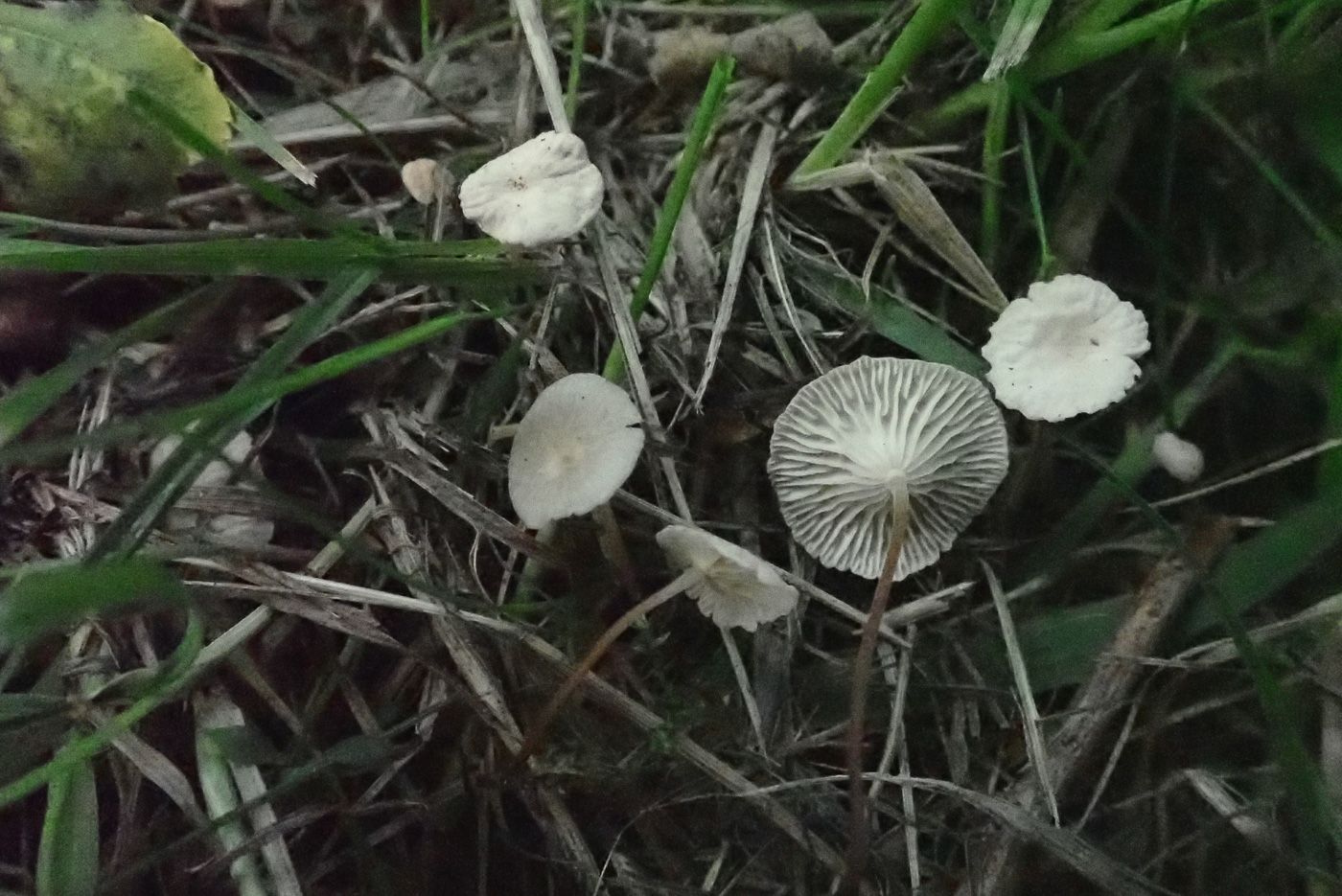
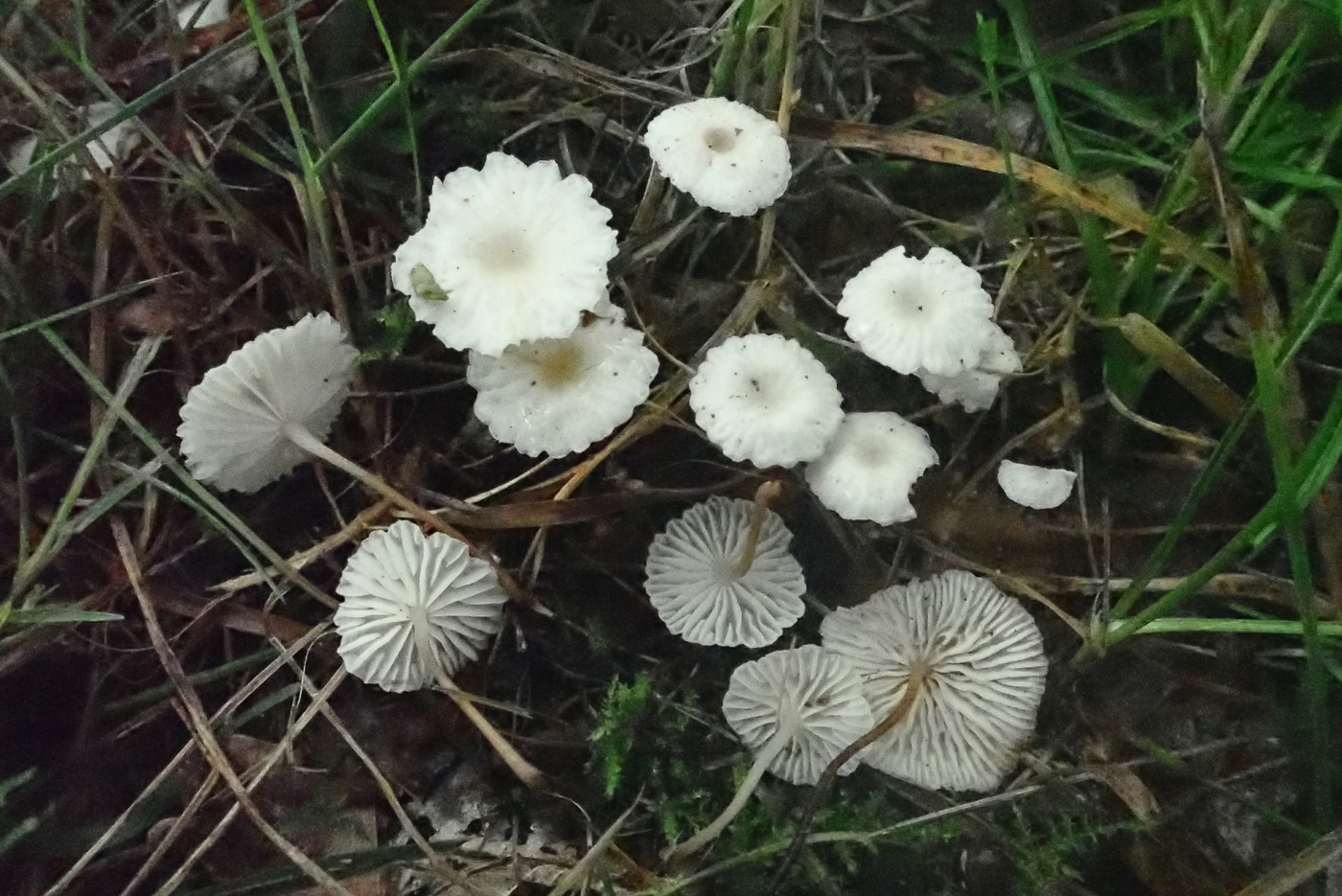 |
July 15th Marasmiellus vaillantii (Goblet Parachute) 
At Cadmore End under a large Oak Penny noticed many of these little white mushrooms in grass and at first glance suspected they might be on woody remains and therefore probably Marasmius rotula (Collared Parachute). Closer inspection showed they were mostly on decaying grass cuttings and also turning one over revealed no collar around the top of the stem to which the gills in M. rotula would be attached (see this feature illustrated for that species dated July 31st), here the gills were clearly joined to the stem. Checking with a scope at home confirmed the species, not rare and with plenty of county records mostly with this same grassy substrate. Visiting this same site a few weeks later, Penny found the species still abundant (photo 2).
|
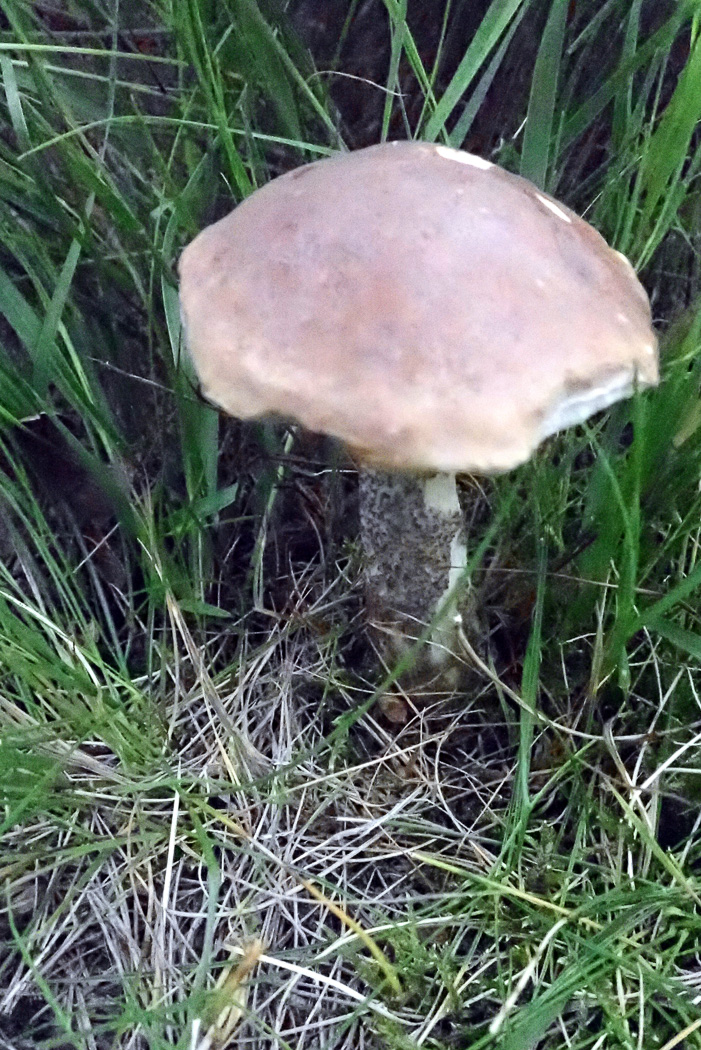

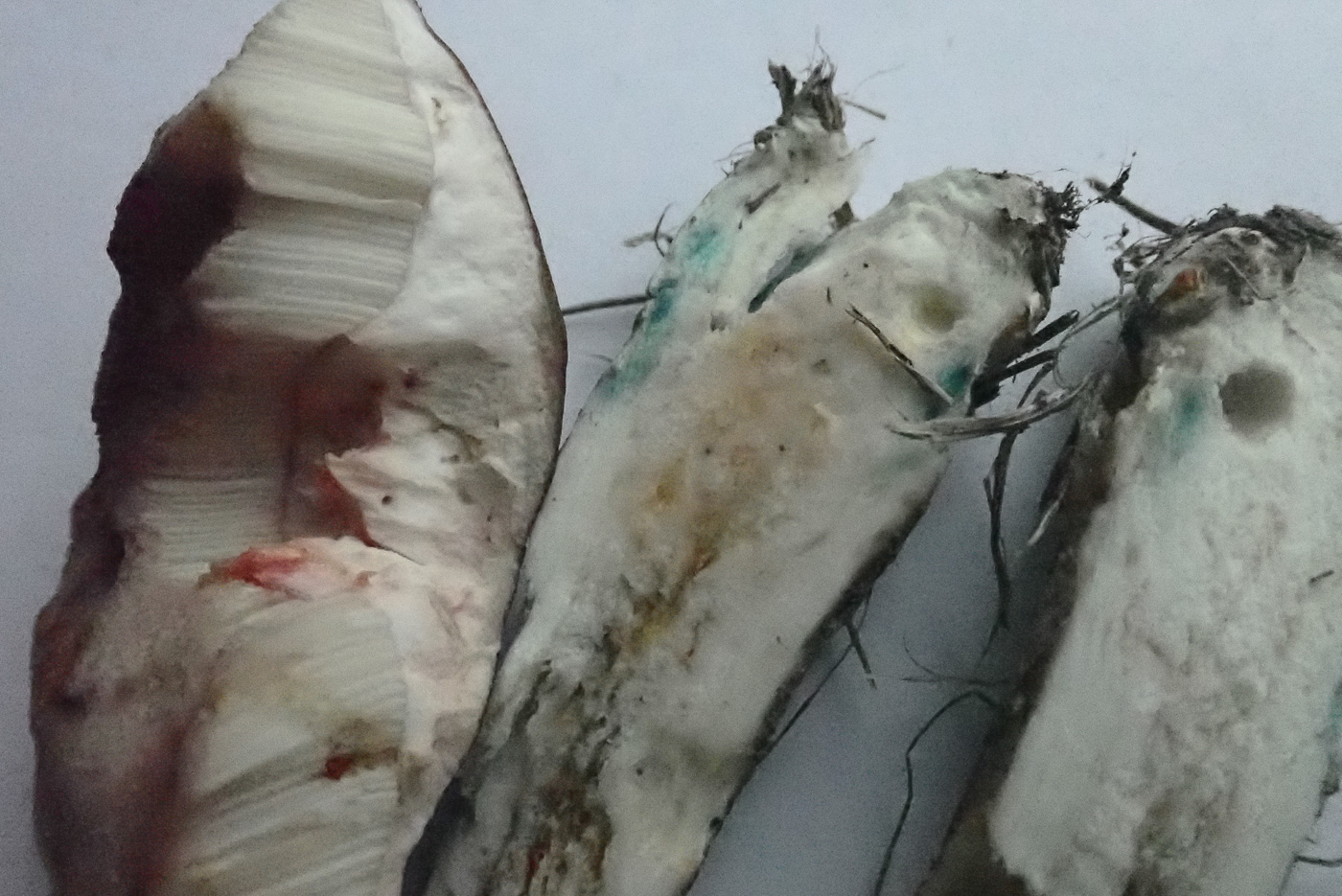 |
July 15th Leccinum variicolor (Mottled Bolete) 
In grassy soil under Birch at Stoke Common Penny found just one Leccinum specimen and knew she'd need to take it home to work on to identify to species. She scratched the stem base on collection and saw no signs of blue-green staining at the time, but later on close inspection there were clear signs of this colour at the base. This together with the cap flesh turning slightly pink, the dark brown-black 'scabers' on the stem and examination of the cap cuticle with a scope confirmed it as the fairly common L. variicolor rather than the even more common L. scabrum. (These colour changes often take an hour or so to develop.) Both species together with most members of this genus of Boletes are mycorrhizal with Birch but one should always note the tree host because a few species associate with other trees: Oak, Hornbeam, Aspen or Poplar, giving a vital clue to determination.
|
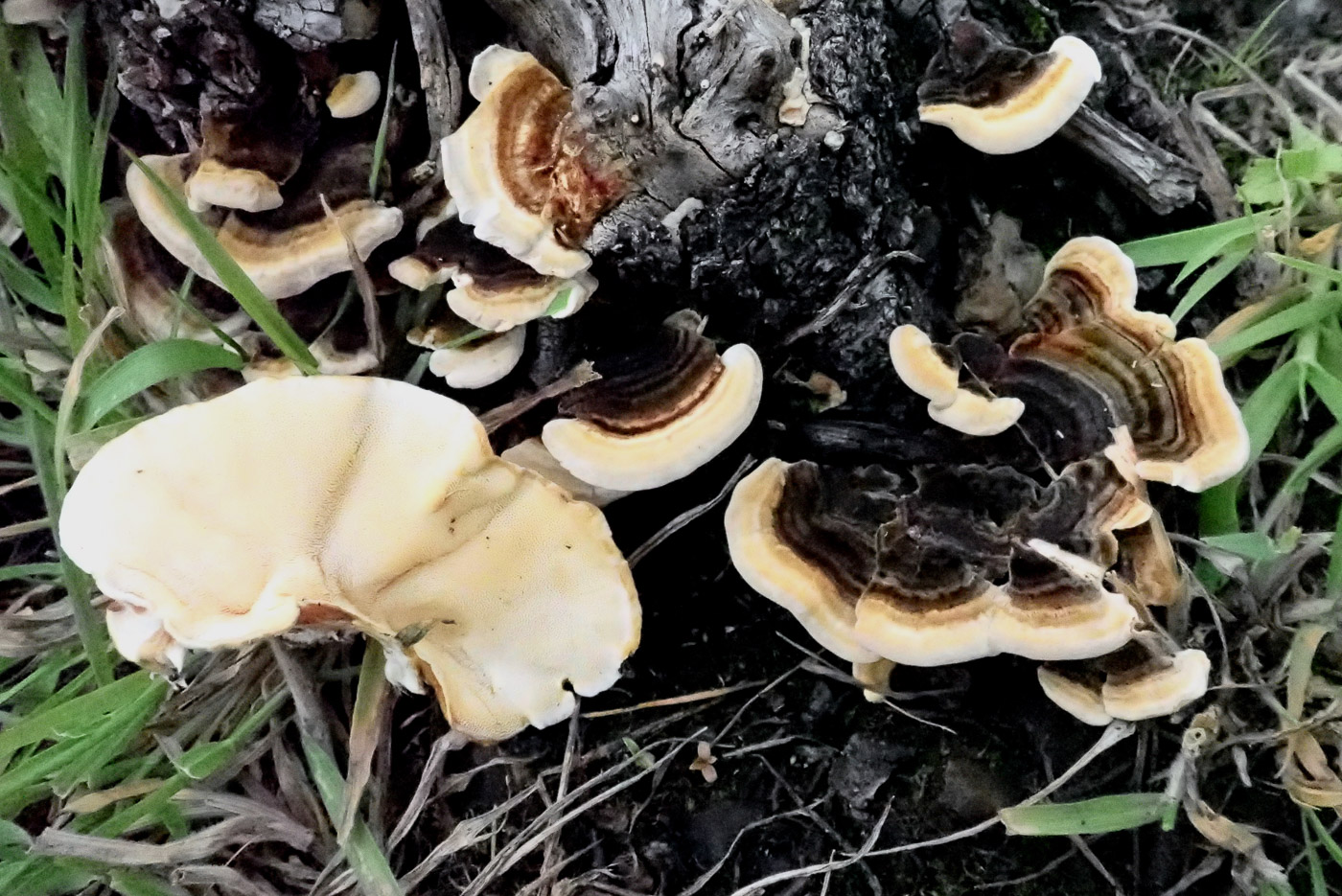 |
July 15th Trametes versicolor (Turkeytail)
In Stoke Common on a Birch stump Penny found a nice fresh fruiting of this very common bracket - so common that one can almost list it (together with Stereum hirsutum - Hairy Curtain Crust) as one enters deciduous woodland without actually seeing it! It's bound to be on fallen wood somewhere. To be certain of naming it correctly one should, however, look at the underside of a piece to make sure that it's just plain cream with small pores and not orange and smooth (i.e. S. hirsutum) or grey with a white border (i.e. Bjerkandera adusta - Smokey Bracket and almost as common). The top surface of this last can sometimes look identical to Turkeytail with similar zoning.
|
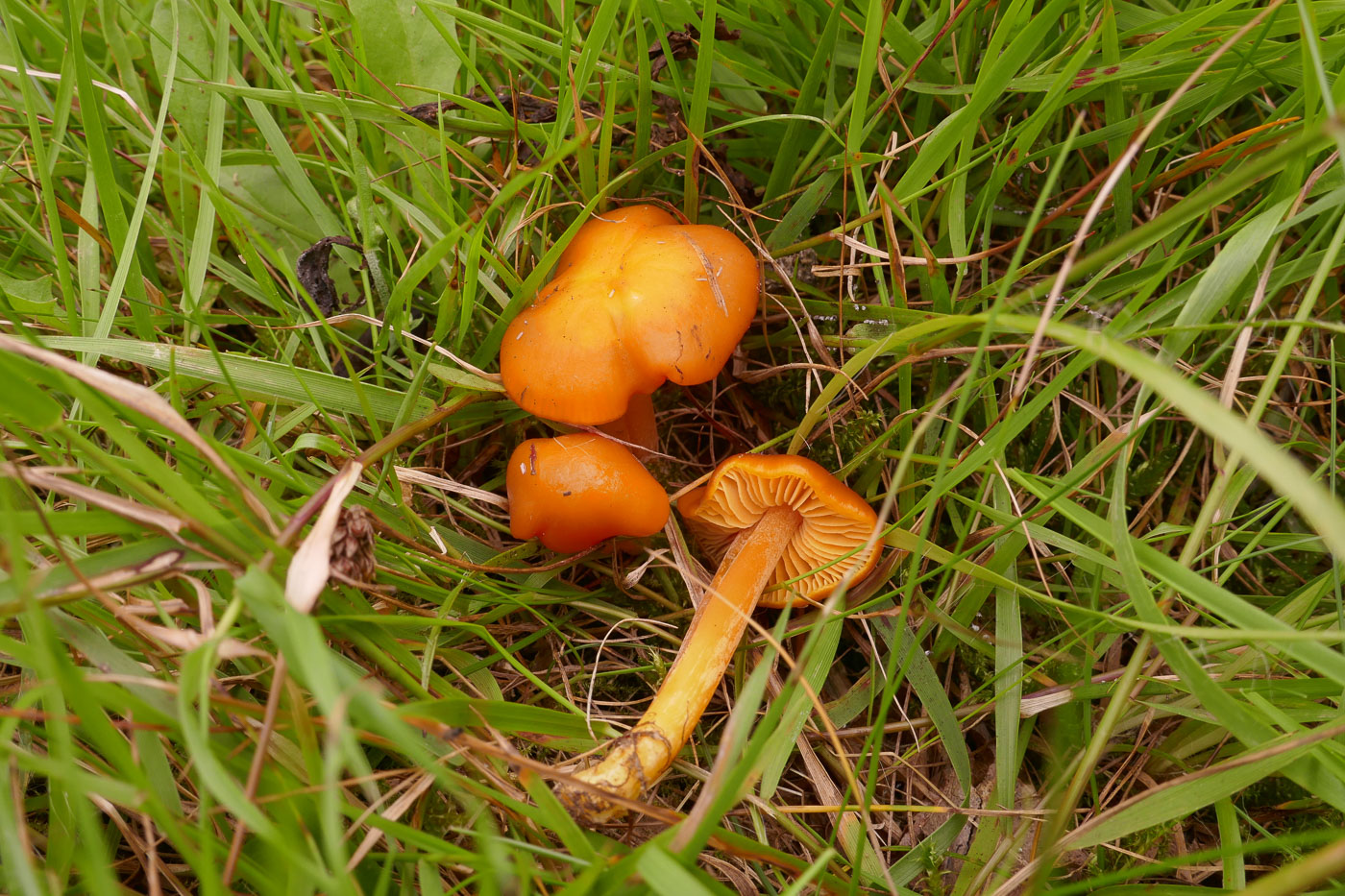 |
July 15th Hygrocybe quieta (Oily Waxcap) 
In a grassy area at Stampwell Farm Jackie Ewan found yet more Waxcaps though she was unsure of the species - there were several possible orange capped candidates and it was not until Penny suggested cutting one in half and rubbing it to see if she could detect an oily smell similar to Lactarius quietus that the species became clear, the spores when checked confirming it. Not rare but possibly misidentified as the smell is often not obvious, this is now our fifth July Waxcap species which could be a record for this month in the county.
|
July 13th 2021
 |
July 13th Inosperma adaequatum (previously Inocybe adaequata - a species of Fibrecap with no common name) 
In Wotton Park Estate under mixed deciduous trees Joanna Dodsworth found this pair of Fibrecaps, an unusual though not really rare species for which we have just six records from three different sites. The genus Inocybe - a large one recently divided into four for UK species (more worldwide) - is one which almost always needs a scope to identify to species, but this particular member is recognisable in the field from its scaly cap surface and tendency to turn pinkish red, particularly on the rather fibrillose stem (visible in the photo). It also has an unusual smell: somewhat spermatic (as in many Fibrecaps) but with an earthy beetroot component. It can get quite big for this group of LBJs, up to 7-8 cms across.
|
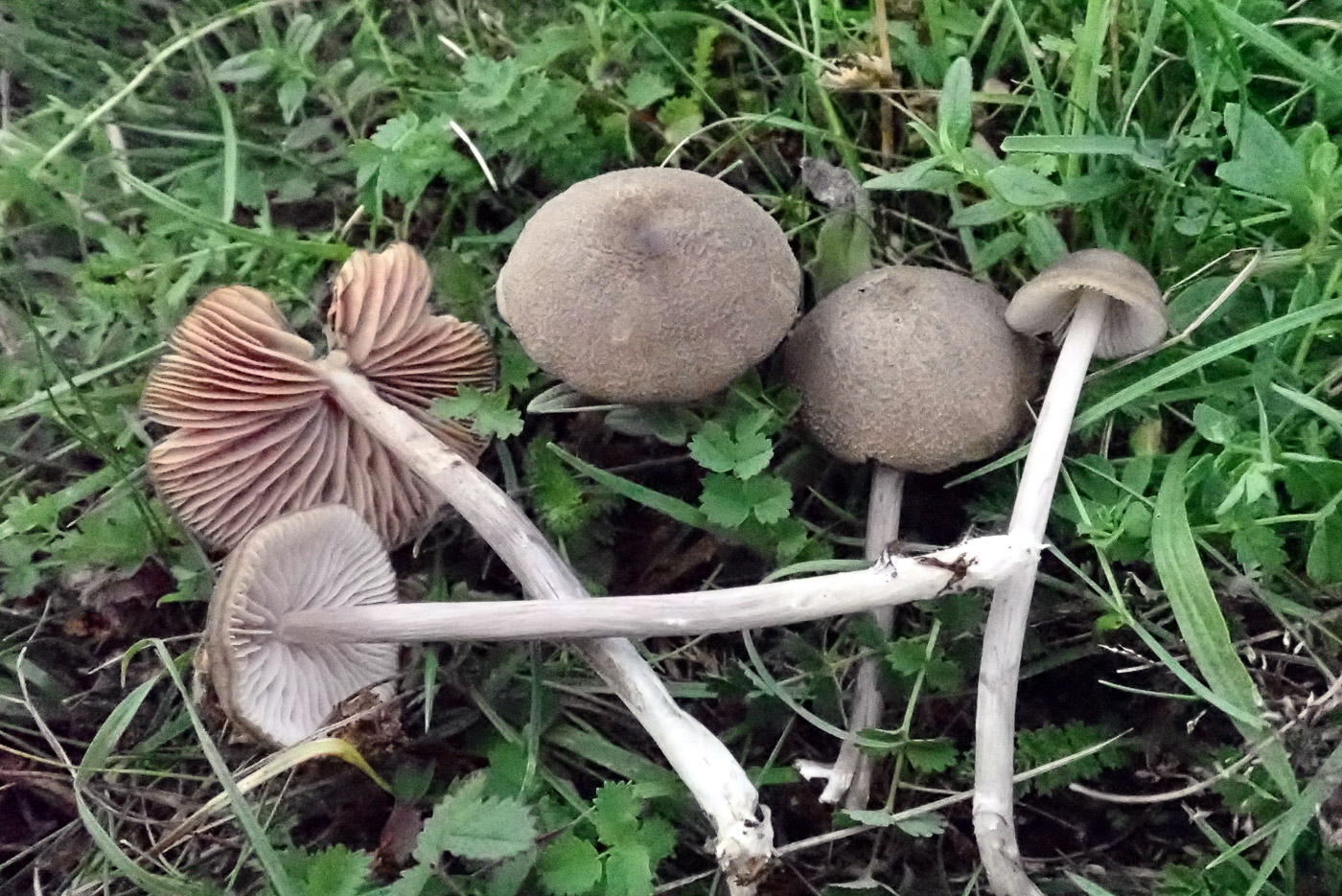
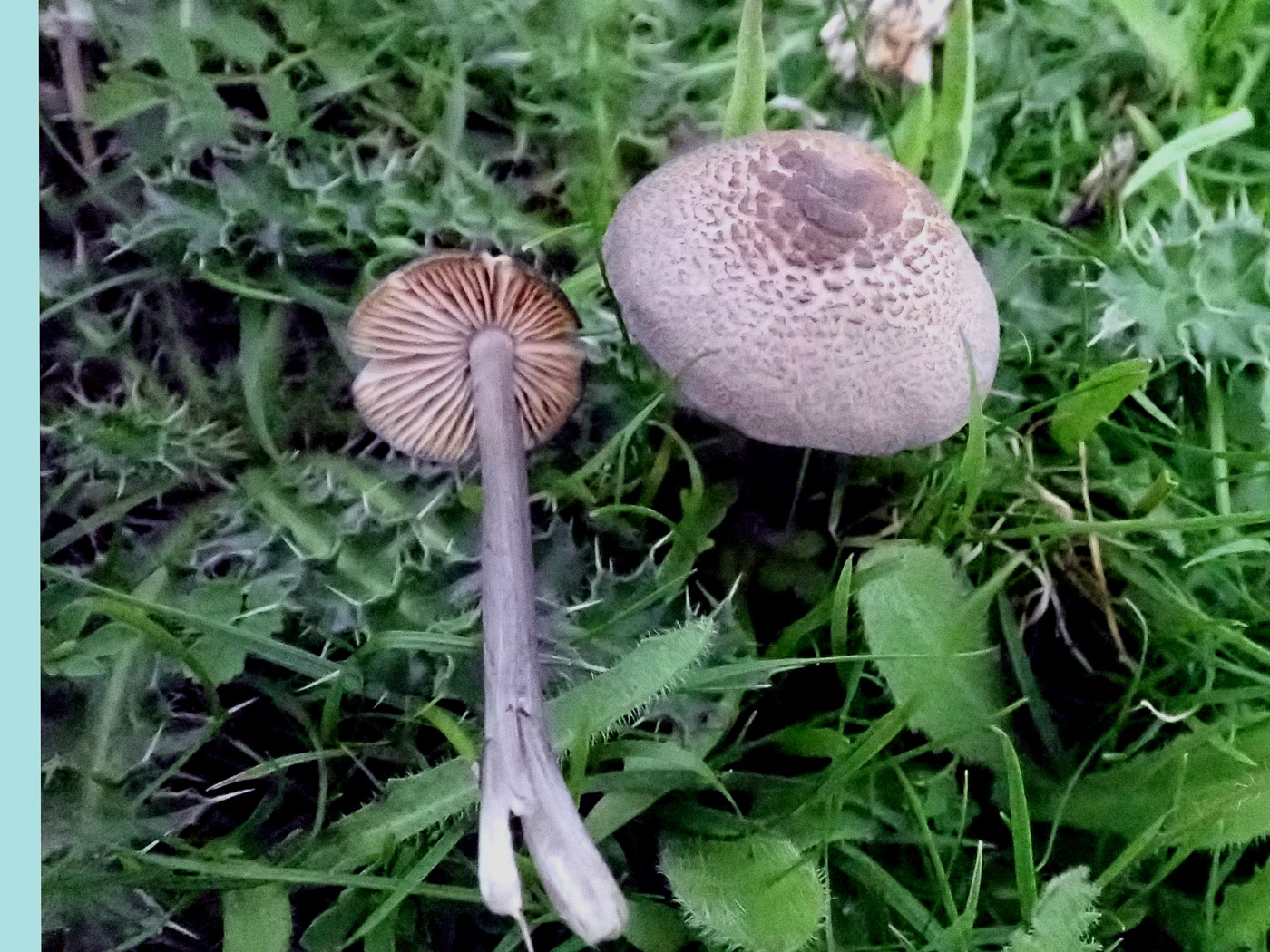
 |
July 13th Entoloma griseocyaneum (Felted Pinkgill) 
In thick grass at Coombe Hill Penny found a couple of collections of an Entoloma which needed work at home to identify - almost always the case with this genus. It did, however, have a distinctive cap with an almost powdered look to it which on close inspection revealed scales which became increasingly smaller from the centre outwards. Furthermore, the stem had a silvery violaceous glint, and these features together with the microscopic details led her to the name. Though not uncommon nationally, this appears to be new to the county perhaps reflecting that local mycologists tend to look less closely at grassland this early in the season.
|
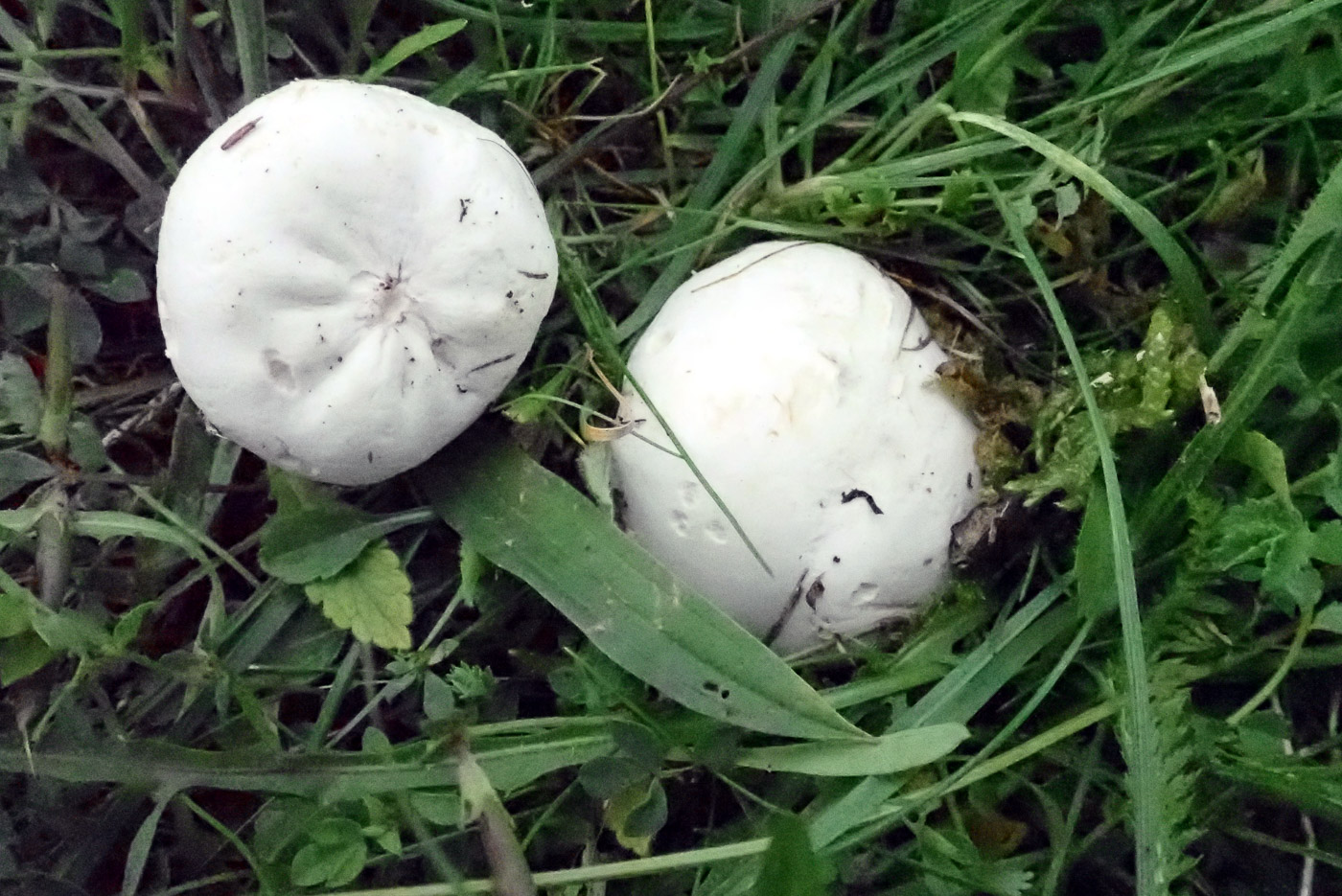 |
July 13th Bovista plumbea (Grey Puffball)
At Coombe Hill Penny found literally hundreds of these Puffballs in grass, when young as here white and not grey as the name suggests. At this stage they are somewhat similar to Lycoperdon pratense (Meadow Puffball) which, however is less smooth and more like L perlatum on the surface. When older the surface of this Bovista cracks and peels off in distinct pieces leaving a thin greyish skin covering the spore mass, the whole then detaching from the ground and blowing about to disperse its spores. The left hand specimen in the photo shows the slightly pleated stemless base.
|

 |
July 13th Panaeolina foenisecii (Brown Mottlegill) 
At Coombe Hill Penny found this typical grassland species, a very common LBJ in garden lawns and sometimes called Mower's Mottlegill for that reason. It is often quite small with caps around 1 cm across, but today's were up to 3 cms and also somewhat crazed on the surface which confused Penny in the field thus necessitating a scope to make the identification. The name 'Brown' refers not to the cap but to the sporeprint colour which differs from other Mottlegills (in the genus Panaeolus) which have a darker almost purpleblack sporeprint, this being the reason why the species was moved from that genus into Panaeolina. Photo 2 is possibly more typical of the species (from Penn Street Churchyard on August 14th found also by Penny) with caps about 1 cm across, smooth and slightly pinkish as they fade with age and direct sunlight.
|
 |
July 13th Panaeolus papilionaceus (Petticoat Mottlegill)
On manured soil in thick grass at Coombe Hill Penny found a couple of individuals of this distinctive dung-loving LBJ (probably more familiar as P. sphinctrinus). Caps were only about 1 cm across but the stems can be very long in comparison depending on the surrounding vegetation. The remarkably regular frilly veil remnants around the cap margin make the species nameable in the field, but this becomes far less easy in older specimens when they've disappeared.
|

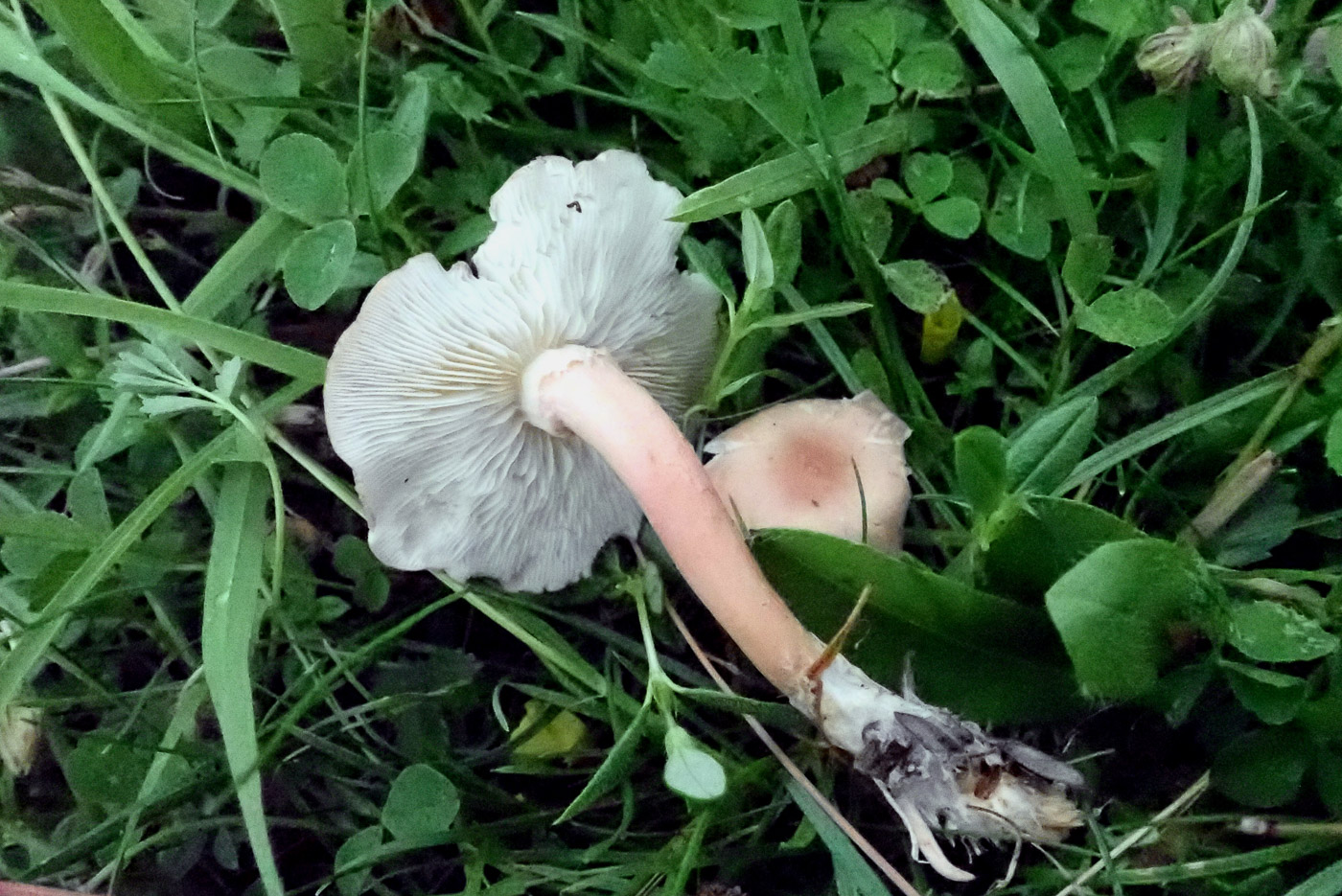 |
July 13th Calocybe carnea (Pink Domecap)
In deep grass and vegetation at Coombe Hill Penny found a few of these pretty pink capped mushrooms. Not uncommon given its grassland habitat, the species is quite easy to recognise in the field, having a matching pink stem but contrasting white gills. They are usually quite small but can get to about 3 cms across.
|
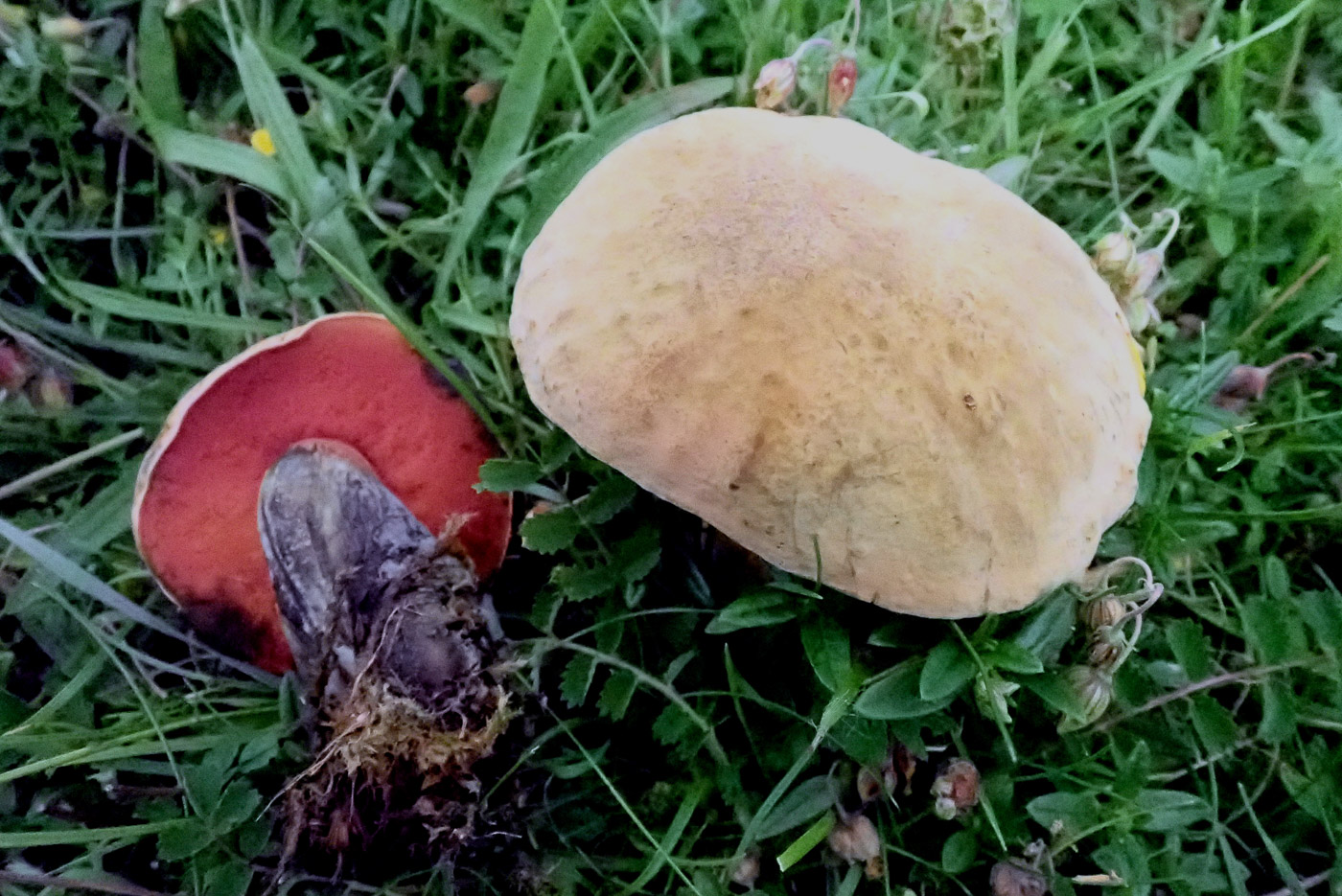
 |
July 13th Suillellus luridus (Lurid Bolete)
Prompted by husband Paul who reported dozens of fruit bodies of this species growing with the Helianthemum in Aston Rowant Reserve (Oxfordshire, however), Penny visited Coombe Hill - another good Helianthemum site but in Bucks - and was suitably rewarded with our first Bolete of the season. The species is similar to Scarletina Bolete (Neoboletus luridiformis) in having red pores and flesh staining strongly blue and can also be found, as that species, in deciduous woodland, but together with Rooting Bolete (Caloboletus radicans) it has a clear affinity with Helianthemum in open grassland as indeed do many other fungi from a variety of mycorrhizal genera. This seems to be our first July record with this host but Penny suspects that it is not unusual for it to be fruiting this early as we have records as early as June when found in woodland. Photo 2 shows the instant blueing on the pores when pressed with a finger.
|
July 12th 2021
 |
July 12th Hygrocybe cantharellus (Goblet Waxcap) 
In a grassy area at Stampwell Farm and near to other Waxcap species Jackie Ewan found a patch of this attractive species, one for which we have only four previous county records though it is not classed as rare. The dry orange cap and strongly decurrent gills make the species recognisable in the field so it would be good to find more sites for it. Our list of early fruiting Waxcaps is growing steadily at the moment!
|
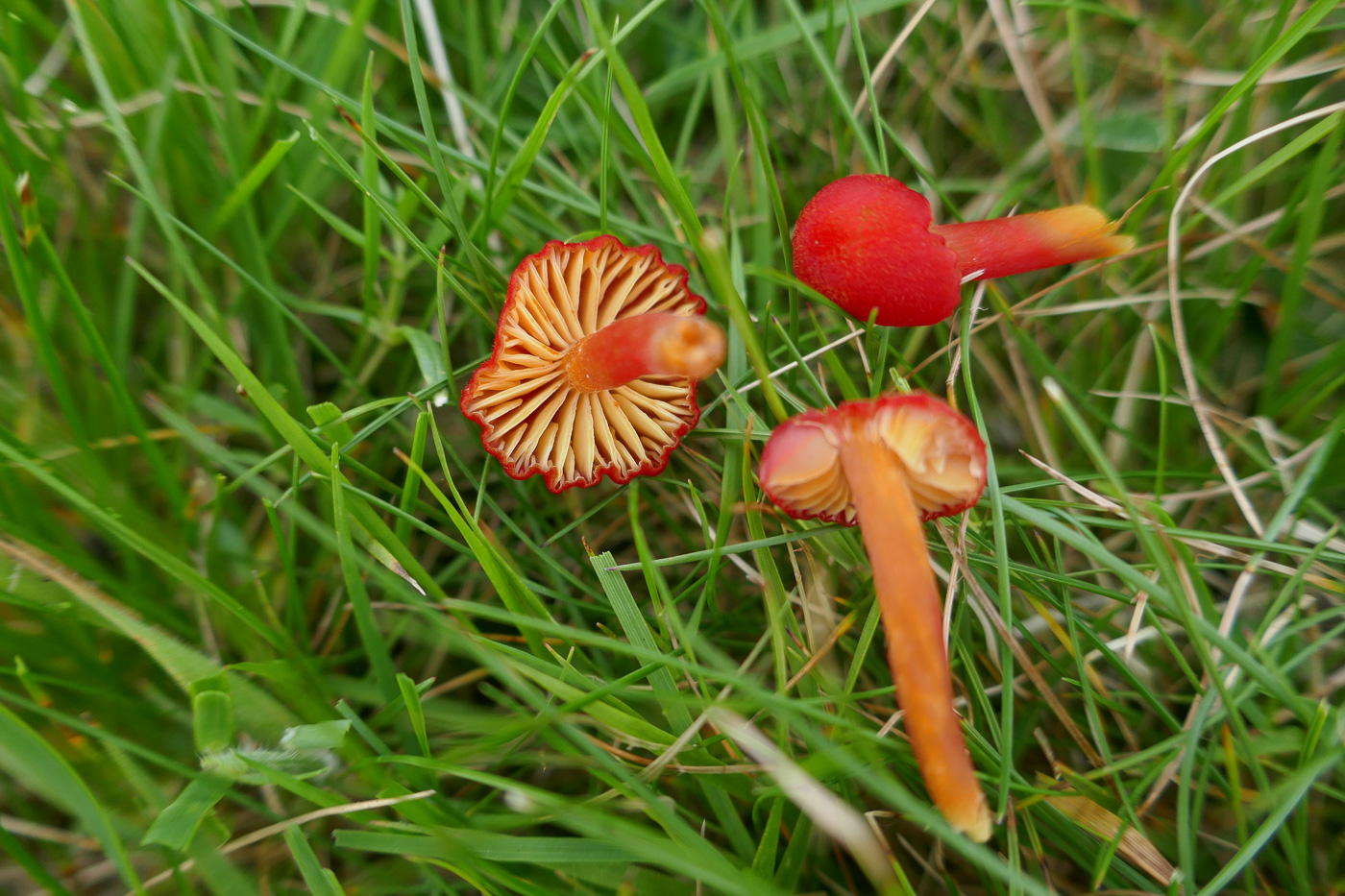 |
July 12th Hygrocybe miniata (Vermillion Waxcap) 
In a grassy area at Stampwell Farm Jackie Ewan found these small brightly coloured Waxcaps fruiting unseasonally early. Told from other red members of the genus by its dry and somewhat scurfy cap surface and contrasting paler gills, it is quite a common species but found most frequently in later autumn!
|
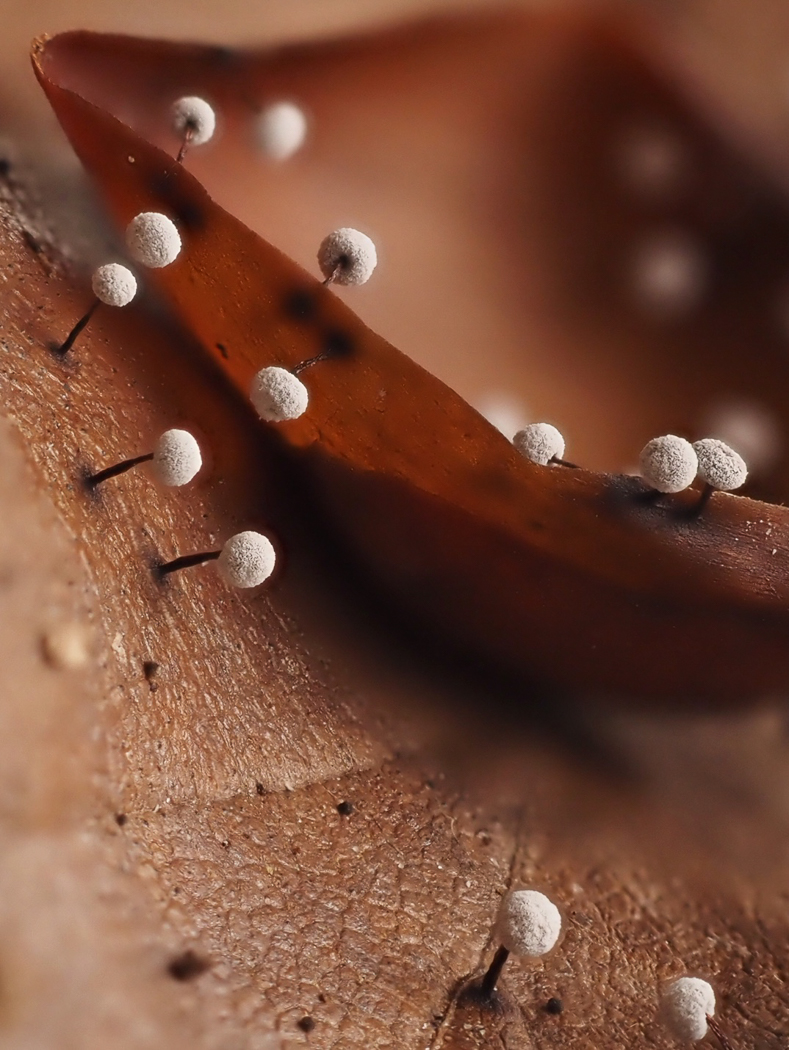

 |
July 12th Didymium nigripes (a Slime Mould with no common name)
On a dead Beech leaf in Downley Wood Claire Williams spotted this cluster of extremely small organisms (see photo 3 to give an idea of scale). The identification from her excellent photos was given her on the Slime Mould facebook page, the name referring to the particularly dark stalk in this member of a very large and tricky genus. (See another image amongst Barry Webb's photos.) We have just two previous county records - one of these Barry's from last year - but the species is not rare, just tiny and easily overlooked. It seems we have a second outstanding photographer amongst our number!
|
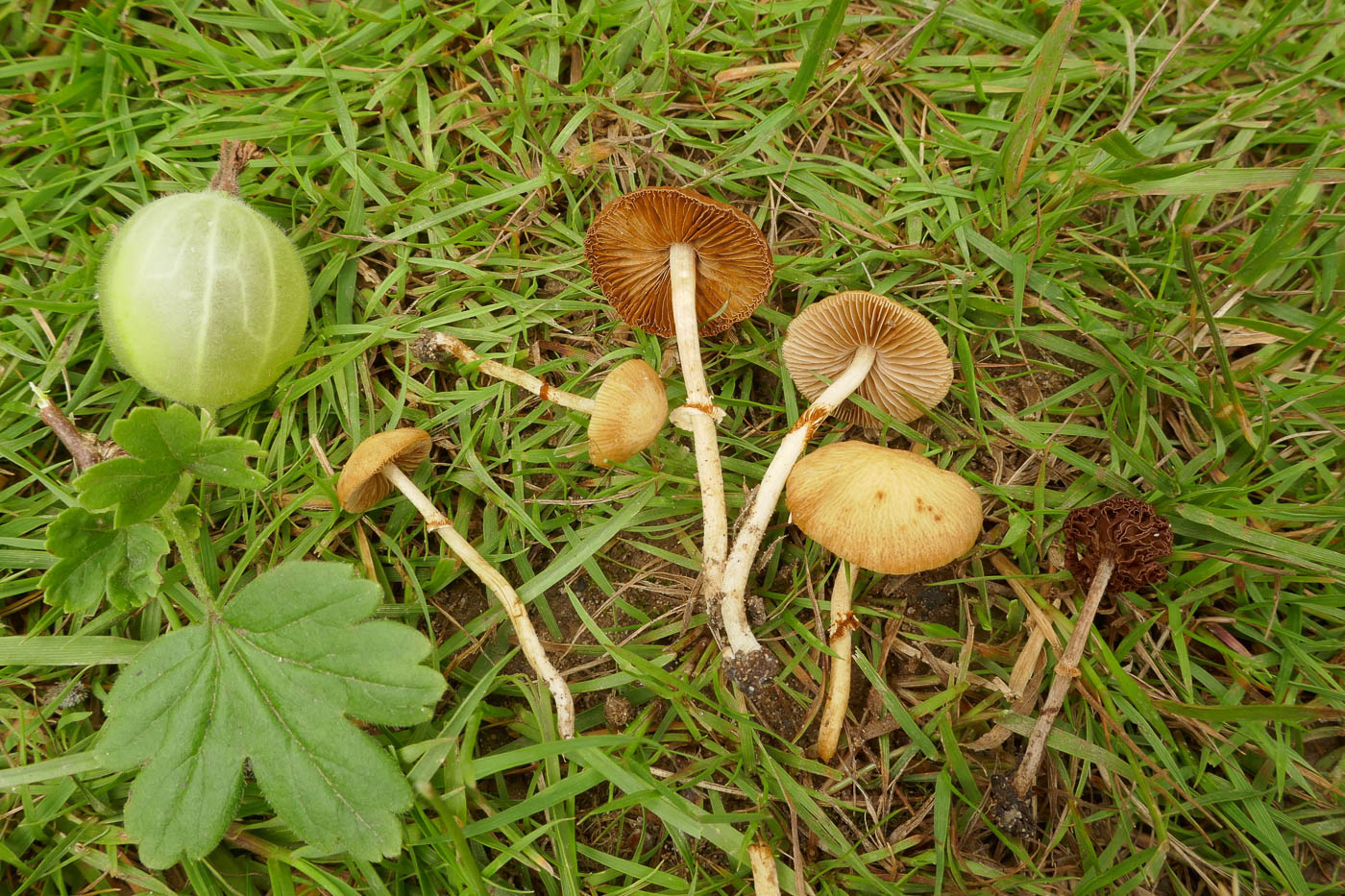
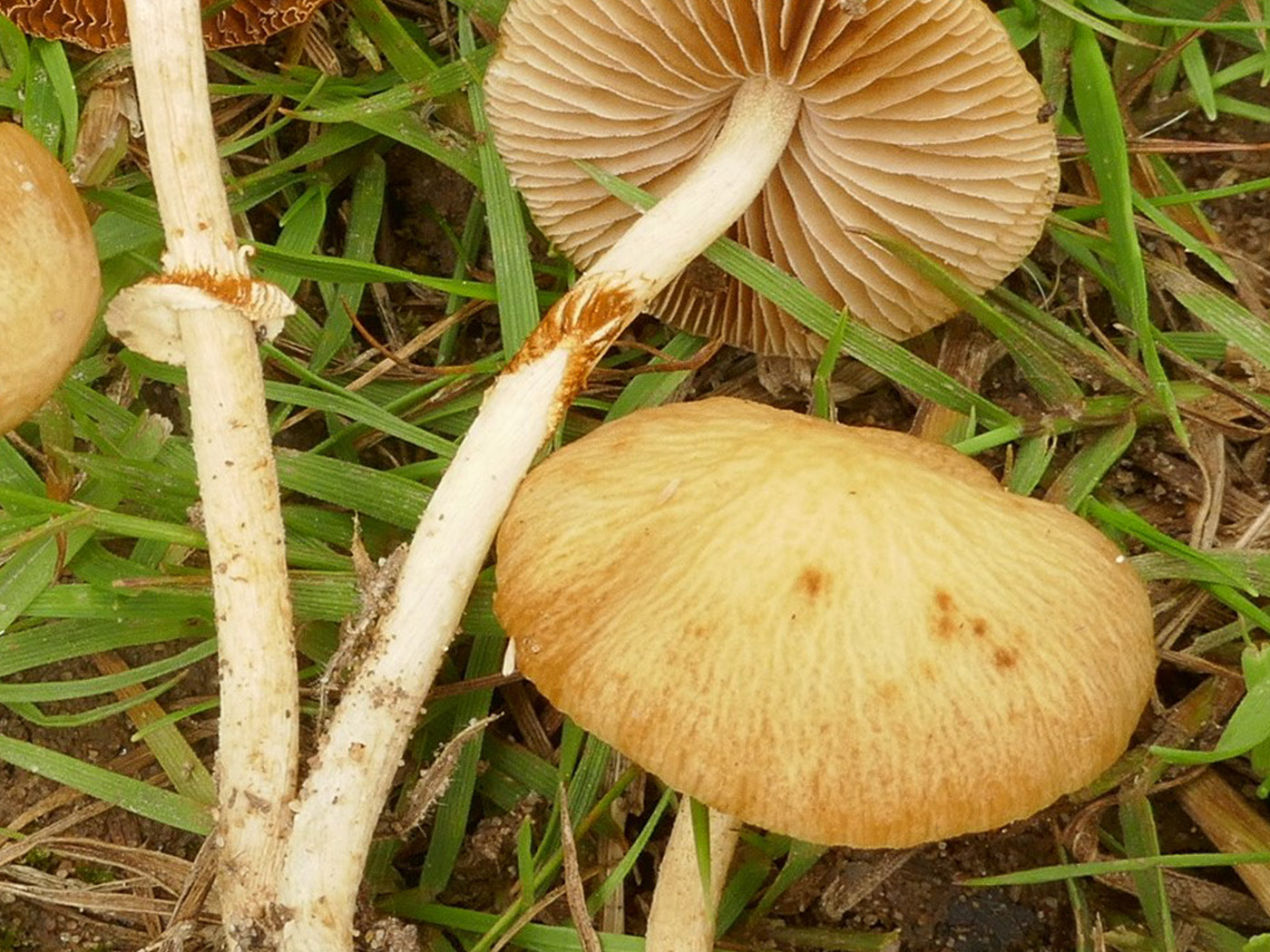 |
July 12th Conocybe rugosa (a species of Conecap with no common name) 
At Stampwell Farm Jackie Ewan found this small LBJ under a gooseberry bush in a grassy vegetable patch, it being one of quite a few species within this large genus which have a ring on the stem (soon possibly to be established as the new genus Pholiotina). This particular species has a wrinkled (rugulose) cap surface and the stem ring has a fluted (striate) upper surface, both features just visible in photo 2. It normally occurs in grassy areas, also in grassy woodland paths and is considered an occasional species.
|
 |
July 12th Entoloma chalybeum var. lazulinum (Indigo Pinkgill) 
At Stampwell Farm in a grassy area Jackie Ewan found several clusters of this quite rare and beautiful species. This is a species from Section Leptonia within this large and very tricky genus, having dark blue colours in both the cap and stem and in this case also in the gills when young (though later they become pink from the spores). We have just two county records of E. chalybeum but none of this variety, separated from the type by having translucent striations in the outer part of the cap, seen here clearly in the broken cap on the left of the photo.
|
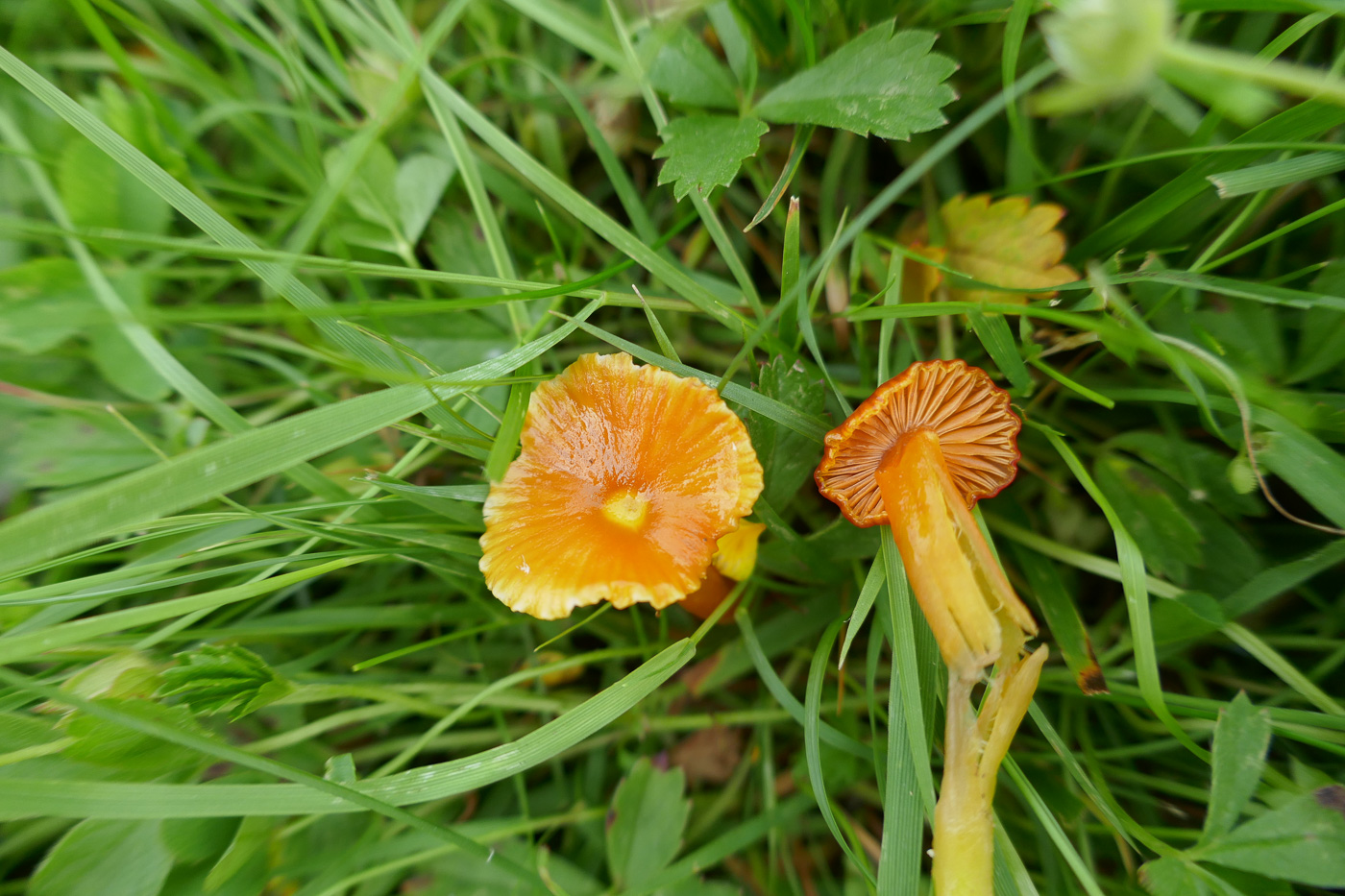 |
July 12th Hygrocybe glutinipes (Glutinous Waxcap)
In grassland at Stampwell Farm Jackie Ewan found this small Waxcap fruiting somewhat early in the season. It is separated in the field from other very similar species by having not only a very sticky cap but also a very sticky stem. H. inspida could be confused with it but has a stem which is no more than moist when fresh (not really viscid), gills which tend to be decurrent and usually red colours in the stem.
|
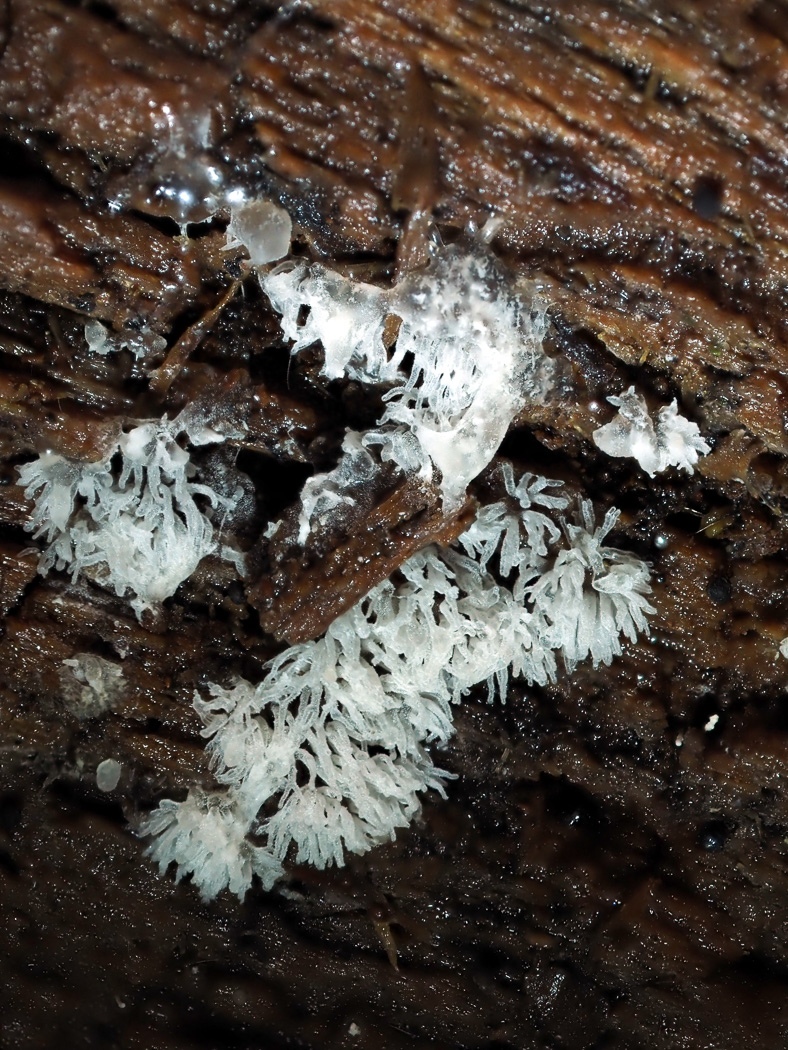 |
July 12th Ceratiomyxa fruticulosa (a Slime Mould with no common name)
In Downley Wood Claire Williams found this pretty and quite common Slime Mould on rotting wood. It favours old conifer stumps but also occurs on other woods which are suitably damp and decaying. See more photos of this amongst Barry Webb's Slime Mould photos.
|
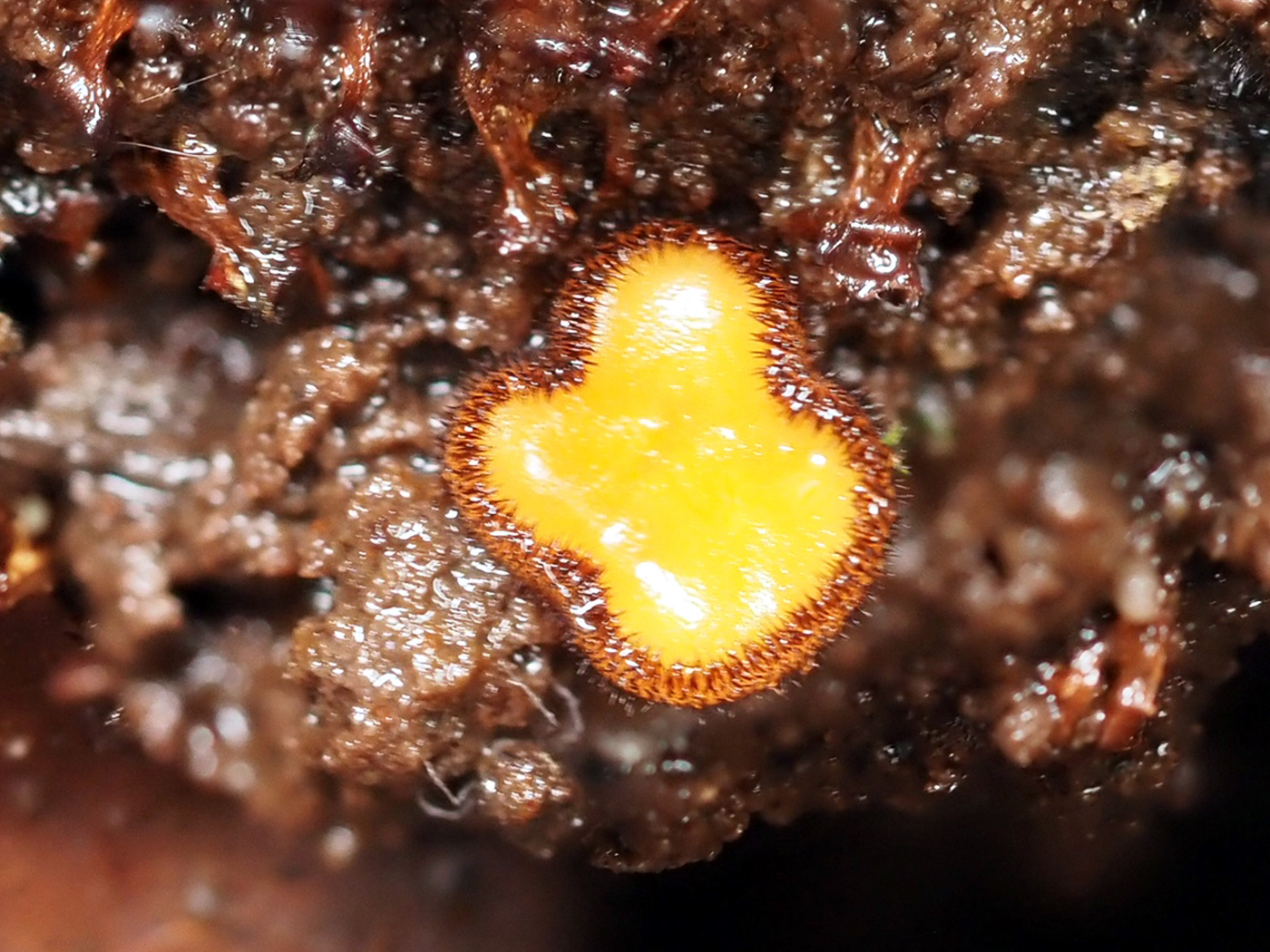
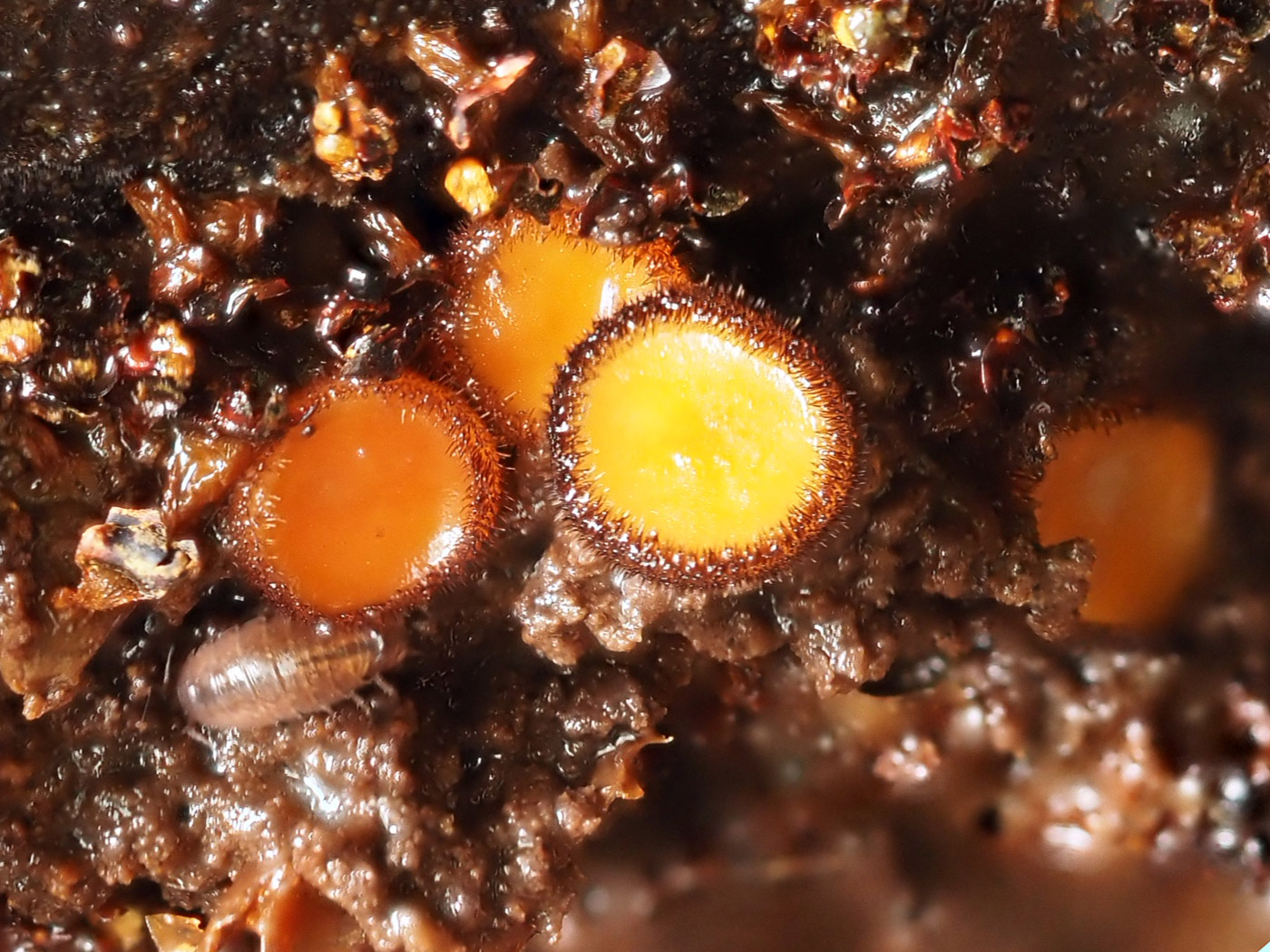

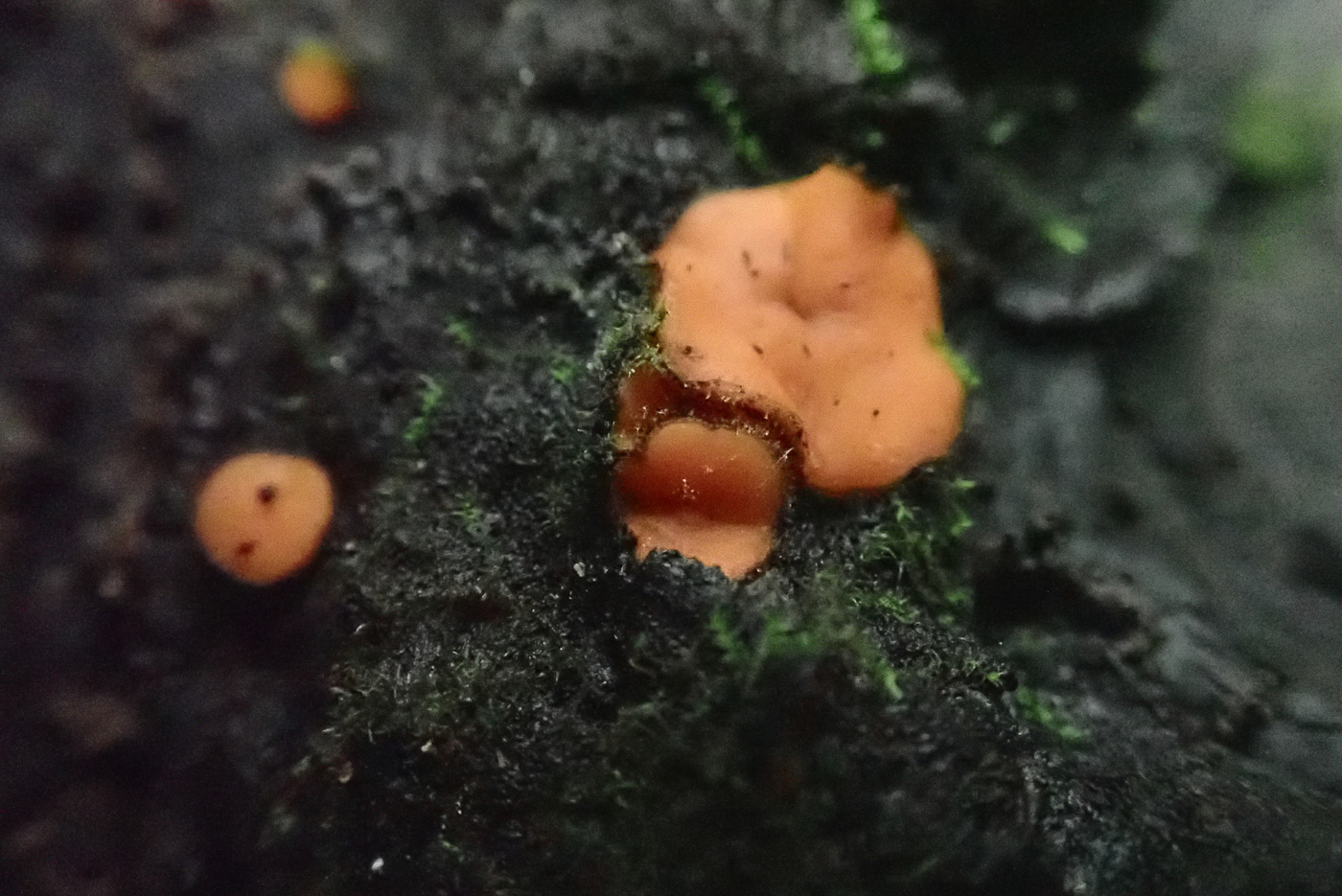 |
July 12th Scutellinia subhirtella (a species of Eyelash with no common name) 
In Downley Woods Claire Williams found these tiny brightly coloured cups on rotting wood in a damp location and noticed that not only were the cups more yellowish orange than red but that the marginal hairs looked rather short for the common S. scutellata. She took the opportunity when visiting Penny with a bracket from the same site (also included today) to take her this Eyelash fungus which Penny was then able to identify working through various keys etc. We've recorded the species at only three previous sites, so this was a nice find. Photos 3 and 4 were of a later find of Penny's from Rushbeds Wood (August 13th) in a stream bed showing the typical view of the genus when viewed from above - i.e. just bright reddish dots on rotting wet wood - and the clearly more orange rather than red colour of the species.
|
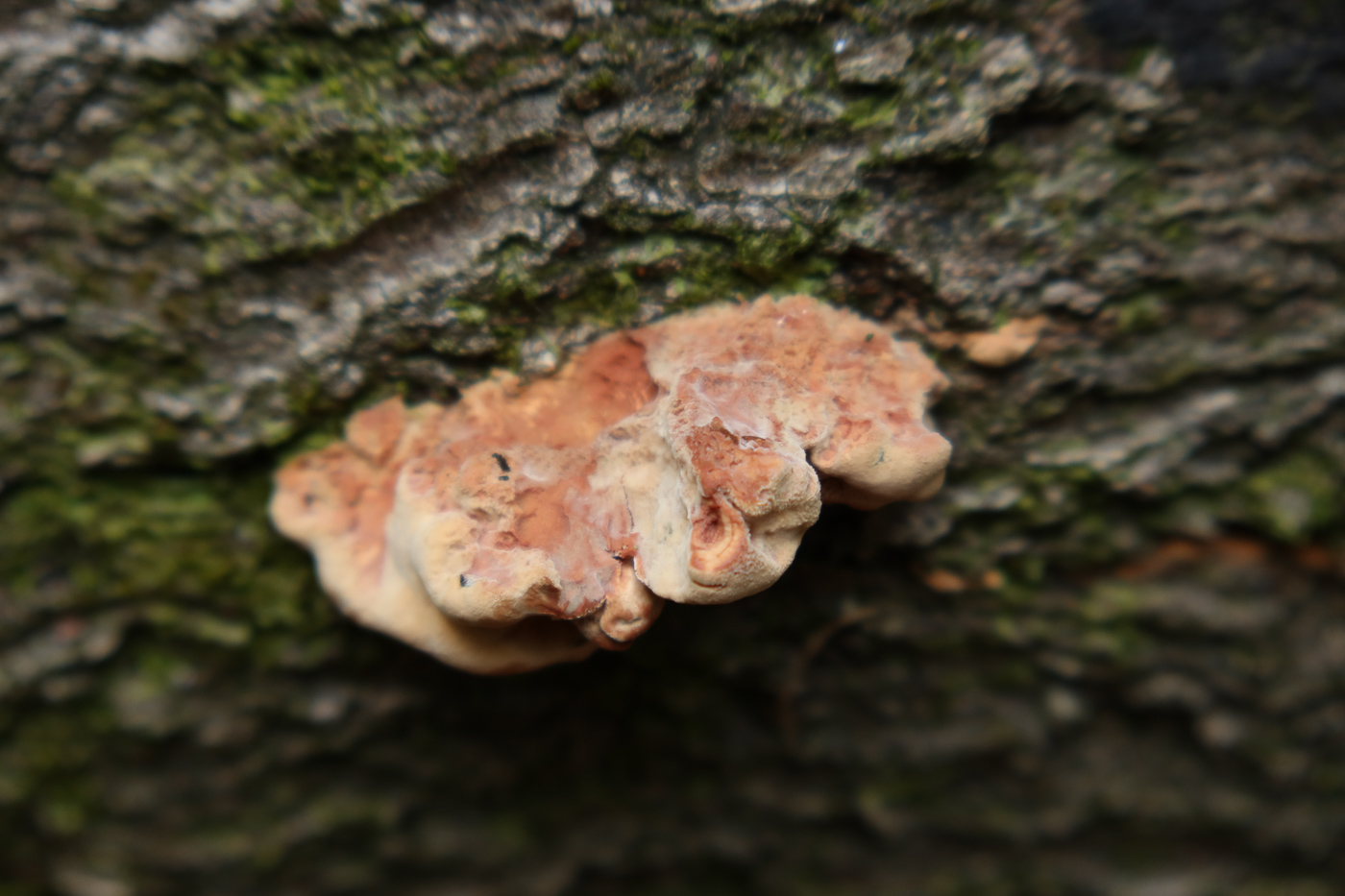

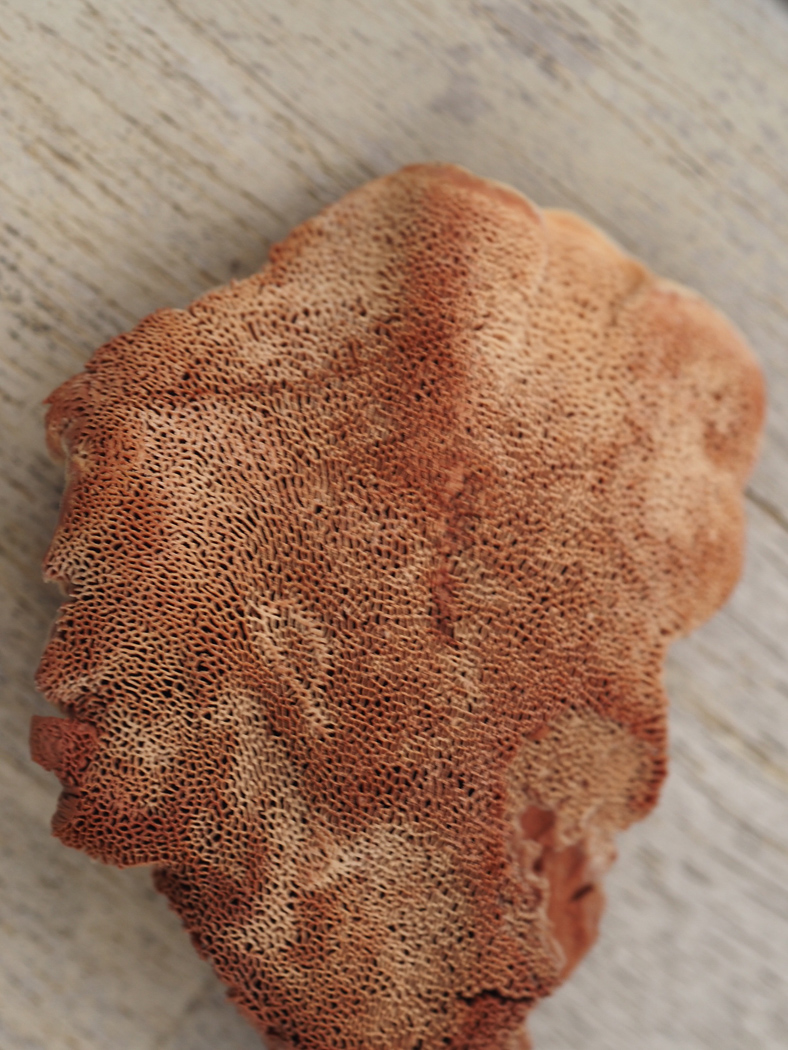
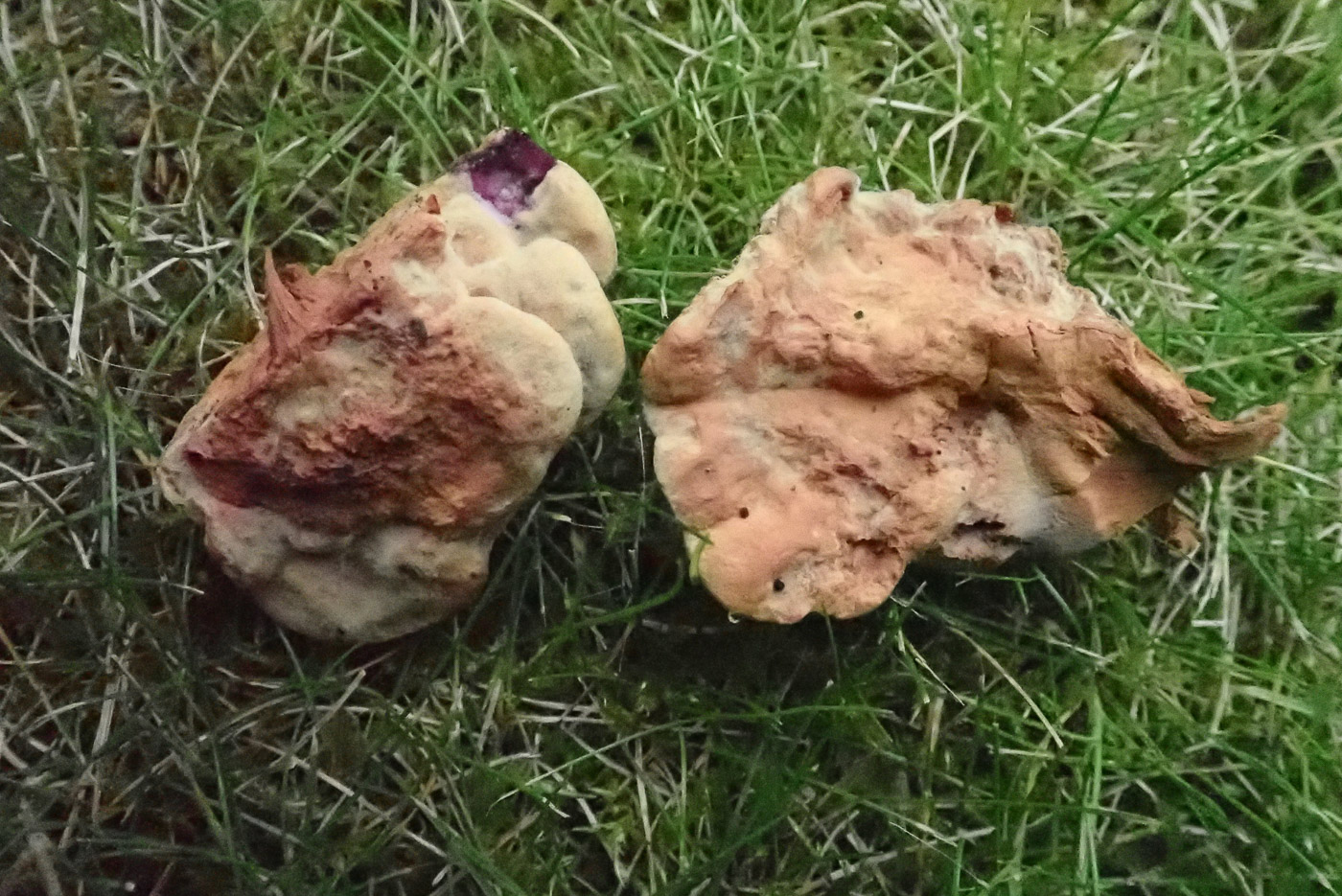 |
July 12th Hapalopilus nidulans (Cinnamon Bracket)
A few weeks back Claire Williams sent Penny photo 1 of an immature bracket found on rotting deciduous wood in Downley Woods. Unable to name it, Penny suggested Claire return to the site when it had developed further and the result was photos 2 and 3 taken today which made determination much easier. This is a bracket for which we have about 10 county records but none since 2010 thus conspicuous by its absence in recent years. The species has several redeeming features: it is soft and quite pliable and is the same buffy colour both above and below, having quite distinct pores underneath. The most useful and conclusive feature, however, is that a drop of the chemical KOH turns instantly purple! So to make the determination secure Claire took a sample over to Penny, the result being photo 4.
|


 |
July 12th Amanita rubescens var. annulosulphurea (Blusher)
Under Oak in Burnham Beeches Penny found a couple of specimens of this species though neither looked very typical. A. rubescens often confuses people if just the cap colour and markings are observed because they can be so variable, and from a distance today's looked more like A. fulva with brown shades. Close to, however, the scaly cap surface and lack of fluting at the edge eliminated that species (compare with the photos of A. fulva also found today) and when the stem was exposed it was obvious from the skirtlike ring with striations on the upper surface (see photo 3) and pink staining at the swollen base that it was a Blusher. In this particular case the ring was clearly primrose yellow rather than white, hence the varietal name given here - not rare but certainly much less common than the type species.
|

 |
July 12th Amanita fulva (Tawny Grisette)
In Burnham Beeches under Birch and Pine Penny found just one specimen of this common Amanita which often fruits early in the season. Features to look for: the lack of veil flecks on the cap which has a distinctly fluted margin, the tapering stem which lacks a ring and has (if carefully extricated) a fragile saclike volva flecked with the tawny cap colour. If you find one with the above features but a pure white volva you probably have something much more interesting!
|

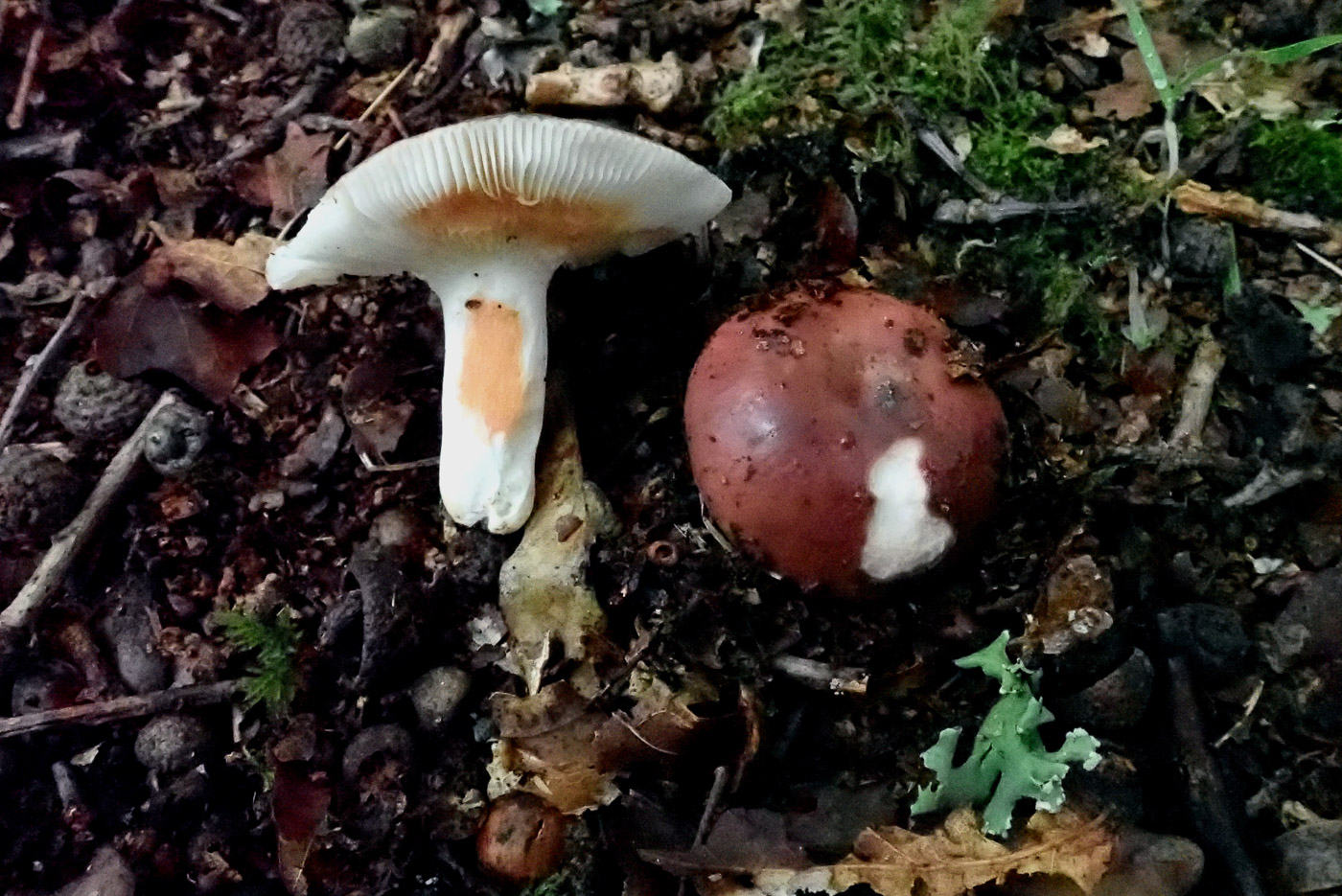
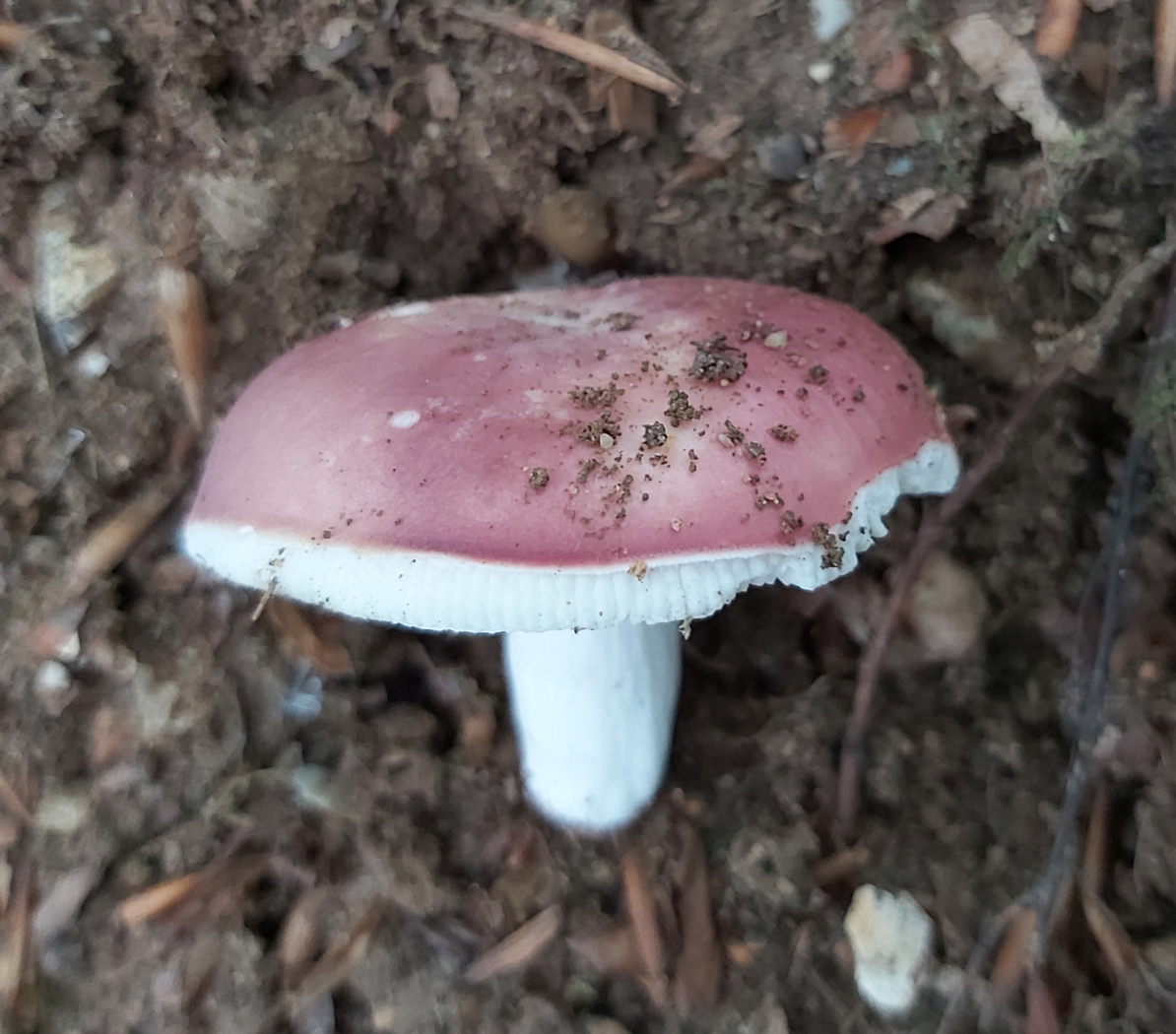
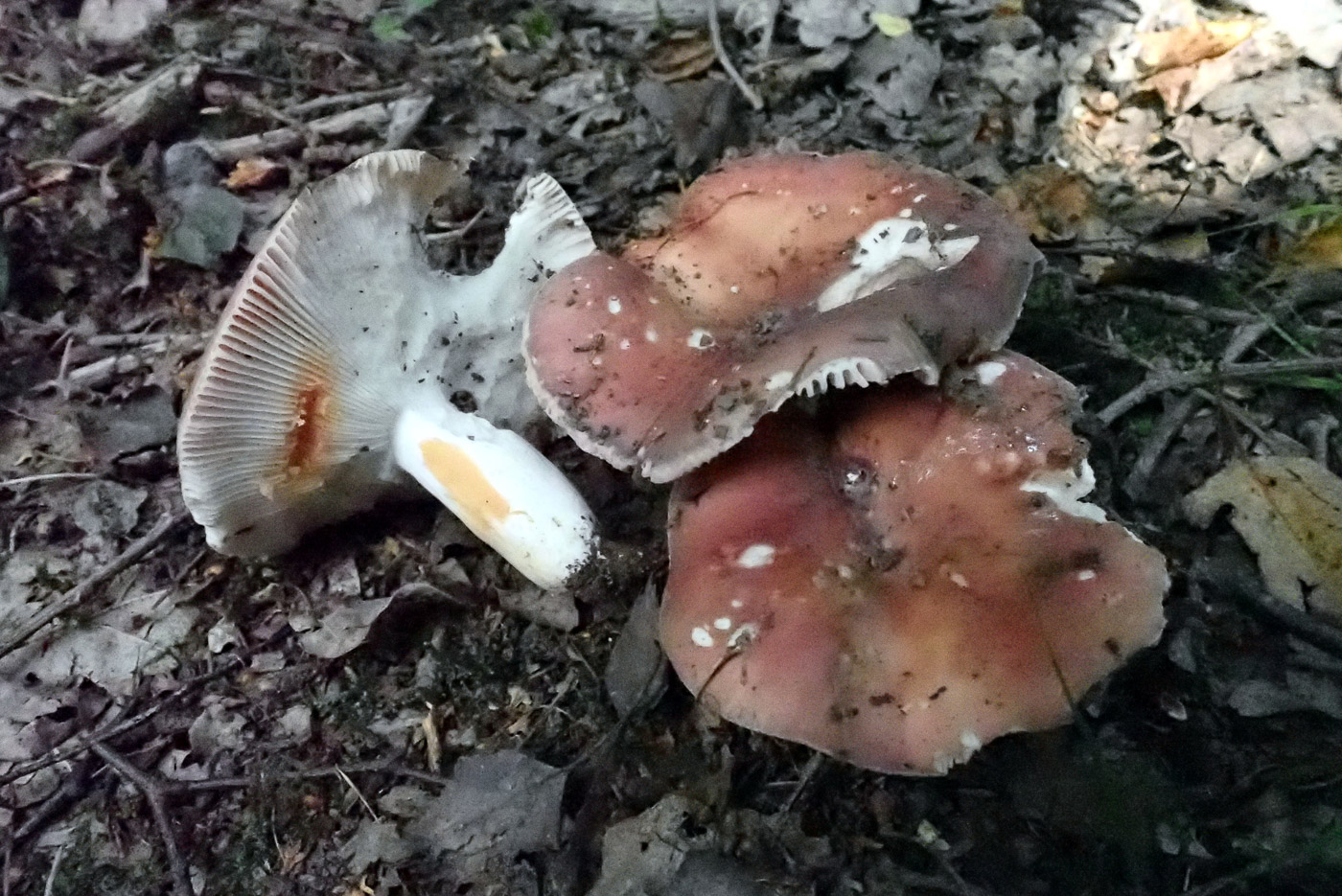 |
July 12th Russula vesca (The Flirt)
In Burnham Beeches under Oak Penny was not surprised to find this member of the Brittlegills - a genus which tends to be amongst the first of the Autumn woodland genera to make an appearance. Photo 1 shows a rather pale pink cap where the edges are just beginning to recede thus revealing the white gills beneath (suggesting a petticoat showing under a lady's skirt - hence the common name!). Photo 2 shows this pale specimen upturned and rubbed (stem and gills) with a crystal of ferrous sulphate, together with a younger specimen having a much darker typically smoked gammon pink cap, illustrating the varied cap colour of the species. The crystal is a useful tool because amongst the many pink capped species of the genus R. vesca is alone in reacting so positively - both on stem and gills - giving a deep rusty salmon pink stain instantly to confirm its determination in the field. Photo 3 is of a more mature specimen found by Jesper Launder in Jordans village 10 days later and showing a generous and flirtatious amount of petticoat! Photo 4 is Penny's collection from Penn Wood on August 14th, also under Oak, again showing the strong reaction with a crystal.
|
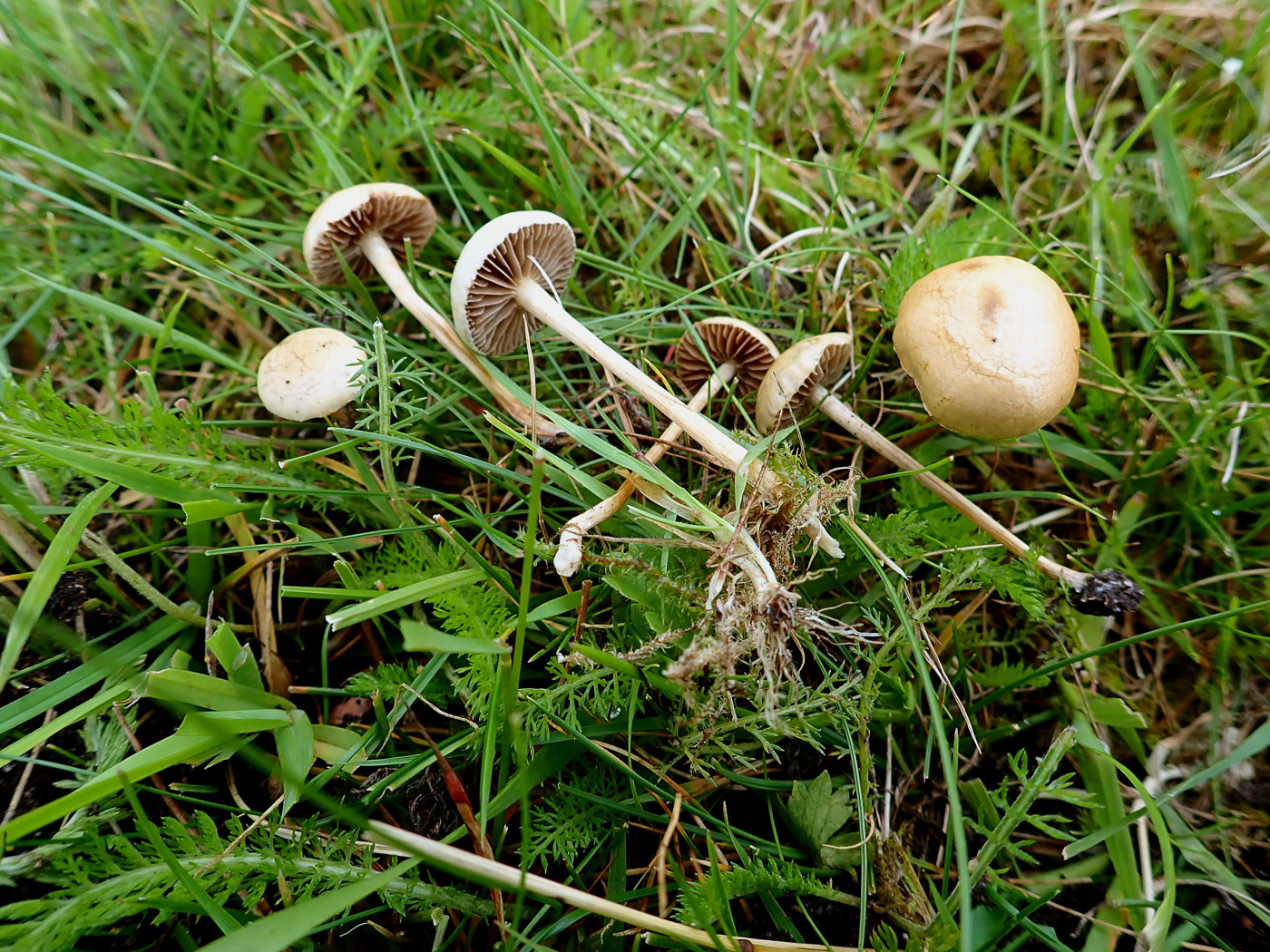 |
July 12th Agrocybe pediades (Common Fieldcap) 
In the grassy area near the main car park in Burnham Beeches Penny found several of these small ochre capped mushrooms, no more than 1.5 cms across. A fairly typical pale LBJ, caps are smooth and slightly sticky, gills are palish brown and the stem is ringless (some others in the genus can have a ring on the stem). This is quite a common summertime grassland species and seems to have been particularly in evidence this year, though we appear to have only four county sites for it, it surprisingly being new today for Burnham Beeches.
|
July 11th 2021
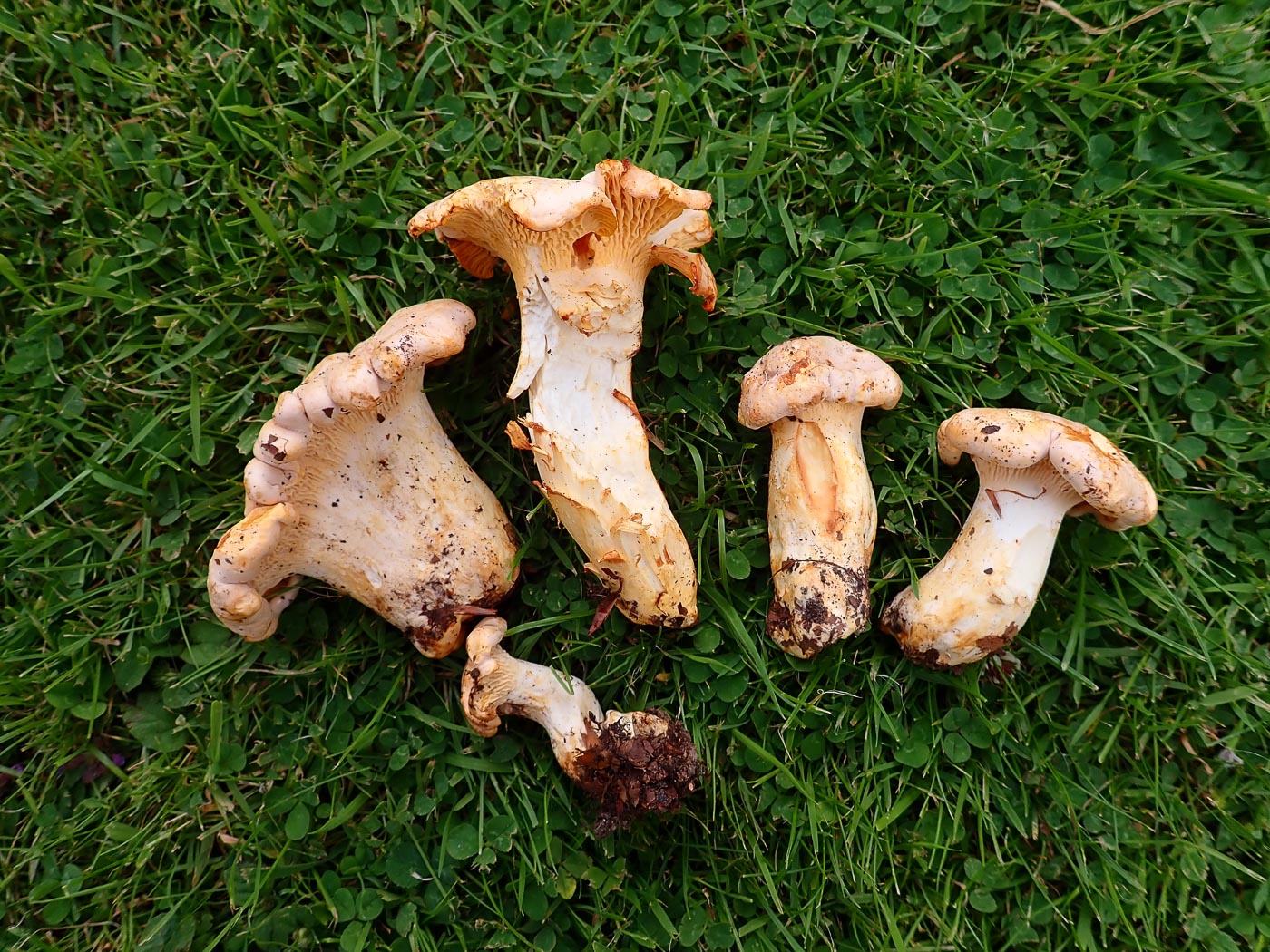 |
July 11th Cantharellus ferruginascens (Pale Chanterelle)
In Captains Wood nr Chesham under Beech Greg Douglas noticed these somewhat pale Chanterelles and at first assumed they were just C. cibarius - the commonest species of the genus though never prolific in this area of the country. However, it soon became obvious that they were staining rusty brown where handled or damaged so he wondered if they could be this much less frequently encountered and closely related species. He brought them along to our AGM that afternoon where Penny and Derek agreed on his determination. The species is previously known only from Burnham Beeches and Hodgemoor Woods but may well be more common than we realise - certainly one to be looking out for now when many early season species seem to be making an appearance.
|

 |
July 11th Melanoleuca verrucipes (Warty Cavalier)
On a woodchip pile in Brill Common (composed of diseased Horse Chestnut) Joanna Dodsworth noticed this impressive clump of unfamiliar white mushrooms, up to 12 cm across or more. She brought a specimen to share with attendees at our AGM that afternoon where Penny was able to name it having become familiar with the species from a large woodchip pile in Burnham Beeches where she recorded it nearly every year from 2003-2009, varying between the months of May to October. It has not been found in the county since then so this was a nice find. The distinctive features to note are the white cap which becomes finely scaly with age, the crowded slightly cream gills, a faint sweet smell of aniseed and most notably a short white stem pocked with black warts (similar to those found on the genus Leccinum).
|
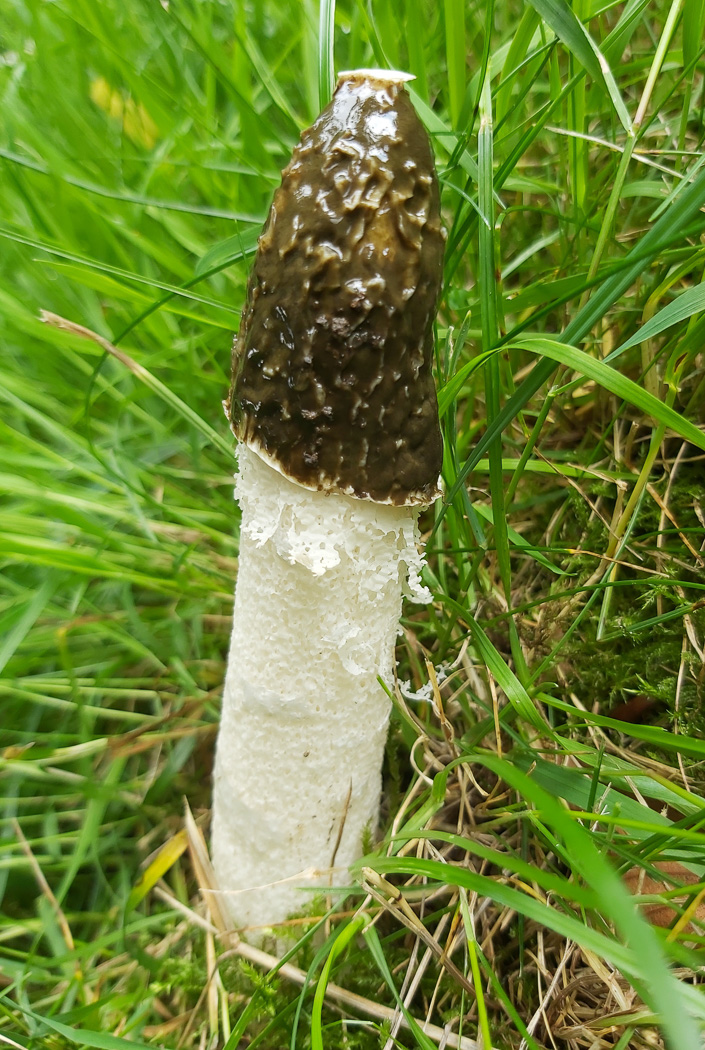
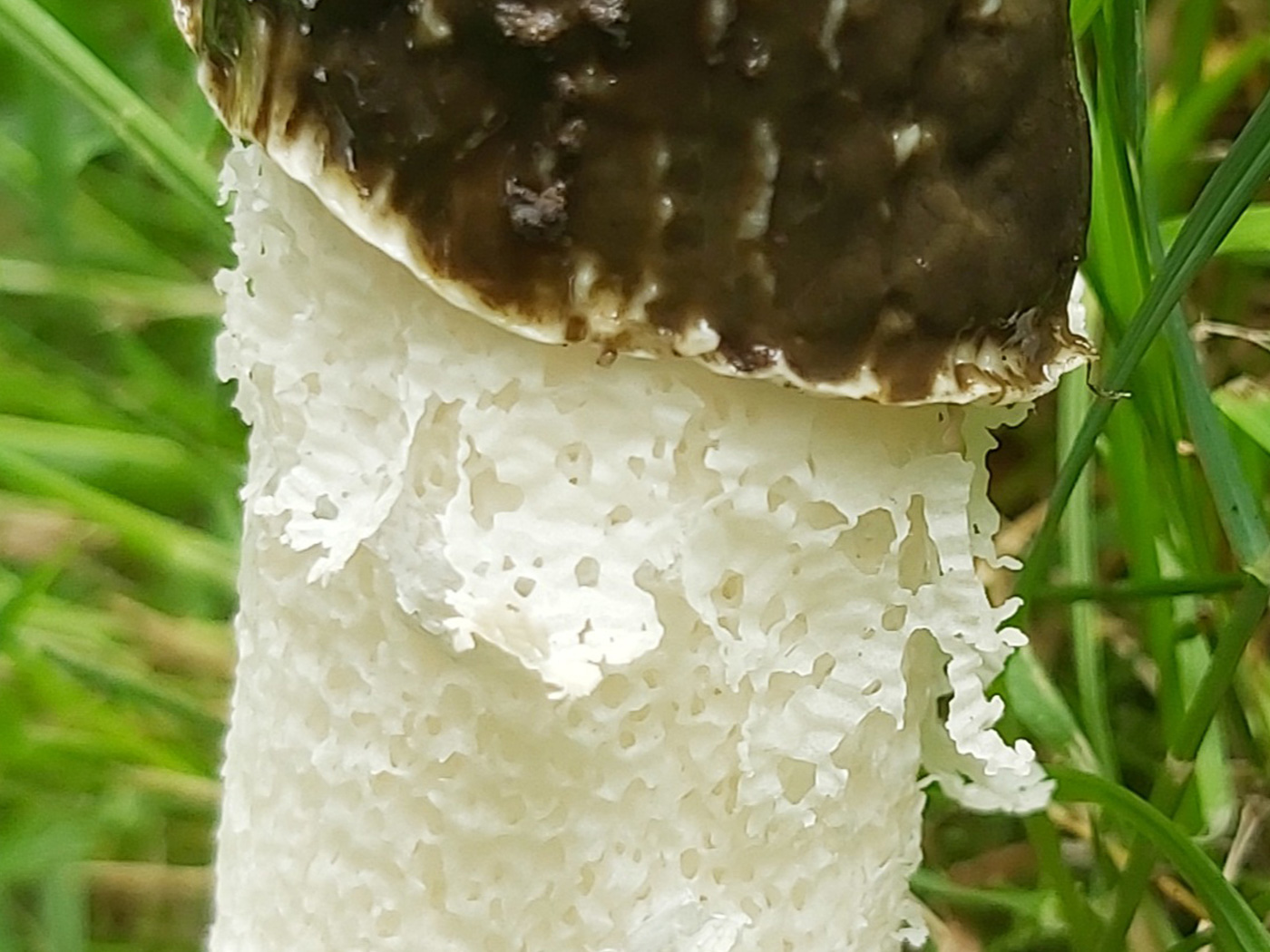 |
July 11th Phallus impudicus var. togatus (Stinkhorn)
At the bottom of his Jordans garden this morning Jesper Launder noticed this interesting variety of our common Stinkhorn which has the beginnings of a delicate white network developing just under the green spore-bearing head (know as an indusium - see photo 2). This variety is not common and we have just one previous record from Bradenham Wood in 2004. There exists another very impressive species, P. indusiatus, which has a complete network, though very rare in this country it is quite common in subtropical areas. Try Googling the latin name for some wonderful images.
|
July 9th 2021
 |
July 9th Mycena tenerrima (Frosty Bonnet)
On fallen Birch in Burnham Beeches Barry Webb noticed this attractive cluster of tiny white Bonnets which of necessity needed to grow out from the wood before turning upwards to enable the spores to fall from the gills at the usual angle. There are several quite similar tiny white Bonnets, nearly always needing a scope to identify with safety, but the intense frosting on both cap and gills, also the small disc just visible at the base of the two joined stems, are sufficient in this case to make the determination.
|
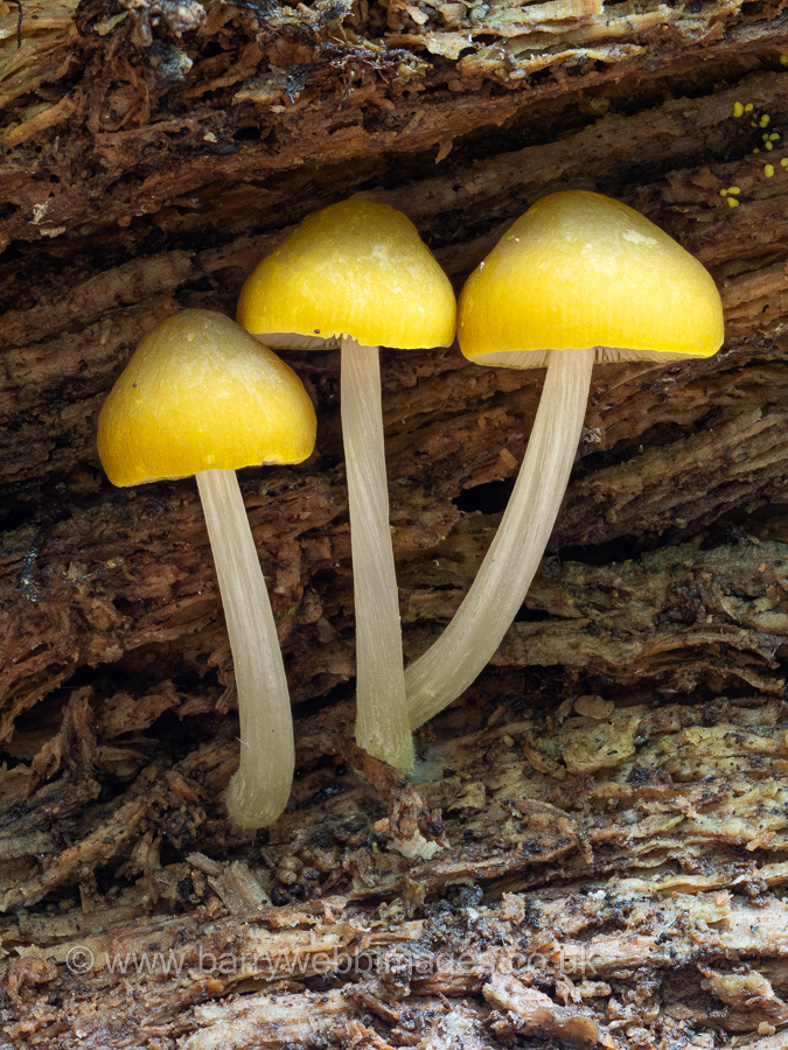 |
July 9th Pluteus sp. chrysophaeus (Yellow Shield)
On fallen Beech in Burnham Beeches Barry Webb found this attractive trio of young Shields. As there is more than one yellow species in the genus and this particular collection was not examined with a scope, Penny cannot be positive of her determination (hence the sp. above). However, the other two species are either rare or not yet British and we fairly often find P. chrysophaeus in the county so she feels fairly secure here. (The species name seems about to change to P. chrysophlebius as in Kibby vol 2.)
|

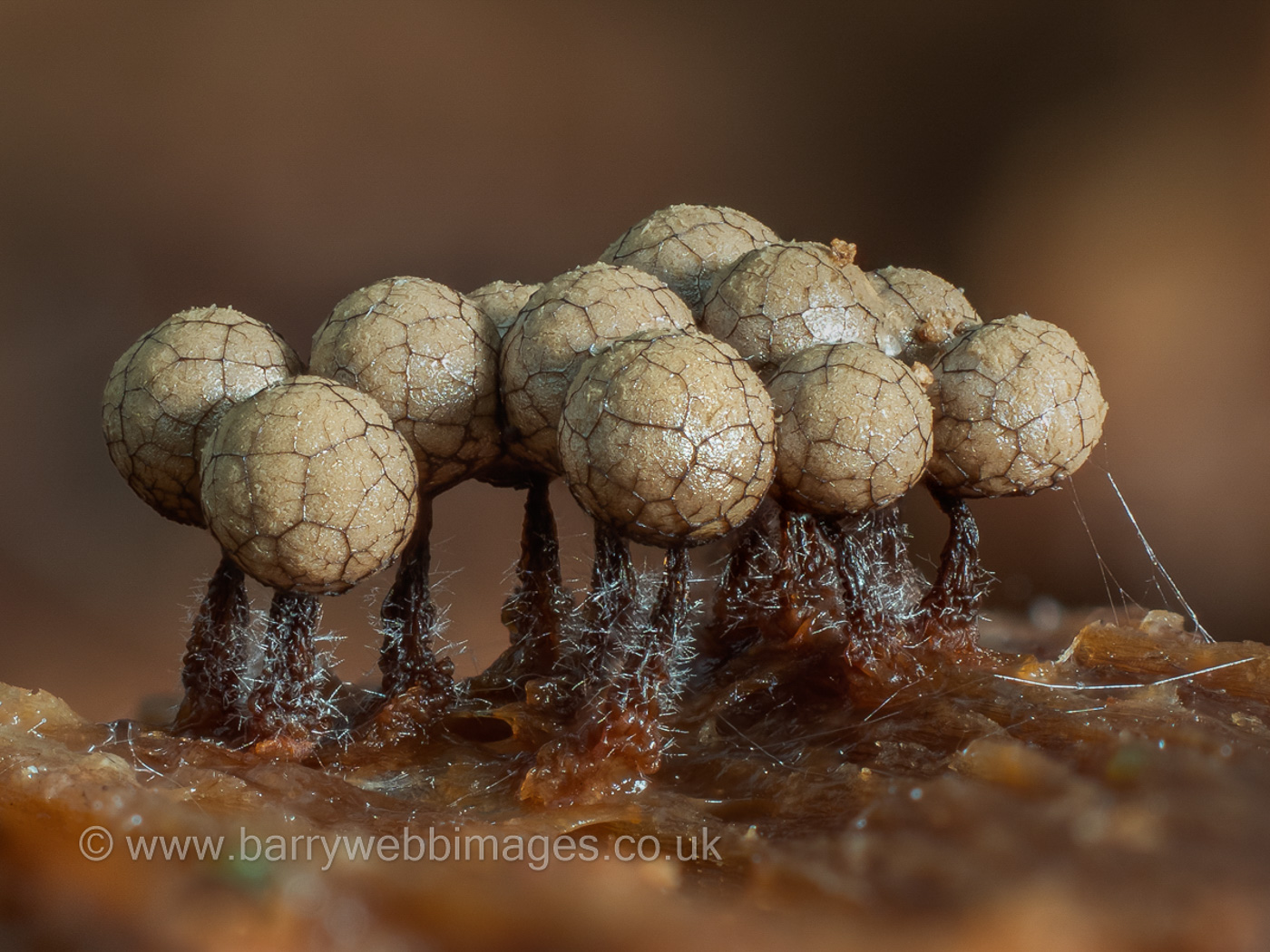 |
July 9th Cribraria rufa (a Slime Mould with no common name)
On fallen rotting Pine in Burnham Beeches Barry Webb found this tiny but beautiful species, one which is new to the site and was new to the county when Barry found it last September in Penn Wood (see in Finds 2020 dated Sept 20th). Photo 1 clearly shows the large cup at the base from which the meshlike network spreads - typical of this species, though in photo 2, of mature fruiting heads and taken a day later, the cup is reduced and the network more pronounced.
|

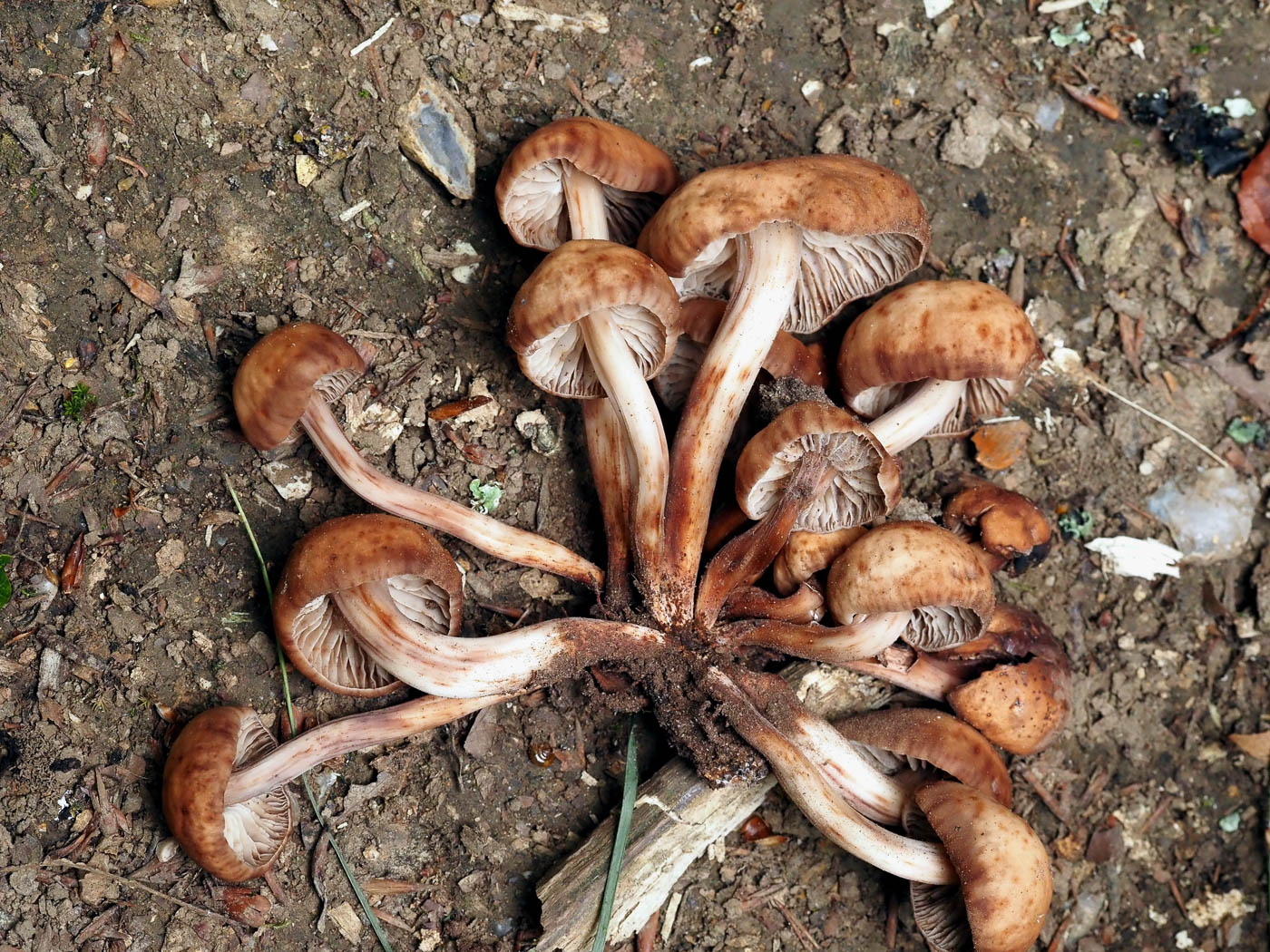 |
July 9th Gymnopus fusipes (Spindle Toughshank)
At Stampwell Farm at the base of a mature Beech Jackie Ewan found this distinctive clustered species. Previously in the genus Collybia, the species occurs most frequently around the base of Oak in mature woodland but also with Beech and is typified by its tan coloured rounded cap, widely spaced pale gills and flexible stem which tapers strongly downwards, most frequently fusing into a tight clump. Photo 2 is of Claire Williams's collection from Downley Wood a couple of weeks later, showing the fusing stems well and also the typical rather blotchy brown caps.
|
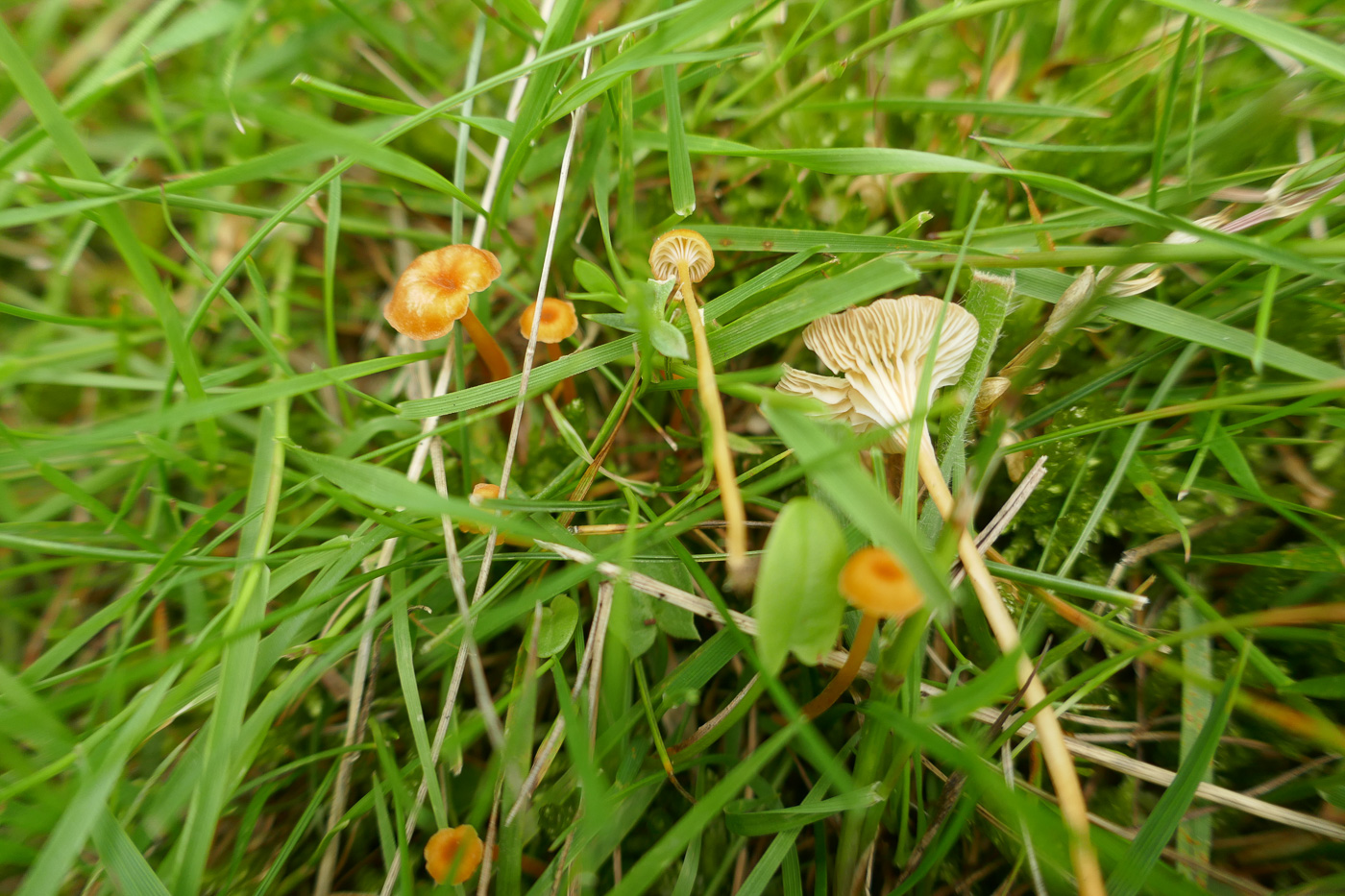 |
July 9th Rickenella fibula (Orange Mosscap)
In short mossy grass at Stampwell Farm Jackie Ewan found this tiny and common species, one that at first glance could be a small Mycena (Bonnet) especially M. acicula which also has an orange cap, It differs, however, in lacking the contrasting bright yellow stem of that species and also has remarkably decurrent gills. It is common in moss everywhere. See also the less common R. swartzii (in Finds 21 Jan to June dated June 30th) which is similar but a completely different colour.
|
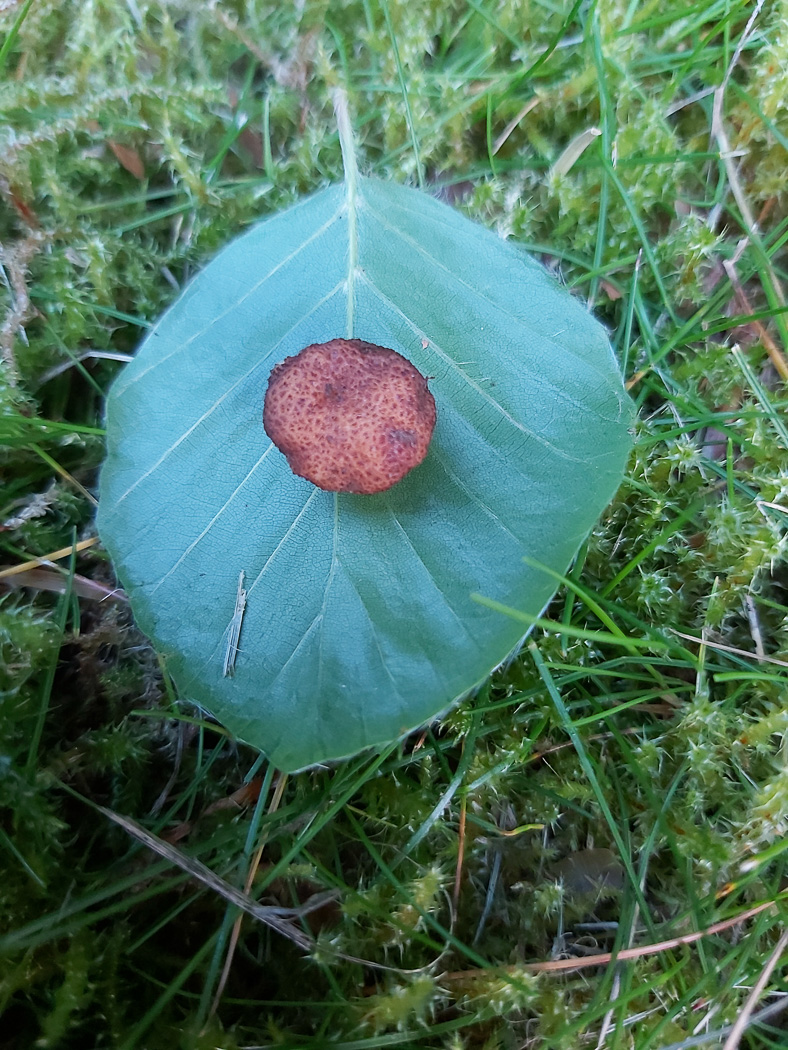
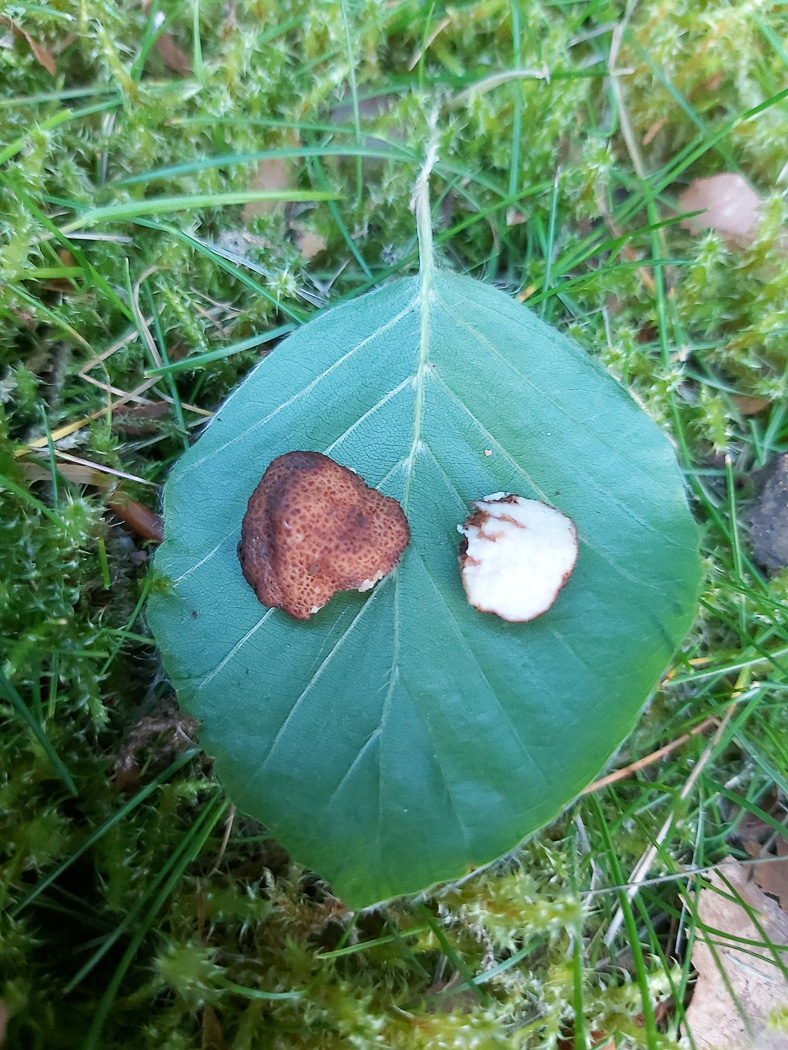 |
July 9th Balsamia platyspora (Broad-spored Balsamia a truffle) 
Whilst isolating in his Jordan garden Jesper Launder found this rarely recorded truffle in grassy soil under Beech and Lime. This is apparently a small brown warty truffle (seen here sitting on a Lime leaf for perspective) with a pale veined interior and - being a member of the Ascomycetes - it has unusual asci which are balloon-shaped with clusters of ellipsoid spores. We have just one previous county record, from Derek's Whitchurch garden 10 years ago found by truffle expert Carol Hobart who was dogsitting whilst they were on holiday!
|
July 8th 2021
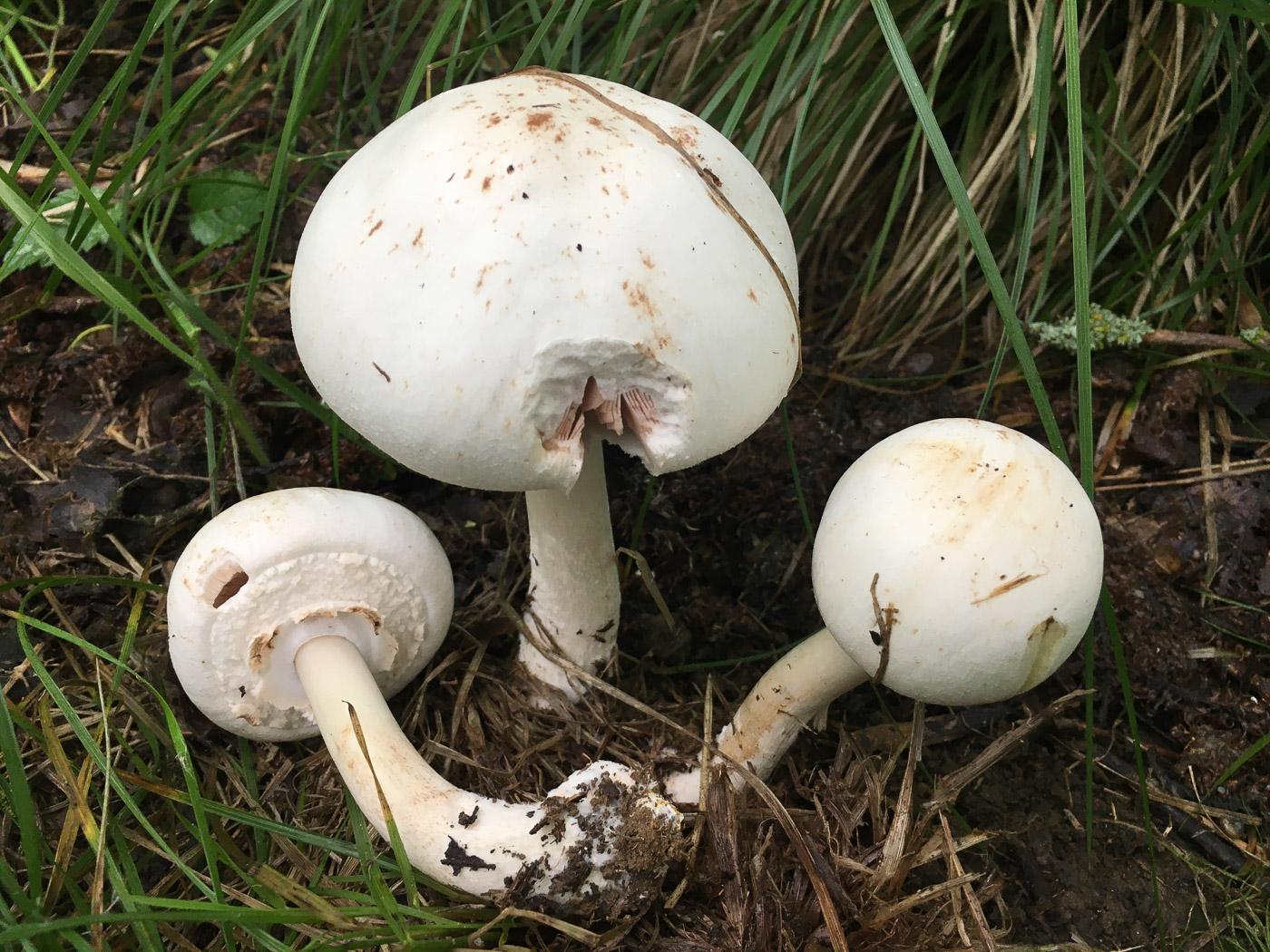
 |
July 8th Agaricus xanthodermus (Yellow Stainer)
In Rushbeds Wood Joanna Dodsworth found these mushrooms which are showing no signs of yellowing on the cap or side of the stem. But at home when she cut one open (photo 2) the telltale chrome yellow staining at the stem base was conclusive. The species also has an unpleasant smell of old fashioned ink (phenol) rather than the familiar sweet 'mushroomy' smell of many white (edible) mushroom species. This is one to be avoided and can cause gastric upsets.
|
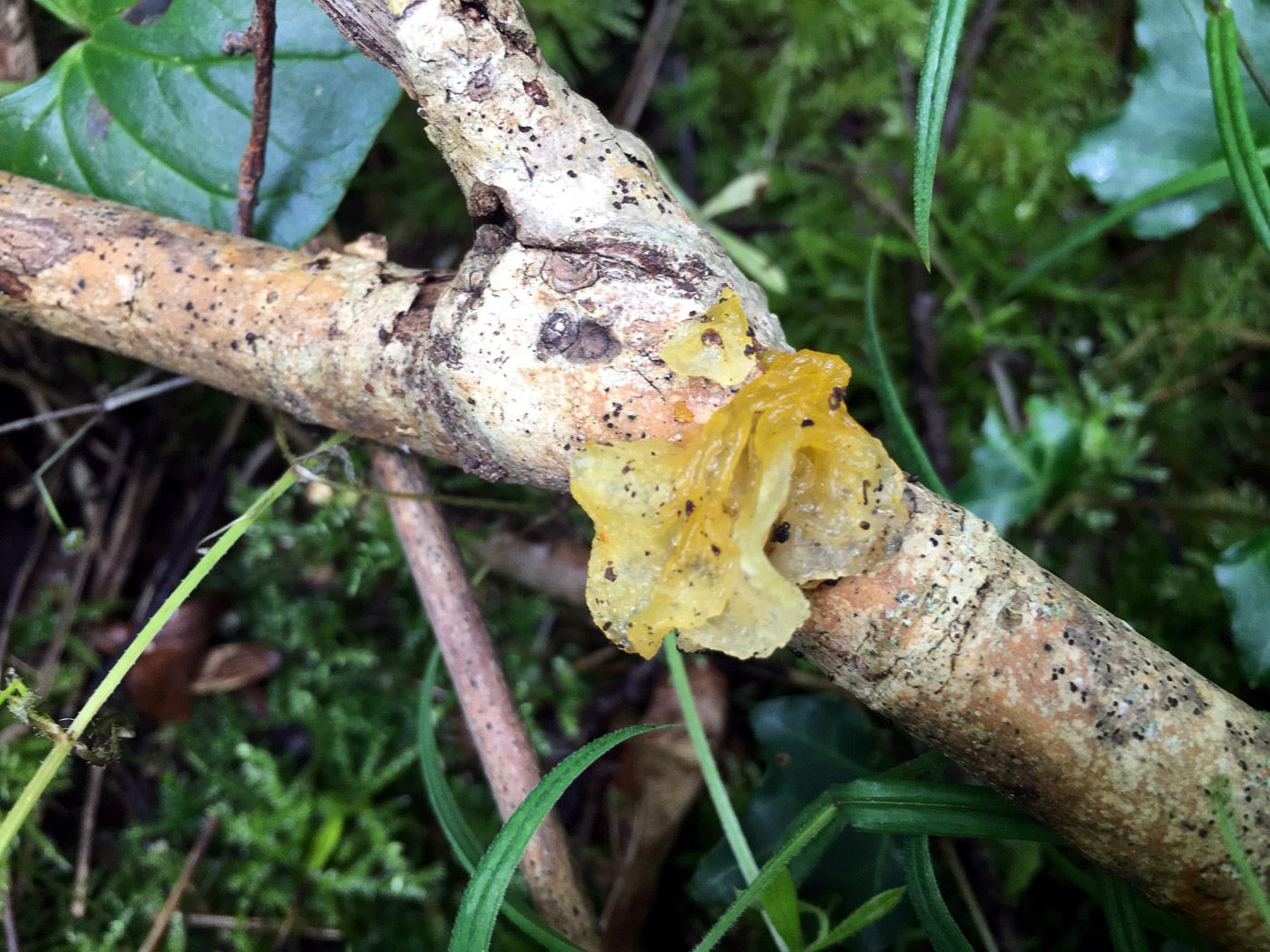

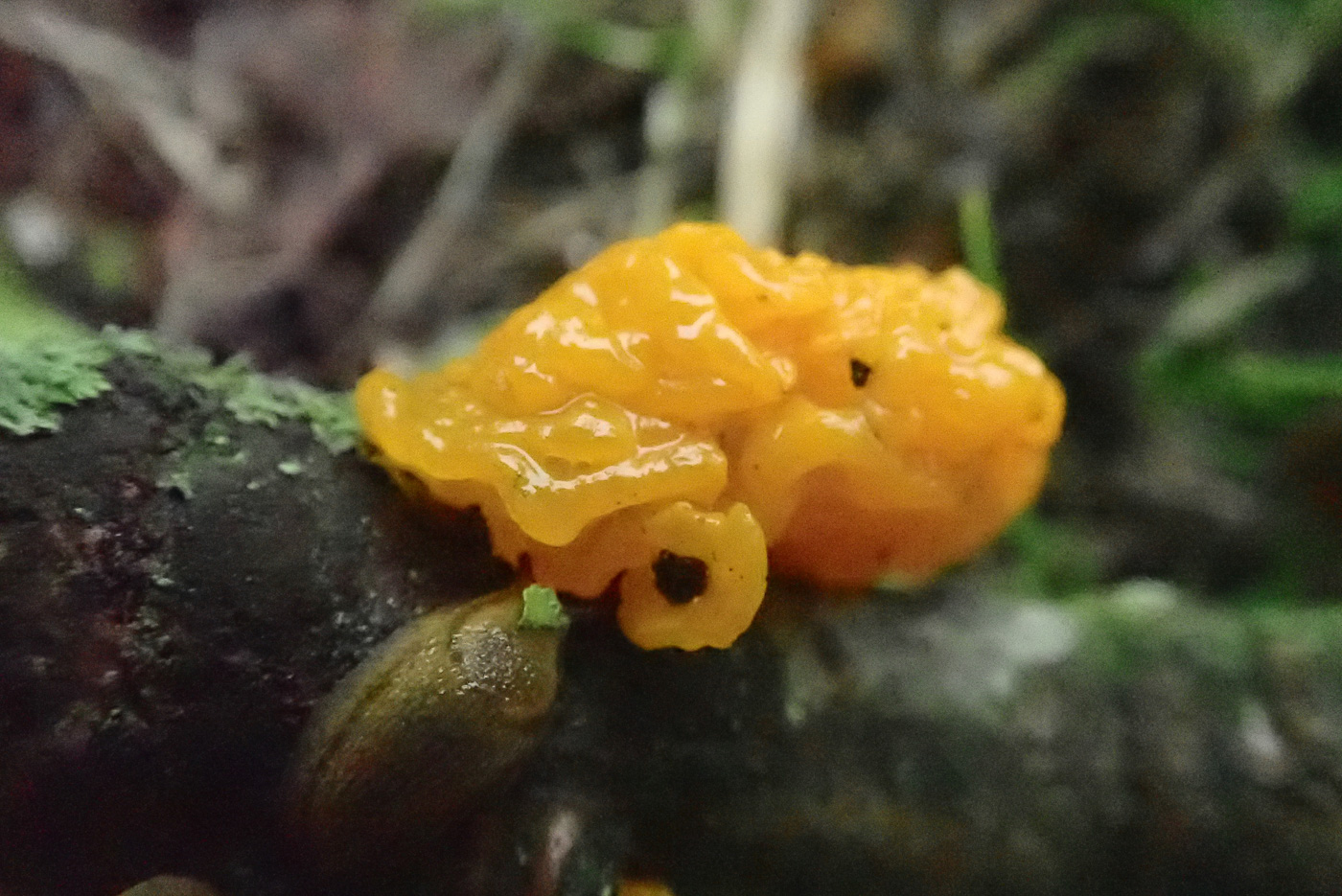 |
July 8th Tremella mesenterica (Yellow Brain)
In Rushbeds Wood Joanna Dodsworth noticed this brightly coloured jelly fungus on a fallen deciduous stick - possibly Ash rather than Oak, it's commonest host. Photos 2 and 3 are Penny's from another collection made three weeks later on a fallen Oak twig at Cadmore End. The species can also quite often be found on Gorse which sounds an unlikely host for a species mainly associated with deciduous wood.
|

 |
July 8th Hygrocybe conica (Blackening Waxcap)
In Rushbeds Wood Joanna Dodsworth was surprised to find this very early fruiting singleton just emerging in a grassy ride - it was only 3cms tall but even at this stage is showing signs of the telltale blackening typical of the species. Glancing through our many records, most are were made in October or November but we do have a smattering from earlier months including one on July 1st, so although it's an unusual find at this time it's not unheard of and presumably reflects the unseasonal weather we've been experiencing recently. As regularly happens, this same species was found by Jackie Ewan at Stampwell Farm the following day (photo 2).
|
 |
July 8th Coprinellus disseminatus (Fairy Inkcap)
In Rushbeds Wood Joanna Dodsworth found quite a few different fungi beginning to fruit as well as this nice colony of Inkcaps. This is a common species associated with rotting wood or submerged roots, and comes up at any time of year when conditions are suitable, often in very large numbers. Another common name for the species is Crumble Caps, perhaps reflecting the speed - just a day or so - with which they appear, develop and then quickly disappear again, this being a notable feature of the genus.
|
July 6th 2021
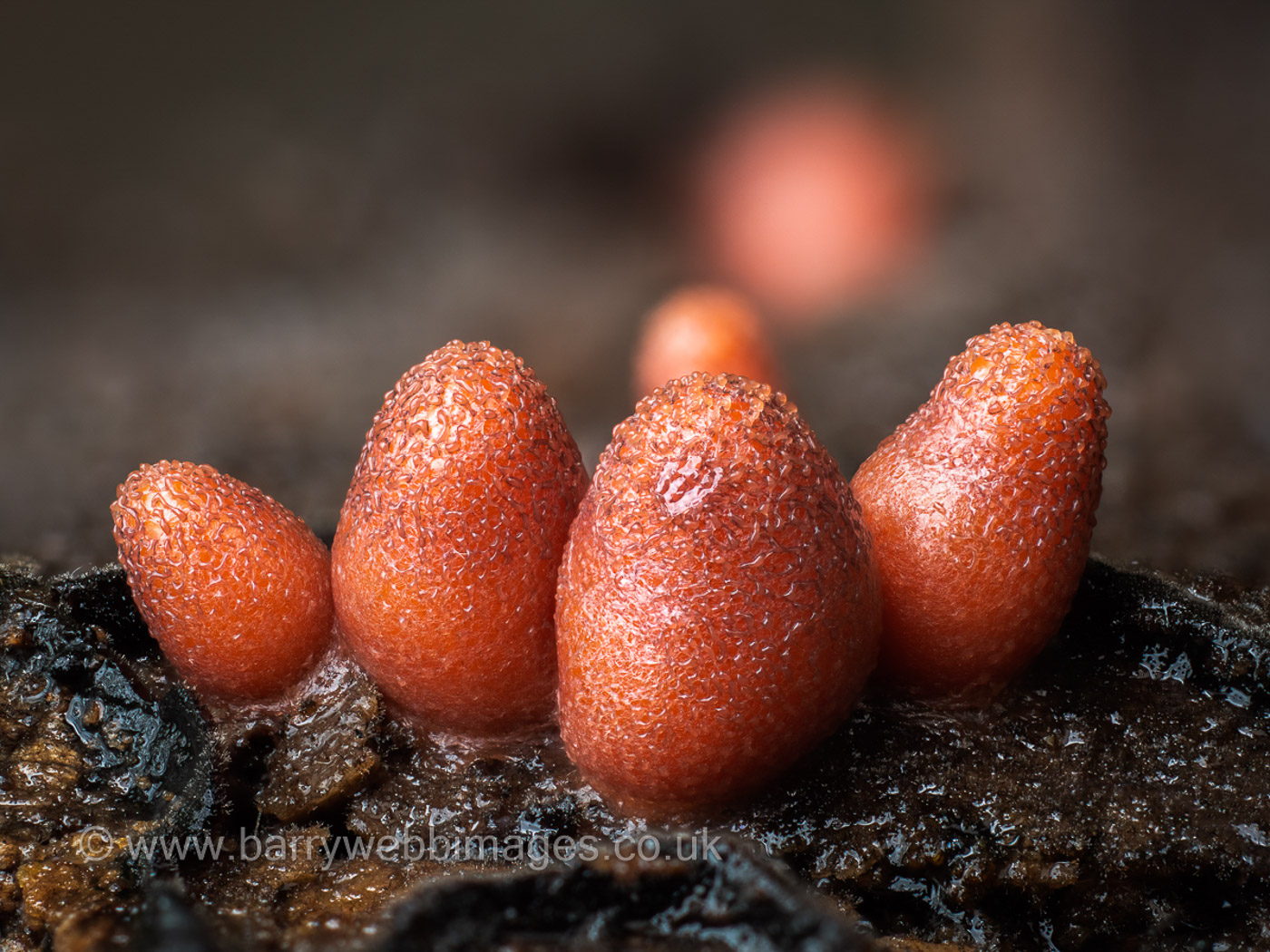
 |
July 6th Lycogala conicum (a Slime Mould with no common name)
On fallen rotting Birch at Burnham Beeches Barry Webb found this rare species, similar to the very common and familiar L. terrestre (Wolf's Milk) but instantly separable from it by its very distinctive conical egg shape. As with the (much) commoner species the plasmodium stage is pink, as are the developing sporocarps (fruiting bodies) which as they mature and dry off become gradually grey buff. Photo 2 (taken of a collection on a different Birch nearby found 10 days later) shows mature sporocarps. New to the site and the county, there appear to be under 20 national records of this species, so it was an exciting find. (two)
|

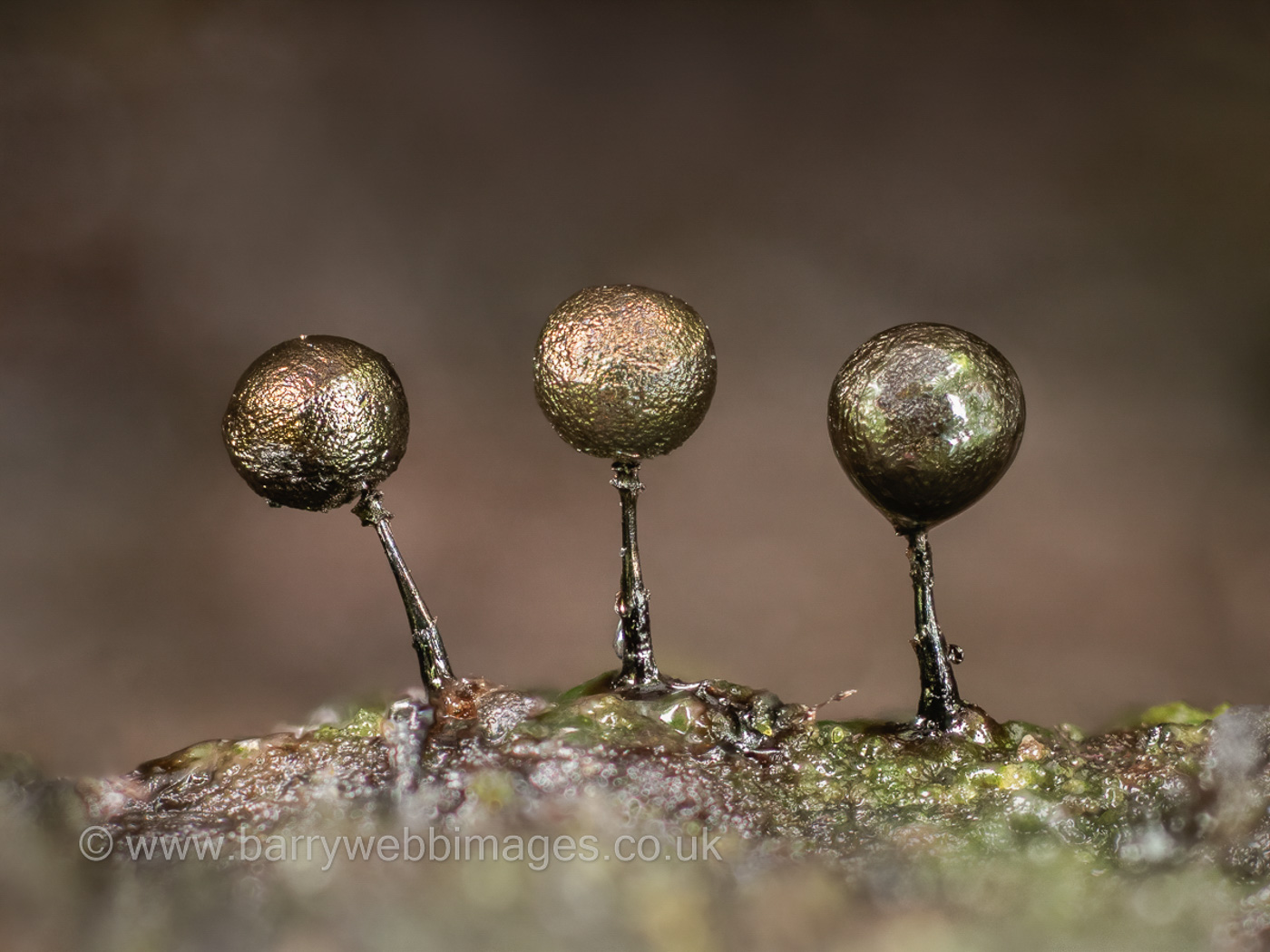
 |
July 6th Collaria (= Lamproderma) arcyrionema (a Slime Mould with no common name)
On fallen rotting Pine in Burnham Beeches Barry Webb found this pretty little sparkling species, a rare find which is new not only to the site but also to the county. This genus, four species of which are British, is split off from the similar Lamproderma on account of the small skirtlike collar which remains at the base of the sporangium (fruiting head - see photo 3) The iridescent heads are at first silvery, then become more bronze in colour. Photo 2 (taken of a collection found 6 days later in the same area on a different Pine) is more mature and thus bronze. Bear in mind that the entire sporocarp is at most 2.5 mm high!
|
 |
July 6th Cribraria cancellata (a Slime Mould with no common name)
On fallen rotting Pine in Burnham Beeches Barry Webb found this tiny but beautiful species which is new to the site and with just one previous county record: from Salcey Forest, 1991, found by the distinguished Myxomycete specialist Bruce Ing (so Barry is in good company!). All species in the genus have this amazing meshlike network surrounding the head, particularly marked in this species which has purple black plasmodium and a long dark tapering stalk when developed as here. Compare with others from the genus on Barry's separate webpage full of brilliant photos and available in Members' Finds.
|
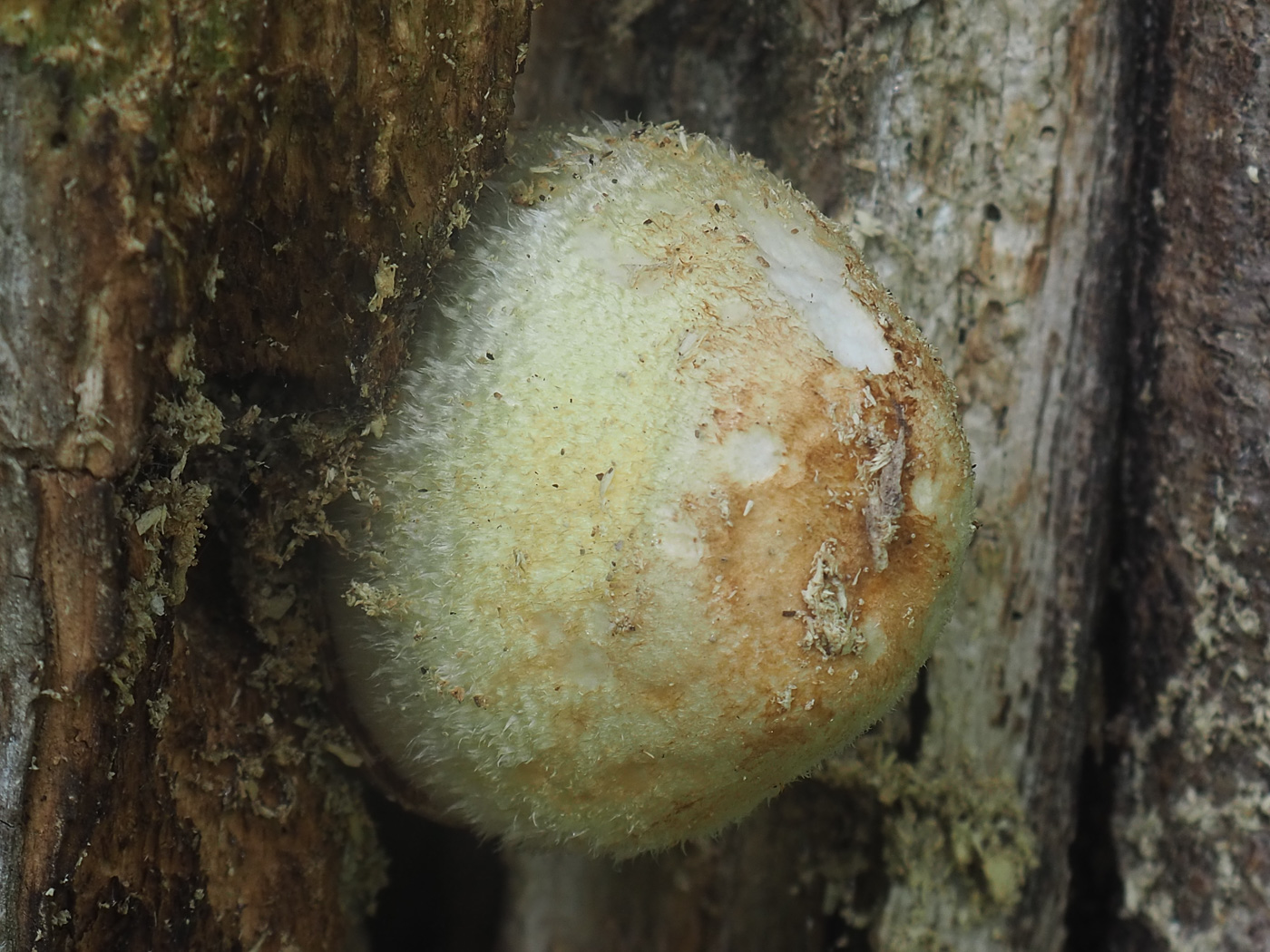
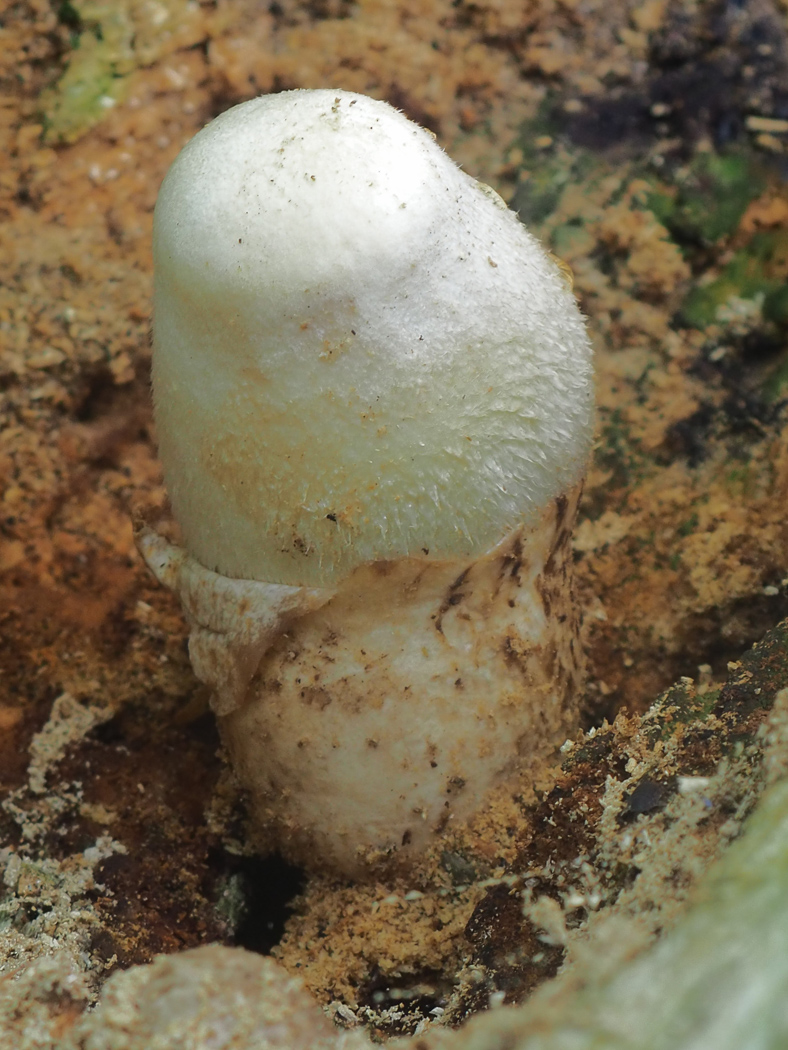 |
July 6th Volvariella bombycina (Silky Rosegill)
In Hughenden Park John Catterson found several fruitbodies of this interesting species just emerging in the decaying part of an otherwise living Horse Chestnut - the same tree where he discovered it last year (see in Finds 2020 dated Aug 28th). Closely related to the genus Pluteus with which it shares the pink spores and free pink gills, the key feature to look for in the field which separates it from that genus is the presence of a volva (sac) at the stem base, best seen in young material as here. This is the only member of its genus found on wood and can grow to a good size (over 12 cms across) and though not common it can safely be identified in the field by its combination of pale cap covered in coarse silky hairs together with the features already mentioned above.
|
July 5th 2021
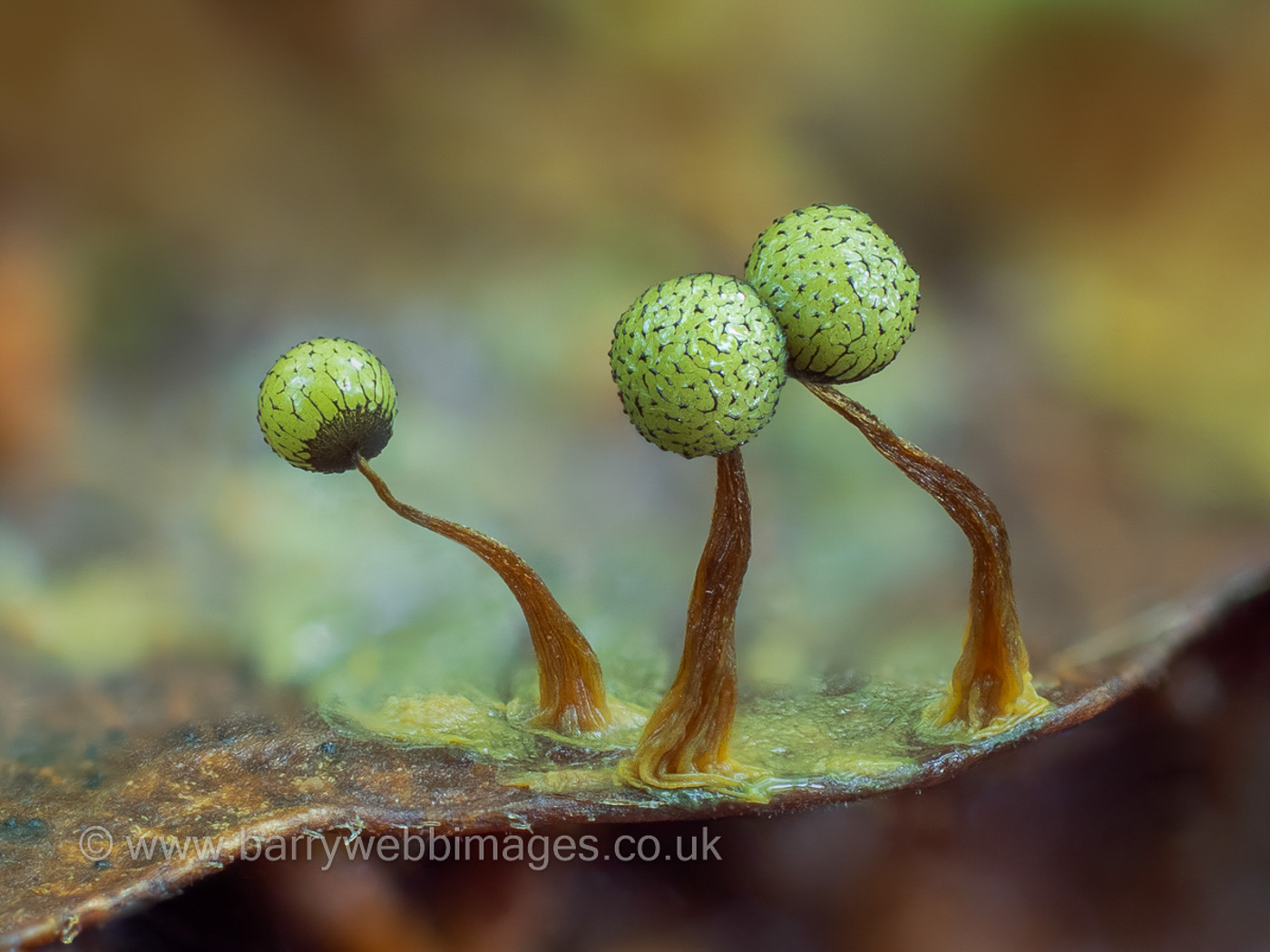 |
July 5th Cribraria aurantiaca (a Slime Mould with no common name)
On fallen rotting Birch in Burnham Beeches Barry Webb found this tiny but beautiful species which (surprisingly) has bright green plasmodium and as it develops to form fruiting bodies the colour of the heads changes thru green ( as here) to blue and eventually to yellow ochre retaining this amazing mesh / network which characterises the genus (like a crib?). The stalk is a bright orange to reddish brown, it also tapers upwards notably. This was new not only to the site but to the county when found by Barry in June. See his equally stunning photo of blue fruiting bodies in Finds Jan-June dated June 19th.
|
 |
July 5th Tricholomella constricta (an unusual Agaric with no common name) 
Whilst working on one of his raised beds at home in Jordans village Jesper Launder noticed this small white mushroom which, on excavation, revealed a distinct root. At one stage in the genus Calocybe, this species is difficult to place and has an odd set of features matching nothing else, hence now residing in its own genus. Though perhaps reminiscent of Tricholoma, it has a smooth and slightly viscid cap surface, is entirely white including gills and spores (which are ornamented with spines), and the stem has a narrow ring when young and is often rooting as here. It favours disturbed soil, also burnt or urinated spots and we have just three other known county sites for it.
|
July 3rd 2021
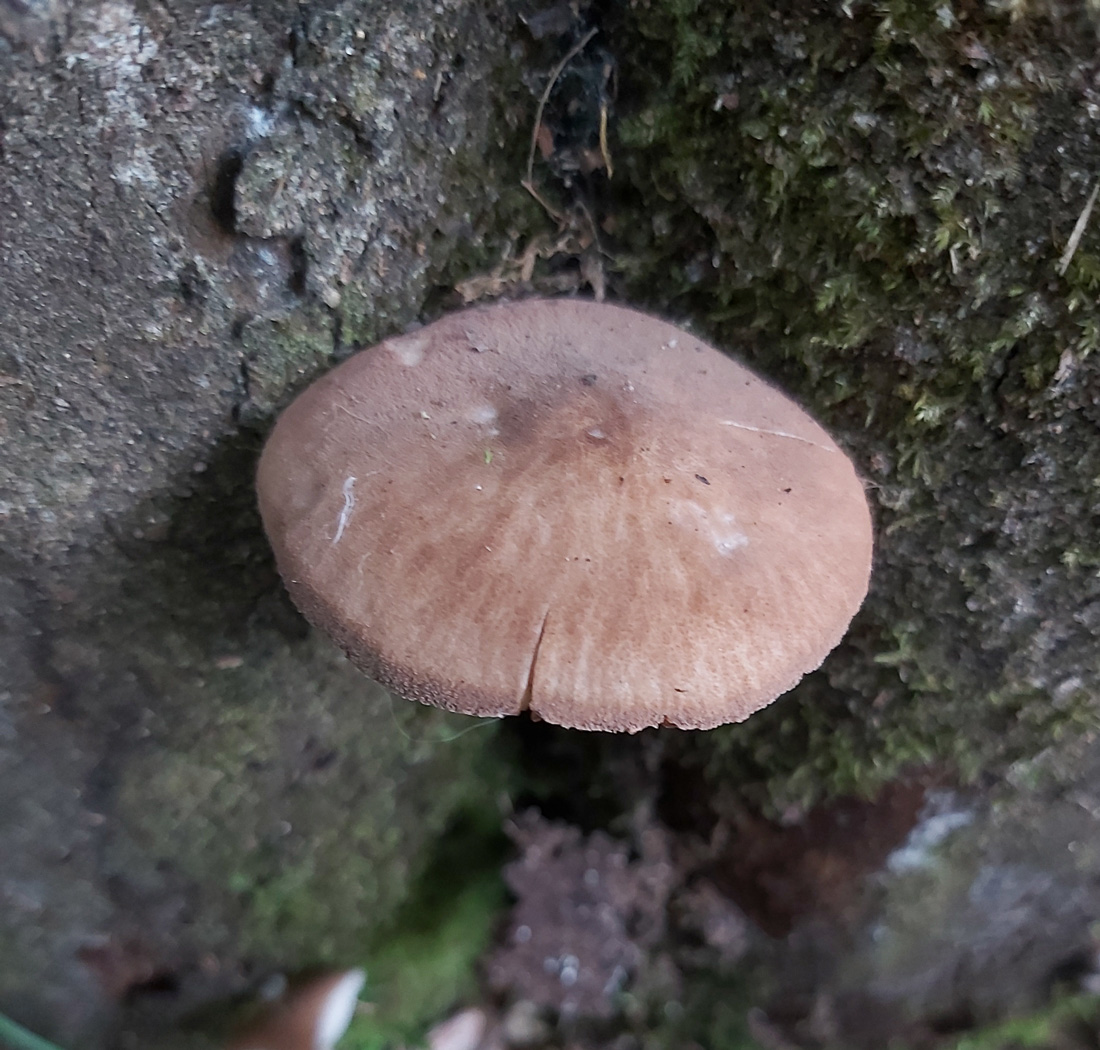
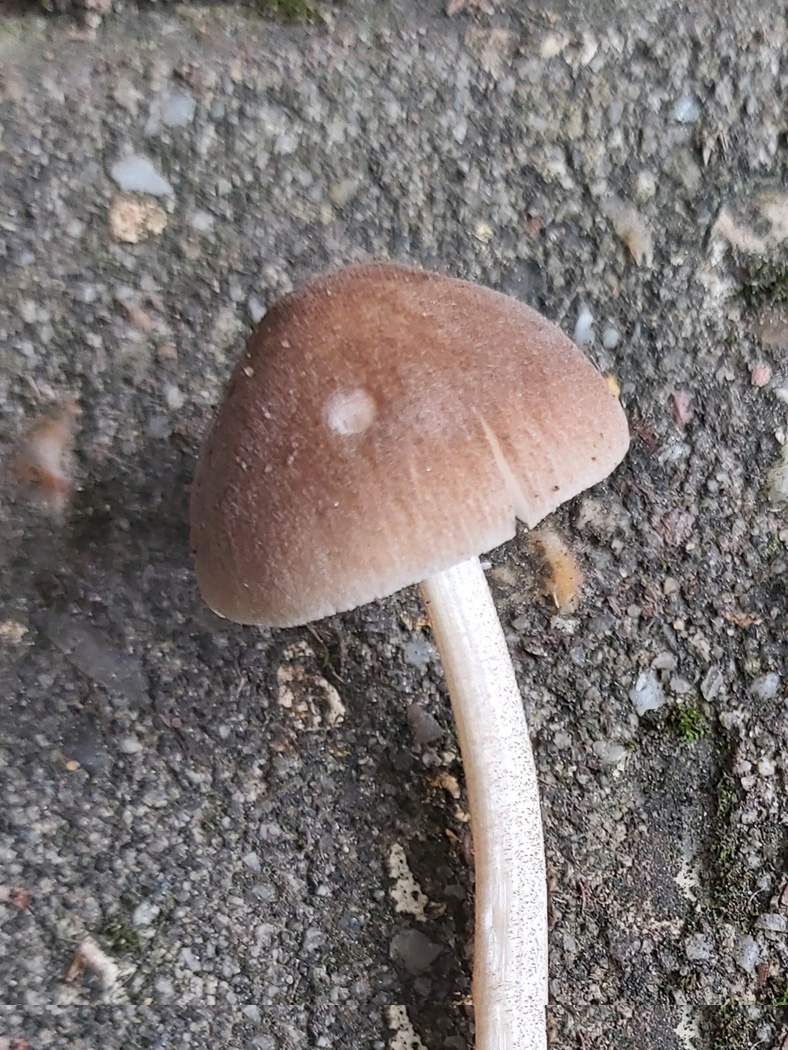 |
July 3rd Pluteus plautus (Satin Shield) 
On a wooden post supporting a raised bed in his garden in Jordans village Jesper Launder found this unusual species, one of the smaller Shields and with a somewhat pale cap compared to most, often with pinkish tones. The genus nearly always needs careful checking with a scope, an important feature being the cap cuticle (surface) which can be made up of long thin flat sausage-like cells (as in this species), much rounder upright cells, or some combination of different shapes. We have just a handful of previous sites in the county for this particular species.
|
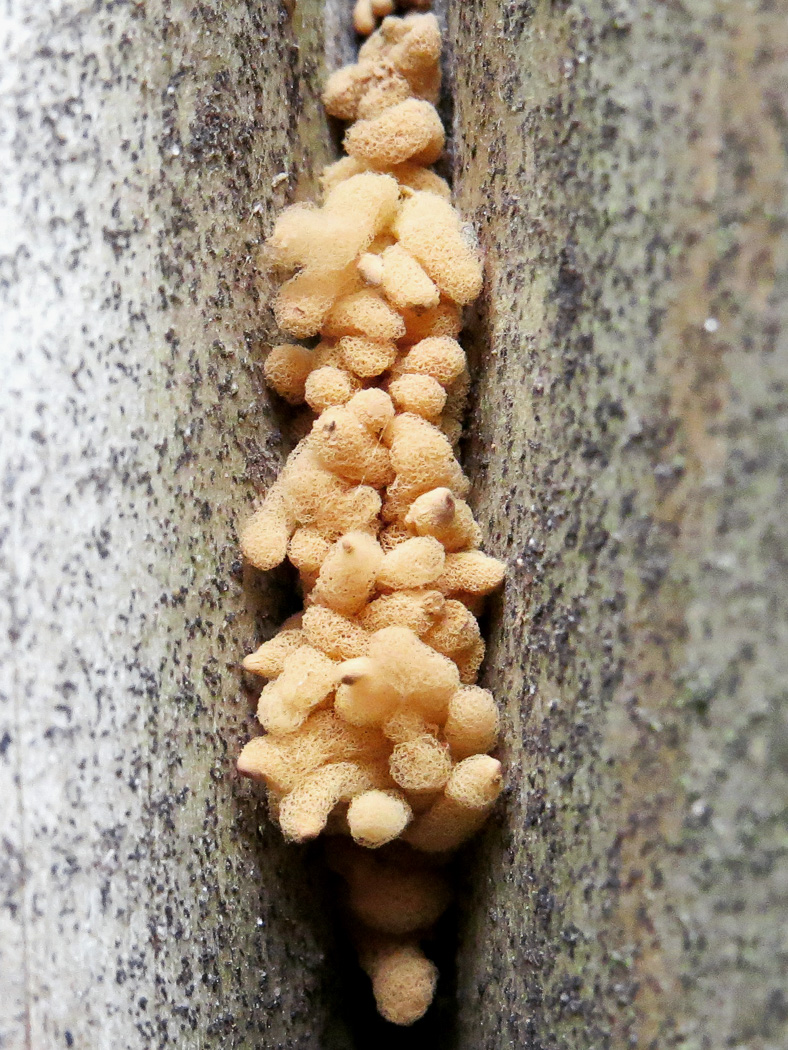 |
July 3rd Arcyria nutans (= obvelata) (A Slime Mould with no common name)
In Jordans village Jesper Launder spotted this cluster of tiny 'loofahs' on a damp wooden post in his garden. This species seems to be appearing in several places at the moment and is quite an easy one to recognise, the typical loofahs of the genus being in this case rather drooping and a distinctive pale buff colour. See also in Finds 2021 Jan to June dated June 23rd.
|
July 2nd 2021
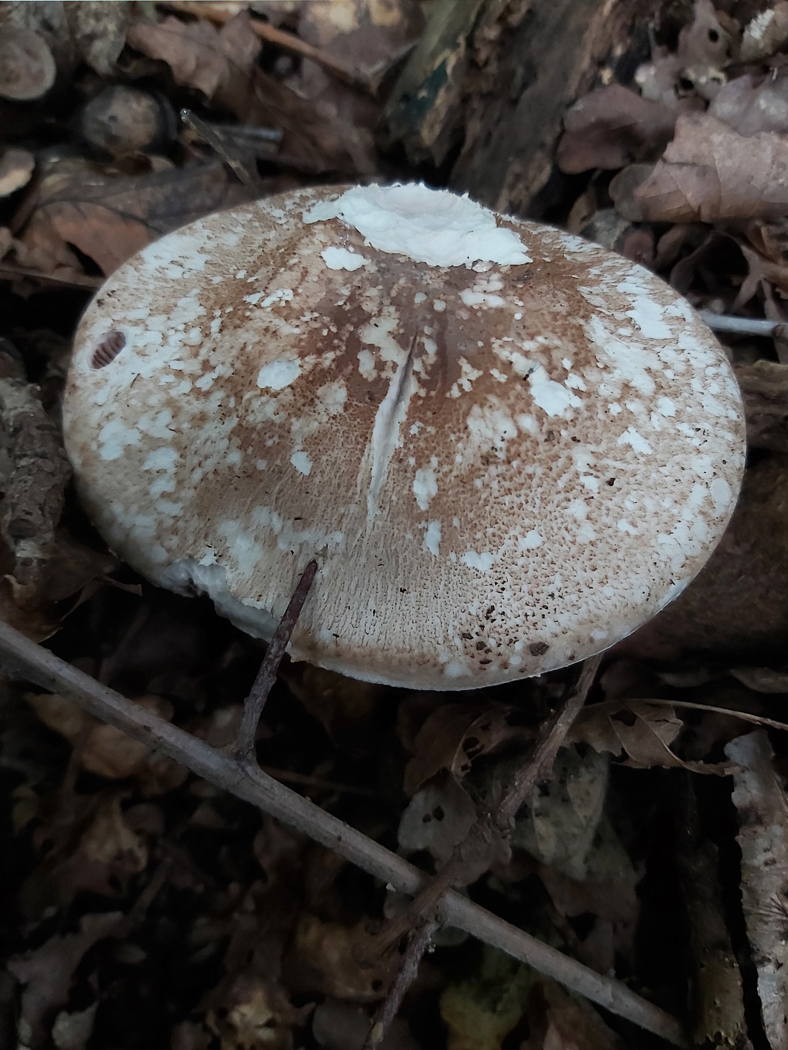 |
July 2nd Agaricus phaeolepidopus (a member of the Mushroom genus with no common name )
In Jordans village Jesper Launder noticed this singleton mushroom - a species closely related to A. xanthodermus (Yellow Stainer) but lacking the striking chrome yellow staining at the stem base of that species. It, however, has the same unpleasant phenol (inky) smell and the cap typically disrupts as seen in the photo here and tends to have a flattish central disc. Jesper comments that it occurs quite commonly around Jordans but this is only our second county record, perhaps indicative of the difficulty involved in identifying the less usual members of this genus to species.
|
 |
July 2nd Lycoperdon pratense (Meadow Puffball)
In the cherry orchard at Stampwell Farm Jackie Ewan found this common summer puffball, previously in the genus Vascellum and better known by that name. As its common name suggests, this is a species of short grassland and has rather a flat top rather than domed and also remains quite small compared to many others in the genus.
|
July 1st 2021
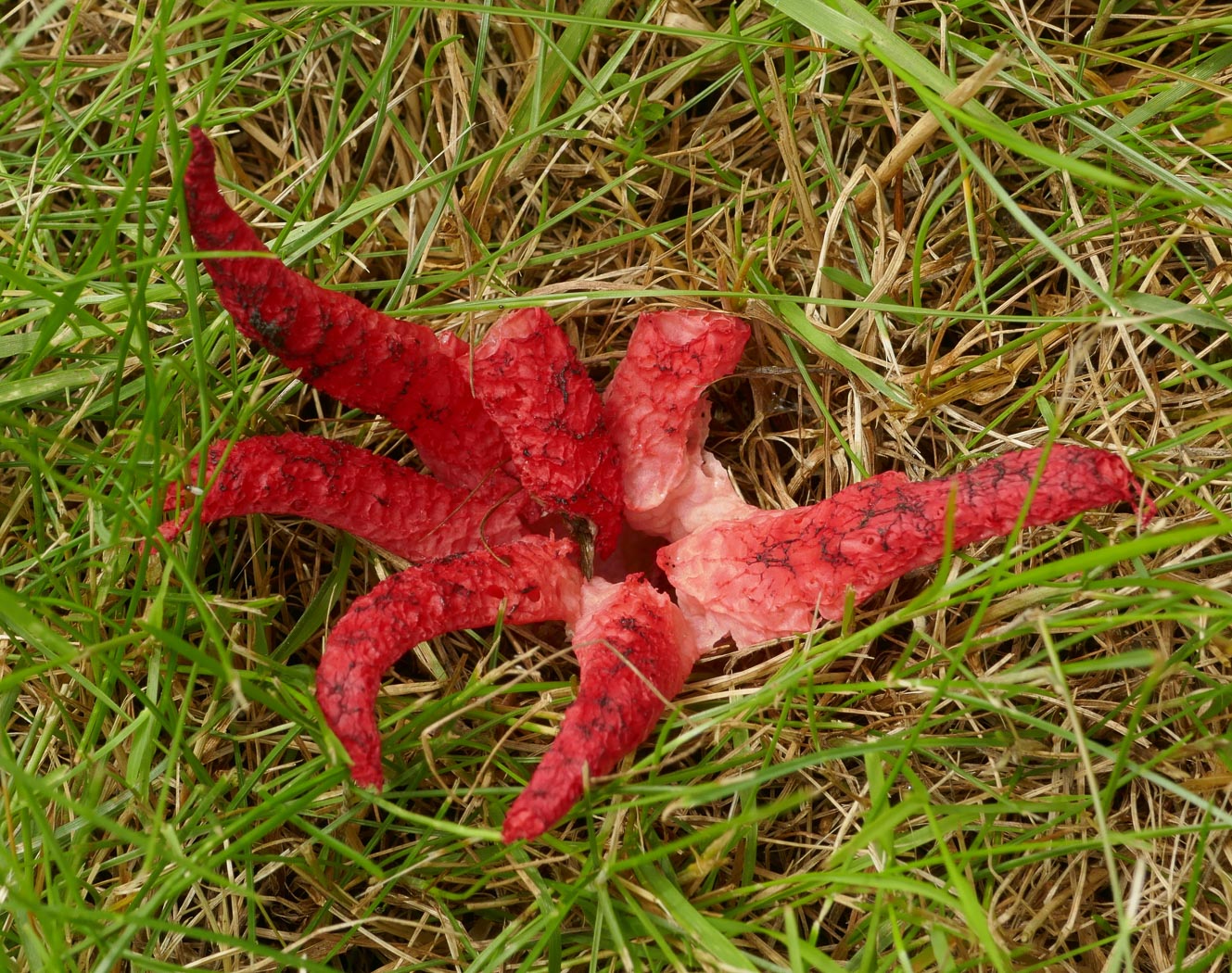 |
July 1st Clathrus archeri (Devil's Fingers)
At Stampwell Farm Jackie Ewan noticed that this strange and rare grassland species was already starting to fruit here. Last year she found it in good numbers here but a bit later in the year, so it would be interesting to know if it is also fruiting now at the other known site for it in Naphill near the Common where it turned up last year in October (see in Finds 2020 dated Oct 2nd). Related to the Stinkhorns, the species is a native of Australia but seems to be spreading here quite rapidly now.
|
 |
July 1st Agaricus campestris (Field Mushroom)
In a meadow near Jordans village Jesper Launder found this young fresh mushroom just pushing through the grass and covered with early morning dew - an encouraging sign of the coming season approaching. He left it in situ rather than disturb its development so the crowded gills - no doubt still pink at this stage - and the white stem with a ring are features not yet visible here. Hopefully we'll have more images to elucidate the species further though this is a species much less frequently seen than it used to be.
|
![]() Only entries marked with this symbol have been microscopically examined. There is no guarantee on identifications made of entries lacking this symbol though all photos are checked and selected by Penny to the best of her ability. Basic accompanying notes are also Penny's.
Only entries marked with this symbol have been microscopically examined. There is no guarantee on identifications made of entries lacking this symbol though all photos are checked and selected by Penny to the best of her ability. Basic accompanying notes are also Penny's. ![]() Entries marked with this symbol have been confirmed or identified using DNA sequencing.
Entries marked with this symbol have been confirmed or identified using DNA sequencing. 
